barriers to entry
description: factors that make it difficult for new firms to enter a market
587 results
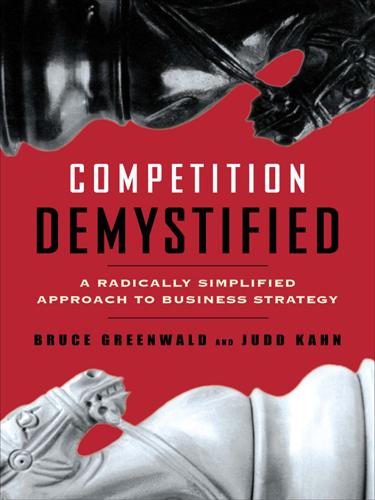
Competition Demystified
by
Bruce C. Greenwald
Published 31 Aug 2016
It is so dominant that leaders seeking to develop and pursue winning strategies should begin by ignoring the others and focus only on it. That force is barriers to entry—the force that underlies Porter’s “Potential Entrants.” If there are barriers, then it is difficult for new firms to enter the market or for existing companies to expand, which is basically the same thing. Essentially there are only two possibilities. Either the existing firms within the market are protected by barriers to entry (or to expansion), or they are not. No other feature of the competitive landscape has as much influence on a company’s success as where it stands in regard to these barriers. If there are no barriers to entry, then many strategic concerns can be ignored.
…
In the last chapter of this book, we describe the extent to which a determined focus on operational effectiveness may carry one firm far ahead of its competitors, even though there is nothing that distinguishes its fundamental economic position from that of its less successful rivals. Still, the pursuit of operational effectiveness does not require consideration of all the external interactions that are the essence of real strategy. BARRIERS TO ENTRY AND COMPETITIVE ADVANTAGES The existence of barriers to entry means that incumbent firms are able to do what potential rivals cannot. Being able to do what rivals cannot is the definition of a competitive advantage. Thus, barriers to entry and incumbent competitive advantages are simply two ways of describing the same thing. Entrant competitive advantages, on the other hand, have no value. By definition, a successful entrant becomes the incumbent.
…
In practice, a management that produces a lower rate of return can hang on for many years before the process runs its course, but in the long run—and “normal” implies the average return over a period of years—the company will succumb. BARRIERS TO ENTRY AND COMPETITIVE ADVANTAGES Barriers to entry lie at the heart of strategy. The first task in our simplified approach to strategic thinking is to understand what barriers are and how they arise. It is essential to distinguish between the particular skills and competences that a firm may possess and genuine barriers to entry, which are characteristics of the structural economics of a particular market. The skills and competencies of even the best-run companies are available to competitors, at least in theory.

The Politics Industry: How Political Innovation Can Break Partisan Gridlock and Save Our Democracy
by
Katherine M. Gehl
and
Michael E. Porter
Published 14 Sep 2020
They are the hired guns who pitch ideas to, and even draft bills and talking points for, increasingly overstretched and under-resourced congressional staffs.29 Lobbying has become a huge business in its own right, with reported federal lobbying spending (which significantly understates actual spending) of $3.15 billion in 2016.30 In 2014, when lobbying expenditures reached a recent peak, companies spent more money trying to influence public policy than Congress spent on itself.31 Numerous studies reveal that spending on lobbying often produces a high return on investment for the spender through its influence on legislation and its success in getting adjustments or exemptions in regulation.32 The clout of lobbyists looking out for their clients’ interests, and not for the public interest, distorts legislation and sometimes blurs the line between lobbying and corruption. Barriers to Entry and Substitutes: Colossal and Constrained Industries that fail to serve their customers well are ripe for new entrants that improve value for customers and shake up the market. The barriers to entry determine how easy or hard it is for a new competitor to enter the fray. In the politics industry, the founding of a new party would constitute a new entrant. Substitutes and new entrants are different ways of competing—think of Uber to taxis or Amazon to brick-and-mortar retailers.
…
Substitutes and new entrants are different ways of competing—think of Uber to taxis or Amazon to brick-and-mortar retailers. In the politics industry, substitutes could be independent candidates not affiliated with a party.33 The barriers to entry for new competitors in the politics industry are colossal—and they dramatically constrain substitutes as well. A sure sign of the high barriers to entry is the fact that no major new party has emerged since 1854, when antislavery members of the Whig Party split off and formed the Republican Party. The Progressive Party (1912) and the Reform Party (1995) were both serious efforts but managed to elect only a few candidates and were disbanded within a decade.
…
P., 99 Moss, David, 204n63 Mounk, Yascha, 196n10 MSNBC, 39 muckrakers, 109, 110 Mugwumps, 104 municipal elections Australian ballot in, 204n61, 206n74 ranked-choice voting in, 128, 212n54 Naismith, James, 44 National Basketball Association (NBA), 44 National Collegiate Athletic Association, 125 National Commission on Fiscal Responsibility and Reform, 87–88 National Conference on Practical Reform in Primary Elections, 111 national debt, 2, 69, 93, 132, 189n25 National Municipal League, 110 National Republican Senatorial Committee, 32 National Rifle Association, 26, 39 Nebraska Model Legislature Committee in, 163–164, 165 party-line votes in, 164, 214n72 term limits in, 215n74 top-two primaries in, 164, 213nn61, 62 unicameral legislature in, 175–176, 213n65, 213–214n66, 68 New Deal era, 139–140 new entrants barriers to entry and, 34 (see also barriers to entry) competition and, 34 Five Forces framework on, 20 healthy competition and, 21 politics industry and, 8, 21, 21, 34 newspapers as channel in politics industry, 28, 30 Gilded Age polarization of, 103–104 government subsidies to, 200n29 historical role in politics of, 28 Jefferson on value of, 30 party affiliations in campaigns reported in, 214n67 party backing of, 104, 109, 200n29 Progressive movement and, 109, 110 New York Times, 43, 134, 150–151, 152, 155, 158 NGP VAN, 32 Nineteenth Amendment, 206–207n76 Nonpartisan Direct Legislation League, 206n71 nonpartisan primaries, 121–122, 123, 150, 189n22 nonvoters, power of, as customers in politics industry, 27 Norris, George, 113, 163, 164, 213n60 North Carolina, election reform in, 209–210n6 Norton, John N., 213n62 Nunemaker, Andy, 157 Obama, Barack, 71, 74, 86, 87, 88, 128, 196–197n18, 197n21 O’Donnell, Christine, 47, 48 Office of Technology Assessment, 59, 162 omnibus bills, 69, 177, 195n2, 213n60 Open Primaries, 175 Oppenheimer, Bruce, 193n64 Orbán, Viktor, 82 Oregon state “primary” for senators in, 112–113, 207n78 U’ren’s state ballot reforms in, 206n71, 207n78 Organisation for Economic Co-operation and Development (OECD), 80–82, 81 Orman, Greg, 32, 52 “outsider” candidates, 36–37 Overacker, Louise, 205n66, 206n69 Page, Benjamin, 28 Paine, Thomas, 165 parties.
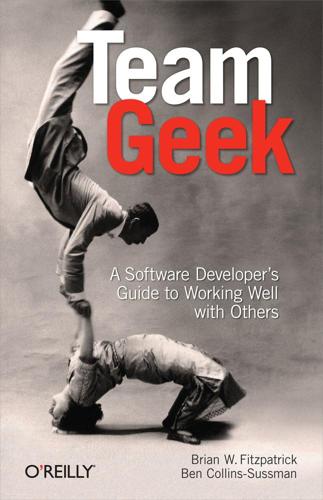
Team Geek
by
Brian W. Fitzpatrick
and
Ben Collins-Sussman
Published 6 Jul 2012
, Fortifying Your Team self-worth, Learn to Both Deal Out and Handle Criticism servant leaders, Your Life Under a Bad Manager shadow org chart, Seek Powerful Friends software development, Hiding Is Considered Harmful–Hiding Is Considered Harmful, Hiding Is Considered Harmful, Hiding Is Considered Harmful, Hiding Is Considered Harmful, Hiding Is Considered Harmful, Hiding Is Considered Harmful, Culture and People, Using an Issue Tracker, Code Comments, Putting Your Name in Source Code Files (a.k.a., the “Author Tags” Issue), It Really Is About the Code After All, Your Life Under an Ideal Manager bus factor in, Hiding Is Considered Harmful–Hiding Is Considered Harmful, Hiding Is Considered Harmful engineers and offices, Hiding Is Considered Harmful feedback loops and, Hiding Is Considered Harmful harm in hiding code, Hiding Is Considered Harmful, Hiding Is Considered Harmful metaphor for, Your Life Under an Ideal Manager team culture and, Culture and People, Using an Issue Tracker, Code Comments, Putting Your Name in Source Code Files (a.k.a., the “Author Tags” Issue), It Really Is About the Code After All software engineers, The Genius Myth–Hiding Is Considered Harmful, Hiding Is Considered Harmful, Hiding Is Considered Harmful, Communication Patterns of Successful Cultures–The Mission Statement—No, Really, Communication Patterns of Successful Cultures, The Mission Statement—No, Really, Managing Your Relationship with Users communication patterns, Communication Patterns of Successful Cultures–The Mission Statement—No, Really, Communication Patterns of Successful Cultures, The Mission Statement—No, Really genius myth and, The Genius Myth–Hiding Is Considered Harmful, Hiding Is Considered Harmful offices and, Hiding Is Considered Harmful user relationships and, Managing Your Relationship with Users software usability, Choose Your Audience–Consider Barrier to Entry, Choose Your Audience, Consider Barrier to Entry–Measure Usage, Not Users, Consider Barrier to Entry, Consider Barrier to Entry, Measure Usage, Not Users, Measure Usage, Not Users, Speed Matters–Speed Matters, Speed Matters, Hide Complexity–Managing Your Relationship with Users, Hide Complexity, Managing Your Relationship with Users barrier to entry considerations, Consider Barrier to Entry–Measure Usage, Not Users, Consider Barrier to Entry, Measure Usage, Not Users choosing audience, Choose Your Audience–Consider Barrier to Entry, Choose Your Audience, Consider Barrier to Entry hiding complexity, Hide Complexity–Managing Your Relationship with Users, Hide Complexity, Managing Your Relationship with Users measuring usage, Measure Usage, Not Users speed considerations, Speed Matters–Speed Matters, Speed Matters Speed is a feature saying, Speed Matters Stallman, Richard, The Genius Myth standing meetings, Efficient Meetings Star Trek episode, Don’t Feed the Energy Creature starter culture, What Is Culture?
…
When told to check out a new website, if it doesn’t load within three or four seconds, Fitz usually aborts and loses interest. There’s simply no excuse here. When programmers make users wait in line at the entrance, that’s an irritating barrier to entry. The web browser makes it easy to walk away and redirect our attention to 12 other places. We have better things to do than wait for a page to load. A great example of a nearly invisible barrier to entry is the TripIt web service, which is designed to manage travel itineraries. To start using the service simply forward your existing travel-confirmation emails (airplane, hotel, rental car, etc.) to plans@tripit.com.
…
issue tracking and, Using an Issue Tracker people, Track Happiness poisonous people and, Defining “Poisonous”–Identifying the Threat, Identifying the Threat risk taking in, Be a Catalyst software development and, Culture and People, Culture and People, Culture and People, Communication as Part of Engineering tracking happiness in, Track Happiness–Other Tips and Tricks, Track Happiness, Track Happiness, Other Tips and Tricks teamwork, Hiding Is Considered Harmful, It’s All About the Team–The Three Pillars, It’s All About the Team, The Three Pillars, Antipattern: Ignore Low Performers, Antipattern: Ignore Low Performers bus factor, Hiding Is Considered Harmful low performers and, Antipattern: Ignore Low Performers, Antipattern: Ignore Low Performers software development and, It’s All About the Team–The Three Pillars, It’s All About the Team, The Three Pillars tech lead (TL), “Leader” Is the New “Manager” tech lead manager (TLM), “Leader” Is the New “Manager” techie-celebrity, The Genius Myth technical debt, Learn to Manage Upward testing processes, Have Real Test and Release Processes, Fortifying Your Team text editors, Consider Barrier to Entry–Measure Usage, Not Users, Measure Usage, Not Users Thompson, Ken, The Genius Myth Three Bullets and a Call to Action technique, How to Ask a Busy Executive for Anything … via Email TL (tech lead), “Leader” Is the New “Manager” TLM (tech lead manager), “Leader” Is the New “Manager” Tolstoy, Leo, The Reality: When Your Environment Is an Obstacle to Your Success Torvalds, Linus, The Genius Myth train stopping metaphor, Be Honest TripIt web service, Consider Barrier to Entry trolls, Identifying the Threat, Repel Trolls with Niceness trust (HRT principle), “Leader” Is the New “Manager”, The Office Politician–The Bad Organization, The Office Politician, The Bad Organization, Create Trust and Delight creating for customers, Create Trust and Delight leaders and, “Leader” Is the New “Manager” office politician and, The Office Politician–The Bad Organization, The Office Politician, The Bad Organization Tukey, John, Lose the Ego U usage measurements, Measure Usage, Not Users user interfaces, Choose Your Audience, Consider Barrier to Entry user relationships, How Usable Is Your Software?
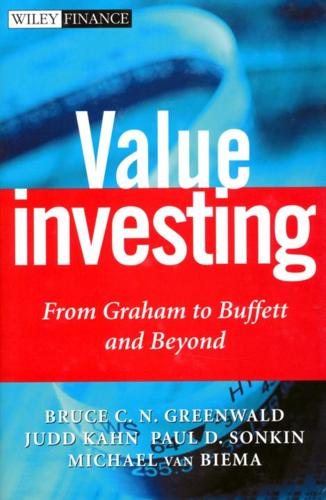
Value Investing: From Graham to Buffett and Beyond
by
Bruce C. N. Greenwald
,
Judd Kahn
,
Paul D. Sonkin
and
Michael van Biema
Published 26 Jan 2004
The newcomer will stay out of the market if it sees that it cannot compete on equal terms. Top Toaster's competitive advantage acts as a barrier to entry and puts a brake on the profit-eroding process that occurs when entrants are able to compete on potentially equal terms. Another way to say the same thing is that the continued existence of Top Toaster's profitable franchise depends on the existence of the competitive advantages it enjoys; these act as barriers to entry and deter competitors. These three concepts-franchises, barriers to entry, and incumbent competitive advantages-amount to the same thing. They are the major sources, in a modern market economy, of any value that exceeds the cost of reproducing a firm's assets.
…
But we are justified in paying no attention to it because in evaluating companies operating on a level playing field, with no competitive advantages or barriers to entry, growth has no value. The return these companies earn on the capital invested in them just equals the cost of acquiring that capital, and there is nothing left over for the previous investors. Thus, the EPV that equals the asset value defines the intrinsic value of the company, regardless of its growth rate in the future. In the third situation, if the EPV, properly calculated, is significantly higher than the reproduction costs of the assets, then we are looking at an industry setting in which there must be strong barriers to entry. Firms within the barriers will earn more on their assets than will firms exposed to the humbling experience of seeing new entrants join the party with no handicap for arriving late.
…
Firms within the barriers will earn more on their assets than will firms exposed to the humbling experience of seeing new entrants join the party with no handicap for arriving late. For the EPV to hold up, the barriers to entry must be sustainable at the current level for the indefinite future. The difference between the EPV and the asset value is the value of the franchise enjoyed by the company in question. Competitive advantages enjoyed by incumbent firms constitute barriers to entry that protect the incumbents from profit-eroding competition. These advantages and barriers are responsible for the firm's franchise. In fact, the three terms all describe the same basic phenomenon.
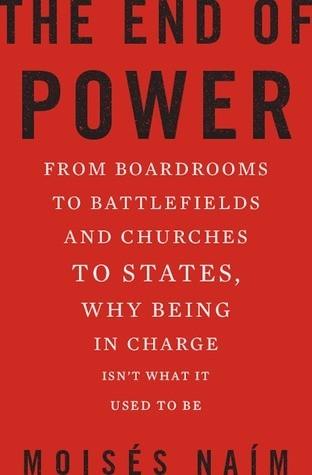
The End of Power: From Boardrooms to Battlefields and Churches to States, Why Being in Charge Isn’t What It Used to Be
by
Moises Naim
Published 5 Mar 2013
The other two channels of power—coercion and reward—actually alter the situation. 3. At the theoretical level, finding a precise definition of barriers to entry has led to considerable hair-splitting among economists. One approach defines barriers to entry as factors that enable firms that are already in the market to command prices that are higher than unfettered competition would produce, yet without inducing new competitors to enter. Another approach identifies barriers to entry as any costs that a new competitor faces prior to entering the market, yet that firms already in the market do not face. In other words, the distinction is between a protected price advantage for firms already in the market and a supplementary cost, such as an entry fee, for would-be competitors.
…
In other words, the distinction is between a protected price advantage for firms already in the market and a supplementary cost, such as an entry fee, for would-be competitors. Other economists have more complex definitions still, but nothing in these debates takes away from the core insight that barriers to entry are essential to understanding the dynamics of a marketplace and the use of market power to maximize long-term profits. (For further discussion of this issue, see Demsetz, “Barriers to Entry.”) 4. On barriers to entry in politics, see Kaza, “The Economics of Political Competition.” CHAPTER THREE 1. LaFeber, The Cambridge History of American Foreign Relations, Volume 2: The American Search for Opportunity, 1865–1913, p. 186. 2.
…
But What Is Power? The Decay of Power: What’s at Stake? CHAPTER TWO MAKING SENSE OF POWER: HOW IT WORKS AND HOW TO KEEP IT How to Talk About Power How Power Works Why Power Shifts—or Stays Steady The Importance of Barriers to Power The Blueprint: Explaining Market Power Barriers to Entry: A Key to Market Power From Barriers to Entry to Barriers to Power CHAPTER THREE HOW POWER GOT BIG: AN ASSUMPTION’S UNQUESTIONED RISE Max Weber, or Why Size Made Sense How the World Went Weberian The Myth of the Power Elite? CHAPTER FOUR HOW POWER LOST ITS EDGE: THE MORE, MOBILITY, AND MENTALITY REVOLUTIONS So What Has Changed?

The Business of Platforms: Strategy in the Age of Digital Competition, Innovation, and Power
by
Michael A. Cusumano
,
Annabelle Gawer
and
David B. Yoffie
Published 6 May 2019
When the company filed its S-1 in late 2018, it was still not making an annual profit.23 (Nonetheless, the company went public on October 3, 2018, with a 40 percent surge in the stock price on the first day.) BARRIERS TO ENTRY All companies share a desire to limit new competitors from entering their markets. In general, if switching costs are low and entry is easy, then markets are unlikely to be highly profitable. Low entry barriers encourage more competition, which generally leads to lower prices and lower profits for everyone. In the platform world, most companies focus strategically on the demand side of the market: how to get more users (customers). But when traditional barriers to entry are low, even in markets where companies feel protected because of their strong network effects, new entrants can still enter the business on the supply side and fragment the user base, preventing a market from tipping toward one big winner.
…
Similarly, costs can be very high for subsidy-intensive businesses like automobile ride sharing (e.g., Uber). In addition, when companies such as Qualcomm have been able to protect their market positions with patents, unique technical know-how, government regulations, and other barriers to entry, markets have had a higher likelihood of tipping toward one platform. There are also unique barriers to entry in platform markets that we rarely see in the conventional world. First, network effects create barriers in the form of an existing stock of complements around a particular platform. When a platform has millions of applications that run on—and only on—Android, iOS, Windows, Amazon Web Services, Facebook, or WeChat, they increase the barriers to switching to a new or competing platform.
…
See also network effects differentiation and niche competition overview, 25, 41–42, 44–47 AT&T’s lack of, 36–37 digital technology impact, 54–56 niche companies, 46, 55–56 Digital Foundries for Predix, 164–65 digital platforms diffusion and refinement of, 49 gaining market share, 31 global power of, 9 impact on business, 10–11 instant messaging, 41–42 Yellow Pages compared to, 40–41 digital revolution, 11–12, 107 digital technologies overview, 20, 27–28 impact on platform market drivers, 49–58 and network effects, 50–52 organizational commitment to one technology, 54 direct or same-side network effects, 16, 42–44 Dorsey, Jack, 89 Dubinsky, Donna, 69 D-Wave, 227, 228, 229 EachNet (China), 120–23, 120f eBay competition, 56 EachNet in China, 120–23, 120f fraud prevention by, 93 mistakes in China, 119–20, 121–23, 137, 186 success of, 119 economies of scale demand-side, 249n18 digital technologies and, 57 on innovation platforms, 79–80 network effects based on, 16–17 transitioning from losing money to making money, 137 See also network effects ecosystem companies overview, vii, 4 for GE’s Predix platform, 164–65 global power of, 8–9 market value of, 8 platform ecosystems as barriers to entry, 48 ecosystem rules, establishing and enforcing overview, 85–86 innovation platforms, 86–90 transaction platforms, 90–93 Editas Medicine, 232 emerging platforms. See platform potential and future scenarios engadget.com, 131–32, 134 entry barriers. See barriers to entry escrow model for online auction, 122 Etsy, 55, 69, 76 European antitrust regulators and Google Play Store, 100 platform company must provide access to third-party complementers, 182 European Commission allowing self-regulation of hate speech, 205–6 antitrust cases against Google, 183–85 antitrust cases against Microsoft, 181, 182, 272n9 on Google’s vertical search and Android OS, 177 principles for fostering a trusting, lawful, and innovation-drive ecosystem, 200, 275n49 European Council, on blocking hate speech and incitements to terrorism, 205 European Union fines Google for anti-competitive behavior, 9–10 Evans, David S., 69, 82–83, 250nn21–22 Exonic Therapeutics, 232 Exostar, 110 Expedia, 97–98 Ezubao (China), 179 Facebook overview, 6–7 bypassing Friendster, 107–8 and Cambridge Analytica, 7–8, 15–16, 97, 178, 190–91 challenge of maintaining trust, 186–91 choosing market sides, 70–71 combating Snapchat competition, 55–56 Instagram and WhatsApp purchases, 53 multiple sides of a market, 15 network effects-related growth, 50–51 as one of “the Frightful Five,” 176–77 platform and ecosystem, 15f startup at Harvard, 15, 78–79 subsidizing one side of platform, 76 fake news and the Internet, 177, 187–88 fake reviews, 92 FBA (Fulfillment by Amazon) service, 83, 154–55 FedEx, 196 feedback loops, 13, 16, 32, 59, 75.
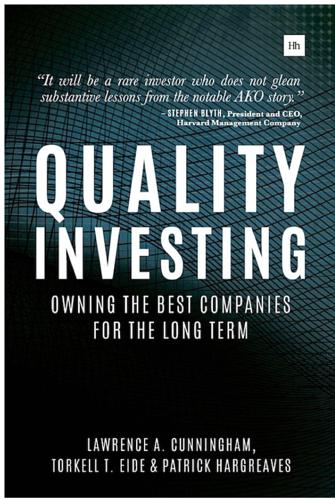
Quality Investing: Owning the Best Companies for the Long Term
by
Torkell T. Eide
,
Lawrence A. Cunningham
and
Patrick Hargreaves
Published 5 Jan 2016
Finally, we tend to prefer the leading players in oligopolistic markets – especially in industries where competitive advantages in areas such as R&D and A&P are enhanced by market leadership. Barriers to entry and rationality Some industries or products are more likely to come under competitive attack than others. If an industry has many new players popping up all the time, beware: barriers to entry are low. However, industries with low barriers to entry may still have high barriers to success and scale – just look at the restaurant industry. Still, a regular flow of new small entrants can destroy economics. By the law of large numbers, the sheer frequency of new entrants can eventually lead to one of them becoming successful and disruptive.
…
More than $10,000 per bottle. This time requirement acts as a powerful barrier to entry. A new entrant wishing to sell aged whiskies must tie up huge amounts of capital before generating a dollar of revenue. And the necessity of intricate forethought to lay down inventory so far ahead of demand means supply is often constrained for older, more profitable Scotch. Consequently, Diageo’s market share in all premium Scotch is approaching 50%. The combination of heritage, strong brand positioning and high barriers to entry confers impressive pricing power on Diageo’s Scotch products. In recent years, Diageo has delivered a 6% compound annual growth in revenues per case of Scotch.
…
Investment in R&D and advertising and promotion (A&P) Today’s impressive sales of Dove soap, made by Unilever, result largely from decades of historical marketing spending to build the brand. By creating brand awareness, Unilever invested, in effect, in the consumer’s consciousness. It bought a mental barrier to entry, as rivals would need to spend substantial sums to replace the brand in the minds of consumers. While ongoing brand advertising is needed to sustain awareness – an outlay best seen as equivalent to maintenance capital expenditures – a large portion is aimed at influencing new generations of consumers.
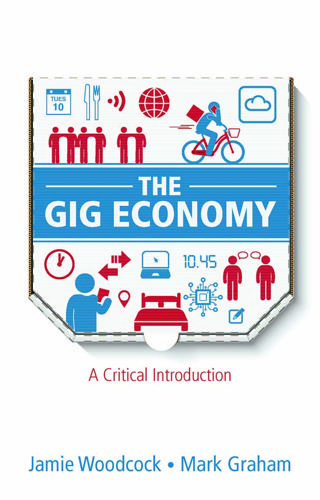
The Gig Economy: A Critical Introduction
by
Jamie Woodcock
and
Mark Graham
Published 17 Jan 2020
Bezos’ letters 87–8, 106 Turkopticon 106–7, 123, 133 Anderson, B. 80 Antunes, Ricardo 36 application programming interfaces (API) 58 apps 5, 51, 52, 133, 138 artificial intelligence 50, 58, 60, 66 Aslam, Yaseen 76 assembly line 24, 94, 117 Australia 127 Australian Independent Contractors Act 128 automation 66–7 Avendano, Pablo 73 B Badger, Adam 86–7 Bangalore (India) 98–9, 102 Barbrook, R. 37 Barry, J. 49 Beck, Ulrich 17 Bent, P. 13, 16 Berg, J. 55 Besant, Annie 14 Bezos, Jeff 87 Bolt 77 Bourdieu, Pierre 17 ‘BrainWorkers’ 33 Braverman, Harry 111 Bryant and May match factory 14 C Californian Ideology 37 call centres 24, 31 outsourcing of 37, 54 Callinicos, Brent 49 Cameron, A. 37 Cant, Callum 40, 96 capitalism cognitive 37 gendered basis of 29 car industry 110 care work 64, 66, 79–83 low barriers to entry 67 and repeat transactions 68 Care.com 80, 80–1 casualization 5, 15 Caviar 73 ‘ChainWorkers’ 33 Cheung, Adora 103 China worker resistance and strikes 100 Christie, N. 73 cleaning work 5–6, 64 low barriers to entry 67 migrant workers 30 cloudworker platforms 6, 43, 53–61, 63, 64, 69, 93 atomization of 92 availability of 56 location of 55, 57 removal of barriers to entry for 69 and resistance 104–8 setting rates of pay 65 and spatial control 63 temporal control 64 cognitive capitalism 37 collaborations 123, 132, 136 collective bargaining 30, 34, 37, 49, 80, 130, 134, 135–6, 143 collective organization 100, 134 commercial content moderation (CCM) 61 computerization 66 consumer attitudes/preferences 27 contingent work 19 Convention on Platform Work, Draft 130, 146–51 cooperatives, platform 138–9 Countouris, N. 129 Craigslist 22 crowdsourcing 58 crowdworkers 55, 90 see also microwork; online freelancing D Dalla Costa, Mariarosa 29 Darcy, Alison 60 data collection 65–6 De Stefano, V. 129 deindustrialization 36, 84 Deliveroo 2, 6, 23, 32, 40, 71–4, 115, 127 experience of working for 7–8, 31, 71, 72–4 self-organization for workers 95 strike action 95–6, 97 delivery work(ers)/platforms 5, 27, 62, 63, 68 and automation 67 and collective organization 134 experiences of workers 71–5 low entry requirements 67 see also Deliveroo democratic ownership 136–40, 141 Denmark 3F trade union 134–5 Desai, Bhairavi 79 developing countries internet penetration rate 25 Didi Chuxing 22, 102 digital divides 25 digital legibility 23–5, 65–7 digital platforms 1, 2, 3, 4, 54–5 Directive on Transparent and Predictable Working Condition in the European Union 129 dock work(ers) 13–14, 15, 38 strike (1889) 15 domestic work(ers) 29–30, 62, 63, 66, 79–83 as central component of capitalism 29 factors determining working conditions 80 numbers 80 positive and negative outcomes for 81 and repeat transactions 68 in South Africa 81–3 Doogan, Kevin 18 E economic crisis (late 1970s) 33 Elance 22 entertainment industries 135 Eurobarometer 40 European Commission 35 Expensify 60 F Facebook 45, 60, 121, 123, 133 factories/factory work 15–16, 94 measuring of factory labour process by Taylor 23–4 Fair Crowd Work website 123 Fairwork Foundation project 121–2, 130, 146–51 Farrar, James 75, 75–6, 77–8, 101 feedback 52, 80, 92, 93 financial crisis (2008) 35 Fiverr 20, 23 flexibility, desire for by workers 4–5, 30–3, 71, 115 flexicurity 35 Flipkart 22 Foodora 127 Fordism 117 fragmented work 5, 40, 114 Freelancer 6, 54, 64, 89 freelancing, online see online freelancing Frey, C.B. 66 G gamification 86 gender and capitalism 29 and relationships of work 28–30 geographically tethered work/platforms 5–6, 7, 34, 50–2, 63 control over workforce 68 forms of resistance in 94–104 setting rates of pay 65 temporal control 64–5 Ghana 8, 64, 92 gig economy advantages 4–5 characteristics 114–15 controversy over classification of people involved 43–4 existence due to digital transformation 114 factors facilitating growth of 19, 114 five principles for ‘fair work’ in 122 future 112–45 governance in 62 meaning of 3–7 numbers working in 1–2 operation of 41–69 origins 11–40 pitfalls 5, 116 preconditions that shape the 19–28 rise of 38–40 ways to bring about change 142–4 gig economy workers barriers to entry for 67–8 communicating with each other 132–4 de-personalization of 118, 120 desire for flexibility 4–5, 31–3, 71, 115 experiences of 70–92 invisibility of 6, 80 lack of collective voice 6, 77 lack of effective regulation for 128–9 misclassified as self-employed 44 numbers 39–40 securing protection through courts 127 working conditions 6, 9 gigs, musical 3 Global North 12, 13, 32, 46 and cloudworkers 55 and microwork 84 and outsourcing 44 size of gig economy 39 Global South 32, 46 internet penetration rate 25 size of gig economy 39 women and online freelancing 90 globalization 19, 37–8 Goodwin, Tom 45, 121 Graeber, David 31 Guru.com 22 H Handy 80 Harvey, David 33, 53 Heeks, Richard 39 Herman, S. 39 Hilfr.dk 134–5 Homejoy 68, 103–4 Howe, J. 58 human intelligence tasks (HITs) 60 Humphries, S. 13–14 Hunt, A. 28, 81, 82 Huws, U. 39–40 I IAEA (International Arts and Entertainment Alliance) 135 Iles, Anthony 32 ILO (International Labour Organization) 16–17, 129 Declaration of Philadelphia (1944) 142 Independent Workers Union of Great Britain see IWGB India delivery drivers 74 strikes by Uber drivers 102 Industrial Workers of the Word see IWW industrialization 16 interface 45 International Arts and Entertainment Alliance see IAEA International Labour Organization see ILO Internet access and penetration rate 25 Irani, Lilly 106 IWGB (Independent Workers Union of Great Britain) 73, 97, 101, 109, 127, 134 IWW (Industrial Workers of the World) 97, 101 J James, Selma 29, 81 job insecurity, growth in 18–19 K Kalanick, Travis 23, 48, 49 Kalleberg, A.L. 18 Kenya Ajira Digital programme 35 Kessler, Sarah 11 L labour law 114, 117, 126, 128, 129 Lagos (Nigeria) 89, 124 Lanier, Jaron 58 LaPlante, Rochelle 60 lean platforms 35, 45 legibility, digital 23–5, 65–7 Li, Qi 100 Limer, Eric 85–6 Living Wage Foundation 122 London taxi arrangement 47 long-term unemployment 18 low-paid work, increase in 35, 139 M Machingura, F. 81, 82 McKinsey 1–2, 39 McKinsey Global Institute 66 Manila (Philippines) 89, 90 Maputo (Mozambique) 26–7 Marsh, Greg 129 Marx, Karl 11–12, 22, 72, 121 Mason, Paul 35 mass connectivity 25–7 Massey, Doreen 63 Matchwoman strike 14 Mateescu, A. 79, 80, 81 Messina, Jim 48–9 microwork 6, 55, 58–61, 62, 83–9, 104 and automation 66–7 experiences of workers 83–9 feelings of alienation 88 numbers engaged in 83–4 wages 84–5 see also Amazon Mechanical Turk 59 migrant workers 30, 80, 90 migration status 30 Mitropoulos, Angela 17, 32 mobile phones 25–6 Mondragon Corporation 138–9 Moody, Kim 40, 111 Moyer-Lee, Jason 98 N Nedelkoska, L. 66 neoliberalism 18, 33–5, 52 characteristics of 34 New York Uber 78–9 NHS (National Health Service) 5 Novogratz, Mike 49–50 O O’Connor vs Uber Technologies Inc. (2015) 124, 126 Ojanperä, Sanna 55 Ola 102 online freelancing 6, 7, 8–9, 43, 55, 62, 141 barriers to entry for workers 67 barriers to organizing 104 experiences of workers 89–92 and feedback 93 reasons for doing 89–90 support forums 104–5 wages 90, 91 and worker resistance 104–5 Osborne, M.A. 66 outcome thinking 118, 124 outsourcing 19, 37–8, 39, 44–5, 51, 54 microwork as extension of 58 P Pandor, Aisha 83 Pasha, Tanveer 102 pay rates, setting of 65 Peck, Jamie 33, 35 Peterloo Massacre (1819) 108 Platform Cooperative Consortium 138 platforms/platform work 2, 4 ability to set pay rates 65 and accountability 125–30 barriers to entry for workers 67–8 as a civic utility 139–40 cloudwork see cloudwork connecting workers and clients 20–1, 22–3, 43, 138 cooperatives 138–9 core functions 23 degree of explicit coordination 68–9 democratic ownership of 136–40, 141 digital legibility 23–5, 65–7 Draft Convention on Platform Work 130, 146–51 early 22 geographically tethered model see geographically tethered model infrastructure 20–3 intermediate function 42–3 lean 35, 45 meaning and operation of 42–6 microwork see microwork negotiation-based matching 22–3 reliance on network effects 45 repeat transactions 68 setting up of ‘counter’ 123 spatial control 62, 63–4 spatiality and temporality of 42–3 spending money on public relations and advertising 28 static-price matching 23 temporal control 64–5 understanding how they work 61–9 Plouffe, David 49 Pollman, E. 49 precariat 18 precarious work(ers) 13–19, 32–3, 38 definition 16–17 two kinds of 33 profitability, crisis of 35, 36, 42 public sector and gig economy 17 and outsourcing 44 Q Quintini, G. 66 R racialization of work 30 racism 30 ratings strategy and transparency 122–3 Ravenelle, Alexandrea 37, 70 Raw, Louise 14 Reagan, Ronald 34 reddit 123 regulation 144 lack of for gig economy workers 128–9 labour law 19, 114, 117, 126, 128 state 19, 33–6 regulatory entrepreneurship 49 repeat transactions and platforms 68 resistance see worker resistance Roberts, Sarah 61 S SAG-AFTRA 135 Samman, E. 28 Schifter, Doug 79 Scholz, Trebor 48, 49, 138, 139 Schor, Juliet 103 Screen Actors Guild (SAG) 135 Second World War 110 self-employment 32, 43–4, 96, 98, 108 Semuels, Alana 84 service industries, growth of 34 Seymour, Richard 18–19 sharing economy 11 Shekhawat, Dushyant 74 ‘shock doctrine’ 34 short term contracts 4 Silberman, Six 106 slavery 30 Slee, Tom 50, 78 soldiering 23 South Africa domestic workers in 81–3 Uber 76, 127–8 worker resistance 99–100 South African Domestic Services and Allied Workers Union (SADSAWU) 82–3 South African Labour Relations Act 128 South Korea 35 South London Gas Workers strike (1889) 14–15 Spain 127 spatial control and platforms 62, 63–4 Srnicek, Nick 4, 42, 45 standard employment relationship 5, 12–13, 16, 18, 32, 33–4 Standing, Guy 17–18, 27 state regulation 19, 33–6 strikes 14–15, 94, 95–6, 99–100, 109, 142–3 preconditions for starting 109 surveillance 24 of delivery drivers 74 Upwork workers’ resistance to 105 Susskind, R. 118 SweepSouth 80, 81–3 Switzerland Notime 102 T TaskRabbit 103 taxi industry 51–2 taxi work(ers) 75–9, 134 and collective organization 134 see also Uber Taylor, Bill 100 Taylor, Frederick 23–4 Taylor, Matthew 129 Taylor Review of Modern Working Practices, The 129 technological changes 19, 21 temporal control and platforms 64–5 temporary work(ers) 3, 17 Thatcher, Margaret 34 Thompson, S. 34 Ticona, J. 79, 80, 81 Tillett, Ben 14 tipping 75 Tolpuddle Martyrs 108–9 trade unions 6, 18, 34, 36, 92–3, 97, 108–9, 134, 135, 143–4 decline of 36, 37 and dock workers 15 early 108–9 and gig economy workers 109–10, 136 and IWGB 97 rise in membership 15 textile 108 Transnational Federation of Couriers 97 transparency 118–24, 141 establishment of ‘counter platforms’ 123 ratings strategy 122–3 Transport for London 28 Turkopticon 106–7, 123, 133 U Uber 2, 4, 20, 23, 25, 32, 44, 45, 46–50, 52, 61, 73–9, 94–5, 108, 115, 121, 124, 139 business model 48 Change.org petition 28 data collection 50, 65–6 drivers’ wages 49–50, 77–8 engagement with regulation and transport policy 48 funding 47–8 and ‘greyballing’ 49 in New York 78–9 O’Connor vs Uber Technologies Inc. (2015) 124, 126 power passengers hold over drivers 75–6 public relations and lobbying campaigns 48–9 rating system 75 safety issues and rising petrol prices for drivers in South Africa 76–7 and self-driving vehicles 50 and tipping 75 Uber International Holding(s) BV 128 Uber Technologies SA 127 UberX 47 worker resistance and strikes 100–2 unfair dismissal 44, 134 United Kingdom employment regulation issues 129 neoliberalism 34 and outsourcing 44–5 worker resistance and strikes 100–1 United Private Hire Drivers (UPHD) 75 United States neoliberalism 34 Uber 47–9 UPHD (United Private Hire Drivers) 76, 101 UpWork 6, 8, 43, 54, 64, 121 resistance of surveillance methods by workers 105 Upwork.com 89, 91 US Chamber of Commerce 108 V van Doorn, Niels 42 Vandaele, Kurt 95, 97 venture capital 36 visibility 136 vWorker 22 W wages microworkers 84–5 online freelancing 90, 91 setting of pay rates 65 Uber drivers 49–50, 77–8 Ward, H. 73 Webster, G.E. 16 Weightman, G.E. 13–14 WhatsApp 95, 99, 123, 132, 133 Williams, Eric 30 women and domestic work 29–30 and online freelancing in the Global South 90 Wood, Alex 95, 104–5, 107 work, transformation of 12–13 worker power 19, 36–7, 130–6, 141 worker resistance 93–111, 113–14 and cloudworkers 104–8 and communication 107 food platform strikes 95–7 formation of networks and meetings 95, 98–9 geographically tethered work 94–104 history of 94 legal battles over employment status 98 and online freelancing 104–5 and self-employment status 98 strikes 14–15, 94, 95–6, 99, 100–1 taking of work off-platform 103 and trade unions 97, 107–11 Uber 101–2 and WhatsApp groups 98, 99, 132 workers’ rights 34, 44, 98, 101, 130, 135, 139, 140, 144 Y YouTube 60 Z Zomato 98–9 POLITY END USER LICENSE AGREEMENT Go to www.politybooks.com/eula to access Polity’s ebook EULA.
…
The data generated by drivers contributes to the training sets for self-driving cars, while microwork allows for a much wider range of training data. Often workers will not be aware of the role they are playing, as the tasks are fractured and stripped of their meaning. Barriers to entry for workers Many platforms operate with limited barriers to entry for workers, in part because of the relatively low levels of formal training needed for workers to engage in the job. What this means is that platforms can quickly scale up their workforces if needed. Taxi and delivery platforms also have relatively low entry requirements for incoming workers.
…
Workers on many of those platforms need to be able to drive and not have any major criminal convictions, but they do need access to a vehicle. Although cleaning and care work tends to require a high level of ability and skill, its manifestation as platform work is likewise characterized by relatively low barriers to entry. Online freelancing can incorporate a diverse range of job types: ranging from jobs characterized by relatively low to extremely high complexity. As such, some types of online freelancing can have somewhat higher barriers to entry than other platform jobs. Platform workers rarely have to demonstrate formal qualifications. However, to get jobs in fields such as web development or graphic design, they need to demonstrate both a portfolio of existing work and a high rating on the platform that they work on (which they will only obtain by satisfying their previous clients).

The Myth of Capitalism: Monopolies and the Death of Competition
by
Jonathan Tepper
Published 20 Nov 2018
The Dodd–Frank Act has been called the 2010 Full Employment Act for Lawyers, Accountants, and Consultants.55 For large banks that already had armies of compliance workers, the act was burdensome, but not lethal. For small banks, the Act was an insurmountable barrier to entry. Jamie Dimon, the CEO of JP Morgan, has said that Dodd–Frank creates a “moat” around the big banks.56 In 2015 at an investor conference, Lloyd Blankfein, then CEO of Goldman Sachs, explained how higher regulatory costs are killing competition. “More intense regulatory and technology requirements have raised the barriers to entry higher than at any other time in modern history,” said Mr. Blankfein. “This is an expensive business to be in, if you don't have the market share in scale.”57 Big banks have never had it so good.
…
Oligopolies often act like monopolies. While collusion and cartels between different players are illegal, tacit collusion is normal and rational. The investment firm Marathon Asset Management noted this in their wonderful book Capital Returns, “A basic industry with few players, rational management, barriers to entry, a lack of exit barriers and noncomplex rules of engagement is the perfect setting for companies to engage in cooperative behavior… . and it is for this reason that the really juicy investment returns are to be found in industries which are evolving to this state.”19 It doesn't matter how you look at it, competition is dying in the United States.
…
For a Five Forces–trained MBA, the worst industry you can find yourself in is one where your competitors are strong and anyone can enter the industry and compete. If a CEO can find ways to keep out rivals, they are trained to do so. That is why mergers are so typical to eliminate established rivals. It is also why companies will do all they can to erect regulatory and legal barriers to entry in their industries. This is the MBA gospel. Over the past few decades, MBAs have also learned to specialize and dominate markets. Jack Welch taught managers at General Electric that they should not be third- or four-place players in industries. Only first or second place would do. Since the cult of Welch and GE has taken over, managers have sold smaller competitors to the biggest rivals, and the top firms have gobbled up any small competitor.
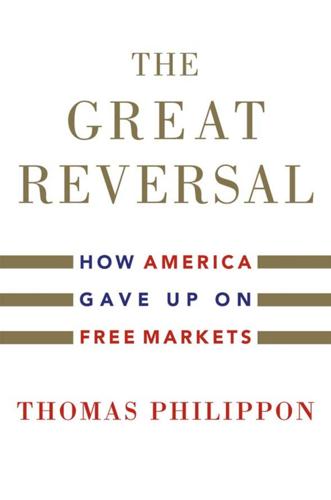
The Great Reversal: How America Gave Up on Free Markets
by
Thomas Philippon
Published 29 Oct 2019
Licensing is always “officially” motivated by concerns for health, safety, and consumer protection. And sometimes it is legitimate. Often, however, it is the perfect way for incumbents to protect their rents. Indeed, they actively lobby for the extension of licensing requirements because they understand that these are efficient barriers to entry. We have seen earlier that Europe has reduced barriers to entry in many industries. Some of that decrease was driven by a rollback of unnecessary licensing. There is still much illegitimate licensing in Europe, but at least the trend is in the right direction. Over the same period, however, the US has increased its licensing.
…
I have not seen a paper that convincingly shows that protecting incumbents through patents, barriers to entry, or any other stratagem leads to an increase in productivity. It is highly unlikely that no researcher would have found this effect if it was in the data. The dog did not bark; that is the key piece of evidence. But why is it so difficult to find any such example? I think the answer is actually quite simple. The standard theory is incomplete because it ignores the political incentives of incumbents who lobby to weaken competition and erect barriers to entry. They often succeed for the wrong reasons, and this is why free markets are fragile.
…
We will look at the dollars spent by every US corporation over the past twenty years to lobby their regulators, their senators, their congressmen, and members of key committees, as well as to finance federal and state elections. We will show how these efforts distort free markets: across time, states, and industries, corporate lobbying and campaign finance contributions lead to barriers to entry and regulations that protect large incumbents, weaker antitrust enforcement, and weaker growth of small and medium-sized firms. Three: The consequences of a lack of competition are lower wages, lower investment, lower productivity, lower growth, and more inequality. We will examine how the decline in competition across industries has effects that reach into the wallets and bank accounts of everyday Americans.
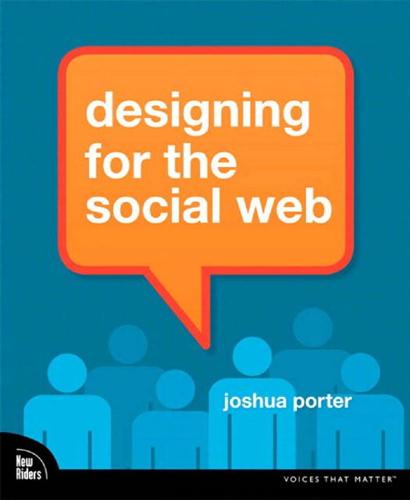
Designing for the Social Web
by
Joshua Porter
Published 18 May 2008
Systems need a way to control the influx of content. Barriers to Entry A hurdle that prevents participation is called a barrier to entry. Barriers to entry are commonly described as beneficial in the business world, as they keep competitors from entering a market. In the social software world, the removal or creation of barriers to entry is crucial to the overall health of the system. Derek Powazek, who wrote the book Design for Community,6 notes that “all communities are exclusionary to some degree.” He distinguishes between three types of barriers to entry: . Informal barriers. Informal barriers are those that exclude subtly, such as design with an aesthetic that attracts a certain type of person, or copywriting that speaks to a specific audience. .
…
Informal barriers are those that exclude subtly, such as design with an aesthetic that attracts a certain type of person, or copywriting that speaks to a specific audience. . Formal barriers. Formal barriers to entry are things that exclude blatantly, like requiring an account, requiring certain software, or any planned measure that restricts participation. . Extreme barriers. Extreme barriers are those that create exclusivity by only allowing certain people in. The invitation-only social network asmallworld.com, which caters to the rich and famous, is a good example of an extreme barrier to entry. On Digg, like on many social sites, you need an account to submit stories. Then, the process of submitting stories has two steps.
…
Have a conversation with someone . Build up a history and remember that person over time . Refer to that person when speaking with others 99 100 DESIGNING FOR THE SOCIAL WEB As we mentioned in the last chapter, making accounts mandatory makes the sign-up process more difficult. It acts as a barrier to entry. An account allows the site owner to remove someone from a system when they do bad things. In some cases, however, it can’t stop ne’er-do-wells. People who are really dedicated can simply create a new account. Now, this raises the question, won’t people simply pretend to be somebody else? Actually, people don’t do that very often.
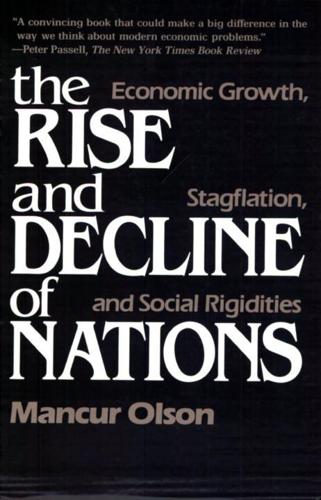
The Rise and Decline of Nations: Economic Growth, Stagflation, and Social Rigidities
by
Mancur Olson
The argument that led to our fourth implication showed that, when there were lobby-induced price changes or other subsidies and no barriers to entry into the favored area, the gains to the special-interest group could be small in relation to the loss to society. We now see that when there are barriers to entry this slows the resource reallocations needed for rapid economic growth. When the slower adoption of new technologies resulting from special-interest groups is also taken into account, the reduction in growth rates can be considerable. The slower adoption of new technologies and barriers to entry can subtract many times more from the society's output than the special-interest group obtains, particularly over the long run.
…
In a casual sense, though, the question is straightforward: What makes the class structure more rigid or exclusive in one country or period than in another'? There may be some ambiguity partly because the word class is sometimes used to refer simply to differences in income or status, almost as a synonym for income brackets or educational levels; but here the concern will be with any exclusivity and barriers to entry in a social structure that at least to some degree limit opportunities and countervail meritocratic tendencies. The word class is used in approximately this sense fairly often in Great Britain, and the model offered in this book has striking implications about one important aspect of the evolution of class structure in that country.
…
In this type of case the only gain to the clients of the distributional coalition is the capital gain on those assets that are specialized to the favored industry plus transitional profits during the time it takes other resources to move into the area. The situation is different if entry is not allowed into the favored area, but as I shall later show, barriers to entry usually impose substantial social costs of other kinds. The argument we have just used is extremely simple and leaves aside many fascinating questions, both technical and social.? The argument also has only a lesser applicability to any country in which constitutional and structural factors constrain the number and power of lobbying organizations, as appears to be the case in Switzerland.
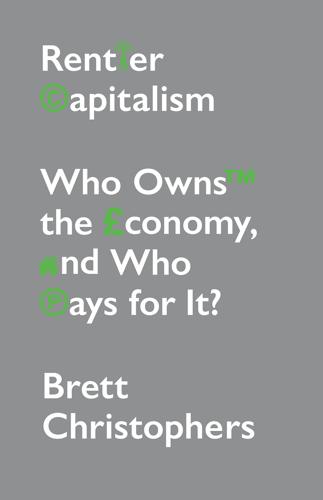
Rentier Capitalism: Who Owns the Economy, and Who Pays for It?
by
Brett Christophers
Published 17 Nov 2020
If an industry’s structure discourages new entrants, it passes an important screen in our investment process and therefore warrants further assessment. While an industry with high barriers to entry does not automatically generate excess profit, it does offer competitive shelter – and the higher the barrier to entry, the greater the prospect for above-average returns.26 Capital, as David Harvey has observed, is ‘in love with monopoly’.27 Given what we know about the high barriers to entry and monopoly tendencies that characterize infrastructure-intensive utility industries, it is unsurprising that such industries – ‘energy, wireless telecom, cell towers, cable, satellite’ – featured prominently on the list of sectors that Kiesel identified as meeting PIMCO’s stringent investment criteria.28 Where in the world have opportunities for footloose investment institutions such as PIMCO to invest in these industries been especially abundant in recent decades?
…
While most such institutions offer bland generalities and buzzwords when describing their investment strategies – well-balanced and diversified portfolios, sustained returns, long-term value growth, and so on – a rogue individual occasionally departs from the party line and explains what it is that really attracts investors. The answer is monopoly – monopoly protected by barriers to entry, and generating, in turn, monopoly prices and profits. Here, with a refreshingly honest statement, is Mark Kiesel, deputy chief investment officer of the global investment giant PIMCO: At PIMCO, we have refocused our bottom-up credit analysis on identifying industries globally with pricing power and/or compelling growth prospects … That is why high barriers to entry are an important characteristic for the sustainability of attractive economic profits. If an industry’s structure discourages new entrants, it passes an important screen in our investment process and therefore warrants further assessment.
…
Hancock, ‘EasyJet Buys Thomas Cook’s Slots at Gatwick and Bristol Airports’, Financial Times, 8 November 2019. 24. K. Done and M. Peel, ‘Watchdog Hits at BAA’s Airport Monopoly’, Financial Times, 22 April 2008. 25. Cited in ibid. 26. M. Kiesel, ‘Emphasize Barriers to Entry’, September 2014, p. 2 – pdf available at global.pimco.com. 27. D. Harvey, Seventeen Contradictions and the End of Capitalism (London: Profile, 2014), p. 139. 28. Kiesel, ‘Emphasize Barriers to Entry’, p. 6. 29. J. Ford, ‘Lax Regulation Has Turned Britain into a Rentier’s Paradise’, Financial Times, 1 October 2017. 30. Hawkins, ‘Utility Gains’, pp. 15, 4, 12. 31. House of Commons Culture, Media and Sport Committee, Spectrum, 3 November 2011, HC 1258, Eighth Report of Session 2010–12, p. 35. 32.

The Greed Merchants: How the Investment Banks Exploited the System
by
Philip Augar
Published 20 Apr 2005
There was no explicit collusion yet no one spoiled the party. The high returns and same old players lingered on and the banks were rarely held accountable for poor advice. It may not be a cartel, but what is it? In economic theory there are three basic states of competition. Perfect competition exists where there are low barriers to entry, falling prices and many suppliers for customers to choose from. It does not appear to fit the investment banking industry as a whole, although it applies to a few product segments within fixed income and currency trading. The second state, monopoly, exists where there is only one dominant supplier.
…
When they do compete on price, they may produce as much and charge as little as if they were in a market with perfect competition.’33 Other terms that are synonymous with oligopoly are ‘monopolistic or imperfect competition’, where ‘there are fewer firms than in a perfectly competitive market and each can differentiate its products from the rest. These small differences form barriers to entry. As a result, firms can earn some excess profits, although not as much as a pure monopoly, without a new entrant being able to reduce prices through competition. Prices are higher and output lower than under perfect competition.’34 In the period under review, this description seems to fit the case of investment banking best.
…
The top corporate names revert to Goldman Sachs, Merrill Lynch, Morgan Stanley and one or two others every time. There is so much comfort in choosing the big brand – especially if the deal goes wrong.’36 It was a good summary: the investment banks used their power to protect their position and keep others out and the clients went along with it. This had the effect of raising barriers to entry and, in turn, protecting indifferent output from the full blast of open competition. Existing players and aspiring new entrants fought hard to win more business, but with price cutting taboo and ineffective they resorted to other less conventional means of competing. The second half of this book will see how it was all done.
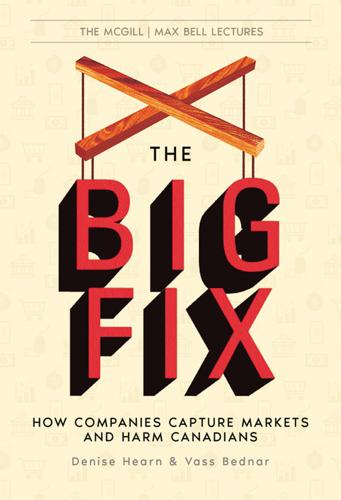
The Big Fix: How Companies Capture Markets and Harm Canadians
by
Denise Hearn
and
Vass Bednar
Published 14 Oct 2024
• Firms in industries with the largest increases in product market concentration started to generate higher profit margins. • The volume of mergers and acquisitions (M&A) deals, and particularly those within the same industry, has increased. The researchers attributed these changes to an increase in market power that stems from weak competition policy legislation and enforcement and increasing barriers to entry.13 Canada isn’t alone. Markets, both globally and within “developed” nations, are at historic levels of concentration across numerous industries. By now, many Canadians recognize this problem. A recent national poll found that 88 percent of Canadians say we need more competition and that it’s too easy for big businesses to take advantage of consumers.14 A majority of those surveyed agreed that more competition between businesses will lead to better quality products and more innovation in Canada.
…
Over the past fifty years, the number of farms in Canada has decreased by half, average farm size has doubled, and farm value per acre has almost quadrupled.28 Small- to medium-scale farms are declining due to increasing costs of production (including seed and agrochemical costs) and a lack of negotiating power with crop and livestock processors. Barriers to entry are also increasing: the average cost of farm vehicles, machinery, and equipment, as well as land and buildings, has all risen, making it more difficult to start a farm in Canada than ever before. This is because many of the key agricultural inputs needed to start a farm are now controlled by mega-corporations.
…
Loblaw acknowledged this in its 2023 annual report: The Company competes against a wide variety of retailers including supermarket and retail drug store operators, as well as mass merchandisers, warehouse clubs, online retailers, mail order prescription drug distributors, limited assortment stores, discount stores, convenience stores, and specialty stores. Loblaw’s Brand Portfolio140 Denise Hearn and Vass Bednar, The Big Fix: How Companies Capture Markets and Harm Canadians, Sutherland House (2024) The corporation’s sprawling structure makes it impossible to directly compare other companies to it, and it also entrenches barriers to entry for other market players that may only compete in one of Loblaw’s dimensions. Loblaw can leverage its market power and dominance in one area to restrict access for others, or expand its own operations in other areas. Hudson’s Bay, Canadian Tire, and Loblaws don’t come close to Amazon’s scale.

Markets, State, and People: Economics for Public Policy
by
Diane Coyle
Published 14 Jan 2020
Insurers seek as much information as they can about individuals’ risk profiles, and lacking that charge different premiums to different categories of people, such as very high drivers’ insurance premiums for young men. Technological Disruption The taxi market should be one in which competition can work effectively. There are no obviously insuperable information asymmetries, nor barriers to entry. In many cities, there appear to be some competing taxi firms. However, taxi markets are heavily regulated, and the number of licenses is often tightly restricted. These regulations are the main barrier to entry, and a very effective one at that. Often the individual drivers are not themselves the licensees, but rather rent access to a license or medallion, and to a vehicle, from either cab companies or investors.
…
Otherwise economists would constantly need to make explicit judgments about the distributional questions, something they understandably hesitate to do. Box 1.3. Assumptions for welfare theorems to hold Consumers and producers are rational and self-interested They have fixed preferences There is perfect competition with no economies of scale and no barriers to entry (or exit) Individuals have full information, and it is symmetric (the same) for all Goods are rival—if I consume or use it, you can’t Private and social benefits are equal Private and social costs are equal There are complete markets (including markets for all future goods) Goods are owned and able to be exchanged—there are property rights and effective contract law Departures from the assumptions behind the welfare theorems also form the organizing principle for the rest of this chapter, and the book.
…
Hence, as well as frequent market failure, there is also frequent government failure, and it is just as important not to contrast market failure against an idealized perfect state as the other way around. Box 1.4. Market failures Assumption “Market failure” when it does not hold A1 Consumers and producers are rational and self-interested A2 They have fixed preferences “Non-rational” choice, social influence A3 There is perfect competition with no economies of scale and no barriers to entry (or exit) Natural monopoly A4 Individuals have full information, and it is symmetric (the same) for all Information asymmetries A5 Private and social benefits are equal; private and social costs are equal Externalities A6 There are complete markets (including for all future goods) Adverse selection; tragedy of the commons A7 Goods are owned and able to be exchanged—there are property rights, and people obey the law Transaction costs A8 Goods are rival—if I use it, you can’t Public goods/free riding In fact, markets and governments often fail in the same contexts and for the same reasons.

The New Kingmakers
by
Stephen O'Grady
Published 14 Mar 2013
The millions of programmers across the world who use, develop, improve, document, and rely upon open source are the main reason it’s relevant, and the main reason it continues to grow. In return for this support, open source has set those developers free from traditional procurement. Forever. Financial constraints that once served as a barrier to entry in software not only throttled the rate and pace of innovation in the industry, they ensured that organizational developers were a subservient class at best, a cost center at worst. With the rise of open source, however, developers could for the first time assemble an infrastructure from the same pieces that industry titans like Google used to build their businesses—only at no cost, without seeking permission from anyone.
…
While the Sun vs Microsoft storyline supplied journalists with the sort of one-on-one rivalry they love to mine, the reality was never so black and white. Even as the enterprises focused on the likes of J2EE, Perl, PHP, and others were flowing like water around the “approved” platforms, servicing workloads where development speed and low barriers to entry were at a premium. It was similar to what had occurred years earlier, when Java and C# supplanted the platforms (C, C++, etc.) that preceded them. Fragmentation in the language and platform space is nothing new: “different tools for different jobs” has always been the developers’ mantra, if not that of the buyers supplying them.
…
It can be difficult today even to convince developers to commute, let alone relocate to geographies where they’re cut off from friends and family. Adaptive organizations, therefore, are seeking ways to leverage distributed development as a core part of their talent-acquisition strategy. If you’re not, expect to lose talent to competitors who are. Lower the Barriers to Entry Many technologists believe that quality is the most important factor in determining whether a technology is adopted or ignored. And there’s no question that the merits of a given product or project are a vital input into the selection process. That has only become more true as open source has made it easier to use and compare code.

From Airline Reservations to Sonic the Hedgehog: A History of the Software Industry
by
Martin Campbell-Kelly
Published 15 Jan 2003
These magazines typically sold 50,000–150,000 copies a month.10 As was noted earlier, a crucial differences between a videogame console and a home computer were that the latter could be programmed by the user and that it came equipped with a keyboard and secondary storage. Thus, barriers to entry into software development for home computers were almost non-existent. No additional software development system was needed, there were no proprietary trade secrets to unlock, and programs could be duplicated on the computer itself, with no need for access to a third-party manufacturing plant. The lack of significant barriers to entry led to the phenomenon of the “bedroom coder.” Thousands of would-be software tycoons began to write games in their spare time, selling their programs through small ads in computer magazines.
…
The skills of the technical expert were the most critical, since a high level of programming competence was the sine qua non of being in the business. In the 1950s, the only way to acquire these skills was to learn them as an employee of a computer manufacturer or user. However, if one had these skills, there were very few other barriers to entry into software business—“all you need is a coding pad and a sharp pencil.”67 Another source put it this way: “All you need is two programmers and a coffee pot. Many don’t even have their own computer, but rent time to debug programs at Origins of the Software Contractor 51 a service bureau.”68 Even better, it was usually possible to use the client’s computer for program development.
…
One indicator, perhaps, is the fact that ADAPSO went from 72 members in 1963 to 235 members by 1970, at which time it claimed to represent “34 percent of the industry’s companies . . . and 48 percent of the estimated sales volume.”15 Though these numbers probably capture the number of processing services, facilities management, and teleprocessing firms accurately, they undoubtedly underestimate the number of programming services firms. Of the four sectors, programming services had by far the lowest barriers to entry; consequently, it attracted the most new entrants. All the evidence on the size of the industry, however, appears to be anecdotal. Perhaps the most reliable source was Larry Welke, founder of International Computer Programs Inc., who testified in the IBM antitrust suit that there were between 40 and 50 independent suppliers of 64 Chapter 3 5 4.5 4 3.5 CSSI ($ billion) Software ($ billion) 3 2.5 2 1.5 1 0.5 74 73 19 19 72 19 71 70 19 69 19 68 19 67 19 66 19 19 65 19 64 63 19 62 19 61 19 19 19 60 0 Figure 3.1 The US computer services and software industries, 1960–1974.

The Captured Economy: How the Powerful Enrich Themselves, Slow Down Growth, and Increase Inequality
by
Brink Lindsey
Published 12 Oct 2017
It turns out that the decentralized, small-scale policy processes of occupational licensing and land-use regulation sum up to weighty national significance. Both impose barriers to entry: mandatory licensing, in the economist’s sense of impeding entry by new firms or individuals into a product market; zoning restrictions, in the literal sense of hindering physical entry into a geographical area. Spreading and growing steeper in recent decades, these barriers to entry now constitute significant constraints on innovation and growth. Licensing blocks competition from the new firms that are frequently the vessels of more productive ways of doing things; zoning, by attenuating urban density, weakens an important catalyst for the creation of new ideas while frustrating efforts to bring those ideas to scale.
…
Market rigging by the already powerful is the primary mechanism by which high status is entrenched. While markets naturally produce unequal returns, they also have powerful mechanisms of creative destruction as well. When there are extraordinary returns by a particular firm, a market with low barriers to entry will encourage challengers to undercut incumbents, thereby driving down their rate of return. Challengers, or even the prospect of challenge, can force incumbents to invest their resources in innovation rather than accumulation, thereby driving economic growth. Competition is, in this way, essential to contain inequality as well as produce abundance.
…
This has led many to point to the importance of increasing antitrust enforcement, which at the very least is addressing the right problem.24 But an absence of competition also comes from the affirmative use of government power, such as when incumbents are able to fend off challenges by constructing barriers to entry like licenses or intellectual property protection. There is no route to a competitive economy except through finding a way to a more deliberative politics. As we will argue in Chapter 7, rent-seeking is most successful when politics is least deliberative. Political deliberation is not a matter of being more genteel and polite.

Makers
by
Chris Anderson
Published 1 Oct 2012
Their “startup schools” admit smart young people on the basis of little more than a PowerPoint presentation. Once admitted, the would-be entrepreneurs are given spending money, whiteboards, and desk space and told to dream up something worth funding in three weeks. Most do, which says as much about the Web’s ankle-high barriers to entry as it does about the genius of the participants. Over the past six years, Y Combinator has funded three hundred such companies, with such names as Loopt, Wufoo, Xobni, Heroku, Heyzap, and Bump. Incredibly, some of them (such as DropBox and Airbnb) are now worth billions of dollars. Indeed, the company I work for, Condé Nast, even bought one of them, Reddit, which now gets more than 2 billion page views a month.
…
Disruptive by design Transformative change happens when industries democratize, when they’re ripped from the sole domain of companies, governments, and other institutions and handed over to regular folks. We’ve seen this picture before: it’s what happens just before monolithic industries fragment in the face of countless small entrants, from the music industry to newspapers. Lower the barriers to entry and the crowd pours in. That’s the power of democratization: it puts tools in the hands of those who know best how to use them. We all have our own needs, our own expertise, our own ideas. If we are all empowered to use tools to meet those needs, or modify them with our own ideas, we will collectively find the full range of what a tool can do.
…
That ability to easily “remix” digital files is the engine that drives community. What it offers is an invitation to participate. You don’t need to invent something from scratch or have an original idea. Instead, you can participate in a collaborative improvement of existing ideas or designs. The barrier to entry of participation is lower because it’s so easy to modify digital files rather than create them entirely yourself. My grandfather was a lone inventor, not because he was especially solitary but because he had no mechanism for easy sharing. I may be no more extroverted than he was, but because my medium is digital, sharing comes naturally.
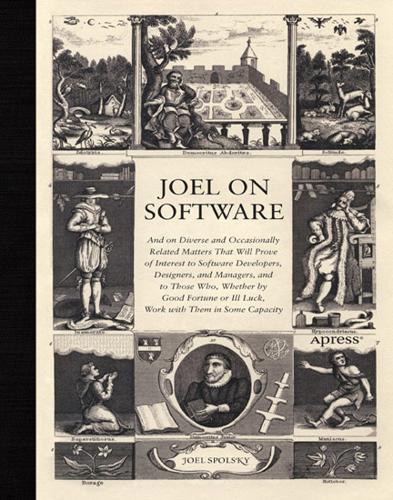
Joel on Software
by
Joel Spolsky
Published 1 Aug 2004
Try to lock them in before they become your customers, and you'll just lock them out. But if you make an honest promise that it will be easy to back out of the service if they're not happy, and suddenly you eliminate one more barrier to entry. And, as we learned, eliminating even a single barrier to entry can have a dramatic effect on conversions, and over time, when you knock down that last barrier to entry, people will start flooding in, and life will be good for a while. Until somebody does the same thing to you. thirty-nine STRATEGY LETTER IV: BLOATWARE AND THE 80/20 MYTH FRIDAY, MARCH 23, 2001 Version 5.0 of Microsoft's flagship spreadsheet program Excel came out in 1993.
…
One thing you see a lot during a transition from an old monopoly to a new monopoly is a magic "tipping point": one morning, you wake up and your product has 80 percent market share instead of 20 percent market share. This flip tends to happen very quickly (VisiCalc to 123 to Excel, WordStar to WordPerfect to Word, Mosaic to Netscape to Internet Explorer, dBase to Access, and so on). It usually happens because the very last barrier to entry has fallen, and suddenly it's logical for everyone to switch. Obviously, it's important to work on fixing the obvious barriers to entry, but once you think you've addressed those, you need to figure out what the not-so-obvious ones are. And this is where strategy becomes tricky, because there are some non-obvious things that keep people from switching. Here's an example.
…
Ben & Jerry's Amazon Lots of established competitors New technology, no competition at first If you don't have any real competition, as with Amazon, there is a chance that you can succeed at a Land Grab—that is, get as many customers as quickly as possible so that later competitors will have a serious barrier to entry. But if you're going into an industry that has a well-established set of competitors, the Land Grab idea doesn't make sense, because you'd need to create your customer base by getting customers to switch over from competitors. In general, venture capitalists aren't too enthusiastic about the idea of going into a market with pesky competitors.

How I Built This: The Unexpected Paths to Success From the World's Most Inspiring Entrepreneurs
by
Guy Raz
Published 14 Sep 2020
Microsoft employed each of those strategies to great effect. A year after Raikes’s email to Buffett, Microsoft would surpass General Electric as the world’s most valuable company and stay in that position for five consecutive years. Toll bridge. Moat. Pricing discretion. These are euphemisms for the economic term barriers to entry, which is itself a kind of euphemism for all the ways existing businesses shut out competitors and make it difficult for new businesses to compete in a given industry. These barriers are not just conscious strategies deployed by old guard blue-chippers; they are also natural forces that rise and shift within a market as competitors enter and exit, grow and shrink, evolve and pivot.
…
Those niches—CrossFit, Paleo, and direct-to-consumer—which were then on the verge of exploding and truly becoming the kind of vast gate that Peter Thiel was talking about, were the combination that unlocked opportunity for Peter Rahal and allowed RXBar the chance to take root, to stand out, and to grow, before his direct competitors could notice and stamp him out. By that point, those competitors included major multinationals like General Mills and Nestlé, which had acquired Lärabar and PowerBar, respectively, and they could have easily shut him out by erecting any number of barriers to entry into the protein bar market. For Manoj Bhargava, the founder of 5-hour Energy, his side door into the energy drink market did not take the shape of a small niche, but rather of a small product. In early 2003, a few years removed from his retirement from a plastics business he’d turned around and made profitable, Manoj was attending a natural products trade show outside Los Angeles looking for inventions he might acquire or license in an effort to create a business that would generate an ongoing residual income stream for him in his post-plastics years.
…
Even if you were inclined to give a little guy like Manoj Bhargava a shot, once the regional sales reps and distributors from Coca-Cola and PepsiCo got wind of your decision, they would likely wield their Microsoftesque price discretion against you like a baseball bat, or just pull their products from your store altogether. Those were the barriers to entry that Manoj was looking at. If he was going to get into this market, he’d have to find some other way. That’s when it dawned on him. “If I’m tired,” he asked himself, “why am I thirsty also?” By which he meant, why should we have to chug ten to sixteen ounces of a cloyingly sweet liquid in order to get an energy boost?

The Power of Pull: How Small Moves, Smartly Made, Can Set Big Things in Motion
by
John Hagel Iii
and
John Seely Brown
Published 12 Apr 2010
Together, they are the powerful catalysts setting the Big Shift into motion. Economic Impact The Big Shift is still at an early stage of its innovation and dissemination process, but already-visible patterns are nearly certain to persist as digital technologies systematically and substantially reduce barriers to entry and barriers to movement on a global scale. It is now possible for even the smallest vendors to reach a global market of customers using digital networks. The digital infrastructure makes outsourcing more feasible than ever, and this in turn makes it easier for small companies to access and use world-class capability to deliver more value to their markets and to respond more rapidly to unanticipated changes in markets.
…
In the United States, the exponentially advancing price/performance capability of computing, storage, and bandwidth is driving an adoption rate for the digital infrastructure that is two to five times faster than adoption rates were for previous infrastructures, such as electricity and telephone networks.10 As the price/performance ratio goes down, new capabilities emerge faster than before and disruption occurs frequently rather than in isolated episodes. Fueled by this new digital infrastructure—and public policy changes that overwhelmingly have reduced barriers to entry and movement—U.S. competitive intensity is more than twice what it was in the mid-1960s.11 Declining ROA rates, even as labor productivity rises, suggest that firms are unable to hold onto the financial benefits created by steady gains in labor productivity. Who is capturing the rewards instead?
…
We can sum it all up with the following statement: Push is no longer the dominant paradigm in business, education, or civic life. Welcome to the foundational change that makes pull the dominant paradigm in our lives. The Second Wave: Knowledge Flows If the Big Shift’s first wave is all about lowering barriers to entry and movement, the second wave shows what happens when those barriers go away: Capital, talent, and knowledge start flowing increasingly rapidly across geographical and institutional boundaries. By our estimation, developed economies today are somewhere in the early part of the second wave of the Big Shift, with the third wave yet to come.
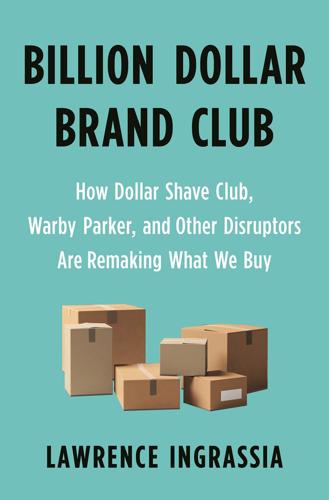
Billion Dollar Brand Club: How Dollar Shave Club, Warby Parker, and Other Disruptors Are Remaking What We Buy
by
Lawrence Ingrassia
Published 28 Jan 2020
This model of creating and sustaining brands had endured for many decades because of a symbiotic relationship among those making brand-name goods, those advertising them, and those selling them. Everyone in this orderly universe benefited, in no small part because this model created significant barriers to entry. Little wonder that dozens of brands that were either number one or number two in the first half of the twentieth century were also number one or number two toward the end of the twentieth century, Rothenberg notes. “The idea that you could lose sixteen points of market share in six years, like Gillette had”—to Dollar Shave Club, mostly, but to Harry’s as well—“that’s unbelievable.”
…
Globalization and technology have made it possible for entrepreneurs to launch new brands in just about any category and to bring them to market with astonishing speed. Never before has it been so easy to produce a physical product or to create a new consumer brand with so little investment. This has dramatically lowered one of the main barriers to entry that long posed an obstacle to entrepreneurs and safeguarded the incumbents that had built their own factories and employed legions of deeply knowledgeable specialists on their R&D teams. Companies have outsourced production for decades, but in recent times, the global supply chain has become more diverse and sophisticated than ever.
…
“In the digital economy, your audience has an audience,” says David Bell. In a world where products are commoditized, Neil Blumenthal says, a company needs to create moats to fend off the competition: “How do you create moats? You continue to provide more value. How do you provide more value? You create a more holistic experience. That’s a barrier to entry.” * * * The night before Thanksgiving 2018, Mark Ely noticed a small scratch on the lenses of a pair of Warby Parker glasses he had recently purchased. The glasses came with a one-year scratch-free guarantee, so he sent a text message that evening to the customer service team. Given the timing, he says, “I figured I wouldn’t hear anything until the next week, and probably have to email again, it being the holiday and all.”

Open for Business Harnessing the Power of Platform Ecosystems
by
Lauren Turner Claire
,
Laure Claire Reillier
and
Benoit Reillier
Published 14 Oct 2017
By the same token, gaming platforms provide software development kits and a range of incentives for developers to select their platform over other competing ones. They do this to maximize indirect network effects since more and better games will attract more buyers of the game console itself. Network effects are very important since they can represent a significant barrier to entry for competitors and therefore contribute to protecting a business. In certain circumstances, network effects may lead a platform to reach a ‘critical mass’, and even in some markets ‘tip’ to a ‘winner takes all’ natural equilibrium, where a single business ends up serving the entire market. Network effects are not just about the number of platform participants, but about their propensity to interact on the platform as well.
…
This representation of the firm goes hand in hand with Porter’s five forces framework, which states that the competitive position of the firm is driven by the negotiating power of clients, the negotiating power of suppliers, the threat of substitutes, the threat of new entrants and lastly the rivalry in the sector. Within Porter’s framework, a strong competitive advantage for your own value chain is predicated upon fragmented markets 44 Platforms as business models with lots of buyers and suppliers (unable to negotiate), as well as barriers to entry to avoid new competitors and a product with no or limited substitutes, as well as few direct competitors.3 The traditional linear model is under strain, though. Modern innovationdriven firms are less linear and more open as the process of adding value may be shared between the firm, partners, stakeholders and customers.
…
See www.netpromoter. com for more information. 12 Conversation with Frédéric Mazzella, 14 January 2016. 13 C2C: consumer to consumer; B2C: business to consumer; B2B: business to business. 14 ‘How Elasticsearch Was Deployed at BlaBlaCar’, 19 June 2013, www.slideshare.net/ sinfomicien/presentation-elastic-searchfeedback. 15 In some cases, this question is only relevant after a critical mass has been reached. 16 Unless, of course, the platform has pivoted since then and a new North Star metric is more appropriate for the new business. Chapter 10 Platform maturity Defending profitable growth Once critical mass is reached, the energy required to sustain platform growth is proportionally smaller than the energy required at ignition due to network effects. With an established market position, barriers to entry are likely to be high for new entrants. However, competitive threats will come from numerous fronts and will need to be dealt with appropriately. Scale also comes with drawbacks. It may take longer to adjust to new market dynamics and make changes to the value proposition – at least without alienating existing platform participants.

People, Power, and Profits: Progressive Capitalism for an Age of Discontent
by
Joseph E. Stiglitz
Published 22 Apr 2019
When the dust settles, firms should only get the normal return on their capital, just the return required to compensate them for the use of their money and the risk they bear. There should be no excess returns. Not surprisingly, this is an outcome that firms don’t like. So an essential part of the strategy of innovative firms is to create barriers to entry—what Warren Buffet called moats—so others won’t come in and compete away their profits. Firms like Microsoft led in the innovation of new forms of barriers to entry and clever ways of driving out existing competitors, late twentieth-century advances building on the shoulders of anticompetitive giants that had gone before them. The saga of the 1990s internet browser wars is instructive.
…
Today, it is the new tech giants that abuse market power, with European competition authorities repeatedly finding that companies like Google have engaged in anticompetitive practices, first in favoring its own services in internet searches, and then in abusing its power in the mobile phone market, with the EU levying record-setting fines in the two cases of $2.8 billion and $5.1 billion, respectively. Abusing the patent system is another avenue for reducing competition. Patents are a temporary barrier to entry. No one can produce a product that is identical to a patented good. When most Americans think of how patents are supposed to be used, they may imagine the small-time inventor who gets legal protection in order to prevent big companies from stealing her idea. These days, the situation is not nearly as simple, and patents have often become an effective barrier to entry. Many innovations today require hundreds, if not thousands, of patents. And as a firm creates a new product (say, a new chip) there is a risk of unwittingly intruding on one of a myriad of patents.
…
Yet such price discrimination has become commonplace in our digital economy, as we discuss further in chapter 6. Innovation in creating market power There can be little doubt that there has been an increase in market power. The question then is why. I described earlier Warren Buffett’s view that the best way to ensure sustained profits is for firms to surround themselves with moats that create barriers to entry, preventing profits from being eroded by the competition that new entrants would provide. Among the most profitable recent “innovations” in the United States are those enhancing the ability to create and widen these moats and the ability to exploit the subsequent market power. In the standard economic model, creating a better product does not ensure sustained profits.

The Curse of Bigness: Antitrust in the New Gilded Age
by
Tim Wu
Published 14 Jun 2018
Having waited for several decades, are society and the economy supposed to wait for several more? This line of argument ignores the idea that deliberate investments in building barriers to entry can be effective, and it is often utterly rational for the monopolist to make such investments. Of the great mysteries of the Chicago School was the fact that it posited ultra-rational, profit-seeking monopolists, yet somehow imagined that they would generally leave themselves completely vulnerable to competitive attack. The truth is that investments in barriers to entry are a magnificent investment. It would be crazy, however, to defend every case that was brought as part of the big case tradition.
…
*One prominent exception was the iconoclastic economist Joseph Schumpeter, who had championed the entrepreneur in his earlier years, but in his later years grew to admire the large monopolistic corporation and begun to see the lure of monopoly as a principal driver of innovation and “creative destruction.” Schumpeter, however, did not take seriously the problem of investment in barriers to entry, and particularly the power of government to insulate monopolies from creative destruction. See Tim Wu, The Master Switch (2010). *In Bork’s words: “A value will be announced as pertinent with a confidence that is matched only by the mystery that shrouds its derivation. A very specific decision is then whelped from the value premise without benefit of midwifery by any visible minor premise.”
…
Better maybe to stay small and stay young, to move fast and break things. All this suggested that in cyberspace, there could be no such thing as a lasting monopoly. The internet would never stand for it. Business was now moving at internet speed: A three-year-old firm was middle-aged; a five-year-old firm almost certainly near death. “Barriers to entry” was a twentieth century concept. Now, competition was always just “one click away.” Even if a firm did manage to gain temporary dominance, there was nothing to be afraid of. We were not speaking of the evil monopolists of old. The new firms were instead devoted to spreading sweetness and light, goodwill toward all men—whether access to information (Google), good books for cheap (Amazon), or the building of a global community (Facebook).

Chokepoint Capitalism
by
Rebecca Giblin
and
Cory Doctorow
Published 26 Sep 2022
Facebook, for example, combines tremendously strong network effects (thanks to its almost three billion monthly active users) with a data advantage (the dossiers it has collected on you from its years-long surveillance are valued more by advertisers than anything a start-up could offer) and high switching costs (the fact that leaving makes it harder to communicate with your family, community, and friends). Google has a similar armory, but it doesn’t want you to think it’s relying on moats at all. That’s why it has a blanket ban on its staff using phrases like “network effects” and “barriers to entry.”20 Amazon is the master of moats, which it uses to ensure customers and suppliers are thoroughly cemented in. It attributes its success to its “flywheel.” Flywheels are heavy revolving wheels, used in machines to increase momentum. Because they’re so heavy, it takes a lot to get them spinning, but once they’re going, it also takes a lot to stop them.
…
It’s going to be monumentally difficult to make music the way you want and that speaks to the culture of the moment unless you sign with one of them. The money you pay will go to the label, and if someone down the line decides to sample your music in turn, that money will go to them too. The rules are designed to drive up the cost of making music, creating barriers to entry that make it harder for independents to compete while adding little to artists’ bottom lines. This system maintains major label dominance. Every time an artist signs up to a major in order to make their music-making possible, it gets to add their copyrights to the label’s strategic repertoire for another century.
…
Between them, the Big Three sign only about 650 acts each year—a tiny fraction of working artists.35 Nonetheless, their vast copyright reservoirs give them outsized power to determine how music pays for everyone else. The massive advances and other kickbacks they routinely demand as a cost of doing business increase barriers to entry, making it harder for competition to flourish. And, since contracts last the entire term of copyright, which can be a century or more, they keep artists locked in even when their labels are acting against their interests. The result is an industry controlled by a tiny handful of anticompetitive empires, shored up by legal privileges they can call upon states to enforce.
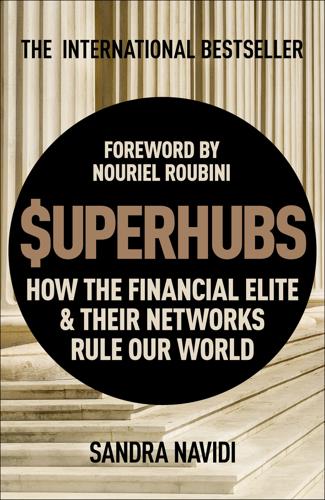
SUPERHUBS: How the Financial Elite and Their Networks Rule Our World
by
Sandra Navidi
Published 24 Jan 2017
Roubini agrees that possessing emotional intelligence is helpful but argues that the power of his ideas is what established him as a thought leader. His business consultancy has likely benefited from both his intellectual and social skills. Consulting is a competitive field as research is generally considered a cost and not a profit center, and the market is flooded with gratuitous high-quality analyses. There are no barriers to entry as it is not a licensed profession, and anyone can call him- or herself a consultant. Therefore, having top academic credentials, policy experience, and access to high-caliber networks provide thought leaders with distinct competitive advantages that propel them into the league of superhubs.
…
In 2014, hedge fund executive Kenneth Griffin made a donation of $150 million to his alma mater, Harvard, and private equity guru Steve Schwarzman gifted Yale with $150 million in 2015. Over time, an informal system developed in which affiliations ensure that “members of the club” help one another in advancing their interests. They interact at work, golf clubs, think tanks, and any other platforms with high barriers to entry, be they financial, status-wise, or both. The old boys’ network is less conservative and stereotypical than it used to be, but it is still alive and well. Its members have similar social backgrounds and usually live in an exclusive bubble of privilege. Because of their influence, they determine the culture, define norms, and set the tone.
…
Video conferences are the next best thing to face-to-face meetings, but they cannot replace them as participants cannot engage in direct eye contact, exchange handshakes and other personal gestures, or interpret nonverbal cues. Thus, digitized interaction is superficial at best and fragile at worst. Internet-based social networks such as Friendster and Myspace are often fleeting. With no barrier to entry, users have little loyalty and move on when the next best thing comes along. If technology fails, or is blocked by governments, connecting becomes impossible. According to the Pew study Social Isolation and New Technology, people still prefer face-to-face communication as the primary means to stay in touch.7 A deep and trusting relationship is a privilege that must be earned with an investment of time and effort, tested through adversity, and fostered through mutual experiences.
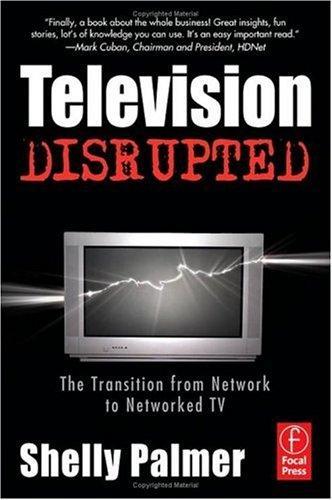
Television disrupted: the transition from network to networked TV
by
Shelly Palmer
Published 14 Apr 2006
This data compression technology, and other subsequent compression schemas, cost the dot-com speculators billions of dollars because they created an extraordinary amount of over-capacity on the existing fiber optic networks. There is an important lesson to be learned from this experience. Technology is fleeting. Technological edges or advantages can be extremely short-lived. And, as we all know all too well, the last half mile is the barrier to entry. In other words, getting fiber to the curb is not the same as getting fiber to the premises or fiber to the pillow. Traditionally, innovations in audio have happened about 10 years before their video counterparts. This is just a bit of armchair wisdom, not a trend analysis. Later in this chapter, we will explore some of the profound differences between the audio and video businesses and the technologies that enable them.
…
All rights reserved. 6-Television.Chap Six v3sp.qxd 3/20/06 7:22 AM Page 75 6 Content, Storytellers, Gatekeepers and Related Skills When people say “Content is king,” they don’t mean your content — unless you happen to be holding the rights to distribute games from major sports franchises, episodes of hit prime time television series or reruns of big off-network sitcoms. Saying content is king is like saying hits are important. It is an absurd, overused, oversimplified way of communicating the idea that good business models revolve around the “business of hits.” However, since the financial barriers to entry of the networked television business are significantly lower then those of the network television business, the economics of the “business of hits” is being redefined. And, the inherent two-way nature of the technology that enables networked television has some added benefits for storytellers.
…
Or if they do recognize the genus (hamburger), should we be surprised that their tastes have evolved (or devolved) to a point where they will show a marked preference for MickyD’s over a classic “21 Burger?” Who Are the Gatekeepers? Since the advent of technology, there have always been significant monetary barriers to entry for almost every creative outlet. You needed a printing press to make books, a recording studio to make music, a film studio to make films, etc. You also needed crafts-people (back then they were politically incorrectly referred to as craftsmen, but at that time, all u machines, boats and hurricanes were female — Tastes change and art crazy times, they were!).
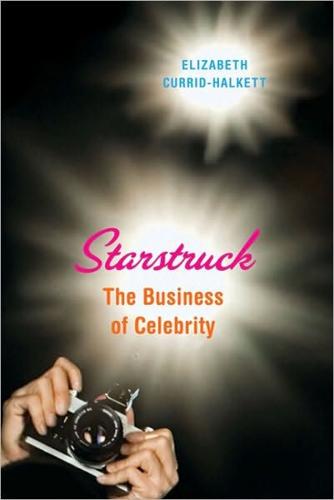
Starstruck: The Business of Celebrity
by
Currid
Published 9 Nov 2010
Both Jeffrey Williams and David Marshall have noted the existence of celebrity outside the conventional Hollywood and political star systems. Both make the point that celebrities exist in autonomous and self-contained systems. See Marshall, Celebrity and Power, and Williams, “Academostars.” 7. Economists call this “barriers to entry.” When they look at markets, the ability to enter them is a function of “high” or “low” barriers. See Demsetz, “Barriers to Entry.” 8. Facebook researchers, for example, have pointed toward the ability of the social-networking site to allow people to “passively” be fed news about their friends. By simply trolling their news feed, members are able to collectively be updated on the extraneous aspects of their various five hundred–plus friends.
…
Before getting into the different aspects of stardom, it’s worth taking a moment to look at where we are now, which is in a state of unprecedented oversaturation and decentralization. Yes, undoubtedly, in order to be a film star one must pass through Los Angeles. But the deluge of social media has provided a virtual geography with no barriers to entry, such that people like M can permeate a collective consciousness around the world like any other celebrity. No, he will not grace the cover of US Weekly, but his wide and diverse social circle will be aware of all the intimate details of his life and may discuss him just as they would a conventional star.
…
They may be discovered on American Idol for their beautiful voices or simply famous for being famous, like Goody. Third, democratic stars circumvent the normal vetting process, and that is part of their appeal. The development of technology, the rise of reality TV shows (and their great popularity), and the use of social media to perpetuate all forms of celebrity have reduced barriers to entry unlike at any other point in history. Reality TV stars, popular bloggers, MySpace and Facebook members who have thousands of friends, in another era would not have had the conduits to become mainstream stars. New forms of media and publicity allow individuals to become celebrities without being rejected by an elite Hollywood agent telling them they don’t have what it takes.

Rethinking the Economics of Land and Housing
by
Josh Ryan-Collins
,
Toby Lloyd
and
Laurie Macfarlane
Published 28 Feb 2017
Because land acquisition is usually the largest single cost, and often the first one to be incurred, the price that the developer pays for the land determines much of what happens later in the process (see Box 4.7). The difficulties and costs of securing land also create major barriers to entry for new firms. The combination of high risk, cyclicality and barriers to entry drives concentration in the industry through business failures and mergers. This is only partially offset by the need for detailed local knowledge to secure the best sites at good prices. Because the developer does not retain an interest in the scheme, and because the developer has far more knowledge than the buyer (who is typically the consumer or an amateur investor) there is little incentive on the developer to prioritise quality.
…
Developers often control strategic land via the use of options agreements, which are private contracts with landowners such as farmers, and are generally not publicly disclosed. This restricts the ability of rivals to acquire suitable development sites, and presents a major barrier to entry into the house building industry, further entrenching the dominance of the existing large firms (Griffith, 2011). These land market conditions effectively give ‘monopoly power to developers who own particular patches of land where large proportions of development [are] being made available’ (Cheshire, 2011). The concentration of the industry and barriers to entry have lowered competitive pressure, and militated against product innovation, with the result that new homes in Britain are widely seen to be unattractive and poor quality, with only 18% rated as being of good or very good design.
…
Despite a plethora of generalised indices of house prices, the only official index of land prices was discontinued in 2011, and the datasets on the value of commercial property held by the Valuation Office Agency for the levying of business rates are not publicly available. This paucity of market information creates significant inefficiencies and barriers to entry (see Chapter 4) and restricts the ability of public bodies and citizens to scrutinise the activities of landowners and developers (Jefferys, Lloyd, Argyle, et al., 2014). Property prices tend to be a poor proxy for land values since, as mentioned, materials prices and labour costs bear little relation to land values.
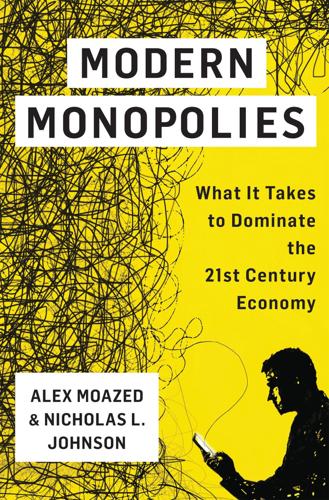
Modern Monopolies: What It Takes to Dominate the 21st Century Economy
by
Alex Moazed
and
Nicholas L. Johnson
Published 30 May 2016
Additionally, the speed of technological change today means that, absent government enforcement, modern monopolies aren’t likely to last nearly as long as their predecessors. Barriers to entry in most industries are far lower than they were a century ago, while the boundaries between industries also are much more fluid than they have been in the past. Although networks today do create the strongest and most defensible moats, they don’t create the same barriers to entry as past monopolies that required vast investment in physical infrastructure in order to succeed. AT&T’s domination of the telephone industry lasted from the beginning of the twentieth century until its 1984 breakup.
…
Technological progress has even led to what’s being called the Race to Zero in cloud computing, where technological advances and increasing competition are driving down cloud processing and storage prices at an unprecedented rate. The Declining Cost of Communication The cost of transmitting and storing information has tumbled. As a result, barriers to entry in business have fallen, and the one-way broadcast paradigm exhibited by TV and radio companies of the Industrial Revolution has given way to networked communication. Discovering and transmitting information became frictionless and cheap. Activities that typically happened within the bounds of one organization can now take place in a decentralized manner through networks.
…
You’re Going to Need a Bigger Moat It seems Wilson was correct that software alone is a commodity. In the language of legendary investor Warren Buffet, pure software companies don’t have an effective “moat” to defend their business; it’s easy for competitors to storm the barricades and overwhelm them. Since most software industries have relatively low barriers to entry—especially today, when startup costs are lower than ever—it’s practically guaranteed that a competitor will come along and offer customers similar software that’s either better or cheaper. That’s where network effects come in. Put very simply, a network effect is present when the behavior of one user has a direct impact on the value that other users will get out of the same service.
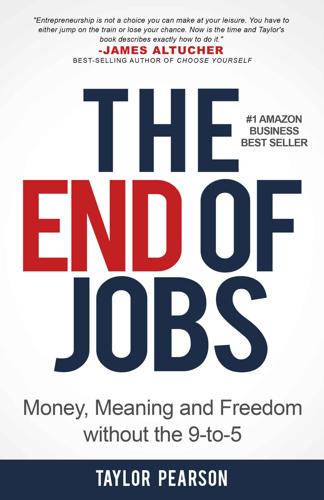
The End of Jobs: Money, Meaning and Freedom Without the 9-To-5
by
Taylor Pearson
Published 27 Jun 2015
After the first one was successful, he started marketing the service and launched a productized service39 selling email marketing and conversion consulting to business owners.40 Dan Norris also launched a productized service similar to John with WP Curve, though targeted at a much larger audience and from a lower price point. While all the business models are unique, what’s universal is that the barrier to entry in each is no longer capital or formal credentials. All they needed to get started were free or relatively cheap resources they could buy online, and their own hard work. The entrepreneurial leap has become the entrepreneurial stair step. The latent demand and lower barriers to entry have allowed more people to become entrepreneurs by easing their way into the process. That’s not to say it’s easy—you still have to climb the stairs, but no longer in a single bound.
…
The glut of lawyers in the U.S. may be the most obvious example, but even in the traditional STEM fields (science, technology, engineering, and mathematics), which were long considered lock-ins for employment, people with related degrees are struggling harder to find jobs than they were a decade ago. Jobs in almost all industries are becoming increasingly commoditized. It makes sense to us that low-skilled jobs with lower barriers to entry are being affected by globalization and technology, but why is it affecting the more highly-credentialed ones? The Cynefin Framework and Your Career The Cynefin framework23 (pronounced Kih-neh-vihn) was developed by Dave Snowden after studying the management structure at IBM. The framework became popular, and was featured in publications including the Harvard Business Review.24 It divides work and management up in ways that are more effective given the changing nature of work.
…
Just as technology made it viable for small bands to sell their records online, it’s also made entrepreneurship more accessible than ever. The Long Tail or What’s Making Entrepreneurship More Accessible Just like scientists sequencing the human genome were unable to predict how fast technology would enable the project to accelerate, the same has occurred with the technology needed to start a business. The barriers to entry have come down dramatically faster than most people have realized. There are three primary forces of the Long Tail which have driven this shift making entrepreneurship more accessible than ever. 1. The Democratization of the Tools of Production: Product Creation Costs Are Decreasing—Just as cheap software let Birdmonster produce music from their laptops, cheap tools have allowed entrepreneurs to start and run a business from anywhere with little to no capital up front.

The View From Flyover Country: Dispatches From the Forgotten America
by
Sarah Kendzior
Published 24 Apr 2015
For students seeking jobs at certain policy organizations, the way to get one’s foot in the door is to walk the streets paved in gold. In the post-employment economy, jobs are privileges, and the privileged have jobs. Unpaid and “pay to play” internships have long dominated policy fields, but the $22,000 asking price signified a barrier to entry so galling the UN issued a statement in response. “Internships at the United Nations are not for sale and cannot be put up for auction. We are trying to find out the details of how this came about and have contacted charitybuzz.com,” a UN representative wrote to Inner City Press, who reported on the case.
…
Kennedy Center continues to list the auction under the tagline “Spend six weeks as a United Nations intern with Bruce Knotts and the UN Committee on Human Rights,” while the UN continues to deny it without offering details. It is difficult to tell what is going on. Whatever the end game, someone is willing to drop $22,000 to play it. Barriers to Entry UN internships may not be up for auction, but they are, in essence, for sale. The United Nations does not pay its interns, making it very difficult for someone who is not independently wealthy to take an internship. The only thing that distinguishes the alleged auction from the UN’s normal practice is that the unspoken class discrimination is made blatant.
…
* * * The job you work increasingly reflects the money you already had. * * * The McDonald’s worker, the argument goes, deserves what she gets because she is a McDonald’s worker. The professional, it is said, deserves her success because she is a professional. But over the last decade, the barriers to entry for white-collar professions have dramatically increased while the pathways out of poverty have eroded. The job you work increasingly reflects the money you already had. Upward mobility was once the hallmark of the American Dream. Downward wages have made that dream unachievable for Americans born poor.

Reinventing Discovery: The New Era of Networked Science
by
Michael Nielsen
Published 2 Oct 2011
In the next chapter, chapter 4, we’ll see many collaborative patterns that can help achieve these ends, including: • Modularizing the collaboration, that is, figuring out ways to split up the overall task into smaller subtasks that can be attacked independently or nearly independently. This reduces barriers to entry by new people, and thus broadens the range of available expertise. Modularity is often difficult to achieve, requiring a conscious, relentless commitment on the part of participants. • Encouraging small contributions, again to reduce barriers to entry, and to broaden the range of available expertise. • Developing a rich and well structured information commons, so people can build on earlier work. The easier it is to find and reuse earlier work, the faster the information commons will grow.
…
Although citizen science is not new, online tools are enabling far more people to participate—think of Galaxy Zoo’s 200,000-plus participants and Foldit’s 75,000-plus participants—and also expanding the range of scientific work those people can do. To be a comet hunter in the 1960s you needed to purchase or build a telescope, learn how to use it, and then spend many, many hours observing the sky. The barriers to entry and to continued contribution were high. By contrast, you can get started on Galaxy Zoo or Foldit in a matter of minutes. It’s even possible to classify galaxies on your smartphone. Aside from dropping barriers to entry, online tools also enable sophisticated interactive training, and bring participants together in communities where they can learn from one another, and support one another’s work. As a result we’re seeing a great flowering of citizen science.
…
In particular, open source collaborations have been superbly effective at scaling up, and so increasing the cognitive diversity and range of microexpertise available to the collaboration. In this chapter we’ll identify four powerful patterns that open source collaborations have used to scale. (1) a relentless commitment to working in a modular way, finding clever ways of splitting up the overall task into smaller subtasks; (2) encouraging small contributions, to reduce barriers to entry; (3) allowing easy reuse of earlier work by other people; and (4) using signaling mechanisms such as scores to help people decide where to direct their attention. These patterns can be incorporated into any architecture of attention, and so be used to amplify coe intelligence. The Importance of Being Modular To understand how open source collaborations scale, let’s look at a time when the Linux collaboration almost failed to scale, a time when the Linux developer community almost fractured into two separate camps, working on two separate versions of Linux.
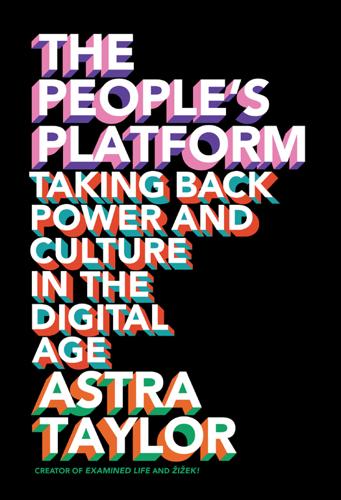
The People's Platform: Taking Back Power and Culture in the Digital Age
by
Astra Taylor
Published 4 Mar 2014
A golden age of sharing and collaboration will be ushered in, modeled on Wikipedia and open source software. In many wonderful ways this is the world we have been waiting for. So what’s the catch? In some crucial respects the standard assumptions about the Internet’s inevitable effects have misled us. New technologies have undoubtedly removed barriers to entry, yet, as I will show, cultural democracy remains elusive. While it’s true that anyone with an Internet connection can speak online, that doesn’t mean our megaphones blast our messages at the same volume. Online, some speak louder than others. There are the followed and the followers. As should be obvious to anyone with an e-mail account, the Internet, though open to all, is hardly an egalitarian or noncommercial paradise, even if you bracket all the porn and shopping sites.
…
An amateur paradise is upon us, a place where people are able to participate in cultural production for the pleasure of it, without asking permission first. Social media have enabled a new paradigm of collaboration. The old closed, hierarchical, institutional model is being replaced by a decentralized, networked system open to all. Barriers to entry have been removed, gatekeepers have been demolished, and the costs of creating and distributing culture have plummeted. New tools not only have made cultural production more efficient but have equalized opportunity. NYU professor Clay Shirky, perhaps the leading proponent of this view, calls this process “social production.”
…
It wasn’t that the WikiLeaks mastermind had lost faith in people to think for themselves; rather, he recognized that they lacked the time the task required and the power to legitimize and publicize the results. Motivation and resources, time and power—these are assets that are not evenly distributed, even if the Internet has removed many of the old barriers to entry. They are inequalities that we must take into account when we talk about the network’s “level playing field.” The desire to transcend earthly inequality has suffused discussions of the Internet for decades. Early techno-utopians long ago declared that even the atom was “past” and promised the “tyranny of matter” overthrown.1 The terrestrial and corporeal, they confidently predicted, would soon be abandoned for the weightless Web.
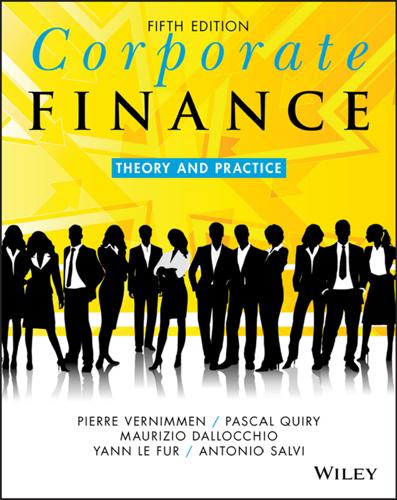
Corporate Finance: Theory and Practice
by
Pierre Vernimmen
,
Pascal Quiry
,
Maurizio Dallocchio
,
Yann le Fur
and
Antonio Salvi
Published 16 Oct 2017
For instance, eating out is on the increase, soda consumption is declining and consumption of fresh fruit juice is growing fast. Risk also depends on the nature of barriers to entry to the company’s market and whether or not alternative products exist. Nowadays barriers to entry tend to weaken constantly owing to: a powerful worldwide trend towards deregulation (there are fewer and fewer monopolies, e.g. in railways and postal services); technological advances (and in particular the Internet); a strong trend towards internationalisation. All these factors have increased the number of potential competitors and made the barriers to entry erected by existing players far less sturdy. For instance, the five record industry majors – Sony, Bertelsmann, Universal, Warner and EMI – had achieved worldwide domination of their market, with a combined market share of 80%.
…
A financial reading of strategy For a financial manager, these strategies, whatever they are, have a single goal – to enable the company to set itself apart on a competitive market in order to generate income, enabling it to generate higher earnings than its competitors, which in fact are no longer able to compete at the same level. Brands, patents, industrial barriers to entry (minimum size of factories, large advertising budgets, etc.) and legal barriers to entry (concessions, authorisations, etc.) are merely the instruments used to achieve this goal. For a financial manager, the most important role of an industrial manager is to analyse the economic, industrial, commercial, technological and competitive environment of the company, in order to develop a policy that will lead to higher earnings.
…
The workshop model may be adopted by craftsmen, in the luxury goods sector or for research purposes, but as soon as a product starts to develop, the workshop model should be discarded as soon as possible. Mass production is suitable for products with a low unit cost, but gives rise to very high working capital owing to the inventories of semi-finished goods that provide its flexibility. With this type of organisation, barriers to entry are low because as soon as a process designer develops an innovative method, it can be sold to all the market players. This type of production is frequently relocated to emerging markets. Process-specific production is a type of industrial organisation that took shape in the late 1970s and revolutionised production methods.

WTF?: What's the Future and Why It's Up to Us
by
Tim O'Reilly
Published 9 Oct 2017
Microsoft had used its position as the sole provider of the operating system for the PC to establish a monopoly on desktop software. Software applications had become increasingly complex, with Microsoft putting up deliberate barriers to entry against competitors. It was no longer possible for a single programmer or small company to make an impact in the PC software market. Open source software and the open protocols of the Internet were now challenging that dominance. The barriers to entry into the software market were crashing down. History may not repeat itself, but yes, it does rhyme. Users could try a new product for free—and even more than that, they could build their own custom version of it, also for free.
…
So when it came time to provide an operating system for the new machine, IBM decided to license it from Microsoft, giving them the right to resell the software to the segment of the market that IBM did not control. The size of that segment was about to explode. Because IBM had published the specifications for the machine, its success was followed by the development of dozens, then hundreds of PC-compatible clones. The barriers to entry to the market were so low that Michael Dell built his eponymous company while still a student at the University of Texas, assembling and selling computers from his dorm room. The IBM personal computer architecture became the standard, over time displacing not only other personal computer designs, but, over the next two decades, minicomputers and mainframes.
…
And once the web becomes fenced in by competing patents and other attempts to make this glorious open playing field into a proprietary wasteland, the springs of further innovation will dry up. In short, I think you’re pissing in the well. Patents such as yours are the first step in vitiating the web, in raising the barriers to entry not just for your competitors, but for the technological innovators who might otherwise come up with great new ideas that you could put to use in your own business. It’s a well known technology truism that all of the smart people don’t work for you, and that one of the surest ways to success is to get more ideas and more work out of people outside your own fences. . . .

Platform Revolution: How Networked Markets Are Transforming the Economy--And How to Make Them Work for You
by
Sangeet Paul Choudary
,
Marshall W. van Alstyne
and
Geoffrey G. Parker
Published 27 Mar 2016
Uber works to remove economic barriers that might discourage would-be drivers by providing financial incentives like sign-up bonuses. Platforms like Dribbble, Threadless, and 99designs have built large ecosystems of designers, largely owing to the democratization of the tools of design and printing over the last several years—yet another case of barriers to entry being lowered, in part through the help of platform tools. The proliferation of new production technologies further enables the emergence of new groups of producers. Just as the smartphone camera expanded the volume of content on platforms like Instagram and Vine, the spread of 3D printing is likely to lead to a new range of platforms for industry design.
…
Porter’s model identifies five forces that affect the strategic position of a particular business: the threat of new entrants to the market, the threat of substitute products or services, the bargaining power of customers, the bargaining power of suppliers, and the intensity of competitive rivalry in the industry. The goal of strategy is to control these five forces in such a way as to build a moat around the business and thereby render it unassailable. Thus, when a firm can erect barriers to entry, it can keep competitors out, and entrants with substitute products cannot storm the castle. When a firm can subjugate suppliers, competition among them weakens their bargaining power so the firm can keep its costs low. When a firm can subjugate buyers by keeping them relatively small, disunited, and powerless, the firm can keep its prices high.
…
Later thinkers have added nuance and fresh insights to Porter’s approach. In 1984, MIT’s Birger Wernerfelt first described in detail what he called the resource-based view of the firm, a variation on strategic thinking with roots in the work of several earlier scholars.8 The resource-based view highlights the fact that a particularly effective barrier to entry is control of an indispensable and inimitable resource. A firm with such a resource is safe from new entrants who lack and cannot acquire means to produce it. A simple example is De Beers, whose control of a worldwide diamond marketing cartel enabled it to maintain a near-monopoly over the diamond industry for the entire twentieth century.
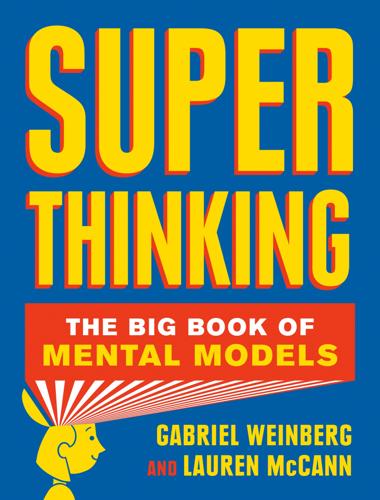
Super Thinking: The Big Book of Mental Models
by
Gabriel Weinberg
and
Lauren McCann
Published 17 Jun 2019
A related pair of concepts resulting from moats are barriers to entry and barriers to exit, which prevent people or companies from either entering or exiting a situation or market. A new mobile operating system wanting to compete with Apple’s iOS or Google’s Android would need to re-create an app store populated with thousands of useful apps, a large barrier to entry. Some careers have high barriers to entry, such as expensive years of schooling required. Similarly, some personal contracts, such as noncompetes, partnership agreements, or even marriage, create significant barriers to exit. As with switching costs, barriers to entry and exit can come in many forms, such as trade secrets, like the Coca-Cola formula; high capital investment, like the cost of a huge factory; and government regulations that protect incumbents.
…
As with switching costs, barriers to entry and exit can come in many forms, such as trade secrets, like the Coca-Cola formula; high capital investment, like the cost of a huge factory; and government regulations that protect incumbents. A specific model centered on barriers to entry due to regulation is called regulatory capture, in which regulatory agencies or lawmakers get captured by the special interest groups they are supposed to be regulating, ultimately protecting these entities from competition. In 2012, Jeff Donn reported on a year-long Associated Press investigation of the U.S. Nuclear Regulatory Commission [NRC], resulting in a lengthy four-part series that noted: Federal regulators have been working closely with the nuclear power industry to keep the nation’s aging reactors operating within safety standards by repeatedly weakening those standards, or simply failing to enforce them. . . .
…
A&P, 70 absence of evidence is not the evidence of absence, 167 A/B testing, 136 Accidental Empires (Cringley), 253 accountability, 275 acne, 169–71 activation energy, 112–13 actor-observer bias (self-serving bias), 21, 272 Adams, John, 222 adaptability, 121, 129 ad hominem, 226 adverse selection, 46–47 advertising, 103–4, 120, 262 advisers, 44, 45, 296 Affordable Care Act (ACA), 46, 47 Afghanistan, 54, 243 agent, 44–45 aggregation, 205 aggression, obnoxious, 264 agreeableness, 250 AIDS, 233 Airbnb, 276, 288, 292 air pollution, 41 air travel, 53–54 Aldi, 70 Alexander, Christopher, 92 algorithms, 94, 97 Allen, David, 76 all-nighter, 83 alpha, 161, 182 al-Qaeda, 52, 54 alternative hypothesis, 163, 164, 166, 167 altruism, effective, 80 alumni, 119 Amazon, 61, 70, 95–96, 283, 290, 300 American Revolution, 221–22, 239, 240 American Statistical Association, 168 Amway, 217 analysis paralysis, 60–62, 93 anchoring, 14–15, 30, 199 anecdotal evidence, 133, 139, 146 antibiotics, 37, 47–49 Antifragile (Taleb), 2, 105 antifragility, 2–3, 31–33 anti-patterns, 93 AOL, 106 Apollo 13, 4 appeasement, 237 Apple, 103, 104, 231, 241, 258, 289–91, 305, 309 iPad, 290 iPod, 296–97 Newton, 290 approval ratings, 152–54, 158 arbitrage, 282–83 Archilochus, 254 Archimedes, 78 arguing from first principles, 4–7, 31, 207 Ariely, Dan, 14, 222–23 arithmetic, ix–x, 23–24, 30, 178 arms races, 209–12, 214 Ashley Madison, 229 Associated Press (AP), 306 asymmetric information, 45–47 atomic bomb, see nuclear weapons Atwood, Jeff, 253 authority, 219–20, 226 automation, 95, 310 availability bias, 15–18, 30, 33, 300 average, 146, 187 Avon, 217 Aztecs, 243–44 babies, 198, 279 sleep and, 131–32 babysitters, 222 backfire effect, 26 back-of-the-envelope calculation, 299 bacteria, 47–49, 295 bait and switch, 228, 229 bandwagon effect, 202 barriers to entry and barriers to exit, 305 baseball, 83, 145–46, 289 base rate, 157, 159, 160 base rate fallacy, 157, 158, 170 BATNA (best alternative to a negotiated agreement), 77 Battle of Heraclea, 239 Battle of Tsushima, 241 Bayes’ theorem and Bayesian statistics, 157–60 beachhead, 300–301 Beatles, 105 Beautiful Mind, A, 213 beliefs, 103, 107 bell curve (normal distribution), 150–52, 153, 163–66, 191 Bell Labs, 89 benefit of the doubt, 20 benefits: cost-benefit analysis, 177–86, 189, 194 eliminating, 224 net, 181–82, 184 Berlin, Isaiah, 254 Bernoulli distribution, 152 best practices, 92 beta, 162, 182 Better Angels of Our Nature, The (Pinker), 144 Bezos, Jeff, 61–62, 286–87 bias, 3, 139 availability, 15–18, 30, 33, 300 confirmation, 26–28, 33, 103, 159 disconfirmation, 27 groupthink, 201–3 hidden, 139–43 hindsight, 271–72 nonresponse, 140, 142, 143 observer-expectancy, 136, 139 optimistic probability, 33 present, 85, 87, 93, 113 publication, 170, 173 response, 142, 143 selection, 139–40, 143, 170 self-serving, 21, 272 survivorship, 140–43, 170, 272 Big Short, The (Lewis), 289 bike-shedding, 75, 93 Bird, Larry, 246 birth lottery, 21–22, 69 black-and-white thinking, 126–28, 168, 272 black boxes, 94–95 Black Flags rebellion, 276 blackouts, electric, 120 black swan events, 190–91, 193 Blank, Steve, 294 bleeding them dry, 239 blinded experiments, 136 Blockbuster, 106 blowback, 54 Boaty McBoatface, RSS, 35 body mass index (BMI), 137 body temperature, 146–50 boiling frog, 55, 56, 58, 60 bonds, 180, 184 Bonne, Rose, 58 Boot, Max, 239 boots on the ground, 279 Boston Common, 36–38, 42 Boyd, John, 294 Bradley, Bill, 248 brainstorming, 201–3 Brandeis, Louis, 307 breast cancer, 156–57, 160–61 Breathalyzer tests, 157–58, 160 Brexit, 206, 305 bright spots, 300 bring in reinforcements, 279 British Medical Journal (BMJ), 136–37 broken windows theory, 235–36 Broderick, Matthew, 230 Brody, William, 290–91 Brookings Institution, 306 brute force solution, 93, 97 Bryson, Bill, 50 budget, 38, 74–75, 81, 95, 113 national, 75–76 Buffett, Warren, viii, 69, 286, 302, 317, 318 burning bridges, 243 burnout, 82, 83 Burns, Robert, 49 burn the boats, 244 Bush, George H.

Neurodiversity at Work: Drive Innovation, Performance and Productivity With a Neurodiverse Workforce
by
Amanda Kirby
and
Theo Smith
Published 2 Aug 2021
Part of sitting down to force our ADHD brains to write this book (and it’s not been easy, as we both love the ideas and hate the commas and full stops) was the real belief that we could provide support for others and a platform to help elevate our fellow human beings onto a ‘field of dreams’ where we all have a chance at a successful and productive life. Eliminating kryptonite When we talk about eliminating kryptonite, we are not saying all lights should be dimmed and all noise should be quashed. No room shall be open plan and no stairwell should be too high to climb. What we are instead saying is let’s take down the barriers to entry! Let children see that there are successful people who are dyslexic or have autism and because of their talents, not despite them. We can all agree that it is unacceptable to expect a person in a wheelchair to climb a set of stairs to attend an interview, let alone have to do so in their daily workplace.
…
That action alone is likely to positively increase the diversity of thought within those roles and actively participate in increasing opportunities for those who would otherwise be out of work and stuck in a negative cycle. We can’t change the prison system overnight, but we can change the way we see people. We can also take down barriers to entry that shouldn’t be there and implement a ‘ban the box’ methodology. CASE STUDY Helen and her justice story Helen Arnold Richardson is the managing director of Do-IT Solutions but also has had extensive experience working in prisons in the UK. She provides valuable reflections of the justice sector and what needs to be done.
…
When Mary Ellen Smith, our Corporate VP for Operations, spoke about it at the United Nations we received around 800 CVs. Now a CV may not be the best way to assess talent, but that response told us something – that there are a lot of brilliant people disabled by society. We learnt that our traditional hiring processes could be a major barrier to entry for many talented candidates – so we set out to change them. In the years since, we have continued to refine and develop our recruitment and onboarding so that we reach more people on the autism spectrum and enable them to demonstrate their abilities in a comfortable and supporting environment.
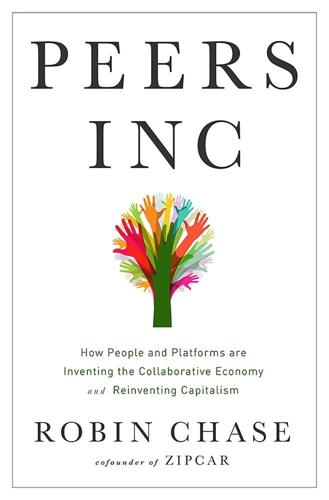
Peers Inc: How People and Platforms Are Inventing the Collaborative Economy and Reinventing Capitalism
by
Robin Chase
Published 14 May 2015
Platforms have impressive properties based on their raison d’être: simplifying, standardizing, and easing participation. This means that once you’ve got the elements of the platform exactly right and people are interested in the excess capacity you are offering up, it will grow very quickly. The good platform has reduced the cost and effort of participating to its absolute minimum, making the barriers to entry as low as possible. With growth come all the benefits of economies of scale. Platforms can be expensive to build, but the standardization of service provided, inherent in the platform model, means that each additional peer costs very little to add. At a certain point, the benefits are almost all to the upside.
…
How a platform was financed, and therefore who owns it, will also dictate its likelihood of exercising monopoly if it has the option. A discussion I had with entrepreneurs on this topic led to a lack of consensus. Some platforms (such as cloud computing, credit card processing, and mail servers) lack barriers to entry or protective intellectual property, and therefore they have competitors. For peers, using these platforms is much cheaper than building those assets on their own. I can attest to this, having built so many pieces for Zipcar and having bought them for my last company. And then, “when we don’t like the platform, we can just go elsewhere because we haven’t invested in the assets—switching costs are much lower than if we’d built it ourselves, and sunk costs are much lower likewise,” one CEO told me.
…
For BlaBlaCar, on the other hand, all the value is derived from network effects: Ridesharing only works when lots of people are participating. These network effects are powerful and can make it very hard for a new entrant to enter the market and go up against an established company with a very large network. The pinnacle in a pure capitalist economy is creating so many barriers to entry that no one else can really compete. That makes for an effective monopoly, yet one without government intervention or regulation. One way to stave off regulation is to act nice. If your co-creators aren’t complaining because they are fairly treated, well served, and heard from, then maybe the platform won’t need regulation but it truly is self-regulating.
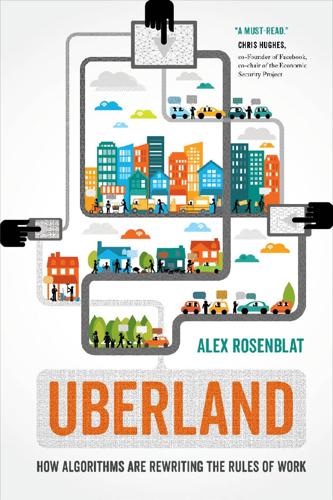
Uberland: How Algorithms Are Rewriting the Rules of Work
by
Alex Rosenblat
Published 22 Oct 2018
Contrary to the company’s marketing, he isn’t “sharing” his spare asset and time with his riders: he is working hard to make ends meet. Uber claims drivers can earn upward of ninety thousand dollars per year doing ridehail work,3 but Freddy’s situation is a far cry from the picture of middle-class comfort promoted by the company. Uber rose to prominence as an employer by providing the masses with low-barrier-to-entry employment opportunities—with little more than a car and a background check, anybody could be on the road driving as much or as little as he or she wanted. At its core, Uber does one thing really well: it organizes work for drivers and rides for passengers through a smartphone app. When it comes to marketing, Uber paints itself as the whole package for would-be drivers, pulling off a clever doublespeak.
…
They then take their Uber-eligible vehicles to local mechanics to be certified as in good working order and upload their driver’s license numbers and auto insurance policy numbers to their accounts on Uber’s website or through the app (drivers I speak with rarely obtain commercial insurance, unless they are obliged to by regulatory requirements). Then, after consenting to a background check that takes under a week in many places, they’re ready to go. In other words, barriers to entry are very few. Part of what makes platforms so valuable is their ability to provide jobs to anyone and everyone in a decentralized workforce. As economic sociologist Vili Lehdonvirta observes: Piece rates are a substitute for more direct managerial control. Employers who pay hourly rates are pickier about whom they accept into their ranks in the first place, whereas one of the strengths of these platforms is that essentially anyone can sign up and start working right away with minimal hurdles.
…
In the gig economy model, a top-down hierarchical employer is remade into a platform in the image of open-source software culture, where anyone can contribute or share their code to achieve a superior digital product or service.54 And it’s this very act of sharing that suggests a disruption of role identity, because the line between producers and consumers blurs—some scholars use the term produsers for this combined identity.55 By obscuring the incentives of the market economy, the sharing economy painted a portrait of capitalism that felt community-oriented. As a job with a low barrier to entry, driving for Uber is cast in this image, as an “open-source” opportunity for drivers to contribute their labor and earn “extra” money. Technology often blurs the line between paid and unpaid labor, in much the same way that women’s contributions to work are undervalued. The societal failure to acknowledge some forms of women’s work, such as emotional care, as work is premised on the assumption that they like doing it or that it’s easy for them and therefore not work.

Ours to Hack and to Own: The Rise of Platform Cooperativism, a New Vision for the Future of Work and a Fairer Internet
by
Trebor Scholz
and
Nathan Schneider
Published 14 Aug 2017
Once the technology associated with “e-hail” and logistics is commoditized, which it will be, the economic fundamentals for the emergence of a platform cooperative would appear to be in place. More important, the network effects associated with ridesharing are geographically concentrated. Thus, unlike platforms such as eBay and Facebook, the barriers to entry posed by an incumbent platform may not be onerous. True, passengers gravitate toward the platforms with more drivers, and vice versa. However, these effects are localized. Most potential passengers in New York care little about the scale of a platform in Los Angeles or Minneapolis. They want the service that has the densest supply in their own city.
…
As a consequence, instigating the emergence of a platform cooperative doesn’t involve getting millions or billions of users to switch simultaneously. Rather, it might be seeded simply by signing up a few thousand providers. One such effort under way as of the writing of this essay is Swift in New York, a nascent ridesharing effort that hopes to organize as a driver cooperative. Despite these relatively low barriers to entry, a collective that hopes to build a scalable platform business with a cooperative ownership model faces other challenges. During a panel that Juliet Schor and I participated in at the Platform Cooperativism conference, Schor highlighted an issue her research had uncovered about sharing economy cooperatives: that their value system was often better articulated than their value proposition.
…
I am now able to bring my whole self to my work and have a life that is not divided between work and play. My drive and passion come from doing what I love—building community, and enabling people to have the technical tools they need to maintain and control their autonomy. It is rapidly becoming easier for someone with a great idea to build a company online without much of a barrier to entry. Websites can be set up for free or minimal cost, and cloud services with online website building tools are plentiful. But sophisticated, cutting-edge platforms still require skilled people to build them. A new generation of platform co-ops will need developers who understand both technology and cooperative enterprise.

A Time to Build: From Family and Community to Congress and the Campus, How Recommitting to Our Institutions Can Revive the American Dream
by
Yuval Levin
Published 21 Jan 2020
In this regard, today’s media crisis looks more like some challenges that American journalism has confronted at times of fragmentation and fracture, rather than in the peculiar era of consolidation in the middle of the twentieth century. Perhaps above all, the media landscape now resembles the circumstances of journalism in the early republic—when barriers to entry were relatively low and the media environment was teeming with mostly small voices. One telling artifact of that era is a brief essay published anonymously by Benjamin Franklin in 1789 called “An Account of the Supremest Court of Judicature in Pennsylvania, viz., The Court of the Press.” Like much of Franklin’s writing, this short essay is at least partially satirical.
…
Under the pressure of industrialization, the influence of progressive politics, and the emergence of genuinely mass media, the scale of American life increased dramatically and drove a consolidation of politics, economics, culture, and national identity. One result was the emergence of national newspapers—and later also radio and television—which gradually spurred the development of a standardized, formalized journalism very different from the sort Franklin had described.10 Barriers to entry, particularly barriers of cost and technological complexity, meant that journalism was no longer accessible to anyone who could write clearly or print pamphlets. It was instead the purview of large, organized corporate entities that insisted on some degree of formal structure. Journalism gradually became a profession—with some broadly accepted general standards, means of training new professionals (as journalism schools popped up throughout the country), and a strong ethic and straightforward set of common commitments.
…
At the same time, journalism, like some other key institutions, has gone through an intense process of deconsolidation. Traditional, formal journalistic institutions have grown fewer (and more concentrated), but nontraditional and informal sources of information have sprouted up everywhere—and have applied intense pressures on traditional journalism. As barriers to entry have fallen dramatically thanks to technology, and as public expectations have shifted, today’s journalistic landscape looks more and more like that of Franklin’s time, with its attendant strengths and weaknesses.12 The fact that the degree to which the public has lost faith in the media is on par with the loss of faith in other key institutions suggests there may be no way to counteract this trend without reversing a far larger set of social forces.

Computer: A History of the Information Machine
by
Martin Campbell-Kelly
and
Nathan Ensmenger
Published 29 Jul 2013
Many of these new lines were luxury goods with large margins; these were the real generators of profits. For the food industry itself, there were negative impacts of bar coding, much as the rise of supermarkets in the 1930s spelled an end to the owner-operated grocery store. For example, the barriers to entry into food manufacturing became greater. Not only were there the bureaucratic hurdles of UPC allocation to surmount, but penetrating the retail network of national chains now required at minimum an operation of substantial scale. Indeed, a curious development of the late twentieth century was the emergence of folksy specialty foods—apparently made by small-scale food preparers, but in fact mass-produced and sold by national chains.
…
Most overseas countries found it very difficult to compete with US firms until they established their own venture-funding organizations. Olsen’s aim was to go into the computer business and compete with the mainframe manufacturers. However, in the late 1950s this was not a realistic short-term goal. The barriers to entry into the mainframe business were rising. In order to enter the mainframe business, one needed three things, in addition to a central processing unit: peripherals (such as magnetic tape and disk drives), software (both applications and program development tools), and a sales force. It would cost several hundred million dollars to establish all these capabilities.
…
At that time it was very easy to set up as a personal-computer software entrepreneur: all one needed was a machine on which to develop the software and the kind of programming know-how possessed by any talented first-year computer science student, which many hobbyists had already picked up in their teenage years. The barriers to entry into personal-computer software were so low that literally thousands of firms were established—and their mortality rate was phenomenal. Up to 1976 there was only a handful of personal-computer software firms, mainly producing “system” software. The most popular products included Microsoft’s BASIC programming language and Digital Research’s CP/M operating system, which were each used in many different makes of computer.
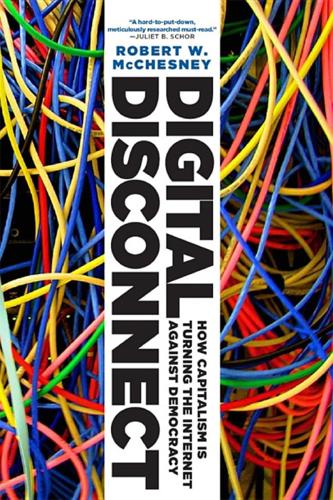
Digital Disconnect: How Capitalism Is Turning the Internet Against Democracy
by
Robert W. McChesney
Published 5 Mar 2013
Indeed, the price in an oligopolistic industry will tend to gravitate toward what it would be in a pure monopoly, so the contenders are fighting for slices of the largest possible revenue pie.39 At first blush, this is a pretty accurate picture of the commanding heights of the U.S. economy in the twentieth and twenty-first centuries. In few areas have the claims about the Internet been greater than that it would empower consumers, break down barriers to entry, and create much greater market competition in traditional industries and online. Although some industries have been turned upside down, as a rule the digital era has seen a continued, arguably accelerating, rate of monopoly in the economy. One measure for this is demonstrated by industry concentration ratios, meaning the percentage of sales controlled by a small number of firms.40 Chart 5 shows that both the number and percent of manufacturing industries (for example, automobile production) that have a four-firm concentration ratio of 50 percent or more have risen dramatically since the mid-1980s, the digital era.
…
As Jaron Lanier put it, “the old-media empires were put on a path of predictable obsolescence.”137 The Internet appeared to pose this threat for three reasons. First, it opened the possibility of making it much easier for new players to enter media markets. As the Internet became the dominant platform, prospective entrants would no longer need major capital to get a broadcasting license or buy an existing film studio. With barriers to entry eliminated, the digital era might make it possible for another giant with an enormous bankroll, say a Microsoft or an AT&T, to successfully use the Internet as a platform to get in the media game, whereas it would have been unthinkable otherwise. Like the telephone giants, the media conglomerates and their lobbyists argued that ownership regulations were no longer relevant to their industries and should be abolished.
…
“I suppose I shouldn’t say this,” Bill Gates acknowledged back in 1996 when discussing the importance of setting industry standards favorable to Microsoft, “but in some ways it leads, in a product category, to a natural monopoly.”17 Microsoft has been able to exploit the dependence of a wide range of software applications on its underlying operating system in order to lock in its system seemingly permanently, allowing it to enjoy long-term monopoly-pricing power. Any competitor seeking to introduce a new, rival operating system, faces an enormous “applications barrier to entry.”18 Some of this goes on beneath the surface. Consider the H.264 codec, owned by the MPEG LA group, with licenses held by Microsoft, Apple, and others. It is quickly becoming the standard for online video, currently getting 66 percent of the market. With a bottleneck on Internet traffic like this, the owners of H.264 can create many “billable moments.”
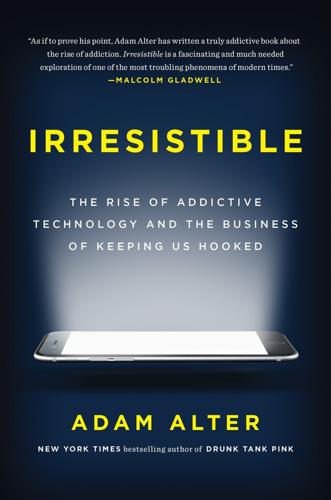
Irresistible: The Rise of Addictive Technology and the Business of Keeping Us Hooked
by
Adam L. Alter
Published 15 Feb 2017
I told him I didn’t. “See how long it takes you to figure out how to play the game.” It took me three seconds. All your avatar has to do is cross the road without getting run over. He moves with simple taps of the screen. This “simple and stupid” game, like Super Mario Bros., is designed so there are no barriers to entry. The minute you see the screen, you know as much as you need to know to start making progress. “This reminds me of another game . . .” I told Goldhill before he interrupted me: “It reminds everyone of some other game they’ve played.” Crossy Road borrows elements from so many games that, if you’ve played just one or two of them, you’ve effectively played them all.
…
They work on the same principle. “If you watch a good game show that you’ve never seen before, within a couple of minutes of tuning in the rules will either be clear to you, or they’ll actually be explained to you,” Goldhill said. “Part of the design of a good game show is that there are no barriers to entry. And there’s a worldwide vernacular. No matter where you are, if you tune in to a game show, they share the same set of basic elements. If you look on YouTube, you’ll see fifteen-, sixteen-, seventeen-year-olds designing their own game shows, and they use that same vernacular.” I thought back to the games that had recently occupied my time and attention.
…
See also infants attention spans of, 39–40 boys, and time spent gaming, 42–43 communication skills, effect of online/cell phone interactions in development of, 40–41, 242–43 DANVA2 test scores before and after week of social interaction, 238–40 digital amnesia and, 242 first experiences of digital world, 39–40 hardship inoculation and, 241–42 learning by, 174–75 parenting principles, Steiner-Adair’s formulation of, 250–51 recommendations for media consumption by young, 245–47 reSTART program for, 248–50 screen versus face-to-face playtime, 237 teenage girls’ interaction with social media, 41–42 China, 251–54 Christison, Robert, 32, 35 chronic sleep deprivation, 68–70 circumstance, and addiction, 4 C.K., Louis, 243 cliffhangers, 191–213 binge-watching and, 208–12, 287–89, 290–91 disarming technique for, 287–89, 291 micro-, 205–8 in songs, 194–96 in The Sopranos, 201–3 unresolved real-life crime documentaries and, 196–201 Zeigarnik Effect and, 193–94 Coca-Cola, 38 cocaine, 29, 32–39, 71 Christison’s discovery of effects of, 32 Freud’s research on and addiction to, 33–36 Pemberton’s French Wine Coca (Coca-Cola) and, 37–38 coca plant, 31, 32 Cognitive Behavioral Therapy for Internet Addiction (CBT-IA), 256–57 cognitive decline, effect of multitasking games on, 312–13 Cohen, Gaby, 115–16 color coding, 157–58 comments, 217 communication skills, 40–41, 242–43 The Company of Others, 269 compulsion, 20–21 compulsive shopping, 205–8 Connolly, Billy, 83–84 Contrera, Jessica, 41–42 Cooper, Grahame, 230–32 cost-benefit calculations, 5 Cow Clicker, 313–14 creation requiring labor and effort, and addictive acts, 173–74 credit cards, 188 Crossy Road (game), 162–63 Csikszentmihalyi, Mihaly, 176 cue, of habits, 268 Cushman, John, 49–50 Dai, Xianchi, 266 Daimler, 277 DANVA2 (Diagnostic Analysis of Nonverbal Behavior), 238–40 Darling Darleen (blog), 206 Davies, Lynn, 99–100 DDB Stockholm, 293–95 Dement, William, 19 Demetricator, 285–86 Demos, Moira, 199 Denby, David, 241 dental hygiene for children, gamification of, 300 destructiveness, and addiction, 76–78 Diagnostic Analysis of Nonverbal Behavior (DANVA2), 238–40 Diagnostic and Statistical Manual of Mental Disorders (DSM), 80, 254–55 digital amnesia, 242 disarming technique, for cliffhangers, 287–89, 291 disguised losses, 133–34 distraction, 267–73 Dixon, Mike, 133–34 Doan, Andy, 230–31, 232, 244 Dollar Auction Game, 149–52 Donkey Kong (game), 148 “Don’t Stop Believin” (Journey), 202 dopamine, 71–72 Berridge’s rat experiments blocking production of, 85–88 Parkinson’s disease treatments, side effects of, 82–85 Dorbowski, Richard, 215 Dorshorst, Ryan, 214, 216 Dredge, Stuart, 142 Duhigg, Charles, 268 Dunning, Dave, 144–45 Durst, Robert, 199 Duval Guillaume Modem, 121–22 early adulthood, as highest risk period for addiction, 74–75 Earth, Wind & Fire, 194 ease, effect of replacing challenges with, 167–69 education, gamification of, 302–5 Edwards, Griffin, 161 email, 4, 23, 109–11 frequency of checking office, and disruptive effect of, 109–10 study preventing workers from accessing, findings of, 110–11 emotional amblyopia, 232 emotions, reading, 238–40 empathy, 40–41 empowering language, and habit formation, 272–73 endless loop, in songs, 194–95 endless runner games, 164 end of history illusion, 318 energy systems, 155–57 Entertainment Tonight, 196 Entertainment Weekly, 197 environment and circumstance, role in addiction of, 4, 46–67 memory and, 57–60 rat experiments, of Olds and Milner and, 52–57 Routtenberg’s monkey experiments and, 57–60 Vaisberg’s World of Warcraft addiction and, 60–66 Vietnam War veterans’ heroin addiction and, 46–52, 59–60 escalation, 167–90 creating something, sense of, 173–74 ease, effect of replacing challenges with, 167–69 flow and, 176–79 hardship and, 168–69 ludic loops and, 177–79 near wins and, 181–83 stopping rules, disruption of, 184–90 in Super Hexagon, 179–81 in Tetris, 170–73, 175–76 zone of proximal development and, 174–76 ether precipitation, 46–47 euphoria, 55 “Evil” (Wonder), 195 exercise addiction, 18–19, 112–16, 185–86, 306 extrinsic rewards, 261 Facebook, 3, 4, 5, 127–28, 216, 217, 318, 319 FaceMash, 224 Facetune, 220 FarmVille (game), 157–58, 164–65, 316 Federal Trade Commission (FTC), 313 feedback, 121–46 button pushing and, 121–25 juice and, 137–39 likes and, 127–29 losses disguised as wins and, 133–34 mapping and, 139 microfeedback, 136–37 motivated perception and, 144–45 near wins and, 145–46 slot machine gambling and, 130–36 unpredictability and, 126–27 variable reinforcement and, 143 video games and, 136–43, 158–59 virtual reality and, 139–43 Ferriss, Tim, 279–80 Feshbach, Seymour, 264 Festinger, Leon, 275–76 Fishbach, Ayelet, 266 Fisher, Helen, 75–76 Fiske, Susan, 305–6 Fitbit, 113–14, 185, 286, 295 fitness trackers, 113–14 fitness watches, 2–3 Fitocracy, 299 Flappy Bird, 42–43 flash-sale websites, 205–7 Fliess, Wilhelm, 34 flow, 176–79 Flow (Csikszentmihalyi), 176 Foddy, Bennett, 16, 136–37, 138–39, 189, 289–90 “For the Love of Money” (Polk), 118 Frances, Allen, 23 FreeRice.com, 296–97 French Wine Coca, 37 Freud, Sigmund, 33–36, 264, 265, 275 friendship formation, 275–77 Fritz, Michelle, 116 The Fun Theory (ad campaign), 293–95 gambling, 129–36, 144–46 Game Boy, 171 Game Show Network, 163 game shows, TV barriers to entry, lack of, 163 Larson’s game show success and addiction to goal-setting, 100–106 gamification, 293–316 cognitive decline, effect of multitasking games on, 312–13 criticisms of, 312–15 DDB Stockholm’s Fun Theory ad campaign and, 293–95 of dental hygiene for children, 300 of education, 302–5 of fitness, 299 health apps and, 300–302 medical benefits of, 309–12 points, badges and leaderboard elements of, 298, 299 of SAT vocabulary learning, 296–97 therapeutic properties of, 309–12 variety and, 299 of workplace, 305–9 Garfors, Gunnar, 112 Gillan, Claire, 71 Gilt, 205–7 Glu Games, 159 Gneezy, Uri, 315 goal-setting, 5–6, 93–120 Beamon’s long-jump record and, 98–100 as biological imperative, 107 email and, 109–11 exercise addiction and, 112–16 Internet and, 111–12 Larson’s game show success and addiction to, 100–106 marathon runners and, 95–97 Parkinson’s patients and, 93–95 rise in, since 1950s, 107–9 social comparison and, 118–19 streaks and, 115–16, 117 systems approach as alternative to, 117–18 Godfather, The (movie), 202 Gold, Lesley, 2 Golden Rule, 268, 269–70 Goldhill, David, 131, 143, 145, 162–63, 169 Goldstein, Dan, 209 Google, 298 Google+, 128 Google Books, 167 Google Cardboard, 141–42 Google Glass addiction, 44–45 Google Trends, 210–11, 212 Graham, Ruth, 200 Griffiths, Mark, 24–26 Groceryships, 119 Grosser, Benjamin, 285–86 Guinness Book of World Records, 111, 171–72 Guinness World Records, 112 habits, 268–73 elements of, 268–69 empowering versus disempowering language and formation of, 272–73 forming new, difficulty of, 271–72 replacing bad routines with good, 268–71 underlying motives, tailoring routine override to, 270–71 Hagtvedt, Henrik, 272 Haier, Richard, 172 HappyBidDay.com, 152 hardship, 168–69 hardship inoculation, 241–42 harmonious passions, 21, 22 Harris, Tristan, 3 Harvest Moon (game), 164 HBO, 199 health apps, gamification of, 300–302 Health Lab, 302 Heath, Robert, 55 Heldergroen, 277 heroin brain patterns and, 71 harm score for, 48–49 military crackdown on use of, 49–50 Robins’ study on relapse rates of returning vets, 51–52 Vietnam War veterans and addiction to, 46–52, 59–60 Hilton Garden Inn, 308 Hipstamatic, 214–17 Hochmuth, Greg, 3 Hodson, Gordon, 265 Holesh, Kevin, 13–15 Hollywood (game), 158–59, 165, 316 Holmes, Emily, 311 Hong, James, 221–24, 226 hooks Dollar Auction Game and, 149–52 penny auction websites and, 152–55 Hot or Not (website), 221–26 How to Fail at Almost Everything and Still Win Big (Adams), 117 Hsee, Chris, 186–87 Huffington, Arianna, 68–69 Hunter, Dan, 298 incomplete tasks, tension arising from, 193–94 infants active engagement versus passive viewing, 247 attention spans of, 39–40 qualities of healthy screen time for, 246–47 recommendations for media consumption by, 245–47 response to screen time of, 244–45 transfer of learning and, 246–47 visual response to contour and motion of, 19–20 infants, visual attention in, 19–20 Instagram, 3, 4, 5, 9, 122, 128, 129, 216–17, 218, 318, 319 instinctive survival behaviors, 73–74 Internet addiction in China, 251–54 DSM recognition of, 254–55 goal-setting and, 111–12 motivational interviewing and, 258–62 scope of, 26 test for, 26–27 treatment approaches, 248–62 Internet Addiction Diagnostic Questionnaire (IADQ), 255–56 Internet Addiction Test, 256 intrinsic rewards, 261 iPad, 1, 4, 165, 241, 244–45, 256 iPhone, 165, 241, 256 iPhone apps, 214–17 Isaacson, Walter, 2 “Is the world’s best-selling P.C. game ever still worth playing today?”

The Truth Machine: The Blockchain and the Future of Everything
by
Paul Vigna
and
Michael J. Casey
Published 27 Feb 2018
These include the domain name system (DNS) managers and hosting service providers, companies whose servers occupy URLs—those specially assigned areas of the World Wide Web around which we navigate our Internet surfing—and host the files that make up the clients’ Web sites that point to those Internet addresses. Anyone who has set up a Web site has dealt with such outfits. All of them charge fees. The more files and pages that need hosting, the more they charge. All these solutions worked for those who could afford them. But, inevitably, the added transaction costs translated into barriers to entry that helped the largest incumbents ward off competitors, limiting innovation and denying billions of financially excluded people the opportunity to fully exploit the Internet’s many possibilities for advancement. It’s how we’ve ended up with Internet monopolies. Those with first-mover advantages have not only enjoyed the benefits of network effects; they’ve been indirectly protected by the hefty transaction costs that competitors face in trying to grow to the same scale.
…
No painful negotiations with venture capitalists over dilution and control of the board. No wining and dining of Wall Street investment banks to get them to put their clients on the order book. No wait for SEC approval. Just go straight to the general public: here are my tokens; they’re cool, buy them. It was a simple, low-cost formula and it lowered the barrier to entry for some brilliant innovators to bring potentially world-changing ideas to market. Unfortunately, it was also a magnet for scammers. The example that shone a light on what was possible with the ERC20 was a notorious one: The DAO, which, as we discussed in the previous chapter, fell prey to a massive token theft in 2016.
…
If they weren’t part of the same network, the payment couldn’t go through as the respective software would not be interoperable. Other car manufacturers might not want to use a permissioned verification system for which, say, GM, or Ford, is the gatekeeper. And if they instead formed a consortium of carmakers to run the system, would their collective control over this all-important data network create a barrier to entry for newer, startup carmakers? Would it effectively become a competition-killing oligopoly? A truly decentralized, permissionless system could be a way around this “walled-garden” problem of siloed technology. A decentralized, permissionless system means any device can participate in the network yet still give everyone confidence in the integrity of the data, of the devices, and of the value being transacted.
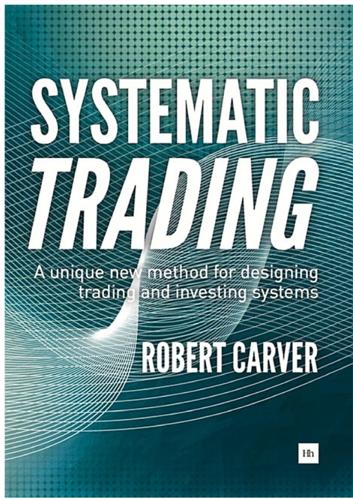
Systematic Trading: A Unique New Method for Designing Trading and Investing Systems
by
Robert Carver
Published 13 Sep 2015
Liquidity providers behave as market markets, trying to capture the spread that less patient traders don’t mind paying. This is definitely negative skew territory as unforeseen price spikes can quickly wipe out large quantities of patiently accumulated small gains. Barriers to entry, returns to effort and cost Some trading rules have barriers to entry in the form of costs or investments that need to be made to realise profits from them. High frequency strategies require renting expensive servers located physically within exchange buildings, as well as developing specialised software. The returns of such systems need to be high enough to compensate for the investment needed, as well as their much higher costs.
…
Typical raw Sharpe ratios could be very high due to the number of trades made, but costs will chew up a big chunk of profits. Special execution algorithms are needed to reduce costs below normal levels. Back-testing requires sophisticated models of the evolution of the order book. There are higher barriers to entry than at slower speeds; co-located servers and fully automated software is needed. Also faster strategies are likely to have limited capacity. Capital requirements are small as positions are not held overnight, but there is always the danger of extreme losses due to markets gapping, or systems going rogue.
…
Micro data is about a specific asset, for example the yield of a particular bond or the PE ratio of a company. Macro data such as inflation and GDP growth covers entire economies. 43 Systematic Trading I have worked extensively with both fundamental and technical data. Technical systems are easier to build and run, but in another example of barriers to entry the additional effort required for including fundamental rules is usually rewarded with higher returns. The examples in this book are all technical, but only because they are simpler to explain. Portfolio size There are successful traders who only ever trade one futures contract. At the other extreme large equity index funds could have thousands of holdings.
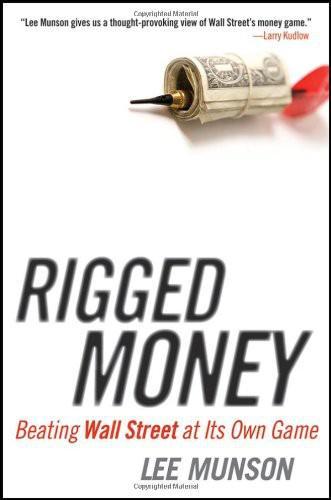
Rigged Money: Beating Wall Street at Its Own Game
by
Lee Munson
Published 6 Dec 2011
First of all, this was the first joint-stock company, meaning regular people like middle class merchants were able to invest in a public company. On September 1 the public subscription period was over. Five hundred thirty-eight subscribers, including craftsmen and small entrepreneurs, were given shares that were freely transferable.1 Before this there was a barrier to entry for investments. The idea of selling a piece of a company in order to lower the risk to any one person was not new, but allowing anybody with the money to buy shares was ground breaking. The Amsterdam Stock Exchange was established the same year just so people could trade shares of this new corporation.
…
Put it this way. If more and more people get in the game, there is less for each person to take. The pie can only get cut up so many times. What is worse, the pie may not get bigger as more people take a slice. Nobody knows the future of investing, but as long as electronic trading lowers the barrier to entry, an endless stream of better players will look to take a piece of the action. At least the price of admission to the Magic Kingdom has only increased about 15 times since 1970, not the 60 times increase of the company’s stock. The S&P 500’s 12 times return would have left you a few bucks short of a ticket.
…
Morgan, UBS, Credit Suisse, Morgan Stanley, Cushing, and ALPS all think they can play everyone for a fool and fix the price to trade a MLP index. The Virus Goes Airborne From the humble beginnings of a few major indexes, the ETF industry has been busy providing all things to all people. At first I was excited about the barriers to entry being torn down. Years ago I wanted to make a bet on Malaysia. Due to regulatory issues it was hard to own stocks in that country, but a new ETF that tracked the Malaysian market made exposure easy. From the first U.S. ETF in 1993, then a handful throughout most of the 1990s, the turn of this century saw the explosion.

The Only Game in Town: Central Banks, Instability, and Avoiding the Next Collapse
by
Mohamed A. El-Erian
Published 26 Jan 2016
In the financial world, as a New York Times article put it, “they are focused on transforming the economics of underwriting and the experience of consumer borrowing—and hope to make more loans available at lower cost for millions of Americans.”8 Together with the expansion of P2P (peer-to-peer) interactions and crowdfunding, these approaches offer the possibility of improving the provision of financial services (especially to badly served segments of the population), lowering barriers to entry, reducing old-style overheads, and broadening sources and uses of loanable funds.9 But it is also an area where regulation is lagging and modes of operation are yet to be properly tested in a general economic downturn; it is also an approach whose collective rigor has yet to be subjected to a full market cycle.
…
In the process, finance will be slowly following a path already trodden by technology and, more recently and even less deterministically, by media. And again the tendency will be to transform over time a normal bell-shaped distribution of expected outcomes into more of a bimodal one. The upside of this financial democratization phenomenon is considerable, and it is particularly powerful because it lowers barriers to entry and better-tailored solutions. It widens the sources and uses of loanable funds, reduces overheads and other intermediation costs, and improves the financial terms offered to end users. The influx of greater cognitive diversity makes the industry more dynamic, including by encouraging providers to go beyond their traditional client acquisition and product focus to also encompass more holistic customer-centered solutions.
…
There are also downsides. Some innovation-driven activities resemble the Wild West. Most worrisomely, badly regulated and abused P2P platforms can end up facilitating the financing of illicit activities—from drugs to terrorism. Like many major innovations in history that significantly lowered the barriers to entry, the natural inclination of humans is to initially overproduce and overconsume the now more easily available activity. With time, this converges to a more stable equilibrium—but often only after a process involving quite a few highs and lows, along with a series of improbables and unthinkables.

Cogs and Monsters: What Economics Is, and What It Should Be
by
Diane Coyle
Published 11 Oct 2021
This envelopment strategy, very common among big platforms, means that in trying to understand competition, you not only need to think about one market but also all the other ones that the platform could get into. If a dominant company can dive into anything it thinks looks promising, this is effectively raising barriers to entry for other companies in these other markets. Another striking feature of digital platforms is the data barrier to entry, the vast troves of data big platforms acquire and store about their users. These give rise to a self-reinforcing process, sometimes called the data flywheel or the data loop. If you are a big company providing a great service, you win a lot of customers.
…
Daniel McFadden was co-recipient of the 2000 Nobel memorial prize for his development of econometric methods for predicting passenger demand, as applied in a now-classic example to San Francisco’s BART authority (McFadden 1974). Economists have developed road pricing mechanisms and congestion charges. In many places, before the days of ride-sharing services, there were shortages of taxis, sustained by barriers to entry in the form of licences. A taxi licence or medallion was a valuable piece of property, and incumbents ardently resisted the issue of new ones no matter how acute the taxi shortage. This made the regulation of fares essential: otherwise taxi owners and drivers could extract large monopoly rents from their customers.
…
The European Commission has been particularly active in pursuing some of the cases, and even the previously laggardly American antitrust authorities and politicians are now getting interested, particularly since the inauguration of President Biden. A number of policy reports (Furman et al. 2019; Crémer, de Montjoye, and Schweitzer 2019; Scott-Morton et al. 2019) have noted that competition analysis needs to reflect the dynamics of network effects in digital markets, and to address the barrier to entry created by the data feedback loop: more data means both better information about customers and more ad revenue, so services can be improved, which brings more customers and more data. Competition authorities such as the UK’s Competition and Markets Authority (CMA) or Germany’s Bundeskartellamt have begun to adapt their approach to digital markets, for example, becoming more sceptical about proposed mergers.

Open Standards and the Digital Age: History, Ideology, and Networks (Cambridge Studies in the Emergence of Global Enterprise)
by
Andrew L. Russell
Published 27 Apr 2014
The ASA’s clever consensus-building process – a superior alternative to the courts and to commissions, in the eyes of its many advocates – created the basis of widely adopted rules for creating, maintaining, and disputing standards. In other words, the ASA established standards for setting standards.46 A standards process that calls itself open will usually adopt clear rules for consensus and due process, but in recent years standards committees have democratized participation in deliberations by lowering barriers to entry or eliminating membership fees or requirements altogether. The most prominent example of radical openness is the Internet Engineering Task Force, a group that conducts much of its work on public email lists that anyone can join. In practice, discussions tend to focus on specialized topics that require advanced knowledge of computer networking to understand, thus having the effect of excluding substantive contributions from a vast majority of the general public.
…
In sum, it is possible to distill an ideology of open standards from the spectrum of open standards definitions that presently exist. First, open standards strive to honor the ideals of participatory democracy, including commitments to fairness, transparency, due process, and rights of appeal. Second, open standards embrace the ideal of a vibrant market economy that has negligible barriers to entry and liberal terms for using standardized technologies. Third, proponents of open standards share the implicit conviction – which, in some cases, manifests itself as a religious zeal – that their work is just and that the forces of technological and social progress are on their side.47 They share a common foe – namely, anyone who advocates closed or centralized control over the production and use of standards.
…
The emergence of the “voluntary consensus” model of committee standardization, significant as it was, begs a related question: How did monopoly firms develop standards, and how did their standardization efforts fit within the collaborative, consensus-based model developed in the late nineteenth and early twentieth centuries within trade associations and engineering societies? Conventional answers to these questions point to the power of the managerial hierarchies that exist within monopoly firms. In the conventional view, monopolies create standards through a hierarchical, closed, and proprietary process as part of a broader strategy to erect barriers to entry and maintain centralized control over a given market or markets. They capture the network effects that standardization generates. Monopolies, in this view, act in a monolithic and almost petulant manner: their goal is to reduce variety, stifle outside innovations, lock in users, and preserve their control.2 From the late nineteenth century to the present day, critics of the monopoly Bell Telephone System have found ample evidence to support this conventional view of monopoly standardization.
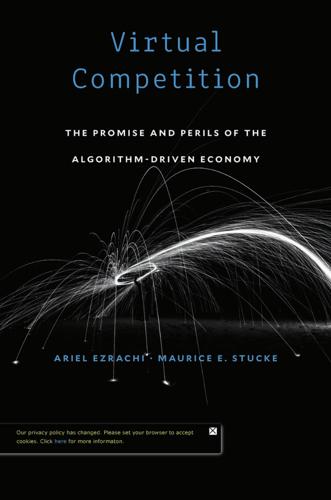
Virtual Competition
by
Ariel Ezrachi
and
Maurice E. Stucke
Published 30 Nov 2016
The belief is that companies cannot exercise market power for long when entry into markets would be timely (generally under two years), likely (profitable for the entrants), and sufficient (the entrants would attain sufficient business to prevent the exercise of market power by the incumbent firms).17 If a firm raises prices above, or degrades quality below, competitive levels, entrants and incumbents would seize the opportunity to profit and competition would be fully restored. Whether this is empirically true is another matter.18 But there is little dispute that market power can be sustained in markets with significant barriers to entry and expansion, and that “entry analysis constitutes an important element of the overall competitive assessment.”19 Thus, as entry barriers significantly decrease, so too should concerns about likely anticompetitive effects. In the online world, one doesn’t need brick-and-mortar retail outlets to compete.
…
The European Commission recognized in AKZO how discrimination “between similarly-placed Economic and Social Perspectives • • • • 119 customers is expressly prohibited . . . when it places certain firms at a competitive disadvantage.” The anticompetitive effect of AKZO’s differential pricing “involved not so much direct injury to customers but rather a serious impact on the structure of competition at the level of supply by reason of its exclusionary effect.”10 Increase barriers to entry or expansion, by making entry or expansion difficult or excessively costly. The U.K. Competition and Markets Authority, for example, noted that “where a fi rm uses consumer data to separate different groups of customers and offers a different price to each group,” small or new firms “would not have a substantial fixed base of existing customers, and so may be unable to compete as successfully to target customers through offering them lower prices.”11 Deprive smaller rivals or new entrants of attaining sales or distribution sufficient to achieve efficient scale, thereby raising the smaller companies’ costs and thwarting their competitiveness.
…
Many indicated lack of belief as to the ease with which their actions may be affected by simple “tricks of the trade.” As companies’ data collection and analytics improve, so too will their ability to discriminate. Targeted pricing may, in particular, be sustainable where a market is stable and exhibits barriers to entry or expansion, limited outside options, heterogeneous or branded goods, imperfect information flows, or the ability to distort or inhibit information exchange. It may also be sustained in markets that attract loyal customers or where companies develop and customize distinguishable products for par ticu lar purchasers.57 Even if companies can discriminate, this does not necessarily mean that they will.
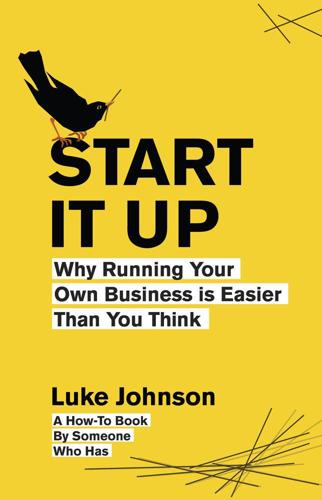
Start It Up: Why Running Your Own Business Is Easier Than You Think
by
Luke Johnson
Published 31 Aug 2011
In the brothers’ fabulous formula, Kroc saw something that even the brothers themselves didn’t see, and he duly developed and franchised the concept elsewhere. A few years later he bought the brothers out for $2.7 million. Before long his purchase was worth billions – built on their brainchild and his execution. Often it is necessary to buy an operation to overcome regulatory barriers to entry: perhaps planning, licences or suchlike. To develop a mine or quarry you will probably have to agree to a lease and rights to extract minerals with a landowner. When I entered the dentistry field in 1996, we had to buy a dental body corporate, which at the time was the only legal way for a non-dentist to trade as a dental practice in the UK.
…
The effective private investor focuses on a few sound businesses, running winners and dropping losers. Have they found a solid niche? It’s unusual to find big new British companies growing rapidly. I am much more likely to identify opportunities with vast upside among small, specialist companies. Such businesses should possess decent barriers to entry, be it a brand, patent, contracts, franchise or other proprietary situation. Ideally the company should be unique, since it must compete against large competitors who will be better financed. In the real world such companies should have products or services that are evolutionary rather than revolutionary, since markets can take years to accept radical changes.
…
But none of them have been in business during a recession. This is the service economy era. Younger entrepreneurs I meet are running marketing agencies, web-design firms, recruitment companies, finance businesses, software houses, telecom firms. These operations required limited capital to get going and faced few barriers to entry, compared to periods when heavy industry ruled. The Internet has helped unleash ambition and enterprise in an unprecedented way. But I worry that a lot of these companies are fragile constructs, not built to weather severe conditions. For founders who have only ever known expansion, challenging times are a harsh wake-up call.

Investment Banking: Valuation, Leveraged Buyouts, and Mergers and Acquisitions
by
Joshua Rosenbaum
,
Joshua Pearl
and
Joseph R. Perella
Published 18 May 2009
Leading and Defensible Market Positions Leading and defensible market positions generally reflect entrenched customer relationships, brand name recognition, superior products and services, a favorable cost structure, and scale advantages, among other attributes. These qualities create barriers to entry and increase the stability and predictability of a company’s cash flow. Accordingly, the sponsor spends a great deal of time during due diligence seeking assurance that the target’s market positions are secure (and can potentially be expanded). Depending on the sponsor’s familiarity with the sector, consultants may be hired to perform independent studies analyzing market share and barriers to entry. Growth Opportunities Sponsors seek companies with growth potential, both organically and through potential future bolt-on acquisitions.
…
This, in turn, increases their willingness to provide debt to the target. The target’s asset base is particularly important in the leveraged loan market, where the value of the assets helps dictate the amount of bank debt available (see “LBO Financing” sections for additional information). A strong asset base also tends to signify high barriers to entry because of the substantial capital investment required, which serves to deter new entrants in the target’s markets. At the same time, a company with little or no assets can still be an attractive LBO candidate provided it generates sufficient cash flow. Proven Management Team A proven management team serves to increase the attractiveness (and value) of an LBO candidate.
…
See Form 10-K antitrust arranger asset base asset based lending (ABL) facility asset sale gains on limitations on losses on term loan prepayment transaction attorneys auction . See also broad auction and targeted auction B back-end short form merger balance sheet in LBO analysis bank book bank debt bank lenders bank meeting bankruptcy Barra barriers to entry Base Case Base Rate basic shares outstanding basket benchmarking analysis comparable companies analysis precedent transactions analysis benchmark rate. See LIBOR and Base Rate beta (β) relevering unlevering bidders. See prospective buyers bidding strategy Bloomberg board approval board of directors bond investors book value assets equity bookrunners borrower borrowing base breakage costs breakeven pre-tax synergies breakup fee bridge loans bring-down provision broad auction advantages and disadvantages business disruption business profile buy-side advisory C CA.

Flash Boys: Not So Fast: An Insider's Perspective on High-Frequency Trading
by
Peter Kovac
Published 10 Dec 2014
For a few brief years, the barriers to entry in the industry were quite low (well, except for the last requirement). At every other time in history, it has been extremely difficult to break into the stock market. Aside from incredibly high trading costs, oligopolistic systems of bequeathed trading privileges made it almost impossible for new participants. If you were one of the lucky few who owned a “seat” at the NYSE, you could trade directly; if not, you had to pay some broker who did own a seat to trade for you. The advent of electronic trading a decade ago eliminated these barriers to entry and created a huge democratization of trading that undermined much of Wall Street’s traditional hold on the markets.
…
As he was plugging in network connections for electronic trading firms, I’m not surprised that he saw gauze wrapped around a co-location cage, or someone leaving Toys “R” Us signs up. There are at least two reasons folks tried to conceal their computer hardware from prying eyes: first, as mentioned earlier, the barriers to entry for electronic trading are ridiculously low and any advantage is significant; second, as demonstrated, guys like Ronan Ryan love to yak about the strange things they’ve seen, so new innovations don’t stay under wraps for long. Incidentally, paranoia has always been the norm everywhere on Wall Street.

Investing to Save the Planet: How Your Money Can Make a Difference
by
Alice Ross
Published 19 Nov 2020
Venture capitalists usually invest in companies at an earlier stage than other private equity investors. A start-up that is still experimenting with its technology, for example, would be more likely to ask venture capitalists to invest; private equity investors tend to get involved once it’s clear that the technology works and can be produced on a bigger scale. Like private equity funds, barriers to entry are high if you want to invest directly in a venture capital fund. But there are other options: some venture capital funds are listed on a stock market and offer shares to investors. Because venture capital funds are investing at an earlier stage of a company’s development, the returns are again usually higher, but the risk is higher too.
…
‘How can you possibly say it’s safe to a 25-year-old if it’s not giving a stable climate future?’ Invest in green bonds Another way to influence a company is through its bonds, and as we’ve seen, a lot of voices in the climate change space argue that this is an increasingly effective route. Retail investors don’t buy single company bonds themselves, as the barrier to entry is too high. That means they’re unlikely to be in a position to talk to company directors, as they might be by holding direct shares in a company. But they can indirectly show their support for companies by helping to finance green bonds, or transition bonds, through mutual bond funds. The first green bond was issued by the European Investment Bank in 2007, and while green bonds have mostly been issued by companies since then, European countries including France, Poland, Belgium and Ireland have also been getting in on the act, with green government bonds available to investors since 2016.
…
After peaking at $230 a share in July 2019, for example, the stock subsequently fell to below $100 by October that year, meaning that anyone who had bought in at the top of the market, when enthusiasm was at its highest, would have lost more than half their money in just three months. Short sellers – investors betting that shares will fall in value rather than rise – began to target Beyond Meat as a result. And analysts warned that alternative meat was a market where there were low barriers to entry, meaning that rivals to Beyond Meat, particularly bigger, more established food groups like Nestlé or Kellogg with more money to spend on research and development, could reduce its potential to dominate the market. THE CELL-BASED START-UP In a small room at a law firm in the City of London around 40 well-heeled people, mostly women, sit around at the end of a weekday.
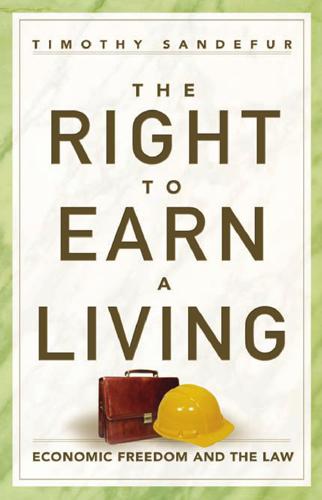
The Right to Earn a Living: Economic Freedom and the Law
by
Timothy Sandefur
Published 16 Aug 2010
But businesses that cannot or do not want to compete in this way will often try to exploit government authority for their own advantage by illegalizing their competition or by making competition inordinately expensive through the creation of what economists call “barriers to entry”: rules that bar new companies from entering the marketplace. The classic example of a barrier to entry is a tariff: a tax on imports that makes them more expensive than domestic products. Tariffs make it difficult for foreign companies to compete against domestic producers, needlessly increasing costs to consumers and allowing domestic manufacturers to produce lower-quality merchandise, safe from higher-quality imports.
…
Texas, 132, 282 Lawson, Gary, 281, 289 lead paint, public nuisance cases, 239, 244–45 legislative freedom from judicial restraint, 11, 12–13, 109 Index Letwin, William, 20, 285 liberty, 273 charters of power granted by, 10 definition of, 7 European charters of, 10 Jasay on presumption of, 130, 273–74 Locke’s presumption of, 273 licensing, occupational, 23, 99–100 barrier to entry, 63 florists, 133–34, 155 funeral homes and merchandise, 150–55 as protectionism, 145–59, 174 racial bias, 145–49 rational basis test and, 133–34, 148–49, 151 wildlfe control example, 156–59 Liebmann. see New State Ice Co. v. Liebmann limited liability privilege, 33 Lincoln, Abraham, 4, 40, 84 living Constitution theory, 77, 78 Lloyd, Henry Demarest, 45, 46, 49 Loan Association v.
…
Harris, 152–55, 159, 162, 188, 289 predatory pricing schemes, 179–82 price stabilization schemes. see agricultural adjustment programs privacy rights, 282 private agreements monopoly-like, 22–23 see also contracts; specific types of agreements privileges, corporate, 28, 29, 31, 33–35 Privileges and Immunities: A Reference Guide to the United States Constitution (David S. Bogen), 288 privileges and immunities clause, 4 Corfield and, 40–41 dormancy, 43–44 overruling, revival, reversal of, 287–92 right to make and enforce contracts, 288–89 Slaughterhouse and, 41–44 states’ rights and, 40–41 productive work, 3 professions barriers to entry, 63, 141 licensing, 23, 63, 99–100, 145–56 restricted entry, 22, 23 restricting or eliminating competition, 289–90 unskillfulness, 23 Progressive Era, xiv–xv, 44–50 eminent domain and, 32 misconceptions about, 47–49 regulation of business and economy, 13, 15, 123–27, 136–37 Supreme Court, 15, 279. see also specific justices 371 Index Progressivism agenda, ideology, and philosophy, 11, 12–13, 44–50, 279–81 assault on economic liberty, 11–16, 44–50, 279–81, 290, 292 changing American political philosophy, 44–50 criticism of and attack on Lochner, 107–10, 121 doctrines, 279–81 economic freedom argument, 123–27 free speech and, 191–92 majority over individuality, 11, 44–45, 109–10, 121, 279, 292. see also collective decisionmaking notion of individual freedom, 116–17 pro-government presumption, xiii–xiv, 11–13, 44–50 rational basis test and, 125–27 rights as permissions, 95, 109, 116–17, 279, 282–83 socialist nature of, 46, 123–27 visionary zeal to do gooders, 13, 46 Prohibition, legacy of, 183–84 property corporate, 34 regulation as secondary to, 272–73 property redistribution government redistributive programs, 283 Progressivism and, 13 property rights, xvii, 24–25 of criminals, 259 givings theory and, 272–74 land-use regulation, 160. see also zoning laws, protectionism and Locke on, 273 ownership as separate from right to use, 257 partial property rights in other people, 290–91 Rehnquist and Roberts Courts, 277–78 right of use of property or land, 257, 271 see also regulatory takings Property Rights from Magna Carta to the Fourteenth Amendment (Bernard Siegan), 283 Prosser, William, 76 protection of the public. see public interest or public welfare protection of unenumerated rights, 93–94 372 protectionism, xvi, 141–44, 173–74 agricultural adjustment programs, 164–70, 174 barriers to entry, 141 contracts clause and, 154 dormant commerce clause and, 153–54 franchise acts and, 170–73, 174 as legitimate state interest, 289 licensing laws, 145–59, 174 necessity of new business and certificates of necessity, 143–44 public choice theory and, 289–90 tariffs, 141 taxi industry example, xi–xiii, xiv, xv, xvi, 143–44, 286 zoning laws, 159–63, 174 public choice theory, 289–90 public contracts, 69–73 public interest or public welfare contracts clause, 75–81 Liebmann and, 142–43 Munn and Nebbia and, 101, 125–27. see also rational basis test Powers and, 152–55, 159, 162, 289 seizure of property. see eminent domain doctrine; regulatory takings public nuisance, xvii Blackmun on, 240 common or public right definition, 241 reasonable and lawful conduct, 243–45 reasonableness and unreasonableness, 240–41, 242 regulatory takings and, 258 tort law abuse, 239–45 public policy, manipulation of contracts and, 214, 215, 220–24 public use, synonymous with public benefit, 255 Pumpelly v.

The Price Is Wrong: Why Capitalism Won't Save the Planet
by
Brett Christophers
Published 12 Mar 2024
There are several countries in which legal provisions for retail choice have existed for some time, but competition remains trivial nonetheless.25 Generally speaking, the degree of actual competition depends upon the ease of industry entry for would-be retailers, and the propensity to switch suppliers among electricity consumers. Where there exist substantial barriers to entry, to switching or to both, the result tends to be inertia, with consumer engagement – or rather a lack thereof – proving a particular impediment. As Rahmatallah Poudineh has remarked, retail electricity markets have been premised on ‘the assumption that consumers will behave in the retail electricity market as they do in other offer markets’, whereas the reality is that consumers have been dissuaded from switching by factors such as ‘complexity of the retail market and electricity tariffs, transaction costs, uncertainty about the service quality of new suppliers, perceived barriers, and behavioural biases’.26 Meanwhile, progress internationally in opening up electricity generation to competition has been much more substantial.
…
If incumbents in profitable sectors have the capacity to resist increased competition, then above-average profitability can sometimes be maintained. But there exists precious little monopoly power in the business of developing and operating wind and solar farms, and almost no substantive entry barriers. ‘The barriers to entry in the [renewables] sector’, Nick Butler brusquely puts it, ‘are low – anyone can become an electricity producer.’18 This, of course, is to exaggerate: clearly, not just anyone can, in practice, or at least not at utility-scale production. But the basic observation is well taken. As we saw in Chapter 2, in parts of the world where aspiring new generators did once face significant entry obstacles, such as those relating, for instance, to ease of access to transmission and distribution networks, policymakers have widely removed such obstacles.
…
Expediting such an institutional shift is regarded by many experts as nothing less than a sine qua non of an effective and orderly energy transition. But here is the problem: the returns ordinarily associated with wind and solar power are much lower than those to which fossil fuel companies are accustomed in their core businesses. As Butler observed in 2019, ‘typical investments in oil and gas projects, where the barriers to entry are much higher [than in renewables], earn returns of 15 per cent or more’.54 The big new hydrocarbon projects still being initiated by the international oil majors in the 2020s, in the face of widespread public fury and dismay, promise significantly higher rates of return – and, of course, on a significantly greater absolute scale – than renewables ever do.
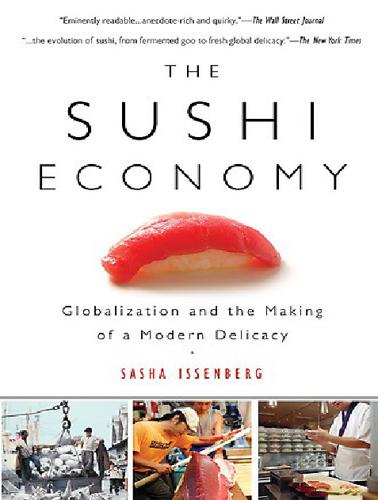
The Sushi Economy: Globalization and the Making of a Modern Delicacy
by
Sasha Issenberg
Published 1 Jan 2007
New ones are never produced, and so they are traded on a secondary market created only when a participant chooses to get out of the business and allow someone new to purchase the privilege of entry. The preponderance of family-owned firms like Matsui’s makes such a transfer rare, and presents a potential new tuna buyer with his greatest material barrier to entry. For someone like Matsui, it is the most significant asset his business owns, now worth in the range of $100,000. At the market’s Bubble peak, Tsukiji licenses appreciated as rapidly as Akasaka studio apartments and room-ser vice orange juice at the Hotel Okura. At one point, a license to buy tuna sold for nearly $2 million.
…
In a city on the frontier of the American economy, Mutual Trading’s upgrade of its equipment—adding largescale freezer and refrigeration facilities—would not have attracted much notice, but it presaged a generation of changing American tastes. The pioneers of the pickle trade had acknowledged that the future of Japanese food would not be found in cans and bottles. For sushi, American appetites posed high barriers to entry that nonthreatening ingredients and familiarly hued waitstaff alone could not surmount. While foreign flavors have long seeped into American foodways, sushi had unique challenges. Early Chinese restaurants were true to the motherland’s cuisine, both in terms of recipes and the style of dining.
…
I looked at the captain, dropped the fish right down and said, ‘Take your $24.’ The guy hadn’t even looked at the fish.” Rainbow had to break the strong ties dealers like Bob Kliss and Mark Godfried had built over the years with their fishermen. To the dozens of companies like Rainbow—as they would to anyone entering the market—those bonds stand as considerable barriers to entry. “In this business, you either get a shot or you don’t. If they don’t come by your company to give you a chance to bid on their fish, you’re not in the game,” explains Danny Bubb, a Long Islander who came to Gloucester in 1999 and immediately stood out among the city’s old tuna hands, thanks to his rich tan, shaved head, and the giant tuna tattooed on his bicep.
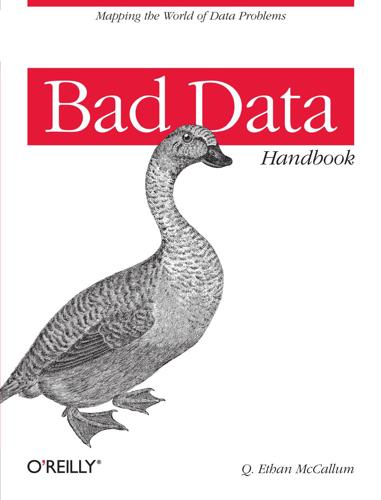
Bad Data Handbook
by
Q. Ethan McCallum
Published 14 Nov 2012
Simplicity and ubiquity are virtues that are very hard to find in technology products. There is simply less bureaucracy to deal with when you use files. Files Work with Everything Just about everything will (sort of) know how to process your data. Utilities will need coaching to understand how to extract structure from your files. This is generally not a significant barrier to entry, though. If you stick with a few conventions, such as using common and consistent delimiters, then you will be fine. Compare this to a traditional database system, for which you will often need a specific adapter, which may in turn have its own API. If you’re using an abstraction layer, such as an object-relational mapper (ORM), then you need to understand its unique syntax.
…
Many such tools are heavily tested (having been run billions of times over the years), reliable, and are generally implemented in C for performance. grep is one of the fastest ways to hunt for things. Remote replication is only an rsync away. A word count for a file takes two characters: wc. A version control system such as Subversion or Git will help you maintain a history of your changes over time. There’s No Install Tax Working with files has a very low barrier to entry. You can eliminate a lot of friction by not needing to install client libraries, compile drivers, or worry about a schema. Files certainly aren’t ideal for every situation. They’re best suited for cases that are read-heavy, require few modifications, and incur minimal cost to translate the data into a typed representation.
…
We, as end users, have been able to publicly broadcast our thoughts from an IP address for nearly 17 years now (since the broader network widely came online). It has been technically possible to set up an HTTP server, routable via public DNS, and publish content to it for public consumption for a long time. Over the years, that process has radically shifted, however, and barriers to entry have changed. 1995: Very hard and expensive. Purchase a server (several thousand dollars), an operating system (hundreds of dollars), and connect it to the network via a hosting provider (several thousands of dollars per month). Purchase an HTTP server (hundreds of dollars). Figure out how to write/publish HTML.
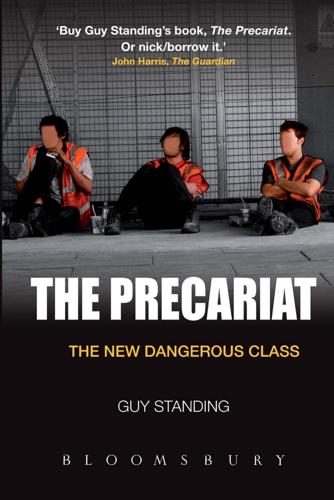
The Precariat: The New Dangerous Class
by
Guy Standing
Published 27 Feb 2011
The attack on the public sector is part of the post-2008 adjustment across all industrialised countries. In Greece, under a centre-right government, 75,000 civil servants were added to the already huge public sector between 2004 and 2009. Once the crunch came in 2010, the public salariat was slashed, feeding the Greek precariat. The government also announced it would remove barriers to entry to some professions, lowering their wages to reduce public spending. In Italy, pressure on the civil service was also growing. In October 2009, 40,000 police officers marched through Rome to demand better pay and new police cars. Because of a freeze on hiring, the average age of Italian policemen had risen to 45.
…
The modern legal treatment stems from the response to the mass displacement before and during the Second World War, which led to the 1951 UN Convention Relating to the Status of Refugees. The problem was regarded as one of short-run adjustment as people were helped back to their countries or enabled to resettle elsewhere. Now, increasing numbers seeking to escape from degradation, oppression and conflict are running up against rising barriers to entry. Many fall into chronic social and economic insecurity. According to the UN refugee agency, in 2009 there were over 15 million refugees, a majority in Asia and Africa, with another million asylum seekers awaiting decision. And some 27 million people were displaced within their countries as a result of conflict (Internal Displacement Monitoring Centre, 2010).
…
The UK Labour government was also planning a points-based system for temporary migrants, restricting work permits for those from outside the European Union and taking some occupations off the list of those deemed to have shortages. In 2010, the new Coalition government tightened the process even further. In sum, because the old queuing system has dissolved, and because governments cannot or do not wish to reverse the labour market reforms they have instituted, they have increasingly sought to raise barriers to entry, make the denizen status of migrants more precarious and encourage or oblige them to leave when no longer needed. This opens up some ugly possibilities. Migrants as cheap labour in developing countries Your labour is glorious and deserves respect from all society. Wen Jiabao, Chinese Prime Minister, June 2010 To die is the only way to testify that we ever lived.

No Ordinary Disruption: The Four Global Forces Breaking All the Trends
by
Richard Dobbs
and
James Manyika
Published 12 May 2015
Cabbies argue that the city’s Private Vehicles Act bars privately hired vehicles from having taxi meters.4 Advances in digital technology are fueling the rise of new, nimble competitors that have their sights set on a slice of London’s lucrative taxi market.5 Protection from competition and high barriers to entry have allowed London’s cabbies to thrive, even though they’ve been reluctant to embrace new technology: the knowledge obviates the need for GPS, and most taxis only take cash—and keep prices high. The average journey is estimated to cost about £27.6 Hailo, a smart-phone app that allows customers to hail a black cab virtually, did not launch until the end of 2011.7 Drivers of London’s black cabs—along with those in several other European cities that day—were channeling their anger at San Francisco–based Uber.
…
But they have never done so across so many markets and at the speed and scale that is being seen today. As digital platforms reduce to near zero the marginal costs of scaling up business activity, such platforms are enabling new business models, new entrants, and even new market models such as peer-to-peer transactions and the “sharing” economy. With lowered barriers to entry, it is now common to see small companies take on incumbents and gain critical mass in a matter of months. The boundaries separating sectors have become blurred, and digital capabilities are often driving the shift of economic values between players and sectors. While companies struggle with technological churn, consumers are big beneficiaries—far beyond the extent captured in official data releases.
…
During the pilot phase of the program, patient wait times fell sharply, to less than fifteen minutes.49 “This kind of data is the currency of the future,” notes Ken Riff, vice president of strategy and patient data management at Medtronic.50 Look to Exploit Lower Marginal Costs of Digital Digitization significantly reduces the costs associated with the access, discovery, and distribution of goods and services. More efficient distribution and lower barriers to entry have spurred more individuals, entrepreneurs, and businesses to participate in the digital marketplace and experiment with new business models. Digitization has drastically lowered geographic barriers as well, fueling the growth of micro-multinationals, microwork, and micro supply-chain companies.
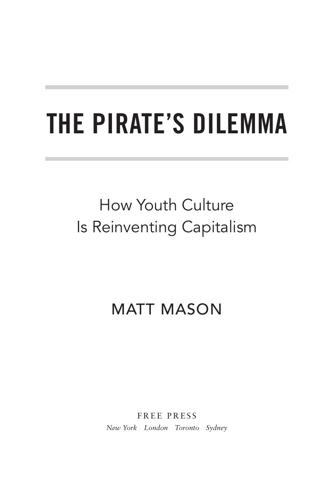
The Pirate's Dilemma: How Youth Culture Is Reinventing Capitalism
by
Matt Mason
The producers, bosses, and owners are the rock stars above, generating the goods, services, salaries, and content we the fans consume from below the inaccessible stage, singing along obediently with our lighters in the air. Very occasionally a lucky fan is pulled up onstage to give the rest of us something to aspire to, but only very occasionally. You can see that the stage is surrounded by barriers to entry and mean-looking roadies, stopping us from climbing up. These barriers might be a lack of skills or technology; they could be financial. But often they're made of nothing more than our own perception of what's possible. The mean-looking roadies are the doubts society creates that tell us it'll never work, managing our ambitions, keeping our aspirations in check.
…
You got to chuck as many beer bottles at the band as they did at you; everyone was allowed to spit on everyone else; and at the end of the performance you all smashed stuff up together. It was often a violent hate/hate relationship, but it was fair. Our world today is starting to look a lot more like a punk gig (okay, maybe with slightly less spitting). The barriers to entry are being kicked down, and this new breed of fans-turned-performers, including you, is rushing the world stage. Technology is cheap; information is everywhere; and the roadies are gone (who takes advice from roadies anyway?). The only thing left to do is to stop defining ourselves by the old hierarchy and run up onstage.
…
From the top to the bottom, pirates force the media (and other pirates) to keep up with technological changes, or get left behind. In the same way that pirate DJs are only as hot as their last show, bloggers are only as hot as their last post, and podcasters are only as cool as their last viral video. With pirates knocking down all barriers to entry, the only way to stay on top is to offer the best content, the most variety, and the latest, most entertaining, and accurate information. Even though anyone can say anything online, with millions of bloggers vetting each other, inaccuracies in stories on the most popular blogs are usually pointed out quickly.
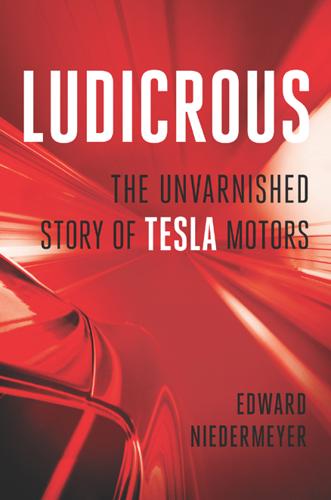
Ludicrous: The Unvarnished Story of Tesla Motors
by
Edward Niedermeyer
Published 14 Sep 2019
These were brilliant, experienced businessmen who were not in the habit of staking millions of dollars and years of their lives on a startup oblivious to the challenges of the business they were entering. The actual problem was that they knew just enough about the car business to get themselves into trouble. Eberhard’s original presentation to prospective Tesla investors shows that he was well aware of the auto industry’s staggering barriers to entry. “Tesla will build high-performance electric sports cars,” the executive summary of his presentation begins. “This sounds impossible—both the idea of building cars in the first place, and further, the idea of building a high performance electric car.” But, argued Eberhard, two recent developments now made the impossible possible: new battery technology made electric cars “very attractive,” and “the international business climate makes it now possible to build a ‘fab-less’ car company—a car company without a factory.”
…
The giant automakers had given up huge sections of the value chain to partners who could in theory supply the same components to anyone else, making it possible for new automakers to create a car from the same components used in the world’s best-selling vehicles. For the first time in a century, the auto industry’s notorious barriers to entry seemed to be falling, clearing the way for new players to replace the century-old companies at the end of an increasingly outsourced supply chain. This decentralization had even reached a point where suppliers and small automakers were building entire cars for the majors. A few years before Tesla was founded, General Motors had contracted the storied but struggling British sports car company Lotus to build it a version of its lightweight Elise roadster, which it sold in Europe as the Opel Speedster.
…
YouTube video, June 30, 2015. https://youtu.be/1llEcjAIDjY INDEX A AC Propulsion, 23, 24, 26–27, 31, 37, 43, 49 Advanced Driver Assistance Systems (ADAS), 124, 132–133 AEB (Automatic Emergency Braking), 125, 127 Anderson, Sterling, 140, 171 Andreessen, Marc, 41 Apple, 41, 95 Aptera, 11 Audi, 114, 203–204 auto industry, xi, 1–3, 11, 16, 42, 78–79, 197 Automatic Emergency Braking (AEB), 125, 127 Automotive News, 2 AutoNation, 99–100 autonomous cars, 163–179 Level 4, 175–176 Level 5, 170, 172, 175–176, 178 and Mobileye, 167–170 obstacles to, 171–179 as robotaxis, 166–167 Tesla’s master plan for, 163–167 Autopilot system, 88, 120–133, 140, 155, 161, 165, 167–173, 176–178, 212, 223, 228 Autosteer, 125 B Baer, Drake, 23, 30 Banks, Azealia, 219 barriers to entry, 35, 56 batteries fast-charging, 205 improvements in, 35 lead-acid, 23–24, 197 lithium-ion, 22–24, 26, 34 for Model S, 90–91, 200 Panasonic, 77, 183–184 production of, 48, 67–69, 183–184, 188–189, 205, 206 for Tesla Roadster, 37–38 battery swapping, 4, 5, 12, 88, 93, 108, 114–119 Begley, Ed, Jr., 45 Beijing Auto, 206 Bentley, 200–201, 203–204 Bitcoin, 104 Black Sheep Planet (blog), 99 Bloomberg News, 124, 189 Bloomberg View, 2 The Boring Company, 16 Brammo, 11–12 branding, 16, 18, 59–63, 225–234 environmentalism as, 231–232 large screen as Tesla’s, 225–231 Elon Musk’s role in, 232–234 Brin, Sergey, 44 Brown, Joshua, 127–133 Brownlee, Marques, 96 Bugatti Chiron, 214 BusinessInsider, 23, 30, 189 BuzzFeed, 218 C Cadillac, 132, 204 Cadillac Super Cruise system, 132 California, 3, 34, 48, 70, 170–171 California Air Resources Board (CARB), 12, 46, 118–119 carbon fiber reinforced plastic (CFRP), 39, 48 Chanos, Jim, 103–105 China, 11, 204–207 Christensen, Clayton, 195–197 Chrysler Corporation, 2–3, 11, 15, 34, 88 Citroën (company), 193–195, 209 Citroën, André, 194–195 CleanTechnica, 100 Clooney, George, 61 CNBC, 189 Cocconi, Alan, 13, 24 Coda, 11 collisions, 127–133 Consumer Reports, 143 continuous improvement, 58 The Contrarian Investor, 96 Cordaro, Peter, 148–149, 151, 154–155 culture of Tesla, 51–52, 60 D The Daily Beast, 2 Daimler, 67–68, 75, 76, 81, 83, 159, 160, 204 Dediu, Horace, 56 defects, 59, 149–162 non-disclosure agreements surrounding, 149–151, 152, 155–156 “stealth recalls” due to, 160–161 Delphi, 171 Deming, W.
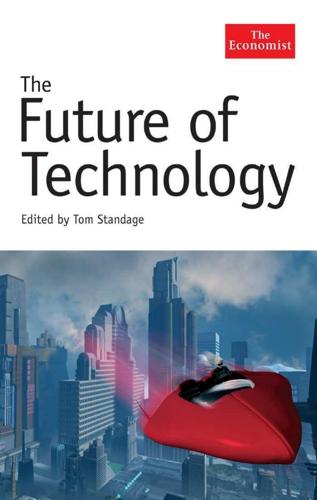
The Future of Technology
by
Tom Standage
Published 31 Aug 2005
Furthermore, a company could not just make handsets: to be taken seriously by the mobile-network operators, and ensure everything worked properly, it also had to manufacture the much larger and more complex base-stations that are used to provide mobile-phone coverage. All these requirements meant that the industry came to be dominated by large, vertically integrated firms such as Nokia, Motorola and Ericsson. “For many firms good at low-cost electronics, the barrier to entry was simply too high,” says Tony Milbourn of ttpCom, a British firm that designs and licenses hardware and software components for mobile phones. But the situation has changed. Radio chips can now be bought off the shelf, as can the software required to make a mobile phone work. Manufacturing can be outsourced to an “electronic-manufacturing services” (ems) firm.
…
Meanwhile, a flourishing ecosystem has sprung up of small firms specialising in areas such as handset design, chip design, testing and software. ttpCom, for example, provides the software that enables Sharp camera-phones and BlackBerry wireless e-mail devices to send and receive data over mobile-phone networks. In other words, the barriers to entry have fallen. Hardware and software have, to some extent, been commoditised, and there is far more scope for outsourcing of design and manufacturing than there used to be. This has allowed odms, consumer-electronics firms and even startups to enter the handset business. “Anybody with the right financial backing can break into the phone business now,” says Ben Wood, an analyst at Gartner, a consulting firm.
…
They are also bolSource: International Federation of the Phonographic Industry stered by music-publishing businesses, which collect royalties on already published songs used in recorded music, live performance, films and advertisements. Historically, the majors have controlled physical distribution of cds. Yet that barrier to entry will erode as more music is distributed on the internet and mobile phones. Artists can, in theory, use the internet to bypass record firms, though few have yet done this. The principal reason most have not is that they need marketing and promotion, which the majors also dominate, to reach a wide audience.
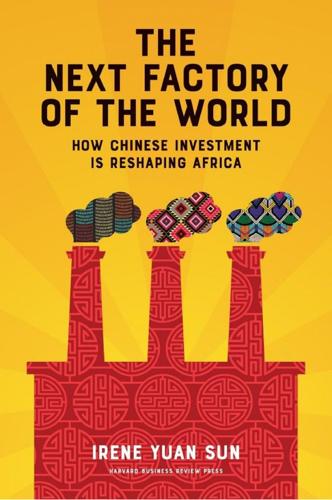
The Next Factory of the World: How Chinese Investment Is Reshaping Africa
by
Irene Yuan Sun
Published 16 Oct 2017
This is why clothing production is not very automated: the most cost-effective way to make clothing still involves people manually cutting the cloth, arranging the pieces in just the right way and in the right order, and putting them through the machines. Maybe it’s hard for machines, but for humans, it sounds easy. And as Mrs. Shen’s story shows, the barriers to entry are low. Anyone with a propensity for micromanagement and a small amount of money to buy sewing machines can set up shop. But it’s a precarious business. The margins are razor thin and may vanish altogether with something as innocuous as an unfavorable exchange rate fluctuation. Because Mrs.
…
An entrepreneur’s managerial skill set and access to capital determine the choice of a labor-intensive versus a capital-intensive business model, while market size, infrastructure, and national and global trade policy strongly influence the choice of customers, whether local or global. These factors have significant consequences for African economies in terms of job creation, barriers to entry for local entrepreneurs, and potential risks profile for the host economy. As demonstrated by Mrs. Shen’s factory versus the Formosa denim mill in Lesotho and Baoyao Steel versus the Tung family’s cold-rolled-steel factory in Nigeria, labor-intensive operations tend to create large numbers of jobs for locals, but those jobs may be flighty compared with the ones at more capital-intensive operations.
…
INDEX accountability, 82 Acemoglu, Daron, 22 Achebe, Chinua, 10 Adams, Luqy, 117–119 adaptation, 146–148 Africa attitudes in toward Chinese businesses, 77–78 attractions of for manufacturing investments, 44–45 Chinese government aid to, 179n7 Chinese immigration to, 32, 123–127, 167–169, 181n1 deindustrialization of, 32, 35 demographics, 92–94 development theories and, 9–10 economic slowing in China and, 171–172 education in, 95 GDP from manufacturing in, 41 governance in, 129–150 health care/disease in, 151–169 industrialization in, 4–6, 8, 32 labor costs in, 23 living standards in, 6 match between China and, 167–168 special economic zones, 137–142 unemployment rates in, 94 uneven industrialization in, 51 African Development Bank, 95 African Governance Initiative, 135–136 African Growth and Opportunity Act (AGOA), 54, 57, 64, 72, 184n3 agency, 102–105 AIDS/HIV, 11, 152–156, 159 Asian Infrastructure Investment Bank, 174 Austria, 147–148, 190n30 automation, 9, 55, 58–61, 172–173 AVIC International, 111, 131, 132–134, 136, 148–150 Baoyao Steel, 61, 64 barriers to entry, 55–56 Belgium, 147–148 Belt and Road Initiative, 173–174 birthrates, 93–94 Blair, Tony, 135–136 Bloom, Ron, 94–95 Bobu Feizhou, 124, 125 bootstrapping development, 132–136, 147–148, 165–166 BP, 35–36 Brazil, 43 Bretton Woods, 174 bribes, 7–8 Britain, 19–20, 98–99, 102 Brookings Institute, 38–39, 95 Bush, George W., 154 business models, 46–47, 50–51, 65–66 global competition and, 74–75 governance and, 133–134 labor- vs. capital-intensive, 51, 52, 54, 57, 64, 65 Campaign for Democratic and Workers’ Rights, 79 capital-intensive production, 51, 52, 54, 58–61, 64.

Blockchain Revolution: How the Technology Behind Bitcoin Is Changing Money, Business, and the World
by
Don Tapscott
and
Alex Tapscott
Published 9 May 2016
The first four decades of the Internet brought us e-mail, the World Wide Web, dot-coms, social media, the mobile Web, big data, cloud computing, and the early days of the Internet of Things. It has been great for reducing the costs of searching, collaborating, and exchanging information. It has lowered the barriers to entry for new media and entertainment, new forms of retailing and organizing work, and unprecedented digital ventures. Through sensor technology, it has infused intelligence into our wallets, our clothing, our automobiles, our buildings, our cities, and even our biology. It is saturating our environment so completely that soon we will no longer “log on” but rather go about our business and our lives immersed in pervasive technology.
…
But as we have pointed out, a majority of the world’s population is still excluded—not just from access to technology but also from access to the financial system and economic opportunity. Moreover, the promise that this new communications medium would bring prosperity to all has rung hollow. Yes, it helped companies in the developed world provide jobs for millions in the emerging economies. It lowered the barriers to entry for entrepreneurs and gave the disadvantaged access to opportunities and basic information. That’s not enough. There are still two billion49 people without a bank account, and in the developed world, prosperity is actually declining as social inequality continues to grow. In developing economies, mobile is often the only affordable means of connecting.
…
He posited that a firm would expand until the cost of performing a transaction inside the firm exceeded the cost of performing the transaction outside the firm.5 Don argued that the Internet would reduce a firm’s internal transaction costs somewhat; but we thought, because of its global accessibility, it would reduce costs in the overall economy even more, in turn lowering barriers to entry for more people. Yes, it did drop search costs, through browsers and the World Wide Web. It also dropped coordination costs through e-mail, data processing applications like ERP, social networks, and cloud computing. Many companies benefited from outsourcing such units as customer service and accounting.
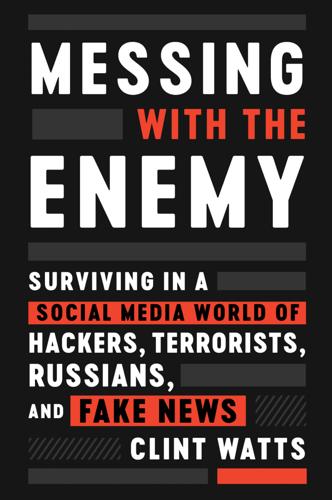
Messing With the Enemy: Surviving in a Social Media World of Hackers, Terrorists, Russians, and Fake News
by
Clint Watts
Published 28 May 2018
But life in Mexico is anything but free, and newspapers with bylines and sources have frequently felt intimidation from drug cartels and the government. Those journalists pushing the envelope of accountability and challenging the strong rarely last long. Nearly one hundred Mexican journalists have been killed in the past two decades covering the life and times of Mexicans. Again, social media lowered the barrier to entry for the common man, and soon an alternative to traditional journalism emerged to account for the state of violence in Mexico. People lacking a way to defend themselves turned to blogs, forums, Facebook, and Twitter to reveal the secret lives, the real world, of Mexico’s drug cartels. Two blogs, Al Rojo Vivo and Blog del Narco, broadcast reports of violent incidents.
…
I can counter terrorists or Russia from home better than I could from inside government, and so could most of the great civil servants America has working on counternarratives. I’m not smarter than any of the government folks doing counterinfluence or many of the contractors spread around D.C.’s Beltway. I just have more flexibility, can practice, and am free to fail at my house without scrutiny. There’s no barrier to entry for me as a citizen. I can make a thousand mistakes; I can learn from others and plod away without a manager telling me to stop or change something to make a politician happy. * * * In the end, the most effective way to counter terrorist influence has been to simply kill terrorists. Despite all the calls for American countermessaging, when terror groups wane, their influence evaporates.
…
The relentless pursuit of preferences turns smart crowds into dumb mobs, leads to the selection of preferred fictions over actual facts, and creates an environment where humans have access to more information than ever but actually understand less about the physical world. The power of preference now haunts not only al-Qaeda as they’ve been outpaced by the social-media-savvy Islamic State, but America, the land that created social media. No barriers to entry and unlimited preference in the virtual world have overtaken compromise in the real world. Online, the pursuit of comfort and confirmation create an alternative reality. Those researching the internet and social media didn’t expect this deterioration, and even the social media companies are just now beginning to understand what’s happening.

Bitcoin: The Future of Money?
by
Dominic Frisby
Published 1 Nov 2014
Suddenly, along comes Bitcoin, an open-source currency with no central authority, offering an alternative that could undermine the existing monetary order. Nobody even knows who designed it. It’s by no means the first attempt at digital cash, but it’s the first that works this well. It’s actually more efficient than dollars or pounds. It’s immune to all the manipulation and abuses that go on, there are no barriers to entry, bar internet access, and it has captured a zeitgeist in a way that nobody could have foreseen. If Bitcoin changes the way we transact and the way we store wealth – and it has the potential to do this – the repercussions could be enormous. Think what email did to the postal service, or what the internet did to newspapers, publishing, music and television.
…
The day is not far off when you will walk into a shop, select an item you wish to buy, photograph the code on the label, payment will be made automatically and off you go. Once you get the hang of it, it is as simple as using a credit card. And, as long as you have internet access, there are no barriers to entry. Cash in my wallet, money in the bank I bet you use different kinds of money all the time, sometimes without even realising it. In various online accounts, I currently have: some dollars, some pounds and some euros. I have some air miles from two different credit card companies. I have some supermarket rewards points from three different companies.
…
Low interest rates have meant that what should have died lives on. If he wants to set up a fund, the regulation is so onerous that he would need to raise £100 million to make it viable. That’s impossible. Regulation has just re-enforced the monopolies of the banks. Big corporations like regulation because only they can afford it. It’s a great big barrier to entry. ‘But Bitcoin. There’s none of that in Bitcoin. It’s the future,’ he says. He’s been called over to start another auction. A canny East End Jewish lad in his mid-30s, Paul, seems to be running things. I want to talk to him. As the auction begins, Paul offers to buy 100 pounds’ worth of bitcoin at £500 a coin.

Realtime Web Apps: HTML5 WebSocket, Pusher, and the Web’s Next Big Thing
by
Jason Lengstorf
and
Phil Leggetter
Published 20 Feb 2013
The difference between someone using our app and not using our app could be something as simple as how many buttons he has to click to get started. 13 http://oauth.net/about/ 32 Chapter 2 ■ The Tools OAuth provides a great way to get everything we need: • Verify that the person is indeed real: We can reasonably assume that anyone who is signed into a valid Facebook or Twitter account is a real person. • Collect necessary data about the user: For this app, we would really only need a name and e-mail. • Reduce the barrier to entry: By eliminating all the usual steps of creating an account, we could get the user into our app in seconds with just two clicks. What Role Does It Play? OAuth would be the gatekeeper for our app. It would use third-party services to verify the authenticity of a user and gather the necessary information for the app to function.
…
Use the following settings: • Font: News Gothic Roman • Size: 24 pt • Tracking: 25 • Color: #1F1B0C Center the headline and copy above the form, and you should now have a finished form for creating a new room (see Figure 6-15). 101 Chapter 6 ■ Designing the App Figure 6-15. The completed create-a-room form for the home view Join-a-Room Form To keep the design consistent, the join-a-room form will be stylistically identical to the create-a-room form; only the inputs and copy will change. In the interest of minimizing the barrier to entry for attendees, the only information required to join a room is the room’s number. 102 1. Jump start this form by copying the create-a-room form into the right half of the page and then eliminating two of the three inputs. 2. Change the headline to read Attending? and the copy at the top to read, Join a room using its ID. 3.
…
Creating new accounts is a pain for both developers and users, so when the app doesn’t have an explicit need to closely control its own registration process, there are a lot of good reasons to use OAuth rather than implementing something specific to your application. Some of the benefits include these: 264 • One fewer account registration and password for users to deal with, which lowers the barrier to entry for potential new users: getting started means three clicks versus filling out a form, checking their confirmation e-mail, and then logging in. • The app has access to basic user info without asking for any additional input or actions from the user beyond authorization. • The app has access to the service provider’s API and its benefits (such as sharing a user’s app activity on Facebook, if the permissions allow it)
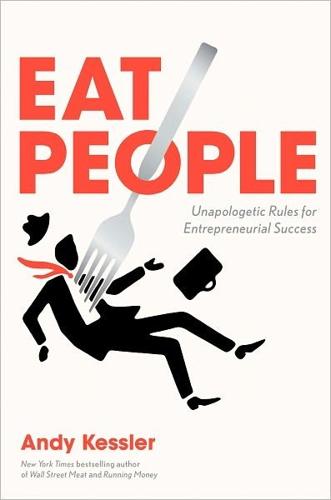
Eat People: And Other Unapologetic Rules for Game-Changing Entrepreneurs
by
Andy Kessler
Published 1 Feb 2011
The goal of every business is to raise the volume and predictability of its output to the point that it becomes a commodity. This is achieved not by raising prices but by lowering prices and benefiting from the learning curve efficiencies that result from larger volumes. The largest profits and barriers to entry come when the learning curve is steeper than the curve of declining prices. The issue of intellectual property and its ownership is separate from the issue of commoditization. The most profitable companies launch a large number of learning curves and commodities.” Whoa. There’s a lot there to chew on.
…
I still fall over laughing at the Marx Brothers’ The Cocoanuts and Animal Crackers, “Hooray for Captain Spaulding . . .”, which were made this way. It took a while, but eventually, production values increased to $2.6 million per TV episode for Friday Night Lights and $100 million-plus movie budgets. This became the barrier to entry. Viewers demanded better quality, better than the cheap stuff they were initially fed. Animal Crackers is a classic, but now quaint. The Web is still back in the pioneer days. Beyond the pirated stuff that leaks out of the moguls’ traditional media pipes, today’s Web content is mainly user-generated: MySpace pages, YouTube videos, podcasts, Facebook walls, all disgustingly cheap to produce (and armchair critics like me go sniff, sniff, and mutter “lame”).
…
He told me to watch for the eventual economic model of this whole thing as production values inevitably go up: “Mashups, hyperlinks?” he said. “We’ve seen it all before in the music business. Anyone can produce and distribute any song they want. We have seen some artists and songs emerge, but very, very few. And that is in an environment where there truly are no digital barriers to entry. Yet the moguls are still the moguls. Not as strong, but still in control. I don’t see them going away. Why? Because in a Long Tail universe, the cost to crawl up the tail to the rat’s ass is more expensive than the production. Which means only the people with the money can make the investment, which brings you back to the moguls.”

Don't Be Evil: How Big Tech Betrayed Its Founding Principles--And All of US
by
Rana Foroohar
Published 5 Nov 2019
Many people would argue that Google, Facebook, Amazon, and perhaps even Netflix and Apple fit this category (though Apple itself would counter that there are many competitors in its mobile marketplace, most notably Google, which takes a much larger share of the overall mobile market if tallied by percentage of users on the Android system). Natural monopolies are often a product of network effects, meaning that the more users a platform has, the more attractive it is to new users. Barriers to entry, be they capital costs or simply getting there first and controlling the physical or virtual territory, are huge, and prevent others from entering the market in an effective way. That’s how the railroads and the telegraph and telephone companies of the past, and even some of the media giants of today, achieved domination.
…
Still, as Citibank’s former CEO Chuck Prince once quipped, “As long as the music is playing, you’ve got to get up and dance.” Over the past five or so years, there’s been massive growth in the number of these venture-capital-backed “unicorns”—start-ups with a market capitalization of more than $1 billion. Low barriers to entry have resulted in many competitors and a race to spend as much as possible to grab market share. Not only do the private companies that emerge from this unproductive cycle become bloated, so, too, do the venture funds themselves. Billion-dollar venture funds, once unheard of, are now commonplace.
…
(According to the McKinsey Global Institute, industries such as tech, pharma, and finance, which are based on data and intellectual property that can be monopolized and moved anywhere around the world, are the most prone to concentration.)26 It is the economic and political challenge of our time. Jason Furman, the former head of the Council of Economic Advisers, believes concentration is creating barriers to entry in many key markets.27 Academic David Autor has linked the corporate consolidation to workers making less.28 New research from the McKinsey Global Institute has found the same, and has noted in particular the way in which technology has driven down the labor share of the overall economic pie.29 There is also evidence that a small group of “superstar” companies are pulling way ahead of others, not only in terms of profits but also productivity.30 In other words, the biggest companies, particularly in the most digitally connected parts of the economy (tech, finance, and media), are incredibly productive.
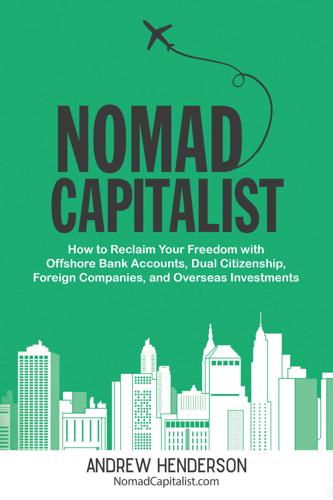
Nomad Capitalist: How to Reclaim Your Freedom With Offshore Bank Accounts, Dual Citizenship, Foreign Companies, and Overseas Investments
by
Andrew Henderson
Published 8 Apr 2018
Tax rates in the United States peaked at 91% before John F. Kennedy took office. Back then, patriotic US persons seemed substantially happier to pay than they would be in today’s more global world. They also believed that they actually got something for their tax money back then. Today, tax rates are lower, as are the stigma and barrier to entry of living a jet set lifestyle. In fact, it is so easy to jet set around the world these days that plenty of modern perpetual travelers choose to spend their winters in Thailand and their summers in Amsterdam. However, most of these folks are not fully availing themselves of the host of financial benefits that come with the Nomad Capitalist lifestyle.
…
Protecting both your personal and business assets – be it cash, shares in your company, property, or whatever else – is extremely important, but the concept has become so convoluted to the point that everyone thinks ‘asset protection’ means setting up a $50,000 Cook Islands trust when that is not necessary for most entrepreneurs. Gold, on the other hand, is an easy, cheap, and low-barrier-to-entry way to protect a part of your money. If you think gold is a little bit of a kooky investment for an entrepreneur, allow me to suggest otherwise. Your offshore company can easily invest in precious metals titled in the company’s name. If you run a cash cow business that leaves money sitting in bank accounts, consider moving part of that money into precious metals that are not correlated to the same risk factors as currency.
…
The United States and Europe lead the race with crowd equity and crowd debt sites like RealtyShares, Peerstreet, and France’s Wiseed that allow anyone to invest in a share of everything from residential rentals and fix-and-flips to sprawling commercial properties, and all with as little as $1,000. No longer do investors have to rely on real estate investment trusts (“REITs”) to invest in high-yielding property. Now, you can invest in a far more intimate way where you actually see where and to whom your money is going. With such low barriers to entry, investing overseas could become your form of recreational gambling. The benefit that foreign real estate investments have over actual gambling, however, is that you have a much better chance of making your money back. In fact, while you can easily adopt a solely recreational approach to foreign investment, there are numerous benefits to investing overseas as a serious investor.
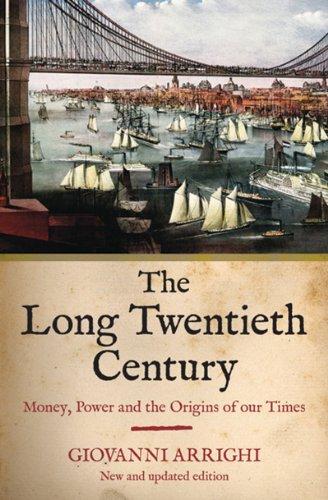
The Long Twentieth Century: Money, Power, and the Origins of Our Times
by
Giovanni Arrighi
Published 15 Mar 2010
Yet, as Stephen Krasner (1988: 29) remarked: “Fairchild was owned by the French company Schlumberger, so the issue was not simply one of foreign ownership.” What cultural and political barriers could not stop, the barriers to entry built into the very structure of US corporate capitalism did. The complexities of US corporate life proved to be more insurmountable INTRODUCTION 19 barriers to entry for Japanese money than cultural hostility and political mistrust. The biggest ever Japanese takeovers in the United States — Sony’s takeover of Columbia Pictures in 1989, and Matsushita’s takeover of MCA the following year — failed completely in their objective.
…
Expansion abroad further increased the organizational capabilities of US managerial hierarchies, both at home and abroad, to monitor markets and labor processes in the lines and branches of business they targeted for occupation or had already occupied and regulate them to their advantage. Even in industries in which techniques of mass production were crucial to business success, organization rather than technology came to constitute the real barrier to entry: The most imposing barrier to entry in these industries was the organization the pioneers had built to market and distribute their newly mass-produced products. A competitor who acquired the technology had to create a national and often global organization of managers, buyers and salesmen if he was to get the business away from the one or two enterprises that already stood astride the major marketing channels.
…
[And he had to do this while facing] a competitor whose economies of speed permitted him to set prices low and still maintain a margin of profit. (Chandler 1977: 299) The spectacular domestic and trans-statal expansion of US multi-unit, vertically integrated business enterprises, and the organizational barriers to entry which they created, were associated with an equally spectacular growth of managerial hierarchies and bureaucratic structures. Once in 250 THE LONG TWENTIETH CENTURY place, these hierarchies and structures themselves “became a source of permanence, power and continued growth”: In Werner Sombart’s phrase, the modern business enterprise took on “a life of its own.”
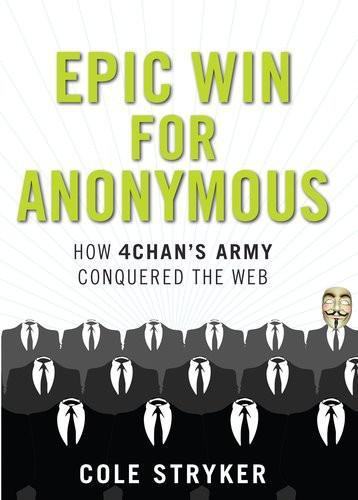
Epic Win for Anonymous: How 4chan's Army Conquered the Web
by
Cole Stryker
Published 14 Jun 2011
It’s kind of like the New Yorker caption contest. It becomes a game to creatively fill in the blanks. And it doesn’t stop at text. Photoshop wizards augment the imagery itself, for hilarious results. Exploitables allow anyone to engage in the communal meme pool that is 4chan, with a very low barrier to entry. All you need is some basic image-editing prowess and a sense of humor, and you too can achieve maximum lulz. Some of the comics that come out of these threads surpass anything I’ve seen in the Sunday funnies. A Meme Pool For Participatory Culture There are many words used to describe this kind of interactive entertainment.
…
These subscribers were already on the forefront of technology, and very smart. This early user base would come to have a tremendous influence on the quality of discourse. In 1995, a decade into the WELL’s history, Wired magazine called the WELL the world’s most influential online community. It was a hyperintellectual environment that bore significant structural barriers to entry. It was slow. It was complicated. And perhaps most importantly, it was expensive. Between the monthly fee ($8), the hourly fee ($2), and any additional fees exacted by telephone companies (to say nothing of the cost of a computer and modem in those days), it wasn’t uncommon for power users to burn through $300+ per month.
…
Of course, the broader going anti-Scientology movement goes all the way back to Usenet days. Before delving into the early anti-Scientology movement, it’s important to understand something about the ideals of hackers and even general Internet users from that era, all of whom today would be considered extremely tech-savvy given the structural barriers to entry that the Internet imposed. Tech heads were, and still are, drawn to the Internet in part because it promises a level playing field, where all-important information is out in the open. As the WELL’s Stewart Brand famously declared, “Information wants to be free.” Enthusiasts in those days saw the Internet as a utopian future, where one could be taken at his or her word.
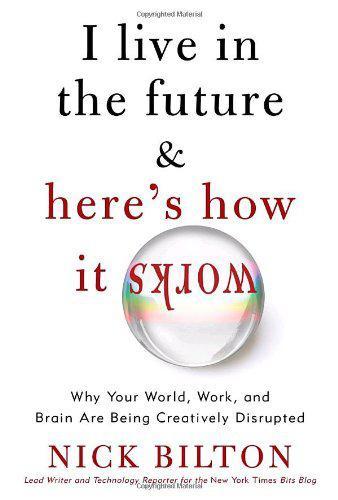
I Live in the Future & Here's How It Works: Why Your World, Work, and Brain Are Being Creatively Disrupted
by
Nick Bilton
Published 13 Sep 2010
Despair It took only a few meetings before I realized that the lottery ticket didn’t exist—or at least that’s what I was told. Despite my excitement about discovering new ideas in the California porn industry, I heard mostly fear and desperation from directors and the people who run production houses. Prices were falling. The barriers to entry had disappeared. Some money was flowing in, but advertising and sales of traditional media were in decline and it wasn’t clear how long even the current business could sustain itself. The industry, I was told, was being attacked by parasitic piracy and file sharing. “It’s tough now,” said one porn purveyor.
…
These pornography sites charge any number of different prices for their content. But these companies realized that they have to make the content that consumers want, and they have to make it available anywhere, at reasonable prices, any time the consumer wants it. Most important, since production costs and distribution channels no longer create a barrier to entry, if these companies don’t do that, someone else can and will. To bring in revenue, the smaller sites have recognized that advertising can be enough to pay the bills and keep the lights on. But the ads must be relevant to their audience. So if viewers see an advertisement similar and relevant to a clip they are about to watch, there’s a good chance they’ll click through to the ad’s link.
…
Of course, there are still costs—highly skilled editors, copy editors, author royalties, and so on—but distribution is drastically less expensive, and the public recognizes this. In the public mind, the product you hold in your hand should cost more than the one that was downloaded—especially if it was downloaded onto an expensive e-reader or another gadget. As technology has demolished barriers to entry, consumers have become much more aware of what it costs to produce new content. Now anyone sitting in her bedroom with a microphone and a laptop can become a music producer. You don’t even need a separate camera and a tripod to create a TV show. Using only the camera built into the computer, young producers have made videos that collectively have reached hundreds of millions of viewers on YouTube and other advertising-based online video outlets.
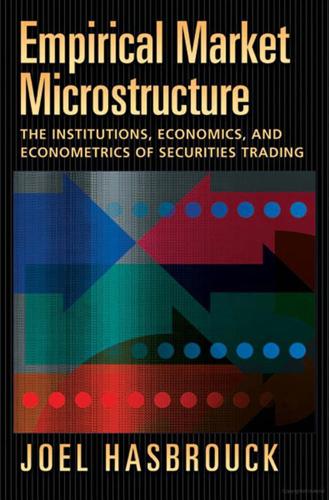
Empirical Market Microstructure: The Institutions, Economics and Econometrics of Securities Trading
by
Joel Hasbrouck
Published 4 Jan 2007
These processes are usually automatic and routine, and the traders seldom need to concern themselves with the details. It is important, though, that they require some sort of preexisting relationship, possibly one that is indirect and via intermediaries, between the parties. Establishing a brokerage account or clearing arrangement is neither costless nor instantaneous and may therefore create a short-run barrier to entry for a potential buyer or seller not previously known to the market. Trading often involves a broker. A broker may simply provide a conduit to the market but may also act as the customer’s agent. This is a more 9 10 EMPIRICAL MARKET MICROSTRUCTURE substantial role and may involve discretion about how to handle a customer’s trading needs: when to trade, where to trade, what sort of orders to use, and so on.
…
From the diversity of these examples, it is clear that the interdealer market is defined by its participants, not by the mechanism. Analyses of interdealer markets include Reiss and Werner (1998) and Viswanathan and Wang (2004). 15 16 EMPIRICAL MARKET MICROSTRUCTURE Dealer markets are typically flexible. The fixed technology and infrastructure costs are low. The main barrier to entry is access to a set of customers. Dealing operations are easily scaled up or down. Certain terms of trade and security characteristics may be set to accommodate customer preferences. For example, the equity derivatives desk at a bank might sell a customer a call option for which the underlying strike price, maturity, and size differ from any other option the desk has ever bought or sold. 2.3.2 Dealers in Hybrid Markets Dealers can make markets work where they might otherwise fail.
…
In a discriminating book, therefore, a limit order is priced at the “tail expectation,” that is, the expected value of the security conditional on an incoming order of a size just sufficient to trigger execution or anything larger. 13.1.3 A Monopolistic Dealer Most security markets are well approximated by the competitive dealer or limit order paradigms just described. But in a market for a thinly traded security or one in which there are regulatory or institutional barriers to entry, a dealer may possess market power. In the third setting we consider a monopolistic dealer. One feature of this situation is the standard result. The monopolist enjoys rents, abnormal profits that are not competed away. A more surprising result is that a monopolistic market may benefit customers (relative to the competitive dealer market).
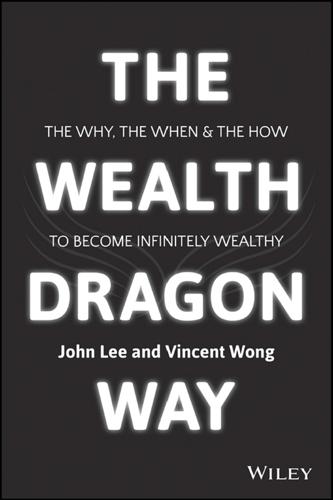
The Wealth Dragon Way: The Why, the When and the How to Become Infinitely Wealthy
by
John Lee
Published 13 Apr 2015
Never before has there been such a total meritocratic environment for entrepreneurs. Anyone can launch a website. It's relatively cheap. We can trade on a global scale thanks to credit cards and payment systems such as PayPal. We can market to anyone through the Internet. But a meritocracy is a double-edged sword: It removes barriers to entry whilst increasing competition. And that's why you need to do everything you can to stand out. These days it is not so much about who you know as who knows you! And before anyone knows you, you must know yourself and know what you are selling. Know exactly what skills you are selling, what your strengths and weaknesses are, how you come across in a business meeting, and what value your business adds to the lives of your clients and customers.
…
Don't worry, you'll get to take them off, but you must psychologically wear them to begin with, to remind yourself, as much as anyone else, that you are still in learning mode. Once you feel you've gained enough knowledge and experience, you can take the L plates off and learn will become earn! People perceive the property business as having very low barriers to entry, in that anyone can get into it. This is true, but it still doesn't mean it's easy or that you don't need to educate yourself first. Mistakes in property investment can be cripplingly costly! Vince: I remember a woman coming to me because she'd inherited £50,000. She wanted to start investing in property.
…
People before Property We've said it before and we'll say it again: The property business is a people business, so you need excellent people skills. Whether it's the sellers, the solicitors, or your investment partners, you are dealing with people at every step of the way. Knowing how to deal with people is therefore a key skill you must acquire and hone. Because of the low barriers to entry in property investing, almost everyone assumes they can throw some money down, buy a few houses and rent them out for a nice passive income. But it takes a lot more than that. Yes, it is a meritocracy (i.e., anyone can do it), but property investing comes with a huge amount of responsibility.
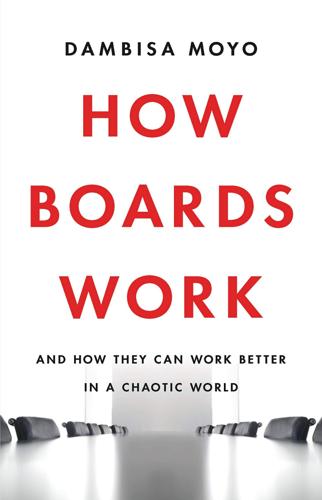
How Boards Work: And How They Can Work Better in a Chaotic World
by
Dambisa Moyo
Published 3 May 2021
Some boards were prompted to overhaul their company’s business models, considering major changes to their strategy and weighing whether certain operational changes, like having employees work from home, should be made permanent. Another macro factor that boards consider is what a company’s competitors are doing as they fight for market share and margin. At a time when technology is lowering the barriers to entry for many industries, companies and their boards must be cognizant of new forms of competition. One example is the threat that online shopping has posed for traditional retail stores. Several decades ago, corporations like Nestlé, Unilever, Procter & Gamble, and Walmart considered their competition to be other large, global firms in their sectors.
…
Today, competition in this sector is increasingly coming from operators such as China’s Alibaba and JD.com, India’s Flipkart, Europe’s Delivery Hero, and South Africa’s Naspers—all of which are quickly extending their reach. Boards have to monitor and respond to a constantly changing regulatory landscape. Global corporations could face regulations that challenge anticompetitive or monopolistic behavior. They also face rule changes that create or remove barriers to entry. For example, tighter rules on data protection might lead to higher costs and require new expertise. Perhaps unsurprisingly, boards tend to focus on specific regulation that immediately affects their business. The 2010 Dodd-Frank overhaul of financial regulation, which came in response to the 2008 crisis, encouraged—and in some cases even forced—bank boards to change their strategic plans and business models.
…
Balancing between garnering higher returns and adhering to ever-greater levels of social responsibility involves difficult decisions. If lobbying leads companies to scale back too far, the benefits they previously brought may disappear. Even if the emphasis on social issues does not immediately threaten the viability of companies, it will likely increase the cost of business operations, raise the barriers to entry, and hurt competition. All of this will increase the costs to consumers and affect smaller companies more acutely, which in turn will reinforce the case for consolidation across industries. Already there is considerable data showing that many industries are consolidating to a point where sectors are acting more as national monopolies or global oligopolies.

The Code of Capital: How the Law Creates Wealth and Inequality
by
Katharina Pistor
Published 27 May 2019
Opting out of one and into a different legal regime leaves only a paper or digital trail but will not compromise the code’s power as long as there is at least one state that is willing to back it. This is so because, since Smith’s writing more than two hundred years ago, an empire of law has been built that is made primarily of domestic law but remains only loosely tied to specific states or their citizens. States have actively torn down legal barriers to entry and offered their laws to willing takers and have thereby made it easier for asset holders to pick and choose the law of their liking. Most states recognize foreign law not only for contracts but also for (financial) collateral, corporations, and the assets they issue; they use their coercive powers to enforce it, and they allow domestic parties to opt into foreign law without losing the protections of local courts.
…
In the past, many countries required a firm to use its domestic corporate law, if this was where the company maintained its headquarters or core business operations. The real seat theory, as this rule has been appropriately labeled, however, was pushed out when the free movement of capital became the overriding concern of policymakers, recasting the imposition of local rules by a sovereign state into barriers to entry.10 Under these conditions, it is difficult for states to sustain rules that impose too high a burden for incorporating a business, or even rules that are at odds with the interests of shareholders. Lehman Brothers, along with other financial intermediaries, developed the legal partitioning of assets with the help of corporate law into an art form.
…
Anti-usury rules were common in the West until well into the nineteenth century; at first, they were restricted only to transactions with members of the same faith, and over time became rather toothless, as lawyers learned how to transact around them. For a succinct history of the religious origins of usury rules, see Mark Koyama, “Evading the ‘Taint of Usury’: The Usury Prohibition as a Barrier to Entry,” Explorations in Economic History 47, no. 4 (2010):420–442. 27. Geoffrey M. Hodgson, Conceptualizing Capitalism: Institutions, Evolution, Future (Chicago: University of Chicago Press, 2015), chap. 7 at p. 173. 28. Ibid., p. 176, with reference to Adam Smith’s conception of capital. 29. Jonathan Haskel and Stian Westlake, Capitalism without Capital: The Rise of the Intangible Economy (Princeton, NJ: Princeton University Press, 2018). 30.
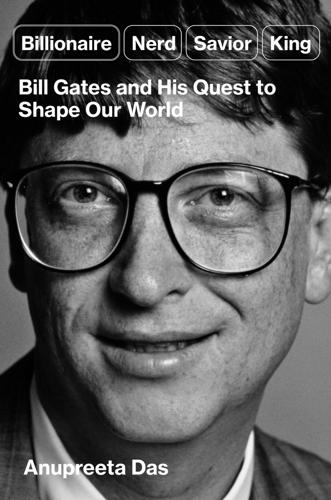
Billionaire, Nerd, Savior, King: Bill Gates and His Quest to Shape Our World
by
Anupreeta Das
Published 12 Aug 2024
Microsoft pushed back on the comparisons. Its practices were not monopolistic, Microsoft argued, because it was defending intellectual property. Unlike petroleum, which was a scarce resource because there was a finite amount of it in the world, there were no limits to IP. How could Gates be controlling a sector where the barriers to entry were so low that anyone with a new idea could patent it and reshape the industry? But the barrage of negative news, spurred by a systematic campaign by Silicon Valley to taint Microsoft’s reputation, found some receptive ears in Washington. The Behemoth that Behaved Like a Start-up On August 24, 1995, Gates stood onstage with fellow Microsoft executives as “Start Me Up” played in the background.
…
In his famous book Only the Paranoid Survive, Grove wrote about how swift change can turn a successful company into a has-been, but managed right, change can also present an opportunity for the leader of the business to redirect the company’s course. That business philosophy makes sense because the technology industry often has low barriers to entry, which was Microsoft’s main argument, and tech companies can sometimes die if they aren’t flexible and innovative enough. However, Microsoft’s problem was that it underestimated its own size and influence. “They were really not as vulnerable as they thought they were,” Cusumano said in an interview.
…
But now, Apple—one of the biggest beneficiaries of the smartphone revolution—was, according to the DOJ, essentially engaging in the same kind of behavior to protect its iPhone ecosystem. The companies have routinely said that their activities are not anticompetitive, borrowing the same argument that Gates had used during Microsoft’s trial: Barriers to entry are low in the technology industry, and competitive edges can easily be lost. Microsoft, whose market capitalization briefly crossed $3 trillion in early 2024 as it jousted with Apple for the title of the world’s most valuable company, itself is undergoing renewed scrutiny. In the aftermath of its antitrust trial, as Gates stepped away from his daily duties, the battered and bruised company lurched around unable to find its footing and falling behind in the race to capture the consumer internet.
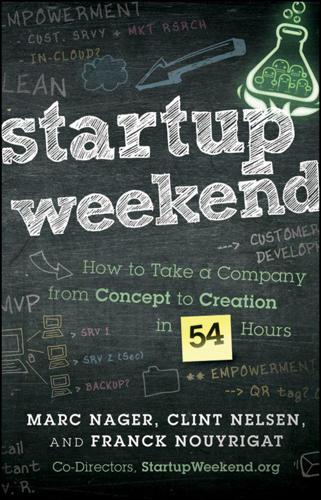
Startup Weekend: How to Take a Company From Concept to Creation in 54 Hours
by
Marc Nager
,
Clint Nelsen
and
Franck Nouyrigat
Published 8 Nov 2011
But there are plenty of entrepreneurs around the country and the world who need an effective way of connecting with cofounders and colleagues—people who share that startup spirit. The kind of work that goes on at Startup Weekend allows people to form strong bonds that eventually grow into a community. Typically, Startup Weekend organizers have a lot of contacts in their startup, business, and/or tech communities. So, even though the barrier to entry may seem low, the events often turn out to be composed of a very highly motivated and connected group of participants. And Startup Weekend's international outreach has meant that entrepreneurs looking to expand their horizons have a resource for finding like-minded people all over the globe.
…
As much as we talk about ingenuity and innovation being part of the United States' DNA, there's still that funny look that some people get when you're introducing your husband or your wife around the circle—in which everybody else is an investment banker or in marketing—and you say something like, “Yeah, he's working on his own thing right now.” It's simply not part of the cultural norm. There are always psychological and social aspects of being an entrepreneur. If we could get a critical mass of people engaged in entrepreneurship, or at least know someone who is an entrepreneur, then the barrier to entry might seem a little lower. Your Next Iteration Startup Weekend serves different functions for different people. Startup Weekend is helping entrepreneurs reach the next step in their respective journeys, wherever they currently are on the startup ladder. For those who know what they're doing, the weekend offers a condensed chronological period in which to get things done.
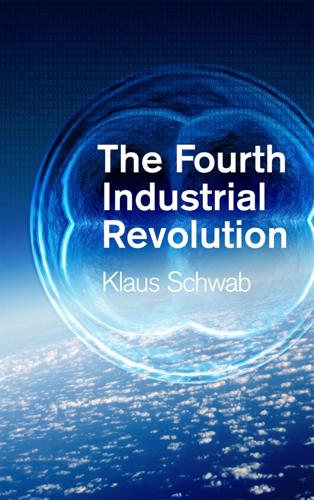
The Fourth Industrial Revolution
by
Klaus Schwab
Published 11 Jan 2016
In the future, as the value shifts towards the electronics, the technology and licensing software may prove more strategically beneficial than manufacturing the car per se. The finance industry is going through a similar period of disruptive change. P2P (peer-to-peer) platforms are now dismantling barriers to entry and lowering costs. In the investment business, new “robo-advisory” algorithms and their corresponding apps provide advisory services and portfolio tools at a fraction of the old transaction cost – 0.5% instead of the traditional 2%, thereby threatening a whole segment of the current financial industry.
…
Figure V: Distribution of US Occupational Employment* over the Probability of Computerization * Distribution based on 2010 job mix. Source: Frey, C.B. and M.A. Osborne, “The Future of Employment: How Susceptible Are Jobs to Computerisation?”, 17 September 2013 Positive impacts – Cost reductions – Efficiency gains – Unlocking innovation, opportunities for small business, start-ups (smaller barriers to entry, “software as a service” for everything) Negative impacts – Job losses – Accountability and liability – Change to legal, financial disclosure, risk – Job automation (refer to the Oxford Martin study) The shift in action Advances in automation were reported on by FORTUNE: “IBM’s Watson, well known for its stellar performance in the TV game show Jeopardy!
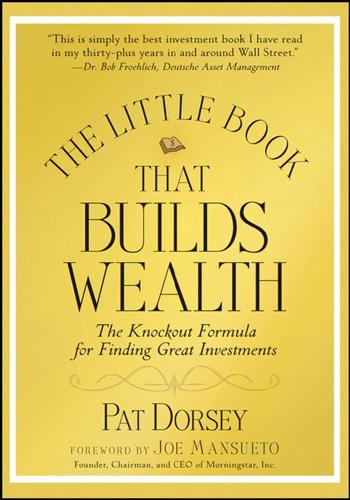
The Little Book That Builds Wealth: The Knockout Formula for Finding Great Investments
by
Pat Dorsey
Published 1 Mar 2008
The same story, with minor variations, could be repeated for many auto-parts manufacturers, which operate in a cutthroat industry with truly awful economics. Turning to asset management, Morningstar covers 18 publicly traded asset managers, all of which have economic moats. (In fact, a dozen have wide moats, while the rest have narrow moats.)4 Although the barriers to entry are low in asset management—anyone willing to spend $100,000 or so on lawyers and registration fees can start a mutual fund—the barriers to success are quite high, because it generally takes a large distribution network to really rake in the assets. However, those assets tend to stick around once they’re in the door, which means that money managers that have amassed a good-sized pile of assets under management can generally generate high returns on capital without breaking much of a sweat.
…
This part of the market also has an outsize number of niche-dominating firms like Stericycle (medical waste), Moody’s Investors Service (bond ratings), FactSet (financial data aggregation), and Blackbaud (fund-raising software for nonprofits). Although business services firms may be further from your everyday radar screen, they’re usually worth the effort it takes to get to know them, given how rich in moats the sector tends to be. The financial-services sector is another great place to look for companies with moats. Barriers to entry are quite high in some areas—who is going to start up a bulge-bracket investment bank to compete with Goldman Sachs, Lehman Brothers, and their ilk?—and switching costs protect the profits of even your most average bank, as we discussed in Chapter 4. Sticky assets lead to very durable returns on capital at almost every asset manager, and financial exchanges like the Chicago Merc and the NYMEX reap huge benefits from the network effect.
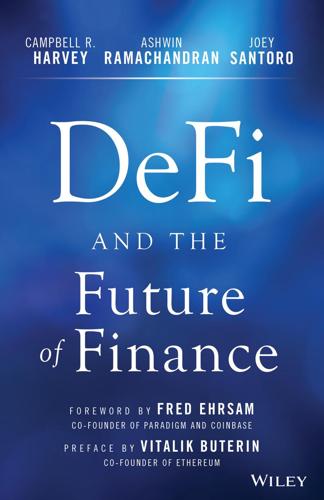
DeFi and the Future of Finance
by
Campbell R. Harvey
,
Ashwin Ramachandran
,
Joey Santoro
,
Vitalik Buterin
and
Fred Ehrsam
Published 23 Aug 2021
The method sets an artificial price floor for the token if the user controls the supply outside of the amount supplied to the Uniswap market and, as such, inhibits price discovery. The trade-offs of an IDO should be weighed as an option, or strategy, for a user's token distribution. IDOs democratize access to DeFi in two ways. First, an IDO allows a project to list on high-traffic DeFi exchanges that do not have barriers to entry beyond the initial capital. Second, an IDO allows a user access to the best new projects immediately after the project lists. OPACITY The third drawback of traditional finance is opacity. DeFi elegantly solves this problem through the open and contractual nature of agreements. We will explore how smart contracts and tokenization improve transparency within DeFi.
…
Whereas traditional finance is able to rely on sophisticated market makers including Jump, Virtu, DRW, and Jane Street,21 order-book DEXs are often forced to rely on a single market maker for each asset pair because of the nascency of the DeFi market and the complex compute infrastructure required to provide them with on-chain liquidity. As the market evolves, we expect these barriers to break down and more traditional market makers to enter the ecosystem; for now, however, these obstacles create a significant barrier to entry. Regardless, both AMM and order-book DEXs are able to eliminate counterparty risk while offering traders a non-custodial and trustless exchange platform. Several decentralized exchanges use an entirely off-chain order book, retaining the benefits of a non-custodial DEX while circumventing the market making and scaling problems posed by on-chain order-book DEXs.
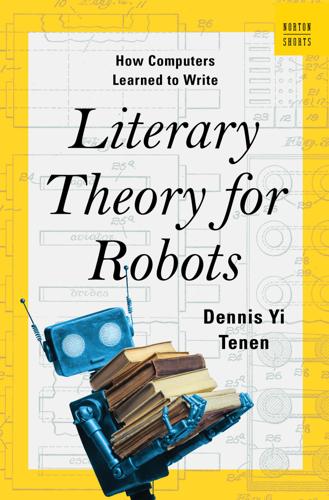
Literary Theory for Robots: How Computers Learned to Write
by
Dennis Yi Tenen
Published 6 Feb 2024
Viewed in their light, the novelty of analytical engines lay in the application of manufacturing templates to the domain of symbolic logic, philosophy, and art. Templates used in the production of symbolic goods necessarily share a history with physical manufacturing, influenced by the same industrial forces affecting the manufacture of material goods—such as the division of labor, mechanization, assembly line production, lowered barrier to entry, decreased cost, increased output, efficiency, and standardization. (But also, the rise of middle management, globalization, union busting, and lame corporate team-building events.) Literary production in the West accelerated with the advance of the printing press, alongside rising literacy rates.
…
The ranks of American ghost towns ravaged by industrialization may soon be joined by former tech centers. Not all our prospects are so glum. Human intelligence continually expands to cover new publics. Another way of saying “automation cheapens labor,” would be to say “automation reduces barriers to entry, increasing the supply of goods for all. Learning, for example—something that required special training and immense effort in times past—has entered the purview of the public at large, and at low cost. The tide of encyclopedias and search engines has already lifted all smart boats. Consequently, the mere fact of having a large vocabulary or memorizing many facts no longer suffices to maintain a profession.
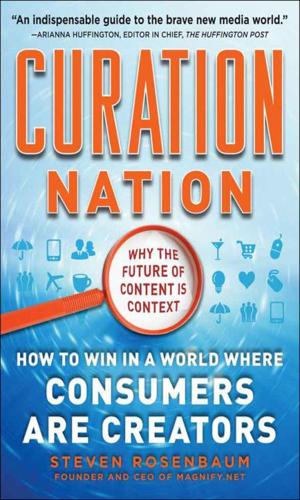
Curation Nation
by
Rosenbaum, Steven
Published 27 Jan 2011
Says Blau, “It used to be it was expensive to create and expensive to distribute—to amplify speech—was held in very few hands, held to high standards by people, by governments or by societies. That meant that very few people had that opportunity to amplify speech. Now that cluster, that nexus, has been irretrievably broken.” Today publishing tools have been set free, Blau says. Cost, ownership, and barriers to entry are all gone, almost overnight: “The ability to amplify one’s voice, to amplify that beyond the reach of what we have had, reflects a change of course in human history. A lot of the discomfort people have about the kind of current riot of voices is that it’s irresponsible, it’s dumbing us down.
…
But Jarvis goes on to connect all this to Madison Avenue, seeing a battle ensuing between old-media companies moving online and emerging complete new-media outlets. Says Jarvis, “What excites me most is that reduced cost of production. That’s really what drove Weblogs: history’s cheapest publishing tool reduced the barrier to entry-to-media and allowed anyone to produce and distribute text content. Now this will come to video … A half hour of how-to TV that now costs X hundreds of thousands of dollars to produce can be done quite respectably—and probably with more life and immediacy—for a few thousand dollars. New content producers will pop up all over, just as they did in blogs, and now they can distribute their content freely thanks to BitTorrent.
…
“What’s so interesting about Twitter,” O’Reilly says, “is that it reflects all the many, many use cases, including spreading misinformation as well as being the first alert of new information.” No longer is a source trusted because it has the power or money to access the publishing ecosystems of TV, radio, or print. Anyone can use Twitter—there’s no barrier to entry. “I know people like me who are using it as a way of sharing my thought processes—what I’m learning, what I’m reading, what I’m caring about. I’m using it as a publishing medium really,” O’Reilly says. “And I’ve described my own work with Twitter as being the most minimal newspaper. A publisher pays attention to a community, whether it’s a community of authors or a community of newsmakers.
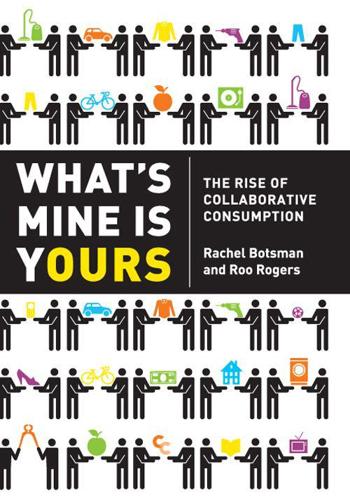
What's Mine Is Yours: How Collaborative Consumption Is Changing the Way We Live
by
Rachel Botsman
and
Roo Rogers
Published 2 Jan 2010
If you need to trim a hedge, do you buy a trimmer from Home Depot for about $140 or rent one for $8? More and more consumers are renting, and when they rent, they experience firsthand that they don’t need to buy and own to have what they want and get what they need. Access becomes the privilege and ownership the burden. Removing Barriers to Entry Another category of usage PSS removes a common barrier to entry, whether that obstacle is price, availability, or even social status. Take public libraries, one of the oldest forms of product service systems. Many of the town libraries of the early 1600s were not open to the general public but were accessible only to scholars, who often had to review books in situ.
…
There are many scenarios where the market is ripe for this type of PSS, including when the product has “high idling capacity” (cars or household tools); when the product has a limited use because of fashion (handbags) or it fulfills a temporary need (baby equipment and maternity clothes); when the product diminishes in appeal and value after usage (a movie); and when high start-up or purchasing costs for products are the barrier to entry (solar panels). The second model is an “extended-life” PSS. Here an after-sales service such as maintenance, repair, or upgrading becomes an integral part of the product’s life cycle, thereby reducing the need for replacement or disposal.9 Products that are expensive or require a specialized knowledge to repair (electronic goods) or products that need to be updated or frequently maintained to preserve their appeal (furniture) are well suited to this type of product service system.

We-Think: Mass Innovation, Not Mass Production
by
Charles Leadbeater
Published 9 Dec 2010
The scene would have resembled a large, sandy beach, with crowds organised around a few very large boulders. These boulders were the big media companies. The boulders came into being because media had high fixed costs – print plants for newspapers and studios for television. They were closely regulated and resources, like broadcast spectrum, were scarce. All that created high barriers to entry. Anyone trying to set up a significant new media business could be seen coming from a long way off. Rolling a new boulder onto the beach took lots of people, money and machinery. In the mid 1980s an entrepreneur called Eddie Shah tried to roll a boulder onto the British beach by setting up a national newspaper based in northern England.
…
On popular beaches people spend all day in close proximity but generally remain civil and considerate. Precisely because there is no one in control – other than sometimes lifeguards looking after safety – people take it upon themselves to self-regulate. Beaches are generally egalitarian in spirit because barriers to entry are quite low. Normal rules do not apply because there is no private property. A public beach is a commons for pleasure. Many public events and spaces – festivals and carnivals, parks and libraries – thrive on this ethic of mass self-regulation. The web is bringing the spirit of the beach into the sharing of ideas and information.
…
So on balance, will the open web be good for democracy? Yes, it will. Equality The Utopian hopes invested in the web’s democratic potential are matched by claims for its capacity to promote equality by breaking down concentrations of power based on information and knowledge, and lowering barriers to entry into the market-place for ideas. In a global economy that trades information and ideas as much as raw materials and physical goods, anyone with a computer and a modem can become a participant. At least that is the theory. There are serious doubts as to whether the web will do much to make the world less unequal and make any difference to the most pressing problems facing the poorest societies in the developing world.

After the Gig: How the Sharing Economy Got Hijacked and How to Win It Back
by
Juliet Schor
,
William Attwood-Charles
and
Mehmet Cansoy
Published 15 Mar 2020
TaskRabbit has more autonomy and better hourly wages than Uber/Lyft or Postmates/Favor, with respondents reporting a floor of twenty dollars to twenty-five dollars an hour. There’s debate about hourly wages in ride-hail. Early on they were higher than on delivery platforms, which hover in the fifteen-dollars-per-hour range. But as we’ll see in a moment, drivers have been squeezed, and their operating costs are high. Barriers to entry also roughly align with our ranking, with Airbnb having the highest requirement (a rentable space), TaskRabbits generally having at least a college degree, and ride-hail drivers needing a late model car.68 Some of our participants who had experience with multiple platforms referenced this hierarchy in their interviews.
…
5 Disruption or Social Reproduction? From the beginning the companies spun narratives of virtuous disruption against entrenched interests. Technology resulted in more value going to producers and consumers, because it cut out the “middleman.” Ride-hail apps were upending the taxi monopoly, which unfairly benefited from barriers to entry. Airbnb was “combating” the squeeze on the middle class with a new source of income that allowed people to retain ownership of their homes, finance health insurance, or buy food.6 Disruptionists touted the superiority of platforms over the “legacy”—that is, conventional economy—on grounds of inclusiveness.
…
Decades of caps on taxi licenses, racial discrimination by drivers, and coziness with regulators had eroded public support for the industry. That was partly due to widespread amnesia about why licenses were limited in the first place, which is that in the 1930s, when men were desperate for work and flooded into driving, oversupply drove incomes down to unsustainable levels. In sectors with low barriers to entry where the required skills are widely available, competition can become “ruinous” and result in poverty wages. That dynamic is the origin of taxi regulation and the basis on which driving became a viable occupation. By breaking the law, Uber and Lyft destroyed that viability, and we’re now seeing their drivers subjected to a similar race-to-the-bottom.27 And what the ideological high ground can’t accomplish, money can.
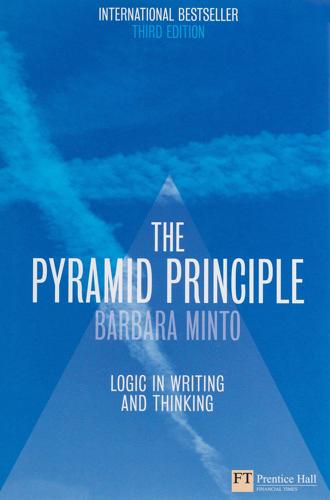
The Pyramid Principle: Logic in Writing and Thinking
by
Barbara Minto
Published 2 Jan 2010
Our Conclusions I. 2. 3. 4. Mcuket is large and grmving at an attractive t\1te Aftermarket is profitable Key m.arket characteristics indicate high barriers to entry Overall trends are favorable, but uncertainties obscure smne market segments' outlooks 5. Overall, the m.arket appears attractive, but is highly fragmented. Again the ideas fall into two groupings: ~~ Positive points: large, growing, attractive, profitable, favorable trends, attractive (1, 2, 4, 5) ar Negative points: high barriers to entry, uncertainties, fragn1ented (3, 4, 5) VVe can sun1n1arize the positive points in1n1ediately. Clearly, if the n1arket is large, growing, and profitable, it is attractive.
…
Visualize the attractive tnarket as a circle. The negative points don't group so easily. Fragmented means that the circle must have son1e segn1cnts in it, but uncertainties obscure son1e of the segtnents' outlooks. This n1eans son1e of the segn1ents n1ust look different fron1 the others, as shown belovv. _FinallY" there are barriers to entry, which can be shown with a line stopping entry. Tf;c rn;Hket dlff:( '.1!\ tO IS Only some parts E:!"l\ci ...............•...• ----~ ··~~ of the rnarkct me attr·actiVf:) 116 Now it is time to see if the tvvo points relate inductively. VVhut conclusions can we draw front this visualization?
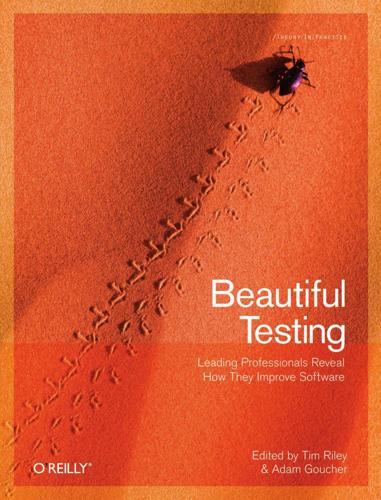
Beautiful Testing: Leading Professionals Reveal How They Improve Software (Theory in Practice)
by
Adam Goucher
and
Tim Riley
Published 13 Oct 2009
As some people leave the project, others step in to take their places, and this continuous cycle of new developers and casual submitters is what keeps Python alive.* Thus the project’s very existence depends on keeping the barriers to entry low so that those who have a limited interest in contributing to Python aren’t scared away. Comprehensive tests not only protect Python against mistakes that could be made by new contributors who are unfamiliar with the code base, it also helps lower the barrier to entry for these new contributors. It is much more reassuring to make a change to a complex code base if you’re able to run tests against your change and satisfy yourself that your change did not break anything.
…
You Are Always Recruiting This is very self-explanatory. Everything you do on your project must be with an aim to build your volunteer base. This means not only being welcoming when you are in a public space, but it also means getting to know people personally. It means unceasingly hunting for ways to lower the barrier to entry on your project. So for every event we did, we always ensured that we gave people a simple, easy-to-understand way to contribute. We always gave plenty of detailed instructions. We always looked at how to make things easier and easier. Our home channel on IRC was more like a giant group of people sitting in a living room around a burning fire than a workplace.
…
The documentation has proven to be very comprehensive, and the community responsive. 292 CHAPTER TWENTY-ONE Comparison There are many solutions out there for testing web applications in the browser: Watir, Selenium, Twill, and WebDriver, to name a few. Although they all have strengths and weaknesses, Windmill clearly has some very useful features, and appears to have the least barriers to entry for new test writers, regardless of the platform or browser they need to test on. Windmill boasts a recorder, integrated Firebug Lite, integrated inspector, and support for crossdomain and SSL testing. However, unlike Watir, Windmill operates within the content security model, which means that it can’t access some parts of the browser, such as the confirmation dialog or file uploads.

Bank 3.0: Why Banking Is No Longer Somewhere You Go but Something You Do
by
Brett King
Published 26 Dec 2012
Table 1.1: Comparison of Product Application Approval Times Product 1980 2008 Credit Card 14 days Instant approval Personal Loan 7–14 days Pre-approved, or 24 hours Home Mortgage 30 days+ 24 hours41 These product application approval times are indicative of the pressure on financial service providers to adapt to the changing expectations of customers, and the need to stay competitive. Barriers to entry are lowering, and new innovations in business models are creating pseudo banking services streamed right to our desktop, supermarket or corner 7-Eleven store. Here’s how I articulated this disruption for bankers in my last book, Branch Today, Gone Tomorrow: “Everything about retail financial services that relies on outmoded physical artefacts, proprietary and outdated networks, and processes that are complex and unwieldy—all lend themselves to disruption.
…
Once a small retailer or local merchant is regularly using his phone to accept “swipe” payments (such as with Square), it’s then a very simple shift for the merchant to accept payments via a consumer tapping their phone (instead of a swipe). Technology such as PayPal and Pay with Square even allow payments just using our phone number or name—no physical interaction required. Once the merchant is accepting payments via a smartphone, there’s virtually no ongoing barrier to entry—i.e. the merchant doesn’t need to invest in a sophisticated POS terminal and such. PayPal has already deployed its supposed “Square competitor”—the triangle—and is aiming to compete in this phone-to-POS space in the near term. In Europe this has spawned iZettle—an EMV equivalent of the Square device in the United States.
…
The reason for this perspective, particularly in the US, is that right now US mobile carriers are attempting to restrict mobile wallet operations on their networks. Ultimately, these current attempts are likely to end in nought for any number of reasons, but mostly because the mobile payments market will continue to fragment. The number one reason, however, is that, unlike the credit and debit card industry, historically, the barriers to entry are extremely low. Let me explain. When MasterCard and Visa emerged in the 70s and 80s, they had a whole infrastructure to build. Merchants didn’t have point-of-sale capability to capture credit card payments. In those days there weren’t even networks to process those card payments. I’m sure many of us remember those so-called “flatbed manual imprinter” machines.
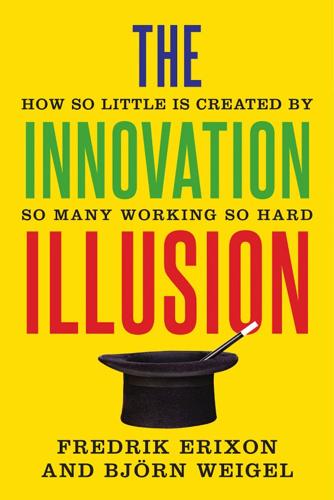
The Innovation Illusion: How So Little Is Created by So Many Working So Hard
by
Fredrik Erixon
and
Bjorn Weigel
Published 3 Oct 2016
It was too profitable to abandon. There are companies that manage to combine global scale and specialization with the ethos of creative destruction, but most firms do not. For those that have successfully reached global scale there is usually a far more pressing preoccupation: ensuring that the barriers to entry are so high and thorny that new rivals will not bother to cross into their territory. Protecting markets can be difficult, and big companies can fail to do it even in markets where competition is concentrated among a few big players. Over the last decades, however, firms have become more skilled at market and incumbency protection (see Chapter 5) and they invariably use the same formula as Nokia: increasing production specialization and optimization.
…
The political opposition to Uber reveals a banal but rarely observed point about regulation: regulated markets do not sit comfortably with innovation and an ambition to contest them. And Uber’s story is a telling example of how regulation – intentionally or not – preserves a particular form of market behavior and puts up barriers to contestable innovation. That is all too often true even with the benign form of regulation. For example, regulation tends to increase the barrier to entry for the simple reason that the cost of regulation per employee or unit of sale is higher for a new small entrant than an incumbent firm. Both economic and social regulations have that effect. A survey by the OECD, for instance, estimated the annual regulatory administration cost per employee to be about nine times higher for a company with fewer than 20 staff than for a company with a workforce of 50–499.12 Less benign regulation preserves an existing market order by protecting investors and labor from competition, including competition from innovation.
…
In this view, regulators and politicians will embrace the new innovation, regardless of its impact on competition, and allow timely and undisrupted access to consumers. Markets will thus flourish naturally on the back of innovation – and the speed at which innovation can ripple through various markets will not get arrested by policy barriers to entry. Even if there may be some initial resistance, the paradigm of the planning machine holds that technology will inevitably trump politics. In the battle between innovation and existing policy or market hierarchies, innovation will always win. It is a romantic view of politics – and that bee has stung a good part of the tech commentariat.
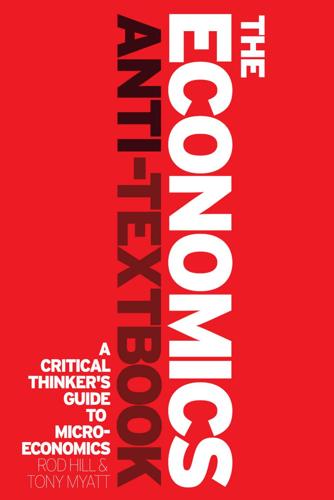
The Economics Anti-Textbook: A Critical Thinker's Guide to Microeconomics
by
Rod Hill
and
Anthony Myatt
Published 15 Mar 2010
This is the case for any non-competitive firm. 1.4 Monopoly Monopoly is the simplest non-competitive market structure since, by definition, there is only one seller. Maintenance of a monopoly position requires barriers to entry associated with: (1) control over at least one crucial input; (2) economies of scale; (3) technological superiority; or (4) a government-created barrier such as patent protection. If the barriers to entry are low, the market may be ‘contestable’, causing the monopoly to behave more like a competitive industry. To keep things simple, we’ll focus on the case where barriers to entry are high. 123 6 | Market structure and efficiency reason for this key feature is that competitive firms take the market price as given, whereas non-competitive firms do not.
…
Lower costs are possible if there are synergies or economies of scale or if the monopoly is the result of technological superiority. On the other hand, Leibenstein (1966) has suggested that monopolists may have less incentive to keep costs down. Management may become bloated. Such effects are known in the literature as X-inefficiencies and are particularly likely where barriers to entry are high. 136 Question for your professor: With regard to the deadweight loss supposedly associated with monopoly, is there either evidence or theory to suggest the monopolist would have the same demand and the same costs as the perfectly competitive industry with which it is compared? 137 6 | Market structure and efficiency Historically, economists have recognized that the assumption that costs are independent of the market structure is not true.

Democracy and Prosperity: Reinventing Capitalism Through a Turbulent Century
by
Torben Iversen
and
David Soskice
Published 5 Feb 2019
The 18 domains covered by these areas are: (1) scope of state-owned enterprises (SOEs); (2) government involvement in six network sectors (electricity, gas, rail transport, air transport, postal services, and telecommunication); (3) direct control over business enterprises; (4) governance of state-owned enterprises; (5) price controls; (6) command and control regulation; (7) licenses and permits systems; (8) communication and simplification of government rules and procedures; (9) administrative burdens for corporations; (10) administrative burdens on creating an individual enterprise; (11) entry barriers in services sectors; (12) legal barriers to entry: (13) antitrust exemptions; (14) barriers to entry in network sectors; (15) barriers to FDI; (16) tariff barriers; (17) differential treatment of foreign suppliers; and (18) barriers to trade facilitation (see Koske et al. 2015 for more detail). The summary measure is a weighted average across the three areas and varies between 0 and 6, where 0 is the most procompetition regulatory framework and 6 is the most anticompetition framework.
…
This is facilitated by high local autonomy in school funding and setting the school curriculum, but it is also affected by city planning and zoning regulations that affect the class composition of school districts. The more differentiated school districts are, the greater the incentive of those families from higher educational backgrounds and with higher income to locate in good school districts, which bids up house prices and creates barriers to entry for families from lower educational backgrounds and with lower income. As the last example suggests, the consequences of these institutional differences are strongly magnified by self-reinforcing strategic complementarities. Class differentiation by the quality of school districts is an example of Tiebout’s (1956) sorting mechanism, and it is reinforced when the income distribution responds to a more unequal skill distribution, strengthening incentives to sort, driving up house prices further, etc.
…
The private versus public shares of this rising investment in education vary across countries. In continental Europe almost all spending is public, whereas in the Anglo-Saxon countries and in Japan and Korea a substantial share is private. Generally speaking, the higher the private share the greater the barriers to entry into tertiary education for low- and lower-middle-income families. In chapter 5 we show that this is an important determinant of the extent to which populist values have taken hold in the transition to a knowledge economy. 5. The economy-wide regulation index is based on more than 700 questions that are asked member governments in 18 regulatory domains, which are aggregated into three broad regulatory areas: (1) state control, (2) barriers to entrepreneurship, and (3) barriers to trade and investment.
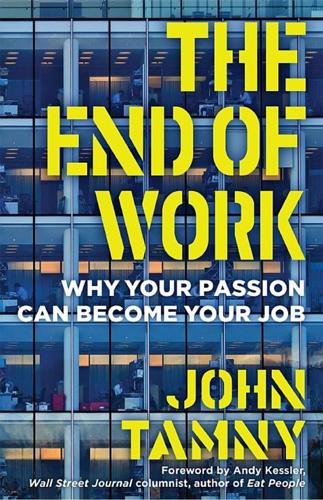
The End of Work: Why Your Passion Can Become Your Job
by
John Tamny
Published 6 May 2018
—cost $8,499, monitor and mouse not included.38 The smartphone in your pocket today would have qualified as a supercomputer then—if they could have built it, which they couldn’t. The technological advances make programs easier to consume, of course, but they also make it easier to produce, lowering the barriers to entry in the entertainment business. More directors, writers, and actors will get to pursue their passion. Millie’s interest in acting becomes more plausible by the day. Jay Leno retired from hosting NBC’s Tonight Show in 2013. In 2016, he unveiled Jay Leno’s Garage, a show about his love of cars and motorcycles.
…
No one had heard of this profession a few years ago, but Marie Claire magazine’s Jo Piazza reports that influencers can now make “serious bank” for posting their fashion and food likes on Instagram, Twitter, and other social media sites.28 Kylie Jenner launched a line of cosmetics in 2015 and within eighteen months hit $420 million in sales with the help of 99 million followers on Instagram.29 You don’t have to be a celebrity like Kylie to enjoy this lucrative, high-living career. There are no barriers to entry. Giant cosmetics companies are starting to notice what I call “pajama entrepreneurs.” The New York Times reports, “Some cosmetic companies have flown groups of influencers to Bora Bora; Necker Island, the private enclave of Sir Richard Branson in the British Virgin Islands; and Kauai in Hawaii for lavish, all expense paid vacations.
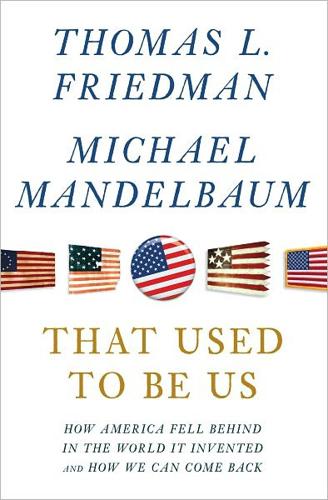
That Used to Be Us
by
Thomas L. Friedman
and
Michael Mandelbaum
Published 1 Sep 2011
“We are in business to help other businesses,” explained Lesk, an expert in putting together real estate transactions involving tax credits to generate financing for community-oriented developments, such as low-income housing. “And what we are finding is that the core of American business is changing—the repeat deals, involving similar structures, are fewer and farther between. There is more competition, barriers to entry are lower, our clients are reaching out to us for new ideas now much more frequently.” His law firm therefore has to be more creative and nimble in every way. For instance, says Lesk, his firm was a pioneer in putting together low-income housing credits with solar-energy credits in order to finance affordable housing for low-income people that would also come with solar-powered energy.
…
Lesk continued: “Necessity is the mother of invention and we are in the age of great necessity because little that was given in the past is given today—whether it is fees, types of projects, the structure of deals, or availability of financing. I have worked with tax credits and affordable housing for twenty-five years. It was a specialized field and for a long time it had a reasonably limited number of players. Today it changes frequently and the barriers to entry are so low that we have all kinds of new competitors, and not only law firms.” His firm’s new chief innovation officer will lead a program to recruit, coach, and inspire lawyers so that they will not only do today’s standard legal work but also invent tomorrow’s. Those qualifications are already being taken into consideration when the firm determines annual pay and bonuses for its lawyers.
…
Now it describes a hardware company, too. “Hardware is becoming much more like software,” as MIT professor Eric von Hippel puts it … We’ve seen this picture before: It’s what happens just before monolithic industries fragment in the face of countless small entrants, from the music industry to newspapers. Lower the barriers to entry and the crowd pours in. But some people are not risk takers—not resilient or entrepreneurial enough to start a new company from scratch. That’s okay. In that case, though, they need to re-create themselves within their existing company or line of work by taking a routine creator job or routine server job and turning it into something special for which people will want to pay extra.

Lean Analytics: Use Data to Build a Better Startup Faster
by
Alistair Croll
and
Benjamin Yoskovitz
Published 1 Mar 2013
Lean Canvas and relevant metrics Lean Canvas box Some relevant metrics Problem Respondents who have this need, respondents who are aware of having the need Solution Respondents who try the MVP, engagement, churn, most-used/least-used features, people willing to pay Unique value proposition Feedback scores, independent ratings, sentiment analysis, customer-worded descriptions, surveys, search, and competitive analysis Customer segments How easy it is to find groups of prospects, unique keyword segments, targeted funnel traffic from a particular source Channels Leads and customers per channel, viral coefficient and cycle, net promoter score, open rate, affiliate margins, click-through rate, PageRank, message reach Unfair advantage Respondents’ understanding of the UVP (Unique Value Proposition), patents, brand equity, barriers to entry, number of new entrants, exclusivity of relationships Revenue streams Lifetime customer value, average revenue per user, conversion rate, shopping cart size, click-through rate Cost structure Fixed costs, cost of customer acquisition, cost of servicing the nth customer, support costs, keyword costs Sean Ellis’s Startup Growth Pyramid Sean Ellis is a well-known entrepreneur and marketer.
…
While no business is as clear-cut as the penny machine, every CEO needs to make his business model as straightforward as possible, particularly to outsiders, so it’s painfully obvious why the venture will yield revenues. The entrepreneur had reasonable answers to key questions: how big can the business grow, how good can the margins get, and what kinds of barriers to entry does it have? The presenter engaged the audience, and let them help her tell the story. They were smart people who asked the questions she wanted, and she showed them that she’d anticipated their questions by providing slightly more detail than they asked for without going into too much depth.
…
These might not seem like Lean pivots, but they’re done with the same kind of discipline and experimentation that informed your earlier product and pricing decisions. If you’re in a good business, you’ll soon have an ecosystem of competitors, channel partners, third-party developers, and more. To thrive, you need to claim your place in this market and establish the kinds of barriers to entry that maintain margins in the face of competition. At this point, you’ve moved beyond the Lean Startup model, but that doesn’t mean you’ve stopped obsessing over iterative learning. Scaling is good if it brings in incremental revenue, but you have to watch for a decrease in engagement, a gradual saturation of the initial market, or a rising cost of customer acquisition.
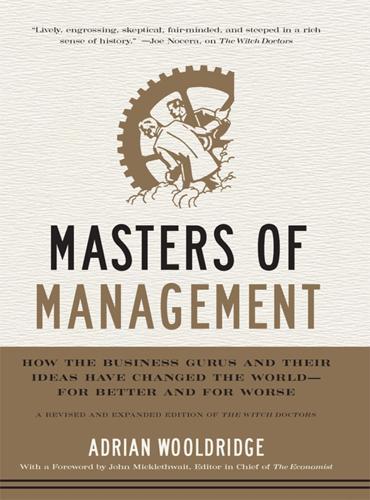
Masters of Management: How the Business Gurus and Their Ideas Have Changed the World—for Better and for Worse
by
Adrian Wooldridge
Published 29 Nov 2011
We can expect thousands of imitators in the future: the Threadless model is perfectly suited to an industry with low barriers to entry, large supplies of underemployed designers, and a limitless demand for nanosecond novelty. Don Tapscott and Anthony Williams argue that “crowdsourcing” represents a new phase in business history: by radically reducing the costs of collaboration, the Internet is forcing companies to transform themselves from hierarchies (which point inward and upward) into networks (which point downward and outward). The Web reduces—and often obliterates—barriers to entry by giving amateurs access to world-class tools and worldwide markets; it makes it easy for large groups of people to collaborate; and it supercharges innovation: crowds of people can develop new ideas faster than isolated geniuses and disseminate new products faster than most companies.
…
Anderson followed The Long Tail with Free: The Future of a Radical Price (2009). Free is essentially an extended meditation on an idea that has long been popular in tech circles—that “information wants to be free”; that digital technology is making it ever easier to store and distribute anything that is “made out of ideas,” smashing barriers to entry, destroying business empires, and driving the price of information down toward zero. Anderson’s take on “free” is a mixture of fatalism and techno-utopianism. His advice to people who worry about piracy is brutal: get over it. Stop fighting the inevitable and start reconceptualizing piracy as a marketing opportunity rather than a threat.
…
He did not buy his first apartment until he was sixty-seven, spent most of his life living in hotels or bunking down with clients, and got his assistants to keep him supplied with freshly laundered clothes by courier. The gurus’ enormous commercial success and the variability of their output are linked. The combination of easy money and low barriers to entry means that charlatans flock toward the discipline even as genuine scholars flee from it in disgust. So far, management theory has produced only one “great” thinker, Peter Drucker. But Drucker was unique in both his background and his temperament: a Viennese-born intellectual who was introduced to Freud and Wittgenstein in his childhood and who fled Nazi Germany while a young man, he was also an extraordinarily self-contained figure, living most of his life in a modest house in a California suburb.
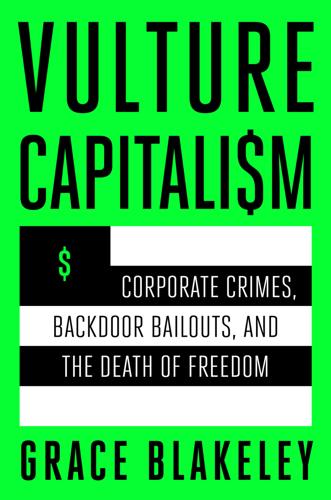
Vulture Capitalism: Corporate Crimes, Backdoor Bailouts, and the Death of Freedom
by
Grace Blakeley
Published 11 Mar 2024
A sufficiently large producer can set the prices it pays to suppliers, and those it charges to consumers, without much pressure from the market. A sufficiently large financial institution has the power to direct investment into certain technologies and therefore to determine which futures are available and which ones are foreclosed. And all these firms can consolidate their power by buying up competitors, erecting barriers to entry, and crushing workers’ attempts to organize, further insulating them from competitive pressure and giving them significant authority both within their domains and over society as a whole. But isn’t there a fundamental difference between state planning and corporate planning? To return to our original questions, isn’t private planning undertaken in service of different interests than planning undertaken by a central state?
…
It’s a giant conglomerate with sales in multiple markets, but it is also a market itself. Amazon is clearly not a small price-taking firm automatically translating inputs into outputs, as firms are depicted within microeconomics. But neither can it be understood as a traditional monopoly: its strategy isn’t to enclose a single market, erect barriers to entry, and raise prices—it’s to dominate the market for everything. In fact, the company was not even profitable for much of its history. Amazon survived despite market forces, not because of them. Even today, its structure looks highly irrational: certain areas, like Amazon Web Services, are highly profitable, while services like Prime have made large losses.
…
And this observation is borne out by the evidence: the average age of a public company in the US was eighteen years in 2019, up from twelve years in 1996.71 The problem with the idea of temporary monopoly is that even allegedly temporary monopolists have the power to “lock in” their past successes. When a firm makes excess profits, it can use these profits to erect barriers to entry for other companies, or simply buy up its competitors, making it better able to dominate the markets in which it operates.72 Large incumbents do not, as Schumpeter argued, have to continue to innovate to remain on top—in fact, the evidence shows that competition is far more likely to spur innovation than monopoly power.73 Monopolistic firms are much more likely to buy up or eliminate their rivals, “[embed] their own technology in the industry” and “[control] the dissemination of ideas” than they are to genuinely innovate.74 In Schumpeter’s model, crises are supposed to clear out uncompetitive monopolists, but monopolists are actually better able to survive crises than smaller firms.
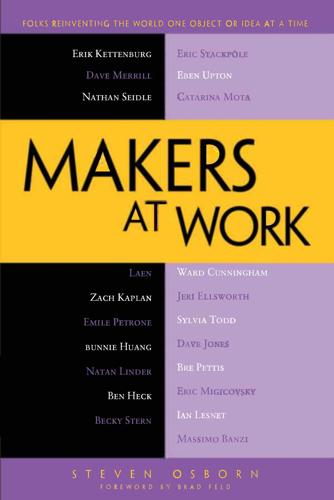
Makers at Work: Folks Reinventing the World One Object or Idea at a Time
by
Steven Osborn
Published 17 Sep 2013
So I guess that third category is partly the new development tools, but the point is that there’s this movement happening that’s getting bigger and bigger, and is fundamentally about lowering the barriers to entry for people that want to build new things with hardware. I’m really excited about that because I think the kinds of devices that we’re going to see come out of this are going to be really different—it’s going to be like the personal computer era again, but a much more wildly varying set of systems and devices. I think that’s going to be exciting. Osborn: When you mention all the new development platforms. The key to me is not that there are so many more of them, but that it doesn’t cost $2000 anymore to go get a development kit to start. Your barrier to entry is as low as a $20 bill.
…
I’ve been watching one called the Galago6 that’s particularly interesting to me because it has the same kind of microcontroller in it as the Sifteo Gen2 Base, but with the Galago, you fire up the development environment in a browser window on your computer. It talks to the hardware and lets you debug it the same way you’d expect to debug a software application. I think that’s pretty exciting. It’s basically reducing the barriers to entry for people that want to work with hardware. I think that is going to be just as empowering as what happened in software, especially as the Internet took off. We’re starting to see it now with the wave of hardware startup companies—like Sifteo, like Fitbit, MakerBot—that are popping up and growing big, and showing that there’s a world of startups that can actually make physical goods because the development of the Internet makes it possible to market them to the entire world and get it out there fast, in a way that you just couldn’t before.
…
It’s just being accelerated in the same way as what happened with desktop publishing, because the cost of these tools is so cheap and the Internet and computing are ubiquitous. As you’ve seen, you can buy a CNC laser for $2,300, and we’re selling a $900 3D printer and a $600 CNC mill. If you can afford an Xbox, you can afford a mill. Most people interested in these kinds of things already have a computer, so the barriers to entry are extremely low just to get started. There are free versions of all the software you need. It really comes down to, “Are you passionate? Are you interested? Do you have ideas of what you want to make?” Then, when you start seeing people going on Kickstarter and raising all this money, like $9 million for an open-source gaming console, you know, people start to take notice.

What Would Google Do?
by
Jeff Jarvis
Published 15 Feb 2009
They all want to control the internet because that is how they view their worlds. Listen to the rhetoric of corporate value: Companies own customers, control distribution, make exclusive deals, lock out competitors, keep trade secrets. The internet explodes all those points of control. It abhors centralization. It loves sea level and tears down barriers to entry. It despises secrecy and rewards openness. It favors collaboration over ownership. The once-powerful approach the internet with dread when they realize they cannot control it. The internet adds networks of links over society, connecting people with information, action, and each other. It is in those connections that value is created, efficiency is found, knowledge is grown, and relationships are formed.
…
Revision3 started on a shoestring but received a reported $9 million investment to create more shows, build a studio, and hire its CEO. It’s still run on a shoestring, CEO Jim Louderback told me. “The story of the internet,” he said, “is ruthlessly efficient business models and blowing away barriers to entry and access.” Revision3 saved money on equipment, which Louderback credited to Moore’s Law. Intel’s Gordon Moore decreed in 1965 that the number of transistors and thus the computing power on a chip would double every two years (this law enabled Google and the internet to exist and led to every law in this book).
…
I get a headache reading the popular blog TechCrunch, which covers new web 2.0 companies, because I can’t hope to keep track of them all: mobile companies, social companies, companies dedicated just to managing blog comments. The low cost of launching and running new enterprises means they can serve niche needs in a small-is-the-new-big age. But the barrier to entry to competitors is also about a millimeter off the ground. It’s harder than ever to figure out which of many competitors in a space will win. So investors need to use a wider network of trusted people to help find and then manage new companies. Taking investment capital from these trusted agents and giving them a share of the profits if their finds pay off could form a network of miniVCs backed by the bigger VC.
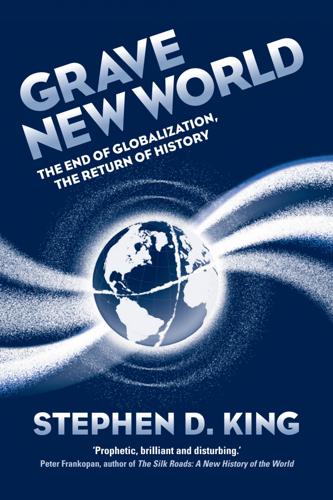
Grave New World: The End of Globalization, the Return of History
by
Stephen D. King
Published 22 May 2017
It is not so surprising, then, that some of them may abandon ship in the event that a populist party or a charismatic politician comes along promising them something that the mainstream parties had simply not bothered with. No one likes to be ignored forever. Social media cuts both ways. It allows advertisers – and mainstream political parties – to target specific audiences to maximize their goals, whether they happen to be profit or power. Yet it also brings down ‘barriers to entry’, allowing challenger businesses, charismatic political personalities and newly formed political groupings to enter the fray. These new entrants necessarily threaten the existing order not just locally, but also globally. And their quest is likely to be aided by the impact of technology on global supply chains.
…
By reducing the cost of information – and by creating global online ‘hubs’ like Alibaba and Amazon, where buyers and sellers can ‘virtually’ meet one another – the global marketplace should expand, competition should intensify and pricing should become more transparent. All in all, the allocation of resources should improve, leaving output higher, prices lower and everyone – other than inefficient rent-seeking companies – happier. Yet this argument assumes that technology only works by reducing barriers to entry, limiting information asymmetries and encouraging price discovery. That’s much too narrow a view. Technology also fundamentally alters production techniques and hugely skews the distribution of income and wealth. In both cases, technology can be enormously damaging to globalization. The decision on where to locate production facilities ultimately depends on a trade-off between the forces of dispersion and agglomeration.
…
Too much economic analysis habitually assumes that whilst human beings may have differing tastes, they are nevertheless all ‘super-rational’ and at all times are trying to ‘maximize their utility’. Any basic microeconomics textbook will argue that utility maximization is most likely to be achieved in a world of perfect competition where there are no ‘barriers to entry’, including, most obviously, the borders that surround sovereign nation states. This is, of course, mostly nonsense. Human beings tend instead to use simple rules of thumb – or, to use the jargon, heuristics – to make decisions. Often, those rules of thumb are so deeply embedded in the subconscious that we are blissfully unaware of what is going on.
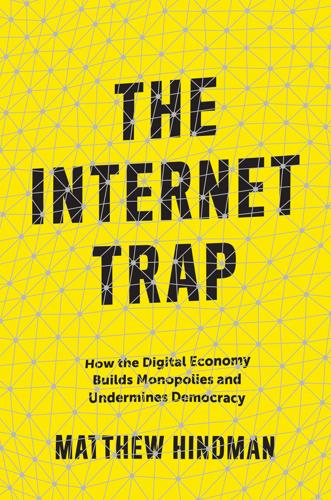
The Internet Trap: How the Digital Economy Builds Monopolies and Undermines Democracy
by
Matthew Hindman
Published 24 Sep 2018
Yet if folk theories of the internet are correct, Google’s data factory in The Dalles should not exist. 16 • Chapter 2 We have been told—again and again—that the internet is a “postindustrial” technology. Online there is supposedly no need to spend millions on broadcast towers or printing presses or similar capital equipment.2 With the industrial economics that homogenized print and broadcast media gone—so the story goes—barriers to entry fall and audiences radically spread out. Google’s data center at The Dalles stands in contradiction to this fable. Google’s facility is exactly what it looks like: an industrial mill, a digital smelter refining not ore but information. Google’s data factories are just as critical for it today as broadcast equipment was for nbc in an earlier era.
…
These patterns force us to rethink much of the supposed wisdom about what a “dynamic” and “constantly changing” internet means for politics, business, and the public sphere. This chapter’s key findings can be summed up in three stylized facts. First, large sites show much more stable traffic than smaller sites. The smaller a site’s audience, the more variable its future traffic. Many still proclaim that the web is a rapidly changing environment, that barriers to entry are low, and that popular new sites emerge often. Our data show that this is false. It is rare for a site to enter or leave the top 100 • Chapter 5 ten. Indeed, these data capture the last major shift in the top websites, the decline of MySpace and the rise of Facebook. No change since has come close.
…
Some U.S. commentators and Google itself have archly suggested that the EU’s decision was motivated by protectionism. Yet the EU’s decision is sound, according to both U.S. and EU rules. Google’s durable market power is crystal clear if we judge internet firms by the same rules as every other industry. Other firms’ factories are seen as barriers to entry, but Google’s data factories are somehow left out of the analysis. Microsoft’s multimillion-line code base and army of locked– in customers are viewed as durable advantages; Google’s somehow are not. The biggest digital firms are all marketmakers that take roughly a third of all revenue that moves through their ecosystem.

The Warhol Economy
by
Elizabeth Currid-Halkett
Published 15 Jan 2020
. © Frederick McSwain. Used by permission. Art and culture thrive in almost bifurcated economies. They are most creative when rents are depressed, gallery space plentiful, and gatekeepers and fledgling artists are able to engage in the same spaces. These conditions lead to what economists call low barriers to entry, which means that the only requirement to participate in the cultural economy is being creative. Because in depressed economies there is no cost-prohibitive factor, huge influxes of talented artists could flood New York, increasing the chances of more creative and interesting work to occur. This most vividly occurred during the East Village art movement of the late 1970s and early 1980s and during the Abstract Expressionism of the 1950s.
…
But policymaking must take its place such that new creative people are actually able to move into the city and afford rent and studio space, and that neighborhoods that have been home to dense artistic communities do not all go the way of SoHo, replacing art galleries with Banana Republic. In other words, policymaking must cultivate the density, low barriers to entry, open nightlife and social environment that have been the pivotal forces in maintaining New York City’s creative edge. From zoning that helps (not hinders) nightlife districts to creating more subsidized housing and studio space for artists, designers, and musicians to more city support for cultural events such as Fashion Week and the Whitney Biennial, policymaking can facilitate many of the mechanisms by which the cultural economy operates most effectively.
…
In the last 150 years, New York City’s creative scene has been focused and refocused and reconstructed over and over again and yet, whether it is Duchamp’s Dada, Duke Ellington’s jazz, Bob Dylan’s socially charged Greenwich Village, Warhol’s Factory, or the pop-street-high art of Ryan McGinness, art and culture exhibit similar tendencies regardless of what genre or form they take. They are social and fluid and operate without boundaries across different cultural forms, and work best when there are low barriers to entry for all types of culture and when they are not inhibited by social or economic restraints. But why New York’s art and culture should matter to the city as much today as 150 years ago is a far larger issue than its scene or coolness factor. That these industries provide jobs and revenue and real economic advantage to New York City is the other big part of the story, and a topic I will now turn to.
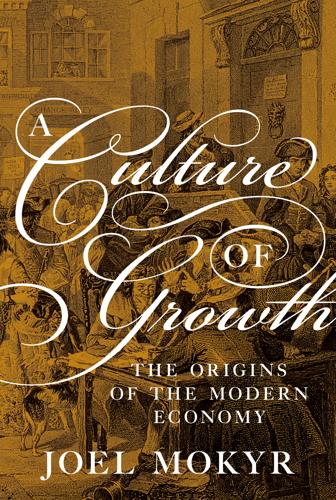
A Culture of Growth: The Origins of the Modern Economy
by
Joel Mokyr
Published 8 Jan 2016
Chapter 11 Fragmentation, Competition, and Cultural Change As we have seen, one bias in cultural evolution is what I call coercion bias, the ability of those in power who have a strong stake in the cultural status quo—be it religious, artistic, or scientific—to suppress innovation and persecute heterodox cultural entrepreneurs who deviate from the received wisdom. Innovations can undermine an existing structure of beliefs and in the process “erode beliefs” that provide certain groups with rents and legitimization (Benabou, Ticchi, and Vindigni, 2014). Another way of looking at this bias is to note that incumbents erect high barriers to entry into the market for ideas to protect their monopoly. These barriers often rely on such terminology as “heresy,” “apostasy,” and “blasphemy” and depend on raw political power to prevent new ideas from competing. In other cases, the educational system may have built-in protection for the intellectual status quo, such as the Chinese civil-service examination system or Jewish religious education.
…
Barnett (2015) has pointed to the Swiss towns as a pivotal location in connecting the Italian Republic of Letters with its Northern counterparts, as well as their polyglot character, which produced a set of translators needed when more and more intellectuals began publishing in their vernacular. Political fragmentation was thus important for more than restrained taxes and effective governance; it was a major factor in the emergence of cultural pluralism. In the sixteenth century, heterodox cultural variants emerged in many fields, meaning that existing barriers to entry were being compromised and penetrated. New people challenged the conventional wisdom in every area of knowledge and thought. To be sure, a variety of conservative bodies made serious attempts to suppress innovators, and some of the most innovative cultural entrepreneurs paid with their lives.17 No European country was completely free of suppression.
…
European advances in science did filter into China through the activity of the Jesuits, but apart from recalibrating their calendars and predicting eclipses, their impact was highly selective and not dramatic.24 Had the Chinese authorities allowed other gates of entry for European knowledge besides the Jesuits, it is likely that the new science of Galileo and Newton might have made more of an inroad. In Ming and Qing China there was a market for ideas, but the barriers to entry were high, and the competition between intellectual incumbents and intellectual innovators was biased in favor of the former. This may sound odd in a land where there was no Holy Inquisition (though the Qing emperors at times persecuted intellectuals whom they suspected of subversion), no concepts of blasphemy or sacrilege in the European sense.
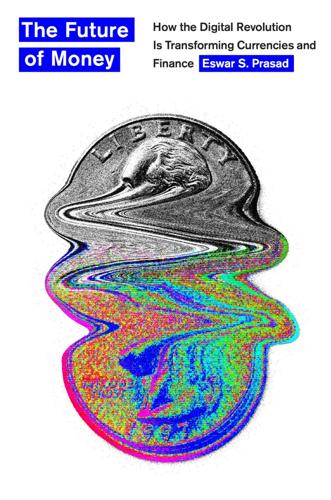
The Future of Money: How the Digital Revolution Is Transforming Currencies and Finance
by
Eswar S. Prasad
Published 27 Sep 2021
While new technologies hold out the promise of democratizing and decentralizing finance—eroding the advantages of larger institutions and countries and thereby leveling the playing field—they could just as well end up having the opposite effect. Consider network effects, the phenomenon that adoption of a technology or service by more people increases its value, causing even more people to use it and creating a feedback loop that makes it dominant and less vulnerable to competition (think Facebook and Google). Despite the lower barriers to entry, the power of technology could lead to further concentration of market power among some payment systems and financial services providers. Existing financial institutions could co-opt new technologies to their own benefit, deterring new entrants. Even currency dominance could become entrenched, with the currencies of some major economies or stablecoins issued by prominent corporations rivaling national currencies of smaller economies, as well as those with less credible central banks and profligate governments.
…
Network effects and outdated antitrust regulations enabled the ascendancy of the Big Tech firms—Amazon, Apple, Facebook, Google—that dominate their respective spaces and gobble up any competitors they cannot squash. The US financial sector does not suffer from such extreme concentration, although the United States certainly has a handful of major banks and payment providers. They do not exert the same degree of dominance as the Big Tech firms; still, stringent regulatory requirements have created barriers to entry in financial markets and kept competition in check. By contrast, lax regulation in some countries has created room for the unfettered entry of firms with innovative financial products and services that serve as a boon to households and businesses. But, as we saw in the case of China, network effects can then create titans that hinder newer entrants.
…
Banks once tempted new customers with toasters; these days, online banks can entice new customers simply by passing on their lower costs in the form of lower fees. Moreover, informal financial institutions, some of which operate beyond the purview of regulators, could become increasingly important to the financial system as barriers to entry fall away. If a financial system with heightened competition does in fact efficiently disperse risk, then the outcome with a larger number of institutions reflecting the lower cost of entry might improve on the present system. In the aftermath of the 2008–2009 financial crisis, one group of commentators of an unrestrained free-market persuasion argued that the seeds of the crisis were not sown by inadequate or ineffective regulation.
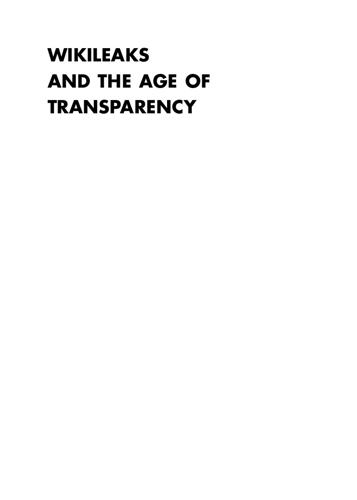
WikiLeaks and the Age of Transparency
by
Micah L. Sifry
Published 19 Feb 2011
This style of political organizing is not the monopoly of the left; the Internet itself is just a system that rewards open methods more than closed ones. The Tea Party movement in United States, at least in some of its iterations, is another good example of open source organizing. Instead of having one central address or leader, it has lots of small groups and no real barrier to entry. Thus no one can control it or stop it by delegitimizing a single leader.4 “If you have a machine, you know exactly how to attack it, exactly how to shut it down,” says Keli Carender, an early Tea Party activist from Seattle. “If you have three million machines coming at you, you don’t know where to turn.”5 As Jonathan Rauch wrote in a long article describing the movement’s methods: The tea party began as a network, not an organization, and that is what it mostly remains.
…
And last but not least, this approach will create a large union of shared interests in the defense of the rights to run an anonymous post-drop in the digital world.14 The battle over WikiLeaks has had another salutary effect: it has delivered a wake-up call to everyone who thought the free and open Internet was already a fact. Freedom of the press is no longer the exclusive province of those who own one, but while the Internet has drastically lowered the barriers to entry into the public sphere, it has not eliminated them. 175 WIKILEAKS AND THE AGE OF TRANSPARENCY Especially when that public sphere is built on privately owned infrastructure. Take Amazon’s hasty decision to kick WikiLeaks off its cloud servers after a mere phone call from a staffer for Senator Joe Lieberman.

The Art of Scalability: Scalable Web Architecture, Processes, and Organizations for the Modern Enterprise
by
Martin L. Abbott
and
Michael T. Fisher
Published 1 Dec 2009
This comparatively germ-free environment results in more time spent at work and more things getting done. Moreover, the cleanliness is done at lower cost than having the other professionals worry about cleaning common areas, and so on. Finally, sensitive documents are shredded by the proprietary janitorial team and as a result fewer trade secrets are lost thereby increasing barriers to entry for competitors. The janitors now have purpose in life and they are significantly happier with their jobs. If we can develop a causal roadmap for janitors, it stands to reason that teams that are closer to the creation of value should be even easier. For instance, an engineer writes and designs the code that creates the product upon which your revenue is predicated.
…
Just as the business executives have not spent as much time understanding how to run technical projects or how to “speak tech” as the technology leaders have spent learning to read financial statements, it is also likely that the technical executive has not spent a lot of time learning what truly drives your business. To be sure, he probably believes he knows. A good test is to have him define the technology metrics in terms of things that are important to your business: revenue, profit, time to market, barriers to entry, customer retention, and so on. It is critical for the technology executive to understand how the business makes money, the drivers of that revenue equation, the current financial reality within the business, and the current year’s financial goals for the business. In AllScale, as discussed in Chapter 2, Roles for the Scalable Technology Organization, the previous CTO was promoted based on his technical acumen.
…
Apple’s Macintosh had a more intuitive interface than the PC, yet the PC won based on the ecosystem of providers and tools available for it. To be able to answer the second question, you really need to be able to explain how, by building the system in question, you are raising switching costs, lowering barriers to exit, increasing barriers to entry, and the like. How is it that you are making it harder for your competitors to compete against you? How does this help you to win new clients, keep existing clients, and operate more cost effectively than any of your competitors? What keeps them from copying what you are doing in very short order?
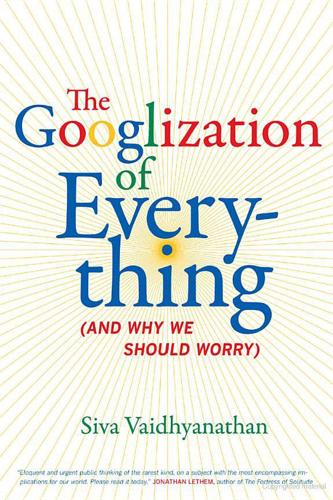
The Googlization of Everything:
by
Siva Vaidhyanathan
Published 1 Jan 2010
Back then I took seriously the notion that the world had stepped beyond the stalemate of the Cold War and had settled on a rough consensus on competitive open markets, basic human rights, and liberal democracy—even if the road to those goals was still long and rocky in much of the world.1 I assumed digitization would level the commercial playing field in wealthy economies and invite new competition into markets that had always had high barriers to entry. I imagined a rapid spread of education and critical thinking once we surmounted the millennium-old problems of information scarcity and maldistribution. But in the early part of this century, my mood soured and my enthusiasm waned. I saw my great hopes for an open and free Internet corrupted by the simultaneous pressures of inadequate security (in the form of fraud, spam, viruses, and malware) and the attempts at a corporate lockdown of culture and technology.2 I saw that the resistance to openness, transparency, accountability, and democracy was stronger than I had imagined and present in parts of the world—including my own— where I thought the forces of light had triumphed long ago.3 I worried that the environment generated by the global reach of the Internet was pulling us in opposite directions—toward both anarchy and oligarchy— and draining the institutions and environments that would foster more P RE FAC E xiii reasonable, republican virtues, such as measured deliberation, critical thought, and mutual respect.4 I noted the ways in which those who promoted the digitization and networking of all things reverted to simplistic and wrongheaded views of how technology works in society.5 I grew weary of others’ attempts to describe technology as an irresistible force that young people have mastered and old people must conform to or wither away trying to resist.6 And I had an intellectual allergic reaction to the growing notion that one company—Google—could or would solve some of the greatest and most complex human problems simply by applying the principles of engineering.7 So I sought a way to explore both my disenchantment with and my approval of changes in our global information ecosystem.
…
Many of Google’s positions correspond roughly with the public interest (such as giving empty support to a network neutrality policy and “safe-harbor” exemptions from copyright liability). Others, such as fighting against stronger privacy laws in the United States, do not.13 REN D E R UNTO CA ESA R 19 When confronted with questions about its dominance in certain markets, Google officials always protest that, on the Internet, barriers to entry are low, and thus any young firm with innovative services could displace Google the way Google displaced Yahoo and AltaVista in the early days of the twenty-first century. With Google unable or unwilling to leverage its advantages though some sort of lockdown, such as holding users’ content and data hostage with technology or exclusive contracts so that they must continue to use Google services, they point out that users could easily migrate to the next Google-like company.
…
Being able to use a search engine, click on a link, and even post to Facebook does not require much skill or investment, but producing video, running an influential blog, participating in the Wikipedia community, hosting a proxy server, and even navigating between links and information sources on the Internet demand much more money and knowledge than most people in the world have. To acquire such skills, people need at least minimal free time and significant means, and many with disabilities are excluded regardless of education or means. The barriers to entry for such productions are lower than ever in human history, but they are far from free, open, and universal.57 To consider the prospects for a cosmopolitan global civil society or its cousin, a global public sphere, and the role that Google might play in it, we should consider the role of powerful and flexible communicative technologies in places as dynamic and diverse as China, Russia, and India.
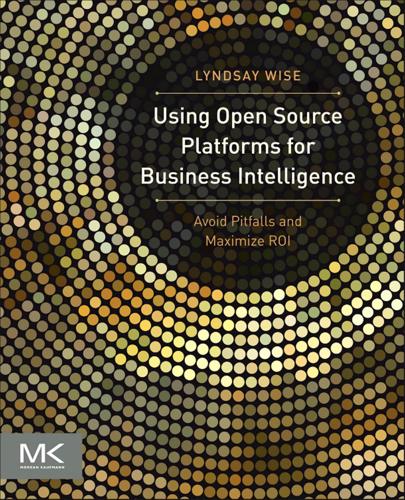
Using Open Source Platforms for Business Intelligence: Avoid Pitfalls and Maximize Roi
by
Lyndsay Wise
Published 16 Sep 2012
In some cases the availability of free source code may not be a benefit due to a lack of internal resources and/or skills to provide all of the development efforts required. Other organizations are using alternate versions of free software to further their business efforts and are open to the concept of expanding their use of OS. With many factors going into the changes surrounding OS adoption, the barriers to entry involving lack of knowledge or IT development infrastructure to deploy solutions are no longer restricting adoption. For companies without supporting BI infrastructures, commercial OS solutions exist that can help them get on track and take advantage of free solutions. The differences between community- and commercial-based OS will be discussed in the next chapter with an overview of the differences between vendor offerings and the various outlooks vendors have on their commercial products and services.
…
The figure below identifies the average cost of OSBI usage versus traditional BI offerings based on Madsen’s evaluation of the TCO of OSBI versus traditional offerings.4 The deployment size is based on looking at deployments of 25 users, 100 users, and 500 users, respectively. However, these numbers are based on large-scale traditional vendors. As we’ll see later on, newer offerings are minimizing these differences and potential barriers to entry, but OSBI still has the benefit of no-cost software. 4 Lowering the Cost of Business Intelligence With Open Source: A Comparison of Open Source and Traditional Vendor Costs Mark Madsen, Third Nature, Prepared for Pentaho, page 4. 122 CHAPTER 11 Evaluating ROI and TCO Average Cost per User $3,500 $3,000 $2,500 Cost $2,000 $2,500 $1,000 $500 $Small Medium Large Avg Cost Trad
…
For instance, a number of best-of-breed solutions exist for companies evaluating adding dashboards to their internal reporting needs. Many organizations are moving away from one platform and a standardized approach and integrating diverse offerings to make sure they get the best of everything. This does not mean that one solution outperforms another, but that based on changing price structures and lowering barriers to entry, organizations can develop a piecemeal approach. Within the realm of OSBI, this may mean that OS only represents one portion of BI or that disparate offerings pull data from the same sources or may need to interact in specific ways. For instance, no matter what exists on the backend, business users need a seamless business experience.

Economists and the Powerful
by
Norbert Haring
,
Norbert H. Ring
and
Niall Douglas
Published 30 Sep 2012
The damage to the individual investor from the individual insider deal is minor. However, as we will see, insider dealings and similar strategies are so pervasive in the financial industry that the cumulative damage to the individual investor can be sizable. Market power in finance Two important conditions for the exertion of economic power are the existence of barriers to entry and the power to determine prices. High profits of big investment banks, the constant increase in governmentsponsored financial institutions and many examples of extortion, which we will cover below, provide ample proof that competition does not work well to discipline participants in the financial sector.
…
Throwing out the neoclassical innovation to theory as faulty leaves classical economics and the notion that the negotiating power of the various social classes determines wages and profits. This is exactly what first year classes in practical business skills teach: an overview of the main points of Pierre Bourdieu’s economic sociology (e.g. The Social Structures of the Economy, 2005) and Porter’s five forces strategic analysis (barriers to entry, threat of substitutes, buyer power, seller power, competitive rivalry). Both are absolutely centered on how negotiating power between economic actors works in the real world. Conclusion Companies make profits beyond the assumed remuneration for taking risks and for the entrepreneur’s work. Mainstream economic theory has no theoretical basis on which to determine how these rents should be distributed among capital owners, management and workers.
…
D. 13 American Economic Association ix, 10, 17, 20, 26–7, 44 American Economic Review 8, 20, 26–7 American International Group (AIG) 70, 90–91 Anglo-Saxon economics ix Arrow, Kenneth 7, 23–4, 212; see also impossibility theorem (Arrow’s) asset bubble 104 asymmetric information: see information, asymmetric AT&T 147 authoritarianism 24, 210 average cost 148, 151 Bank of America 77, 86, 94 barriers to entry 54, 160 Basel III Accord 104–5 Bear Stearns 90, 96, 107, 111 Becker, Gary S. 186 Bemis, Edward 9–10 Bentham, Jeremy 11 Berlin, Isaiah 25 Bernays, Edward 15–17 Bill of Rights (US) 208 Bolsa Família program 41 Boskin Commission 36 Bourdieu, Pierre 25, 115, 160 Bridgestone (tire manufacturer) 163–4, 166–7 British Empire ix, 16, 100 Buchanan, James 23–4 Buffett, Warren 93, 107–9 Bullionists 2 Bureau of Labor Statistics 32–3, 35 capitalism vii–viii, ix, 2, 5–6, 10, 18–19, 21, 31, 46, 142, 153, 158, 165 central bank 43, 67, 79–88, 104–5 CEO: see chief executive officer (CEO) Chicago, University of 10, 17, 19, 26, 27, 44, 80, 84, 168, 186, 193 chief executive officer (CEO) xi, 16, 47, 61, 70, 93, 95–6, 103, 107–13, 115–27, 132, 138–9, 215, 217 Chrysler xi, 113 Citicorp (bank) 43 Citigroup (bank) xi, 61, 63, 96, 105, 112, 125 Clark, John Bates 6, 10–11, 155, 193 classical value theory 5 Cold War 2, 18, 21, 25–8, 46 collective bargaining 185 Commodity Futures Trading Commission (CTFC) 90, 92 Commons, John R. 8–10 communism xii, 2, 19, 21, 25, 139 comparative advantage 4 Condorcet, Marquis de 23 conflict 165 consumption viii, 11, 13, 32, 78, 158, 192, 203, 211 control fraud 94–5 convergence vii 242 ECONOMISTS AND THE POWERFUL cooperation 73–5, 165, 167, 170, 198 cooperative 102 Cornell University 10 corporate elite x, xii, 115, 117, 140 corporate governance 92, 119, 127, 135, 136 corporate government 135 corporate management 109 corporation tax 139 corruption 220 credit x, xi, 29, 48–50, 59–60, 62, 65, 71, 73, 75, 77–84, 90–91, 95–8, 100, 104, 110, 149, 183 credit default swap 91, 93 CTFC: see Commodity Futures Trading Commission (CTFC) Darwinism 167 Debreu, Gerard 7 demand curve 146 democracy 18, 207, 211–13, 220 depreciation 33, 147 derivatives 67, 90–93, 96–7 Deutsche Bank 105, 121 disability adjusted life expectancy vii discrimination 130, 186–7 earnings management 129–30 economic growth xi, 80 economic policy xi, 46, 66, 76, 152 economic utility 4–5, 13 economics, mainstream viii, x–xi, xiii, 1, 29, 47, 136, 145, 164, 170, 208, 211, 214 economics, neoclassical ix, xii, 6, 8, 10–11, 13, 21–2, 25, 30, 38, 42, 45, 141, 143–4, 153–5, 157–60, 163–4, 168, 170–71, 173, 180–82, 188, 191–2, 210, 213 economies of scale 3, 54, 152, 161 economies of scope 54 Edgeworth, Francis Y. 10 efficiency vii, x, xi, xii, 13, 19, 25, 39, 43, 48, 62, 73, 101, 108, 136–7, 143, 144, 146–7, 149, 156, 160, 170, 176, 179, 183, 190, 193, 197, 202–4, 216, 219 efficient markets x Ely, Richard T. 9–10 employment protection 188, 200–203, 205 Enron 52, 92, 98, 110, 128, 132, 217 entrenchment 126, 135 equality of opportunity vii–ix, xii, 37, 39–41, 45, 53, 114, 124, 172 equality of outcome vii equilibrium x, 6–7, 37, 47, 146, 159, 161, 181–2, 197, 208 euro ix, 67, 82, 102 European Central Bank 103, 189, 215 European Commission/Union 67, 152 executive compensation 120–21, 138 exploitation 6, 156, 209, 212 exports 2, 34, 180–81 fairness ix, 13, 37, 39–40, 160, 164–6, 169–70, 177, 220 Fannie Mae (US government subsidizer of mortgages) 217 fear, uncertainty, doubt (FUD) 145 Federal Reserve (US) 43–4, 69–70, 85, 87–92, 143, 215 feedback loop 40, 216, 220 fiat money 75, 81 filibuster (US antilegislative maneuver) 218 financial industry xi, 44, 46–8, 51, 54–6, 64, 70, 89, 91–2, 121, 129, 217 financial markets xi, 47, 92, 108, 110, 128 financial rating agencies: see rating agencies financial sector xi, 43–4, 47–8, 53–4, 60, 64, 69, 79, 81, 83, 88–9, 100–101, 103, 105 Financial Stability Board 103 First (Workingmen’s) International 5 first mover advantage 132 Fisher, Irving 10, 13, 60, 75, 81, 83–4, 214 Fitch (ratings agency) 97 fixed costs 143 INDEX Fortune (magazine) 128 Fortune 500 (index) 49, 139 forwards (financial instrument) 67 founding fathers (of the United States) 207, 218 Freddie Mac (US government subsidizer of mortgages) 217 free market 6–7, 24, 46, 84, 147, 188, 193, 209 free riding 24, 37, 164 free trade 3–4, 16, 46, 209 freedom viii, 10, 18, 21, 25, 80, 94, 188, 191, 218 Freud, Sigmund 15 Friedman, Milton 44, 57, 81 front running (trading strategy) 65–6 FUD: see fear, uncertainty, doubt (FUD) fund managers 56–8, 63–4, 68, 134 futures (financial instrument) 67 Galbraith, John Kenneth 11, 74 GDP: see gross domestic product (GDP) General Motors xi, 16, 184–5 global financial crisis ix, 90; see also Great Financial Crisis God 24 gold 2, 72–7, 79–80, 86–7, 89 golden parachutes 112 Goldman Sachs 47, 49, 54, 56, 63, 66, 69, 88, 93, 105, 121, 215 goodwill 131 Great Depression 11, 70, 80, 138–9, 181, 204 Great Financial Crisis 79, 100, 111, 136; see also global financial crisis gross domestic product (GDP) vii–ix, xi, 28–31, 143 growth 27–8, 31, 33, 35, 39, 71, 90, 102, 108, 128, 132, 135, 151, 195, 203–4 Hadley, Arthur 10 happiness 202 Harvard Business Review 17–18 Harvard University 17–18, 26, 109, 208 243 hedge fund 29, 43, 46, 53, 58, 64–8, 92, 96, 101, 107 hedonic method 33–6 Hicks, John 13–14, 21 Homo economicus 164–6, 173 hostile takeovers 126 human capital 128 imports 2, 12, 34, 35 impossibility theorem (Arrow’s) 23–4, 212–13 incentives 39–40, 42–5, 52, 91, 93, 109, 114–15, 129, 132, 140, 172–4, 177, 182, 214 income guarantee 41 incompleteness viii, 12, 49, 145, 169, 184 incumbency 121, 134, 149 index tracking fund 55, 58 indifference 141, 168 industrial goods 2–3, 142 industrial production 2, 179 Industrial Revolution 5, 143, 181 inequality vii, 40, 138, 140 inflation 32–3, 36, 50, 78, 81, 104, 109, 120 information advantage 48, 131 information, asymmetric x, 191 information costs 144 information goods 143 information, imperfect x, xii, 142, 145, 149, 220 information technology 34, 218 innovation 34, 43, 147, 150–52, 160, 208 insider information 53–4, 62–3, 131 insider knowledge 131 insider trading 63–4, 131 institutionalism 8, 21 insurance xi, 39, 69, 82, 89–91,152, 189, 198, 204, 210 interest rate, real 50, 159 International Monetary Fund 27, 31, 48, 69, 74 International Workingmen’s Association 5 244 ECONOMISTS AND THE POWERFUL investment 32–3, 37, 41, 51, 56–7, 68, 78, 96–100, 103–4, 128–30, 133, 135, 140, 157, 184, 217 advice 51, 54, 56, 129 banking 29, 43, 47, 51, 52, 54, 55, 60–62, 64, 70–71, 89–90, 93, 94, 96, 97, 101, 107, 111–12, 125, 132 personal viii irrationality vii, 1, 13, 16, 38, 40, 151, 205, 211–12 Ivy League 27 Jevons, William Stanley 5, 16 job security viii, 108, 199–200, 202–4 J.P.
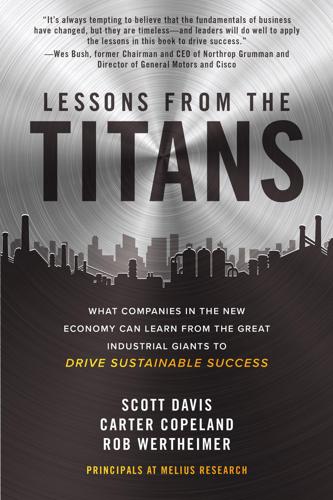
Lessons from the Titans: What Companies in the New Economy Can Learn from the Great Industrial Giants to Drive Sustainable Success
by
Scott Davis
,
Carter Copeland
and
Rob Wertheimer
Published 13 Jul 2020
Most were trying to model themselves on GE with big-ticket items like compressors, turbines, and engines—the belief was that the spare parts and service made up for a lower-margin install price and high capital costs. Business schools and management programs focused on concepts like “Porter’s Five Forces” analysis. Big pieces of capital equipment seemed to offer amazing barriers to entry and power over suppliers, and the power in the sales channel grew with each install, even if it meant sacrificing cash terms in order to close an order. At Ingersoll-Rand, Jellison saw firsthand the obsession that leaders had with this business model. GE’s success was so well established at that point that few questioned any of the basic assumptions.
…
But how long can annual price increases approaching 5 percent really last? TransDigm’s pricing strategy remains sustainable because of three key factors: (1) regulatory, (2) economic, and (3) customer behavior. On the regulatory front, the time-consuming and costly FAA approval process for new parts creates a high barrier to entry. There are also the simple economic challenges of trying to compete against one of TransDigm’s product lines. Many of TransDigm’s parts are ordered in low and varying volumes and at infrequent intervals. Consequently, third parties often find the cost of investing in capital equipment and engineering expertise not worth the potential return.
…
The prevailing view is that the industry is a bit like the airline industry from a decade or two ago: the plane is expensive and going to fly no matter what, so you might as well sell tickets cheap to get all the seats filled, especially when demand falls. In a true recession, capital-intensive industries can be an exercise in who can take the most pain while others are shutting down. Rental equipment similarly doesn’t make money if it’s not rented, and rental has lower barriers to entry than do airlines. United Rentals built a towering competitive advantage the hard way. In doing so it raised its margins substantially, widening the gap with competition, creating tens of thousands of good jobs, and professionalizing a scattered and entrepreneurial industry along the way. There is a lesson for the new economy here.

Company: A Short History of a Revolutionary Idea
by
John Micklethwait
and
Adrian Wooldridge
Published 4 Mar 2003
In the nineteenth century, the gains to be had from integrating mass production with mass distribution were enormous—as Alfred Chandler, the doyen of business historians, puts it, the “visible hand of managerial direction” replaced “the invisible hand of market mechanisms.” In the twenty-first century, technology and globalization are helping to reduce barriers to entry—and thus helping to unbundle the corporate package. At the touch of a button, a mere journalist can get access to more information than a corporate giant could amass a decade ago. The fashion nowadays is for virtual companies—for airlines that do not own their own planes, for banks that do not have branches, for the invisible hand to claw back ground from the visible one.
…
In the Depression, consumers were only willing to part with their surplus cash for genuine novelties (or apparent ones: by the late 1930s, Procter alone was spending $15 million a year on advertising). Yet, throughout this turmoil, the big Sloanist firms held on to their positions. With the barriers to entry in most businesses still high, they were rarely threatened by young upstarts; the main danger was of a neighboring giant diversifying systematically into their territory. The only way a multidivisional firm could get beaten was by another multidivisional firm. THE MANAGERS Behind this success sat a new culture of management.

Startup Communities: Building an Entrepreneurial Ecosystem in Your City
by
Brad Feld
Published 8 Oct 2012
.; Chicago; Denver; Boston; Seattle; Portland; Austin; Raleigh; and Nashville. But the startup revolution isn’t limited to these cities—any locality in the United States can build a vibrant startup community if it strategically brings together the key partners who support growth. In fact, the barriers to entry have never been lower for many sectors across the economy. That’s why we launched the Startup America initiative, and that’s why this book is such an important contribution: Brad does a great job using the Boulder, Colorado, regional ecosystem as a blueprint for creating and developing a sustainable startup community in any city.
…
; and (3) provide a pipeline to the community: The CU New Venture Challenge should be a point of entry for CU students and faculty to get meaningfully involved in the region’s startup scene. These three objectives drove the architecture of the CU New Venture Challenge. First, in order to collapse the campus, the CU New Venture Challenge starts each year with kick-off events that are energetic, informative, and involve few barriers to entry. The goal is to have attendees from all parts of campus to get them interested in entrepreneurship. For content, events included a leading area entrepreneur’s talk about how to pick a business idea worth pursuing, and a pitch night to facilitate team formation. To drive turnout, we assembled an executive committee of student ambassadors, with several students from each department on campus who served as evangelists to get the word out in classrooms and to relevant student groups.
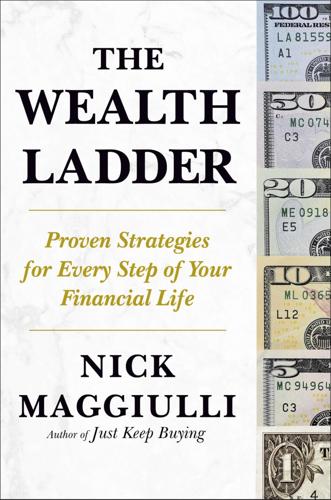
The Wealth Ladder: Proven Strategies for Every Step of Your Financial Life
by
Nick Maggiulli
Published 22 Jul 2025
For example, many ultrasuccessful content creators also have their own businesses, which employ a team of people to sell higher-value products such as cohort-based courses, high-end coaching, or exclusive online communities. In each of these cases, the content is the marketing engine to scale the business. In other words, one form of leverage (content) is helping to build another (labor). Content Summary Pros: Incredibly scalable. Low barrier to entry. Little or no permission needed. Cons: Lots of competition. Difficult to build an audience. Content is generally short-lived unless it is high quality and evergreen. Code In today’s digital age, code grants you the ability to create immense leverage using just lines of text as instruction.
…
Levels 3–6 Capital You can build wealth more quickly by using other people’s money. Demands a specific skill set, especially in sales and emotional regulation. Heightened financial risk. Levels 3–6 Content Incredibly scalable. Low barrier to entry. Little or no permission needed. Lots of competition. Difficult to build an audience. Content is generally short-lived unless it is high quality and evergreen. Levels 2–4 Code It has near infinite scalability and requires little or no permission.
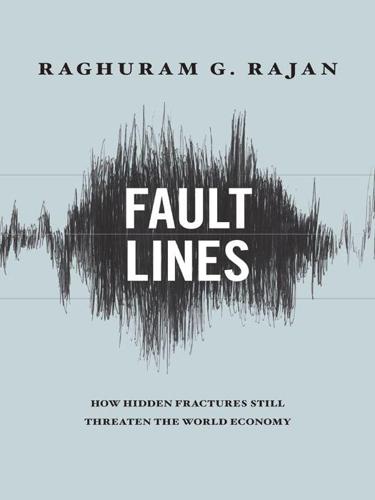
Fault Lines: How Hidden Fractures Still Threaten the World Economy
by
Raghuram Rajan
Published 24 May 2010
With this kind of growth process in mind, what is loosely termed the institutional school of economists has argued that the role of the government in business is to create the institutional environment for competition and innovation—to establish secure property rights, strengthen patent laws, reduce barriers to entry, and reduce taxes—and then let the private sector take charge. There is a small problem with this view. No large country has ever grown rapidly from poverty to riches with this kind of strategy, in part because poor countries do not have the necessary private organizations to take advantage of such an environment, and the environment, in turn, is not conducive to creating the organizations quickly.
…
It also imposed tariffs on imported yarn and cloth and even banned imports when tariffs proved insufficient. As the textile industry boomed, the government encouraged firms to merge so that they could realize economies of scale. More generally, the tools used by governments have included erecting barriers to entry, offering tax breaks so that private firms can generate larger profits and use their retained earnings to fund investment, encouraging close ties between banks and favored firms so that the former lend abundantly (and cheaply) to the latter, providing raw materials at a subsidized price, and imposing tariffs so that foreign competition is not a threat.
…
The process of strengthening organizations, in their view, required massive but careful government intervention. Infant firms had to be nurtured. The very real danger, as evidenced in India’s stagnation during the 1960s and 1970s, was that the infant firms would demand permanent protection and then strangle growth. One option was to increase internal competition by reducing barriers to entry and eliminating various subsidies. But governments thought this would waste resources and be potentially harmful to the incumbents who had only recently become profitable. Moreover, the internal market was small, made even smaller by the repression of households in favor of producers. The solution instead was to use the disciplinary power, as well as the attractiveness, of the large global market.

The Future of Money
by
Bernard Lietaer
Published 28 Apr 2013
This theory works from the assumption that all parties have all the information relevant to optimise a given purchase, that there are zero transaction costs and no barriers to entry for few suppliers. In 'real' world transactions, these conditions are rarely met. Interestingly, the cyber economy could become the first actual large-scale involves information, both of us have it. In buying this book, for instance, Government classifications, trade 'near-perfect market'. Information can definitely be more abundant and accessible to more people in cyberspace. The Net makes transaction costs lower than ever. And many of the usual barriers to entry, such as location, capital requirements, etc., are less applicable.
…
Market: Physical or virtual space in which demand and offer of a given product or service interact to create a price. Market economies presuppose price variability, for instance prices dropping automatically to clear what is on offer. Theory shows that true market economies require large numbers of small suppliers and consumers, and low barriers to entry. These perfect conditions are rarely prevailing in today's economy. The opposite of a market price is a price fixed by some authority - individual, government or corporate. Micro-credit: Refers to loans in conventional national currency for small amounts to small-scale entrepreneurs. The Grameen Bank in Bangladesh has been a model of success in such activities.
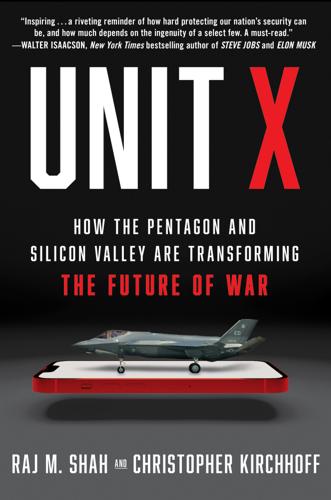
Unit X: How the Pentagon and Silicon Valley Are Transforming the Future of War
by
Raj M. Shah
and
Christopher Kirchhoff
Published 8 Jul 2024
If a drone pilot program at DIUx succeeded, and the army wanted to buy an additional ten thousand or one hundred thousand drones, it could, using the production contract DIUx had worked out with the vendor. For the first time a mechanism could be built to mainline the technology of startups straight into the Department without the usual barriers to entry. Lauren, leveraging Bill Greenwalt’s gift, had found a way to leap over the Valley of Death. The only problem? This idea was in Lauren’s head. The twenty-page paper she’d written was a blueprint for a revolution. We had to find a way of carrying it out, and fast. Chris flew to Washington and obtained time with every senior leader needed to approve this landmark shift in policy.
…
Throughout 2017 DIUx was recruiting top talent from the commercial sector, and by the end of the year we’d built a staff of a few dozen full-time personnel across three offices—Mountain View, Boston, and Austin—as well as fifty-five reservists and guardsmen. Meanwhile, investors and entrepreneurs in Silicon Valley were becoming more interested in working with the Pentagon, not only because DIUx had lowered the barriers to entry and moved so many projects forward, but also because other big defense-oriented startups were gaining traction. Palantir, which did big data analytics, and Elon Musk’s SpaceX, which launched payloads into space, were growing quickly and winning government business. Anduril, a company whose leaders Raj met before they even incorporated and that planned to build drone-killing technology, raised funding quickly when it was founded in 2017—VCs were quite eager to invest.
…
Most important, they and their families had become close through their time angel investing together. Raj and Philip understood that founding a venture capital firm and the responsibility of investing other people’s money would require a decades-long commitment. There was no guarantee of success, and the barriers to entry of raising the first fund were daunting, even for a seasoned investor like Philip, who’d previously managed billions of dollars of institutional capital. Philip was now in his mid-fifties and recently retired from HarbourVest Partners, the global firm he helped build. Raj knew he wasn’t the kind of guy who’d be happy playing golf and pickleball in Palm Beach.
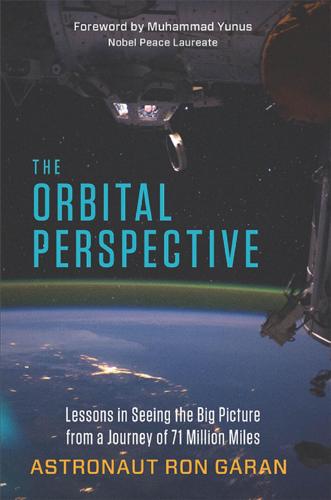
The Orbital Perspective: Lessons in Seeing the Big Picture From a Journey of 71 Million Miles
by
Astronaut Ron Garan
and
Muhammad Yunus
Published 2 Feb 2015
Optimally, the structure of such a platform would be completely open, allowing anyone to participate while also enabling the formation of subgroups customized to tackle 92â•… L O O K I N G EARTH WARD specific problems or parts of problems, as needed. A completely open structure lowers barriers to entry and offers the possibility of attracting the largest number of problem solvers and the widest solution sets. The system should bring users that are closest to the problem into the system and ensure that everyone has a voice in the discussion. Such a mechanism requires a collaborative community—╉ a community of trust working together with a shared purpose—╉and a philosophy of contribution in which people are focused not solely on doing their assigned job well but also on making a good contribution to further the shared overarching goal.
…
An effective collaborative mechanism would pair challenges with solutions and bring together an international team of people and organizations who will work collaboratively, unifying efforts across sectors to address and respond to humanitarian needs, achieving impact with efficiency and speed. Because there are many efforts to build universal open source platforms, it is critical to align efforts. We need to make sure there’s a path to bring users closest to the problem into the system, lowering barriers to entry to ensure that everyone has a voice in the discussion. This Unity Node would be a collaborative community, 162â•… Co n c l u sio n a community of trust, working together with a shared purpose. As with a hackathon, there would be a philosophy of contribution in which people are focused not solely on doing their assigned job well but also on making a good contribution to furthering the shared, overarching goal.
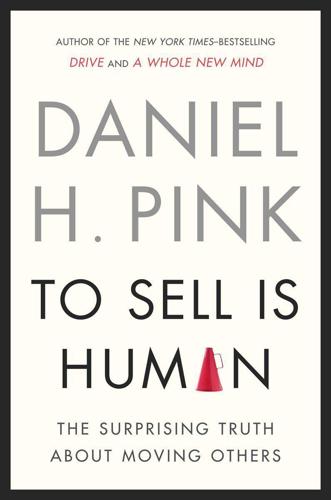
To Sell Is Human: The Surprising Truth About Moving Others
by
Daniel H. Pink
Published 1 Dec 2012
And we consider it critical to our professional success. Chapter 2 explores how so many of us ended up in the moving business. The keys to understanding this workplace transformation: Entrepreneurship, Elasticity, and Ed-Med. First, Entrepreneurship. The very technologies that were supposed to obliterate salespeople have lowered the barriers to entry for small entrepreneurs and turned more of us into sellers. Second, Elasticity. Whether we work for ourselves or for a large organization, instead of doing only one thing, most of us are finding that our skills on the job must now stretch across boundaries. And as they stretch, they almost always encompass some traditional sales and a lot of non-sales selling.
…
Begun with essentially no outside investment in 2005, Etsy now has more than 875,000 active online shops that together sell upward of $400 million of goods each year.7 Before Etsy came along, the ability of craft makers to reach craft buyers was rather limited. But the Web—the very technology that seemed poised to topple salespeople—knocked down barriers to entry for small entrepreneurs and enabled more of these craft makers to sell. Ditto for eBay. Some three-quarters of a million Americans now say that eBay serves as their primary or secondary source of income.8 Meanwhile, many entrepreneurs find fund-raising easier thanks to Kickstarter, which allows them to post the basics of their creative projects—films, music, visual art, fashion—and try to sell their ideas to funders.
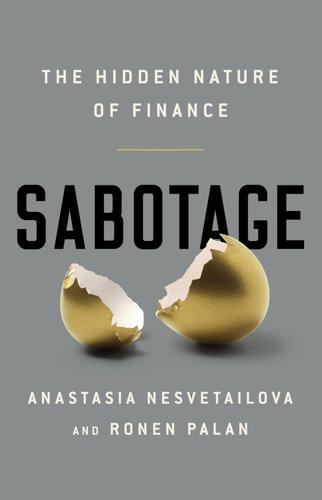
Sabotage: The Financial System's Nasty Business
by
Anastasia Nesvetailova
and
Ronen Palan
Published 28 Jan 2020
But they are remarkably well hidden.’7 In finance there seems to be a unique concentration of very smart people who work very hard to make money, and very often succeed. Before 2007, profits of 20–30 per cent, even over 40 per cent, of turnover were not unheard of in finance. After 2009, profits are still very high. Yet according to the theory there should not be such profits in finance. Even if we make adjustments to market-augmenting factors such as barriers to entry (to exist, banks need licences), regulatory interference (rules such as the Basel accord) and other barriers (differences in currency regimes, accounting rules, controls over capital flows, etc.), there is little in the structure of the deep, liquid and globalized markets for capital that can explain the level of superprofits the industry had become accustomed to.
…
It is much more difficult to start a bank than, say, a restaurant: one not only needs some serious starting capital but, crucially, a set of licences from the state which are very hard to obtain in most jurisdictions. To start trading as a hedge fund, one needs to have a number of well-endowed subscribers, proprietary strategy and, again, starting capital. The insurance sector is heavily regulated too. In other words, theoretically, the apparent high barriers to entry and a degree of market concentration mean that the financial system is not a competitive market. In the real world, however, functionally and geographically, competition in finance is tough. Since the late 1960s, technology has increased the dynamism of the financial dealings and vastly expanded the range and scope of financial institutions.
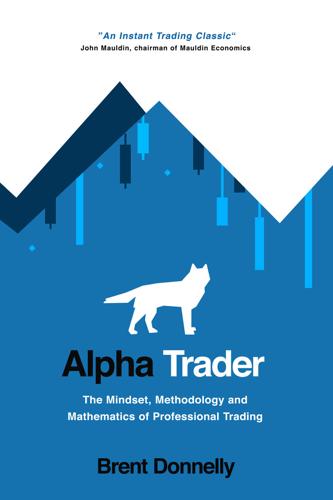
Alpha Trader
by
Brent Donnelly
Published 11 May 2021
Those who do have the skills often cannot monetize them because they are irrational and poorly disciplined. Markets are like a giant battlefield crawling with heavily-armed humans and cyborgs all searching for and fighting over scattered chunks of gold. High-speed and ultra-competitive. Trading attracts intelligent, driven individuals who see enormous financial rewards and few barriers to entry. But no amount of intelligence or skill is enough if you are irrational, undisciplined, or overconfident. The best analysis is useless if you can’t resist the urge to self-destruct. From the 20-something professional poker player who trades momentum stocks in the back of a casino between tournaments, to the grizzled 60-year-old industry veteran launching a new systematic strategy out of a sleek glass building in bucolic Connecticut, everyone is battling for a slice of the same finite pie.
…
Now that you have taken a few minutes to think about your trader personality, let’s head to Chapter 2 and look at just how difficult it is to achieve persistent trading success. CHAPTER 2 IF IT WAS EASY, IT WOULDN’T PAY SO WELL Research shows success in trading is hard to achieve and harder to sustain Trading for a living is like becoming a pro athlete or a famous author or a professional poker player. There are few barriers to entry and no specific credentials are required. And the financial rewards are potentially astronomical. Anyone can dream of making it big in these fields. But only a tiny fraction of those who go after the dream will succeed at any point. An even smaller fraction will achieve sustained success over many decades.
…
The word “succeed” can mean many things, but based on various metrics, my conclusion from the research and my own observation over the years is that the success rate for independent day traders is probably between 3% and 5%. For institutional traders, the success rate is much, much higher because: • there are many barriers to entry that one must overcome before earning a role on an institutional trading desk so the pool of entrants is much more highly qualified and well-vetted than a random selection of independent traders; • traders at a bank receive significant training and are surrounded by experienced mentors; and • market making has a built-in edge which gives new traders at a bank more runway.

Designing Social Interfaces
by
Christian Crumlish
and
Erin Malone
Published 30 Sep 2009
By sucking in all of this content automatically, TripIt removes any effort new users have to put into the first-time experience and can almost immediately present the site’s value. They do have a sign-up process (just an email and password), but it is not required to see their tools in action. This strikingly reduces the barrier to entry and is still rare enough to make a user sit up and take notice. When it originally launched last year, Yahoo!’s Shine, a website for women, had an interesting take on first-time use. Though it is no longer live, Shine’s onboarding process wasn’t directed at recent registrants, but instead was directed at first-time visitors to the site to help orient them to its variety of features.
…
Encourage me, and I will not forget you. Love me, and I may be forced to love you. —William Arthur Ward Soliciting Feedback Soliciting feedback from people, no matter the form, is one of the easiest ways to engage your community. After all, everyone has an opinion. Giving feedback is also considered one of the lowest barriers to entry for user engagement and is often the first step on the ladder of user participation. User ratings are potentially the easiest item to add to a site to gather user opinions and can start a user down the participation road. Additionally, as you build up the engine around ratings, the information can be used to understand your users and create more value for them through recommendations (see “Recommendations” on page 340) and other socially driven features.
…
Social games are growing in popularity and appeal to all demographics. There is tremendous growth in game use on social networks by women and older people. Social games have an advantage over traditional video games in that they are much more available and can be played anywhere you have a computer or an Internet-enabled mobile device. The barrier to entry is lower, and these new casual users are more likely to play a game on Facebook than install an unknown gaming application on their computer. Download at WoweBook.Com 474 Chapter 18: Other Contexts Developing games within an existing social environment should build upon the tools and experiences that already exist in the host environment.
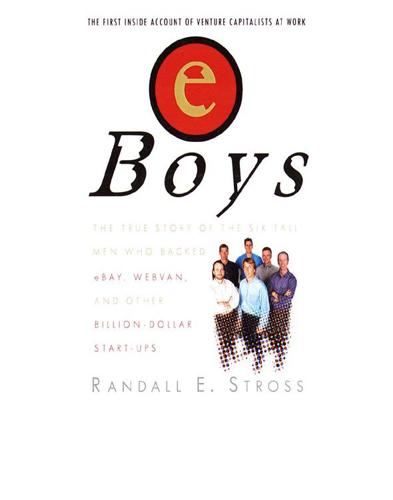
eBoys
by
Randall E. Stross
Published 30 Oct 2008
He began by saying, “Rob Shaw, my closest friend,” and dispassionately reviewed the strengths and weaknesses of the business. He was most concerned about Newwatch’s lack of authorization from the major watch companies. Harvey concluded, “I think he who goes biggest and first is going to be one of the few authorized dealers. Then there’s going to be some barrier to entry.” His Houston buddies had half convinced him the distribution rights could be secured. If a sufficiently enticing amount of money were put on the table, the watch manufacturers would be willing to risk the wrath of their existing dealers and sanction a new distribution channel that offered online customers discounts.
…
He was the first to speak, and he smiled winningly, but after he gave a thirty-second introduction, his role was completed. Whitman then took the podium and explained why she left “a six-hundred-million-dollar division, managing some of the great brands in the world, to come to eBay.” She walked through fundamental consumer appeal, profitable business model, barriers to entry, growth. She was poised, well-prepared, animated, and witty. Bengier, who was forty-three and had a salt-and-pepper beard and an engaging smile, appeared to be no less at ease when he ran through the numbers. When your business enjoys 88 percent gross margins, the financials are anything but dreary.
…
Christopher Byron, a columnist writing for msnbc.com, said eBay showed him the rules had changed so fundamentally that the game had ceased to have any meaning that he could understand: For someone who has covered the day-to-day events of Wall Street for 30 years now, there is, I must confess, something at once awful yet fascinating at bearing witness to a Goldman Sachs–underwritten stock that comes to market at $18 and within six weeks is selling for $126. It’s like watching every mesmerizing, discombobulated absurdity you can possibly think of, all rolled into one colossal Ur-event—like watching Mark McGwire step up to the plate blindfolded and hit 400 home runs in a row. EBay was “a company with trouble written all over it,” Byron said. Barriers to entry in the Internet auction field were nonexistent. The good stuff that people wanted to sell would go to specialty sites, and eBay was going to be left only with junk. The underwriters were engaging in “full-frontal, right-in-your-face stock hyping.” How else could they say, only six weeks earlier, that the price was worth $18 a share, and now say, Oops, we made a mistake, it’s really worth $130.

Seasteading: How Floating Nations Will Restore the Environment, Enrich the Poor, Cure the Sick, and Liberate Humanity From Politicians
by
Joe Quirk
and
Patri Friedman
Published 21 Mar 2017
Sokoloff, “The Evolution of Suffrage Institutions in the New World,” Journal of Economic History 65 (2005): 16, http://economics.yale.edu/sites/default/files/files/Workshops-Seminars/Economic-History/sokoloff-050406.pdf. On the frontier, however, things were dynamic: P. Friedman and B. Taylor, “Barriers to Entry and Institutional Evolution” (paper presented at the Association of Private Enterprise Education Conference, Nassau, 2011), www.academia.edu/2748488/Barriers_to_Entry_and_Institutional_Evolution. See also P. Friedman and B. Taylor, “Entry Barriers and Innovation in the Market for Governance” (2011), www.academia.edu/959477/Entry_Barriers_and_Innovation_in_the_Market_for_Governance.
…
“Clearly, electronic communications are more efficient,” Allison continues politely, “but this type of change unfortunately cannot happen as quickly as one would hope in a larger agency like the FDA.” “You have to make the forms shorter,” adds Chris. “If you look at an FDA submission, it’s ridiculous. It takes months to prepare and hundreds of thousands of dollars and lawyers and consultants in order to do it right. That’s a huge barrier to entry.” Allison proposes that the sea should provide a mirror of the FDA that offers a flattering reflection of its potential. “Highlighting the inefficiencies of the current regulatory system by contrasting it with an internal seasteading system that ensures quality, safety, and efficacy may be one way to induce change at the FDA, but seasteading would have to be dramatically, not marginally, better.

The Coming Wave: Technology, Power, and the Twenty-First Century's Greatest Dilemma
by
Mustafa Suleyman
Published 4 Sep 2023
Understanding them is vital in identifying what benefits and risks arise from their creation; together they escalate containment and control to a new plane of difficulty and danger. ASYMMETRY: A COLOSSAL TRANSFER OF POWER Emerging technologies have always created new threats, redistributed power, and removed barriers to entry. Cannons meant a small force could destroy castles and level armies. A few colonial soldiers with advanced weapons could massacre thousands of indigenous people. The printing press meant a single workshop might produce thousands of pamphlets—spreading ideas with an ease that medieval monks copying books by hand could scarcely fathom.
…
However, as we have seen, both more widely diffused and less safe versions of today’s cutting-edge and more powerful models are coming, fast. Of all the catastrophic risks from the coming wave, AI has received the most coverage. But there are plenty more. Once militaries are fully automated, the barriers to entry for conflict will be far lower. A war might be sparked accidentally for reasons that forever remain unclear, AIs detecting some pattern of behavior or threat and then reacting, instantaneously, with overwhelming force. Suffice to say, the nature of that war could be alien, escalate quickly, and be unsurpassed in destructive consequences.
…
Of the many terrorist incidents and other non-state-perpetrated mass killings since the 1990s, most have been carried out by disturbed loners or groups with specific political or ideological agendas. But on the other hand, this reassurance has limits. Procuring weapons of great power was previously a huge barrier to entry, helping keep catastrophe at bay. The sickening nihilism of the school shooter is bounded by the weapons they can access. The Unabomber had only homemade devices. Building and disseminating biological and chemical weapons were huge challenges for Aum Shinrikyo. As a small, fanatical coterie operating in an atmosphere of paranoid secrecy, with only limited expertise and access to materials, they made mistakes.

Economic Gangsters: Corruption, Violence, and the Poverty of Nations
by
Raymond Fisman
and
Edward Miguel
Published 14 Apr 2008
Guidolin and La Ferrara argue that the mining companies took a beating from investors because the fortunes they’d made from Angola’s diamond mines relied on the treacherous conditions created by civil war. After Savimbi’s death, while mining companies with Angolan investments saw their stock prices plunge, those without Angolan exposure appreciated in value. In other words, an end to conflict hurt the dominant diamond companies by knocking down barriers to entry for competitors. Most people, including nearly all of Ray’s first-year MBA students, think that the key to business success is cheaply and efficiently producing something people want to buy. If 182 TH E RO A D BA CK F RO M WAR this were the case, then war’s end should have made Angolan miners and their shareholders much richer as production costs plummeted.
…
Not every CEO or shareholder is willing to set up a private army, or partner with a real-life Danny Archer, the mercenary played by Leonardo DiCaprio in the film Blood Diamond about Sierra Leone. But some know how to turn wartime adversity to their advantage. Firms like Mano River Resources, DiamondWorks, and Rex Diamond have operated mines in multiple African war zones over the years, despite the costs and hurdles that drive out everyone else. That is, war acted as a “barrier to entry” that kept other companies out and insiders’ profits high. After 2002, peace 183 CH A PTER SEVEN in Angola presented an opportunity for many new companies to bid for lucrative mining licenses. Guidolin and La Ferrara found that, in fact, most of the wartime-dominant companies kept their mining concessions, and some even expanded their Angolan operations at war’s end.
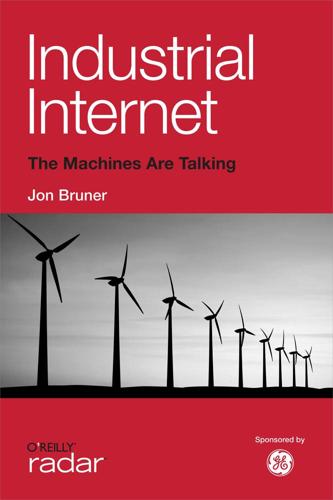
Industrial Internet
by
Jon Bruner
Published 27 Mar 2013
Richard Ross, the head of IT at Atlas Air, was previously CIO at Hess Oil, where large networks of sensors were integrated with supply-chain systems and personnel databases to schedule preventative maintenance on oil platforms and refineries. “It used to be that the totality of the sensor network was proprietary to a given vendor. Now, with TCP/IP technology, the barriers to entry to put these things in are much lower, the costs to install and maintain them are much lower and there is much more vendor competition,” he says. In airplanes, too, says Ross, “You’re no longer making a commitment to a single vendor for the rest of the life of the plane.” Modularity means that “software can be treated like a part — just like you’d change out an engine part.”

Machine, Platform, Crowd: Harnessing Our Digital Future
by
Andrew McAfee
and
Erik Brynjolfsson
Published 26 Jun 2017
Applications, blank or preconfigured servers, and storage space can all be leased for a long time or rented for a few minutes over the Internet. This cloud computing infrastructure, largely less than a decade old, accelerates the robotic Cambrian Explosion in three ways. First, it greatly lowers barriers to entry, since the kinds of computing resources that were formerly found only in great research universities and multinationals’ R&D labs are now available to startups and lone inventors. Second, it allows robot and drone designers to explore the important trade-off of local versus central computation: which information-processing tasks should be done in each robot’s local brain, and which should be done by the great global brain in the cloud?
…
The first is consumers, who obviously want to pay as little as possible and thus side with platform builders that seek to rapidly grow their networks. The second is that in most markets, many suppliers compete for business, and many other potential suppliers are waiting in the wings. Platforms usually enhance this competition by reducing barriers to entry, and they often commoditize the suppliers, making them more interchangeable to the consumer. Competition and commoditization, of course, tend to drive down prices, and to deliver the business to the companies willing to supply products most cheaply (while maintaining acceptable quality). In short, platform builders and consumers both want low prices, and competition among suppliers tends to result in them.
…
Acton, Brian, 140 additive manufacturing, 107; See also 3D printing Adore Me, 62 adults, language learning by, 68–69 advertising content platforms and, 139 data-driven decision making for, 48, 50–51 Facebook and, 8–9 radio airplay as, 148 advertising agencies, 48 advertising revenue Android as means of increasing, 166 Craigslist’s effect on, 139 free apps and, 162 print media and, 130, 132, 139 African Americans identifying gifted students, 40 and search engine bias, 51–52 aggregators, 139–40 AGI (artificial general intelligence), 71 agriculture automated milking systems, 101 drones and, 99–100 “food computers,” 272 machine learning and, 79–80 robotics and, 101–2 Airbnb future of, 319–20 hotel experience vs., 222–23 lack of assets owned by, 6–7 limits to effects on hotel industry, 221–23 network effects, 193 as O2O platform, 186 peer reviews, 209–10 rapid growth of, 9 as two-sided network, 214 value proposition compared to Uber, 222 Airline Deregulation Act, 181n airlines, revenue management by, 181–82 air travel, virtualization in, 89 Akerlof, George, 207, 210 albums, recorded music, 145 algorithms; See also data-driven decision making bias in systems, 51–53 and Cambrian Explosion of robotics, 95–96 comparing human decisions to, 56 O2O platforms and, 193 Quantopian and, 267–70 superiority to System 1 reasoning, 38–41 “algo traders,” 268; See also automated investing Alibaba, 6–8 Alipay, 174 AlphaGo, 4–6, 14, 74, 80 Alter, Lloyd, 90 Amazon automatic price changes, 47 bar code reader app, 162 data-driven product recommendations, 47 development of Web Services, 142–43 Mechanical Turk, 260 as stack, 295 warehouse robotics, 103 Amazon EC2, 143 Amazon Go, 90–91 Amazon S3, 143 Amazon Web Services (AWS), 75, 142–43 American Airlines (AA), 182 amino acid creation, 271–72 analog copies, digital copies vs., 136 “Anatomy of a Large-Scale Hypertextual Web Search Engine, The” (Page and Brin), 233 Anderson, Chris, 98–100 Anderson, Tim, 94 Andreessen, Marc on crowdfunding, 262–63 and Netscape, 34 as self-described “solutionist,” 297 on Teespring, 263–64 Android Blackberry vs., 168 contribution to Google revenue/profits, 204 iOS vs., 166–67 Angry Birds, 159–61 anonymity, digital currency and, 279–80 Antikythera mechanism, 66 APIs (application programming interfaces), 79 apophenia, 44n apparel, 186–88 Apple; See also iPhone acquiring innovation by acquiring companies, 265 and industrywide smartphone profits, 204 leveraging of platforms by, 331 Postmates and, 173, 185 profitability (2015), 204 revenue from paid apps, 164 “Rip, Mix, Burn” slogan, 144n as stack, 295 application programming interfaces (APIs), 79 AppNexus, 139 apps; See also platforms for banking, 89–90 demand curve and, 157–61 iPhone, 151–53 App Store, 158 Apter, Zach, 183 Aral, Sinan, 33 Archilochus, 60–61 architecture, computer-designed, 118 Aristophanes, 200 Arnaout, Ramy, 253 Arthur, Brian, 47–48 artificial general intelligence (AGI), 71 artificial hands, 272–75 artificial intelligence; See also machine learning current state of, 74–76 defined, 67 early attempts, 67–74 implications for future, 329–30 rule-based, 69–72 statistical pattern recognition and, 72–74 Art of Thinking Clearly, The (Dobelli), 43 arts, digital creativity in, 117–18 Ashenfelter, Orley, 38–39 ASICs (application-specific integrated circuits), 287 assets and incentives, 316 leveraging with O2O platforms, 196–97 replacement by platforms, 6–10 asymmetries of information, 206–10 asymptoting, 96 Atkeson, Andrew, 21 ATMs, 89 AT&T, 96, 130 August (smart door lock), 163 Austin, Texas, 223 Australia, 100 Authorize.Net, 171 Autodesk, 114–16, 119, 120 automated investing, 266–70 automation, effect on employment/wages, 332–33 automobiles, See cars Autor, David, 72, 101 background checks, 208, 209 back-office work, 82–83 BackRub, 233 Baidu, 192 Bakos, Yannis, 147n Bakunin, Mikhail, 278 Ballmer, Steve, 151–52 bandwagon effect, 217 banking, virtualization and, 89–90, 92 Bank of England, 280n bank tellers, 92 Barksdale, Jim, 145–46 barriers to entry, 96, 220 Bass, Carl, 106–7, 119–20 B2B (business-to-business) services, 188–90 Beastmode 2.0 Royale Chukkah, 290 Behance, 261 behavioral economics, 35, 43 Bell, Kristen, 261, 262 Benioff, Mark, 84–85 Benjamin, Robert, 311 Benson, Buster, 43–44 Berlin, Isiah, 60n Berners-Lee, Tim, 33, 34n, 138, 233 Bernstein, Michael, 260 Bertsimas, Dimitris, 39 Bezos, Jeff, 132, 142 bias of Airbnb hosts, 209–10 in algorithmic systems, 51–53 digital design’s freedom from, 116 management’s need to acknowledge, 323–24 and second-machine-age companies, 325 big data and Cambrian Explosion of robotics, 95 and credit scores, 46 and machine learning, 75–76 biology, computational, 116–17 Bird, Andrew, 121 Bitcoin, 279–88 China’s dominance of mining, 306–7 failure mode of, 317 fluctuation of value, 288 ledger for, 280–87 as model for larger economy, 296–97 recent troubles with, 305–7 and solutionism, 297 “Bitcoin: A Peer-to-Peer Electronic Cash System” (Nakamoto), 279 BlaBlaCar, 190–91, 197, 208 BlackBerry, 168, 203 Blitstein, Ryan, 117 blockchain as challenge to stacks, 298 and contracts, 291–95 development and deployment, 283–87 failure of, 317 and solutionism, 297 value as ledger beyond Bitcoin, 288–91 Blockchain Revolution (Tapscott and Tapscott), 298 Bloomberg Markets, 267 BMO Capital Markets, 204n Bobadilla-Suarez, Sebastian, 58n–59n Bock, Laszlo, 56–58 bonds, 131, 134 bonuses, credit card, 216 Bordeaux wines, 38–39 Boudreau, Kevin, 252–54 Bowie, David, 131, 134, 148 Bowie bonds, 131, 134 brand building, 210–11 Brat, Ilan, 12 Bredeche, Jean, 267 Brin, Sergey, 233 Broward County, Florida, 40 Brown, Joshua, 81–82 Brusson, Nicolas, 190 Burr, Donald, 177 Bush, Vannevar, 33 business conference venues, 189 Business Insider, 179 business processes, robotics and, 88–89 business process reengineering, 32–35 business travelers, lodging needs of, 222–23 Busque, Leah, 265 Buterin, Vitalik, 304–5 Byrne, Patrick, 290 Cairncross, Francis, 137 California, 208; See also specific cities Calo, Ryan, 52 Cambrian Explosion, 94–98 Cameron, Oliver, 324 Camp, Garrett, 200 capacity, perishing inventory and, 181 Card, David, 40 Care.com, 261 cars automated race car design, 114–16 autonomous, 17, 81–82 decline in ownership of, 197 cash, Bitcoin as equivalent to, 279 Casio QV-10 digital camera, 131 Caves, Richard, 23 Caviar, 186 CDs (compact discs), 145 cell phones, 129–30, 134–35; See also iPhone; smartphones Census Bureau, US, 42 central bankers, 305 centrally planned economies, 235–37 Chabris, Chris, 3 Chambers, Ephraim, 246 Champy, James, 32, 34–35, 37, 59 Chandler, Alfred, 309n Chase, 162 Chase Paymentech, 171 check-deposit app, 162 children, language learning by, 67–69 China Alibaba in, 7–8 concentration of Bitcoin wealth in, 306–7 and failure mode of Bitcoin, 317 mobile O2O platforms, 191–92 online payment service problems, 172 robotics in restaurants, 93 Shanghai Tower design, 118 Xiaomi, 203 Chipotle, 185 Choudary, Sangeet, 148 Christensen, Clay, 22, 264 Churchill, Winston, 301 Civil Aeronautics Board, US, 181n Civis Analytics, 50–51 Clash of Clans, 218 classified advertising revenue, 130, 132, 139 ClassPass, 205, 210 and economics of perishing inventory, 180–81 future of, 319–20 and problems with Unlimited offerings, 178–80, 184 and revenue management, 181–84 user experience, 211 ClassPass Unlimited, 178–79 Clear Channel, 135 clinical prediction, 41 Clinton, Hillary, 51 clothing, 186–88 cloud computing AI research, 75 APIs and, 79 Cambrian Explosion of robotics, 96–97 platform business, 195–96 coaches, 122–23, 334 Coase, Ronald, 309–13 cognitive biases, 43–46; See also bias Cohen, Steven, 270 Coles, John, 273–74 Collison, John, 171 Collison, Patrick, 171–74 Colton, Simon, 117 Columbia Record Club, 131 commoditization, 220–21 common sense, 54–55, 71, 81 companies continued dominance of, 311–12 continued relevance of, 301–27 DAO as alternative to, 301–5 decreasing life spans of, 330 economics of, 309–12 future of, 319–26 leading past the standard partnership, 323–26 management’s importance in, 320–23 markets vs., 310–11 as response to inherent incompleteness of contracts, 314–17 solutionism’s alternatives to, 297–99 TCE and, 312–15 and technologies of disruption, 307–9 Compass Fund, 267 complements (complementary goods) defined, 156 effect on supply/demand curves, 157–60 free, perfect, instant, 160–63 as key to successful platforms, 169 and open platforms, 164 platforms and, 151–68 and revenue management, 183–84 Stripe and, 173 complexity theory, 237 Composite Fund (D.

Radical Technologies: The Design of Everyday Life
by
Adam Greenfield
Published 29 May 2017
Bowyer’s vision of a self-replicating future implied not merely an enormous increase in planetary production capacity, but its radical democratization as well. In this conception of things, there may be fairly stark limitations on what can be produced—combine harvesters and pile drivers are out, similarly mobile phones or tablets—but the barriers to entry are lowered to the point that anyone with the requisite will can own the means of production. And because the RepRap’s specifications are open, users are free to tinker and improve upon Bowyer’s original design, free to contribute those improvements back to the informational commons so everyone can benefit from them.
…
The question they proceeded from was specific, forthright and entirely explicit: “How can revenue be generated within a purely decentralized environment?”21 So let’s take them at their word, and start by considering how the DAO might work in its original intended role, as an investment vehicle. How would this work? While formally open to anyone, a DAO presents would-be investors with barriers to entry only a little less onerous than those of participation in the traditional equities market. One invests in a DAO by purchasing “vote tokens” denominated in whatever cryptocurrency the organization runs on, in most cases Ether, and this means going through all the steps of downloading and setting up a suitable wallet.
…
Even beyond the question of lock-in, the highly formal quality of the relations inscribed in a DAO makes it completely unsuitable for situations characterized by a shallow gradient of commitment, where participants might prefer to maintain some ambiguity about the nature and degree of their involvement. It turns out that one of the defining characteristics of a commons, in the contemporary political sense, is precisely its lack of a hard boundary, its disinclination to present the newcomer with barriers to entry. National Technical University of Athens professor Stavros Stavrides, author of a well-regarded book on the experience of spatial commoning, argues that it is the fundamental openness and porosity of any true common space—its invitational quality—that enables it to survive as such over time.28 To seal off opportunities for participation is to invite metabolic death.

Stock Market Wizards: Interviews With America's Top Stock Traders
by
Jack D. Schwager
Published 1 Jan 2001
Nevertheless, Watson demonstrates that if risk controls are in place to avoid the open-ended losses that can occur in a short position, shorting can reduce portfolio risk by including positions that are inversely correlated with the rest of the portfolio. On the short side, Watson seeks out high-priced companies that have a flawed business plan—often one-product companies that are vulnerable either because the performance of their single product falls far short of promotional claims or because there is no barrier to entry for competitors. Watson achieves risk control through a combination of diversification, selection, and loss limitation rules. He diversifies his portfolio sufficiently so that the largest long holdings account for a maximum of 2 to 3 percent of the portfolio. Short positions are capped at about 1.5 percent of the portfolio.
…
Even if you were somehow able to find one of the remaining inefficiencies without going through an extremely expensive, long-term research effort of the sort we've conducted over the past eleven years, you'd probably find that one such inefficiency wouldn't be enough to cover your transaction costs. As a result, the current barriers to entry in this field are very high. A firm like ours that has identified a couple dozen market inefficiencies in a given set of financial instruments may be able to make money even in the presence of transaction costs. In contrast, a new DAVID SHAW entrant into the field who has identified only one or two market inefficiencies would typically have a much harder time doing so.
…
The stocks flagged must meet three additional conditions to qualify for an actual short sale: WIZARD LESSONS >• very high P/E ratio; > a catalyst that will make the stock vulnerable over the near term; > an uptrend that has stalled or reversed. Watson's ideal short-selling candidate is a high-priced, one product company. He looks for companies whose future sales will be vulnerable because their single or primary product does not live up to promotional claims or because there is no barrier to entry for competitors. 62. Use Options to Express Specific Price Expectations Prevailing option prices will reflect the assumption that price movements are random. If you have specific expectations about the relative probabilities of a stock's future price movements, then it will frequently be possible to define option trades that offer a higher profit potential (at an equivalent risk level) than buying the stock. 63.
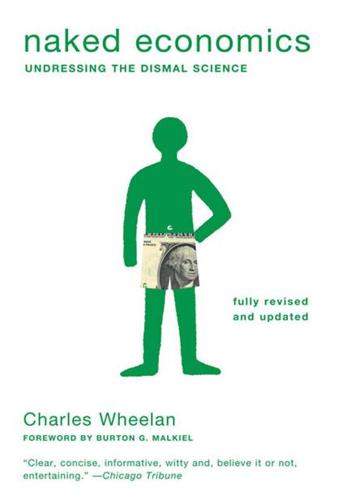
Naked Economics: Undressing the Dismal Science (Fully Revised and Updated)
by
Charles Wheelan
Published 18 Apr 2010
I would have gladly played for $58 million, or, if pressed, for $58,000. Several things precluded me from entering that market, however: (1) I’m five-ten; (2) I’m slow; and (3) when shooting under pressure, I have a tendency to miss the backboard. Why is LeBron James paid $20 million a year? Because nobody else can play like him. His unique talents create a barrier to entry for the rest of us. LeBron James is also the beneficiary of what University of Chicago labor economist Sherwin Rosen dubbed the “superstar” phenomenon. Small differences in talent tend to become magnified into huge differentials in pay as a market becomes very large, such as the audience for professional basketball.
…
Many markets have barriers that prevent new firms from entering, no matter how profitable making widgets may be. Sometimes there are physical or natural barriers. Truffles cost $500 a pound because they cannot be cultivated; they grow only in the wild and must be dug up by truffle-hunting pigs or dogs. Sometimes there are legal barriers to entry. Don’t try to sell sildenafil citrate on a street corner or you may end up in jail. This is not a drug that you snort or shoot up, nor is it illegal. It happens to be Viagra, and Pfizer holds the patent, which is a legal monopoly granted by the U.S. government. Economists may quibble over how long a patent should last or what kinds of innovations should be patentable, but most would agree that the entry barrier created by a patent is an important incentive for firms to make the kinds of investments that lead to new products.
…
The authors of the study recommend that states eliminate entry barriers that keep talented people from becoming public schoolteachers.4 Most states are doing the opposite. Mr. Stigler would have argued that all of this is easy to explain. Just think about how the process benefits teachers, not students. Making it harder to become a teacher reduces the supply of new entrants into the profession, which is a good thing for those who are already there. Any barrier to entry looks attractive from the inside. I have a personal interest in all kinds of occupational licensure (cases in which states require that individuals become licensed before practicing certain professions). My doctoral dissertation set out to explain a seemingly anomalous pattern in Illinois: The state requires barbers and manicurists to be licensed, but not electricians.

Orwell Versus the Terrorists: A Digital Short
by
Jamie Bartlett
Published 12 Feb 2015
I’m writing this the day after two Islamist radicals shot and murdered twelve people in the offices of the French satirical magazine Charlie Hebdo; as I write these words, another radical Islamist has taken a number of people hostage in a kosher supermarket in Paris (and murdered four people, I learn later). One of the reasons there has been an increase in lone wolves is because the barriers to entry have fallen. According to Jeffrey D. Simon, author of Lone Wolf Terrorism: Understanding the Growing Threat, the lone wolf is ‘the most innovative, most creative and most dangerous’ type of terrorist. Lone wolves aren’t restricted by ideology or hierarchy, and don’t need to worry about alienating their group or organisation.
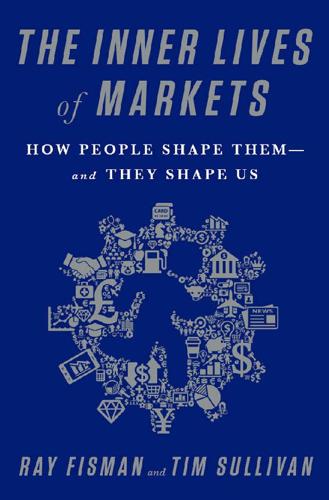
The Inner Lives of Markets: How People Shape Them—And They Shape Us
by
Tim Sullivan
Published 6 Jun 2016
To build a profitable business, you need to create something that people want and then make sure there aren’t any copycat competitors. The things that keep others out of Uber’s sandbox, so to speak, aren’t so different from the regulatory shenanigans that its predecessors resorted to. You try to erect what economists call barriers to entry, which are, almost by definition, market frictions. They’re the strategies Uber and every other business employs to try to keep customers from choosing freely among competing options in the marketplace, whether by driving competitors out of business or finding ways of keeping customers from shopping around.
…
INDEX Abidjan, Ivory Coast, 167–168 Adfibs.com, 69 adverse selection, 48, 51–55, 57, 59 advertising, as money burning, 70–71 Super Bowl advertising, 70–71 AdWords, 14, 101 Airbnb, 3, 6, 50, 109, 125, 170–172 Akerlof, George, 43–51, 58–59, 64, 112 Alaskoil experiment, 55–57, 58–59 algebraic topology, 44–45 Amazon, 2, 3, 16, 50, 51, 52, 59, 74, 91, 95, 97, 108, 110, 119, 126, 128–129 American Express, 115–116 America’s Second Harvest, 154–160 Amoroso, Luigi, 21 Angie’s List, 120 “animal spirits,” 50 applied theory in economics, 45, 50, 75–76 Arnold, John, 156–158, 160 Arrow, Kenneth, 30–34, 36–37, 40, 76, 117, 180 ascending price English auctions, 83, 100 asymmetric information, 41, 44–55 attribution theory, 177–178 auctions AdWords, 14, 101 auction theory, 82–84 coat hooks, 151–152, 174 design, 14, 101–102 first-price sealed-bid, 86–87, 99–100 first-price (live), 84 internet, 94–97 types of, 81–82 wireless spectrum, 102–103 See also eBay; Vickrey auctions AuctionWeb, 40 Ausubel, Larry, 98 Azoulay, Pierre, 112 Bank of America, 113–115 barriers to entry, in marketplace, 173 baseball posting system, 79–81 Bazerman, Max, 55–57 Becker, Gary, 35, 161–162 Berman, Eli, 67 Berners-Lee, Tim, 41–42 Big Data, Age of, 15 Blu-ray-HD DVD format war, Sony, 125–126 Book Stacks Unlimited, 42–43 Boston public schools, 144–149 Boston University MBA students experiment (Bazerman and Samuelson), 55–57, 58–59 See also Alaskoil experiment bridge design, 141–142 Brown, William P., 83–84 Brownian motion, 28–29 cab drivers, Uber vs., 169–170, 172 Camp, Garrett, 170 candle auctions, 82 capitalism, free-market, 172–173 car service platform, 169–171 cash-back bonus, 116 cash-for-sludge transactions, 167–169 See also Summers, Larry centralized clearinghouses, 140–141 Champagne fairs, 105–106, 126–128 Changi POW camp, 175–177 Le Chatelier, Henry Louis, 29 Le Chatelier’s principle, 29 cheap talk, 62–66, 69 chess, difference between Cold War and, 26 See also poker, bluffing in child labor, 180 cigarettes, as currency in German POW camp, 8–9 Clarke, Edward, 93 Clavell, James, 175 clerkship offers, with federal judges, 140 coat hook, 151–152, 174 Codes of the Underworld (Gambetta), 68 Cold War, difference between chess and, 26 See also poker, bluffing in Collectible Supplies, 128–129 “College Admissions and the Stability of Marriage” (Gale and Shapley), 137 commitment, signs of, 62–63, 69–71, 72–75 community game, 178–179 competition models of, 35, 166, 172–173 platform, 124–126 unethical conduct with, 180–181 “Competition is for Losers” (Thiel), 173 competitive equilibrium, existence of, 29, 31–34, 36–37, 40, 45, 76 competitive markets, 35, 124–126, 172–174, 180–181 See also platforms competitive signaling, 70–71 congestion pricing model, 86, 94 constrained optimization, 85–86, 133 contractorsfromhell.com, 120 copycat competitors, 172–173 corporate philanthropy, 72–75 Cowles, Alfred, 25, 27 Cowles Commission for Research in Economics, 25, 27, 31, 134 “creative destruction,” 50 credit card platforms, 113–116, 123–124 criminal organizations, informational challenges of, 68 currency, at Stalag VII-A POW camp, 8–9 customer feedback, 52, 74–75 Davis, Harry, 154, 157 Debreu, Gérard, 20, 24, 25, 32–33, 36–37 decentralized match, 139–140 deferred acceptance algorithm, 137–141, 145–149 Delmonico, Frank, 164 descending price auctions, 81–82 design, auction, 14, 101–102 Digital Dealing (Hall), 94 Discover card, 115–116 distribution of income, 22 Domar, Evsey, 36–37 Dorosin, Neil, 142–144 Douglas Aircraft Company, 25 Dow, Bob, 1–2 Dow, Edna, 1–2 Drèze, Jacques, 85–86 dumping toxic waste, transactions for, 167–169 Dutch auctions, 81–82 dysfunction, market, 36, 75–77, 143 eBay adverse selection on, 51–55, 57 auction listings, 94–97 concerns on model for, 43, 46, 48 on seller motivation for giving to charities, 73–75 start of, 39–41 as two-sided market, 109, 119 e-commerce, 41–43, 52–55 “The Economic Organization of a P.O.W.

The Global Auction: The Broken Promises of Education, Jobs, and Incomes
by
Phillip Brown
,
Hugh Lauder
and
David Ashton
Published 3 Nov 2010
If free enterprise was to be the motor of economic growth, everyone should be institutionally encouraged to pursue their self-interest by extending market competition, consumer choice, and shrinking the safety net provided by the welfare state. Getting the incentives right for business involved reducing all the impediments or rigidities to free market behavior. These included removing trade barriers and attacking the power of trade unions. In the global economy, barriers to entry were seen to protect inefficient businesses while trade unions kept wages artificially high. 24 The Global Auction At the same time, middle-class families were encouraged to believe that more consumer choice would give them greater control over their lives without government interference. Schools, hospitals, and pension plans were all now a matter of personal choice.
…
This HR director recognized that while there may be some good candidates in lower tier universities, the numbers are tiny, as those at elite universities have already gone through a rigorous selection process. “It’s a total numbers game; it’s very frustrating but it’s a total numbers game.” But by choosing to fish in such a small pool of college graduates, companies are strengthening the barriers to entry. It is as if they are putting a sign out: “Those who are not at top-notch universities need not apply.” What may be considered extraordinary about this strategy is that despite the demand for increased numbers of young managers who can work across the globe, they remain focused on recruiting from the elite universities in each country.
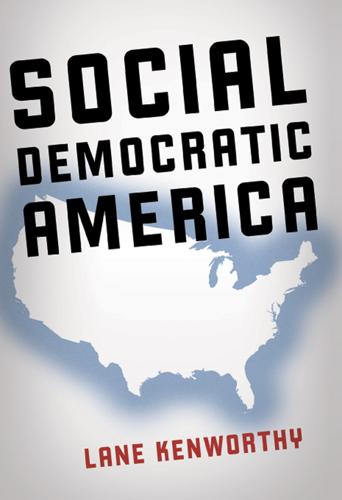
Social Democratic America
by
Lane Kenworthy
Published 3 Jan 2014
Since the 1970s, competition has become a much more pervasive feature of America’s economy. Firms selling goods or services in international markets confront intense foreign rivals. Domestic industries, such as restaurants and hotels, face more competitors too, as technological advances, falling construction and transportation costs, and deregulation have reduced barriers to entry. In addition, shareholders now want rapid appreciation in stock values. Whereas a generation ago they were happy with a consistent dividend payment and some long-term increase in the stock price, they now demand buoyant quarterly profits and constant growth. Robert Reich has an apt label for this new economy: “supercapitalism.”
…
We’ll always need some restrictions to prevent financial excesses, protect worker and consumer safety, safeguard the environment, and more. But we will rely less on specifying what businesses can and can’t do and more on competition coupled with cushions. If we do better at enforcing antitrust rules and scrap or reduce regulations that create barriers to entry, competition will help to align business behavior with the preferences of consumers. Insurance—both compensatory and proactive, both cash payments and services—will cushion those who are victimized by market processes or the vagaries of life. Government also will be more efficient and effective in its administration.

Humans as a Service: The Promise and Perils of Work in the Gig Economy
by
Jeremias Prassl
Published 7 May 2018
There is often little that is genuinely disruptive or innovative about most platforms’ business models; instead, ‘dis- ruption’ has increasingly become code for something different altogether: breaking the law. As regards challenges to entrenched economic interests, if existing regu- lation simply serves as a barrier to entry and protects incumbents, an increase in competition should be welcomed by workers and consumers alike. Many will benefit from easier access to labour and service markets: think of poten- tial London cabbies who no longer need to spend years studying the streets of London for ‘The Knowledge’ exam.
…
Ask any consumer who has had to communicate with grumpy Parisian taxi drivers or has struggled to hail a yellow cab on a rainy Friday afternoon in Manhattan for proof of the con- sumer value of these new services.23 Professor Orly Lobel of the University of San Diego has suggested that, in looking at the legal regulation of the platform economy, we should dis- tinguish between hard cases (in which public welfare is at stake) and easy * * * 38 Doublespeak cases (in which legal regulation inhibits competition and creates barriers to entry). Questions of employment law, she notes, are hard cases—but the same is not true for traditional taxi regulation: Laws that do not promote welfare but rather protect entrenched interests are easy cases . . . Attempts at extending permit requirements—what industry interests often call ‘leveling the playing field’ between ridesharing companies and taxi companies, or between other platform companies and the businesses they disrupt—are generally harmful to the evolution of the platform and to competitive markets more broadly.24 Most platforms, however, never face such problems: they simply don’t oper- ate in heavily regulated environments.
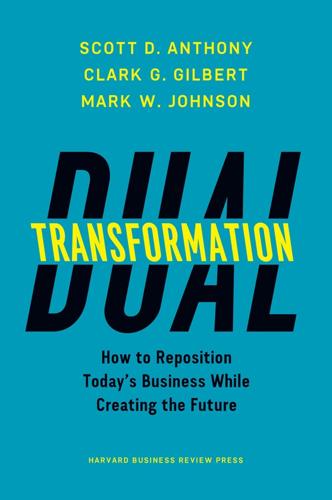
Dual Transformation: How to Reposition Today's Business While Creating the Future
by
Scott D. Anthony
and
Mark W. Johnson
Published 27 Mar 2017
The Netscape browser—coupled with Tim Berners-Lee’s invention of HyperText Markup Language (HTML) universal resource locators (URLs), along with a range of complementary innovations—allowed even the layperson to ride the so-called information superhighway. The disruptive effects of this internet-enabling technology reshaped the media business. The first to feel its effects were newspapers. Historically the scale economics of the printing press created significant barriers to entry, resulting in effective natural monopolies in many markets; most US cities had only one or two highly profitable papers. The rise of the commercial internet destroyed this business, with most newspaper companies decimated by 2000. Well, not exactly. Certainly the newspaper companies felt some pain during the 2000–2002 US recession, but the years from 1994 through 2007 were actually quite good for most newspapers.
…
Its online presence grew substantially, and TVinContext received significant industry acclaim as TEN rolled it out. Aetna Harvard economist Michael Porter has made a number of contributions to the field of corporate strategy. One of the most seminal was his theory that outperformance comes from picking industry circumstances in which five forces (barriers to entry, supplier power, buyer power, competitive rivalry, and threat of substitution) support success. In 2011, health insurance companies certainly appeared to have the Porterian wind at their backs. Spending on health care had grown from roughly 6 percent of gross domestic product in the 1960s to almost 20 percent, a number that dwarfs the spending of any other country in both absolute and relative terms.
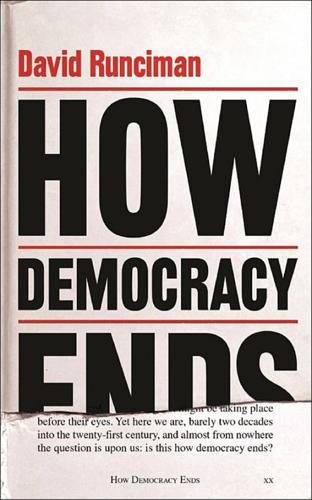
How Democracy Ends
by
David Runciman
Published 9 May 2018
This is not the power of brute force. It is simply the weight of numbers. When an upstart network comes along that tempts people away, Facebook buys it (as it has done with Instagram, WhatsApp and others). The bigger Facebook is the bigger it gets because its vast purchasing power puts up huge barriers to entry for anyone else. So Facebook has something to compensate for the absence of the sword. In that picture of the Leviathan (page 128), it is not just the giant looming over the landscape. It is also turning into the town in the foreground. It has started to become the place where people live. If the contest were simply giant v. giant, the state would win.
…
The internet age has seen an enormous revival of interest in this idea. Digital technology now enables the pooling of opinions on a vast scale. Collectively we can rate products, predict futures, solve puzzles and even edit an encyclopedia better than any one of us could do on our own. The internet has also dramatically lowered the barriers to entry. To join a group decision there is no longer any need to gather in the market square. We can do little bits of joint decision-making in all sorts of different places: all it needs is a click here, a search there. Why shouldn’t we harness these benefits in politics? The answer takes us back to ancient Athens.

Buy Then Build: How Acquisition Entrepreneurs Outsmart the Startup Game
by
Walker Deibel
Published 19 Oct 2018
In other words, does the company provide something that allows it to fend off new companies from entering the market and taking existing market share? Buffet’s long-used example of the ideal business being the only toll 186 road across a river might apply as a good analogy here. Spend time identifying the barriers to entry that exist. If someone else wanted to start a similar business, what would keep them out? The threat of new entrants is typically kept at bay with competitive tools such as differentiation, brand equity, economies of scale, switching costs, cost of starting up, access to distribution channels, geographic restrictions, or the new favorite, network effects.
…
Being on the “same side of the table” as the seller helped me learn the transaction process without having to worry about the potential “getting-ripped-off” component. I’m sure, if I had tried to buy from anyone else in the world I never would have bought a company. This experience gave me great insight as to the barriers-to-entry that exist for would be acquisition entrepreneurs. Perhaps this is all their fault. Finally, to all the entrepreneurs I have met along the way. You make life so rich. 288 ABOUT THE AUTHOR WALKER DEIBEL is an entrepreneur and investor who has cofounded three startups and acquired seven companies.

Cultish: The Language of Fanaticism
by
Amanda Montell
Published 14 Jun 2021
If you subscribe to an astrology app or have ever attended a music festival, odds are that in the 1970s, you’d have brushed up against a “cult” of some kind. Ultimately, the needs for identity, purpose, and belonging have existed for a very long time, and cultish groups have always sprung up during cultural limbos when these needs have gone sorely unmet. What’s new is that in this internet-ruled age, when a guru can be godless, when the barrier to entry is as low as a double-tap, and when folks who hold alternative beliefs are able to find one another more easily than ever, it only makes sense that secular cults—from obsessed workout studios to start-ups that put the “cult” in “company culture”—would start sprouting like dandelions. For good or for ill, there is now a cult for everyone.
…
Brent Wilkins’s suicide was a rare and concretely tragic example of the fate that can befall a seeker who submerges too deeply in the warped “reality” of an online guru. But for most people, someone like Massaro is just another account to thumb past. Unlike the cults of the ’70s, we don’t even have to leave the house for a charismatic figure to take hold of us. With contemporary cults, the barrier to entry is the simple frisson of tapping Follow. Not every spiritual influencer is hazardous; in fact, many provide what I’d classify as a largely positive experience, offering inspiration, validation, and solace, even if just for a moment mid-scroll. In 2018, I investigated the growing phenomenon of “Instagram witches” for Cosmopolitan.com, and what I found was a diverse coalition of millennial women and nonbinary people growing devoted digital followings with whom they attentively engaged over recipes for plant-based tinctures and astrological insights.
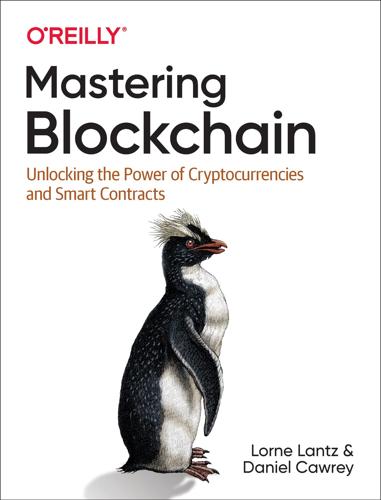
Mastering Blockchain: Unlocking the Power of Cryptocurrencies and Smart Contracts
by
Lorne Lantz
and
Daniel Cawrey
Published 8 Dec 2020
Arbitrage is often an appealing trading strategy because of its relatively low risk profile. In arbitrage, there is no risk involved in estimating what cryptocurrency prices will be in the future. Traders only take action based on what the price is right now. The biggest downside to arbitraging is that the barrier to entry is fairly low. If opportunities exist, you will find competition with many other traders, which can lower margins. We’ll discuss arbitrage trading in a little more detail later in this chapter. Counterparty Risk Arbitrage requires leaving large amounts of capital on one or more exchanges.
…
The biggest advantage of using a flash loan to execute an arbitrage is that liquidity is no longer required to sit on the exchanges involved in the arbitrage. The requirement for liquidity between crypto exchanges introduces counterparty risk, limits the amount that can be arbitraged, and introduces a large barrier to entry to begin arbitraging. However, arbitraging with a flash loan provides real-time access to multiple large liquidity pools without the need to ask permission. The lender gives permission for funds to be borrowed when funds are deposited into the smart contract. At any time they can look at the contract balances and see what percentage of the funds have been loaned out.

Two and Twenty: How the Masters of Private Equity Always Win
by
Sachin Khajuria
Published 13 Jun 2022
In other words, if, say, five hundred million dollars are returned within a year from the General Insurance deal, this sum can be reinvested by the Firm as if it were fresh money from the investors. That’s five hundred million dollars more to make a profit on, and earn performance fees on if the money is invested well. By now the tide is turning, and sentiment on the project has grown more positive. Here is a big target trading at a low valuation in a regulated business where the barriers to entry are thick and numerous. The Firm can invest a billion-dollar equity check in a sector not linked directly to other investments in the private equity fund, in a target that is managed without conviction. There is so much that can be done with this company; there are so many levers to pull to create value.
…
Because these kinds of assets often have attributes that are attractive to investors looking for safe but high-earning homes for their cash. They often involve hard physical assets that are difficult to build and replace, and often require licenses or leases or concessions to operate. They often feature revenues underpinned by long-term contracts, barriers to entry for competitors, big profit margins, capital expenditures that can be planned years in advance, and plentiful cash flow to pay regular dividends and service high levels of cheap debt. Service-level agreements between the infrastructure asset operators like an airport and clients, such as airlines, tend to be strict and come with heavy penalties for breaches.
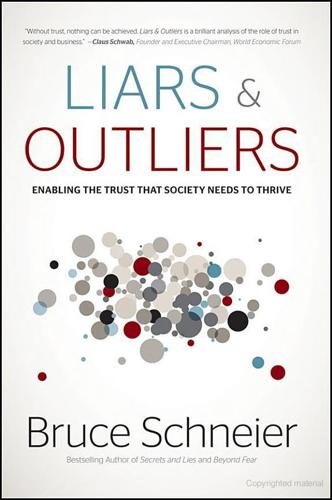
Liars and Outliers: How Security Holds Society Together
by
Bruce Schneier
Published 14 Feb 2012
This sort of thing is taken to the extreme by companies like Facebook, which don't even charge their users for their apps at all, and make all their money selling information about those users to third parties.18 It turns out that offering a product or service for free is very different than offering it cheaply, and that “free” perturbs markets in ways no one fully understands. The optimal way to do business in an open-air market—offer the best products at the lowest prices—fails when there are other revenue streams available. An additional complication arises with products and services that have high barriers to entry; it's hard for competitors to emerge. In an open-air market, if the sandwich vendors all sell their sandwiches at too-high prices, someone else can always come in and start selling cheaper sandwiches. This is much harder to do with cell phone networks, or computer operating systems, or airline tickets, because of the huge upfront costs.
…
They are also likely to have former regulators working for them, and former employees as regulators. At this point, there's enough trust amongst them for them to band together into a cartel. Another researcher wrote that the two features that are necessary for successful cartels are high seller market sales concentration and product homogeneity.High barriers to entry help ensure that a cartel is long-lived. (2) The only markets where we have routinely allowed for monopolies are utilities: power, gas, telephone, etc. The idea is that the cost of infrastructure is so high, and the potential for profit is so slim, that market economics will simply drive sellers out of business.
…
Knee (2006), The Accidental Investment Banker: Inside the Decade that Transformed Wall Street, Oxford University Press, xvii. described dot.coms In the matter of Merrill Lynch & Co. (2002), Decision and Order, Supreme Court of the State of New York. Chapter 13 band together into Tim Wu (2010), The Master Switch: The Rise and Fall of Information Empires, Alfred A. Knopf. High barriers to entry John M. Connor (2002), “The Food and Agricultural Global Cartels of the 1990s: Overview and Update,” Purdue University Department of Agricultural Economics, Staff Paper 02-4. There are exceptions Yvonne Chouinard (2005), Let My People Go Surfing: The Education of a Reluctant Businessman, Penguin Press.

Producing Open Source Software: How to Run a Successful Free Software Project
by
Karl Fogel
Published 13 Oct 2005
(from jwz.org/gruntle/nomo.html) A related mistake is that of skimping on presentation and packaging, figuring that these can always be done later, when the project is well under way. Presentation and packaging comprise a wide range of tasks, all revolving around the theme of reducing the barrier to entry. Making the project inviting to the uninitiated means writing user and developer documentation, setting up docs that are informative to newcomers, automating as much of the software's compilation and installation as possible, etc. Many programmers unfortunately treat this kind of work as being of secondary importance to the code itself.
…
Most insidiously, the project won't even know it's losing all those developers, because the process is an accumulation of non-events: someone visits a web site, downloads the software, tries to build it, fails, gives up and goes away. Who will ever know it happened, except the person themselves? No one working on the project will realize that someone's interest and good will have been silently squandered. Boring work with a high payoff should always be done early, and significantly lowering the project's barrier to entry through good packaging brings a very high payoff. When you release a downloadable package, give it a unique version number, so that people can compare any two releases and know which supersedes the other. That way they can report bugs against a particular release (which helps respondents to figure out if the bug is already fixed or not).
…
And don't just use any existing license — use one of the widely-used, well-recognized existing licenses. Such licenses are familiar to many people already. If you use one of them, people won't feel they have to read the legalese in order to use your code, because they'll have already done so for that license a long time ago. Thus, you reduce or remove one possible barrier to entry for your project. They are also of a high quality: they are the products of much thought and experience; indeed most of them are revisions of previous versions of themselves, and the modern versions represent a great deal of accumulated legal and technical wisdom. Unless your project has truly unusual needs, it is unlikely you could do better, even with a team of lawyers at your disposal.
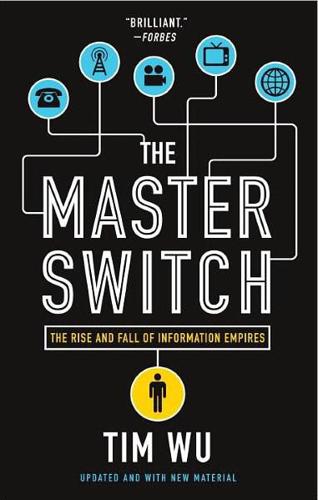
The Master Switch: The Rise and Fall of Information Empires
by
Tim Wu
Published 2 Nov 2010
In De Forest’s words, radio “is the coming Science, is moving ahead faster, possibly, than any other.”15 He urged young men to “take up Radio work because it offers a means of entertainment second to no other; gives useful instruction that can be made to produce tangible results later on; keeps everyone interested; enables you to get the news of the world by wireless and provides a pastime and hobby that will get the busy man’s mind into other channels.” One must stress that it was not merely technological wizardry that set people dreaming: it was also the openness of the industry then rising up. The barriers to entry were low. Radio in the 1920s was a two-way medium accessible to most any hobbyist, and for a larger sum any club or other institution could launch a small broadcast station. Compare the present moment: radio is hardly our most vital medium, yet it is hard if not impossible to get a radio license, and to broadcast without one is a federal felony.
…
As Kline writes, “Every evening at a designated time, usually seven p.m., an operator would call all farms on a line and give the time, weather and market reports, newspaper headlines and local news, ‘with a spicing of gossip.’ ” • • • In the theory of competition that applies to information industries, as to all others, we speak of barriers to entry: the obstacles that a newcomer must overcome to get into the game. But barriers in an information industry, trafficking as it does in expressive content, can represent more than a restraint on commercial aspirations; they can, depending on how crucially the information medium figures in a society’s communications, also restrain free speech.
…
It was a perfect wedding of a new government ideology and a new corporate calculus when the Bells, AT&T, and the rest of the industry signed on to the Telecommunications Act of 1996.9 The most sweeping legislative overhaul of the business since the Communications Act of 1934 was founded on the principle of “competition everywhere.” The idea was to remove barriers to entry in all segments of the industry, a goal that the Bell companies (Bell Atlantic, Bell South, Pacific Telesis, Verizon, and the rest), the long distance firms (AT&T as well as MCI), and the cable companies all pledged to uphold. The Act was designed to encourage cable companies to enter the phone business, phone companies to offer TV service, long distance firms to build local networks, and so on.

The Future of Ideas: The Fate of the Commons in a Connected World
by
Lawrence Lessig
Published 14 Jul 2001
The first part has been to introduce the idea of open code and to demonstrate how it operates at the content layer to inspire a wide range of innovation. It does this both for the reasons that technologists give—it is fast, cheap, and powerful—and for reasons that are too often missed. By offering to the world a wide range of code and hence coding resources, open code lowers the barriers to entry for innovators.60 By building a neutral platform, open code invites a different kind of innovation. By protecting that neutral platform, both through licenses and through distributed source code, the system assures developers that the platform will remain neutral in the future. This feature of open code, however, is not limited to code.
…
And just as the invention of a new machine can in turn reduce the cost of some production process, the ability to capture and use this new resource will reduce the costs of advertising dramatically. Rather than technologies that produce 0.5 percent return,23 these technologies will produce a much greater return at a lower cost.24 Thus the architecture of the Net enables a resource otherwise unavailable. And through this resource, a barrier to entry is reduced. For if one of the hardest parts of breaking into music is the cost of promotion, then as long as these data mines remain competitive, lowering the cost of promotion will make it easier to break into music. The same is true with books or any other content. By increasing the demand for a diverse selection of content, and by enabling the cheaper identification of that demand, the Net widens the range of potential contributors.
…
The advantage of Noam's solution is that it keeps the cost of spectrum use down. As Noam writes, an auction is simply “a tax on the communications sector and its users.”39 Given the size of the bids currently being offered for this resource, it will tend, as Noam argues, to encourage oligopoly. “An auction payment that must be paid in advance is a barrier to entry, unless capital markets are perfect, which they are not.”40 We are far from the moment, however, when it would make sense to layer this market onto open spectrum. Just as the National Park Service began charging entrance fees late in its life, so too should we begin without entrance fees and layer them on, neutrally, as needed.
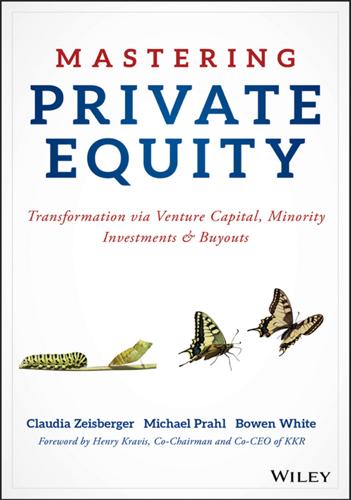
Mastering Private Equity
by
Zeisberger, Claudia,Prahl, Michael,White, Bowen
,
Michael Prahl
and
Bowen White
Published 15 Jun 2017
Given the lack of a global bankruptcy code, the latter requires having local, country-by-country legal expertise in-house. As maintaining a full team of turnaround professionals entails significant cost, this strategy is clearly a niche undertaking for truly experienced funds and presents a high barrier to entry into this segment of the PE industry. No turnaround situation is alike, but Exhibit 5.1 shows the typical steps recommended by turnaround experts. Exhibit 5.1 Typical Turnaround Process Source: Turnaround Management Association When dealing with target firms in dire straits, protecting the PE fund’s interest (and in turn that of its LPs) is paramount, and turnaround funds will ensure that certain minimum conditions are in place before investing.
…
Operational value-added begins in diligence as firms make their most important decision: whether to buy a business. PE firms can’t weave straw into gold, turning a bad company into a good company. Success requires “good clay.” Operational diligence must examine the strength of a company’s end markets, business model, and barriers to entry while identifying the profit improvement opportunities that underpin the required stretch of a winning bid. Once a company is purchased, the first order of business is strengthened governance since at the heart of private equity is a “governance arbitrage” advantage. An operational perspective is required to increase transparency with upgraded metrics and reporting, to more closely align pay and performance, and to focus the board room agenda on the highest priority opportunities.
…
Investors pour over investment processes, compliance procedures, valuation guidelines, and co-investment allocation policies, while GPs prepare different, customized sets of data for each of their investors and engage in legal negotiations about side letters. On top of this, in line with the zeitgeist, regulatory requirements have increased. This combination of investor and regulatory demands requires a huge investment in people and infrastructure for managers, in effect creating barriers to entry for first-time funds and smaller firms. The large investors that now make up the bulk of the capital in the industry prefer to allocate to larger managers that can provide this institutional set-up (and absorb larger check sizes). So, the bigger managers are getting bigger, as shown by the amount of industry AUM now controlled by funds $1 billion and larger (56%) or even larger ones at more than $2.5 billion (37%) in Exhibit 25.4.

Turning Pro: Tap Your Inner Power and Create Your Life's Work
by
Steven Pressfield
Published 14 Aug 2011
You’ll notice, on the spine of this book (or in the title page of your eBook), that the company publishing Turning Pro is called Black Irish Books. It is my great pleasure to declare that Black Irish Books is just another name for two guys (Steve and I) who battle Resistance every single day…just as you do. It’s no secret that book publishing is in the midst of radical change. The barriers to entry have crumbled and, as a result, opportunities have grown exponentially. Steve and I joined forces as co-founders of Black Irish Books to get into the ring ourselves. We intend to publish steak-and-potato kind of books whose aim is to inspire, encourage, and fortify those artists, entrepreneurs, and athletes whose ambition is not to stand on the sidelines, waiting for permission from others, but to take their destiny in their own fists—to pursue their heart’s calling and make it work.
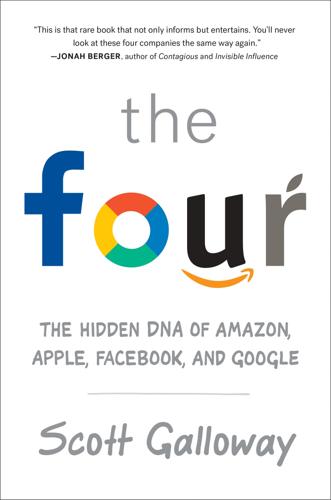
The Four: How Amazon, Apple, Facebook, and Google Divided and Conquered the World
by
Scott Galloway
Published 2 Oct 2017
Yet Apple manages to be both . . . and it does so because it emphasized manufacturing and robotics a generation before most tech (especially consumer tech) companies; established a world-class supply chain; and then established a retail presence, backed by a small army of support and IT experts, that has become the envy of every brand and retailer. Chutes, Ladders, and Moats Firms try to build higher and higher walls to keep enemies (upstarts and competitors) from invasion. Business theorists call these structures “barriers to entry.” They are nice in theory, but, increasingly, traditional walls are showing cracks, even crumbling—especially in tech. The plummeting price of processing power (Moore’s Law again), coupled with an increase in bandwidth and a new generation of leadership that has digital in their DNA, has produced bigger ladders than anyone ever expected.
…
Then it set out to capture the contents of every out-of-print book (the Google Library Project) and work of journalism (Google News). With the insidious nature of search, Google’s absorption of all the world’s information took place in the open—and potential victims didn’t seem to notice until it was too late. As a result, Google’s control of knowledge is now so complete, and the barriers to entry by competitors so great (look at the marginal success of Microsoft’s Bing), that the firm might maintain control for years. Every company on the planet envies Google’s position at the epicenter of the digital world. But the reality is less happy. Leave aside the likelihood that once the company becomes old news, Congress and the Justice Department might just decide the search engine is a public utility and regulate the firm as such.

Who Gets What — and Why: The New Economics of Matchmaking and Market Design
by
Alvin E. Roth
Published 1 Jun 2015
See also labor markets for college admissions, 5–6, 169, 170–73 in law firm recruiting, 65–68 signaling in, 169–73 strategic decision making in, 10–11 apps, 21–22 Arunta people, 71–72 Ashlagi, Itai, 48, 149, 239, 243, 244 auctions, 121–22, 180–89 ascending bid, 182, 184, 188–89 eBay, 104–5 first-price, 184–85 package bidding in, 188–89, 225–26 price discovery in, 185–89 sealed bid, 182–84 second-price sealed, 182–84 simultaneous ascending, 187–89 for spectrum licenses, 185–89 for targeted ads, 189–92 automatic teller machines, 24 Avery, Chris, 91, 239 BandwidthX, 105 bankruptcy, 201 banks and banking, 178, 200–201 banner ads, 191–92 barriers to entry, 24 barter kidney donation as, 31–32 repugnant markets and, 202–5 Becker, Gary, 245 behavioral economics, 52 Beran, Bob, 146 Beth Israel Deaconess Medical Center (Boston), 42 Bitcoin, 24 BlackBerry, 22 black markets, 207 blocking pairs, 139–43 Bloomberg, Michael, 106, 107 Bolton, Gary, 118, 240 Boston Globe, 126 Boston Pool Plan, 138 Boston Public Schools, 11, 122–28, 162–65.
…
See also early transactions kidney transplants, 3–4, 6, 29–53 black market for, 207 close to home, 45–46 compatibility issues in, 29–30 congestion with, 51, 52 cost of dialysis vs., 41, 42, 51, 208, 211 demand vs. supply for, 31, 205–7 disincentives for donations for, 209–10 exchange programs for, 8, 30–31, 206 algorithm for, 35–38, 39–41 benefits of, 51 chains in, extending, 35–36, 37–41 expanding, 210–12 first, 35 national level, 49–51 non-directed donors in, 35–38, 43–44, 52, 210–12 safe participation in, 34, 36, 37, 47–49, 51–52 trading cycles and design for, 32–41 financial interests in, 45–46, 50 hard and easy matches in, 47–49 living donors for, 41–46 national, 49–51 nonsimultaneous vs. simultaneous, 41–46 patient needs and preferences in, 34, 37 reimbursement systems for, 206–7, 208–10 selling organs for, 6, 12, 46, 203–7 legalization of, 208–9 thickening the market for, 49–51 Klein, Joel, 106, 107, 161 Kojima, Fuito, 149 Kozinski, Alex, 93, 95, 239 labor markets, 6 congestion in, 111 exploding offers in, 98–99 law firm recruiting and, 65–68 signaling in, 169–70, 173–75, 179–80 stable outcomes in clearinghouses for, 139–43 Lack, Jeremy, 106, 153, 160 laissez-faire, 7 languages, evolution of, 229–30 law clerks, 69–70 law firms, recruiting in, 65–68 Lee, Soohyung, 176–77 legal safeguards, 114–15 Leishman, Ruthanne, 37, 44, 50 Levey, Andy, 38–39 liquidity providers, 84 loans, charging interest on, 200–201, 202, 205 Louisiana State University, 65 Lyft, 104 Mad Men, 190 market design, 6–8, 13–14, 217–31 bad, persistence of, 223–26 based on participant culture and psychology, 78 central planning vs., 7, 149–50, 166–67 for coffee, 17–18 of college bowl games, 60–65 vs. control, 212–15 culture and, 78 expert guides in, 147–48 failures in, 52–53 failure to implement, 86, 88 for function, 12–13 gaining support for, 88–89 human behavior and, 52, 118 ongoing adjustments in, 52–53, 164–65, 222–23, 227–31 pervasiveness of, 15 reliable information in, 118 for restaurants, 217–20 solutions in, 133–34 trading cycles and, 32–41 markets and marketplaces barriers to entry in, 24 based on desires, 5 central planning vs., 7, 149–50 collective nature of, 229–31 commodity, 5 communication speed in, 99–106 congestion in, 9–10, 92–93, 99–112 connections among, 7, 22–24, 227 equilibrium in, 77 evolution of, 13–14 flexibility of, 149 free, 7, 12–13, 217, 226–28 as human artifacts, 212–15, 229–31 legal vs. illegal, 114–15 matching, 5–6 regulation of (See regulation) repugnant, 6, 11–12, 192, 195–215 safety of, 11, 113–30 simplicity of, 11, 26–27 thick, 8–9.
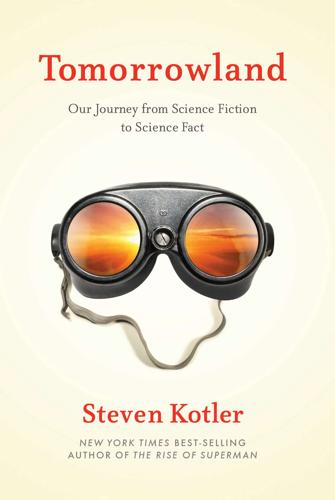
Tomorrowland: Our Journey From Science Fiction to Science Fact
by
Steven Kotler
Published 11 May 2015
And, for those with neither the lab nor the learning, there are dozens of service providers willing to do all the serious science for a fee. Since the invention of genetic engineering in 1972, the high cost of equipment and the high cost of getting enough education to use that equipment effectively kept most with ill intentions away from these technologies. Those barriers to entry are now gone. “Unfortunately,” said former Secretary of State Hillary Clinton in a December 7, 2011, speech to the global review board for the Biological Weapons Convention, “the ability for terrorists or other nonstate actors to develop and use these weapons is growing. Therefore this must be a renewed focus of our efforts, because there are warning signs and they are too serious to ignore.” 5.
…
See also sperm banks aging and, 191 in binary code, 226–27 evolution and, 55, 57, 58–59 Human Genome Project and, 57, 228 interaction of culture with, 56–57 largest collections of, 249 printing, 231 stem cells in repair of, 199 synthetic biology manipulation of, 230–32 genetic engineering, 226–30 barriers to entry in, 229–30 BioBricks in, 234–35 of bioweapons, 219–46 cost of, 228, 229, 243–45 crowdsourcing in, 221–23 dangers of, 227, 232–33 environmental dangers of, 133–34, 138–39 gene sequencers in, 228–29 genetic markers in, 136–37 improved technology for, 226–27, 228–29 jumping genes in, 136–37, 138–40 open-sourcing, 243–45 synthetic biology and, 230–32 viruses in, 221–23, 233 genetic markers, 136–37 Genetics and IVF Institute, 257 Genome Institute, 212 genomic sequencing, 57 G-LOC, 40–42 Goldman, Robert, 187 Goldstein, Larry, 210–11 Goodman, Marc, 219–46, 224 Google, 28 Gould, Stephen Jay, 49, 54 gradualism, 49 Graham, Bob, 237 Granger, Richard, 58 Grant, Cary, 169 Green, Robert, 245 Greyson, Bruce, 39 Greyson Scale, 39 Griffiths, Roland, 152 Grof, Stanislav, 172, 180 Guardian (newspaper), 236–37 “Gym and Tonic: A Profile of 100 Steroid Users” (Evans), 190 gyrocopters, 102 gyroplanes, 102, 104 Haldane, J.B.S., 87 Halothane, 39 Hansen, James, 119 Harman, Denham, 191 Harris, Bernard, 54 Hartrick, Michael, 8–9 Hatch, Orrin, 214 Hawking, Stephen, 135 Hayabusa (space probe), 146–47 Hayes, Ollie, 224 headaches, cluster, 162, 164 healing, spontaneous, 164–65 health body mass changes and, 55–56 longevity and evolution and, 52–56 mosquito-borne illnesses and, 131–40 sperm banks and, 252–57 health care anti-aging medicine, 183–200 genetically targeted, 224–25, 240–41 psychedelic drugs in, 155–82 rights of embryos/fetuses in, 208–10 stem cells in, 201–18 health care costs, 19–20 coal burning and, 112 for visual prosthesis, 70 hedonic principle, 33 Heinlein, Robert A., 87, 148 helium-3, 151 Hermes gene, 137, 138 Herr, Hugh, 7–10, 12–15, 16–20 Herwitt, Allison, 210 Hessel, Andrew, 57, 59, 219–246 Hinman, Frank, Jr., 249–50 hippocampus, artificial, 26 HIV, sperm donation and, 261 Hoffa, Jimmy, 248 Hofmann, Albert, 168 Hoglund, Tom, 74 Homo evolutus, 58–59 Homo sapiens, 49, 59 Hong, Sok Chul, 54 Hood, Leroy, 216 hormones.

The End of Big: How the Internet Makes David the New Goliath
by
Nicco Mele
Published 14 Apr 2013
Granted, the administrator log-in in question doesn’t provide much access, but if it works as advertised, it could give anyone the ability to deface the Web site.21 It took me just thirty minutes to find and purchase the information—what could a motivated, better-informed troublemaker manage to do? Such accessibility of provocative information is unprecedented. As Singer writes: The barriers to entry for gaining the ultimate weapon in the Cold War, the nuclear bomb, were quite high. Only a few states could join the superpowers’ atomic club—and never in numbers that made these second-tier nuclear powers comparable to U.S. and Soviet forces. By comparison, the actors in cyberspace might range from thrill-seeking teenagers to criminal gangs to government-sponsored “patriotic hacker communities” to the more than 100 nation-states that have set up military and intelligence cyberwarfare units.22 In 2008, the National Security Agency discovered a piece of code—a computer virus, essentially—inside one of the U.S. government’s most secure, classified computer networks.
…
Then manufacturing moved overseas and became increasingly automated. As it gets more automated, the costs of smaller manufacturing runs has dropped, to the point where we can now make one of something economically. Radical connectivity has played a key role in collapsing the advantages of scale, removing barriers to entry to the marketplace and—more importantly—allowing small companies to share resources that previously were only available to Big Companies. Inside the Cloud Cloud computing exemplifies such resource sharing. You hear people talking about the cloud all the time in the context of the Internet, but a lot of us still have a fairly cloudy notion of what exactly cloud computing means.

Big Business: A Love Letter to an American Anti-Hero
by
Tyler Cowen
Published 8 Apr 2019
The Small Business Administration subsidizes small business start-ups, the procurement cycle for defense caters to corporate interests, and the sugar and dairy lobbies still pull in outrageous subsidies and price protection programs, mostly at the expense of ordinary American consumers, including low-income consumers. To these anecdotes you could add overpriced defense contracts, legal barriers to entry for laying cable to households, and cozy contractor arrangements in state and local government, among many, many other examples. The danger, of course, is that competition for consumers will be replaced by competition for political pull. There are thousands of instances of companies lobbying for tariffs, price supports, subsidies, and restrictions on their competition, all for their own self-interest and profits of course.
…
Uber, Facebook, and Google have left China; the European Union is pursuing a regulatory war against American tech companies; India limits Walmart at the retail level; and a wide range of emerging economies are, for better or worse, flexing their regulatory muscles and relegating American and other Western multinationals to lower-tier positions in their economies. If anything, we have seen a resurgence of nationalism, mercantilist sentiment, national-level barriers to entry for outsiders, state-owned companies with fundamentally domestic power bases, and a partial retrenchment of globalization. Those developments are all both causes and symptoms. They are causing multinationals to lose some influence and political power, but that they happened is also a sign that multinationals never ruled the world in the first place.
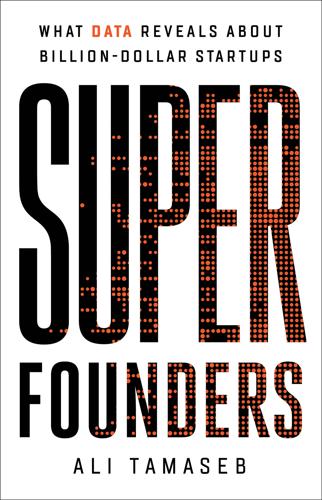
Super Founders: What Data Reveals About Billion-Dollar Startups
by
Ali Tamaseb
Published 14 Sep 2021
Defensibility comes in many forms: deep engineering, partnerships, data, brand, network effects, and, as Keith Rabois said, accumulating advantages. Defensibility does not mean that no one can copy a company. There are lots of examples where brand, engineering, or IP defensibilities have been overcome by better-funded or better-run competitors. Even network effects have been overcome. Defensibility factors are merely barriers to entry that help companies stay ahead of the competition. Companies that fail to use their status as industry leaders to keep innovating, creating better bonds with customers, and building better products are doomed to be replaced eventually, the same way companies like Nokia and MySpace were ousted.
…
There are only so many companies that can raise enough capital to put hundreds of satellites in space; at some point for new entrants, raising all that money just to have a chance to compete becomes a problem. Investors or founders shouldn’t rule out capital-intensive startups. They could be more resilient, and the high capital need creates a greater barrier to entry for competitors. It’s also a misconception that only low CapEx software-as-a-service companies can be capital efficient. My data indicates that the most capital-efficient billion-dollar startups were not only SaaS companies, but rather encompassed many types of startups. Some were consumer companies, like WhatsApp; others were pharma companies like Kite Pharma and Stemcentrx.
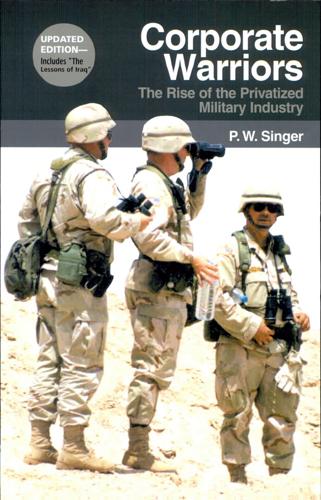
Corporate Warriors: The Rise of the Privatized Military Industry
by
Peter Warren Singer
Published 1 Jan 2003
Swiss regiments served in the French force until just after the Napoleonic Wars. Even today, the Swiss mercenary tradition lives on. The Pope is protected by the Swiss Guard, the evolution of a regiment hired in 1502 to fill out the forces of Pope Julius II. Similar to the present environment, the barriers to entry for organizing a military unit were quite low, so successful ventures were rapidly copied and marketed. A particular case in point is that of the landsknechts, mercenary organizations from South Germany and Austria. Upon seeing the success of their neighbors, similar business enterprises were soon organized in these areas, often with the sanction of the Hapsburg ruler.
…
INDUSTRY STRUCTURE The privatized military industry is not a capital-intensive sector, particularly in comparison to such traditional industries as manufacturing or, more per- 73 ORGANIZATION AND OPFRATION tinently, a public military structure; this is a critical feature of the industry. The barriers to entry into the private military service market are relatively low, as are the economies of scale. Although national armed forces require substantial and regular budget outlays to sustain themselves, all one requires for a low-level PMF is a modicum of financial and intellectual capital. For the PMFs that operate on the battlefield, the necessary tools of the trade are readily available and often at bargain prices from the international arms bazaar.
…
Whereas a state's military might invest hundreds of thousands of dollars to recruit, train, and retrain each individual soldier, PMFs can quicklv pull the same services from the open market for a fraction of a cost. This means that, although the industry can often be quite manpower intensive, with some operations employing hundreds and even thousands of operators, their marginal revenue from each operator is even higher. There is an added implication of this labor-capital mix. Since the barriers to entry are so low, corporate branding and reputation are the keys to moving into a position of dominance in the market. This may come from the reputation that employees carry over with them from past military experience, such as MPRI selling itself based on the past battlefield achievements of its employees while in the U.

The Quiet Coup: Neoliberalism and the Looting of America
by
Mehrsa Baradaran
Published 7 May 2024
It is a biography of an idea: when and why neoliberalism emerged, what problems it solved, and how it transformed America and the world. Neoliberalism did not eviscerate regulations and free the market as its leading lights promised. In fact, neoliberalism has led to more and more complex laws, increased barriers to entry, less market competition in crucial markets like finance, and ballooning compliance departments. Neoliberal ideology delegitimized governance as inefficient and confiscatory with one hand while with the other it chipped away at the pillars of social trust sustaining our democracy. The result has been the pervasive distrust that has yielded conspiratorial explanations that continue to erode democracy.
…
If The Wealth of Nations was the bible of the neoliberals, they were heretics, violating the basic tenets of the Smithian laissez-faire creed. First, classical economists like Smith were suspicious of excessive market power—of firms, trade institutions, banks, and monopolies. Smith believed that dominant industries with excess market power were primarily to blame for restricting competition and imposing steep barriers to entry in any trade. “People of the same trade seldom meet together, even for merriment and diversion, but the conversation ends in a conspiracy against the public, or in some contrivance to raise prices.” And where should the remedy come from, according to Smith? Not the market, but the law, which he believed could at least address the power of these merchants over others.
…
Bakke Balanced Budget and Emergency Deficit Control Act (1985), 238 balanced budgets, 217, 277 Baldwin, James, 5, 43 Balkin, Jack, 147 ballot initiatives, 111 Bandung Conference (1955), 43, 46, 49 Bank Holding Company Act (1956), 255, 256 bank holiday, 293 Bankman-Fried, Sam, 342–45, 363 Bank of America, 77, 268, 290, 291, 329 Bank of England, 252, 311 Bank of Hawaii, 286 bank runs, 250–52, 292, 311 bankruptcy(-ies), xix–xx, xxvii, xxxiv, 174, 175, 205, 242, 271, 278, 279, 295 banks and banking, xiv, xxiii, xxxv, xxxvii, 37, 113, 193, 198, 199, 201, 206–8, 216, 245–50, 258, 261, 286–99, 303, 304, 307–15, 317, 353, 357. See also deregulation Bannon, Steve, 316–17 “barbarians,” 40–41, 244, 271–72, 348 Barclays, 310 Barnett, Randy, 147, 150 Barnett-Epstein theory of judicial restraint, 150 Barofsky, Neil, 308 Barrett, Amy Coney, 155 barriers to entry, xxxiv, 192 Basel Accord, 261 Basic Economics (Sowell), 216 Bayesian decision-making, 260 Bear Stearns, 290 Beck, Glenn, 315 Becker, Gary, 19–22, 26, 29, 89, 92, 127, 156, 159, 224 The Economics of Discrimination, 19 Beeple, 330 behavioral economics, xl, 234, 297 Belgium, 34, 39, 49 Bell, Daniel, 38 Bell Curve, The (Murray), 216 Bentham, Jeremy, 163, 198, 199 Berle, Adolf, 80–82, 84 The American Republic, 81 The Modern Corporation and Private Property, 80 Bernanke, Ben, 289, 291, 293, 295, 296, 299 The Courage to Act, 289 Bezos, Jeff, 275, 323, 343 Bhutan, 37 Bible, 189, 196, 217, 244–45 Bickel, Alexander, 144 Biden, Joe, and administration, 299, 300, 305–6, 357, 358 billionaires, xxxii, 91, 93, 156, 306, 307, 350, 353, 363 biotech, 323, 326 Birmingham, Ala., xxxii, 56–57 birth control.
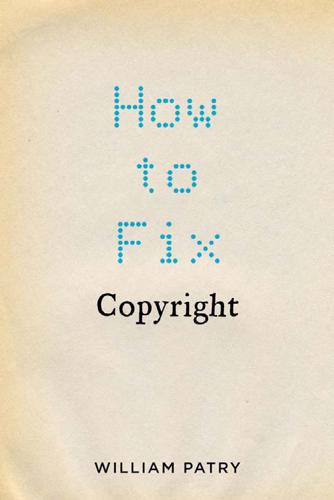
How to Fix Copyright
by
William Patry
Published 3 Jan 2012
My conclusion is that market forces and technology have moved well beyond our current laws and are now in conflict with them. Copyright laws arose out of eighteenth-century markets and technologies, the most important characteristic of which was artificial scarcity. Artificial scarcity was created by a small number of gatekeepers, by relatively high barriers to entry, and by analog limitations on unauthorized copying. Artificial scarcity was important because it created monopoly value: not profits earned above costs of production, but rather profits disconnected to costs. Those profits were dependent on the creation and legal enforcement of artificial scarcity through copyright laws.This is the environment in which copyright, at least Anglo-American copyright, arose.
…
Buggy whip makers, however, could no more claim a right to a continued market after the Model T car eliminated the demand for horse-drawn carriages than musicians who accompanied silent movies had a right to be paid after the talkies made their performances unnecessary. No copyright law can preserve markets that have been passed by. The new markets created by the Internet and digital tools are the greatest ever: Barriers to entry are low, costs of production and distribution are low, the reach is global, and large sums of money may be made off of a multitude of small transactions. This contrasts dramatically with the world of analog artificial scarcity, which based sales on a small number of expensive transactions, a situation that favored gatekeepers over individuals.
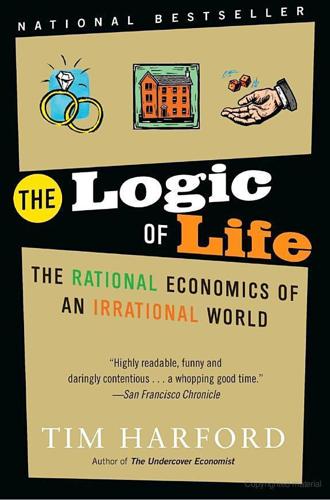
The Logic of Life: The Rational Economics of an Irrational World
by
Tim Harford
Published 1 Jan 2008
The phone book would be full of underemployed Realtors, the ten-thousand-dollar subsidy just barely compensating for the fact that there aren’t enough customers to go around. So this would not be a package for which the rational Realtor would campaign very hard. Industries that are difficult for newcomers to break into—that have “high barriers to entry,” in the jargon of economics—are more likely to find it rational to campaign for subsidies. But even high barriers to entry are not in themselves enough, if the industry is booming. Suppose existing big-box retailers such as Wal-Mart successfully lobbied for a government subsidy. It would do them little good, because new rivals would be willing to climb the entry barriers, pick up the subsidy, and watch their investments pay off in a growing market.
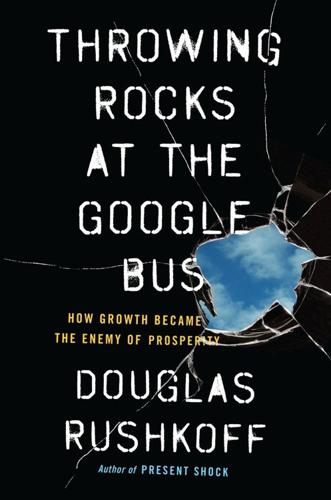
Throwing Rocks at the Google Bus: How Growth Became the Enemy of Prosperity
by
Douglas Rushkoff
Published 1 Mar 2016
Only regulated savings institutions are entitled to make money on “the float,” as PayPal was doing. So PayPal changed its business model and began charging buyers and sellers directly for the service.25 Still, PayPal was the first of many companies to promote peer-to-peer transactions by lowering the barriers to entry into the existing money networks. A company called Square took this a step further, developing both the technology and the accounting infrastructure through which people could swipe credit cards and accept payments through their smartphones. Although many coffee shops and smaller retail stores now use Square and an iPad in place of more cumbersome and expensive credit-card systems, the people most dramatically empowered by the system were independent sellers and service people and those who want to pay them.
…
AngelList, a Web site originally dedicated to helping startups connect with angel investors, offers a feature called “syndicates” through which people can back portfolios managed by notable investors, such as author and advisor Tim Ferriss or Launch founder Jason Calacanis. Subscribers pledge to back each of the leader’s investments by a certain amount. If the investment works, they then pay between 5 and 20 percent of profits to the leader and 5 percent to AngelList.61 While SEC regulations are under revision to lower the barriers to entry, currently most of these platforms are limited to “qualified” investors—people who have at least a million dollars in savings. As of this writing, numerous platforms that give less wealthy people access to the startup investing market are under construction.62, 63 While these may be democratic developments, they’re also as sure a sign of a bubble as any we’ve seen.

Industry 4.0: The Industrial Internet of Things
by
Alasdair Gilchrist
Published 27 Jun 2016
Of course, this took them into conflict with other producers, which required them to find ways to add value to their products. This value-add could be based on quality, price, quantity, or perceived value for the money. However, these strategies rarely worked for long, as the competitor having a low barrier to entry simply followed successful differentiation tactics. For example, competitors could match quantity and up their lot size to match or do better. Worse, if the price was the differentiator, the competitor could lower their prices, which results in what is termed a race to the bottom. Selling Light, Not Light Bulbs What the customer ultimately wants the goods for is to provide a service (provide air transportation in the previous example), but it could also be to produce light in the case of a light bulb.
…
The problem was that there was no way to connect the sleek microprocessor controller to the sensors and actuators without running wires throughout the house. This of course would be very disruptive and potentially damaging, so was not worth the trouble. Wi-Fi, Bluetooth, and ZigBee have removed that large barrier to entry and now we can connect devices. However—and this is a recurring theme—there is not one wireless standard that fits all purposes. The array of wireless technologies has arisen because they serve different purposes. Some, such as Wi-Fi (802.11), are designed for high bandwidth and throughput for web browsing and downloading from the Internet.
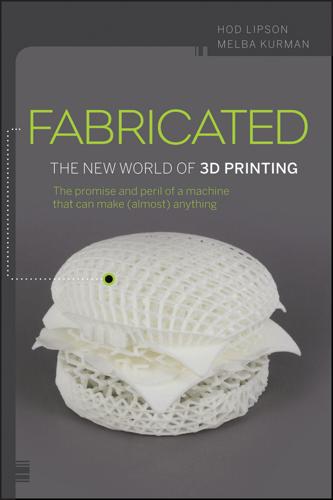
Fabricated: The New World of 3D Printing
by
Hod Lipson
and
Melba Kurman
Published 20 Nov 2012
Economies of scale will no longer dictate business models since per part, it will cost the same to make one or ten thousand. Each individual company will be versatile, able to make a wide variety of different products or parts on short notice, on demand. Sometimes nodes will pool resources. Cloud manufacturing will fuel innovation by lowering barriers to entry. Innovation has flourished more quickly in the software industry because the cost of entry is lower in the virtual world than in the physical world. Software products aren’t kept in physical inventory. A software product has no raw materials and fewer logistics of transportation and assembly.
…
Image courtesy of Mark Kendrick Entrepreneurs with ideas for new businesses will be able to prove their idea to themselves and to potential investors, or maybe even postpone the need for investment altogether. This business model, often referred to as “scale up from one,” democratizes manufacturing and retail by lowering the barriers to entry. Launching a new product today requires its maker to start large: industrial-scale manufacturing machines are not designed to make only one item at a time. Would-be entrepreneurs must procure large amounts of material, invest in factory machine time to tap into economies of scale, and pay for the necessary retail shelf space.

How Music Got Free: The End of an Industry, the Turn of the Century, and the Patient Zero of Piracy
by
Stephen Witt
Published 15 Jun 2015
Brandenburg’s American counterpart James Johnston had signed away his rights to AT&T when he’d gone to work for Bell Labs, meaning that, even as the mp3 succeeded beyond his most fervent imagining, he earned nothing. Around this time, Linde began to notice subtle changes come over Brandenburg. His wardrobe shifted from sweaters to sport jackets and ties. He began talking less about things like modified discrete cosine transforms, and more about things like marketplace position and long-term barriers to entry. He was starting to understand the power of open, competitive markets and, like all good capitalists, did his best to avoid participating in them. Linde noticed, too, that while Brandenburg might have been eccentric, it wasn’t as if he had a personality disorder. Indeed, he seemed in recent years to have developed an excellent understanding of people’s tendencies and motivations.
…
In the evenings, he would sit the child on his lap and play with him amidst the whirring background of the burning bootlegged discs. As soon as he’d saved up enough cash, he moved with his girlfriend out of the trailer and into a modest apartment. The move marked the end of the dog-breeding experiment. This had not been a lucrative venture. Pit bull puppies were a pure commodity, a market with no barriers to entry, and the premium on pedigree litters had been competed away. This experience was a lesson for Glover, as he began to see that success in a capitalist economy required a durable competitive advantage. So he started to act as a middleman between the street and the Scene. But even so, he struggled, losing out to his primary competitor: Tony Dockery.
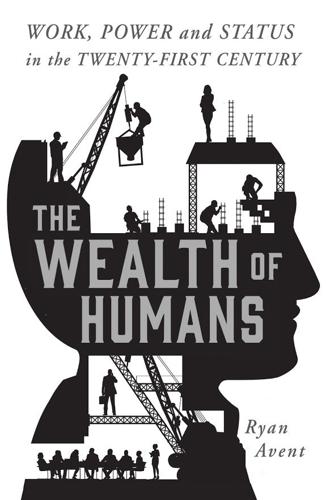
The Wealth of Humans: Work, Power, and Status in the Twenty-First Century
by
Ryan Avent
Published 20 Sep 2016
On the face of things, guild-like institutions look benign enough. They profess to serve as guarantors of professional standards. The American Medical Association, for example, works to make it difficult to become an accredited doctor, and thereby works to raise doctor pay. Yet the public tolerates this because, rightly or wrongly, it sees the barriers to entry erected by the AMA as a way to ensure that doctors are well qualified. Professional organizations can also serve a related function as educational institutions. The European guilds that emerged in the Middle Ages also often set out the professional path for members of a particular occupation, from apprenticeship to master status.
…
But trade-union political power is nothing like what it used to be, especially in Anglo-Saxon economies.13 A different sort of labour protection, which has multiplied across rich economies, has received comparatively little scrutiny: the occupational licence. Service professionals in an extraordinary range of occupations – including roles such as hairdressing and interior decorating – must obtain a licence to work legally in many states or countries. These licences act as a barrier to entry, helping to protect the scarcity of professionals in a given field, and keep pay higher than it might otherwise be. Licences are often wildly abusive, however. In 2012, a group of Louisiana monks found that they were not allowed to sell the handmade wooden caskets they had been building to earn a little extra money, because they were not a licensed funeral establishment (becoming one would have required them to obtain a casket showroom and embalming room, among other things).* Even if the cost in time and money to get the licence is relatively low, it may deter enough would-be workers (such as those who would normally choose to cut hair a few hours a week, but who can’t be bothered to do so when the work can’t be done legally without a licence) to prop up the pay of those with a licence.

The End of Accounting and the Path Forward for Investors and Managers (Wiley Finance)
by
Feng Gu
Published 26 Jun 2016
SECTOR SYNOPSIS Media and entertainment is a ubiquitous and fast-growing sector that includes many companies in various subsectors, such as cable and radio, telecommunication, movies and TV, Internet services providers, and, of course, print newspapers and magazines. The main characteristics of this sector are a high rate of innovation (wireless technology, social media), frequent technological disruptions (online information services rattling print media), low barriers to entry, and relatively easy penetration of foreign markets, all enhancing cut-throat competition within the subsectors. Customers are the most important strategic asset of media and entertainment companies, particularly because in most subsectors, the customers’ identity is known to the provider of services (Internet service providers; cable, satellite radio, and telecom companies; newspaper and magazine publishers; etc.), enabling active management of the customer franchise.
…
On the bright side, Sirius’s brand is well known; it’s practically the only game in town for satellite radio, it has a large and slowly growing subscriber base, and it features some big-name exclusive artists. It seems impregnable. And yet, as the Resource Preservation column of the Report suggests, in this industry with fast-changing technologies and low barriers to entry, competitive and disruption threats can never be dismissed. Indeed, the media carry occasional articles on threats to Sirius’s dominance,5 and many of analysts’ questions in Sirius’s conference calls revolved around potential competition. The main concerns focus on an Internet strategy as an alternative to satellite radio—wi-fi in the car—and the entry of “big players,” like Apple and Google into the car streaming market.

AI Superpowers: China, Silicon Valley, and the New World Order
by
Kai-Fu Lee
Published 14 Sep 2018
By the end of 2016, it was hard to find a shop in a major city that did not accept mobile payments. Chinese people were paying for groceries, massages, movie tickets, beer, and bike repairs within just these two apps. By the end of 2017, 65 percent of China’s over 753 million smartphone users had enabled mobile payments. Given the extremely low barriers to entry, those payment systems soon trickled down into China’s vast informal economy. Migrant workers selling street food simply let customers scan and send over payments while the owner fried the noodles. It got to the point where beggars on the streets of Chinese cities began hanging pieces of paper around their necks with printouts of two QR codes, one for Alipay and one for WeChat.
…
Its reliance on data for improvement creates a self-perpetuating cycle: better products lead to more users, those users lead to more data, and that data leads to even better products, and thus more users and data. Once a company has jumped out to an early lead, this kind of ongoing repeating cycle can turn that lead into an insurmountable barrier to entry for other firms. Chinese and American companies have already kick-started this process, leaping out to massive leads over the rest of the world. Canada, the United Kingdom, France, and a few other countries play host to top-notch talent and research labs, but they often lack the other ingredients needed to become true AI superpowers: a large base of users and a vibrant entrepreneurial and venture-capital ecosystem.

Driverless: Intelligent Cars and the Road Ahead
by
Hod Lipson
and
Melba Kurman
Published 22 Sep 2016
Now that Google’s self-driving cars have had another few more years of practice, the fleet’s collective drive-time equals more than 1.3 million miles, the equivalent of a human logging 15,000 miles a year behind the wheel for 90 years.1 Car manufacturing is a changing playing field. For decades, the automotive industry has operated inside protective walls, sheltered from external competition by high barriers to entry and exclusive relationships with preferred suppliers. As the appeal and value of a new car becomes increasingly dictated by its software, for the first time, traditional automotive companies will face competition from companies outside the industry. Google (or its parent company, Alphabet, Inc.) is the front-runner, but Apple is rumored to be hiring automotive engineers and software developers to build its own autonomous vehicle.
…
Consumers of the future will pay a premium for a car whose HD map contains intimate knowledge of a region’s streets—for example, which roadside shoulders are safe for pulling over. As long as HD maps are costly to create and maintain, they’ll have market value, since any company considering entering the marketplace will face a high barrier to entry. In the long term, however, HD maps will become a commodity. Two forces will drive this transition. First, as digital cameras and deep-learning software continue to improve, the balance of reliance on a car’s operating system will shift from stored map data to real-time scene recognition. Driverless cars’ maps will become a less crucial component of a car’s visual intelligence.

Netflixed: The Epic Battle for America's Eyeballs
by
Gina Keating
Published 10 Oct 2012
Randolph and Kish went away from their first meetings with Cook and worked out reasonable fixes for each of the obstacles he raised and returned with a modified plan. The moment that Cook decided he wanted to join the venture came when Randolph asked him pointedly, “Jim, don’t you agree that when we solve all these ‘what ifs?’ it will create such a high barrier to entry that there’s no way anybody else could solve this stuff, because it’s so hard to do?” Cook spent the first three months as the new operations chief at the general mail facility on Meridien Road in San Jose, learning everything he could about the U.S. postal system. The ability to deliver product economically, promptly, and in one piece would make or break their new company, so mastering the post office was critical.
…
Armed with financial and marketing models that showed Blockbuster could not afford the game of chicken it was playing, Hastings maintained a steadfast answer to the criticism and takeover rumors circulating that spring. Netflix would run at break even—sacrificing profits and plowing all of its cash into growing its subscriber base as fast as it could to raise an impenetrable barrier to entry by Amazon and other challengers. A subscriber-based business would lose a lot of money until it got large enough to defray fixed overhead costs. In early 2005, Hastings and McCarthy pegged the cost for a new competitor to enter the market at $350 million to $500 million. Hastings restated his warning for Blockbuster at a Reuters conference in San Francisco in March.

The Revolution That Wasn't: GameStop, Reddit, and the Fleecing of Small Investors
by
Spencer Jakab
Published 1 Feb 2022
By the time the rest of the industry followed it and stopped charging, you could open a Robinhood account with pocket change, trade conveniently from a highly intuitive smartphone app, and even buy just a fraction of a share. The median balance of a Robinhood account was just $241—enough to buy barely half a share of retail favorite Tesla or two thirds of a share of Netflix at that time. “It’s that lower barrier to entry,” says WallStreetBets founder Rogozinski. “You’ve got twenty bucks? Cool. It would have been impossible to start a brokerage account with twenty bucks before this.” Some brokers that relied fairly heavily on commissions for their revenue had fretted about the dent that matching Robinhood’s price would put into their profits.
…
“Direct routing to the exchanges is more expensive, and therefore we’re turning what used to be a revenue stream (PFOF) into a cost center and we’re optimistic that the difference will be offset by the optional tipping feature,” it said in a statement.[25] The offer proved popular, with the company announcing a little over two weeks later that it had doubled its customer count to one million. Public.com says it doesn’t “encourage day trading, nor do we push margin credit on new investors.” That sounds great, and discouraging day trading is commendable, but there is nothing inherently bad about payment for order flow. The problem is that it helped lower the barrier to entry so that Wall Street could attract a new group of small-dollar speculators while being able to boast that it was doing something noble by “democratizing finance.” The meme-stock squeeze probably wouldn’t have happened without payment for order flow, but the finger-pointing that followed wound up chasing shadows.

Enshittification: Why Everything Suddenly Got Worse and What to Do About It
by
Cory Doctorow
Published 6 Oct 2025
Broadly speaking, attackers and defenders can be assumed to be in possession of similar knowledge and techniques: the same earthmoving machines used to build the ramparts for a fortress can be deployed by a besieging army to tear those ramparts down. However, despite the two equally matched sets of technological possibilities, the red team usually prevails. For the blue team to successfully defend the status quo (that is, a fortress with walls that are still upright and acting as barriers to entry for the city within), it has to build walls with no flaws. For the red team to undermine those walls, it only has to find a single mistake that the blue team made, and the walls will fall. This is the attacker’s advantage. Under enshittificatory conditions, workers are on the blue team (hoping to defend their wages) and bosses are on the red team (trying to twiddle those wages down).
…
But the enshitternet had one key advantage over the old, good internet: It was a lot easier to use! That meant that a lot of people joined, and many of those people improved the lives of those geeky early adopters with their presence. Those newcomers’ lives were, in turn, improved by the community and fellowship of their geeky pals. Lowering the barriers to entry for participation in digital life is an unalloyed good. “People who are good at using complicated technology” are—at best—a subset of “people whose ideas, support, companionship, and friendship you would value.” As a young aspiring writer growing up in Toronto, I was fascinated with a local character who went by Crad Kilodney.
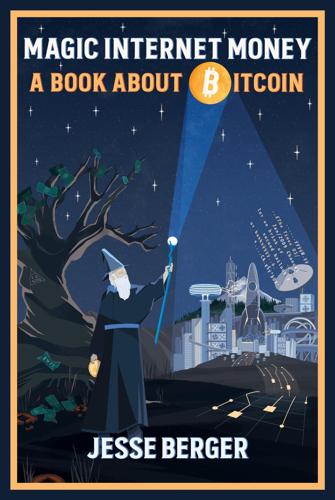
Magic Internet Money: A Book About Bitcoin
by
Jesse Berger
Published 14 Sep 2020
When it comes to user experience, everything from learning about Bitcoin, to acquiring bitcoins, to sending and verifying a transaction, to opening a wallet, feels burdensome and problematic. It can feel even more complicated when learning how to secure your private keys, run a node, or become a miner, since improper use can lead to the irreplaceable loss of coins. These difficulties act as clear barriers to entry and adoption, especially in the absence of common knowledge about its benefits and best practices. Although Bitcoin undoubtedly feels intimidating now, like the Internet before it, its auxiliary products, services, and applications are bound to evolve, abstracting away some of the complexities facing the average user, making its future use more prevalent and straightforward.
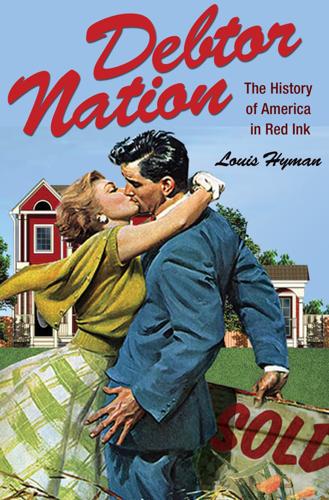
Debtor Nation: The History of America in Red Ink (Politics and Society in Modern America)
by
Louis Hyman
Published 3 Jan 2011
Banks frantically sought new sources of capital, like the card bond market, because the profits of credit cards were so much higher than their other investments. Such profits, as always, lured in new competition, who could also rely on these new methods of securitization to fund their loans. As conduit for capital, rather than sources of capital, such lenders no longer faced the greatest barrier to entry in lending—money to lend. The Rise of Pure Play Credit Card Companies With the expanding market for securitization, credit card banks with no other business—so-called “pure play” or “monoline” issuers—found their business model worked and expanded rapidly. Securitization lowered, if not eliminated, the capital to lend barrier.159 Fast-growing issuers like First USA, Advanta, and Capital One, all used securitized receivables to 258 CHAPTER SEVEN fund their growth, rather than internal capital.
…
Nonetheless, the GAO launched an investigation whose results were published in April 1994.178 The credit card industry, it found, was competitive despite the stability of its interest rates.179 With six thousand issuers nationwide, it was hard to imagine coordination.180 The seemingly collusive interest rates belied a frenzy of competition. The low barriers to entry fostered by securitization allowed competition between issuers, despite the apparent staggering sums required to achieve economies of scale. To be profitable, the industry had to be concentrated, but a company could easily be dislodged by an upstart with easy access to capital and new ways of lending.
…
As the profitability of interest income fell through the mid-1990s, penalty fee income had risen, but was still subject to state laws. By the late 1990s, profits in the credit card industry, while still higher than commercial loans, continued to slide. By 1996, after-tax return on assets was at 1.2 percent, nearly half of what it was in 1993.252 The low barriers to entry and the frenzied competition had driven profits down. A senior analyst at Moody’s remarked that the “competition of the past five years has changed the nature of the industry.”253 What profits remained were sustained by the increased interest and fee income derived from subprime lending, lower charge-offs derived from home equity loans, and higher fee income from penalties and merchant fees.254 One-quarter of all customers paid their bills late and issuers happily charged them an industry-average $26 fee.255 As customers used their cards for more mundane spending, income from merchants rose, enabled by the Smiley decision.256 While many credit card analysts were ambivalent about the subprime expansion, credit card issuers had little choice if they were to grow.
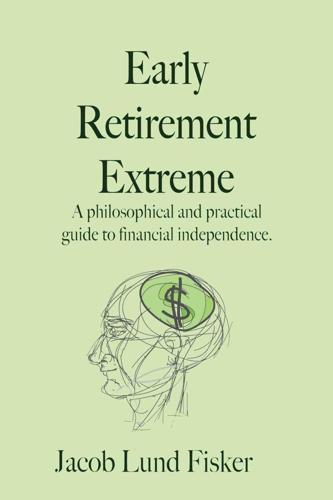
Early Retirement Extreme
by
Jacob Lund Fisker
Published 30 Sep 2010
Barriers include not knowing about an activity or its benefits, the belief that the activity is difficult to engage in, social disapproval, or the belief that there are more benefits in continuing the present behavior. People will naturally choose activities that they believe to have high benefits and low barriers to entry--the quick and easy way to riches. Benefits and barriers vary significantly between people. To some, walking half a mile is fun, or at least as natural as putting on a pair of pants, whereas to others it represents a significant labor to be avoided. Some have the same aversion to merely getting up from the couch.
…
Others reduce it by having many customers or clients or easy access to labor, either by outsourcing, offering attractive benefits or simply due to an abundance of workers in a given field. However, as long as there is a drive for profit, there will be competition and innovation, and those risks are hard to eliminate without monopoly pricing power, political favors, and other barriers to entry. Since profit is the income of the businessman, and since the businessman needs income to buy stuff for himself, he too is at risk. Many businessmen and entrepreneurs take steps similar to employees and establish emergency funds (see The working man). However, those that desire to retire early either need to earn a lot of money fast or find an alternative solution.

Singularity Rising: Surviving and Thriving in a Smarter, Richer, and More Dangerous World
by
James D. Miller
Published 14 Jun 2012
If you come across a website written by some guy who never even went to high school (like Eliezer) but claims that he’s leading a crusade to protect us from a pseudoscientific-sounding apocalypse, then it’s almost certainly not worth your time to read enough content on the website to see if it’s the ramblings of a lunatic or the teachings of a visionary. (Although Eliezer has little formal schooling, he did, at age eleven, earn a 1410 on the SATs, a score that could get a seventeen-year-old into Harvard.101) The seeming insanity of the very concept of an intelligence explosion is a barrier to entry into the Singularity movement, preventing intelligent people from taking the idea of a Singularity seriously enough to investigate whether it should be taken seriously. A careful reader of Harry Potter and the Methods of Rationality, an e-book designed very effectively to teach its audience what it means to be rational and how to become more rational, would, however, at the very least not dismiss its author as an irrational crank.
…
See Hanson, Robin robots, 17, 210 robot soldiers, 24, 53 Roman Empire, 24, 78 Roman Republic, 137–38 Rumsfeld, Donald (former US Secretary of Defense), xviii Russia, 187, 194, 206 S safety-enhancing products, 179 Salamon, Anna, 44 SAT tests, 66, 162–63 savers gamble on the future, 176 Savoca, Elizabeth, 171 Scientific American “Why Women Live Longer,” 179 Scottish Mental Survey (1932), 68 search engines, 167 Second Law of Thermodynamics, 27 seed AI computer program of roughly human-level intelligence capable of improving itself, 36 intelligence explosion, undergoing, 48 that undergoes an intelligence explosion, 36 Self-Aware Systems, 25 sequence F, U, 115 sexbots, 193–95 sex drives, 195 sex-selective abortions, 194 sexually transmitted diseases, 194 Shakespeare, 21 Shaw, George Bernard, 84 Shulman, Carl, 147, 202 Singularitarians, 215 Singularity AI as smart as humans and/or augmenting human intelligence, x AI-centered, 209 AI-induced, 21 bad, avoid making, 58–59 bad Singularity-like event, x being well-educated will not make you materially better off, 192 believers, 27, 208 beyond which human affairs can not continue, xv civilization, xviii disabled children and, 212 emulations, materialized through, 203 enabling of computers, 6 expectations and savings rates, 186–87 expectations raise people’s uncertainty about the quality of the future, 193 expectations should affect when you have children, 193 five undisputed facts about, x–xii by gradual improvement, 178 harm of an unfriendly, 44 hellish, destroys the value of money, 58 humanity will be richer from, 165 intelligence explosion, from an, 203 investments, destroys the value of all, 57 is near, 177, 185, 191, 201, 207 Kurzweil-type, 178 luxuries from, 167 money has no value, 192 money no longer has value, 56 operating-system, 41 pollution as a bad, 56–57 post-Singularity civilization, 199–200, 221 post-Singularity race throughout the galaxy, 199 pre-Singularity destructive technologies, 201–2 pre-Singularity property rights will be respected, 187 pre-Singularity property rights will have value of post-Singularity, 188–89 pre-Singularity value of money, 211 profit opportunities of, 178 property rights and savings, 187–88 rapid political change, would bring about, 187 rich, makes everyone extremely, 192 savings and future wealth, 189 savings and investment returns, 188–89 savings rate, plummeting of, 191–92 savings rates with different Singularity scenarios, 189–90 scarcity, might abolish, 187 signposts of the, 177–78 utopian, 56, 58 utopian, will probably be, 179 as utopian or dystopian, 56 value of money, destroys the, 181 watch list, 209 Singularity conference, 92 Singularity Institute for Artificial Intelligence to create a “seed AI” designed to undergo an intelligence explosion to become a friendly ultra-AI, 14 Michael Vassar as director and former president, 44 Peter Thiel financial backing of, viii Yudkowsky founded, 35–36 The Singularity Is Near (Kurzweil), 3, 207 Singularity materialized through emulations, 203 Singularity movement intelligence explosion is a barrier to entry into, 38 Singularity of a black hole, xviii Singularity University Larry Page founded, x slaveholder compensation, 187 slave labor, 137–38 sleep deprivation, 105, 109, 124, 155. See also amphetamines (“speed”) Smith, Adam, 135 Smith College Adderall, 102–7, 112, 163 amphetamines use, 102 Dean and Adderall-type drugs for performance-enhancement, 102 student illegal drug use, 101 “study buddy” drugs, 102 survey of illegal cognitive-enhancing drug use among undergraduates, 103–9 socialists, 41 Social Security taxes, 157 sociopath, 22, 93 sociopathic children, 84 Socrates, 91 Socratic questioning method, 215 soft toilet paper, 166 Soviet Union, xiii, 19, 49, 124, 127, 206 spacecraft, 199 species extinction, 29 Stalin, Joseph, 22, 220 standard of living, 76, 123 Stanovich, Keith, 65–66 StarCraft II (video game), 106 stars “turned of” to conserve energy, 199 Star Trek, 171 starvation pressures, 150 Stewart, Potter (US Supreme Court Justice), 38–39 stop signal reaction time, 105 Study of Mathematically Precocious Youth, 65 subjective judgment, 39 sub-Saharan Africa, 173 suicide, 92–93 super genius, 90–91, 95 superhuman intelligence, xiv superintelligence, 21 superintelligence, “alien-like,” 122 super-skyscraper, 181 superweapon, 204 surrogate woman, 194 “survival of the richest,” 81 surviving children, 82 Swift, Jonathan, 88 T Tallinn, Jaan, 35, 215 tampons, 166 Tao, Terence, 91–92 tax on emulations, 150 teleportation device, xi teleportation machine, 138–39 terminal disease, 219 thermonuclear war, 52–53.
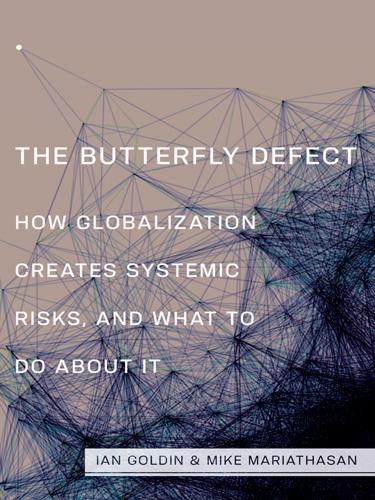
The Butterfly Defect: How Globalization Creates Systemic Risks, and What to Do About It
by
Ian Goldin
and
Mike Mariathasan
Published 15 Mar 2014
The small effects scale up to be significant.”15 The very nature of commercial exchanges in the twenty-first century has changed as a result of recent innovations. Books, toys, and electronics are now bought on Amazon, not at stores, and even groceries can be purchased via the Internet, bypassing the physical market. The Internet and modern communication have helped to overcome geographical borders and drastically reduced the barriers to entry. Figure 3.3. Exports of integrated electronic circuits (US$ billions), 1995 and 2010. Atlas, 2013, “Who Exports Electronic Integrated Circuits?,” The Observatory of Economic Complexity (Map App), accessed 7 February, http://atlas.media.mit.edu/. Mercurial supply chains arose to service this new wave of international business and trade.
…
Together with the clash of often very different cultures, situations like these create the potential for discontent, and thus for instability. New technologies and notably the Internet provide an opportunity for aggrieved individuals to have a great impact with limited resources. Cyberspace has very low barriers to entry and hence can be the site of a great deal of tension. For the overwhelming majority of citizens, the Internet provides a forum for expressing views and nurturing or joining (online) communities. A small minority of individuals, however, are able to benefit financially and in other ways from the new opportunities for cybercrime, although individuals, groups, or even nations are also able to use the Internet for cyberaggression.
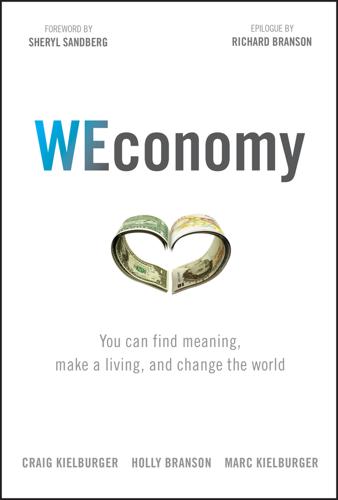
WEconomy: You Can Find Meaning, Make a Living, and Change the World
by
Craig Kielburger
,
Holly Branson
,
Marc Kielburger
,
Sir Richard Branson
and
Sheryl Sandberg
Published 7 Mar 2018
Added up, it amounts to “the statistically most influential person on social media.”6 Welcome to the age of the influencer. Any marketing consultant will tell you that teens don't want to be blatantly sold to. Instead, they look to their peers or role models to interact with products while they witness the experience. Fans relate to Gomez and her collaborations. Increased access to technology has lowered barriers to entry and saturated markets, leading to a decline in brand loyalty and a growing distrust of companies among a well-informed public with more brand choices than ever. Customer allegiances are shifting. In Canada, roughly three-quarters of people surveyed said they had recently switched from a preferred brand.7 In a global study, 84 percent of shoppers said they seek out responsible products whenever possible and a whopping 90 percent would boycott a brand with deceptive practices.9 Today, with so many purchases tied to our identity as social media channels effectively create our own personal brands, consumers want to feel they are buying into a cause or movement that's meaningful.
…
Product options in most categories are endless. And, as much as we worship the concept of choice and variety in our culture, science tells us that too many options diminish the motivation to buy.1 Choice and oversupply are major and growing challenges for business today. “Competition is infinite. A flat world and low barriers to entry, thanks especially to the Internet, have neutered the biggest product differentiators: price, quality, and convenience,” writes Jason Saul, CEO of the social impact consulting firm Mission Measurement.2 What if purpose is the game-changing differentiator that gives products an edge? Purpose can be the inspiration for a new venture, but it can also be used to retrofit an existing product, all the while providing a tangible social impact that consumers can see.

Rebooting India: Realizing a Billion Aspirations
by
Nandan Nilekani
Published 4 Feb 2016
They could not legally sign up for any of the government welfare schemes meant to benefit the poor. They couldn’t drive a car, travel out of the country, get a SIM card for a mobile connection, open a bank account or provide any documentation if the police stopped them on the street. They remained mired in poverty, unable to find any way out of their circumstances. The barriers to entry for obtaining any form of identification were insurmountably high for most of India’s poor. Every major form of ID in India required you to already be in possession of at least one other form of ID, be it a birth certificate, a voter ID, a PAN card or a ration card. The Kafkaesque complexity of merely trying to prove who you are meant that the underprivileged who are most in need of the government’s social safety nets simply fell through the cracks.
…
Often, the new business models are different enough that they end up avoiding existing taxes. The incumbents label the newcomers as ‘tax evaders’ and the new solutions as ‘unsafe’. There is also the risk of the existing interests lobbying against innovations and using regulations to create a barrier to entry. In all these cases, the conflict between regulation and innovation has led to considerable friction in the market. The sharing economy is also giving rise to a new class of ‘micro-entrepreneurs’—small-scale service providers who can now find customers through an online marketplace.8 The US has seen the emergence of a plethora of start-ups that will bring you groceries and flowers, wash your clothes, deliver meals, clean your house, carry out your personal tasks, or send a doctor to your home if you’re ill.
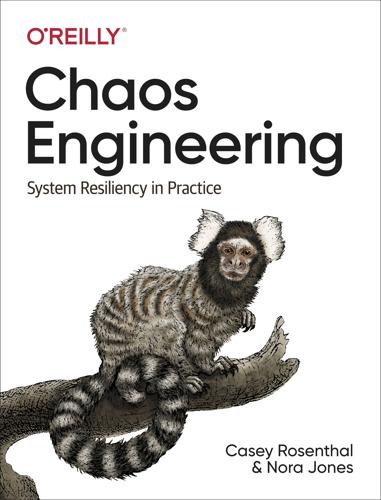
Chaos Engineering: System Resiliency in Practice
by
Casey Rosenthal
and
Nora Jones
Published 27 Apr 2020
Engineers can use pre-constructed automated tests out of the box to verify their system’s behavior given failures in shared infrastructure and storage systems. Automated tests can be run continually to prevent reliability regressions and validate service-level objectives in extreme or unusual conditions. These tests lower the barrier to entry and provide a springboard into more intricate architecture-specific failure testing. The power of automating even the low-hanging fruit is manifest in the fact that the count of automated test executions has exceeded the total number of traditional DiRT tests by an order of magnitude, reaching several million test runs in only a few years.
…
It became clear that in order to keep pace with the massive growth of Google as an organization that the DiRT program would need to provide a common platform of ready-to-use disaster tests related to shared services. To meet this need we developed a suite of turn-key fault injection tests that are highly configurable and can be executed from a single command-line tool. This tool provides ready-made disasters-in-a-box that lower the barriers to entry for teams seeking to get started with technical disaster testing but who don’t know where to begin. Our collection of automated tests makes the self-service versions of large infrastructure tests available in one easy to find place and adds a few additional tests to the mix. We have automated tests related to load balancing, regional task terminations, storage replication delays, total and partial cache flushing, as well as RPC latency and error injection.
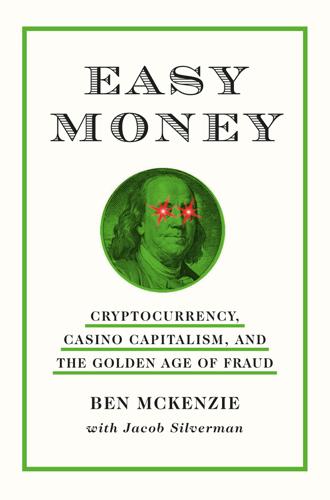
Easy Money: Cryptocurrency, Casino Capitalism, and the Golden Age of Fraud
by
Ben McKenzie
and
Jacob Silverman
Published 17 Jul 2023
Infected by FOMO—fear of missing out—they now wanted a part of the action. As more people bought into the hype and saw their investments rise in value (at least on screen), they became de facto evangelists for the fledgling industry, preaching the gospel of crypto to all who would listen. The potential profits seemed unlimited, and the barriers to entry were low. The only thing needed to own a piece of the “future of money” was a willingness to part with the current version of it. The more people invested, the more prices rose, resulting in even more FOMO that drew in yet more people—a self-reinforcing dynamic common to economic bubbles and Ponzi schemes.
…
“Sports are one of the easiest, cheapest ways to reach young men,” said Joey D’Urso, a journalist who’s written about numerous ill-fated partnerships between European football teams and fly-by-night crypto companies. Smart-phone sports betting laid the groundwork for exactly the kind of addictive gambling environment that would foster the crypto boom, which also targeted young men, with an incredibly low barrier to entry and essentially twenty-four-hour betting markets. States, with dollar signs in their eyes, opened the floodgates to allow anyone to gamble with the swipe of a finger. Sports gambling exploded: Thirty-three states legalized it, including twenty-four that allowed online gambling. Sports betting surged from less than $5 billion a year in 2018 to more than $57 billion in 2021.
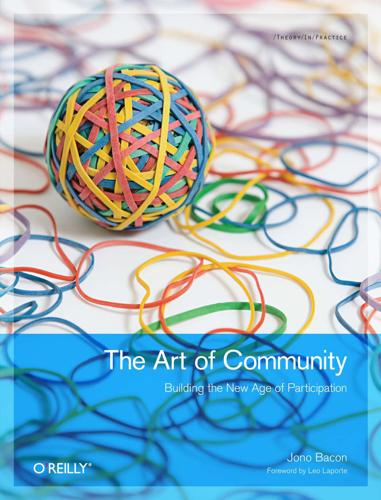
The Art of Community: Building the New Age of Participation
by
Jono Bacon
Published 1 Aug 2009
The fair licensing of all contributions adds a strong sense of confidence to the security of the community. Open tools Anyone with an Internet connection and a computer can contribute. All of the development tools and documentation are entirely free and open to access. This provides a low barrier to entry, and lets new users play with the technology. Although these elements were essential at the birth of Linux, it is not open communication, licensing, and tools that generate opportunity. These elements merely made it possible to build a world-class Free Software operating system. Opportunity is born in a sense of belief.
…
Note An important consideration to make when setting up a mailing list is whether the list is archived on the Internet. If you want the conversations to be private (such as if the mailing list is for a governance body), you should close off the archives. We discuss governance in detail in Chapter 10. Discussion forums Forums are a very popular, low-barrier-to-entry medium. They manifest in the form of websites that allow you to create an identity and have a discussion using that identity. Forums have exploded in popularity in recent years, and some huge forums have developed across the Internet. At the time of this writing, the biggest in the world is an anime role-playing community with over 15 million members and over 1 billion posts.
…
Is it intended for a particular kind of contributor, such as a developer, documentation writer, translator, or advocate? Requirements What tools, knowledge, and experience must the contributor have in order to follow through with the process? If she does not possess these requirements, how can she obtain them easily? Are these requirements a barrier to entry (such as entry fees or limited availability)? Steps involved What are the chronological steps involved in achieving the goal? What could go wrong? Is it possible for people to accidentally fail to complete a step? How is feedback provided about each step? Who provides the feedback? Verification Who decides when a process has been completed successfully?
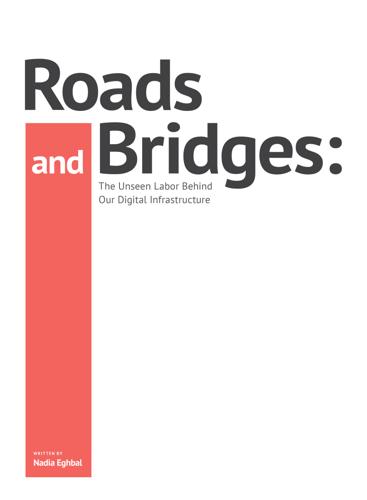
Roads and Bridges
by
Nadia Eghbal
It took less than two years to develop. [39] Ruby, a programming language, took less than three years from its initial conception in February 1993 to public release in December 1995. Its author, computer scientist Yukihiro Matsumoto, decided to create the language after a conversation with his colleagues. [40] Digital infrastructure changes frequently. Because digital infrastructure is so cheap to build, the barriers to entry are lower, and software tools change more frequently. Physical infrastructure is built to last, which is partially why these projects take so long to plan, fund , and build. The London Underground, London’s public rapid transit system, was built in 1863; the underground tunnels dug for the subway system are still in use today. [41] The Brooklyn Bridge, which connects the boroughs of Brooklyn and Manhattan in New York City, was completed in 1883 and did not undergo any major renovations until 2010, over one hundred years later.

The Industries of the Future
by
Alec Ross
Published 2 Feb 2016
Under this international framework, nuclear war is still a threat, but nuclear weapons are well understood and there are processes in place to manage them. In the 20th century, similar sets of procedures and rules were also developed for the weaponization of airplanes, space, and chemical and biological weapons. But the confounding factor when it comes to cyberwar is that the barriers to entry are so much lower in cyber than in any of these other domains. Any country, or even any rogue group or individual, that puts a little bit of time and effort into it can develop some nasty offensive cyber capabilities. It is, in fact, the near-opposite of the development of nuclear arms, which requires years of work, billions of dollars, and access to the scarcest of scarce scientific talent and transuranium elements.
…
They believe that big data, instead of absorbing and supplanting other industries, will serve as a broad tool that every existing industry can use to spur growth. The idea is that data will become widely usable and scalable enough that it won’t have domain expertise in the same way that other high-barrier-to-entry industries of the future like genomics or robotics do. This view was explained to me by Mark Gorenberg, a veteran of West Coast venture investing who saw the investment case for analytics early and built a venture capital firm around it, Zetta Venture Partners. Mark has been in venture capital for a quarter-century and splits most of his time among investing, work with MIT, and serving as an advisor to the president of the United States as a member of the President’s Council of Advisors on Science and Technology.

Creating Unequal Futures?: Rethinking Poverty, Inequality and Disadvantage
by
Ruth Fincher
and
Peter Saunders
Published 1 Jul 2001
Adverse effects of concentration of ownership include insufficient channels for the expression of opinions, economic forces creating barriers to entry for new players, diminished localism in content and accountability, reduced opportunities for journalists, and conflicts of interest for owners who have non-media interests, as well as the general undesirability of such concentration of power in a democracy (Chadwick 1996). It is unlikely, given the barriers to entry, that the number of mainstream major newspapers in Australia will grow. In this arena the best prospects for improving coverage of poverty and welfare issues lie in appeals to journalistic professionalism, editorial independence, and in continuing support for and lobbying of editors and journalists who display a social conscience.
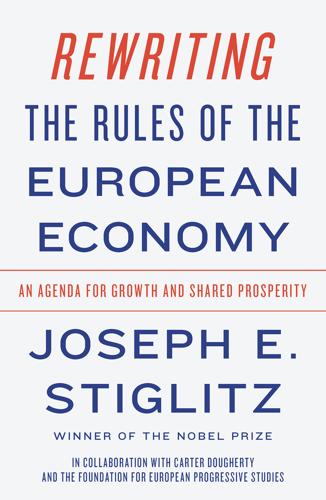
Rewriting the Rules of the European Economy: An Agenda for Growth and Shared Prosperity
by
Joseph E. Stiglitz
Published 28 Jan 2020
The Markets-Know-Best Doctrine argues that what emerges from the fierce competition of firms within market frameworks will serve society best. Government seldom needs to step in. The evidence is that many of our society’s ills, from air and water pollution to excesses of inequality, stem from markets. Without strong government actions, competition will erode as firms create barriers to entry by other competitors, often via questionable practices, and work hard to reduce competition through mergers and acquisitions. In key new technologies (including social media and internet search), for instance, a small handful of companies dominate the global landscape. Here the issue is not so much rewriting the rules but simply writing the rules to protect competition in new industries.
…
Moreover, they can also use this information to help others engage in discriminatory pricing, to charge more, for instance, to customers in areas where there is limited competition. This discriminatory pricing is simply a transfer from consumers to the owners of the information; it actually leads to a less efficient economy, since efficiency requires everyone to pay the same price for a good. The barriers to entry for potential competitors in these sectors also increase, with resulting negative effects for competition, and ultimately, innovation. Europe took the lead in regulating the use of information with its General Data Protection Regulation of May 2018. This step should be but the first. Europe needs to do much more to prevent the abuse of privacy, the potential abuse of such data in the market (e.g., discriminatory pricing) and in politics (through the kind of political manipulation already seen).

The Raging 2020s: Companies, Countries, People - and the Fight for Our Future
by
Alec Ross
Published 13 Sep 2021
Thanks to their wealth and global distribution, these companies have access to resources that remain out of reach for their smaller competitors. Large firms can use the offshore financial system to optimize their tax bills. They can leverage global supply chains and labor markets to lower costs. They can wage effective influence campaigns to win over policy makers. They can weather price wars, raise barriers to entry, and buy out would-be rivals before they get off the ground. They have access to larger data sets that they can use to optimize against smaller rivals. They can create a feedback loop in which economic power begets more economic power. The rise of shareholder capitalism has incentivized firms toward larger and larger size.
…
Before the integrator model, only a small number of farmers had the infrastructure, relationships, and capital to turn a profit from raising “broiler” chickens rather than raising chickens for eggs. But with integrators taking on the costs of hatching, feeding, transportation, and processing, the barrier to entry fell and the broiler business became more accessible. As more farmers on the Delmarva Peninsula and elsewhere started raising broilers, supermarkets across the country were flooded with low-cost chicken meat and Americans adjusted their diets accordingly. The Layfield family operated small-scale poultry farms for decades, growing between thirty thousand and sixty thousand birds at any given time.

The Startup Way: Making Entrepreneurship a Fundamental Discipline of Every Enterprise
by
Eric Ries
Published 15 Mar 2017
It was considered completely obvious what a company would do if it had extra capacity: make more stuff and then sell it. “New products” meant mostly variations of what a company already made. “New growth” usually meant putting out more advertising to reach new audiences with existing products. The bases for competition were primarily price, quality, variety, and distribution. Barriers to entry were high, and if competitors did come on the scene, they entered and grew relatively slowly—by today’s standards. Today, global communications means that new products can be conceived and built anywhere, and customers can discover them at an unprecedented pace. What’s more, individuals and small companies have unprecedented access to these new global systems, compared to a small number of owners of capital in the past.
…
They may pay lip service to the idea of “embracing failure,” but their reward, promotion, and evaluation systems send a profoundly different message. A MODERN COMPANY rewards productive failures that lead to smart changes in direction and provide useful information. AN OLD-FASHIONED COMPANY is protected from competition via barriers to entry. A MODERN COMPANY leaves competitors in the dust through continuous innovation. If you study this list of differences, you will notice a number of paradoxes. Overall, even among old-fashioned companies that are focused on short-term results (such as quarterly reports), most initiatives are impossibly slow, are risk averse, and invest on an all-or-nothing basis.

Pour Your Heart Into It: How Starbucks Built a Company One Cup at a Time
by
Howard Schultz
and
Dori Jones Yang
Conventional business wisdom tells you that the most attractive business start-ups have a proprietary idea or technology—something to offer that no one else has. Notable examples are Apple’s computers, Intel’s chips, and Microsoft’s operating system. If you hold a patent to your product, so much the better. It’s less risky if you can erect some barrier to entry, to prevent a dozen competitors from popping up and grabbing your market away from you before you can establish yourself. And the most promising ideas are those in the industries of the future, such as biotechnology, software, or telecommunications. Il Giornale didn’t fit any of these paradigms—nor does Starbucks today.
…
The Specialty Coffee Association of America predicted that the number of coffee cafés, including espresso bars and carts, would rise from 500 in 1992 to 10,000 by 1999. The espresso business was attracting thousands of small entrepreneurs, some with little overhead. Many middle managers in downsizing companies dreamed of opening a little coffee place, and some actually did. It seemed there was no barrier to entry, since anybody could buy an espresso machine and steam milk for a latte. Starbucks has never felt threatened by the mom-and-pop coffee stores. In Seattle there’s one on just about every street corner, and we’ve all benefited from the growing market. But other coffee companies, seeing our success, started to undertake ambitious expansion plans.

You've Been Played: How Corporations, Governments, and Schools Use Games to Control Us All
by
Adrian Hon
Published 14 Sep 2022
No matter how much fun it sounds to work out with friends, there’s a reason why most runners you see are on their own. Part of running’s appeal is how little it demands—throw on a T-shirt and shorts, slip on your shoes, walk out the door, and you’re off. Having to negotiate with three other friends on where and when to meet raises the barrier to entry considerably. Perhaps nostalgic design had a hand in Seek ’n Spell’s multiplayer requirements, with its designers assuming that everyone would be like them: iPhone-loving friends living next to one another, wanting nothing more than to try a cool new game. Cache & Seek taught another lesson.3 Launched in early 2010 by a South Korean developer, it was a location-based social running game where players could drop treasure for their friends and collect others’ in turn.
…
In the wake of Kearns’s suicide, Robinhood added educational resources to the app and donated $250,000 to the American Foundation for Suicide Prevention, and in early 2021, the company replaced the confetti with “new, dynamic visual experiences that cheer on customers.”54 The free shares remain, however.55 Of course, it’s not the confetti that made Robinhood feel like a game, nor even the free shares: it’s the act of trading itself, especially in the age of social networks. One user told the Wall Street Journal she often texted with friends to compare trades, likening the thrill of competition to Words with Friends.56 Robinhood didn’t make the stock market, but by stripping away all the barriers to entry, it made it far easier for novices to join in. In doing so, Robinhood merely followed Silicon Valley’s central dogma: democratising access to everything is not only good for business, it’s good for individuals and it’s good for the world. Why should adults have to wait to set up a bank account or publish a newsletter or sell handmade gifts online?

Adaptive Markets: Financial Evolution at the Speed of Thought
by
Andrew W. Lo
Published 3 Apr 2017
However, the industry also has a very high attrition rate: many hedge funds go out of business, and many new hedge funds are launched to take their place. These features allow the industry to adapt very quickly to changing market conditions. Even in the wake of the recent financial crisis, hedge funds are still very lightly regulated. This means they have relatively low barriers to entry—they can easily gain a toehold on the new volcanic rock of the marketplace. Hedge funds have very high compensation levels for their managers, so the evolutionary stakes are significant. As a result, talented portfolio managers are drawn to hedge funds from all quarters of the business world.
…
“As we continued to discover new anomalies,” said Shaw, “we also benefited from a sort of a second-order effect: if the profit that could be gained from a given single effect was exceeded by the transaction cost that would be incurred to exploit it, it would be a mistake for anybody to bet on that effect in isolation. Once we’d identified a number of small inefficiencies, though, the aggregate profit opportunity was often sufficient to break through the transaction cost threshold. This allowed us to extract profits from market inefficiencies that were too small for most traders to exploit, creating a barrier to entry for potential competitors.” Shaw had built an organizational machine to detect and exploit even the smallest market anomalies. Along the way, however, he noticed that market dynamics were not only changing over time, but changing in a way that required D. E. Shaw & Co. to work harder for its profits.
…
As the old saying goes, “The enemy of my enemy is my friend.” So what’s the problem with elitism, especially if it’s based on special knowledge that’s useful? In fact, we rely on third-party expertise all the time when we hire a plumber, go to the dentist, or enroll in business school. But these groups don’t pose any systemic problems because the barriers to entry into these priesthoods are significant, but not impossible. With enough hard work and the right kind of training, you too can become one of us, so there aren’t impenetrable walls separating you and me. But in cases where it becomes impossible, and where the knowledge is essential for life itself, this is where problems arise.
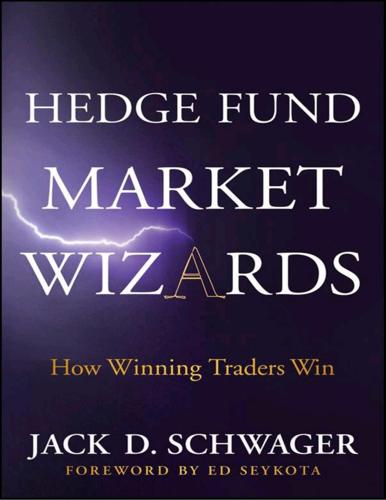
Hedge Fund Market Wizards
by
Jack D. Schwager
Published 24 Apr 2012
In the winter, I shoveled snow. At first, I charged a nickel, but I found that there was so much demand that I raised the price to a dime, and then to 15 cents. The first year, when I was eight, I made several dollars, but the next year the other kids caught on, and the market changed. A classic example of no barriers to entry. Another thing happened that had a hint of the future. I had a cousin who was not a totally scrupulous guy and who discovered that you could jiggle the slot machines that were located in gas stations and make them pay out more than they should. This was a fairly astonishing fact that you could go around jiggling machines and get a lot of extra nickels out of them.
…
They fail to appreciate that only 300 million people live in the U.S., and there are 6.7 billion people in the rest of the world. The market in which Apple has the highest approval rating is China, which is a market with 900 million mobile phone subscribers. And currently, how many iPhones have been sold in China? Three million. Their unique operating system and excellent hardware give Apple a barriers-to-entry advantage relative to their competitors. I believe over the next four years, Apple will inevitably repeat the success it has had in the U.S. on a global scale. We forecast the earnings of every company we follow for three or four years out. I like to invest in companies that are cheap relative to their sector, but where we are forecasting earnings above consensus for the next few years.
…
Under the Jones Act, all vessels transporting cargo between covered U.S. ports must be built in the U.S., registered under the U.S. flag, manned by predominantly U.S. crews, and owned and operated by U.S.-organized companies that are controlled and 75 percent owned by U.S. citizens. As one can imagine, the Jones Act creates a significant barrier to entry in these shipping lanes, and as a result, Horizon Lines had a substantial share of the market. On the negative side, though, the company also had its share of debt and a number of older vessels that needed to be replaced. My thinking at the time was that I was investing in a company that had a significant moat around it and that it would generate a lot of free cash flow, enabling it to deleverage.
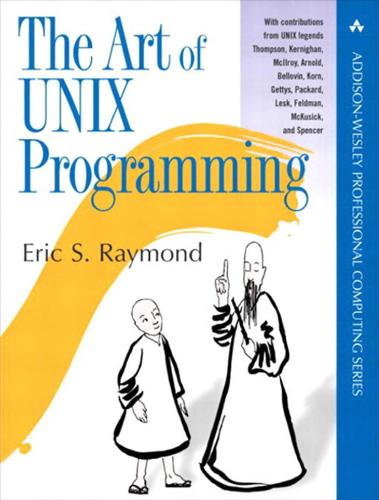
The Art of UNIX Programming
by
Eric S. Raymond
Published 22 Sep 2003
Entry Barriers to Development Another important dimension along which operating systems differ is the height of the barrier that separates mere users from becoming developers. There are two important cost drivers here. One is the monetary cost of development tools, the other is the time cost of gaining proficiency as a developer. Some development cultures evolve social barriers to entry, but these are usually an effect of the underlying technology costs, not a primary cause. Expensive development tools and complex, opaque APIs produce small and elitist programming cultures. In those cultures, programming projects are large, serious endeavors — they have to be in order to offer a payoff that justifies the cost of both hard and soft (human) capital invested.
…
Later on, in Chapter 19 we'll see how good release-engineering practices (like having a README file with appropriate content) can make your source code as discoverable as your design. If you need a practical reminder why these qualities are important, remember that the sanity you save by writing transparent, discoverable systems may well be that of your own future self. * * * [58] An economically-minded friend comments: “Discoverability is about reducing barriers to entry; transparency is about reducing the cost of living in the code”. [59] The Linux kernel makes a number of attempts at discoverability, including the Documentation subdirectory in the Linux kernel source tarball and quite a number of tutorial websites and books. These attempts are frustrated by the speed at which the kernel changes; the documentation has a chronic tendency to fall behind.
…
It's a consequence of the fact that human beings can only pay attention to one thing at one time (see The Humane Interface [Raskin]). Surprises in the interface focus that single locus of attention on the interface, rather than on the task where it belongs. Thus, to design usable interfaces, it's best when possible not to design an entire new interface model. Novelty is a barrier to entry; it puts a learning burden on the user, so minimize it. Instead, think carefully about the experience and knowledge of your user base. Try to find functional similarities between your program and programs they are likely to already know about. Then mimic the relevant parts of the existing interfaces.

This Is How They Tell Me the World Ends: The Cyberweapons Arms Race
by
Nicole Perlroth
Published 9 Feb 2021
His twenty-five-man team could scour for bugs and develop and test exploits nine-to-five, but it would be far easier to outsource that work to the thousands of hackers around the world who spent their days and nights glued to their computer screens. “We knew we couldn’t find them all, but we also knew there was a low barrier to entry,” Sabien recalled. “Anyone with two thousand dollars to buy a Dell is in the game.” And so the underground market for zero-day bugs began, the same one that would quietly undermine iDefense’s business, and eventually consume it—and the rest of us. Sabien’s stories from those early days landed like a spy novel, complete with cloak-and-dagger meetings, bags of cash, and murky middlemen—only in this case none of it was literary or imagined.
…
I thought about what the Gaucho said as I walked back to my hotel that day. Hackers weren’t hobbyists anymore. They weren’t playing a game. In short order, they had become the world’s new nuclear scientists—only nuclear deterrence theory did not so neatly apply. Cyberweapons didn’t require fissile material. The barrier to entry was so much lower; the potential for escalation so much swifter. Our own stockpile of cyber exploits and cyberweapons hardly deterred our adversaries from trying to acquire their own. What Iran, North Korea, and others could not develop on their own, they could now just buy off the market. The Gaucho might not sell them a way in, but there were many others here that would.
…
Stuxnet had hit what Iran valued most—its nuclear program—and Iran soon learned it could use cyber means to hit the United States where it would hurt most: American access to cheap oil, the economy, and our own sense of safety and military superiority. Once Stuxnet had been discovered and unfurled, it became Tehran’s rallying cry and the single greatest recruiting tool the Ayatollahs could have ever hoped for. The barrier to entry was so low that for the cost of three F-35 stealth bombers, Iran’s Islamic Revolutionary Guard Corps built a world-class cyber army. Before Stuxnet, the IRGC reportedly budgeted $76 million a year for its fledgling cyber force. After Stuxnet, Iran poured $1 billion into new cyber technologies, infrastructure, and expertise, and began enlisting, and conscripting, Iran’s best hackers into its new digital army.
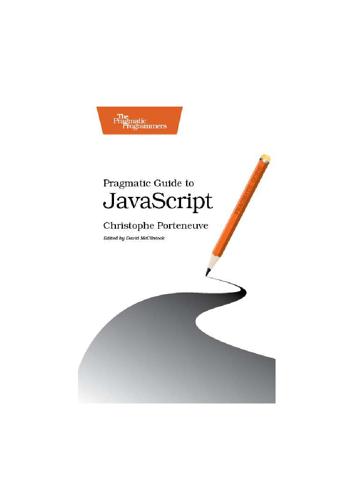
Pragmatic Guide to JavaScript
by
Christophe Porteneuve
Published 15 Nov 2010
The jQuery project was formally founded in September 2009, and its version 1.4 was released in January 2010 amid a two-week online celebration and coding fest. (The current version at the time of this writing is 1.4.2.) Report erratum Download from Wow! eBook <www.wowebook.com>this copy is (P1.0 printing, November 2010) J Q UERY AND J Q UERY UI 119 jQuery’s focus is mostly on lowering the perceived barrier-to-entry for people wanting to spruce up their web pages with a bit of JavaScript without prior knowledge of the language (or sometimes of programming in general). Its API provides a lot of quick shortcuts targeted at the most common use cases, and a number of plug-ins (some of them grouped in the jQuery UI project) take care of the rest.
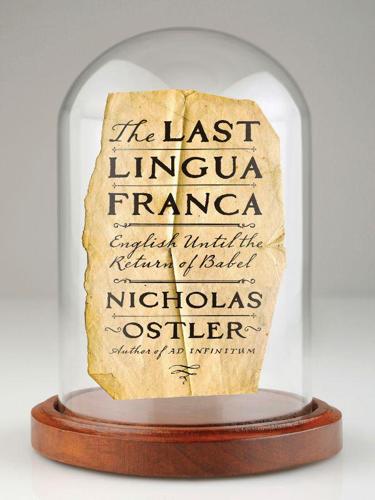
The Last Lingua Franca: English Until the Return of Babel
by
Nicholas Ostler
Published 23 Nov 2010
Found er effects, also known as the force of tradition, are stronger where either there is little cost in sustaining the past pattern (contrast the continuing expense in time and eff ort to induct new generations in Latin, eff ec-tively an artificial language), or the tradition is not at variance with some other new pressure (as Latin was in effect a barrier to entry for less educated bourgeois people). Hence notoriously, wheel gauges have remained at four feet eight and a half inches, originating as the axle length of chariots and carts, from the Roman Empire and its road ruts right on through medieval carriage-work, and as the current U.S. standard railroad gauge.
…
They have been sustained ever since—though Gothic, the least readable, has lost much ground— since there is no more of the particular dynamic in manual pen movement that had previously driven the changes since the capitals of the Classical age. Even more notoriously, the perverse QWERTY pattern of the English keyboard, invented in 1872, has survived a century of mechanical typing and the First thirty years or so of digital text entry. It is likely to continue to survive unless and until it comes to represent a barrier to entry to some sector of the population of would-be typists and writers, which—hitherto disenfranchised, is yet rising in influence. This kind of situation is precisely what can be expected to provide at least opposition, and perhaps effective Relegation, to English as a global lingua-franca. What about the vast section of the world’s population for whom the need to learn English is still a burdensome chore that they would prefer to avoid?
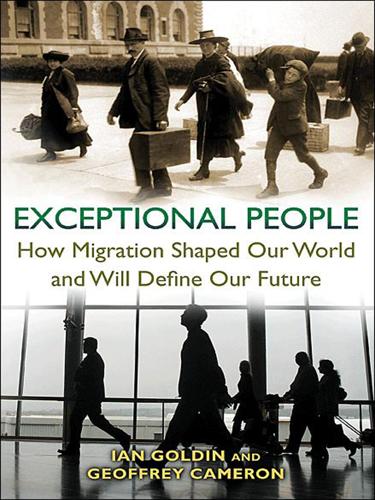
Exceptional People: How Migration Shaped Our World and Will Define Our Future
by
Ian Goldin
,
Geoffrey Cameron
and
Meera Balarajan
Published 20 Dec 2010
As of 2004, 286,557 Brazilian nationals and 56,000 Peruvian nationals were resident in Japan.101 The economic crisis by 2008 had led the Japanese Government to not only end but also seek to reverse its policy, offering incentives for the Nikkeijin to return to Latin America. Most government policies tend to view the migration process as a static and one-time decision that influences an individual's decision to cross a border. They are directed toward either increasing or decreasing barriers to entry, with a view to managing the number of people entering the country. This short-term and narrow view of migration often leads migration policy to fail, however, in terms of the effects that it produces.102 Wayne Cornelius notes that “the gap between the goals of national immigration policy…and the actual results of the policies in this area (policy outcomes) is wide and growing wider in all major industrialized countries.”103 Because migration is a dynamic social process, often encompassing multiple moves, for many different reasons, due to a variety of factors, immigration policy cannot be viewed as a gate that opens and closes.
…
Russia's Ministry of the Interior estimated in 2003 that there were five million foreigners of unclear legal status present in the country.105 The total number of undocumented migrants in continental Europe is estimated to be between four and eight million.106 In 2005, about a third of foreign workers in Japan and two-thirds in South Korea were undocumented.107 In Singapore, despite heavy employer sanctions for hiring undocumented workers, a 1998 study found that more than 80 percent of the total foreign workforce did not have visas.108 Levels of undocumented migration are high even in the Gulf States, where it is usually necessary to fly across the border (a significant barrier to entry), temporary work visas are relatively easy to obtain, and harsh jail sentences are often meted out to overstayers.109 To address this problem, the United Arab Emirates initiated a set of amnesties within the Gulf States between 1996 and 1998, during which undocumented migrants would leave or acquire a visa without facing jail or fines.110 More than a million people participated in the amnesty process, most of whom were returned to their home countries.111 Immigration policies can also have unintended or unforeseen consequences.
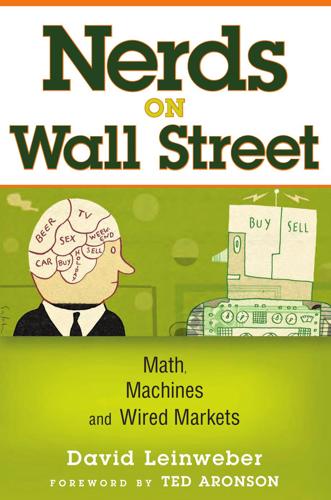
Nerds on Wall Street: Math, Machines and Wired Markets
by
David J. Leinweber
Published 31 Dec 2008
Others have much higher standards, closer to the highest-minded bastions of reputation-driven journalism, and may be spawned by those news organizations as they evolve. Others have an “all Britney, all the time, except for shark attacks” attitude, but keep people coming The Text Fr ontier 205 back by breaking an occasional legitimate true story overlooked by the mainstream media. 4. Social media. The barriers to entry at the low end of the “news” business on the Web are vanishingly small. Anyone can send spam, create a blog, or post on message boards for stocks or other topics. A great deal of this is genuinely useful—think of the product reviews on Amazon—and some is just noise. On stock message boards, there have been CEOs who reveal valuable information; but for the most part, the typical posting still reads like it came from some guy sitting around in his underwear in Albania at 3 a.m., on vodka number nine.
…
No less a culprit than Lehman’s Dick Fuld spoke of the need for such a monitor in his testimony to Congress. Regrettably, this seems to be getting less attention than it deserves, but it is a second story on the foundation of trading, clearing, and settlement systems that can give early warning of larger problems. Electronic market technology lowers the barriers to entry for creating this new infrastructure, as seen in the fragmentation of the equity Shooting the Moon 287 markets described in Chapter 3 (“Algorithm Wars”). For stocks, futures, and options, this has let a thousand flowers (well, about 40) bloom, and there is a great race under way to create the systems needed for a broader class of securities.
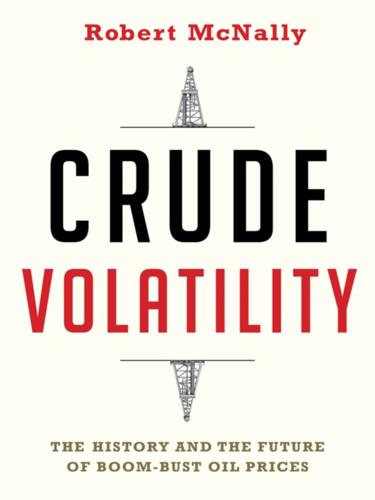
Crude Volatility: The History and the Future of Boom-Bust Oil Prices
by
Robert McNally
Published 17 Jan 2017
But there is one other necessary feature that enables cartels: A natural inclination (ideally by a relatively small number of producers) toward integration and collective action when oversupply develops. Cartels work best when there are a limited number of producers, barriers to entry are high, and patented or elaborate technology is required to produce. In the case of oil, conditions in the early Pennsylvania oil fields were decidedly not favorable to the formation or success of a producer cartel. New drillers were as numerous as they were independent, barriers to entry were low, and oil drilling was neither sophisticated nor subject to technology patents. Despite an unfavorable atmosphere, early oil drillers tried to form cartels out of desperation to escape price crashes.31 But their efforts did not last long and ultimately failed, mainly because members succumbed to the temptation to cheat as hordes of new drillers, eager to strike it rich, continued discovering new gushers.
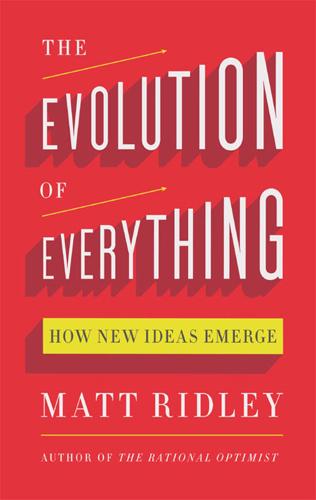
The Evolution of Everything: How New Ideas Emerge
by
Matt Ridley
The original idea of a patent, remember, was not to reward inventors with monopoly profits, but to encourage them to share their inventions. A certain amount of intellectual property law is plainly necessary to achieve this. But it has gone too far. Most patents are now as much about defending monopoly and deterring rivals as about sharing ideas. And that discourages innovation. Many firms use patents as barriers to entry, suing upstart innovators who trespass on their intellectual property even en route to some other goal. In the years before World War I, aircraft-makers tied each other up in patent lawsuits and slowed down innovation until the US government stepped in. Much the same has happened with smartphones and biotechnology today.
…
The internet turns everybody into a journalist and a politician; puts the customer in ultimate charge; and lowers the cost for ordinary people to do extraordinary things, whether in charity, business or politics. Big companies are tumbling before its creative-destructive onslaught; big state bureaucracies cannot long resist. As the maverick MP Douglas Carswell puts it, ‘Everything that the internet touches it transforms. The barriers to entry come crashing down. Established operators face competition from nimble upstarts. So, too, in politics.’ Carswell argues that i-democracy is rapidly and inexorably transforming the old ways of doing politics, replacing party-controlled, bureaucracy-enabled traditions with radical emergent possibilities, from open primaries to instant plebiscites, from participatory budgeting in local government to online recall.
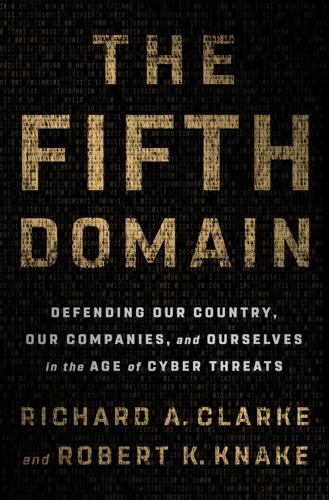
The Fifth Domain: Defending Our Country, Our Companies, and Ourselves in the Age of Cyber Threats
by
Richard A. Clarke
and
Robert K. Knake
Published 15 Jul 2019
Accelerating that shift is one of the central requirements for achieving something more like peace and less like war in cyberspace. Cyber warfare must become both more difficult and costlier to carry out. Cyber criminals, who act as proxies for nation-states as well as cause significant harm with their moneymaking schemes, must have their numbers culled. The barriers to entry for engaging in malicious activity in cyberspace have been going down steadily, year over year. They must be brought back up. Many who have looked at the specter of cyber war have called for drastic action. “Reinvent the internet” to make it more secure is an often-heard refrain, but no one has yet come up with a plan for how to do that without causing more economic and social harm than the bad actors could do on their worst days.
…
We believe that were there a “kinetic,” or conventional, war today in which U.S. forces were opposed by Iran, Russia, China, or even to some extent North Korea, the Defense Department would be hampered in the execution of its operations and largely unable to conduct significant offensive cyber operations against enemy military targets. In this scenario, the United States faced off against Iran and lost, at least in the first round. In the real world, Iran does have significant offensive cyber capabilities. The barrier to entry to having a meaningful cyber-war offensive force is low. Countries that could never defeat the United States in a purely conventional military battle can pose significant asymmetric risks to us in cyberspace. To see why we make that claim, let’s look at each of the five cyber missions we think the Pentagon should undertake and see what a mid-tier power like Iran could do to us.

Human Frontiers: The Future of Big Ideas in an Age of Small Thinking
by
Michael Bhaskar
Published 2 Nov 2021
Mozart, Évariste Galois, Mary Shelley, Alexander the Great . . . Plenty of people achieved a lot in their early twenties or younger. Moreover, when knowledge undergoes a revolution, the average age of significant contributors falls. The stock of knowledge in post-revolutionary fields is lower; there are fewer barriers to entry; and younger people, not institutionalised in the old ways, are free to rampage across fresh terrain. This has happened with quantum mechanics, Expressionist art and in Silicon Valley.23 As quantum physics rewrote the discipline, so there was a lowering of contributors’ age: Werner Heisenberg was twenty-five when he made major discoveries and Bohr, Wolfgang Pauli, Paul Dirac and Fermi all made important discoveries in quantum mechanics or subatomic physics under the age of thirty.
…
The General Data Protection Regulation (GDPR) was meant to protect privacy, but like many ill-thought-through regulations makes life for startups harder – and as a result helps large existing companies. The world's fastest growing jobs are roles like private security guard or bank compliance officer, hardly productive. In everything from tech to logistics, construction to banking, compliance costs now form a significant barrier to entry and favour already dominant interests. So much for the mythologised notion of ‘permissionless innovation’. Over-zealous, over-complex regulation favours incumbents, inhibits innovation and creates hidden costs in the form of paths not taken. Moderate, judicious use of the precautionary principle is needed, but ‘judicious’ is a tricky balance.

Doing Data Science: Straight Talk From the Frontline
by
Cathy O'Neil
and
Rachel Schutt
Published 8 Oct 2013
In some cases, the evaluation method isn’t always objective. There might be a subjective measure, where the judges decide your design is bad or they just have different taste. This leads to a high barrier to entry, because people don’t trust the evaluation criterion. Additionally, one doesn’t get recognition until after they’ve won or at least ranked highly. This leads to high sunk costs for the participants, which people know about in advance—this can become yet another barrier to entry. Organizational factors can also hinder success. A competition that is not run well conflates participants with mechanical turks: in other words, they assume the competitors to be somewhat mindless and give bad questions and poor prizes.
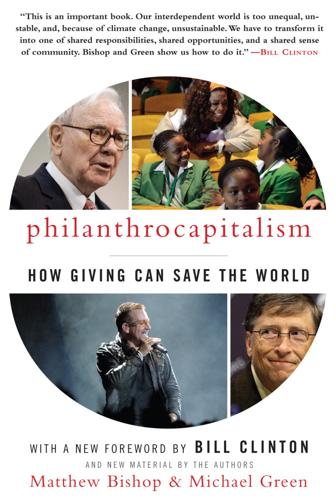
Philanthrocapitalism
by
Matthew Bishop
,
Michael Green
and
Bill Clinton
Published 29 Sep 2008
By 2009, the EVPA had nearly thirty full members in eleven countries, including the splendidly named Fondazione Oliver Twist, an Italian venture philanthropy firm focused on preventing social exclusion, learning disorders, truancy, and delinquency. “The venture philanthropy scene in Europe is fragmented and experimental,” says Dawson, who is optimistic despite conceding that so far “only about half a dozen organizations are really doing it.” He is keen to pass on what he has learned because, as he says, “there are zero barriers to entry in philanthropy, and it is easy to make mistakes.” Another innovative approach to venture philanthropy is being embraced by groups of philanthropists, who jointly decide what to support and monitor how their money is used. A notable example of this sort of group venture philanthropy is the Silicon Valley Social Venture Fund, known as SV2.
…
The use of the Internet by Barack Obama to mobilize supporters, especially those of the Net Generation, has become a huge source of inspiration to popular philanthrocapitalists. According to Joe Rospars, director of new media for the Obama campaign, the aim of the MyBarackObama.com Web site was twofold. First it lowered “barriers to entry,” making it “as easy as possible for folks who come to our Web site.” Second, and arguably more important, was “raising what it means to be a supporter. It’s not enough to have a bumper sticker. We want you to give five dollars, make some calls, host an event. If you look at the messages we send to people over time, there’s a presumption that they will organize.”
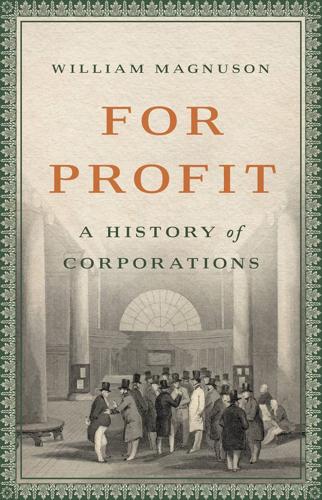
For Profit: A History of Corporations
by
William Magnuson
Published 8 Nov 2022
Adam Smith himself had condemned what he called the “oppressive monopolies” of his day, including the East India Company. And railroads, it turned out, were excellent candidates for monopolization. They had very high fixed costs (laying railroad was tremendously expensive) but low operating costs (once built, railroads were relatively inexpensive to maintain). The high barriers to entry meant that incumbent railroads tended to have few, if any, competitors. As a practical matter, this meant that consumers had to pay whatever price the local railroad offered or be shut out of the business entirely. The wealthy capitalists of the late nineteenth century understood that this was a formula for high profit.
…
Mark Zuckerberg, on the other hand, was a college sophomore at Harvard, taking classes in psychology and Roman art, shuffling around campus in his Adidas slides, and attending fraternity parties on the weekends. But by the time Zuckerberg turned twenty, his company, Facebook, had a million users. Depending on your perspective about the merits of youth, this may sound either refreshing or terrifying. But the technology industry, particularly in the early 2000s, was a land of low barriers to entry. Anyone with a computer and an internet connection could start a website, and most users never looked to see whether the founder was of a respectable age. In fact, it still wasn’t entirely clear what people would use the internet for. Most were still calling it the “World Wide Web.” Would it be a repository of information?
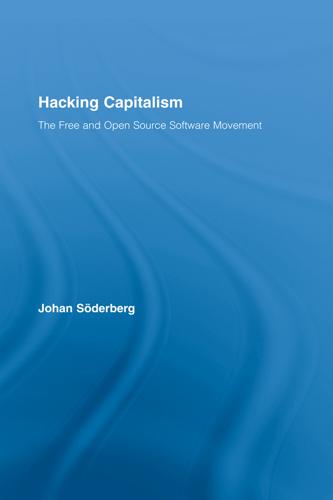
Hacking Capitalism
by
Söderberg, Johan; Söderberg, Johan;
In A Hacker’s Manifesto, a pamphlet that circulated on bulletin boards in 1980s and that has become something of a founding charter of the computer underground, it was declared that hackers: ‘Exist without skin colour, without nationality, without religious bias’37 A quick glance is all it takes to confirm that the social base of the hacker movement is heavily skewed towards middle-class males living in the West. The demography has its roots in those days when only a privileged few could access computers during their college years. The monetary restrains have since been considerably eased. Prices of computer equipment are no longer a barrier to entry since five year old computers with zero market value work perfectly fine for the purpose of writing free code. The main cost is the leisure time and the peace of mind which it takes to engage in frivolous computing. Spare time is, however, one of the few resources which the unemployed among the western working class have in abundance.
…
The social bandit is social only for as long as he in her transgression inspires everyone else to recognise law as class rule and to defy it. That is to say that access to technology is not just contested on the level of design choices, i.e. free versus closed source code, but equally so on legal, educational, ideological and economic grounds. By inventing a free/open license, for instance, the legal barriers to entry raised by copyright law are minimised. Furthermore, the norm system within the computer underground, in particular a strong meritocracy rewarding the demonstration of technical skills, encourages individuals in the community to go beyond user-friendly interfaces. Know-how about information systems is thus spread outside the computer profession.
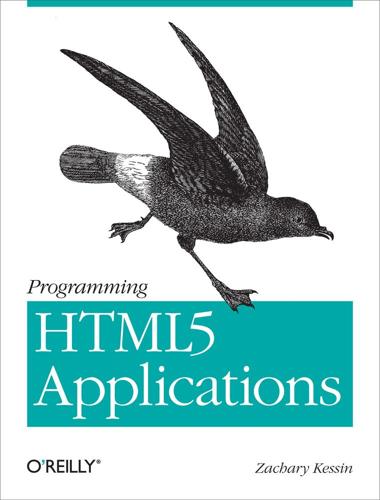
Programming HTML5 Applications
by
Zachary Kessin
Published 9 May 2011
It offered weak performance, was saddled with a quirky syntax that led to mysterious bugs, and suffered from its dependence on the DOM. Browsers kept it locked in a “sandbox,” easing users’ security concerns but making it very difficult for developers to provide features that seemed trivial in more traditional desktop application development. Scripting culture created its own problems. Although providing a very low barrier to entry is a good thing, it does come with costs. One of those costs is that such a language often allows inexperienced programmers to do some very ill-advised things. Beginning programmers could easily find JavaScript examples on the Web, cut and paste them, change a few things, and have something that mostly worked.
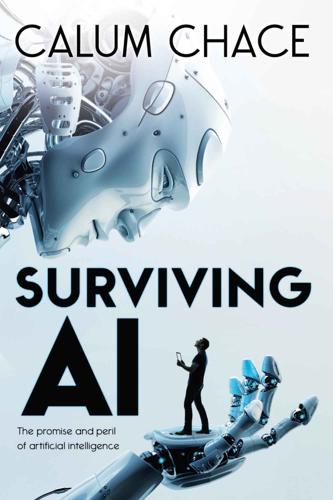
Surviving AI: The Promise and Peril of Artificial Intelligence
by
Calum Chace
Published 28 Jul 2015
The task for business leaders is to work out whether their industry can be disrupted by this sort of insurgent (hint: almost certainly yes) and whether they can do the disruption themselves rather than being left standing in rubble like Kodak. Digital disruption is devastating partly because it enables competitors to undercut your product and service price dramatically. That cheapness also means there will be many more potential disrupters because the barriers to entry are disappearing. Small wonder that Monitor, the business consultancy established by Michael Porter to advise companies how to erect those barriers, went bankrupt. Business leaders often know what they need to do: set up small internal teams of their most talented people to brainstorm potential disruptions and then go ahead and do the disrupting first.
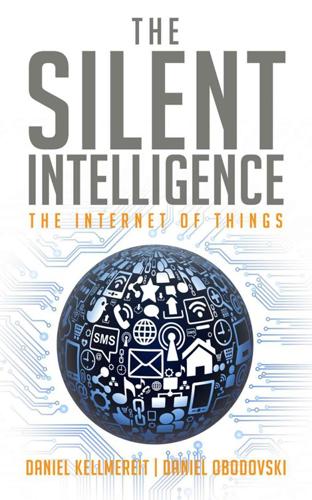
The Silent Intelligence: The Internet of Things
by
Daniel Kellmereit
and
Daniel Obodovski
Published 19 Sep 2013
Data acquisition — device hardware, which includes sensors, wireless communication devices, and so on Data transport — network connectivity and connectivity-related software/services Data analysis — software/cloud platform for data analytics/big data management Connected Device Platform and Application Enablement Platform — M2M software application platforms Installation, system integration, and professional services With a relatively limited installed base in terms of hardware, most of the money is currently going to big data and data analytics. These areas tend to scale the fastest, and also have limited barriers to entry. Both connectivity and hardware tend to be in the hands of established players and often require significant up-front investments, so it is more difficult to enter these markets, with a few exceptions, at least for now. But especially on the hardware side, the potential for disruption is significant.

The Cosmopolites: The Coming of the Global Citizen
by
Atossa Araxia Abrahamian
Published 14 Jul 2015
“There’s a sense in which seasteading is an engineering solution to the problems of politics, and that’s really appealing to tech people,” Friedman told me in 2012. “If we can figure out how to build cheap modular ocean cities suddenly we solve this huge problem in the world.” Friedman referred to the business of state sovereignty as an “industry” with “a really high barrier to entry and really high switching costs, and the customers are getting terrible service.” Ver is a big fan of the project, and of Friedman himself, whose political education mirrors his own. “I realized Patri is a cool guy ten years ago,” Ver said, “when I was reading his blog and he had a picture of a bumper sticker and it said, ‘Support free trade: smuggle.’”

How the Other Half Banks: Exclusion, Exploitation, and the Threat to Democracy
by
Mehrsa Baradaran
Published 5 Oct 2015
Twenty-three-year-old David Korzeniowski, blocked out of the banking system for seven years, acknowledged that “he made a mistake” but that “the fees he pays for cashing checks, paying bills and wiring money cannibalize the paycheck he gets from part-time construction work … ‘Everything is more expensive,’ he said.”32 Banks have no need for small accounts because they do not yield high profits. Therefore, they have employed a variety of tactics to slough off their low-yield customers. High fees and barriers to entry have accomplished their desired result: those with small savings have weighed the costs and have decided to leave the banking system entirely. BANKING MARKETS But we can’t necessarily blame the banks. Everything is more expensive for those outside the banking system, but the business of banking has also become more costly.
…
The existing post office framework represents the most promising path toward effectuating such a public option. American banks long ago deserted their most impoverished communities, but post offices, even two centuries later, have remained—still rooted in an egalitarian mission. There have never been barriers to entry at post offices, and their services have been available to all, regardless of income. And so, it is not unreasonable to suggest that as America’s oldest instrument of democracy in action, the post office can once again level the playing field, and in the process, save itself from imminent demise.

Falling Behind: Explaining the Development Gap Between Latin America and the United States
by
Francis Fukuyama
Published 1 Jan 2006
Robinson, “The Colonial Origins of Comparative Development,” American Economic Review 91 (2001): 1369–1401. This is not the place for theoretical discussions, but note that “security of property rights” is a notoriously fuzzy concept. For one, in a Schumpeterian world of creative destruction, property would be secure only if it were defended by barriers to entry (see Daron Acemoglu, “The Form of Property Rights: Oligarchic vs. Democratic Societies,” Working Paper, Department of Economics [Cambridge: Massachusetts Institute of Technology, 2005]). Secondly, property can be made secure not by right but by might: in Latin America, land was often protected by private militias (see Fernando López-Alves, State Formation and Democracy in Latin America, 1810–1900 [Durham: Duke University Press, 2000]).
…
Secondly, property can be made secure not by right but by might: in Latin America, land was often protected by private militias (see Fernando López-Alves, State Formation and Democracy in Latin America, 1810–1900 [Durham: Duke University Press, 2000]). Most importantly, however, property rights mean something different for those who possess it and for those who do not. In the presence of barriers to entry and credit constraints—both prevalent in Latin America—property rights are exclusionary. See Elisa Mariscal and Kenneth L. Sokoloff, “Schooling, Suffrage, and the Persistence of Inequality in the Americas, 1800–1945,” in Political Institutions and Economic Growth in Latin America, edited by Stephen Haber (Stanford: Hoover Institution Press, 2000), pp. 159–218; Kenneth L.

The Investment Checklist: The Art of In-Depth Research
by
Michael Shearn
Published 8 Nov 2011
Lister’s firm has developed a scorecard system with 100 different items that helps him evaluate the economics of an industry. As Lister says: We score an industry on 100 items every time. There is a lot of judgment in terms of how to understand things such as the volatility of customer demand, profit margins, pricing power, and barriers to entry. We go through all of these items and rate them and create a sort of index. Maybe we are wrong on 5 percent to 10 percent of the items, but at the end of the day, it is the relative score that matters. If an industry scores positively on only 50 of the 100 items, we will pass on the industry, but if the industry scores anywhere from 60 to 75 of the 100 items, we will look for a business within that industry to invest in.
…
The old style TV dinner was replaced with more popular choices and higher-quality ingredients. Price was not the primary determinant. The customers (frozen-food manufacturers) chose warehouses based on service, real-time links to inventory, good temperature control, quality, and on-time delivery, not on price. There were barriers to entry. Industry regulation forced refrigerated warehouses to staff engineers because the extremely large refrigeration equipment is dangerous. Because of the expense and expertise required to build the refrigerated warehouses, entry was constrained by capital. The financial characteristics were strong.
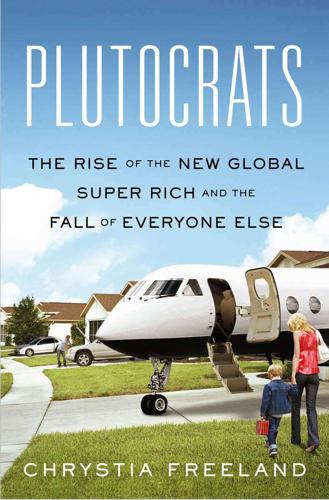
Plutocrats: The Rise of the New Global Super-Rich and the Fall of Everyone Else
by
Chrystia Freeland
Published 11 Oct 2012
So, unless you believe that the random order of participating in the competition is linked to talent, the more obvious conclusion is that the music world celebrity brought by winning the Queen Elisabeth Competition, independent of how good you are, has a powerful effect on your professional success as a musician. But what about the long tail? One of the promises of the Internet has been that it can weaken the Matthew effect: the Web has low barriers to entry, and we all start out equal online. Matthew Salganik and Duncan Watts tested that premise in 2005 on 12,207 Web-based participants. The research subjects were offered a menu of forty-eight songs. Some participants were shown the songs ranked by popularity in the research group and told how often each song had been downloaded.
…
The Mac 400 is an example of the next stage—emerging market engineers, employed by a Western company, creating a product inspired by a Western prototype, and redesigned for emerging market consumers. The world’s smartest megacorporations—GE, Google, Goldman Sachs—are finding ways to profit from the great economic shift of our times. The biggest winners, though, are individuals, not institutions; globalization and technology have dramatically lowered barriers to entry, and the beneficiaries are the people smart enough and lucky enough to make it on their own. Chopra was aware of the perks of working for a highly respected global behemoth like GE—“If you are the CEO of GE, anyone anywhere in the world will take a meeting with you,” he said—but he couldn’t resist the lure of responding to revolution.

Cybersecurity: What Everyone Needs to Know
by
P. W. Singer
and
Allan Friedman
Published 3 Jan 2014
This became clunky, and in 1972 Ray Tomlinson at the technical consulting firm BBN wrote a basic program to read, compose, and send messages. This was e-mail: the first Internet “killer app.” Within a year, a majority of traffic across the network originally created for research was e-mail. Now networked communication was about people. The last step in creating the modern Internet was eliminating barriers to entry. Early use was limited to those who had access to the networked computers at research and defense institutions. These organizations communicated via dedicated data lines. As the evident value of networked communication grew and the price of computers dropped, more organizations sought to join.
…
It turned out they were using commercially available software originally designed by college kids to illegally download satellite-streamed movies. Skygrabber, as it was known, cost as little as $25.95 on a Russian website. Examples like this lead many to believe that cyberspace is one of those strange places where the weak have an advantage over the strong. On one hand, the barriers to entry to developing cyberattack capabilities are relatively low, especially compared to building up more traditional military capabilities. For instance, it cost the United States roughly $45 million for the unmanned plane system and several billion dollars for the space satellite network that its feed traveled over.
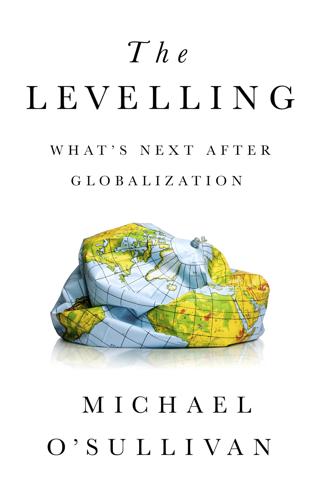
The Levelling: What’s Next After Globalization
by
Michael O’sullivan
Published 28 May 2019
As the new finance minister she might, if not careful, find herself being quickly carried along in the jargon of economics, speaking in terms of deficits and the code of GDP forecasts. Like most professions, finance and economics have their own codes, rituals, and language. To the outsider, most of this is dull and hard to comprehend. And, again as with most professions, the fact that economics and finance are hard to comprehend is intentional, a barrier to entry to exclude the many from decisions about their future. In many cases, bureaucracies use these rituals and jargon to maintain the status quo. In the coming weeks Chidley will see economics and policy making from the inside and will make a journey of discovery, learning to distinguish cosmetic drivers of growth from longer-term, more meaningful factors.
…
A paper from the staff at the Richmond Federal Reserve highlighted the fact that the concentration of a small number of large companies is in some cases as high as it was during the Gilded Age.3 This has allowed the dominant companies to enjoy higher margins, higher stock returns, and more-profitable merger deals. The authors flag lax regulatory oversight (as well as technological barriers to entry) as one reason for the rise of dominant firms. In this light, one proposal that we may hear more of is that, echoing the 1933 Glass-Steagall Act that separated the activities of commercial and investment banks (some banks and the sectors they had invested in—oil, railways, and steel companies—were nearly as dominant as the large technology companies are today), there would be a Glass Steagall–themed act that would break up corporate giants such as Amazon, Google, and perhaps even Tencent Holdings, China’s media-enabled e-commerce player.

Buy Now, Pay Later: The Extraordinary Story of Afterpay
by
Jonathan Shapiro
and
James Eyers
Published 2 Aug 2021
As he saw it, digital platform companies such as eBay and Google were attractive to investors because of their strong economies of scale: once these platforms are built, the cost of adding a new user to the platform is near zero, which means that its operating margins are very high. ‘This network effect gives these platforms real barriers to entry,’ Whittaker said. ‘In contrast, Afterpay is a consumer finance company that requires capital to grow. In the past 14 months alone, Afterpay has raised more than $450 million in a mixture of debt and equity. This has been done in part to fund the company’s entry into the US and UK markets. However, it is apparent that growth for Afterpay comes at a cost to both its earnings per share and returns.’4 Afterpay’s already low returns, he argued, would decline in the future as the privilege of light-touch regulation was whittled away, and as more competition moved in to erode its margins.
…
Afterpay’s momentum was ‘undeniable’, and it would smash its two-year growth forecasts, they acknowledged. But there were three risks the share market was not factoring in, even if they were spoken about. The first was regulation: the threat of surcharge regulation and reclassification as a lender would weigh on the stock. The second was competition, given the low barriers to entry. The third was the risk that Afterpay would fail to deliver on its aspirations. By UBS’s calculations, Afterpay would have to process eight times more transactions within five years to justify even the lower end of its share price range. The market’s price implied that Afterpay would be used to pay for $100 billion of goods within five years and $175 billion within ten years, compared to around $5 billion at present.
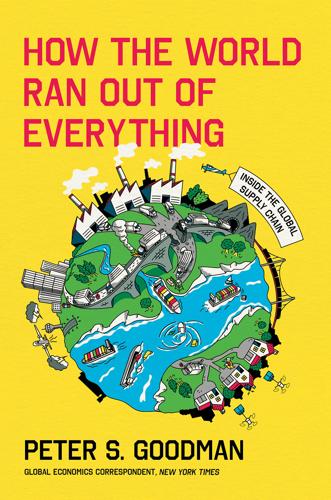
How the World Ran Out of Everything
by
Peter S. Goodman
Published 11 Jun 2024
In the rest of the world, what he had pulled off with a single query on Alibaba would have required weeks of old-school networking, looking for factories, calling, texting, and emailing to solicit quotes, and then waiting. Businesspeople often talk of barriers to entry—the difficulties of new competitors entering a given marketplace, from the costs of building a factory to the challenge of securing raw materials. Companies that have built successful brands see barriers to entry as a useful form of protection. Barker and Walker had discovered that Chinese manufacturing effectively had barriers to exit. You could try to make your stuff somewhere else, but good luck.

Inner Entrepreneur: A Proven Path to Profit and Peace
by
Grant Sabatier
Published 10 Mar 2025
But plenty of businesses allow you to start earning money without first spending any money. Think of services like babysitting, tutoring, or consulting. If a customer is willing to pay you for these services or skills, you can start earning cash immediately. If you’re running an online business, you may need to shell out some money up front to create a website, but the barrier to entry is low and it’s often no more than a couple hundred dollars. The main resource every entrepreneur needs is time. If you’re unwilling to invest enough time in your idea, it will remain just an idea. If you have the capital, you could hire people to do most of the work for you, but you will still have to manage the operations, oversee them, and ensure everything is working—otherwise, it’s not your business.
…
A service-based business needing a license or certification can be more lucrative and scalable, even if you sell your time for money. If you’re an electrician or a plumber, and you need a license and certification, that’s typically more lucrative than being a deck power washer or exterminator, which have comparatively low barriers to entry. The profitability of service businesses is driven by supply and demand. There’s a large supply of Realtors in the U.S., for example, so it’s difficult to be a successful Realtor. But there’s a massive shortage of plumbers, so it’s lucrative to be a plumber. As the population grows and more homes get built across the United States, the demand for all home-service businesses will increase.
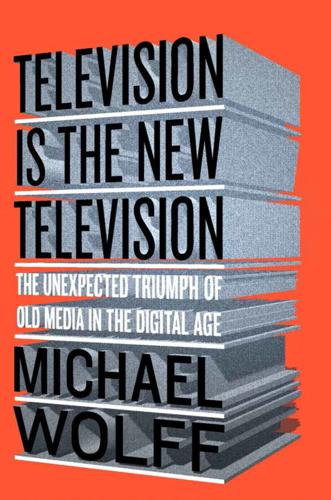
Television Is the New Television: The Unexpected Triumph of Old Media in the Digital Age
by
Michael Wolff
Published 22 Jun 2015
Google offered the biggest such network (DoubleClick was arguably the first Web-wide ad server—and purchased by Google), but there were myriad others, specialized to greater or lesser degrees, each with “inventory” available through the almost unlimited number of Web sites looking to make additional or marginal income from advertising sales. It was a curious devil’s bargain. In the past, the barrier to entry in the media business was that you not only had to have an audience but you had to have the wherewithal (a sales force) and the credibility (a brand) to sell that audience. Now, you didn’t. Any network would take any amount of inventory you could give it—albeit for pennies on the traditional media dollar.
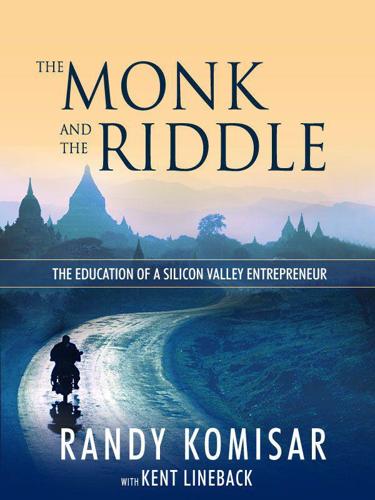
The Monk and the Riddle: The Education of a Silicon Valley Entrepreneur
by
Randy Komisar
Published 15 Mar 2000
The trouble is that the regulations extend that opportunity to everybody, not just Lenny. Like other Internet merchants, he would bank on the limited ability of brick-and-mortar merchants to cut prices. But with these margins, who knows? And what about Internet-based competition? Where were the barriers to entry? His answers were not satisfactory. He was offering nothing that another competitor couldn't also develop. The key to his business was swift execution. There's nothing inherently wrong with that. But fundamentally, there was a risk that, after Funerals.com gentrified the neighborhood, some brick-and-mortar heavyweight would sweep into town, or some Internet speed freaks would catch Funerals.com from behind.

Vagrant: Up and Running
by
Mitchell Hashimoto
Published 29 May 2013
Using Vagrant Without VirtualBox Since Vagrant 1.1, Vagrant has severed all ties that force you to use VirtualBox. Vagrant can now be used with VMware, EC2, and anything else you can dream of. In Vagrant terminology, these are called “providers,” and for this book, we will only use the VirtualBox provider. VirtualBox is free and works on every major platform that Vagrant runs on, so this is the lowest barrier to entry to using Vagrant. However, once you learn more about Vagrant, if you prefer to use something other than VirtualBox, rest assured there are other options available. The creators of Vagrant offer an official VMware provider. The examples in this book are tailored to VirtualBox, so I recommend using VirtualBox throughout the book.

Against Intellectual Monopoly
by
Michele Boldrin
and
David K. Levine
Published 6 Jul 2008
Such intense competition already gave them a competitive edge relative to the Anglo-Saxon companies living in a world of generalized patenting. To this initial advantage was added the opportunity to patent products in the United Kingdom and the United States, allowing the German chemical companies to erect insurmountable barriers to entry in the chemical market. Do not get us wrong here; we are not claiming that the German companies did not use patents in building up their worldwide dominance. They did, and there is no doubt whatsoever that the chemical industry worldwide was an assemblage of more or less loosely held together cartels until the late 1930s, cartels in which the big German chemical companies played a major leading and coordinating role.
…
The sales of the two largest ones covered about 15 percent of the global market for drugs in 2004. Relative size and market share are not the sources of monopoly power, if there is any, in this industry. Furthermore, although the wave of mergers may have erected substantial barriers for reaching the top, it would be a stretch to claim that there are substantial barriers to entry into the industry per se. In every country we have considered there are often hundreds of competing pharmaceutical firms, and new biomedical startups are appearing and being financed, especially in the United States, on a monthly basis.25 A few additional symptoms may help the reader get a better understanding of why, at the end, we reach the diagnosis we do.

Actionable Gamification: Beyond Points, Badges and Leaderboards
by
Yu-Kai Chou
Published 13 Apr 2015
Another form of Rolling Rewards is when an employer or big client states, “After this project, one of you will receive a free two week vacation to Maui!” In fact, at most workplaces, the thought of being promoted one day is in itself a Rolling Reward – someone has to become the new Vice President: I hope it will be me. On a larger scale where there are a great number of participants, Rolling Reward programs have low barriers to entry and the rewards are substantial (think state or national lotteries), but there’s a very slim chance to win, regardless of how long you spend playing the “game”. Yes, individuals can increase their odds of winning by performing more of the Desired Action, such as purchasing additional tickets, or collecting additional entries.
…
Robert Williams, a professor who studies lotteries at the University of Lethbridge states, “we have nothing in our evolutionary history that prepares us or primes us, no intellectual architecture, to try and grasp the remoteness of those odds.25” As a result, as long as there is some chance, people are willing to invest small amounts of money to obtain a gigantic reward. Rolling rewards work on a number of levels. For starters, because they have moderately low barriers to entry, they can easily attract a large number of participants. Furthermore, if a participant actually wins, they may easily become a fan for life. This is simply because they feel that they were chosen to win, which draws power from Core Drive 1: Epic Meaning & Calling. Taiwan’s Government Gamifies Tax Collection Taiwan is my home country and as I became more knowledgeable in gamification, I continue to be more impressed with the level of gamification that is implemented in its society and culture - without these innovations actually being called gamification.

Engineering Security
by
Peter Gutmann
Several similar home-banking applications simply bypass this problem by requiring that they be run with full Administrator rights [493]). The WHQL certification saga is a perfect illustration of the dilemma facing X.509 certificate issuers. CAs can either be successful in a business sense, with low barriers to entry and as many certificates as possible issued, or successful in a security sense, with high barriers to entry and as many dubious clients as possible excluded. Since commercial CAs aren’t (by definition) being run as a hobby, it’s obviously in their best interests to maximise their commercial success and not their security success. Furthermore, since there’s no contractual relationship (or indeed any kind of relationship at all) between the CA and the person using the certificate (the “relying party” in PKI terminology) but there is at least a financial relationship between the CA and its customers the certificate purchasers, the CA is incentivised to take actions that benefit itself and to a lesser extent its direct customers but has no incentive whatsoever to do anything that benefits a relying party.
…
Since there’s no consistency as to which CA’s certificates are recognised by which devices, it’s often necessary to sign an (at least theoretically) device-independent application with multiple certificates, one per target device family. As one mobile application author comments, “such a business model is no doubt of considerable benefit to CAs and device manufacturers” [466]. Unfortunately it also creates a significant barrier to entry for legitimate developers while presenting little problem for malware authors who can buy as many certificates using other people’s identities and money as they like, having exactly the reverse effect of what’s intended. Even the argument that at least the signed malware allows for the use of CRLs to disable it falls flat when you consider the difference in speed between having the malware identified and blocked by anti-virus software and the ponderous delays of the CRL issue process, assuming that the end-user software even checks them.
…
While it is in theory possible to ratchet up the level of verification so that there’s at least some level of confidence that certificates aren’t being handed out like confetti to anyone with a stolen credit card, the result would be CAs issuing a hundred certificates a year at a cost of $5,000 each17. In other words the “success” of SSL and code-signing certificates has been because the barrier to entry is so low that anyone can play. If the barrier were raised to the point where the checking would be at least somewhat effective then the process would be so onerous that no-one would want to play any more, or, worse, decide that doing an end-run around the whole system would be easier than playing the game as intended.

Presentation Zen Design: Simple Design Principles and Techniques to Enhance Your Presentations
by
Garr Reynolds
Published 14 Aug 2010
It should look like this: Company Logo [during the opening] Business Overview [the context setter] Management Team Market/Pain Points Product [including photos or screen shots] Business Model Customers [current and projected] Strategic Relationships, If Any Competition Barriers to Entry Financial Overview Capital, Valuation, and Use of Proceeds Review (Logo/Image) Validators Throughout the presentation, subject material should be liberally surrounded by “validators” that lend outside credence to the claims the presenter is making. These can range from the rock solid (“IBM, a repeat customer, has already paid us $10 million for our widgets and says we’re the best they’ve ever seen”) to the usual (“Gartner projects a tenfold increase in the buggy whip market over the next five years”), to something as simple as laying out a competitive landscape that includes brand names the audience has heard of (“McDonald’s sells standardized hamburgers around the world; we sell custom burgers in Tokyo”).
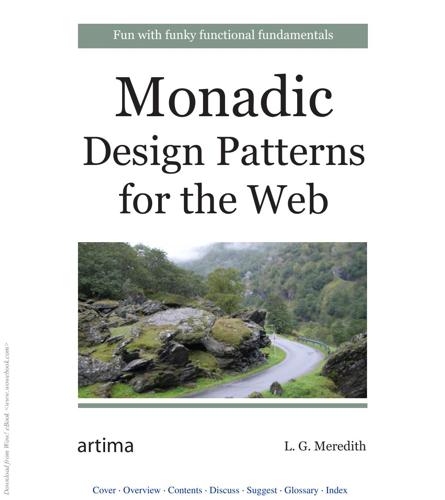
Monadic Design Patterns for the Web
by
L.G. Meredith
You may, in fact, contemplate an ironic future in which this abstraction alone causes managed code to outperform C/C++ code because of C/C++’s faulty assumptions about the best use of memory that percolate all through application code. Second, it completely changes the landscape for language development. By providing a much higher level and more uniform target for language execution semantics, it lowers the barrier to entry for contending language designs. It is not surprising, therefore, that we have seen an explosion in language proposals in the last several years, including Clojure, Fortress, Scala, F#, and many others. Note that all of those languages are either functional languages or object-functional languages, and that most proposals are either functional, object-functional, or heavily influenced by functional language design concepts.

The Automatic Customer: Creating a Subscription Business in Any Industry
by
John Warrillow
Published 5 Feb 2015
“This is the group of people you would want access to in your ‘dream rolodex,’” he says. Polish is careful to cultivate an air of exclusivity around his subscription. That exclusivity is what makes this private club model so appealing. As he puts it, “When there is more demand than supply, everyone wants to buy.” Barriers to Entry One of the things that makes the private club model work is the privacy itself. For some achievement-oriented people, the higher you make the barrier to enter, the more they want to climb over it. Look at TIGER 21, which stands for The Investment Group for Enhanced Results in the 21st Century, the world’s most exclusive investment club.

The People vs Tech: How the Internet Is Killing Democracy (And How We Save It)
by
Jamie Bartlett
Published 4 Apr 2018
If the authorities really decide to come after you, there’s usually a way. The problem, however, is that it’s getting far more expensive and time consuming to find and prosecute online criminals, which means that the police do less and less of it. And as the cost of law enforcement is going up, the barriers to entry into criminality are going down. When it comes to crime, there is always an arms race between attack and defence, and ever since the establishment of modern policing and criminal justice, the two have been in something like a manageable balance. But it is foolish to assume that they always will be, and the evidence of the last few years is not promising.
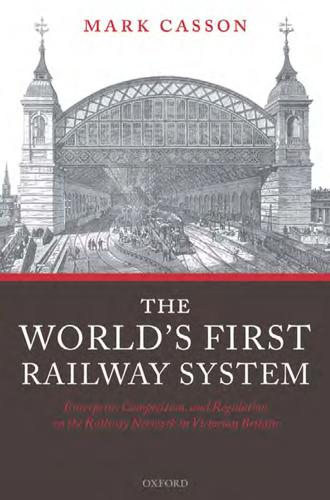
The World's First Railway System: Enterprise, Competition, and Regulation on the Railway Network in Victorian Britain
by
Mark Casson
Published 14 Jul 2009
(p. 3) The Railway Committee agreed with the Select Committee, though, that amalgamation could reinforce monopoly power. Established railway companies in a district could combine to erect a barrier to entry by pooling their resources to contest proposals to build additional lines. Experience suggested that rationalization following amalgamation could result in the closure of useful sections of line, as when York and North Midland Railway closed down a section of the Leeds and Selby Railway because it competed with its own (longer) line into Leeds. Erecting barriers to entry was seen to be a possible motive behind the proposed amalgamation of three railways serving Liverpool: the Grand Junction Railway (to Birmingham), the Liverpool and Manchester Railway, and the North Union Railway (to Wigan and Preston).
…
D I R E C T L I N E S A N D E XT EN D E D B R A N C H E S The builders of early trunk lines quickly realized that although they might claim a monopoly of a particular route, they were always vulnerable to competition from the subsequent construction of alternative routes. Parliament indicated at an Business Strategies and their EVects 293 early stage that companies might well be confronted by competition from new companies entering their region, and companies therefore sought to invest in ‘barriers to entry’ to deter these entrants. As noted earlier, an important strategy for deterring competition was to build the shortest and fastest route between the major towns at either end. There was a strong belief by railway promoters that if competition were to develop later then the company with the shortest and fastest route would capture most of the traYc.
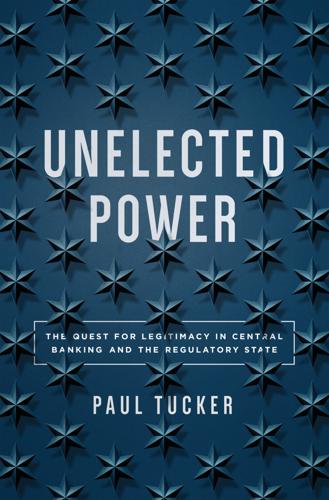
Unelected Power: The Quest for Legitimacy in Central Banking and the Regulatory State
by
Paul Tucker
Published 21 Apr 2018
By the 1970s Chicago economists were flipping this on its head.27 Their story was that politicians would “supply” regulatory regimes in response to a “demand” for regulation if they were “paid” enough. That demand might come from the public, who, for example, would desire lower utility prices and who would “pay” in a medium valued and demanded by politicians: votes. But there might also be demand for regulation from the leading firms in an industry, which would desire barriers to entry that entrenched their own position, and which could “pay” the politicians with, for example, campaign finance contributions. The legislator would balance those two sources of demand. Since, at least historically, members of the public face much greater problems in trying to coordinate a campaign than do incumbent firms in concentrated industries, it was predicted that business interests would often dominate the design of regulatory regimes.
…
Much of the academic literature takes it for granted, in fact, that CAs should be independent in the development of policy (as well as to ensure fair adjudication). Somewhat oddly, however, it does not explain why. A case can be made in terms of credible commitment. Where there is a public consensus around the economy being market based, relying on competition and, thus, low barriers to entry, a country might need to embed that consensus in a regime placed at arm’s length from elected politicians. Otherwise, elected ministers would be lobbied directly and via media campaigns whenever a takeover bid is launched or new entrants challenge a market’s structure. Sometimes, the public outcry at letting a takeover go through might be too much for ministers to take in the short run: not an inherent time consistency problem but the stark reality of electoral politics.
…
While for the time being leaving open the key policy decisions on how resilient the private part of the monetary system should be (chapter 21), this structural benchmark makes clear that constraints on and, thus, supervision of banking soundness are integral to an economy’s Money-Credit Constitution.28 Both are indeed conditions for the legitimacy of private banking itself, given the privilege of access to the lender of last resort and officially imposed barriers to entry. But, compared with twentieth-century doctrine, and given endemic regulatory arbitrage and legion financial-system interconnections, the focus would be on the economic substance of banking (maturity transformation, leverage, and credit intermediation) rather than solely on intermediaries having the legal form of “banks.”

The Driver in the Driverless Car: How Our Technology Choices Will Create the Future
by
Vivek Wadhwa
and
Alex Salkever
Published 2 Apr 2017
Hundreds of companies delivering by drone are starting up all over the world. Venture-capital firm Kleiner Perkins estimates that there were 4.3 million shipments of drones in 2015 and that the market is growing by 167 percent per year.2 Not since the automobile has a transportation technology spurred such enthusiastic entrepreneurial activity. The barrier to entry into the business of building drones is exceptionally low. Commodity kits compete with commercial models, and Arduino circuit boards and open-source software make it easy for motivated coders and hackers to tailor drones to exacting functions in arcane and lucrative fields. Just a decade after the military began using drones in earnest as remote-controlled killing machines, the same technology is available to everyone (but not to hunt down terrorists).
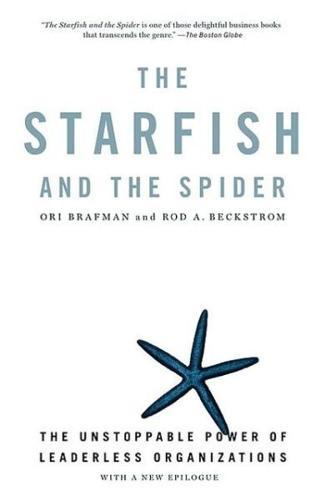
The Starfish and the Spider: The Unstoppable Power of Leaderless Organizations
by
Ori Brafman
and
Rod A. Beckstrom
Published 4 Oct 2006
They had to maintain all of the costly infrastructure associated with handling a call—everything from phone cables to operator facilities. Skype bore none of these costs. Skype capitalized on new technological advances to offer a previously monopolized privilege for free. This spells bad news for the traditional phone companies. It requires only a small amount of software to create a desktop system that works like Skype. The barrier to entry for becoming a long-distance provider, once huge and insurmountable, is quickly disappearing. Anyone with a few million dollars to invest can build a Skype-equivalent. Thus, although Skype may or may not thrive in the long run, it has opened a Pandora's box. How have the long-distance companies reacted?
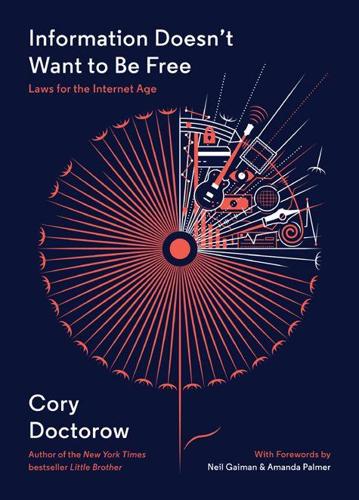
Information Doesn't Want to Be Free: Laws for the Internet Age
by
Cory Doctorow
,
Amanda Palmer
and
Neil Gaiman
Published 18 Nov 2014
It’s not always easy to keep physical stuff from being taken without payment—a cat burglar may be waiting to steal your painting out of your studio right now!—but it’s infinitely easier than keeping people from making digital copies and distributing them without your permission. You’re probably familiar with this business model. It’s an oldie, but a goodie. 2. YOU CAN SELL ADS Before the net, getting an advertiser was hard, but the high barrier to entry kept the prices charged to advertisers high. So a newspaper, if successful, could make a lot of money from the space it gave over to ads. Today, newspapers—and other traditional media—make a lot less that way. But that’s not because the process of finding advertisements to run against your content has gotten harder.
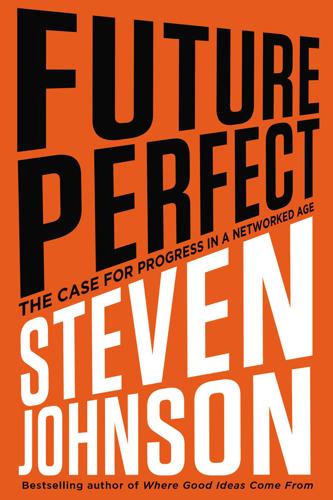
Future Perfect: The Case for Progress in a Networked Age
by
Steven Johnson
Published 14 Jul 2012
Can that strange, contradictory cocktail drive progress on its own? Perhaps—for the simple reason that it democratizes the control of information. When information is expensive and scarce, powerful or wealthy individuals or groups have a disproportionate impact on how that information circulates. But as it gets cheaper and more abundant, the barriers to entry are lowered. This is hardly a new observation, but everything that has happened over the last twenty years has confirmed the basic insight. That democratization has not always led to positive outcomes—think of those spam artists—but there is no contesting the tremendous, orders-of-magnitude increase in the number of people creating and sharing, thanks to the mass adoption of the Internet.

Robot, Take the Wheel: The Road to Autonomous Cars and the Lost Art of Driving
by
Jason Torchinsky
Published 6 May 2019
Driving a sports car properly set up on a real track is the best way to experience these sensations, but most people don’t have the time or resources to avail themselves of track driving, with its expensive equipment and attitudes and demanding requirements. But what’s great about the widespread and ubiquitous nature of cars and driving is that pretty much anyone in any car can find a time and place to enjoy the physical sensations of driving. Plus, there are a lot of low-barrier-to-entry amateur performance/pleasure driving opportunities in America, from run-what-you-brung drag strip open nights and off-road courses to entering a car you’re about to scrap in a local demolition derby because why the hell not. Humans are pretty capable of taking things we have to do out of necessity and making highly pleasurable activities out of them.

The Future of the Internet: And How to Stop It
by
Jonathan Zittrain
Published 27 May 2009
This observation has led others to conclude that in order for large organizations to become more innovative, they must adopt a more “ambidextrous organizational form” to provide a buffer between exploitation and exploration.28 This advice might be reflected in choices made by companies like Google, whose engineers are encouraged to spend one day a week on a project of their own choosing—with Google able to exploit whatever they come up with.29 But large firms struggling to learn lessons from academics about becoming more creative need not be the only sources of innovation. In fact, the competitive market that appears to be the way to spur innovation—a market in which barriers to entry are low enough for smaller firms to innovate disruptively where larger firms are reluctant to tread—can be made much more competitive, since generative systems reduce barriers to entry and allow contributions from those who do not even intend to compete. THE GENERATIVE DIFFERENCE Generative systems allow users at large to try their hands at implementing and distributing new uses, and to fill a crucial gap that is created when innovation is undertaken only in a profit-making model, much less one in which large firms dominate.
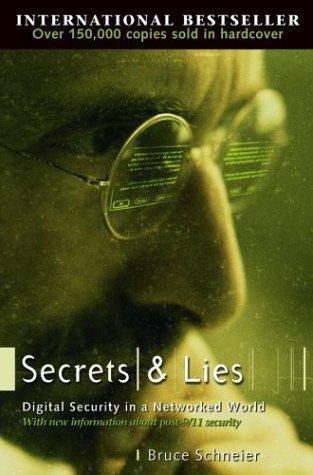
Secrets and Lies: Digital Security in a Networked World
by
Bruce Schneier
Published 1 Jan 2000
Brand Theft Virtual identity is vital to businesses as well as individuals. It takes time and money to develop a corporate identity. This identity is more than logos and slogans and catchy jingles. It’s product, bricks-and-mortar buildings, customer service representatives—things to touch, people to talk to. Brand equals reputation. On the Internet, the barrier to entry is minimal. Anyone can have a Web site, from Citibank to Fred’s Safe-Money Mattress. And everyone does. How do users know which sites are worth visiting, worth book- marking, worth establishing a relationship with? Thousands of companies sell PCs on the Web. Who is real, and who is fly-by-night?
…
He practiced on slot machines at home, and learned how to open a machine up on the casino floor—without setting off the alarms—and swap firmware chips. Blockers stood between him and the cameras. Then he would leave, and an accomplice would play the rigged machines for the jackpot.) The morals of this section are simple. One, tamper resistance is largely a myth, but it does provide a barrier to entry. Two, tamper resistance should be augmented by other countermeasures. And three, any system where the device and the secrets within the device are under the control of different people has a fundamental security flaw. It’s possible to design a secure system that includes this flaw, but it must be recognized as a flaw.

The Rational Optimist: How Prosperity Evolves
by
Matt Ridley
Published 17 May 2010
I hold no brief for large corporations, whose inefficiencies, complacencies and anti-competitive tendencies often drive me as crazy as the next man. Like Milton Friedman, I notice that ‘business corporations in general are not defenders of free enterprise. On the contrary, they are one of the chief sources of danger.’ They are addicted to corporate welfare, they love regulations that erect barriers to entry to their small competitors, they yearn for monopoly and they grow flabby and inefficient with age. But I detect that the criticism is increasingly out of date, and that large corporations are ever more vulnerable to their nimbler competitors in the modern world – or would be if they were not granted special privileges by the state.
…
Thanks to the internet, each is giving according to his ability to each according to his needs, to a degree that never happened in Marxism. This catallaxy will not go smoothly, or without resistance. Natural and unnatural disasters will still happen. Governments will bail out big corporations and big bureaucracies, hand them special favours such as subsidies or carbon rations and regulate them in such a way as to create barriers to entry, slowing down creative destruction. Chiefs, priests, thieves, financiers, consultants and others will appear on all sides, feeding off the surplus generated by exchange and specialisation, diverting the life-blood of the catallaxy into their own reactionary lives. It happened in the past. Empires bought stability at the price of creating a parasitic court; monotheistic religions bought social cohesion at the price of a parasitic priestly class; nationalism bought power at the expense of a parasitic military; socialism bought equality at the price of a parasitic bureaucracy; capitalism bought efficiency at the price of parasitic financiers.
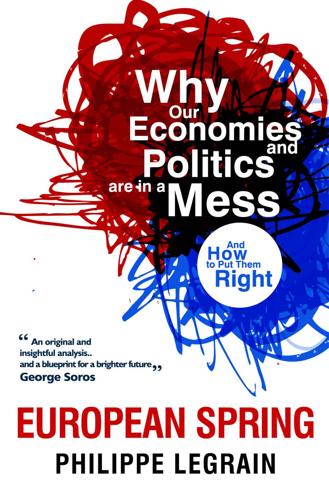
European Spring: Why Our Economies and Politics Are in a Mess - and How to Put Them Right
by
Philippe Legrain
Published 22 Apr 2014
However, the services directive left governments too much discretion to decide what constitutes a barrier to establishment, or a barrier to the provision of services across borders. The reduction in barriers to entry has not been as expected. 350 European Commission, "The economic impact of the services directive: A first assessment following implementation", June 2012 351 John Springford, "How to build European services markets", Centre for European Reform, September 2012 http://www.cer.org.uk/sites/default/files/publications/attachments/pdf/2012/js_markets_sept12-6206.pdf 352 Sometimes the retail sector is competitive; often it is not. Belgium is particularly bad. Supermarkets are shoddy and overpriced. One big barrier to entry is the availability of land: an intensely local issue that prevents an outsider like Britain’s Tesco from injecting much-needed competition. 353 While the Commission has produced two Single Market Acts in recent years, these mostly collate existing, often minor initiatives.

How Asia Works
by
Joe Studwell
Published 1 Jul 2013
However, the impetus to development was greater still because of the means by which maximisation of agricultural output was achieved. By giving rural families equal amounts of land to farm, governments created conditions of almost perfect, laboratory-like competition. This was the kind of competition involving large numbers, no barriers to entry and freely available information about which mathematical economists fantasise (and at which many other people scoff because it occurs so rarely). But in this case conditions akin to those assumed by textbook economics were indeed created. Every family had its bit of capital – its land – along with the ability to access technical support, credit and markets, and so competed on a remarkably equal basis with its neighbour.
…
Out of the country’s history of socialist industrial planning, and Zhu Rongji’s 1990s rationalisation programme, there has developed a roster of substantial mid-stream businesses that are becoming increasingly globally competitive. These public firms are protected from undue market fragmentation by high capital barriers to entry, yet there are enough of them in each industrial segment to make for fierce competition.29 They indicate that export discipline, and domestic competition combined with the steady culling of losers, are more important than ownership in determining industrial development success. That said, sometimes the key operating units are state group subsidiaries in which managers and other private shareholders hold substantial equity positions.

Convergence Culture: Where Old and New Media Collide
by
Henry Jenkins
Published 31 Jul 2006
Trippi describes television as an inherently passive (and pacifying) technology: " W h i l e T V was a m e d i u m that rendered us d u m b , disengaged, and disconnected, the Internet makes us smarter, more involved, and better i n f o r m e d . " A n y o n e w h o has read this far i n the book knows enough to question both sets of claims. 5 6 If, circa 2004, we ask ourselves whether the revolution w i l l be digitized, our answers look very different. The Web's l o w barriers to entry expand access to innovative or even revolutionary ideas at least among the growing segment of the population that has access to a computer. Those silenced by corporate media have been among the first to transform their computer into a printing press. This opportunity has benefited third parties, revolutionaries, reactionaries, and racists alike.
…
Dery's essay records an important juncture in the history of do-it-yourself media as activists learn to use new media to assert a counterperspective on mass media. 11 Skenovano pro studijni ucely Photoshop for Democracy Perhaps, however, the concept of culture jamming has outlived its usefulness. The o l d rhetoric of opposition and co-optation assumed a w o r l d where consumers had little direct power to shape media content and faced enormous barriers to entry into the marketplace, whereas the new digital environment expands the scope and reach of consumer activities. Pierre L e v y describes a w o r l d where grassroots communication is not a momentary disruption of the corporate signal, but the routine way the new system operates: " U n t i l n o w we have only reappropriated speech i n the service of revolutionary movements, crises, cures, exceptional acts of creation.

I'm Feeling Lucky: The Confessions of Google Employee Number 59
by
Douglas Edwards
Published 11 Jul 2011
I began regurgitating everything I could remember onto the paper in front of me: the five P's (or was it six?), the four M's, barriers to entry, differentiation on quality or price. By the time Sergey came back, I had enough to talk for ten minutes and was confident I could fill any holes with the three B's (Buckets of Baffling Bullshit). I went to the whiteboard and furiously drew circles and squares and unleashed arrows like Legolas. I was nervous, but not very. Sergey bounced on a ball and asked questions that required me to make things up on the spot. "What's the most effective barrier to entry?" "What's more important: product differentiation or promotion?"

The Fissured Workplace
by
David Weil
Published 17 Feb 2014
In general, as one goes to lower levels of apparel production (that is, from design and cutting by manufacturers or jobbers at the top of Figure 9.3, to sewing by contractors or subcontractors at the bottom), the level of competition intensifies and the profit margin per garment diminishes. Sewing contractors—often themselves former sewers/cutters and recent immigrants to the United States—compete in a market with large numbers of small companies (employing on average twenty-five to thirty-five workers each in the women’s industry), low barriers to entry, and limited opportunities for product differentiation. This creates conditions for intense price-based competition. Because labor costs represent the vast majority of total costs for a sewing contractor, there is great pressure to strike deals with jobbers and manufacturers that are not economically sustainable if the contractor actually complies with wage and hour laws.22 As a result, noncompliance is predominantly a problem among the large number of contractors and subcontractors that assemble apparel products.
…
That means farmers have little to compete on in terms of product characteristics, requiring them, in true Economics 101 fashion, to compete on price. Falling transportation costs and trade barriers, improved technologies for transit and preservatives, and a large number of nations anxious to sell in the U.S. market mean that the barriers to entry have fallen (as the geographic boundaries of the potential suppliers have expanded). Add these factors together and you have the basis for high levels of competition among cucumber growers. If you are furiously competing on the basis of price, how do you cut costs? In agriculture, the major input costs are seed, fertilizer, pesticides, water, capital costs associated with equipment, and labor.

Coders: The Making of a New Tribe and the Remaking of the World
by
Clive Thompson
Published 26 Mar 2019
The neural net has painstakingly adjusted the weights of neurons in such subtle ways that its logic quickly becomes inscrutable to humans. It is “an ocean of math,” as my Wired colleague Jason Tanz beautifully put it. This can have unsettling implications for the use of neural nets in everyday life (more on this later); we’re building AI systems the workings of which we can’t fully understand? But it’s another barrier to entry; many coders are suspicious of this sort of engineering. Domingos suspects this is why Google beat Microsoft when it came to making a search engine. Microsoft loved making precise, logical software: You hit “control+I,” and Microsoft Word italicizes your text, every single time. But Google was about sorting the internet.
…
If you wanted to design a new mobile phone, you’d need to have some seriously elite tools at your disposal: a microchip-fabrication plant, a precision soldering station, maybe a 3-D printer to prototype the case. But if you want to write software, all you need is a basic laptop. Many “code editors,” the tools used to write code itself, are free. These relatively low barriers to entry are partly why, according to surveys by Stack Overflow, 69 percent of coders are “at least partially self-taught,” 56 percent never received a computer science degree, and 13 percent said they were “entirely” self-taught. It is an astonishing number for a well-paid technical field. Quincy Larson is someone who learned this latter way.

Basic Economics
by
Thomas Sowell
Published 1 Jan 2000
In the absence of government prohibition against entry into particular industries, various clever schemes can be used privately to try to erect barriers to keep out competitors and protect monopoly profits. But other businesses have incentives to be just as clever at circumventing these barriers. Accordingly, the effectiveness of barriers to entry has varied from industry to industry and from one era to another in the same industry. The computer industry was once difficult to enter, back in the days when a computer was a huge machine taking up thousands of cubic feet of space, and the cost of manufacturing such machines was likewise huge.
…
This was even more common in past centuries, when kings often conferred monopoly rights on particular individuals or enterprises to engage in the production of salt or wine or many other commodities, sometimes as a matter of generosity to royal favorites and often because the right to a monopoly was purchased for cash. The purpose or the net effect of barriers to entry has been a persistence of a level of earnings higher than that which would exist under free market competition and higher than necessary to attract the resources required. This could legitimately be considered “exploitation” of the consumers, since it is a payment over and beyond what is necessary to cause people to supply the product or service in question.
…
In the era before modern transportation was widespread, local labor markets might be isolated and a given employer might be the only employer available for many local people in particular occupations. But the spread of low-cost transportation has made such situations much rarer than in the past. Once we see that barriers to entry or exit—the latter absolute in the case of slaves or expensive in the case of exit for doctors or for people living in local subsidized housing, for example—are key, then the term exploitation often legitimately applies to people very different from those to whom this term is usually applied.
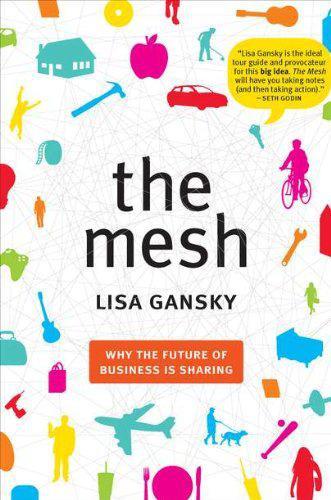
The Mesh: Why the Future of Business Is Sharing
by
Lisa Gansky
Published 14 Oct 2010
Michael Porter at Harvard studies industry clusters, such as shoes in Milan, publishing in New York, film in Mumbai, and technology in Silicon Valley. In the Harvard Business Review he writes, “Clusters are important, because they allow companies to be more productive and innovative than they could be in isolation. [Clusters] reduce the barriers to entry for new business creation relative to other locations.” The proximity of businesses in an urban cluster speeds up sharing of expertise and labor pools, makes opportunities easier to spot, and promotes cooperation around common market goals. The Mesh, which is built on sharing information, markets, and social networks, is particularly well poised to take advantage of these clusters.

Economics Rules: The Rights and Wrongs of the Dismal Science
by
Dani Rodrik
Published 12 Oct 2015
But these are evidently the wrong models to use. There is very little in China’s or South Korea’s strategy that cannot be explained by models that take on board some of the major second-best challenges these economies faced.11 When economists confront the way markets really work—or fail to work—in low-income settings with few firms, high barriers to entry, poor information, and malfunctioning institutions, these alternative models prove indispensable. Where economists pushed the logic of the Washington Consensus the furthest, with probably the greatest damage, was in financial globalization. Williamson’s original list did not include freeing up cross-border capital flow; he was a skeptic about the benefits of financial globalization.
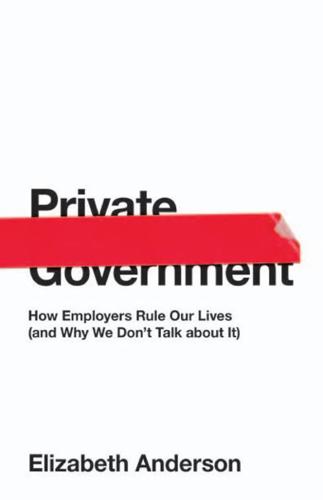
Private Government: How Employers Rule Our Lives (And Why We Don't Talk About It)
by
Elizabeth S. Anderson
Published 22 May 2017
It was only necessary to raise the large concentrations of capital used by joint-stock corporations for four types of “routine” business that required no innovation or entrepreneurial vision: banking, insurance, canals, and water utilities. With or without special state protections, they would tend to fail.56 In a free market, with barriers to entry eliminated, firms managed by their owners would out-compete the directors of joint-stock corporations because the former, risking their own money, would invest more energy, attention, and skill in their businesses. With many entrants into the open market, rates of profit would fall. When profits are low, few great fortunes can be accumulated, so nearly all capital owners will have to work for a living.57 No wonder Smith’s pin factory, his model of an enterprise with an efficient division of labor, employed only ten workers.58 The Wealth of Nations was published in 1776.
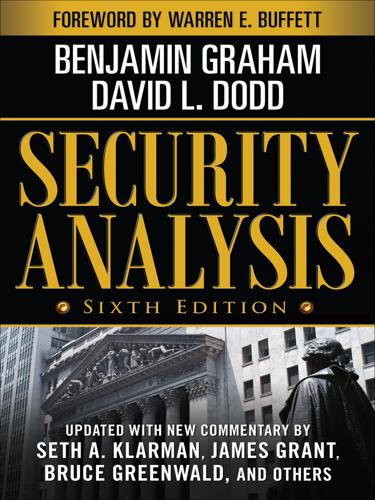
Security Analysis
by
Benjamin Graham
and
David Dodd
Published 1 Jan 1962
That idea has certainly been eclipsed by the creation of subscription Web sites that accept credit cards. Today’s most profitable businesses are those in which you sell a fixed amount of work product—say, a piece of software or a hit recording—millions and millions of times at very low marginal cost. Good businesses are generally considered those with strong barriers to entry, limited capital requirements, reliable customers, low risk of technological obsolescence, abundant growth possibilities, and thus significant and growing free cash flow. Businesses are also subject to changes in the technological and competitive landscape. Because of the Internet, the competitive moat surrounding the newspaper business—which was considered a very good business only a decade ago—has eroded faster than almost anyone anticipated.
…
Graham and Dodd were aware of this although they were not cognizant of the range of interventions available to activist investors today. A second possibility is that earnings power may exceed the asset value of a company. To maintain those superior profits, there needs to be some economic factors to protect the firm from competition. Today, these factors are referred to as “moats,” franchises, barriers to entry, or competitive advantages. What they look like and how they can be assessed is an essential part of modern income statement analysis. However, even in this case where asset values are least relevant, they do provide useful information about the value a firm will retain if the factors erode in the future.
…
Not worth as much as the company said because they included neither significant patents nor developed process technologies. Even more important, WorldCom’s business was characterized by high rates of customer churn and vigorous price competition for its telecommunications and data transmission services. Nor did there appear to be large barriers to entry that might have supported a market value significantly in excess of reproduction value, or what it would cost to reproduce the network. WorldCom’s markets were characterized by many new entrants (including those companies acquired by WorldCom) and vigorous expansion by powerful existing competitors like AT&T.
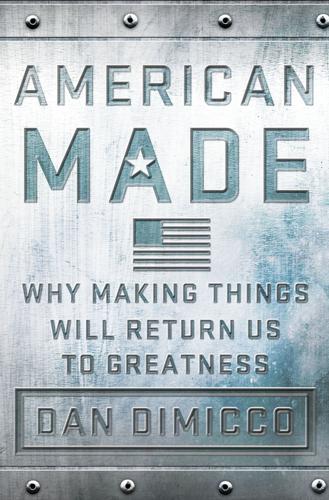
American Made: Why Making Things Will Return Us to Greatness
by
Dan Dimicco
Published 3 Mar 2015
They’re producing nearly 820 million tons of steel per year, and they’re losing money. That’s how out of control it is. Yet China continues to overbuild because Beijing wants to maintain the jobs that go into constructing the steel plants, and eventually maintain the smaller number of jobs running these highly automated facilities. Yet we can’t sell steel to China. The barriers to entry are too high. Market forces aren’t allowed to work. We can’t build a steel mill in China, although China can certainly build steel mills here. If you don’t believe me, ask Lakshmi Mittal, the chairman, CEO, and principal owner of ArcelorMittal, the world’s biggest steel company. He wanted to buy a controlling stake in Hunan Valin Steel, one of the major Chinese steel manufacturers.

Without Their Permission: How the 21st Century Will Be Made, Not Managed
by
Alexis Ohanian
Published 30 Sep 2013
Just a few years later, Amazon launched a brilliant cloud computing service that did away with our need to ever see our servers—all it takes is a credit card, and your site can be up and running for a pittance (a price that heads down every month). Hosting a website is now essentially a utility. When you’re not dealing with inventory, or a retail location, the barriers to entry plummet, and businesses can start from dorm rooms and coffee-shop tables. As long as you can cover rent and keep food in your belly, you can keep your business going—and growing—long enough to get that next round of funding. This funding may come from friends and family, or it may come from wealthy individuals known as angel investors.
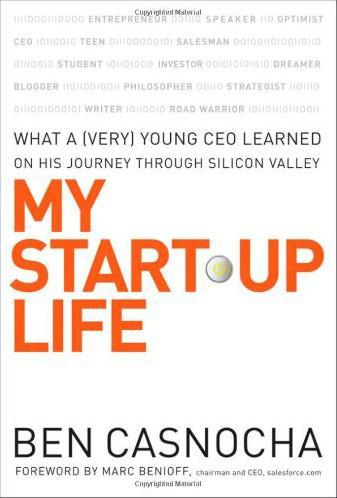
My Start-Up Life: What A
by
Ben Casnocha
and
Marc Benioff
Published 7 May 2007
Yellow pads can only last for so long,” I told Dave Richmond during the interview process in 2003. It was now 2005 and that day had not yet come. Most cities were still making do with poorer alternatives. For the cities who were purchasing software like ours, there was still enough employee skepticism to make implementations lengthy and costly. There were also few barriers to entry in the market, allowing several new boutique firms to nab clients that should have been Comcate’s. When the product is a nice-to-have, the sales don’t go fast enough. Period. We conducted a variety of “tests” to see if we could bust through these challenges and shorten the sales cycle: we hired a retired city councilperson in West Virginia to try to sell the product as a reseller, we formed partnerships with other e-government providers, 154 MY START-UP LIFE we attended different kinds of trade shows, and the like.

Interactive Data Visualization for the Web
by
Scott Murray
Published 15 Mar 2013
D3 itself is not so complicated, but it operates in the domain of the Web, and the Web is complicated. Using D3 comfortably requires some prior knowledge of the web technologies with which it interacts, such as HTML, CSS, JavaScript, and SVG. Many people (myself included) are self-taught when it comes to web skills. This is great, because the barrier to entry is so low, but problematic because it means we probably didn’t learn each of these technologies from the ground up—more often, we just hack something together until it seems to work, and call it a day. Yet successful use of D3 requires understanding some of these technologies in a fundamental way.

The Purpose Economy: How Your Desire for Impact, Personal Growth and Community Is Changing the World
by
Aaron Hurst
Published 31 Aug 2013
Though she knew very little about farming or winemaking, Kristine decided to buy a vineyard. Unlike Warren Brown and his connection to the craft of baking, Kristine’s dream was not to make wine, but rather to create a business that would bring her family together and build a community. The wine business had a relatively low barrier to entry and strong community of mentorship in winemaking—you looked to your neighbors for help. Her hope was that it would be a way for to finally bring her family together in one place, all working on the vineyard. It could be a business that was focused on community and relationships. Remarkably, her field of dreams worked.

Marx at the Arcade: Consoles, Controllers, and Class Struggle
by
Jamie Woodcock
Published 17 Jun 2019
The streaming platform Twitch provides a way to watch experienced and successful players, something that has become a resource for aspiring players. The main lesson from my experience is that it takes substantial effort to learn how to play. In an intensified process of competition, Caillois’s agôn is clearly at work here.3 This leads to the formation of expert communities with a high barrier to entry. It can be a rewarding experience to compete and win with a team that works together. However, the League of Legends community does have incredibly toxic elements, and the playing experience is frequently damaged by players who throw the game because of some minor infraction by a teammate, or who use sexist or racist slurs, pouring bile into the back-and-forth.

Dirty Secrets How Tax Havens Destroy the Economy
by
Richard Murphy
Published 14 Sep 2017
That opacity comes in a number of forms. For example, in many cases we do not know who owns companies. As a result, we cannot tell how many players there are in a market: a number of apparent competitors could, quite feasibly, be under common control, and no one would know. Indeed, they may be acting together to erect barriers to entry for newcomers: behind tax haven secrecy, markets can be rigged. Secondly, we cannot see the accounts of tax haven companies. This stops us knowing whether one product offered in the market is the same as another: an item bought from one company may not be the equivalent of a superficially similar item bought from another company whose accounts are on the public record.

Meet the Frugalwoods: Achieving Financial Independence Through Simple Living
by
Elizabeth Willard Thames
Published 6 Mar 2018
Sleds specially designed to tow kids are four times the price and not as durable for handling rough terrain. Nate and I strap on snowshoes and Stella snoozes while we pull her through our snow-covered woods. We can hike any day of the year, right outside our front door, and most days, we do. There’s no longer a barrier to entry and we don’t have to drive for hours or plan ahead or take the day off work. The woods are simply there for us. It’s true that Nate and I don’t buy Christmas, birthday, or anniversary gifts for each other. But it’s equally true that we don’t need to. We’ve smoothed out the happiness curve of our lives.

Who Is Government?: The Untold Story of Public Service
by
Michael Lewis
Published 18 Mar 2025
“Well, the judge took a look at it and was like, ‘No, no, we’re not approving this,’ ” Luke explains, “So he had them go back to make some adjustments to it. They made some about how some of the money was awarded. And he didn’t approve that either, which was completely shocking.” Boulware “argued that there have been predatory practices. He has argued that there have been barriers to entry. It is in no way ambiguous. I can’t read his mind, but I can read his work. And it seems to suggest he thinks it’s an illegal monopoly.” After our interview, a new settlement agreement came through of $375 million, but Boulware still has to approve it. The UFC hopes he does because if the case goes to trial in February and the UFC loses the case, according to class action law, the damages could be tripled

Beautiful Architecture: Leading Thinkers Reveal the Hidden Beauty in Software Design
by
Diomidis Spinellis
and
Georgios Gousios
Published 30 Dec 2008
Packages not included with Emacs probably just break—creating an incentive for developers to get their packages included and join the cabal. Creeping Featurism Emacs’s creeping featurism is a direct consequence of its architecture. Here’s the life cycle of a typical feature: When you first notice a feature that would be nice to have, it’s easy to try implementing it; Emacs’s lack of bureaucracy makes the barrier to entry extremely low. Emacs provides a pleasant, interactive environment for Lisp development. The simple buffer Model and automatic display update let you focus on the task at hand. Once you have a command definition that works, you can put it in your .emacs file to make it available permanently.
…
Although a web browser is not a text editor, there are some striking resemblances between Emacs’s architecture and that of a browser: Although Emacs Lisp and JavaScript don’t resemble each other much at the syntactic level, their semantics have many essential traits in common: like Emacs Lisp, JavaScript is interpreted, highly dynamic, and safe. Both are garbage-collected languages. As with Emacs Lisp, it’s very practical to begin with a small fragment of JavaScript on a page to improve some minor aspect of its behavior, and then grow that incrementally into something more sophisticated. The barrier to entry is low, but the language scales up to larger problems. As in Emacs, display management is automatic. JavaScript code simply edits the tree of nodes representing the web page, and the browser takes care of bringing the display up to date as needed. As in Emacs, the process of dispatching input events to JavaScript code is managed by the browser.

There Is Nothing for You Here: Finding Opportunity in the Twenty-First Century
by
Fiona Hill
Published 4 Oct 2021
With more graduates with bachelor’s degrees, a master’s plus other experience, such as internships and language or other special skills, became the norm for entry-level research assistant positions at places like the Brookings Institution, for instance. But undertaking additional years of study for a master’s degree comes with a high opportunity cost. When students stay in college and out of the workforce longer, they accrue more debt and lengthen the repayment schedule. The prospect of accumulating debt could easily become another barrier to entry into elite universities as well as every other college program for aspiring low-income students. Indeed, a series of reports on higher education in 2020 revealed that student debt in the United States had reached $1.6 trillion in total—more than tripling since 2006—as increasing numbers of students pursued master’s degrees and other qualifications.
…
It ought to be normal for every group in the United States to see people like themselves at college or in any profession. Bonnie also stressed that it was hard work being poor and that low-income families had limited bandwidth. The program was free, and application was made simple, because she and her colleagues at Science Club for Girls had learned that filling out paperwork and going to interviews was a barrier to entry. Kids often had part-time jobs or long commutes to school and limited access to Wi-Fi and a computer at home. The group also needed to advertise the program widely throughout the school districts and hold its sessions at convenient locations, as otherwise girls would not know that opportunities like this were there in the first place.

What If We Get It Right?: Visions of Climate Futures
by
Ayana Elizabeth Johnson
Published 17 Sep 2024
Likewise with the spread of synthetic biology, it will be possible for smaller and less-well-resourced and less-well-trained groups of individuals to engineer pandemic pathogens, which are way more transmissible and way more lethal than we’ve seen before with COVID or anything else. And so because these tools proliferate, they lower the barrier to entry, which is great because— Ayana: Which is great?! Mustafa: Well, lowering the barrier to entry is good because you get more people involved in the innovation process and more people creating and producing value. Ayana: I don’t know that more people with the capacity to cause pandemics seems great to me. Mustafa: Well, that’s the challenge, right?
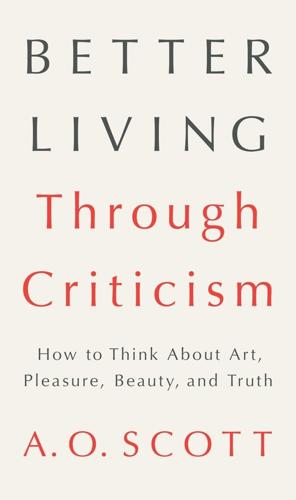
Better Living Through Criticism: How to Think About Art, Pleasure, Beauty, and Truth
by
A. O. Scott
Published 9 Feb 2016
A miracle cure for aesthetic headaches has been found. You can do what you want. You can take it or leave it. But the leveling of old taste hierarchies does not resolve the problem of cultural authority and does not necessarily make us any freer. The consumer economy is profoundly unequal, raising barriers to entry on the basis of income and access rather than pedigree. And the story of human progress, of opening minds and increasingly cosmopolitan pleasures, is also a tale of loss, of standardization and homogenization. The modern world, accelerating toward the horizon of globalization—toward the media-saturated, wired-together village prophesied by Marshall McLuhan and others in the 1960s—reverses the biblical story of Babel.

What's Yours Is Mine: Against the Sharing Economy
by
Tom Slee
Published 18 Nov 2015
Not to mention the fact that opening up these systems would allow people to “game” our algorithms to manipulate search and ads quality rankings, reducing our quality for everyone. Rosenberg is understating the truth here in two ways. First, Google’s continued dominance of the search audience argues against his contention of a highly competitive market; there are clearly major barriers to entry in the world of search. Second, in addition to the search and advertising products, Google has kept to itself the custom software it uses to run its massive data centers, including its home-built Google File System and Google Big Table software, and has also been closing off large parts of its Android smartphone operating system.

The Wide Lens: What Successful Innovators See That Others Miss
by
Ron Adner
Published 1 Mar 2012
But by 1999, leading players across the globe—Nokia and Ericsson in Europe, NEC and Samsung in Asia, and Motorola in the United States—were all bumping up against an unpleasant reality. Customers were beginning to take for granted the incredible technology that allowed for mobile communications, and new rivals were rushing into the space on all sides as barriers to entry fell. In Western Europe the problem was particularly acute. Already almost 70 percent of adults had a mobile phone, which left little room for growth in new customers. How could consumers be convinced not just to trade in their perfectly functional old phones for an updated version, but to be willing to spend significantly more on their next handset?
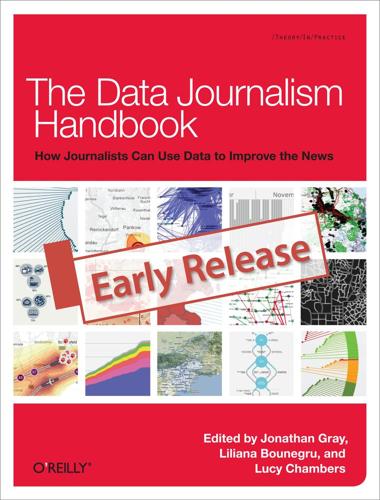
The Data Journalism Handbook
by
Jonathan Gray
,
Lucy Chambers
and
Liliana Bounegru
Published 9 May 2012
Also fueling interest is the bumper crop of (often free) new tools and technologies designed to help even the most technically challenged journalist turn data into a piece of visual storytelling. Tools like Google Fusion Tables, Many Eyes, Tableau, Dipity, and others make it easier than ever to create maps, charts, graphs, or even full-blown data applications that heretofore were the domain of specialists. But with the barrier to entry now barely a speed bump, the question facing journalists is now less about whether you can turn your dataset into a visualization, but whether you should. Bad data visualization is worse in many respects than none at all. — Aron Pilhofer, New York Times Using Motion Graphics With a tight script, well-timed animations, and clear explanations, motion graphics can serve to bring complex numbers or ideas to life, guiding your audience through the story.
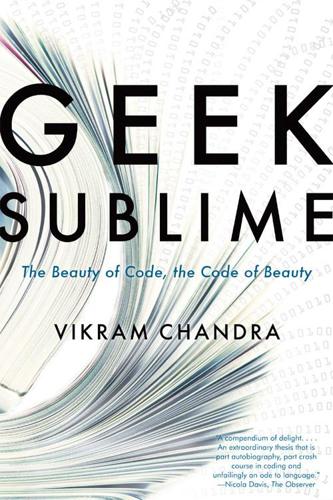
Geek Sublime: The Beauty of Code, the Code of Beauty
by
Vikram Chandra
Published 7 Nov 2013
The severe limitations of memory and processing power in the machines of the day demanded Mel the Real Programmer’s wizardry; John Backus described programming in the fifties as “a black art, a private arcane matter … [in which] the success of a program depended primarily on the programmer’s private techniques and inventions.”23 The aptitude tests used by the industry to identify potential Mels consisted primarily of mathematical and logical puzzles, which often required a formal education in these disciplines; even Cosmopolitan magazine, despite its breezy confidence about the absence of sexism in computing, recognized this as a barrier to entry for its readers. An industry analyst argued that the “Darwinian selection” of personnel profiling resulted in an influx of programmers who were “often egocentric, slightly neurotic, and [bordering] upon a limited schizophrenia. The incidence of beards, sandals, and other symptoms of rugged individualism or nonconformity are notably greater among this demographic group.”24 The Real Programmers that the industry found through these aptitude tests were weird male geeks wielding keyboards.
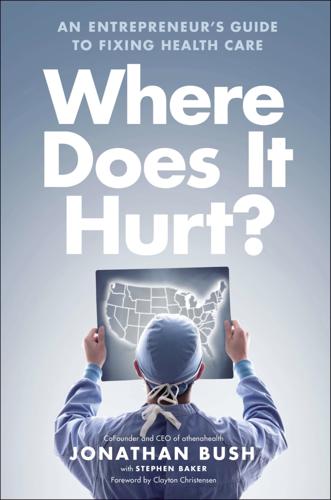
Where Does It Hurt?: An Entrepreneur's Guide to Fixing Health Care
by
Jonathan Bush
and
Stephen Baker
Published 14 May 2014
All we asked for in return was a share of the collections we brought in. In their eyes, we replaced nothing with something that worked. In this sense, athenaNet was like the transistor radio. It was primitive, but accessible. Customers didn’t have to buy anything. They just paid for subscriptions, and if they didn’t like it, they stopped paying. This was a low barrier to entry. Most important, the service could (and did) evolve. And it’s not just the service that evolves. An entire industry does. If you arm the small-fry and the newcomers with affordable tools, the technology evolves faster than people ask it to, until eventually they can use it to compete with the giants, and even topple them.

Effective Programming: More Than Writing Code
by
Jeff Atwood
Published 3 Jul 2012
Either maximize the cheese (make your application compelling), or minimize the shock (make your application easy to use): We may think our applications are compelling, but I seriously doubt they look that compelling to users. Unless you are providing users free mp3s, or access to pornography, it’s highly unlikely you will ever have enough cheese to overcome even the mildest of electric shocks. The only variable you can really control is your application’s usability. The barrier to entry has to be absurdly low to even get people to look at your software — much less use it. This is something that Joel talks about, too: But there’s a scary element of truth to it — scary to UI professionals, at least: an application that does something really great that people really want to do can be pathetically unusable, and it will still be a hit.
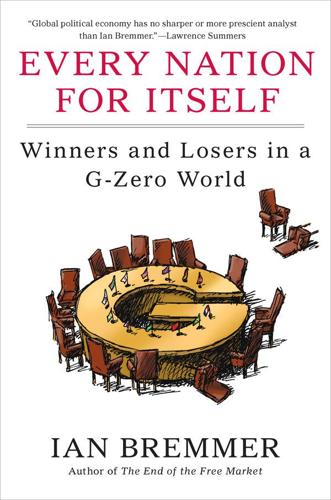
Every Nation for Itself: Winners and Losers in a G-Zero World
by
Ian Bremmer
Published 30 Apr 2012
Others made it all the way to Paris, and when French authorities moved to deport them, they occupied an abandoned building and began calling themselves the Lampedusa Tunisian Collective.13 Far-right European political parties have fanned fears that a flood of refugees will overwhelm already cash-strapped countries. In response, the European Union began considering measures to restore border controls under “exceptional circumstances.” Today, a once-expanding European Union is creating new barriers to entry. Far from the exception, such fights are likely to keep Europe turned inward for the next several years. Nor has there ever been much momentum toward a true common European defense policy that might give the continent greater international influence on security issues. Germany has extremely limited ability to project power abroad, Britain refuses to join, and few European countries can afford to sharply increase defense spending.

Swimming With Sharks: My Journey into the World of the Bankers
by
Joris Luyendijk
Published 14 Sep 2015
Bankers at a division that has run up big losses for the bank become ‘pariahs’, he said. I brought up the huge bonuses and exorbitant pay. In a free market, competition on price should drive down wages because the bank paying out the least in ‘compensation’ can charge the lowest prices. That is how the free market works, right? He conceded that in finance today there are high ‘barriers to entry’; it has become very difficult to start a new bank, if only because due to all the rules you need an immense army of risk and compliance officers. ‘Frankly,’ he said about all the new rules that have come in since 2008, they are ‘very expensive to comply with and 90 per cent of them are utterly useless’.
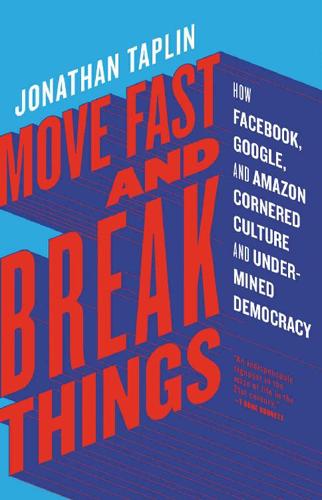
Move Fast and Break Things: How Facebook, Google, and Amazon Cornered Culture and Undermined Democracy
by
Jonathan Taplin
Published 17 Apr 2017
The supreme irony is that government regulators are so clueless about the effects of monopoly that they brought an antitrust case against Apple in 2012 when Amazon had about 60 percent of the ebook market and Apple was a relatively minor player. But beyond books, Amazon captures fifty-one cents of every dollar Americans spend in online commerce. It wasn’t supposed to be this way. The Web’s supposed low barriers to entry should have allowed a very competitive landscape, but it never happened. In search we have a monopolist in Google. In smartphone operating systems we have a duopoly in Apple and Google. And we soon might have a duopoly in home broadband service between Comcast and Time Warner (now called Spectrum).

The End of Traffic and the Future of Transport: Second Edition
by
David Levinson
and
Kevin Krizek
Published 17 Aug 2015
One concern is that maybe the amount of resources to do the work is limited, so we can't physically get more infrastructure built. If there were a limited number of contractors, and they were all fully employed, more money would simply mean higher prices and a reshuffling of priorities not new building. There are steep barriers to entry. It is difficult to start a road construction company and get contracts from the regional provider. Assuming firms are fully employed now, all they would do is demand higher rates, defer something else, to do the new thing. Contractors claim they are not fully deployed, and certainly could add some employees and acquire additional materials.
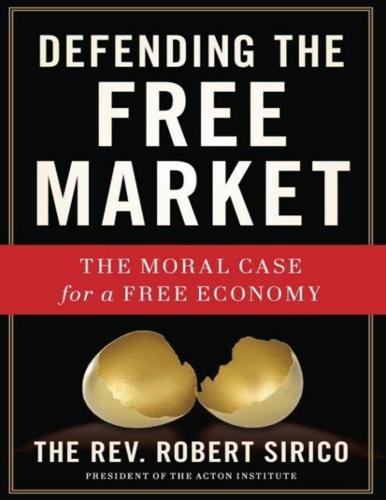
Defending the Free Market: The Moral Case for a Free Economy
by
Robert A. Sirico
Published 20 May 2012
And with the government being the largest (and growing) source of health care payments, there is also little or no incentive on the part of health care professionals to make pricing rational, to cut costs, or to improve quality. All of this is on top of the competition-reducing regulations that act as barriers to entry for health care professionals. The American Medical Association (really a guild) helps limit the numbers of trained and licensed doctors; the FDA enforces draconian controls on the development of new drugs; and a plethora of laws forbid interstate insurance competition and require policyholders to pay for treatments that they never intend to use (and, in some cases, have moral objections to).
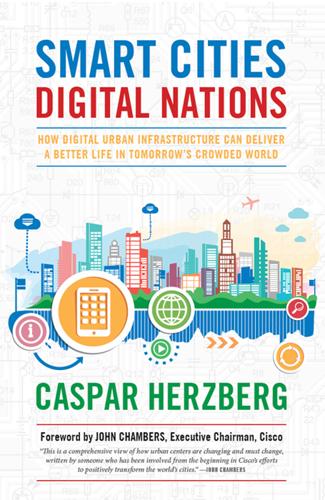
Smart Cities, Digital Nations
by
Caspar Herzberg
Published 13 Apr 2017
New laws and protocols will accompany the development, adding to the complexity of the projects. Much remains to be decided, but SEQ is an excellent example of how even a large, mixed-use area can begin to think like a single city. EDUCATING A POPULACE: GUAYAQUIL If huge price tags, such as $35 billion in Songdo’s case, were barriers to entry into modern, connected life, much of the Internet of Everything would remain trapped in white papers and revenue analysis. Few municipalities have anything like that kind of money to lavish on digital technology projects. In times of economic duress, cities are often left to fend for themselves if they want to upgrade their technological services.

Silicon City: San Francisco in the Long Shadow of the Valley
by
Cary McClelland
Published 8 Oct 2018
Bias continues to be embedded in the code. Many of the solutions that will bring about racial-social justice, put an end to police violence, do those kinds of things—need to have, at their root, technology. Technology, to scale. Technology, for accessibility. Technology, for low-cost solutions and low barriers to entry. Technology in and of itself is going to be a critical part of the movement. Twitter itself has been a critical part of bringing Black Lives Matter to the forefront. That was in spite of what Twitter thought it was doing! This is the place where stuff is scalable, where we will start to build apps that are about access to clean water and not delivering food to my doorstep.
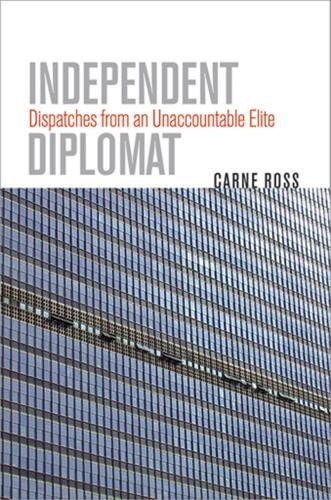
Independent Diplomat: Dispatches From an Unaccountable Elite
by
Carne Ross
Published 25 Apr 2007
The practitioners and analysts of this discourse love to pretend that it is complex and arcane,4 the better to preserve its privileges and power for themselves. But the business of contemporary international affairs is every-body’s business, because it affects us all. Moreover, by erecting elaborate barriers to entry and sticking to irrelevant and outdated philosophies of international relations (which we examine later), the diplomats and statesmen have become very confused about the nature of diplomacy and international relations. Academics provide complicated theses about realism, liberalism, neo-realism and neo-conservatism, but overlook the fact that international relations is ultimately about simple effects on simple people: it is merely politics.
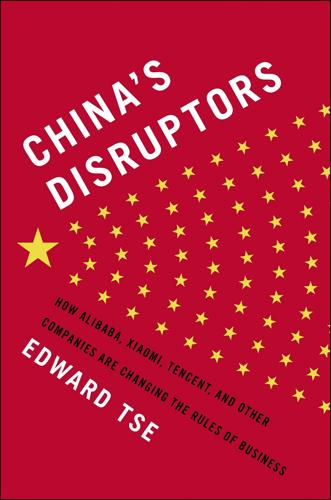
China's Disruptors: How Alibaba, Xiaomi, Tencent, and Other Companies Are Changing the Rules of Business
by
Edward Tse
Published 13 Jul 2015
Chinese conditions vary and change so rapidly that companies based there have to bring a great deal of flexibility to their operations and decision-making. They have to overcome logistic and supply-chain barriers in areas where transportation, communication, and financial infrastructure are weak—and then see barriers to entry come down when infrastructure conditions improve. For example, many Chinese companies routinely adopt ideas developed elsewhere for their own businesses and markets, making them their own in the process. As we have seen, Alibaba, Tencent, Baidu, and Meituan all used American-developed business models as inspiration for their own businesses, but then transformed them by adding features appropriate for Chinese users.

The AI-First Company
by
Ash Fontana
Published 4 May 2021
Advertising platforms figure out the best customers to target and then sell the ads; they don’t sell the targeting models to other websites. New age consumer finance apps price the risk of offering loans and then make those loans; they don’t sell the loan pricing models to banks. And AI is moving fast. Ten years ago, the barrier to entry was high because getting AI to work at all was difficult. Today there are online libraries of code to borrow, open-source (freely available, distributable and modifiable) software, facile frameworks to use, competent consulting firms to engage, and well-trained people to hire. Indeed, many of the big technology companies are giving away basic AIs, ready to run on anyone’s data, for free.
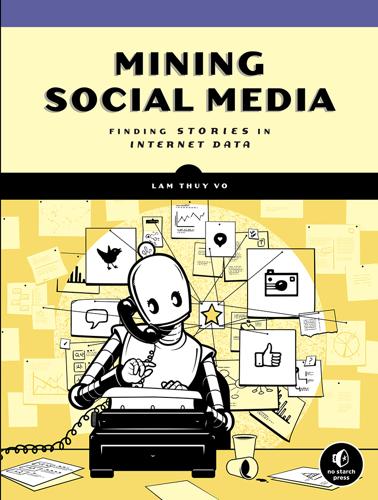
Mining Social Media: Finding Stories in Internet Data
by
Lam Thuy Vo
Published 21 Nov 2019
We’ll cover what variables are in the coming chapters.) While this may not be the most efficient way to code, it’s one that’s friendly to people who might be new to Python. As for the tools covered, I had two main criteria. I tried to choose tools that are available for free on the web, and that have a relatively low barrier to entry, allowing beginners to get started with simple projects. What This Book Covers The chapters of this book are structured to follow the journey of a data sleuth. We’ll begin by covering how and where to find data from the social web. After all, we need data before we can go about analyzing it!

Kill It With Fire: Manage Aging Computer Systems
by
Marianne Bellotti
Published 17 Mar 2021
Developing new technology or revitalizing an old system is, therefore, most likely to be effective when building on familiar concepts. Reference points create alignable differences that help us assess the value of something new, but those same reference points make the new technology feel simple and easy, lowering the barrier to entry and increasing the odds it will be adopted as well as the speed of adoption. Consider the Linux operating system. It’s easily one of the most popular operating systems for web servers if not computers in general. Hundreds of variants currently exist that are available to install freely, and there are any number of professional versions.

Internet for the People: The Fight for Our Digital Future
by
Ben Tarnoff
Published 13 Jun 2022
Meanwhile, small to medium-sized networks interconnect directly so they don’t have to pay larger providers for transporting their data. Still, backbones remain essential for certain kinds of traffic, namely the long-haul, international kind. So the bigger content providers have decided to acquire backbones of their own. While the barrier to entry into the broadband market remains forbiddingly high—even Google was forced to abandon its ambition to have a nationwide ISP with Google Fiber—tech companies are pushing aggressively into the backbone market. In particular, they are investing in the fiber-optic submarine cables that line the floors of the world’s oceans and form the internet’s global arteries.
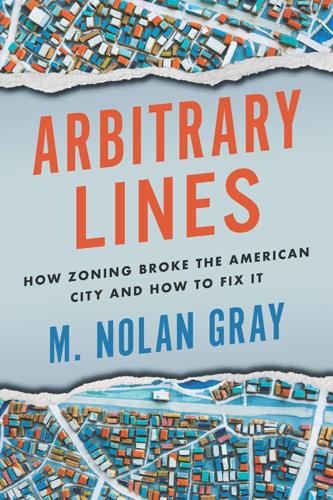
Arbitrary Lines: How Zoning Broke the American City and How to Fix It
by
M. Nolan Gray
Published 20 Jun 2022
Neither city had adopted a comprehensive plan prior to the adoption of zoning—new use and density standards were, at best, informed by elite norms and heuristics. In Berkeley, districts only took force after a petition from local property owners, which invariably involved wealthy residential neighborhoods attempting to throw up barriers to entry.26 And New York City infamously lacks a comprehensive plan to this day. While subsequent efforts have tried to reverse this backward relationship between planning and zoning, to varying degrees of success, appreciating this early irony is key to understanding the true purposes of zoning. The Federal Push At the end of 1916, 8 municipalities had adopted some form of zoning, and over the next seven years, a steady stream of municipalities would follow, such that by 1923, 218 municipalities had adopted zoning.27 On different stages, with different actors, the story of zoning adoption would be reenacted, with homeowners, industrialists, or commercial landlords playing the leading role as local political circumstances may require.
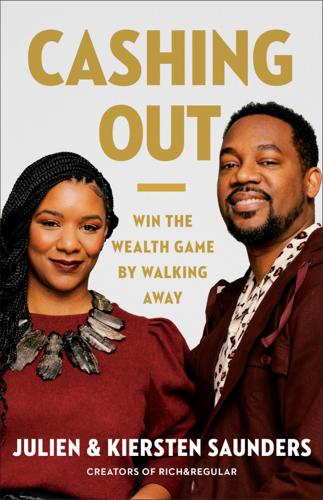
Cashing Out: Win the Wealth Game by Walking Away
by
Julien Saunders
and
Kiersten Saunders
Published 13 Jun 2022
Write down all the places your mind says “yes, but . . .” because that’s where you need to dig deeper. It’s time for you to accept that the internet is more than just a place for people to escape reality, stalk high school crushes, and share funny memes. It’s also a global marketplace where billions of dollars in transactions are made every day. And the best part is, there are no barriers to entry, no qualifications needed or rounds of interviews required to get started. You need to believe you can do it on your own and be willing to overcome the fear of selling. ACHIEVE FI, FASTER Establishing an income that is independent of an employer will not only give you a safety net but also accelerate your timeline to financial independence.

More Money Than God: Hedge Funds and the Making of a New Elite
by
Sebastian Mallaby
Published 9 Jun 2010
These short-run dislocations created opportunities for alert traders to seize bargains, and Steinhardt seized them aggressively.36 Moreover, the great beauty of Steinhardt’s method was that it was hard to copy. Once Wall Street had understood the mechanics of the A. W. Jones model, two hundred imitators had sprung up. But Steinhardt’s block-trading business was protected by “network effects,” which created barriers to entry. Steinhardt got the big calls from the block-trading brokers because he had a reputation for getting the big calls. He could trade his way out of big purchases because he had the network of broker relationships that came with being a big trader. Would-be rivals faced a frustrating catch-22 as they scrambled to catch up with him.
…
But the truth is that the Bear funds were a product of bank culture, not hedge-fund culture. Like other hedge funds launched under the umbrella of large banks, the Bear funds were managed by people who were seeded within a large firm, not by entrepreneurs who launched independent ventures. They raised capital with the help of the parent bank’s network and brand, which lowered the barriers to entry that freestanding hedge funds must reckon with. They knew that if they failed, the parent bank might bail them out, softening their vigilance. The investment thesis of the Bear funds underlined their close ties to the mother ship. Two of the funds were run by Ralph Cioffi, who had previously worked on Bear’s sales desk, peddling mortgage-backed securities to institutional clients.
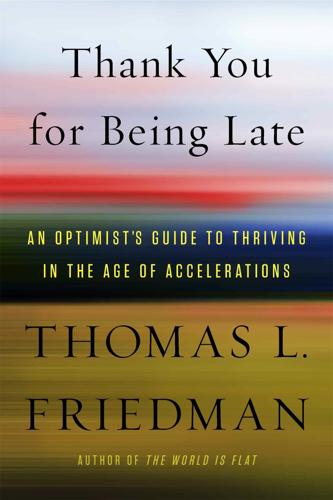
Thank You for Being Late: An Optimist's Guide to Thriving in the Age of Accelerations
by
Thomas L. Friedman
Published 22 Nov 2016
America dominated a world economy in which the industrial foundations of many European and Asian countries had been destroyed by World War II, so for years thereafter there were vast numbers of manufacturing jobs to be filled. Outsourcing was limited, and China had yet to join the World Trade Organization (that happened in December 2001) and its workforce was not yet much of a threat to most good blue-collar jobs. With the push and pull of globalization relatively mild, innovation slower, and the barriers to entry into different industries higher, unions were relatively stronger and could negotiate healthy and steady wage and benefits packages from employers. Companies could also afford more in-house training of their workers, who were less mobile and therefore less likely to learn and quit. Because the pace of change was slower, whatever you had learned in high school or college stayed relevant and useful much longer; skills gaps were less prevalent.
…
General Electric’s CEO, Jeff Immelt, put it bluntly in a May 20, 2016, commencement address to graduates at New York University’s Stern School of Business: “Technology has raised the competitive requirements for companies and people.” John Hagel, the management expert, puts it even more bluntly: “There is mounting performance pressure on all of us—as individuals and institutions. All of this connectivity means significantly lower barriers to entry and movement, accelerating change and the increasing occurrence of extreme, disruptive events, all of which put significant pressure on our institutions … On a personal level, the example I use is a billboard that used to be up on a highway here in Silicon Valley which asked a simple question: ‘How does it feel to know that there are at least one million people around the world who can do your job?’

The Practice of Cloud System Administration: DevOps and SRE Practices for Web Services, Volume 2
by
Thomas A. Limoncelli
,
Strata R. Chalup
and
Christina J. Hogan
Published 27 Aug 2014
It was a slow, delicate, and difficult process requiring great skill. Then a high-power paint sprayer was invented to improve this process. The same person could do a better job, with less wasted paint, in less time. This technology also reduced the amount of skill required, thereby lowering the barrier to entry for this job. However, there was still a car panel painter job. The process had not been automated, but there was a better tool for the job. In the 1970s, auto manufacturing plants automated the car painting process. They deployed robotic painting systems and the job of car panel painter was eliminated.
…
The new economics also made it more feasible to give away a service because advertising revenue was sufficient to make the business viable. Many sites were free for most features but offered “premium” services at an additional cost. This “freemium” (free + premium) business model was a great way to attract large numbers of customers. Being free meant there was very little barrier to entry. Once the user was accustomed to using the service, selling the premium features was easier. If advertising revenue was sufficient, the free users were no burden. Software, hardware, and power costs were all significantly lower with this new approach, enabling the emergence of new business models.

The Price of Time: The Real Story of Interest
by
Edward Chancellor
Published 15 Aug 2022
In 2016, business deaths outnumbered births for the first time since the Census Bureau started keeping records in 1978. Furthermore, the new businesses that appeared were concentrated in a small number of counties (including Silicon Valley). Regulatory red tape played a part in discouraging entrepreneurs.40 By trapping excess capacity in place and, in effect, raising barriers to entry, unconventional monetary policies were probably more influential. Even officials at the Bank of England privately admitted that the United Kingdom’s mild recession had not ‘generate[d] sufficient destruction to enable the creation of more productive companies’.41 Economic vitality is also indicated by turnover in the jobs market.
…
Economists at the University of Michigan found that price-fixing cartels are more influenced by the level of interest rates than by any other factor. Cartels tend to form at times of low interest rates and break up when rates are high.28 Firms in industries with the greatest increase in concentration enjoyed higher profits. But, as Adam Smith observed, monopolies don’t serve the public good. Rather, monopolies create barriers to entry which discourage the establishment of new firms and innovation.29 Rising industry concentration was associated with higher pay for senior executives, a decline in workers’ bargaining power, and falling investment and R&D. Economists at the National Bureau of Economic Research found that while ‘low interest rates have traditionally been viewed as positive for economic growth … extremely low interest rates may lead to slower growth by increasing market concentration.’fn2 PRIVATE EQUITY As with corporate mergers, leveraged buyouts pick up when the ‘cost of corporate control’ declines.

Strategy: A History
by
Lawrence Freedman
Published 31 Oct 2013
There was no law to govern this situation, which is why Simon declared oligopoly to be “the permanent and ineradicable scandal of economic theory.”17 For economists, the question raised was why certain markets deviated from standard models of perfect competition. Profits should be more than sufficient to animate the company, but certain industries were extremely profitable. That was because of a lack of competitive pressure, which was the result of the “barriers to entry”—the difficulty faced when trying to establish a new position in a market. The thrust of the economics approach to industrial organization was to find ways to reduce these barriers to make the markets more competitive. With his business school background, Porter saw an opportunity to turn the theory on its head.
…
The focus was still on providing a guide to a deliberative process for a large business, but he was more ambitious than Andrews, more focused than Ansoff, and less formulaic than Henderson.18 Porter identified two key issues. The first was seller concentration (what percentage of the market was controlled by the top four firms) and barriers to entry. Out of this came the “five forces framework” for analyzing an industry. The forces were competitive rivalry between firms, bargaining power of suppliers and of buyers, threats of new entrants and of substitute offerings. A number of factors were connected with each. The presentation was methodical and rigorous, offering basic principles and some specific tactics about how to maintain and improve a competitive position.
…
Porter was well aware of the issue, noting that companies under antitrust restraints might not feel able to respond to competitors attempting to take a small market share, or how large companies may use a private antitrust suit to harass small competitors.21 He warmed to the theme in his second book, Competitive Advantage, noting how these suits could put financial pressure on competitors. Here he also discussed how barriers to entry could be raised higher than would naturally occur, by such methods as forming exclusive agreements with outlets to freeze out competitors, tying up suppliers, and even working in coalition with other established firms.22 A number of the activities, he noted, were frowned upon by antitrust law and were the subject of successful suits.
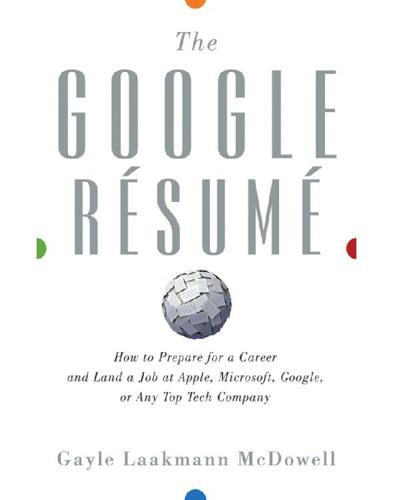
The Google Resume: How to Prepare for a Career and Land a Job at Apple, Microsoft, Google, or Any Top Tech Company
by
Gayle Laakmann Mcdowell
Published 25 Jan 2011
Many of us write software for pay, but writing software for fun shows a unique passion for the field. He was hired. If you’re currently unemployed, find something to do that’s productive. Can you help out your friend’s start-up? Can you take some classes at a community college? Unemployment is an excellent time to beef up your résumé. Your Questions Answered Barrier to Entry Dear Gayle, I’ve lived most of my life in India, before relocating to the United States, and still have a very thick accent. This isn’t as much of an issue for technical questions, but I have trouble maintaining a conversation with my interviewer on behavioral questions. If my interviewer is from a country other than India or the United States, this issue is exacerbated.

After the New Economy: The Binge . . . And the Hangover That Won't Go Away
by
Doug Henwood
Published 9 May 2005
He thinks financial statements should recognize four kinds of New Era assets: (1) "assets associated with product innovation," which presumably includes everything from a new microprocessor to a new kind of cereal; (2) "assets that are associated with a company's brand," which let a company sell its products or services at a higher price than its competitors; (3) "structural assets"—not flashy innovations but better, smarter, difierent ways of doing business that can set a company apart from its competitors; and (4) "monopolies, companies that enjoy a franchise, or have substantial sunk costs that a competitor would have to match, or have a barrier to entry that it can use to its advantage." These are quite extraordinary thoughts. It's possible to swallow point 1, if we're talking about a real advance; it's a bit harder if we're talking about a fresh variant on Frosted Flakes. But the rest is considerably harder to take. One of the cornerstones of New Paradigm thinking, and one that's survived the bust, is the curious doctrine that "brand equity"—the financial value that stock markets assign to names Hke Nike and Mickey Mouse—is a kind of capital, like a lathe or even a piece of software.

Getting a Job in Hedge Funds: An Inside Look at How Funds Hire
by
Adam Zoia
and
Aaron Finkel
Published 8 Feb 2008
Assisted with on-campus events, selection, and calls to candidates • Language: Proficient in Spanish • Activities & Interests: Hockey, investing, chess, economics, mathematics, and writing 163 bapp02.indd 163 1/10/08 10:59:50 AM Resume B ive s Perspect Recruiter’ e school • Top nam Ts/GPA • Solid SA perience finance ex g • Levera ed e fund at a hedg ) • Worked sity athlete ar (v nded • Well rou nity • VP frater Profile Pre-MBA: Getting In from a Second-Tier Bank (see CASE STUDY 2) PROFESSIONAL EXPERIENCE MID-TIER INVESTMENT BANK, New York, NY Investment Banking Analyst – Leveraged Finance Group June 2005 – Nov. 2006 • Analyzed transactions by providing capital structure/valuation advice and assessing viability of business plans/forecasts, barriers to entry, and market competitiveness • Presented and defended proposed transactions in capital commitment committees • Participated in deal teams to advise clients on leveraged buyouts, recapitalizations, strategic alternatives, and equity and debt capital raising • Constructed financial models, including leveraged buyouts, recapitalizations, mergers and acquisitions, and discounted cash flow • Examined company, industry, and market dynamics to evaluate potential acquisitions and divestitures for clients • Transaction experience: Sole Book Running Manager on $170 million of Senior Notes and $25 million of Senior Subordinated Discount Notes Represented three private equity firms in bid for major media company SMALL HEDGE FUND, Greenwich, CT May 2004 – August 2004 Summer Analyst • Evaluated potential investment opportunities in the small-cap high-yield bond market • Performed company and industry research • Assisted in managing relationships with investors • Analyzed the effectiveness of the firm’s hedging positions by running scenarios based on historical market events, such as 9/11 and the Russian debt default • Examined the usefulness of different hedging strategies EDUCATION IVY LEAGUE UNIVERSITY Bachelor of Arts: Major – Political Science • Cumulative GPA 3.6/4.0 • Relevant Coursework Included: Accounting, Micro- and Macroeconomics, International Trade Theory and Policy, Politics and Markets, and Multivariable Calculus • Men’s Varsity Swimming (2001–2004) • Vice President, Fraternity (2005) PRIVATE BOARDING SCHOOL • SAT: 1,480 (770 Math, 710 Verbal) • Graduated with distinction in Math, Chemistry, and Physics • Tri-varsity athlete 2005 2001 164 bapp02.indd 164 1/10/08 10:59:51 AM Resume C Recruiter’ s Perspect ive • Top nam e school • Solid GPA – distinction graduated with • Worked at M&A-fo cused bou • Well rou tique nded (varsi ty athlete, H.S. record holder) • Founded fraternity Profile Pre-MBA: Making It with a Liberal Arts Degree (see CASE STUDY 3) EXPERIENCE BOUTIQUE INVESTMENT BANK New York, NY July 2005 Investment Banking Analyst to July 2007 • Performed financial and operational modeling to evaluate the accretion/dilution, cash flow, and leverage effects of mergers, acquisitions, leveraged buyouts, and corporate restructurings • Participated in client meetings, due diligence, and internal committee meetings • Managed the due diligence and site visits associated with sell-side transactions • Drafted management presentations and company profiles Selected transaction experience: • Advised a major corporation on its proposed reorganization (six mergers) and eventual Initial Public Offering - Built a valuation model in order to properly value the stand-alone regions singularly and on a pro forma basis in order to merge six of the regions into one entity and pursue a global float - Worked with company Board of Directors, company executives, and management in order to accurately gauge the impact of legal liability and drafted materials proposing an adequate financial structure to maximize value and mitigate forthcoming legal liabilities • Advised manufacturing company on its $1 billion+ acquisition of rival - Conducted stand-alone valuation, accretion/dilution, and noncore asset valuation for the purchase - Maintained a purchase price spread analysis during the ongoing regulatory approval period • Advised a financial buyer on the acquisition of natural gas pipeline assets (approx. $250mm) - Constructed an operating model, discounted cash flow analysis, and LBO to project revenues associated with the processing of natural gas and sale of natural gas products - Participated in due diligence and site visits on behalf of the client • Advised company on its sale to another company - Constructed a working capital model to project final adjustments made to the purchase price - Drafted and organized materials for the Management Presentation along with coordinating the data room May 2004 LEADING INVESTMENT BANK New York, NY to August 2004 Investment Banking Summer Analyst • Valued companies and their comparables using discounted cash flows • Gauged demand for potential equity transactions and helped price equity deals • Tracked market conditions and gauged the proper size for potential equity transactions • Built and maintained a database of venture capital sponsored Initial Public Offerings since 1999 Selected transaction experience: • Pitch for Bank IPO • Entertainment Company Follow-on Offering ($200mm) Washington, DC May 2003 NOT-fOR-PROFIT to August 2003 Visiting Fellow • Compiled research on the interaction between informal markets and financial institutions • Wrote and published an internal working paper EDUCATION IVY LEAGUE UNIVERSITY Bachelor of Arts, May 2005.
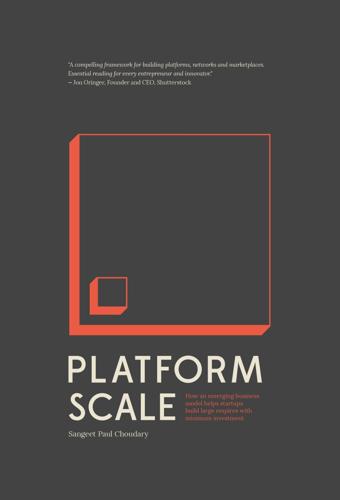
Platform Scale: How an Emerging Business Model Helps Startups Build Large Empires With Minimum Investment
by
Sangeet Paul Choudary
Published 14 Sep 2015
High multihoming costs result in the strengthening of network effects around a dominant platform, leading to a winner-takes-all outcome. Multihoming costs are rapidly falling on today’s platforms. In the age of the fax machine, users paid through their upfront investment in hardware. These upfront costs created lock-in, thereby creating barriers to entry for would-be competitors. Multihoming costs were high. In the age of the Internet, users no longer need to invest in physical hardware and upfront costs to join new networks. Multihoming is discouraged on online networks, allowing users to create their personal networks of connections. Switching between instant messaging services or between social networks is a non-trivial task.

Designing Search: UX Strategies for Ecommerce Success
by
Greg Nudelman
and
Pabini Gabriel-Petit
Published 8 May 2011
Even as the various content management and ecommerce platforms scramble to adopt some form of faceted navigation, they require more computational power than ever before just to provide it. Users may not be able to identify navigation as faceted navigation, but they certainly do bounce away from your Web site when they cannot find something as easily as on another site. The barriers to entry and competitiveness in the Web space are increasingly fierce. Paying careful attention to the proper implementation of faceted navigation helps users find what they want. If you also address the search marketing angle, this contributes to a greater competitive edge in your industry. —Jaimie Sirovich On the Future of Breadcrumbs Although there are still debates about the value and effectiveness of breadcrumbs on Web sites—as there should be—that does not mean you should stop researching them or trying out new ideas with them.
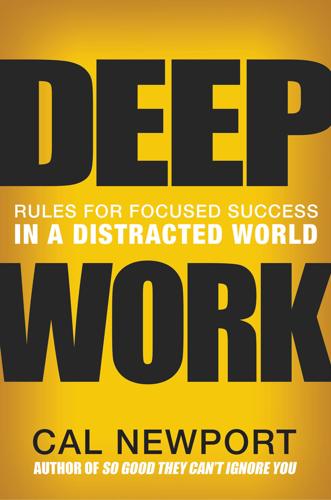
Deep Work: Rules for Focused Success in a Distracted World
by
Cal Newport
Published 5 Jan 2016
The chain method is a good example of the rhythmic philosophy of deep work scheduling because it combines a simple scheduling heuristic (do the work every day), with an easy way to remind yourself to do the work: the big red Xs on the calendar. Another common way to implement the rhythmic philosophy is to replace the visual aid of the chain method with a set starting time that you use every day for deep work. In much the same way that maintaining visual indicators of your work progress can reduce the barrier to entry for going deep, eliminating even the simplest scheduling decisions, such as when during the day to do the work, also reduces this barrier. Consider the example of Brian Chappell, the busy doctoral candidate I introduced in the opening to this strategy. Chappell adopted the rhythmic philosophy of deep work scheduling out of necessity.
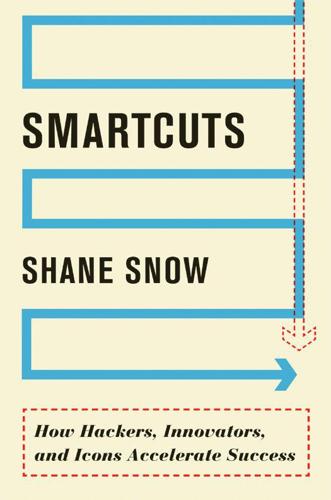
Smartcuts: How Hackers, Innovators, and Icons Accelerate Success
by
Shane Snow
Published 8 Sep 2014
Those little things added up. And many programs required repetitive coding of the same basic components every time. That didn’t jibe with DHH’s selective slacking habit. “I hate repeating myself.” (He almost spits on me when he says it.) But conventional coders considered such repetition a rite of passage, a barrier to entry for newbies who hadn’t paid their dues in programming. “A lot of programmers took pride in the Protestant work ethic, like it has to be hard otherwise it’s not right,” DHH says. He thought that was stupid. “I could do a lot of other interesting things with my life,” he decided. “So if programming has to be it, it has to be awesome.”

The 80/20 Principle: The Secret of Achieving More With Less
by
Richard Koch
Published 15 Dec 1999
Profitability * * * 1 Yes Yes Very high 2 Yes Yes Very high 3 Yes Yes Very high 4 Yes Yes Very high 5 Yes Yes High 6 Yes Yes High 7 Yes Moderately High 8 Yes Moderately Fairly high 9 Yes No OK 10 Not very Yes OK 11 Not very Yes OK 12 No Moderately Poor 13 Yes Improving Loss making 14 No Moderately Loss making 15 No No Loss making * * * Figure 29 Electronic Instruments Inc. strategic diagnosis What actions followed this diagnosis? All of the A profit segments were also attractive markets—they were growing, had high barriers to entry for new competitors, had more demand than capacity, faced no threat from competing technologies, and had high bargaining power vis-à-vis both customers and component suppliers. As a result, nearly all the competitors in these markets made good money. My client was also well positioned in each segment, meaning that it had a high market share and was one of the top three suppliers.

Planet of Slums
by
Mike Davis
Published 1 Mar 2006
Those engaged in informal-sector competition under conditions of infinite labor supply usually stop short of a total war of all against all; conflict, instead, is usually transmuted into ethnoreligious or racial violence. The godfathers and landlords of the informal sector (invisible in most of the literature) intelligendy use coercion, even chronic violence to regulate competition and protect their investments. As 'hilip Amis emphasizes: "There are barriers to entry in terms of capital, and often political terms, which create a tendency towards monopoly in the successful areas of the informal sector; these are difficult to get into."39 Politically, the informal sector, in the absence of enforced labor rights, is a semifeudal realm of kickbacks, bribes, tribal loyalties, and ethnic exclusion.
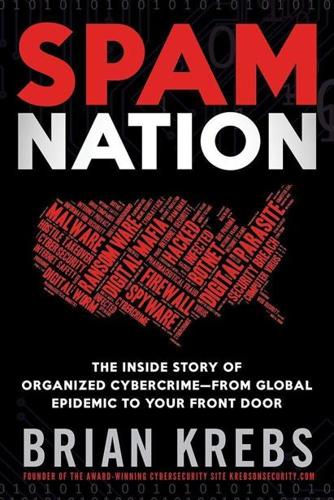
Spam Nation: The Inside Story of Organized Cybercrime-From Global Epidemic to Your Front Door
by
Brian Krebs
Published 18 Nov 2014
If these newbies wish to construct a new cybercrime operation—such as a spam botnet—but lack the knowledge or resources to build up a particular component of that business, they can simply purchase the missing components or information from other members. Or, they can turn to senior members and self-help tutorials on these forums for pointers and questions. In this way, crime forums almost universally help lower the barriers to entry for would-be cybercriminals. Crime forums also offer crooks with disparate skills a place to market and test their services and wares, and in turn, to buy ill-gotten goods and services from others. There are forums dedicated to almost every major language and specialization of cybercrime, but most crime forums are either in Russian or English.
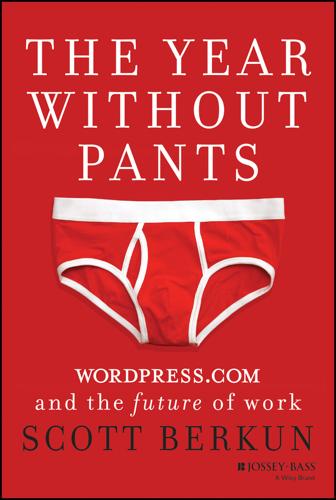
The Year Without Pants: Wordpress.com and the Future of Work
by
Scott Berkun
Published 9 Sep 2013
It is easy to launch projects. 2. If it's easy to launch, small projects will get launched. 3. If small things are launched, there is a fast feedback loop about what worked and what didn't, which can be quickly improved because of #1. The fundamental mistake companies that talk about innovation make is keeping barriers to entry high. They make it hard to even try out ideas, blind to how much experimentation you need to sort the good ideas from the bad. I've visited companies that use big meetings, with far too many cooks in the room, to rank ideas based on one-sentence descriptions. It was madness. While few at Automattic had ever experienced this, their process was on the other end of the spectrum: they had faith in the future.
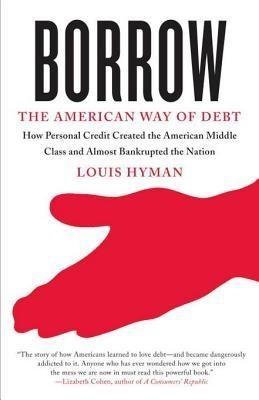
Borrow: The American Way of Debt
by
Louis Hyman
Published 24 Jan 2012
By 1979, Federated Department Stores admitted that it no longer made money on its cards, but at the same time, as its head of credit said, “they are our link to the customer.”75 By 1977, more than half of all department store sales were on credit, and stores felt they had no option.76 The VP of retail sales for American Express observed that department stores “consider their charge account base to be the lifeblood of their business.”77 So much effort and money had been invested in offering credit over the years that it seemed unbelievable that the department stores should give up their store cards. After all, credit had acted as a barrier to entry for many of the stores and kept out the competition. If their customers could easily use BankAmericard, the stores would once again need to compete more openly on price—which more vitally threatened their bottom lines. Even Federated, which had “vowed” never to allow bank cards, tested outside credit in its Miami stores, forcing other retailers, such as Dayton Hudson, to “look closer” at their credit programs.78 The successful experiences of their competitors, more than any argument, swayed big retailers to accept bank cards.
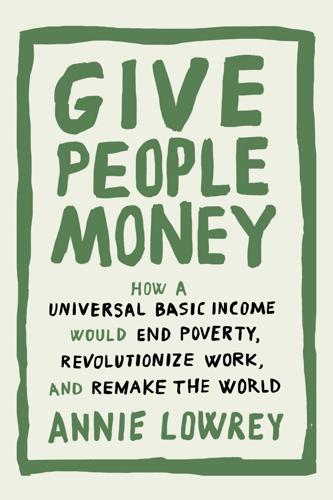
Give People Money
by
Annie Lowrey
Published 10 Jul 2018
Why did he decide to work with Uber, as opposed to freelancing or picking up a shift at a local store? “I have a car,” he told me. “I’m able to afford the additional insurance. I keep my car relatively clean, which is hard to do with a seven-year-old. For me, it was the flexibility in the time and [the fact] that the barriers to entry were really low.” In public, the firms of the gig economy venerate that flexibility and independence as a way of casting themselves as the champions of today’s millennial entrepreneurs, rather than corporations that are stiffing the proletariat. Yet in private, independence is actively discouraged.
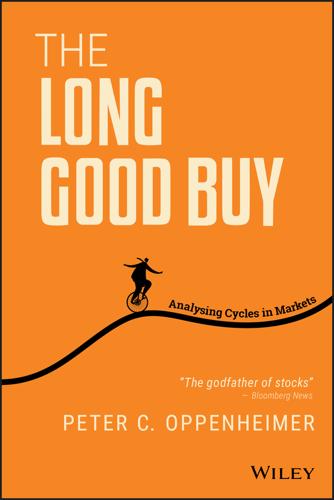
The Long Good Buy: Analysing Cycles in Markets
by
Peter Oppenheimer
Published 3 May 2020
But this was just one small innovation in a wider environment of rapid change and disruption that was about to revolutionise financial markets. The City of London was on the brink of the ‘Big Bang’ deregulation of 1986. For the first time, face-to-face transactions were replaced by computers and telephones, resulting in an explosion of volumes. The old way of doing business was under threat. Barriers to entry were blown apart and gave way to a new wave of entrants, many from overseas. Technology was fast changing the landscape of business and society more generally. Personal computing also saw major innovations at this time. In 1985, Microsoft Corporation released Windows 1.0, the first version of its computer operating system that would come to dominate the PC market.
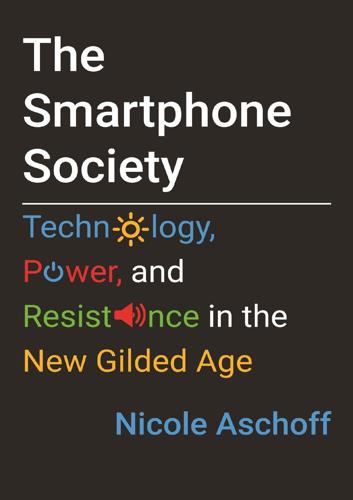
The Smartphone Society
by
Nicole Aschoff
When peak season is over, these “workampers” drive away in what Amazon executives proudly call a “tail light parade.”49 Log on to the Spare5 mobile task app on the long bus ride home, circle the road signs in a series of photographs for some self-driving-car start-up, and you’ve paid for that afternoon splurge on a triple macchiato at Starbucks. App jobs like this are appealing at first glance. There are few barriers to entry. You can work when you’re able, and the ads promise decent money. You just need a smartphone, often a car, and a willingness to work. It certainly seems better than the frustrating world of scheduling software and low-paid, irregular shifts common in the retail and fast-food sectors. In some respects, it feels like being your own boss.
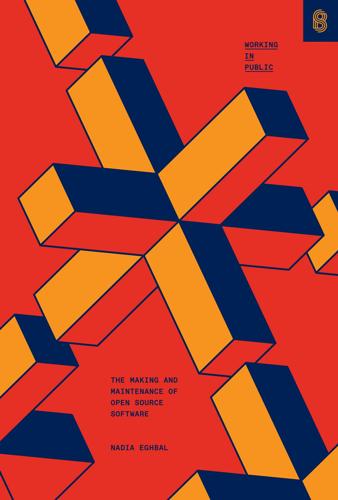
Working in Public: The Making and Maintenance of Open Source Software
by
Nadia Eghbal
Published 3 Aug 2020
Bootstrap is a “big” project in terms of user adoption, but is “smaller” in terms of technical scope, so it’s unsurprising that only two developers, mdo and XhmikosR, account for most of its commits.91 Bootstrap does experience moderately high issue volume (or support required), so another developer, Johann-S, is more active in responding to Bootstrap’s open issues, while making fewer commits. These factors can also affect projects in unintuitive ways. There are differences between how a project attracts new contributors and how it retains existing contributors. High barriers to entry, for example, might mean that those developers who make it through the gauntlet will feel a higher affinity to the project. Older projects with messy codebases can, strangely, engender a small but very dedicated group of contributors. The same goes for tooling: I’ve heard more than one Go developer confess they like that Go uses Gerrit instead of GitHub because this cuts down on the noise.
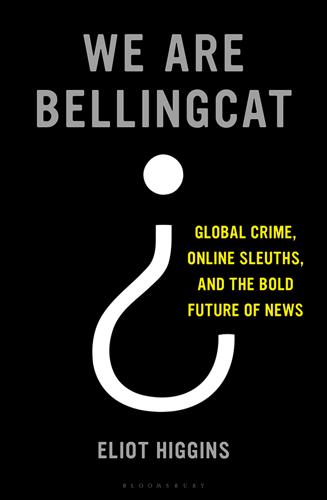
We Are Bellingcat: Global Crime, Online Sleuths, and the Bold Future of News
by
Eliot Higgins
Published 2 Mar 2021
Video archives could become targets, too, allowing bad actors to meddle with the historical record. Third, we must think about where this technology is heading. Deepfakes are improving. The AI technology that underlies it is a topic of vast and competitive research, and software companies are commercialising what had been academic research, lowering barriers to entry. The amount of training data (that is, the number of images or audio samples that an algorithm needs to convincingly mimic something) keeps dropping. Fourth, we must beware that synthetic media will spread through the same disinformation routes that we are battling already, from microtargeting on social media, to mass-spamming, to dissemination through deceitful alternative-media outlets.

Who's Your City?: How the Creative Economy Is Making Where to Live the Most Important Decision of Your Life
by
Richard Florida
Published 28 Jun 2009
Artists and bohemians not only produce amenities but are attracted to places that have them. As selective buyers with eyes for amenity, authenticity, and aesthetics, they tend to concentrate where those things abound. The second is a tolerance or open culture premium. Regions with large bohemian and gay populations possess low cultural barriers to entry, allowing them to attract talent and human capital across racial, ethnic, and other lines. Artistic and gay populations also cluster in communities that value open-mindedness and self-expression. And their status as historically marginalized groups means that artistic and gay populations tend to be highly self-reliant and receptive to newcomers.
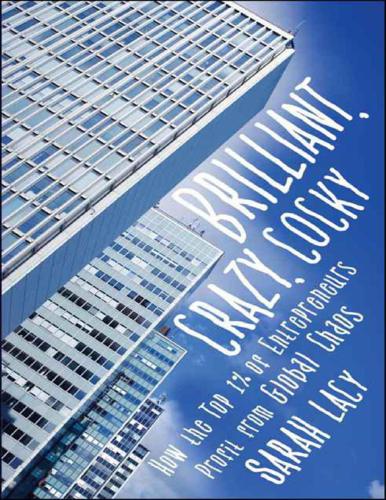
Brilliant, Crazy, Cocky: How the Top 1% of Entrepreneurs Profit From Global Chaos
by
Sarah Lacy
Published 6 Jan 2011
Taobao, an online marketplace owned by Alibaba Group, won where eBay couldn’t, because it created an elaborate network of bike couriers who could deliver goods and accept cash on delivery. eBay could work in the United States, because Americans had a history of buying things via catalogs and had a mature enough postal and banking system to make the transactions frictionless. eBay could just be a Web marketplace, but Taobao had to create a system by which it could work in China with huge chal enges like China’s fits and starts of modernity, geographic size, and disparity in quality of life. Process and execution are vital to building a big Chinese company. Every element has to be thought through. And frequently, that’s led to stronger, more defensible businesses, even on the Internet where the barriers to entry are notoriously low. Simply put, ideas are just that; execution is what matters. Sina may seem like a Yahoo! clone, Ctrip may seem like an Expedia clone, Taobao may seem like an eBay clone, and Baidu may seem like a Google clone, but each of these businesses have won in the battle for the massive Chinese Internet audience for a reason, and it wasn’t that the government protected them.
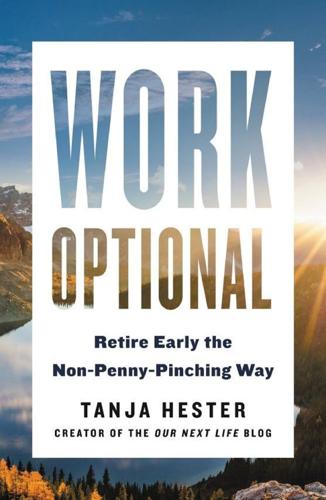
Work Optional: Retire Early the Non-Penny-Pinching Way
by
Tanja Hester
Published 12 Feb 2019
Some of the most highly paid career paths, based on 2016 median wage data, that require the least education and training include:1 • Air-traffic controller ($122,410, requires an associate’s degree) • Nuclear power reactor operator ($91,170, requires a high school diploma) • Transportation and distribution managers ($89,190, requires a high school diploma) • Police and detective supervisors ($84,840, requires a high school diploma in many states) • Power distributors and dispatchers ($81,900, requires a high school diploma) • Radiation therapist ($80,160, requires an associate’s degree) In addition, many health care careers, such as diagnostic medical sonographer, can earn high five figures with only a certificate program, and disruptions in industries, such as software development by companies like Codecademy, remove traditional institutional barriers to entry and allow you to gain high-demand skills at very little cost. If you already have a college degree and are looking to boost your income through the retraining method, explore high-paying industries in your area and consider enrolling in a graduate school or certificate program that will qualify you to move into those fields, being mindful not to incur an unmanageable amount of debt to gain these credentials.

People Powered: How Communities Can Supercharge Your Business, Brand, and Teams
by
Jono Bacon
Published 12 Nov 2019
Freely available access makes it easier for people to try technologies, and many companies run a successful open-core model where they have the free open-source version (the gateway drug) and an enterprise version with additional paid features. Throughout all of this, your brand, technology, and team has a much broader potential audience due to the lower barrier to entry. All of this can generate significant financial value. As one example, the Linux Foundation, a trade organization focused on open source, determined that to rebuild an open-source operating system using proprietary methodologies would cost $10.8 billion.30 Other communities have also formed to create additions that sit on top of existing platforms.

Genentech: The Beginnings of Biotech
by
Sally Smith Hughes
But it was not merely the sweet seduction of Genentech’s technology and the novel legal issues that drew him. Kiley was also impressed with Swanson, especially his seemingly unflappable self-confidence despite formidable odds. I admired his chutzpah in aiming with this controversial technology to mount barriers to entry that stood high around the pharmaceutical industry; admired his moxie in doing that on what seemed a very small amount of money—so small that I did everything I could to spare him expense. . . . Genentech [for me] was becoming a labor of love, if you will.24 Genentech’s third institutional collaborator was an afterthought.
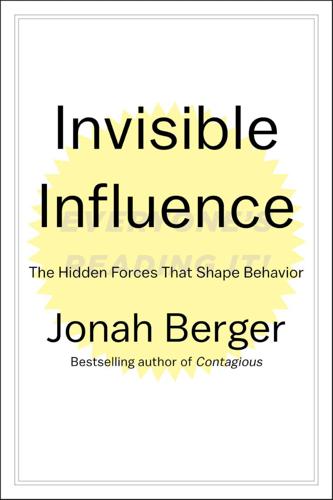
Invisible Influence: The Hidden Forces that Shape Behavior
by
Jonah Berger
Published 13 Jun 2016
Even a kid can ride a ten-speed bike, but it takes skill to ride a bike with only one gear. Anyone can buy a watch that tells time, but it takes someone with a strong sense of self (and another way to figure out what time it is) to wear a watch that doesn’t. Afunctionality thus induces a cost or barrier to entry. Some costs are monetary. You have to have a lot of money to buy a yacht. But there are other types of costs as well. Time is a cost. It takes a lot of time and effort to learn about wine or be well versed in French philosophy. There are opportunity costs. Having cornrows or an eyebrow piercing may make it hard to get a high-paying office job.
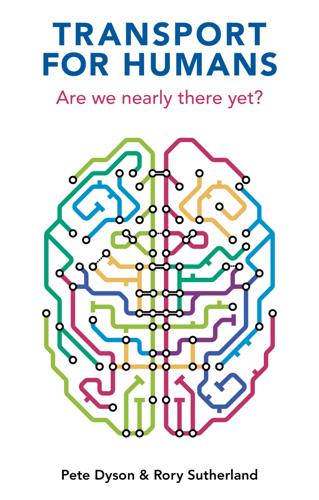
Transport for Humans: Are We Nearly There Yet?
by
Pete Dyson
and
Rory Sutherland
Published 15 Jan 2021
Thirdly, the ‘law of stretched systems’ shows why, as technology improves, our expectations and demands will simply increase accordingly.6 Much like building more roads induces more demand for driving, we will come to expect better and better journeys. Technologies are not replacing the need for transport skills, they are shifting the need to different skills and changing the barriers to entry. An urgent priority is not to advance some people further and faster, but rather to bring everyone up to speed. The transition from analogue (e.g. paper tickets) to digital (e.g. contactless ones) needs to be a rising tide that lifts all boats. In this respect, the future of mobility is going to need at least three intersecting considerations: engineering, i.e. the technologies that physically move us; innovation, i.e. the technologies that enable us to use that engineering; and innveration, i.e. the psychological techniques that make these technologies usable and useful to the people being transported.
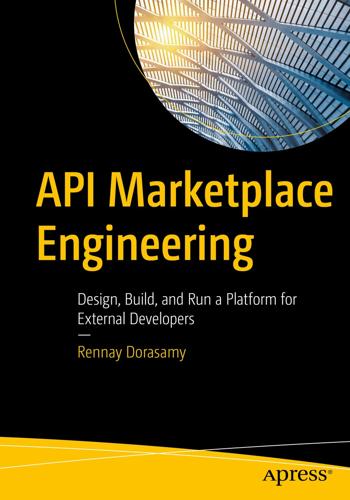
API Marketplace Engineering: Design, Build, and Run a Platform for External Developers
by
Rennay Dorasamy
Published 2 Dec 2021
We have adopted a similar strategy to Amazon and have made a conscious decision to pass this benefit on to our customers by lowering costs. As Jeff Bezos wisely predicted, lowering costs results in increased traffic which invariably speeds up the momentum of the flywheel. An observation is that lower costs also reduce the barrier to entry and the platform has caught the attention of smaller consultancies who are building innovative solutions with our products. In much the same way that a quick dash into a supermarket for one or two items invariably results in a trolley full of additional purchases, third parties who start with one API product typically leverage the onboarding process and technical integration knowledge to assimilate and consume others.

The Power Law: Venture Capital and the Making of the New Future
by
Sebastian Mallaby
Published 1 Feb 2022
A few months later, Tandem made its first sale, and then revenues started to ramp up, multiplying fourteen-fold between 1977 and 1980.[68] Pretty soon, Tandem offered a spectacular demonstration of what became known as Perkins’s law: “market risk is inversely proportional to technical risk,” because if you solve a truly difficult technical problem, you will face minimal competition.[69] Thanks to the high barrier to entry, Tandem’s profit margin remained juicy even as its sales soared. By 1984, Tandem had generated a bit over 100x on KP’s $1.45 million investment. The $150 million profit dwarfed the combined $10 million return that KP made on all of its first nine investments. But as Tandem was taking off, Perkins was working on another project that would be even more spectacular.
…
The existing way of harvesting insulin conjured up images of medieval witchcraft: every drop of the hormone had to be pressed from the pancreas glands of pigs and cows. Perkins figured to himself that Genentech would have a bit less than a fifty-fifty shot at creating a viable product.[86] But precisely because the technical challenges were so formidable, the barriers to entry in this business would be high, and Genentech would be able to extract fat margins if it succeeded. It was another illustration of Perkins’s law. The next day Perkins met Swanson again and laid out a suggestion. The science was captivating, but the $500,000 cost of proving it was prohibitively high, given the uncertainty.
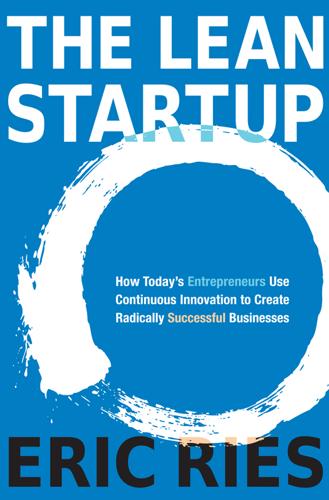
The Lean Startup: How Today’s Entrepreneurs Use Continuous Innovation to Create Radically Successful Businesses
by
Eric Ries
Published 13 Sep 2011
The top three networks controlled more than 80 percent of the overall usage and were in the process of consolidating their gains in market share at the expense of a number of smaller players.2 The common wisdom was that it was more or less impossible to bring a new IM network to market without spending an extraordinary amount of money on marketing. The reason for that wisdom is simple. Because of the power of network effects, IM products have high switching costs. To switch from one network to another, customers would have to convince their friends and colleagues to switch with them. This extra work for customers creates a barrier to entry in the IM market: with all consumers locked in to an incumbent’s product, there are no customers left with whom to establish a beachhead. At IMVU we settled on a strategy of building a product that would combine the large mass appeal of traditional IM with the high revenue per customer of three-dimensional (3D) video games and virtual worlds.

Poorly Made in China: An Insider's Account of the Tactics Behind China's Production Game
by
Paul Midler
Published 18 Mar 2009
China manufacturing required no tests or qualifications, and traders were arriving—and often staying—on simple tourist visas that could be extended without difficulty. Thousands of newcomers were turning up at events like the Canton Fair, China’s largest trade show, just to get a feel for what was happening. Barriers to entry were lowered, and the introduction of certain technology tools was helpful. Networked computers made it easier to find factories. Web sites like Alibaba.com were providing a boost to factories that were previously unknown. Minimum order quantities were lowered, also, so that less volume was required in order to get a project started.

When Free Markets Fail: Saving the Market When It Can't Save Itself (Wiley Corporate F&A)
by
Scott McCleskey
Published 10 Mar 2011
After the consultation and the lengthy legislative process, the Credit Rating Agency (CRA) Reform Act was passed in 2006 (the very name of the law revealed Congress’s foul mood with respect to the rating agencies—and this was before the subprime crisis). NRSRO STATUS The law applied to those firms that had received, or aspired to receive, designation as ‘‘Nationally Recognized Statistical Rating Organizations’’ (NRSROs). Among its aims was to break down the perceived barrier to entry for small rating agencies, and so it provides a means by which smaller agencies could break into the magic circle of the dominant rating agencies (Standard & Poor’s, Moody’s, and Fitch—the Big Three). NRSRO designation had been dreamed up in 1975 and bestowed on Standard & Poor’s and Moody’s (and later, Fitch) by Congress in an effort to formalize what had already been the prevailing practice in the market: When the market needed an objective opinion as to the credit quality of bonds, they looked to the ratings of Moody’s and Standard & Poor’s (S&P).
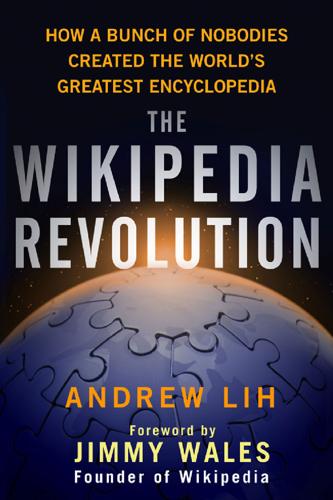
The Wikipedia Revolution: How a Bunch of Nobodies Created the World's Greatest Encyclopedia
by
Andrew Lih
Published 5 Jul 2010
On the face of it, it was a pretty crazy idea: Open up an entire Web site where anyone, even strangers, could modify any page. The conventional wisdom about Internet safety was that everything had to be locked down. Quality meant being selective and restricting who could participate in editing. But WikiWikiWeb completely tore down this barrier to entry, and encouraged people to create or change information, immediately. After discussing it for an hour with Kovitz, Sanger thought it was a revelation: “Instantly I was considering whether wiki would work as a more open and simple editorial system for a free, collaborative encyclopedia, and it seemed exactly right.”

Behind the cloud: the untold story of how Salesforce.com went from idea to billion-dollar company--and revolutionized an industry
by
Marc Benioff
and
Carlye Adler
Published 19 Nov 2009
As Play #48: Abandon Strategies That No Longer Serve You As we grew distribution, we soon discovered that some of the strategies that had proven successful in the past no longer made sense as we evolved. A perfect example was the free trials, which had previously been so essential to our success. A few months into our effort to win enterprise clients, Frank van Veenendaal came to me concerned that the free trial—and the low barrier to entry—was doing us a disservice. Frank believed that customers weren’t thinking as carefully about their salesforce.com implementation as they would had it required a larger investment. He found that users weren’t conducting appropriate due diligence and weren’t striving to win the support of their executive committees.

Doing Good Better: How Effective Altruism Can Help You Make a Difference
by
William MacAskill
Published 27 Jul 2015
Entrepreneurship Entrepreneurship is an extremely promising option, giving you the potential to effect massive change, build valuable career capital, and, if pursuing for-profit entrepreneurship, make large profits that can be donated to effective causes. Entrepreneurship is also an area with lower barriers to entry than other careers, and many people without college degrees have become successful entrepreneurs. However, most start-up enterprises fail, and one has to be prepared to accept that fact. In addition, entrepreneurship usually comes with very long working hours and high levels of stress. Not everyone is cut out to start his or her own business.
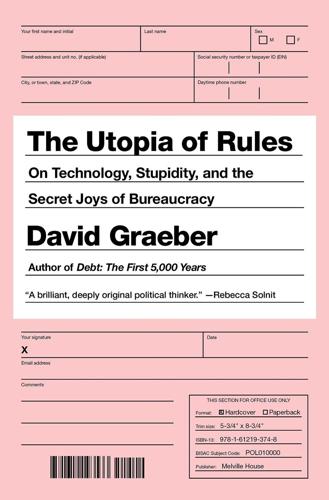
Bureaucracy
by
David Graeber
Published 3 Feb 2015
If it failed, then no manager who wants to keep his or her job will approve spending money trying to revive it. If it succeeded, then it’s patented and entry to the market is presumed to be unattainable, since the first people who thought of it will have “first-mover advantage” and will have created “barriers to entry.” The number of seemingly promising ideas that have been crushed in this way must number in the millions.109 I could go on, but I assume the reader is getting the idea. A timid, bureaucratic spirit has come to suffuse every aspect of intellectual life. More often than not, it comes cloaked in a language of creativity, initiative, and entrepreneurialism.
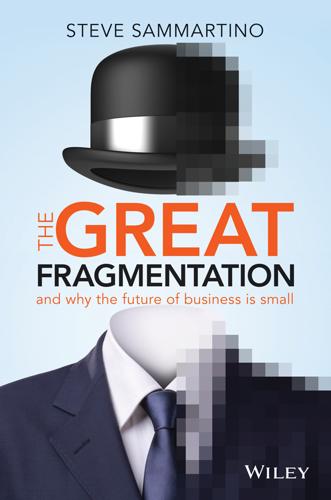
The Great Fragmentation: And Why the Future of All Business Is Small
by
Steve Sammartino
Published 25 Jun 2014
There are now more niches in every city maintained by a group itself, not by mass marketers looking for the next pop-culture hit. In fact, niches can now build themselves sustainable micro-economies around their interest. The community itself becomes the designer, producer, promoter and end user. They can do this because the barriers to entry are inconsequential. Chances are we can find that niche — whether it’s the local break-dancing scene or drone flying club — wherever we go. All cities are fragmenting to have it all. But at the same time each city has never been more fragmented and differentiated within its walls. Figure 6.1 depicts this fragmentation of cities.
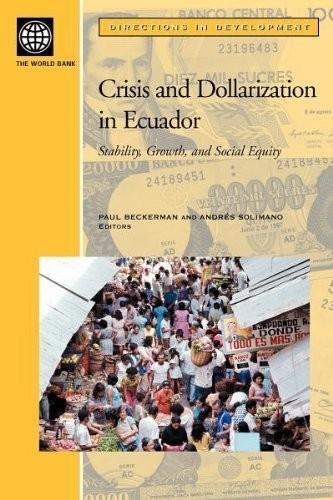
Crisis and Dollarization in Ecuador: Stability, Growth, and Social Equity
by
Paul Ely Beckerman
and
Andrés Solimano
Published 30 Apr 2002
A country with a currency board or full dollarization but incomplete financial integration would be at a disadvantage in its ability to absorb external shocks compared with Panama. On this point, Moreno Villalaz (1999a) compares Hong Kong (China) and Panama. Although Hong Kong uses a currency board and has a high 90 CRISIS AND DOLLARIZATION IN ECUADOR degree of capital mobility, it still maintains high interest rate differentials. Barriers to entry into the banking business and the requirement that banks balance their Hong Kong dollar and U.S. dollar accounts separately largely explain its relatively low degree of financial integration. For countries without currency-board arrangements or dollarization, financial integration is even more distant.

Simple Rules: How to Thrive in a Complex World
by
Donald Sull
and
Kathleen M. Eisenhardt
Published 20 Apr 2015
Stuart, “Value-Based Business Strategy,” Journal of Economics & Management Strategy 5, no. 1 (1996): 5–24. Strategy is about both how a firm creates economic value and how it captures that value in the face of competition. Much of the research in the strategy field focuses on how to capture value through barriers to entry, bargaining power, or resources and capabilities. In practice, however, we found that managers struggled to articulate how they could create economic value in the first place, which renders capturing and sustaining it a moot point. Thus our analysis centered on value creation, with value capture introduced later in the discussions. [>] For another example of: Donald Sull and Uri Meirovich, “Primekss: Simple Rules for Selecting Partners,” London Business School case study and author’s interview with Primekss executives, 2012. [>] When Janis looked for: Facts on concrete from James Mitchell Crow, “The Concrete Conundrum,” Chemistry World, March 2008, 62–66; and Nobuo Tanaka and Bjorn Stigson, Cement Technology Roadmap 2009 (Paris: International Energy Agency, 2009). [>] How will we provide: These three questions (or close variants) have been used to articulate a company’s strategy for decades.
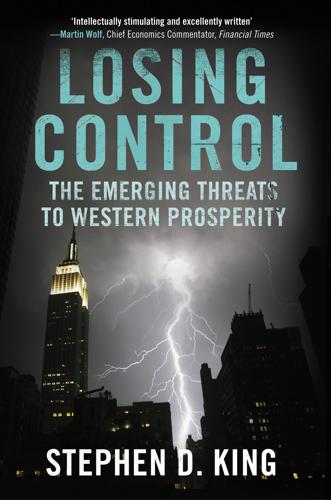
Losing Control: The Emerging Threats to Western Prosperity
by
Stephen D. King
Published 14 Jun 2010
Those who earn rents thus receive a higher income than they require to remain engaged in a particular line of economic activity. For some, bankers’ bonuses fall into this category. Others might worry more about the earnings of top soccer, baseball and film stars. Obvious ways to increase rental payments include the development of economies of scale, the creation of barriers to entry which keep competitors out, becoming a Hollywood superstar, friendly government regulation (otherwise known as protectionism), military action, bribery, racism in its many forms and slavery. Apart from Hollywood, these examples suggest that nation states have strong incentives to collude with commercial interests.
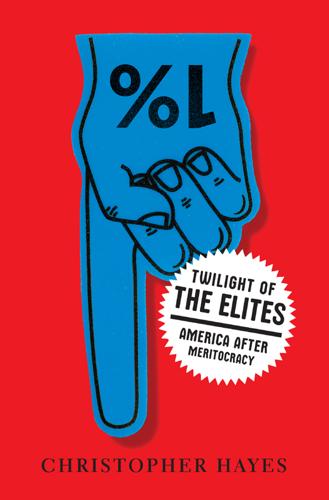
Twilight of the Elites: America After Meritocracy
by
Chris Hayes
Published 11 Jun 2012
Here in the United States, “meritocracy” was adopted as the perfect name for the American system of testing, schooling, and social differentiation that, in the wake of the social upheaval of the 1960s, would produce a new, more diverse elite to replace the inbred Eastern WASP establishment. But of course, long before Young coined the phrase and Americans adopted it, something like “meritocracy” had always been near the core of the American ideal. Alexis de Tocqueville painted a picture of a place in which the old barriers to entry of birth, land, and title had been washed away, a society where each man could achieve as much as his talent and determination would yield him: “The Americans never use the word peasant,” he noted, “because they have no idea of the peculiar class which that term denotes.” But while our founders were skeptical of the British Crown they overthrew, they were not particularly egalitarian.
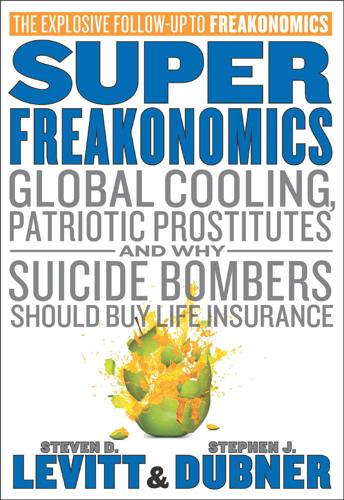
SuperFreakonomics
by
Steven D. Levitt
and
Stephen J. Dubner
Published 19 Oct 2009
She had saved money but not enough to retire. So she began casting about for her next career. She got her real-estate license. The housing boom was in full swing, and it seemed pretty simple to transition out of her old job and into the new, since both allowed a flexible schedule. But too many other people had the same idea. The barrier to entry for real-estate agents is so low that every boom inevitably attracts a swarm of new agents—in the previous ten years, membership in the National Association of Realtors had risen 75 percent—which has the effect of depressing their median income. And Allie was aghast when she realized she’d have to give half of her commission to the agency that employed her.

When to Rob a Bank: ...And 131 More Warped Suggestions and Well-Intended Rants
by
Steven D. Levitt
and
Stephen J. Dubner
Published 4 May 2015
I feel that no one should have to take a job to make a living that is against his or her own moral judgment. Q. How would legalization affect your business model? A. I’m sure it would cause me to lower my rates. I’m sure more people would take up prostitution as a profession, and I am sure more men would partake in the activity. That said, legalization does not remove all the barriers to entry. The job still would have a huge negative stigma associated with it, both for the escorts and the clients. In countries like Canada, enforcement of prostitution laws is extremely lax, and while rates are lower, they aren’t wildly different. So there would still be men out there afraid of their wives finding out, and I still wouldn’t want to share my job title with my family.

Big Data: A Revolution That Will Transform How We Live, Work, and Think
by
Viktor Mayer-Schonberger
and
Kenneth Cukier
Published 5 Mar 2013
The system applies big data, too, by analyzing every forum post that students have read and whether they complete their homework correctly to predict the probability that a student who has read a given post will produce correct results, as a way to determine which forum posts are most useful for students to read. These are things that were utterly impossible to know before, and which could change teaching and learning forever. Data exhaust can be a huge competitive advantage for companies. It may also become a powerful barrier to entry against rivals. Consider: if a newly launched company devised an e-commerce site, social network, or search engine that was much better than today’s leaders like Amazon, Google, or Facebook, it would have trouble competing not simply because of economies of scale and network effects or brand, but because so much of those leading firms’ performance is due to the data exhaust they collect from customer interactions and incorporate back into the service.
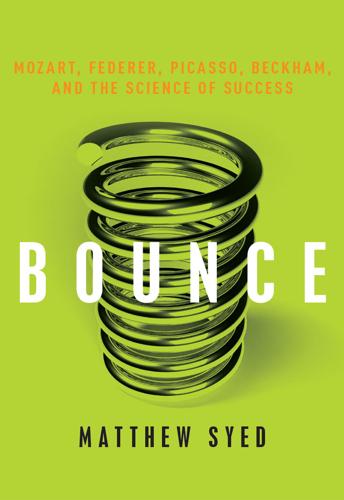
Bounce: Mozart, Federer, Picasso, Beckham, and the Science of Success
by
Matthew Syed
Published 19 Apr 2010
Perhaps the key thing to note is that the over-representation of African Americans in professional sport is almost precisely mirrored by an underrepresentation in positions of economic power. This suggests that the sporting success of African Americans is the consequence not of genetics but of unequal opportunity; that blacks are driven into professional sport due to barriers to entry in other spheres of economic life. This explanation becomes compelling when you consider a groundbreaking experiment in 2003 by Marianne Bertrand and Sendhil Mullainathan, two leading economists. They drafted five thousand CVs and placed archetypal black names such as Tyrone or Latoya on half of them, and white names such as Brendan or Alison on the other half.
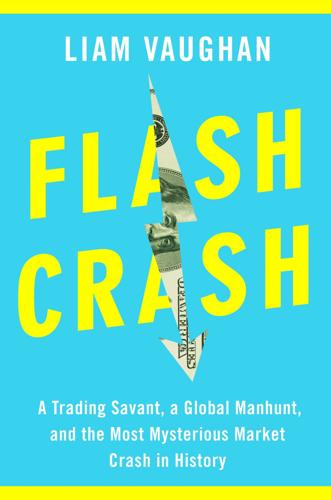
Flash Crash: A Trading Savant, a Global Manhunt, and the Most Mysterious Market Crash in History
by
Liam Vaughan
Published 11 May 2020
Exchanges charged tens of thousands of dollars a month to allow customers to place their servers next to the exchange’s to minimize any lag in receiving data. The result was, in the words of Eric Budish at the University of Chicago Booth School of Business, a “never-ending socially-wasteful arms race for speed.” Only the top-tier firms could afford to keep up, meaning barriers to entry were high. And the exchanges gave their most valued customers sweetheart deals that slashed their cost of trading to a fraction of other participants’. Point-and-click traders had no chance. By the time a human being had seen, processed, and reacted to a buy signal or news of an interest rate cut, the market had entirely absorbed the information and any value had evaporated.

Listen, Liberal: Or, What Ever Happened to the Party of the People?
by
Thomas Frank
Published 15 Mar 2016
Their enthusiasm for the measure was obvious and much discussed at the time, as was that of Big Pharma: Obamacare essentially made our patronage of these industries mandatory. A forgotten school of left-wing historians used to argue that the regulatory state began not with public-minded statesmen cracking the whip and taming big biz, but just the opposite—with business leaders deliberately inviting federal regulation as a way to build barriers to entry and give their cartels the protection of law. Long-ago giants of steel, tobacco, telephones, and meatpacking all welcomed federal regulation because of the effects it would have on smaller competitors. That old style of regulation brought ancillary benefits to the public, of course: better food, a standardized phone system.

The New Rules of War: Victory in the Age of Durable Disorder
by
Sean McFate
Published 22 Jan 2019
For-profit warriors are not bound by political considerations or patriotism; in fact, this is one of their chief selling points. They are market actors, and their main restraint is not the laws of war but the laws of economics. The implications of this are far reaching. This introduces new strategic possibilities known to CEOs but alien to generals, putting us at risk. Second, the fact of private warfare lowers the barriers to entry for war. Hiring mercenaries allows clients to fight without having their own blood on the gambling table, and this creates what economists call “moral hazard.” Think of moral hazard like renting a car. Some people abuse the heck out of rented automobiles. Want to drive on train tracks at one hundred miles per hour?

Space 2.0
by
Rod Pyle
Published 2 Jan 2019
Virgin Orbit is just one of many new companies entering the smallsat launch arena. Nipping at its heels are dozens of other contenders intending to launch small payloads at reduced prices. It’s a much simpler point-of-entry into the private spaceflight business than flying people. It’s also much easier from a regulatory and insurance point of view, with far lower barriers to entry for new entrepreneurs. There’s a big market for these commercial ventures as well. A 2016 analysis reports that about 3,000 small satellites may be queueing up for launch between now and 2022, and this does not include the large constellations of broadband-supplying satellites that will be launched by SpaceX and others.

Quit Like a Millionaire: No Gimmicks, Luck, or Trust Fund Required
by
Kristy Shen
and
Bryce Leung
Published 8 Jul 2019
Using a payment reduction plan is like eating one of those white pills in Pac-Man: it doesn’t make the ghosts go away, but at least they stop chasing you for a little while. There are four types of income-driven repayment plans. REPAYE—Revised Pay as You Earn REPAYE has the lowest barrier to entry and is the most forgiving income-driven repayment plan. It’s open to all graduates with federal direct loans, regardless of when you took out the loan. You are even eligible for loan forgiveness in twenty years for undergraduate degrees and twenty-five years for graduate degrees. On this plan, the maximum you will ever pay is 10 percent of your discretionary income, which is defined as after-tax income minus 150 percent of the federal poverty level.6 At the time of this writing, if you’re single, the US poverty level is $12,140, so 150 percent of the poverty level is $18,210 ($12,140 × 1.5).

The Digital Party: Political Organisation and Online Democracy
by
Paolo Gerbaudo
Published 19 Jul 2018
It is constantly busy eliciting feedback from its member/user base, crowdsourcing ideas from it, balloting on issues, measuring the response of the public, and modifying its strategy and messaging accordingly. It is a party that adopts the free sign-up process of social media and apps, to lower as much as possible the barrier to entry and its definition of membership, and exploit the close-to-zero marginal costs of communicating online with an ever-expanding base of members. In other words, the digital party is the translation of the business model and organisational innovation of digital corporations to the political arena and their application to the idealistic project of the construction of a new democracy in digital times.

Artificial Unintelligence: How Computers Misunderstand the World
by
Meredith Broussard
Published 19 Apr 2018
; Cohoon, Wu, and Chao, “Sexism: Toxic to Women’s Persistence in CSE Doctoral Programs.” 27. Natanson, “A Sort of Everyday Struggle.” 7 Machine Learning: The DL on ML In order to create a more just technological world, we need more diverse voices at the table when we create technology. To do this, we need to employ conventional solutions like reducing barriers to entry and addressing the “leaky pipeline” issues that make mid-career professionals drop out or stall on their way to the top. I think we also need to add an unconventional solution: we need to add nuance to the way we talk about all things digital. This is easier said than done. One illustration of the difficulty of talking about computer science comes from an xkcd comic by Randall Munro.

Finding Alphas: A Quantitative Approach to Building Trading Strategies
by
Igor Tulchinsky
Published 30 Sep 2019
The methods of quick trading contrast with the long-term methods underlying buy-and-hold and value investing strategies. It may seem quite unremarkable that a trader can buy and sell an instrument on the same day, but day trading is a relatively new concept. Although the practice can be traced back to 1867 and the creation of the first ticker tape, there were significant barriers to entry at that time, and as a result this type of trading was not popular among the general population. Day trading began to gain in popularity with the creation of electronic communication networks like Instinet in 1969 and the National Association of Securities Dealers Automated Quotation System, or Nasdaq, in 1971, as well as the abolishment of fixed commission rates in 1975.

Live Work Work Work Die: A Journey Into the Savage Heart of Silicon Valley
by
Corey Pein
Published 23 Apr 2018
Some were proven yet not easily attainable, such as living off the compound interest from one’s investments and savings. Others—unlike Corey’s methods—were elaborate, unworkable, or illegal, such as pyramid schemes and spambot-powered credit card fraud. Compared to more reliable methods of generating passive income, like inheriting a trust fund, these scams had a relatively low barrier to entry. Either way, the appeal was self-evident. “It comes to a point where trading your time for money—it’s limiting, you know?” Corey said. Oh, I knew. If Fiverr didn’t produce a fast fortune, there was always the Next Big Thing. “Fiverr is like the new eBay,” he said. His digression took a pensive turn.

The New Tycoons: Inside the Trillion Dollar Private Equity Industry That Owns Everything
by
Jason Kelly
Published 10 Sep 2012
For his part, Schwarzman attributes his quest for the next product line to his investment banking days—the overall competitiveness among firms and the need to keep coming up with new products and services to offer corporate clients, whether it was stock and bond underwriting, merger advice, or the increasingly complex debt that defined Wall Street during the last two decades. He also saw waves of wanna-be bankers hang out shingles and be successful. “When you start out working in investment banking, you learn there are no barriers to entry in this business,” he said. Notes 1. David Carey and John Morris, King of Capital (New York: Crown Business, 2012). 2. Alex Pareene, “Billionaire Private Equity Mogul Will Get America Back to Work by Complaining about Government Spending,” Salon, September 12, 2011. www.salon.com/2011/09/12/schwarzman_dimwit/ 3.

Ask Your Developer: How to Harness the Power of Software Developers and Win in the 21st Century
by
Jeff Lawson
Published 12 Jan 2021
Thanks to software, it’s just as easy to do that for medical staff as it is for ride shares. Only the delusion that there’s no connection between software and patient care prevents that from becoming the norm. The digital revolution is fundamentally rewriting the rules of general management. Software simultaneously lowers transaction costs, demolishes barriers to entry, and accelerates the pace of change. Companies—and institutions—that cannot cope with this pace and intensity will cease to be relevant. There are few people in the world who are experienced both as software developers and as business executives. That’s what makes Jeff so unique: he has feet in both worlds.

Built on a Lie: The Rise and Fall of Neil Woodford and the Fate of Middle England’s Money
by
Owen Walker
Published 4 Mar 2021
In 1997 an insurance analyst at Schroders Securities called Paul Hodges wrote an influential paper, arguing that big tobacco companies were much less exposed to potential litigation than was widely believed, and therefore were undervalued. Woodford lapped up the argument and began to see cigarette makers as highly profitable businesses with captive customer bases. He also believed the market had such a high barrier to entry that there was little chance of the biggest companies being disrupted by new players. Woodford was one of the largest shareholders in his former employer, British American Tobacco, maker of Lucky Strike and Benson & Hedges, and only railed against the company’s executives when they failed to increase the company’s dividend for the first time in more than twenty years, leading to a 4 per cent fall in its share price.

The Capitalist Manifesto
by
Johan Norberg
Published 14 Jun 2023
Unfortunately, there is a way we consolidate the giants’ position even when their time is up, and it is paradoxically the regulations we believe are a way of controlling them. Complicated regulations create a fixed cost for established companies that they handle with divisions of specialists. But for startups with few employees and little capital, these regulations act as direct barriers to entry. Research on the US economy shows that market concentration grew the most in sectors where regulations increased the fastest.31 It is in this context that we should see Facebook’s new-found interest in abolishing section 230 of the Federal Communications Decency Act, which means that American platforms are allowed to moderate content without making themselves open to legal action for what others publish on their site.
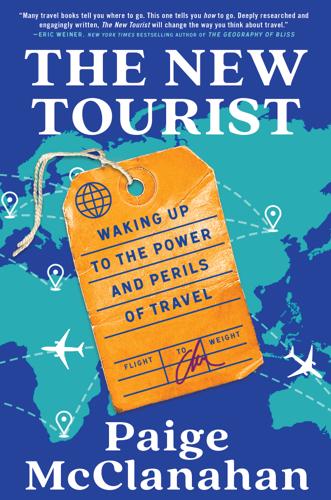
The New Tourist: Waking Up to the Power and Perils of Travel
by
Paige McClanahan
Published 17 Jun 2024
.; all but one was Caucasian; and nine of the twelve listed were male (not counting Jan Morris, a trans woman who transitioned in midlife).11 Salon’s “Top Ten Travel Books” of the twentieth century included only two books by women (including one by Morris), and only one by a non-Caucasian.12 From this perspective, the rise of social media as the world’s newest form of travel writing could be seen as a form of liberation for both the producers and consumers of the genre. No longer are budding travel writers limited by the slow-to-shift strictures and often discriminatory barriers to entry of the modern newspaper, magazine, or publishing industries. And no longer are those of us who enjoy travel writing forced to choose from such a narrow range of perspectives. Where we used to draw our travel inspiration from articles in National Geographic, the local newspaper, or the travel section at our favorite bookstore—the classic hangouts of the twentieth-century travel writer—we now have access to millions of potential sources of information and inspiration.

Health and Safety: A Breakdown
by
Emily Witt
Published 16 Sep 2024
Inspired by the membership systems of 1970s New York dance parties, Bossa issued membership cards to its regulars, who didn’t have to pay a cover on the weekend. It wasn’t just the music that was interesting but also the fashion, the graphic design of its party flyers, the actually good cocktails, the bartenders, the humor. There were other places to hear electronic music at the time but none with such a low barrier to entry and with music every night. A can of Modelo cost four dollars. In the first weeks of our relationship, Andrew and I started going to Bossa two or three times a week, sometimes just for a cocktail after work, other times to do drugs in the bathroom and dance until it closed at four. During that first late summer the air-conditioning, the darkness, and the scent of the fog gave us the sense that we were entering a portal out of the sweltering city, and the bar served the sparkling wine dry and cold, just like at Berghain.

Vassal State
by
Angus Hanton
Published 25 Mar 2024
KKR’s co-president, Joe Bae, put the firm’s purchase in context: ‘Our active investment pace since the beginning of Covid has been quite intentional… [we are] capitalising on the unprecedented level of volatility and dislocation in the markets to buy high-quality businesses at attractive prices.’45 Similarly, Biffa was bought by private equity group Energy Capital Partners (ECP), of New Jersey, in September 2022 for £2.1 billion.46 ECP said it was attracted by the strong brand and ‘powerful barriers to entry’.47 In other words, Biffa is a supplier to the government in a sector where new competitors are rare and will not be nurtured by the state, so its margins will stay high. Now there are no large UK-owned listed waste companies. Total numbers and the lack of measurement While two large departments (the NHS and MOD) have a particularly large dependence on US suppliers, contracts throughout government are routinely won by US companies or their UK distributors.
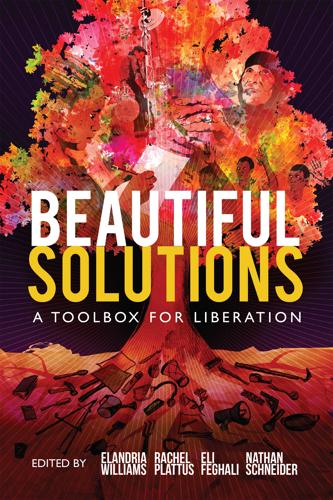
Beautiful Solutions: A Toolbox for Liberation
by
Elandria Williams, Eli Feghali, Rachel Plattus
and
Nathan Schneider
Published 15 Dec 2024
WRITTEN BY HAFIDHA ACUAY DIVYA SIDDARTH Acuay is co-director and trainer at PeoplesHub. Siddarth is a researcher on technology and democracy, who has worked with women workers in India. SEWA’s organizational structure underpins its pursuit of these two goals. It is an open organization, with minimal barriers to entry: although more than half of SEWA’s current member base is located in Gujurat, union membership is open to self-employed women all over India, with a low annual fee of five rupees. Further, SEWA operates through a combination of decision-making systems, with varying levels of direct and indirect control.
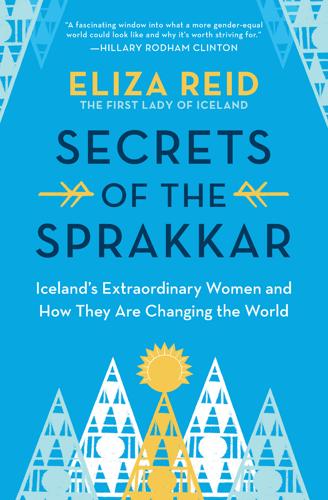
Secrets of the Sprakkar
by
Eliza Reid
Published 15 Jul 2021
Thousands of well-trained volunteers, including a growing number of women, perform heroic tasks in the countryside—and in the towns—as part of highly respected search and rescue squads that are based around the country. Despite the physical demands of the job, these squads are perhaps one of the country’s most gender-blind organizations. Although women are still in the minority, their numbers are growing. The barriers to entry—the physical and mental requirements that need to be met to become members of these elite groups—are high for everyone, so there is no additional need for women specifically to show their mettle. Here, perhaps, we see the best embodiment of success achieved without regard to gender. Heida Gudný Ásgeirsdóttir lives at the literal end of the road in the southern region of Iceland, about midway between Reykjavík in the west and the town of Egilsstadir in the east.

Valuation: Measuring and Managing the Value of Companies
by
Tim Koller
,
McKinsey
,
Company Inc.
,
Marc Goedhart
,
David Wessels
,
Barbara Schwimmer
and
Franziska Manoury
Published 16 Aug 2015
As you would expect, these industries have consistently high returns because they are scalable (software) or are protected by brands or patents. Persistently low returns characterize paper and forest products, railroads, and utilities. These are commodity industries in which price premiums are difficult to achieve because of low barriers to entry, commodity products, or regulated returns. Perhaps surprisingly, this group also includes department stores. Like commodity industries, EXHIBIT 6.7 Persistence of Industry ROICs Persistently high • Household and personal products • Beverages • Pharmaceuticals • Software Persistently medium • Machinery • Auto components • Electrical equipment • Restaurants TTrending down • Trucking • Advertising • Health-care facilities • Automobiles Cyclical • Chemicals • Semiconductors • Oil and gas • Metals and mining Persistently low • Paper and forest products • Railroads • Utilities • Department stores TTrending up • Health-care equipment • Aerospace and defense 112 RETURN ON INVESTED CAPITAL department stores can achieve little price differentiation, so, as a rule, they realize persistently low returns.
…
Pretax ROIC equals operating margin times capital turnover (revenues divided by invested capital), and so on. Once you have calculated the historical drivers of ROIC, compare them with the ROIC drivers of other companies in the same industry. You can then weigh this perspective against your analysis of the industry structure (opportunities for differentiation, barriers to entry or exit, etc.) and a qualitative assessment of the company’s strengths and weaknesses. 212 ANALYZING PERFORMANCE To illustrate, in 2013, UPS’s ROIC (16.9 percent) was nearly three times that of FedEx (6.2 percent). Using the ROIC tree in Exhibit 10.3, we can see that UPS’s operating margin was 12.6 percent versus 9.8 percent for FedEx.
…
This practice relieves them of having to forecast a growth rate, since growth in this case neither adds nor destroys value. For some businesses, this assumption is too conservative. For example, both Coca-Cola’s and PepsiCo’s soft-drink businesses earn high returns on invested capital, and their returns are unlikely to fall substantially as they continue to grow, due to the strength of their brands, high barriers to entry, and limited competition. For these businesses, an assumption that RONIC equals WACC would understate their values.3 This problem applies equally to almost any business selling a product or service that is unlikely to be duplicated, including many pharmaceutical companies, numerous consumer products companies, and some software companies.

The Rise of the Network Society
by
Manuel Castells
Published 31 Aug 1996
As a result, everybody was technologically able to adopt the networking form of organization, provided the firm was capable of managerial innovation.67 On the other hand, Dieter Ernst has shown that the convergence between organizational requirements and technological change has established networking as the fundamental form of competition in the new, global economy. Barriers to entry in the most advanced industries, such as electronics or automobiles, have sky-rocketed, making it extremely difficult for new competitors to enter the market by themselves, and even hampering large corporations’ ability to open up new product lines or to innovate their own processes in accordance with the pace of technological change.68 Thus, cooperation and networking offer the only possibility of sharing costs, and risks, as well as keeping up with constantly renewed information.
…
But the price to pay for inclusion in the system is to adapt to its logic, to its language, to its points of entry, to its encoding and decoding. This is why it is so critical for different kinds of social effects that there should be the development of a multinodal, horizontal network of communication, of Internet type, instead of a centrally dispatched multimedia system, as in the video-on-demand configuration. The setting of barriers to entry into this communication system, and the creation of passwords for the circulation and diffusion of messages throughout the system, are critical cultural battles for the new society, the outcome of which predetermines the fate of symbolically mediated conflicts to be fought in this new historical environment.

Empire of Pain: The Secret History of the Sackler Dynasty
by
Patrick Radden Keefe
Published 12 Apr 2021
By 2025, he hoped, China might overtake the United States as the number one market for the Sacklers’ products. Given China’s fraught history with opioids—the country fought the Opium Wars in the nineteenth century to stop Britain from dumping the drug there, which had given rise to a scourge of addiction—one might assume that there would be formidable barriers to entry when it came to an effort by Mundipharma to change the culture of prescribing. But the company was ravenous for new customers and prepared to engage in marketing tactics that were extreme even by the standards of Purdue. Mundipharma China had been established back in 1993, the same year that the Arthur M.
…
How could you possibly isolate the impact of OxyContin? The economists were curious about the role of drug marketing, and when they obtained some internal Purdue documents, which had been unsealed in litigation, they made an interesting discovery. When it first started marketing the drug back in 1996, Purdue identified a significant barrier to entry in a handful of U.S. states. Some states had what was known as “triplicate” programs: a policy that required doctors to fill out special triplicate prescription forms anytime they wanted to prescribe Schedule II narcotics. A copy of each form would be filed with the state, which allowed state agencies to maintain a prescription database, in order to monitor for diversion or other irregularities.
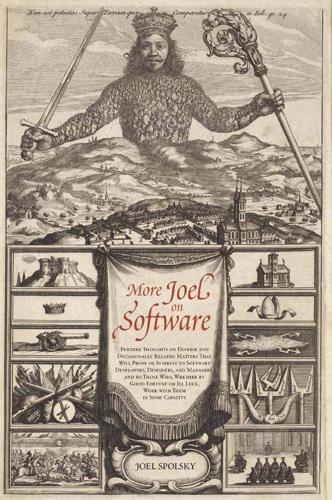
More Joel on Software
by
Joel Spolsky
Published 25 Jun 2008
Boy, I would love nothing more than to scrap installable FogBugz and run everything on our servers . . . we’ve got racks and racks of nice, well-managed Dell servers with plenty of capacity, and our tech support costs for the hosted version are zero. Life would be much easier. But we’d be making so much less money, we’d be out of business. The one thing that so many of today’s cute startups have in common is that all they have is a simple little Ruby-on-Rails Ajax site that has no barriers to entry and doesn’t solve any gnarly problems. So many of these companies feel insubstantial and fluffy because, out of necessity (the whole company is three kids and an iguana), they haven’t solved anything difficult yet. Until they do, they won’t be solving problems for people. People pay for solutions to their problems.

Cyber War: The Next Threat to National Security and What to Do About It
by
Richard A. Clarke
and
Robert Knake
Published 15 Dec 2010
Producing videos of beheadings and spreading radical interpretations of the Koran across the Internet has allowed terrorist groups to reach a wide audience and to do so with relative anonymity. While al Qaeda has thus far not been capable of staging a cyber attack, that could very well change. As with any developing technology, the cost and other barriers to entry are going down each year. Staging a devastating cyber attack would not require a major industrial effort like building a nuclear bomb. Understanding the control software for an electric grid, however, is not a widely available skill. It is one thing to find a way to hack into a network, and quite another to know what to do once you’re inside.
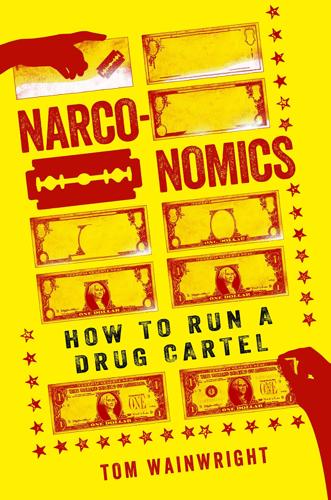
Narconomics: How to Run a Drug Cartel
by
Tom Wainwright
Published 23 Feb 2016
This means that the need for a “network” vanishes—which in turn means that there is no longer much of an incumbent advantage. Sellers are forced to compete more seriously on price, quality, and customer service, rather than being able to stay in business simply because they have built the rare set of contacts required to make it work. What’s more, it is relatively easy for new dealers to enter the market, as barriers to entry are extremely low. Buying wholesale quantities of drugs no longer requires connections in the international smuggling business, and selling them no longer means having to hang around on street corners or in nightclubs. Just as sites such as Etsy have made it easy for amateur jewelers to sell their wares, without the hassle and expense of opening a market stall, the Dark Web allows anyone with a laptop and an appetite for risk to set up a drug-dealing enterprise.

The Sharing Economy: The End of Employment and the Rise of Crowd-Based Capitalism
by
Arun Sundararajan
Published 12 May 2016
Also, as I mentioned in chapter 4, the latter scenario—a threat to any provider-dependent platform—is especially likely for taxi or chauffeured urban transportation platforms like Lyft and Uber, and geography-specific platforms like Instacart, TaskRabbit and Handy, where a majority of demand from each consumer is concentrated in a specific city, making network effects from global reach a less effective barrier to entry.) These risks can be mitigated partially by a worker safety net that is platform specific and creates a longer-term partnership with providers. While it may be ideal if platforms adopted this thinking and embraced worker protection as a business strategy, it seems likely that, as has been in the case in the past, worker protections will also be contingent on the emergence of new types of worker alliances.
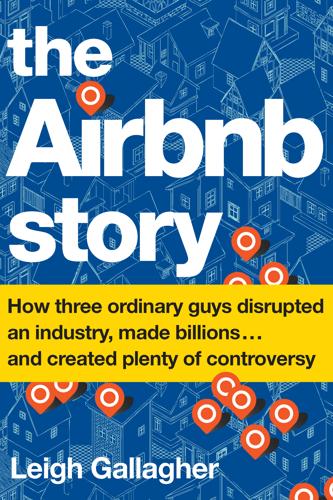
The Airbnb Story: How Three Ordinary Guys Disrupted an Industry, Made Billions...and Created Plenty of Controversy
by
Leigh Gallagher
Published 14 Feb 2017
Airbnb doesn’t release its financials, but investor estimates put revenue at $1.6 billion for 2016, with earnings before interest, taxes, depreciation, and amortization (EBITDA) of $156 million; $2.8 billion in 2017, with EBITDA of $450 million; and as much as $8.5 billion in revenue and $3.5 billion in EBITDA by 2020. It is the combination of these numbers, along with the company’s efficient business model, its lead in a category with high barriers to entry, its strong founding and management team, and the size of the travel industry—$7.2 trillion—that has kept investors coming back. “What makes [Airbnb] interesting right now is they’ll probably be the most successful of this whole crop,” says Max Wolff, market strategist for 55 Capital Partners.
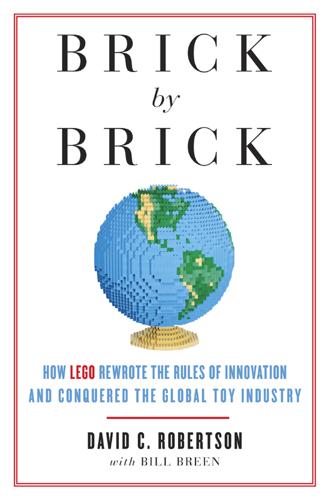
Brick by Brick: How LEGO Rewrote the Rules of Innovation and Conquered the Global Toy Industry
by
David Robertson
and
Bill Breen
Published 24 Jun 2013
From 2007 to 2011, all through the worst of the global recession, the LEGO Group’s pretax profits quadrupled, far outstripping the titans of the toy industry, Hasbro and Mattel, which were mired in the single digits over the same period. From 2008 to 2010, LEGO grew its profits faster than Apple, despite competing in an industry with few barriers to entry, aggressive global competition, fickle customers, a production cost disadvantage, and no patent protection on its core product—the LEGO brick. LEGO achieved those results not by breaking with business convention but by building within it. Business literature is rife with examples of daring, rule-busting outfits whose heretical management practices are celebrated for unleashing organic growth.
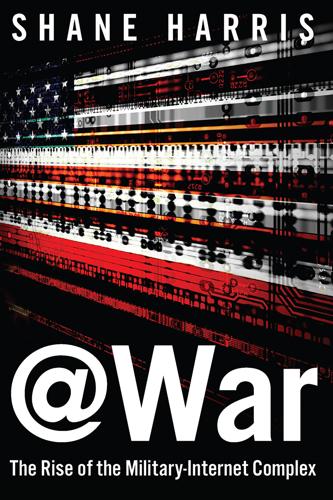
@War: The Rise of the Military-Internet Complex
by
Shane Harris
Published 14 Sep 2014
The NSA was at once captivated by the strategic advantage the United States could have if it penetrated the information networks that were then spreading around the globe. And yet officials were anxious that the very kinds of cyber weapons they were developing could be used against the United States. The NSA was full of brilliant cryptographers and computer scientists, but they knew there was a low barrier to entry on this new battlefield. The knowledge to exploit networks was advancing as fast as the networks themselves. Cyber warfare would not be the province of nations alone. Soon the cyber war fever spread beyond the NSA. By the late 1990s the air force was creating offensive cyber teams, under the direction of a task force that was initially set up to defend the service’s networks.
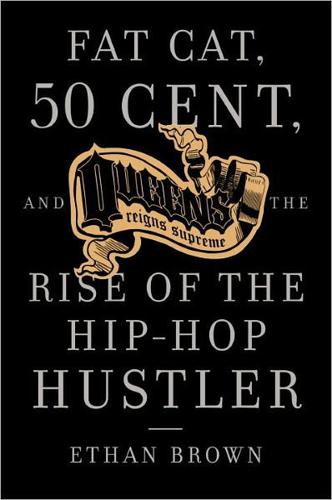
Queens Reigns Supreme: Fat Cat, 50 Cent, and the Rise of the Hip Hop Hustler
by
Ethan Brown
Published 22 Nov 2005
If the turnaround for cocaine and heroin users was measured in hours or days, the turnaround for crack was just minutes. Crack was a godsend for the low-level, hand-to-hand dealers grindin’ on the street; suddenly, an individual hustler could pull in thousands of dollars a day. By lowering the barriers to entry so significantly, crack democratized the drug trade: Newcomers could share in a business that had long been inaccessible thanks to the monopolistic practices of the established crews like the Nichols organization and the Supreme Team. This in turn meant that the streets were swarmed with naïve, inexperienced hustlers.

The Entrepreneurial State: Debunking Public vs. Private Sector Myths
by
Mariana Mazzucato
Published 1 Jan 2011
Some have interpreted as a result that it is high growth rather than size that matters, and that the best that government can do is to provide the conditions for growth through policies that foster innovation. Bloom and Van Reenen (2006) argue that instead of having tax breaks and benefits target SMEs, the best way to support small firms is to ‘ensure a level playing field by removing barriers to entry and growth, among firms of all sizes, enforcing competition policy, and strongly resisting the lobbying efforts of larger firms and their agents’. But as we will see in Chapters 3 and 5, often the most innovative firms are precisely those that have benefitted the most from direct public investments of different types, making the association between size and growth much more complex.

The Second Machine Age: Work, Progress, and Prosperity in a Time of Brilliant Technologies
by
Erik Brynjolfsson
and
Andrew McAfee
Published 20 Jan 2014
An even larger number of blog posts, Facebook stories, and YouTube videos have been created in the sharing economy, creating economic value if not necessarily direct income for their creators. As we’ve seen, however, opportunities to create new products don’t necessarily come with big paychecks. A superstar or long-tail economy with low barriers to entry is still one with far more inequality. The Power Curve Nation An economy dominated by winner-take-all markets has very different dynamics than the industrial economy to which we are accustomed. As we discussed at the beginning of the chapter, the earnings of bricklayers will vary a lot less than the winner-take-all earnings of app developers, but that’s not the only difference.
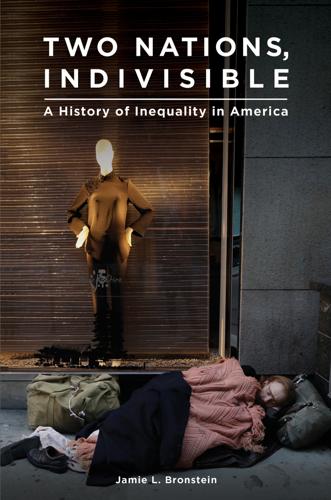
Two Nations, Indivisible: A History of Inequality in America: A History of Inequality in America
by
Jamie Bronstein
Published 29 Oct 2016
Historians have suggested that inequality of distribution, variable trade cycles, urbanization, and the ease with which diseases could travel along new trade routes may have been to blame.11 In his book Democracy in America, written after an 1831 tour of the United States, the Frenchman Alexis de Tocqueville praised American social and economic mobility.12 Of course the second quarter of the nineteenth century saw the making of many fortunes in diverse industries. The Astor family made a fortune through fur-trading, shipping, and real estate speculation; the Lowells and Lawrences erected textile factories in New England. But these examples tell only part of the story. Barriers to entry in many fields may have been relatively low, but artisans without family money found it increasingly hard to reach “master mechanic” status.13 Technological advances caused a divergence between the fortunes of the unskilled and those who could afford to employ, or be hired to maintain, the new technologies.14 Nor were the artisans the most disadvantaged.
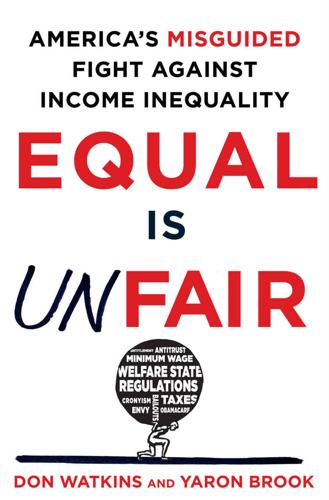
Equal Is Unfair: America's Misguided Fight Against Income Inequality
by
Don Watkins
and
Yaron Brook
Published 28 Mar 2016
The worst villain here is antitrust, which punishes the most successful innovators for the very business activities that make them successful. Cutting prices equals “predatory pricing.” Raising prices equals “price gouging.” Keeping prices in line with competitors equals “collusion.” Buying up businesses and expanding into new markets equal “intent to monopolize.” A superlative product and a legion of passionate customers equal “barriers to entry.” Profits amount to proof of “market failure” and “monopoly power.” If we could do only one thing to encourage innovation and show that we value innovators, it should be to abolish antitrust, totally and immediately—and to apologize to its victims. Creating a Culture of Achievement In a 1995 interview, Steve Jobs said: When you grow up you, you tend to get told that the world is the way it is and your life is just to live your life inside the world, try not to bash into the walls too much, try to have a nice family life, have fun, save a little money.

The End of College: Creating the Future of Learning and the University of Everywhere
by
Kevin Carey
Published 3 Mar 2015
Fathom.com couldn’t give standard Columbia diplomas to people who took its classes because they didn’t satisfy the second or third criteria. So it inadvertently conducted an experiment to determine the market price of online Columbia courses based only on their educational value. The answer turned out to be: almost nothing. The gates around higher education were more than just physical barriers to entry. There was a wall of regulation, money, habit, and social capital surrounding the industry, keeping competitors at bay. Even as technology wrought profound changes in society around them, hybrid universities grew richer and more expensive than they had ever been. 6 Thunder Lizards As The Secret of Life progressed from the basics of how proteins are structured and genes are inherited to the inner workings of human DNA, it was hard not to wonder at the elegance of it all.

Frugal Innovation: How to Do Better With Less
by
Jaideep Prabhu Navi Radjou
Published 15 Feb 2015
For $50, users will receive a kit containing a structural frame and modules (display, keyboard and battery) of their choice that can be snapped together like Lego blocks. Planned for launch in early 2015, Google’s DIY phone, which will run on the open-source Android operating system, will provide longer life cycles for handsets as users will be able to upgrade individual components rather than having to buy an entire new phone. Google also wants to lower barriers to entry for phone hardware manufacturers by enabling hundreds of thousands of developers to design modules without having to pay a fee. All this is great news for the 1 billion smartphone users and 5 billion feature-rich phone users worldwide. Consumers are increasingly dissatisfied with existing offerings According to Eric Von Hippel, professor of technological innovation at MIT, customers who are frustrated with the limited functionality of existing products often tinker with them to extend their functionality and adapt them to fit their own needs.1 While some companies may frown on such deviations from the product’s originally intended use, others have come to view these MacGyvers (named after the improvising hero of the eponymous US TV series) as positive deviants and seek to harness their creativity.

Fully Grown: Why a Stagnant Economy Is a Sign of Success
by
Dietrich Vollrath
Published 6 Jan 2020
Part of this may be that the data I have presented here has been available for only few years, and we just have not had a chance to dig into it for long enough to draw clear connections. But I can lay out some ideas for what was driving the drop in reallocation. One idea is increased market power, as discussed in the previous few chapters. If existing firms are putting up regulatory or financial barriers to entry, then this could explain why the entry of new establishments slowed. An alternative explanation is offered by Jan De Loecker and Jan Eeckhout, who provided the markup data I discussed a few chapters ago. They lay out a simple argument that as firms gain market power, their response to shocks—good or bad—becomes more muted.

Alpha Girls: The Women Upstarts Who Took on Silicon Valley's Male Culture and Made the Deals of a Lifetime
by
Julian Guthrie
Published 15 Nov 2019
Benioff wanted to recruit him, but Harris was worried about getting buy-in from his partners. Harris’s team thought the software would be too easy to write, given their years of experience in the CRM field (including recently at Clarify, Dave Stamm’s company). Harris asked Magdalena, “Why do you think this company will win? What are the barriers to entry?” “There are no barriers,” Magdalena said. “You have to run faster than everyone else. And execute better. That is your only defense—better execution than everyone else.” * * * Soon a small team—including Parker Harris, Frank Dominguez, and Dave Moellenhoff—began working out of a one-bedroom apartment Marc rented next to his own flat on the top of Telegraph Hill, a stone’s throw from Coit Tower.
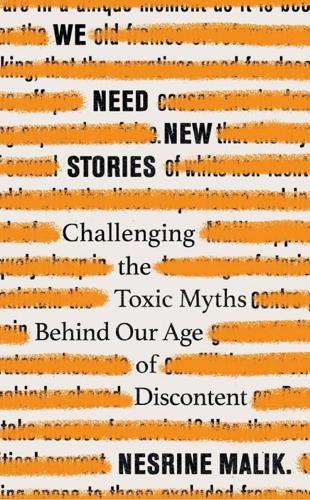
We Need New Stories: Challenging the Toxic Myths Behind Our Age of Discontent
by
Nesrine Malik
Published 4 Sep 2019
But the view that defensive identity politics (its most basic the drive to secure equal rights for historically disenfranchised groups) has fractured political solidarity and created white anger fails to account for the fact that whiteness itself is an identity. In fact, not only is it an identity, it is such a clear and potent one that it has behaved as such quite consistently, erecting high barriers to entry via slavery, colonialism, segregation and institutional discrimination. These barriers created the need for defensive identity politics in the first place. Crucial to this misperception is the belief that whiteness is the default. So much of mythology is down to this defaulting of certain identities – being white, a certain sort of masculine, hailing from a certain class and being a specific form of straight – as base case, neutral, unmotivated by anything as vulgar as colour or gender.
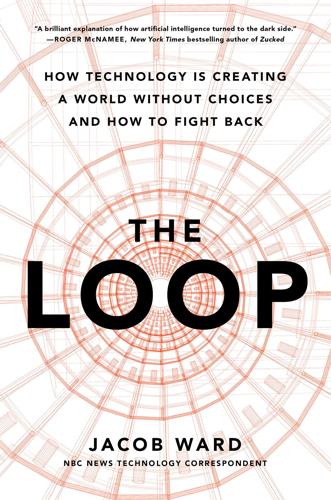
The Loop: How Technology Is Creating a World Without Choices and How to Fight Back
by
Jacob Ward
Published 25 Jan 2022
“To some, the obvious solution to the intent and causation problems,” wrote the attorney Yavar Bathaee in a 2018 article in the Harvard Journal of Law & Technology, “will be to either increase the transparency of AI through standards-based regulation or to impose strict liability.” And yet, he argues, “both approaches would risk stifling innovation in AI and erecting steep barriers to entry.” Whether he’s correct on the effect regulation might have, it’s clear that a company that builds a black box system is currently dodging a whole host of legal and public-relations headaches. It may be that we’ve come to consider black boxes not only more accurate and easier to protect from competitors, but that we’ve also adopted them as a bulwark against legal exposure.

The Weightless World: Strategies for Managing the Digital Economy
by
Diane Coyle
Published 29 Oct 1998
But increasingly, there are even smaller niche markets — the genres of music that play in different kinds of club. It is cheap and easy for somebody to make an album in their bedroom, transmit it over the Internet, and become a star in their own small field. Thanks to the technology, there are no barriers to entry. This will limit the tension created by growing income inequality as long as the tide is rising. For all the social horrors and inequality of the Industrial Revolution, it is easy to forget that it had transformed living standards within a generation. The urban squalor turned out to be better than the desperate rural squalor it replaced.
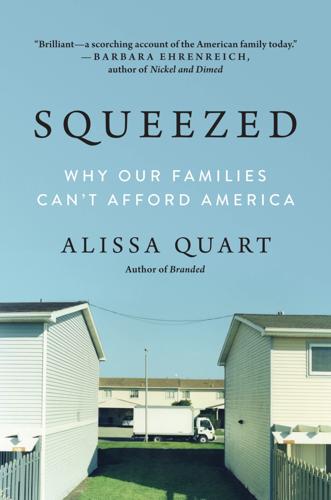
Squeezed: Why Our Families Can't Afford America
by
Alissa Quart
Published 25 Jun 2018
“There was a greater faith in public schools, greater mobility for a kid than for their immigrant parent: he could have helped to support her by working his way through college.” In addition, now more than in the 1950s and ’60s, San Francisco and New York City and their suburbs are predominantly class segregated. Blanca’s story is about barriers to entry into the middle class and the gaps in the systems that serve and support middle-class aspirants. Her story, inevitably, is about the pervasiveness of class privilege. We have met parents who were squeezed by pregnancy or early maternity. We have seen how parents’ work hours have squeezed the time they can spend with their children, and how the cost of day care has forced these parents to work even longer and harder to afford it.

Insane Mode: How Elon Musk's Tesla Sparked an Electric Revolution to End the Age of Oil
by
Hamish McKenzie
Published 30 Sep 2017
Building a new business is hard in any context. “Starting a company,” Musk has said, paraphrasing his friend Bill Lee, an entrepreneur and investor, “is like eating glass and staring into the abyss.” But it’s even harder if you’re trying to enter the auto industry, where the incumbents have been protected by high barriers to entry, such as the costs of building manufacturing plants, finding quality suppliers willing to work with small production numbers, and establishing distribution networks. Starting an electric car company, meanwhile, is a challenge on an altogether different level. History has been no friend to electric cars.

Straight Talk on Trade: Ideas for a Sane World Economy
by
Dani Rodrik
Published 8 Oct 2017
But there would be a compensatory boost to the economy, they argued, that would come from the long-delayed and much-needed opening of the Greek economy to competitive market forces. The specifics demanded from Greece ranged from mundane to gut-wrenching. They included (in no particular order) lower barriers to entry in service businesses such as notaries, pharmacies, and taxis; reduced scope of collective bargaining; privatization of state assets; a rollback of pensions; and the cleanup of Greece’s notoriously inefficient and arguably corrupt tax administration. The IMF’s then-chief economist, Olivier Blanchard, (among others) argued that such reforms were critical in light of the “dismal productivity growth record of Greece before the program.”2 Less ambitious reforms wouldn’t do because they would have less impact on growth potential and necessitate greater debt relief.

The Fourth Revolution: The Global Race to Reinvent the State
by
John Micklethwait
and
Adrian Wooldridge
Published 14 May 2014
Meanwhile, the businesses they run and own have increasingly pursued narrow interests (for example, through targeted lobbying) rather than broader aims. That has made it harder to get businesspeople to support projects for the common good, such as transport in the Bay Area. It has also generated an increase in regulation as individual businesses have lobbied for rules that create barriers to entry for other firms. That is the heart of modern crony capitalism—it explains why so many subsidies go to so many people. But Olson’s law also applies to the public sector itself. Indeed, few Californians have exploited it better than a fedora-wearing conservative who began his career as a correctional officer at Folsom State Prison in the 1970s.

Lift: Fitness Culture, From Naked Greeks and Acrobats to Jazzercise and Ninja Warriors
by
Daniel Kunitz
Published 4 Jul 2016
By contrast Hébert denigrated what he called the “sentimental appraisals” of gymnastics and other aesthetic competitions. True Parkour, the outdoor art of scaling walls, tumbling through the air between buildings, taking shin-shattering leaps, twisting the torso horizontally in dancelike moves on railings and embankments, and effortlessly backflipping off objects, is daredevilry. The barriers to entry are high and the path within is fraught with injury: these factors restrict it to a relatively small coterie of elite athletes, some of whom are stuntmen and women who spend their off hours on Muscle Beach. Parkour’s middle-class offspring, such obstacle races as Tough Mudder and Spartan Race, continue to attract millions of participants worldwide, spawning television programs and professional competitions; there are people who now make their living as obstacle racers, something almost no Parkour athlete has accomplished.

Ten Technologies to Save the Planet: Energy Options for a Low-Carbon Future
by
Chris Goodall
Published 1 Jan 2010
CSP has more of a following wind: many companies around the world should be able to install relatively efficient power plants. The Spanish construction companies currently leading the world have fewer technological advantages over potential competitors than First Solar or Nanosolar have in the field of photovoltaics. In the language of venture capitalists, this means that the barriers to entry for new competitors in the CSP business are relatively low and we can expect substantial competition between firms striving to drive down costs. This is not to dismiss what Abengoa and the other Spanish companies already have done, which is technically very impressive. But CSP is more scalable than solar photovoltaics, and manufacturing capacity can increase rapidly as governments and companies get excited about the technology.
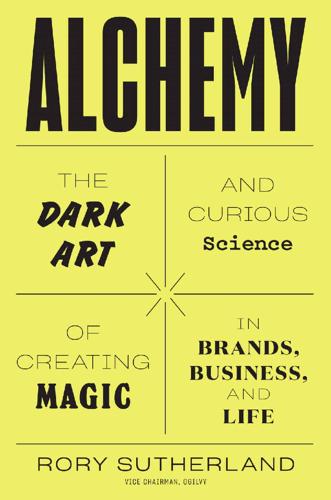
Alchemy: The Dark Art and Curious Science of Creating Magic in Brands, Business, and Life
by
Rory Sutherland
Published 6 May 2019
.* The test is certainly Teutonically stringent: over 70 per cent of the applicants either fail or drop out.* As useful as it once was, many people feel the Knowledge has been made superfluous by the arrival of satnavs and Google Maps. Conventional economic thinking, obsessed with ‘market efficiency’, would argue that the Knowledge seems a ‘barrier to entry’ erected to maintain the scarcity of cab drivers. I was tempted to agree – but that was before I realised that the Knowledge had as much value as a signal than a navigation skill. A market like the London taxi industry, where you almost never interact with the same person more than once, needs a high level of trust in order to work, and one way to establish this confidence is to demand serious proof of commitment before you are admitted to the trade.
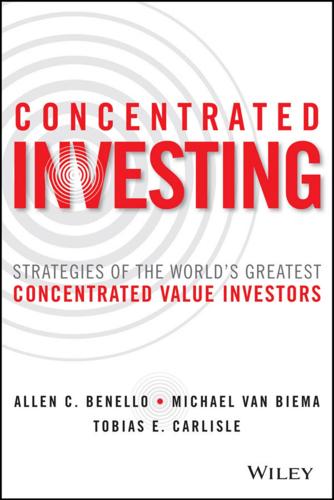
Concentrated Investing
by
Allen C. Benello
Published 7 Dec 2016
Greenberg covered ad agencies; television operators like ABC, CBS, and Capital Cities; information companies like Dun & Bradstreet, Nielsen, and Commerce Clearing House; and newspaper chains like Gannett. He says that though they were “pretty great businesses,” they were all new to the public, and misunderstood as a result.23 Greenberg was one of the few who could see that they enjoyed high barriers to entry. At his first presentation to the trust committee, his group head approached him just minutes before he was supposed to present and asked him what he planned to say. Greenberg responded, “Well, I’m going to say that this is a fabulous business and that the future’s very bright for these monopoly newspapers.”24 His supervisor said, “You can’t say that.
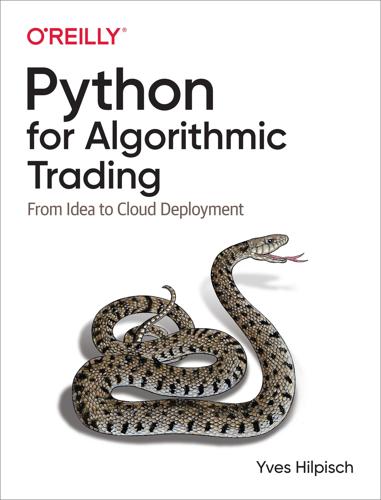
Python for Algorithmic Trading: From Idea to Cloud Deployment
by
Yves Hilpisch
Published 8 Dec 2020
The last lines of code display the 30, 60, and 90 days implied volatility values for the five most recent days available: In [31]: q.ApiConfig.api_key = config['quandl']['api_key'] In [32]: vol = q.get('VOL/MSFT') In [33]: vol.iloc[:, :10].info() <class 'pandas.core.frame.DataFrame'> DatetimeIndex: 1006 entries, 2015-01-02 to 2018-12-31 Data columns (total 10 columns): # Column Non-Null Count Dtype --- ------ -------------- ----- 0 Hv10 1006 non-null float64 1 Hv20 1006 non-null float64 2 Hv30 1006 non-null float64 3 Hv60 1006 non-null float64 4 Hv90 1006 non-null float64 5 Hv120 1006 non-null float64 6 Hv150 1006 non-null float64 7 Hv180 1006 non-null float64 8 Phv10 1006 non-null float64 9 Phv20 1006 non-null float64 dtypes: float64(10) memory usage: 86.5 KB In [34]: vol[['IvMean30', 'IvMean60', 'IvMean90']].tail() Out[34]: IvMean30 IvMean60 IvMean90 Date 2018-12-24 0.4310 0.4112 0.3829 2018-12-26 0.4059 0.3844 0.3587 2018-12-27 0.3918 0.3879 0.3618 2018-12-28 0.3940 0.3736 0.3482 2018-12-31 0.3760 0.3519 0.3310 This concludes the overview of the Python wrapper package quandl for the Quandl data API. The Quandl platform and service is growing rapidly and proves to be a valuable source for financial data in an algorithmic trading context. Open source software is a trend that started many years ago. It has lowered the barriers to entry in many areas and also in algorithmic trading. A new, reinforcing trend in this regard is open data sources. In some cases, such as with Quandl, they even provide high quality data sets. It cannot be expected that open data will completely replace professional data subscriptions any time soon, but they represent a valuable means to get started with algorithmic trading in a cost efficient manner.
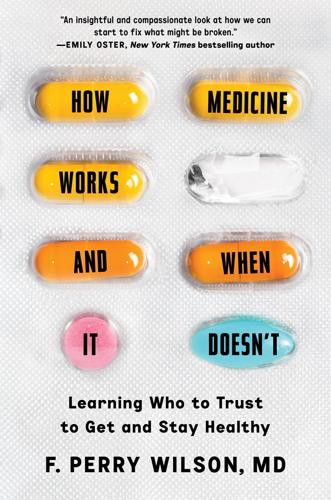
How Medicine Works and When It Doesn't: Learning Who to Trust to Get and Stay Healthy
by
F. Perry Wilson
Published 24 Jan 2023
Generics Won’t Save You Knowing how patent protection gets manipulated may provide the false sense that there is an easy solution here: Limit patent protections for new drugs and allow the competition of generics to drive prices down. Unfortunately, that’s not really how it ends up working. Manufacturing a new generic drug is not trivial, and in the United States there is a stringent regulatory apparatus to ensure that generics are equivalent in composition and potency to their branded alternatives. These barriers to entry mean that generics rarely enter the market the moment a patent expires. And without several options for generics, prices don’t move that much. In 2019, an FDA report documented that after the introduction of a single generic competitor, the price of a medication falls by an average of around 39 percent.
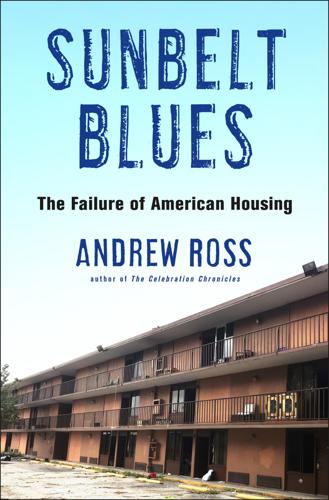
Sunbelt Blues: The Failure of American Housing
by
Andrew Ross
Published 25 Oct 2021
Advocates have found that citing this kind of proof of reduced costs and quantifiable benefits is more effective than appeals to human rights in persuading lawmakers, officials, and the general public to get behind the Housing First paradigm. In 2016, HCCH initiated a follow-up study, evaluating the effect of placing chronically homeless people in permanent supportive housing with minimal barriers to entry. The results showed significant stabilization and improvement in many areas, including income, incarcerations, and hospitalizations. At the end of the program’s first year, every program participant was still housed.14 In theory, a combination of federal, state, and county money could be pieced together to cover most of the cost of supportive housing.

Private Equity: A Memoir
by
Carrie Sun
Published 13 Feb 2024
Hedge fund clients (who are known as Limited Partners, or LPs) demanded more risk controls, transparency, and compliance measures. This, and the regulatory environment resulting from the Dodd-Frank Act, part of which required hedge fund advisers with $150 million or more in AUM in the United States to register with the SEC, made them more expensive to operate. Barriers to entry, like start-up costs, increased. The emphasis for some of the larger funds, which had been on superior performance, might have shifted to gathering and maintaining assets. Suppose you have a $10 billion fund and the typical two-and-twenty fee structure—that is, a 2 percent annual management fee plus a 20 percent annual performance fee.

Shocks, Crises, and False Alarms: How to Assess True Macroeconomic Risk
by
Philipp Carlsson-Szlezak
and
Paul Swartz
Published 8 Jul 2024
What follows is not a preview of the risks, analyses, and findings—it is a deeper exposition of the analytical mindset we believe aids effective macroeconomic risk assessment. Our approach is a deliberate counterweight to how macroeconomics typically presents itself, which is as a highly technical, codified field with high barriers to entry, even for those who are trained in other areas of research. Here we seek to demonstrate that creating insight and value for decision-makers is not about gaining membership to the world of academic economics. That world has its own uses as well as remarkable scholarship—its role is to advance the frontier of knowledge.

Wired for War: The Robotics Revolution and Conflict in the 21st Century
by
P. W. Singer
Published 1 Jan 2010
A good example is how advancements in microchips made portable electronics accessible to consumers. As more and more people bought such items as video and then digital cameras, it dropped the cost of equipping robots with the same kind of cameras (their electronic vision systems) by as much as 75 percent. This eliminated the barriers to entry for robots to be used across the marketplace, further dropping costs for robots as a whole, as more people could buy them. Rodney Brooks at iRobot calls this kind of cross-transfer “riding someone else’s exponentials.” AN EXPONENTIAL WORLD Historic data shows exponential patterns beyond just Moore’s law, which referred just to semiconductor complexity.
…
As a variety of scientists and analysts look at such new technologies as robotics, AI and nanotech, they are finding that massive power will no longer be held only by states. Nor will it even be limited to nonstate organizations like Hezbollah or al-Qaeda. It is also within the reach of individuals. The playing field is changing for Hobbes’s sovereign. Even the eternal optimist Ray Kurzweil believes that with the barriers to entry being lowered for violence, we could see the rise of superempowered individuals who literally hold humanity’s future in their hands. New technologies are allowing individuals with creativity to push the limits of what is possible. He points out how Sergey Brin and Larry Page were just two Stanford kids with a creative idea that turned into Google, a mechanism that makes it easy for anyone to search almost all the world’s knowledge.
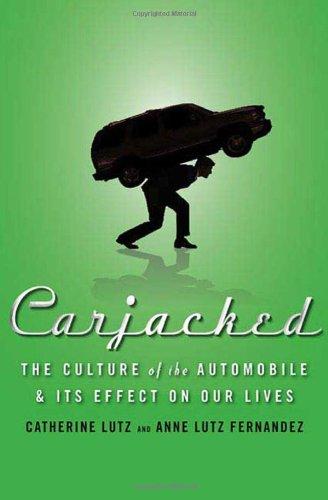
Carjacked: The Culture of the Automobile and Its Effect on Our Lives
by
Catherine Lutz
and
Anne Lutz Fernandez
Published 5 Jan 2010
Selditz explained that the district offered the device without charge, along with some other incentives to any parents who requested it; when their teenager graduated they would simply return it so it could be made available to other parents. Parents might have been expected to snap up this opportunity, but only 35 in the whole district did so. “Parents just wouldn’t take them—free! You can 198 Carjacked see that price is not the only barrier to entry here. Does society need to pay you to protect your child? Twenty-five of the systems are sitting there in a box and nobody will step up!” Selditz now understands that “parents don’t have the courage to take strong action to protect their child’s safety” because they are “afraid of offending their kid.”

The Undercover Economist: Exposing Why the Rich Are Rich, the Poor Are Poor, and Why You Can Never Buy a Decent Used Car
by
Tim Harford
Published 15 Mar 2006
The reasons are clear enough: restaurants are particularly vulnerable to extortion because it doesn’t take much disruption to put off customers, while collecting the extorted cash by providing an expensive service makes the protection money tax deductible. Profitable businesses usually attract competition, but in this case the competition reckon that there must be a safer way to make a living. This suggests that it isn’t violence as such that creates barriers to entry and sustainable profits—it’s the effectiveness of an organ- • 24 • W H O P A Y S F O R Y O U R C O F F E E ? ization. Axel’s bank had it and Cornelius’s didn’t; the typical street gang lacks it, the Mafia seems to have it in spades. “Conspiracies against the laity” Luckily, in genteel corners of the developed world we are usually sheltered from people who use violence to keep out competition.

The Virgin Way: Everything I Know About Leadership
by
Richard Branson
Published 8 Sep 2014
As with our entry into aviation, we really knew next to nothing about the business other than that there had to be a better, more user-friendly and affordable way to provide mobile phone service in a business that was about to take the planet by storm. There were huge parallels to the challenges we’d faced at Virgin Atlantic. There we didn’t own any airplanes or have our own maintenance capabilities or airport counters, so we simply leased everything in or contracted it out and learned along the way. At a glance the barriers to entry for something like a Virgin Mobile seemed almost more daunting than with the airline. We had no phone masts, exchanges, cables, networks and all the other super expensive paraphernalia it takes to start a phone company – at least if we were to do it the traditional way, which of course we had no intention of doing.
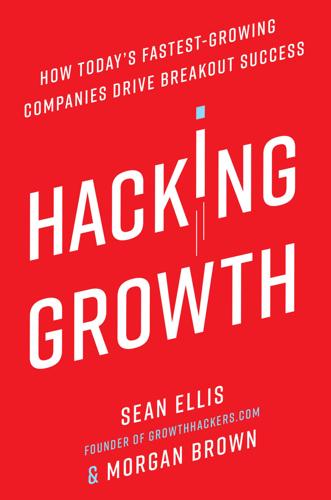
Hacking Growth: How Today's Fastest-Growing Companies Drive Breakout Success
by
Sean Ellis
and
Morgan Brown
Published 24 Apr 2017
So the company changed its sales policy to make paid product training a mandatory part of the new customer experience. The idea that customers should be asked to pay an additional sum for training for software they’d already purchased ran counter to what was considered best practice at the time. Companies feared that adding that much overhead to the software cost would be a barrier to entry to price-conscious customers. But the HubSpot team trusted the data and enforced up-front training.33 This is a great example of what Chamath Palihapitiya means when he says that a growth team’s responsibility is to “invalidate lore” about products and markets and pursue growth efforts backed by empirical evidence.

The Revenge of Analog: Real Things and Why They Matter
by
David Sax
Published 8 Nov 2016
Undoubtedly the technology industry creates many jobs, but the jobs it provides tend to be rather specific and geared toward educated, upwardly mobile (and overwhelmingly male) individuals. Uber drivers notwithstanding, most of these jobs require very specific skills, and the reality is that acquiring those means access to technology (computers) and education, plus a degree of technological literacy that provides a high barrier to entry. Everyone may want to work in digital technology, and the jobs may be there, but it’s not as simple as walking up to the doors of Google and saying you’re smart, strong, and willing to do whatever it takes. The good-paying jobs in technology are at the top of the food chain, and are realistically accessible only to the small portion of society, the best and the brightest, who already have their pick of plum jobs.

The New Harvest: Agricultural Innovation in Africa
by
Calestous Juma
Published 27 May 2017
As farmer productivity is often constrained by lack of appropriate technology or access to best practice knowledge, inputs, and services, clusters may be able to provide pronounced benefits in the agro-sector. Certain types of clusters may have a more direct impact on poverty. These are the clusters in rural areas and in the urban informal economy; clusters that have a preponderance of SMEs, micro-enterprises, and home workers; clusters in labor-intensive sectors in which barriers to entry for new firms and new workers are low; and clusters that employ women, migrants, and unskilled labor. In many African countries the agricultural sector is dominated by family-based small-scale planting. This structure slows down the diffusion and adoption of information and modern technology, a key driver of agricultural productivity and net growth.

Originals: How Non-Conformists Move the World
by
Adam Grant
Published 2 Feb 2016
Scientists rush to make discoveries ahead of their rivals; inventors hurry to apply for patents before their adversaries; entrepreneurs aspire to launch before their competitors. If you’re the first out of the gate with a new product, service, or technology, you can move up the learning curve earlier, gobble up prime space, and monopolize customers. These edges create barriers to entry for your competitors: their own efforts to innovate will be stifled by your patents and superior capabilities, and their growth will be stymied by the fact that it’s expensive to convince customers to make a switch. In a classic study, marketing researchers Peter Golder and Gerard Tellis compared the success of companies that were either pioneers or settlers.
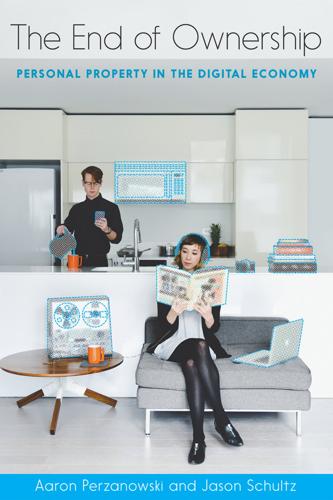
The End of Ownership: Personal Property in the Digital Economy
by
Aaron Perzanowski
and
Jason Schultz
Published 4 Nov 2016
For one, the traditional roles of publishers, labels, and studios are less crucial. Artists can release their own music, authors can self-publish, and independent film makers can find an audience more easily and more reliably than ever before. That’s because the digital distribution chain has so successfully reduced barriers to entry. Rather than sending a master copy off to some factory for costly mass reproduction, copyright holders can submit digital files directly to digital retailers. There are no manufacturing costs, no shipping costs, and constraints on shelf space are effectively eliminated. Digital retailers store those files on their servers and make them available to a worldwide audience.

Beautiful Visualization
by
Julie Steele
Published 20 Apr 2010
And visualization is widely perceived to be an art. Figure 20-3. Visualizing aha moments Visualization practitioners often have an air of creativity about them: they draw or paint or wear glasses with thick, black frames. Of course, as soon as something is branded as an artistic endeavor, the barriers to entry rise up around it. Those who believe they can’t draw and those who would never assign themselves the label of “creative” shy away from visualization for this reason. And that’s too bad—because you don’t have to be a Rembrandt to have an idea that can be understood by scrawling a stick figure or two.

The Price of Everything: And the Hidden Logic of Value
by
Eduardo Porter
Published 4 Jan 2011
The critical difference today is that companies have cheaper options. And they can no longer afford the generosity of the corporate leviathans of the early twentieth century, which relied on a unique feature of American capitalism of the time: monopoly profits. As a dominant company in a new industry with high barriers to entry, Eastman Kodak had a near monopoly over photographic film. Ford also enjoyed fat profits unheard of in the cutthroat competitive environment of today. Today, multinational companies scour the globe seeking cheap labor and low taxes, abundant raw materials, and proximity to consumers. And competition is ruthless.
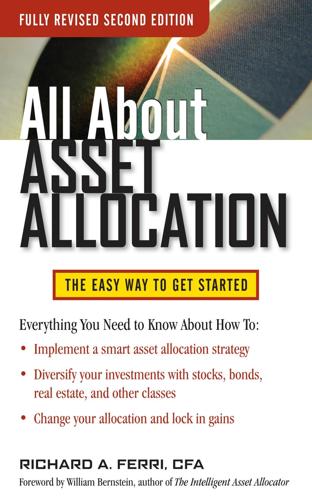
All About Asset Allocation, Second Edition
by
Richard Ferri
Published 11 Jul 2010
The average management fee for a single fund is 1.5 percent per year, plus there is a profit incentive averaging 20 percent. In addition, hedge fund performance is notoriously inconsistent. Good performance by a fund one year does not ensure or even predict good performance the next. Finally, there are high barriers to entry. Hedge funds are available only to high-net-worth investors. The minimum investment of some funds is $1 million or more. There are three broad categories of hedge funds and several subcategories: ● Arbitrage strategies. Arbitrage is the practice of exploiting price inefficiencies in the marketplace.

The Seventh Sense: Power, Fortune, and Survival in the Age of Networks
by
Joshua Cooper Ramo
Published 16 May 2016
But there’s another secret: Albert-László Barabási, “Network Science,” Philosophical Transactions of the Royal Society A: Mathematical, Physical, and Engineering Sciences 371, no. 1987 (March 2013). The network scientists: Rahul Tongia and Ernest J. Wilson III, “The Flip Side of Metcalfe’s Law: Multiple and Growing Costs of Network Exclusion,” International Journal of Communication 5 (2011): 665–81. fifty-one national enclosures: Ron E. Hassner and Jason Wittenberg, “Barriers to Entry: Who Builds Fortified Boundaries and Why,” International Security 40, no. 1 (Summer 2015): 157–90. “There is a significant chance”: Bill Gates, “The Next Epidemic—Lessons from Ebola,” New England Journal of Medicine 372 (April 9, 2015): 1381–84. Basic adjustment: Ben S. Bernanke, “Money, Gold, and the Great Depression,” H.
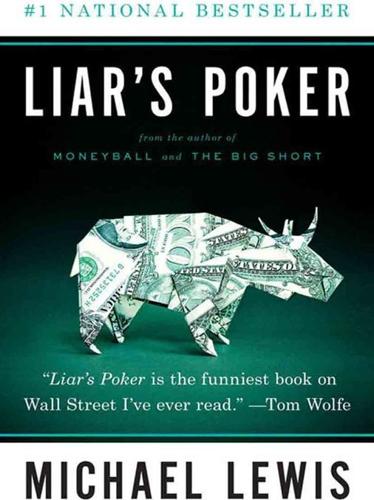
Liar's Poker
by
Michael Lewis
Published 1 Jan 1989
Tokyo was the obvious site for our rapid expansion because Japan's trade surplus left it gorged with dollars it had either to sell or to invest. The Japanese were the Arabs of the 1980s. But because American firms felt unwelcomed by Japan's financial establishment, and because financial regulation was labyrinthine in Japan, the Japanese offices of Wall Street firms tended to be small and tentative. Meanwhile, there was no obvious barrier to entry in Europe. There was little financial regulation. And the Atlantic cultural divide seemed less daunting than the Pacific to native New Yorkers. When a kid from Brooklyn disembarked at Heathrow Airport, he didn't need an interpreter to hire a limousine. When he sat down to dinner in his expensive hotel (Claridges and the Berkeley were favorites), he wasn't served raw fish (there was at Salomon an oft-repeated story about an American managing director in Japan who tossed his sushi on top of a small bonfire he ignited at the table) but stuff that looked pretty much like American food.

Hustle and Gig: Struggling and Surviving in the Sharing Economy
by
Alexandrea J. Ravenelle
Published 12 Mar 2019
According to the website RentCafe, in 2018 a Manhattan one-bedroom apartment rents, on average, for $3,757 a month; the average rent for a two-bedroom apartment is $5,474.30 Ryan is a successful Airbnb entrepreneur. And yet, he questions the promise that such entrepreneurship is readily available. First there’s the barrier to entry. Ryan knows that it takes a certain level of financial capital to take advantage of the arbitrage between the annual cost of an apartment and the price he can charge nightly on a short-term rental. “I mean, I guess not everyone can do it,” he said. “I spent the money to start these apartments up, and every apartment is twenty to thirty thousand dollars. . . .

Why We're Polarized
by
Ezra Klein
Published 28 Jan 2020
And they clearly receive the message that the Confederacy and the cult of the lost cause intended to deliver.” As the New Orleans coup suggests, the Democratic Party enforced one-party rule by crushing white Republicans, too. “Democrats controlled all election laws and election administration, and they took care to keep barriers to entry of potential opponents prohibitively high,” writes Mickey. “Several states, by party rule or statute, barred previously disloyal candidates, or those who failed to pledge themselves to the values of the Democratic party, from running for office—even as independents.”9 And thus the southern Democratic Party succeeded in consolidating authoritarian control over the Deep South.

The Launch Pad: Inside Y Combinator, Silicon Valley's Most Exclusive School for Startups
by
Randall Stross
Published 4 Sep 2013
“I have a bias for things that are stuff that my friends would be using regularly, that’s kind of cool,” Ballinger said. “Or stuff that is very technically difficult. The second bias is probably a bad thing in a startup—” “No! Technically difficult things are good, actually. Well, they’re good if the technical difficulties are related to solving the problem. Building ten difficult things creates a barrier to entry; it’s actually good.” Which of the five ideas, Taggar asks, are they most excited about? “In terms of what would use our skills, I feel like the event thing and the antispam thing would probably be the ones we’re best at.” “The best kind of thing to work on—and I appreciate this is going to be somewhat abstract or higher-level advice—the thing you want to work on is, there’s this need that’s really clear and you can just launch some shitty site and people just start using it.”
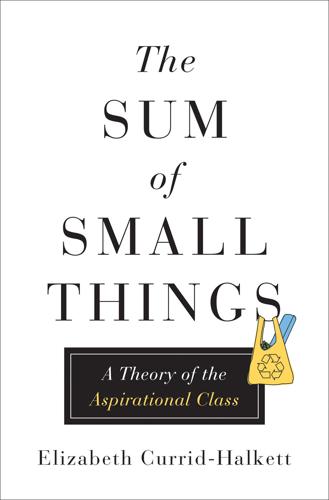
The Sum of Small Things: A Theory of the Aspirational Class
by
Elizabeth Currid-Halkett
Published 14 May 2017
VW Group has become very smart at identifying the things that make a difference to their customers … so Audi people will pay for a ‘Golf in a frock’ because they don’t see it as that. They [The consumers] like better plastics, polished aluminum, etc.” Globalization, mass marketing, mass production, and knockoffs have created a conspicuous consumption profile for many more people. This deluge of material goods would suggest that the barriers to entry into upper-class conspicuous consumption have been all but eradicated. The “stuff” once associated with a wealthy lifestyle—cars, multiple handbags, closets full of clothes—is seemingly accessible to mainstream society. At first blush, conspicuous consumption has been democratized. THE BACKLASH This is not to say there hasn’t been a backlash to the democratization of conspicuous consumption.
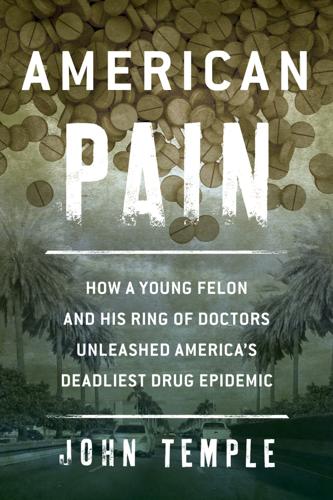
American Pain: How a Young Felon and His Ring of Doctors Unleashed America’s Deadliest Drug Epidemic
by
John Temple
Published 28 Sep 2015
But junkies were terrible employees, always getting arrested or overdosing on the road or claiming the pills had been stolen. A few of the most enterprising runners would eventually save a little money and begin sponsoring their own mules. Because the drugs were legal, the pill-running business didn’t have the same barriers to entry as, say, the cocaine trade, where you had to know a supplier. Anyone with a car and a few hundred bucks could make a pill run. And profits from one run were enough to sponsor a carful of mules. The pipeline inspired its own lingo. For self-evident reasons, the junkies called the oxycodone 30-milligram pills made by Mallinckrodt “blues,” and the traffickers began calling I-75 “The Blue Highway.”

Cataloging the World: Paul Otlet and the Birth of the Information Age
by
Alex Wright
Published 6 Jun 2014
But while the present-day W3C sets technical standards on behalf of billions of Web users, it stops far short of serving as an institutional arbiter of facts—let alone fulfilling the Otletian dream of uniting the world’s governments and religions. In practice, the W3C’s mission hews more closely to the Nelsonian principle of decentralization. The simplicity and openness of Web standards have lowered the barriers to entry for untold millions, allowing more people to start businesses, making it cheap 271 C ATA L O G I N G T H E WO R L D and easy to distribute recorded material, and allowing for new forms of social organization to spring up in the form of self-organizing social networks. Yet the Web’s simplicity has a downside: the lack of stable identity management, intellectual property controls, or reliable archiving capabilities.
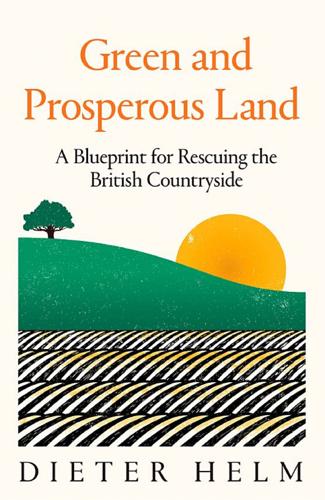
Green and Prosperous Land: A Blueprint for Rescuing the British Countryside
by
Dieter Helm
Published 7 Mar 2019
There already have been – before leaving the EU and before the withdrawal from the CAP.11 Before we conclude that this is all just an awful violence to our farmers, we need to bear in mind the corollary. For all the losers, there will be offsetting gainers. Young farmers may actually be able to enter the industry, and the value of land might actually begin to reflect the true economics of the crops, for the high land prices are a massive barrier to entry. To these specific beneficiaries will be added many others. Money not spent on perverse subsidies could be spent instead on the benign sort, in providing public money for public goods. All those hill farmers struggling on marginal land trying to eke out a living from lots of sheep may be eligible for subsidies to do good things instead, to maintain and enhance the landscape and its biodiversity in harmony with rather than against nature.

Secrets of Sand Hill Road: Venture Capital and How to Get It
by
Scott Kupor
Published 3 Jun 2019
It was more like a path followed by people who didn’t fit into one of the traditional professions open to them and could afford to do something different. Although some succeeded, being an entrepreneur was as much a curse—or maybe more of one—as an exciting opportunity. Even many initially successful entrepreneurs ended their careers in poverty or were forcibly removed from their creations. Now, though, conditions favor entrepreneurs. Barriers to entry are being reduced everywhere, thanks to the semiconductor revolution, the rise of globalization, and the influx of new talent into every industry and sector. Think about this: venture-backed companies now spend 44 percent of the entire R&D budget for American public companies. The 665 public companies that are VC-backed make up a fifth of the total market capitalization of public companies.
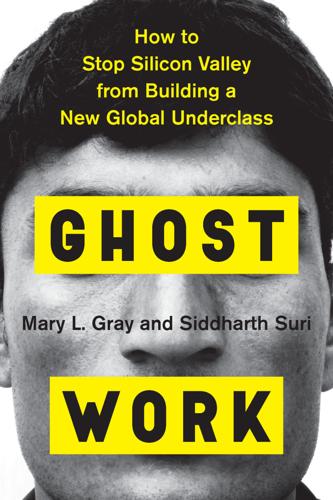
Ghost Work: How to Stop Silicon Valley From Building a New Global Underclass
by
Mary L. Gray
and
Siddharth Suri
Published 6 May 2019
Note that this initial flood of workers to our task is a direct consequence of the hypervigilance of workers. Next we’ll see how these networks allow workers to coordinate in a much more purposeful manner. REIMAGINING COLLECTIVE ACTION Kind strangers can build connections and social space. But these communities can also create barriers to entry and keep people out. As noted in chapter 2, organized labor movements and unions historically depended on two factors to rally workers. They made use of the coherence of a professional identity—machinists, steelworkers, teachers—to lay the groundwork for a common cause. Union organizers also relied on the solidarity of face-to-face interactions at the work site and, when striking, the power of collective action as a force for change.
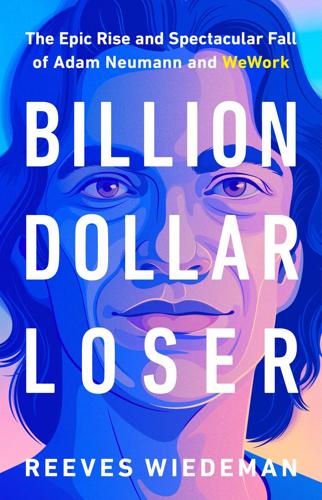
Billion Dollar Loser: The Epic Rise and Spectacular Fall of Adam Neumann and WeWork
by
Reeves Wiedeman
Published 19 Oct 2020
That month alone, the company had opened new locations in thirteen cities in seven different countries. WeWork also presented a unique opportunity for the Vision Fund. It would be impossible to invest $100 billion in five years by funding a flock of nimble sparrows; Masa needed to find albatrosses that could use his cash to overcome barriers to entry in industries where the theoretical returns were also large enough to justify the costs—an industry like real estate, with expensive leases and significant capital expenditures to go along with an enormous total addressable market. As Adam and Masa drove away from WeWork’s headquarters, Masa pulled out an iPad and began sketching the terms of a deal: SoftBank and the Vision Fund would invest more than $4 billion into WeWork.

Welcome to Britain: Fixing Our Broken Immigration System
by
Colin Yeo;
Published 15 Feb 2020
Migrants and refugees will keep moving, whether driven by push or pull factors. As Bridget Anderson writes, ‘No set of border controls has ever worked to contain fully people’s desire and need to move. But when migrants and refugees do move, they now encounter unprecedented physical and bureaucratic barriers to entry.’23 The UK border has been, wherever possible, pushed abroad, so that asylum seekers have no opportunity even to reach British soil and claim asylum. Immigration ‘liaison’ officers were introduced at foreign airports from which asylum seekers might try to embark for the UK. They carried out racial sifting, picking out and preventing the boarding of ethnic minorities, such as Roma from Eastern Europe, who were deemed more likely to claim asylum on arrival.24 The Le Touquet Treaty was signed in 2003 to enable British immigration officials to operate in France, with the UK agreeing to fund high levels of security around the Channel ports, to scan lorries and prevent clandestine arrivals.
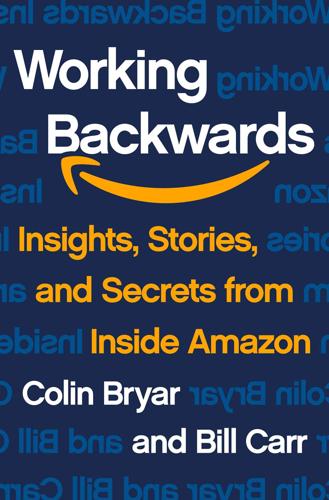
Working Backwards: Insights, Stories, and Secrets From Inside Amazon
by
Colin Bryar
and
Bill Carr
Published 9 Feb 2021
Jeff zeroed in on the fundamental difference between the digital media retail business and our existing physical media retail business. Our competitive advantage in physical media was based on having the broadest selection of items available on a single website. But this could not be a competitive advantage in digital media, where the barrier to entry was low. Any company, whether a well-funded startup or an established enterprise, could match our offering. In those days, while it took time and effort, any company could build an e-book store or a 99-cent music download store where they offered the same breadth and depth of books and songs as every other digital venue.

The Unusual Billionaires
by
Saurabh Mukherjea
Published 16 Aug 2016
Examples include industries that deal with public resources such as telecom, energy resources (oil, gas and coal), public utilities (electricity), etc. • How many competitors are present in the industry and how strong is the competitive intensity? Other than sectors that require licensing (like banks, media, telecom, etc.), most other industries in India are open to competition, with relatively low barriers to entry. Hence, it is much easier for new entrants to come in. As new entrants come in, prices drop, competition rises, leading to lower profitability for the companies in that industry. Textiles in India, especially spinning—an activity politicians love to subsidize—is one example of a highly competitive industry.

We're Not Broken: Changing the Autism Conversation
by
Eric Garcia
Published 2 Aug 2021
“So that’s really hurt my independence [not] being able to get out there and find a job,” he said in reference to not driving. In my opinion, Savicki has one of the better political minds I know, better than a lot of the gasbags who wind up talking about politics and congressional races on television (including the gasbag who wrote this book). But the barriers to entry are still too high for him because of his inability to drive and his lack of a college degree. Without SSI income, it is difficult for him to have full independence, yet because of society’s expectations of autism and neurotypicality, he is stuck in an income purgatory even though he wants to work.

Dear Chairman: Boardroom Battles and the Rise of Shareholder Activism
by
Jeff Gramm
Published 23 Feb 2016
Sloan established a large number of committees and policy groups to improve the institution’s decision making, and he served on all of them himself to make sure they stayed on task. Under Sloan’s leadership, General Motors came to dominate the global automobile business. This was a remarkable feat in an industry with few barriers to entry and a formidable competitor in Ford. When Sloan finally retired from GM’s board in 1956, the company controlled half of the domestic auto market. GM’s economies of scale made it the low-cost producer, its brands were household names, and its large and wealthy dealer network gave it a clear advantage in marketing its cars.

The Quiet Damage: QAnon and the Destruction of the American Family
by
Jesselyn Cook
Published 22 Jul 2024
For six-, seven-, even eight-hour stretches at a time, every single day, she was glued to the computer in a way that Dale had never seen before. She would disappear into their study, her slender frame tense and curled toward the screen with a stressed but electrified look in her eyes. Preaching Covid trutherism on Facebook—“waking people up”—had become her self-appointed job in retirement, one with no barrier to entry and no shortage of work to be done. She was at once a researcher, a journalist, a detective, a watchdog, and a whistleblower, and she took it seriously. So did Dale. After she suggested offhandedly that people might have to “fight back” with guns when the government knocked down their doors to “forcibly” vaccinate them, he knew things had gone too far.
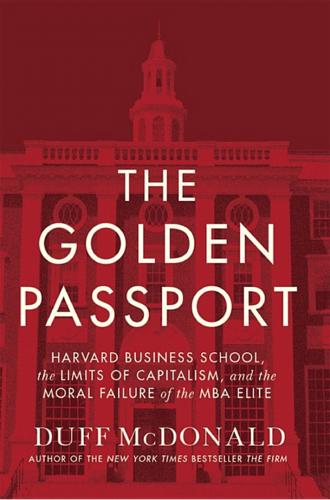
The Golden Passport: Harvard Business School, the Limits of Capitalism, and the Moral Failure of the MBA Elite
by
Duff McDonald
Published 24 Apr 2017
As Matthew Stewart, a philosopher, former management consultant, and bestselling author, puts it in The Management Myth, Taylor was pushing a new philosophy of management, the use of math (which he called “science”) to “work smarter, not harder.”2 To that point, management of the country’s newly gargantuan corporations—everything from railroads to wholesalers (Marshall Field), department stores (Macy’s), mail-order firms (Sears), meatpackers (Swift and Armour), ore refiners (U.S. Steel), and electrical manufacturers (General Electric)—hadn’t been that focused on control of their workforces. The secrets to success at the time, argues historian James Hoopes, were things like first-mover advantages, capital-intensive barriers to entry, and protective tariffs.3 Most companies saw oversight of the workforce as a simple matter of command-and-control, the organizational stratagem that had been ported over from the military along with actual terminology such as division and dispatcher. Most manual labor workforces of the era were run similarly—workers were given piece-rate pay that supposedly incentivized them to work hard.
…
According to one consultant who worked closely with both McKinsey and HBS graduates for many years, the notion that you need two years of graduate school to do something as mindless as what most business executives do is beyond the pale. “You can’t teach business,” he says. “It’s about confidence and dominance. It’s a matter of personality. All places like HBS do is act as barriers to entry to a closed club. At McKinsey, you were discriminated against if you didn’t have an HBS MBA. They defend them like crazy. Because without those credentials, there’s really nothing there.” Or, as management historian Christopher McKenna puts it, “For those students who couldn’t yet decide what to do with their lives, but did not want to appear directionless, management consulting promised the credentialed path to future glory.”23 There’s a reason that McKinsey, BCG, and Bain have been collectively referred to as “M/B/B”—a job at any of the three is as much an MBA-like credential as it is anything else.

Cheap: The High Cost of Discount Culture
by
Ellen Ruppel Shell
Published 2 Jul 2009
“One of the great insights of twentieth-century economics is that you need excessive profits to create innovation,” Harvard trade economist Robert Lawrence told me. “When prices are kept too low, innovation is nearly impossible.” Underlying this is what economists call “perfect competition,” a state characterized by a multitude of buyers and sellers, many products that are essentially interchangeable, and few if any barriers to entry in a given market. Under this condition, prices are determined by supply and demand, which sounds like a good thing. But when price is the only distinguishing characteristic among products, competition does not necessarily lead to the innovation of better products or to stronger, more highly evolved industries.

Living in a Material World: The Commodity Connection
by
Kevin Morrison
Published 15 Jul 2008
The two educational institutions in California credited with nurturing the brains and talent that spurned the tech revolution, Stanford and Berkeley Universities, have also established their own clean energy research arms. ‘Energy was never an area for venture capital before, because it was considered a large upfront cost to get in,’ said Guy Caruso, Administrator of the Energy Information Administration (EIA), a statistical arm of the United States Department of Energy. The barrier to entry is now pretty small, almost anyone it seems can set up an ethanol plant. The big thing would be whether this capital would bring investment of the scale that is needed; you are talking about a few per cent, if it stimulates technology that leads to bigger things. Terry Tamminen, energy adviser to governor Schwarzenegger, displays a typical Californian-style confidence when it comes to technological solutions for the energy challenge.
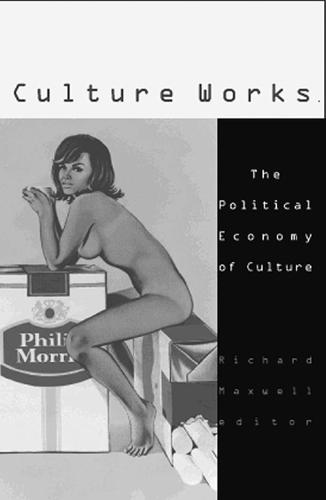
Culture works: the political economy of culture
by
Richard Maxwell
Published 15 Jan 2001
It is preferable for a firm to be in an oligopolistic, rather than a competitive, industry. The former tend to be much more profitable, with pricing and output levels closer to a pure monopoly than to a purely competitive market. The key to having a stable oligopolistic market is that there are barriers to entry that make it very difficult for new firms to enter these markets, even if they are extremely profitable. In the United States, an unprecedented wave of mergers and acquisitions at the turn of the twentieth century helped to crystallize the dominance of the economy by large corporations operating in oligopolistic markets.6 The rise of oligopoly is the gasoline that fuels the flames of modern advertising.
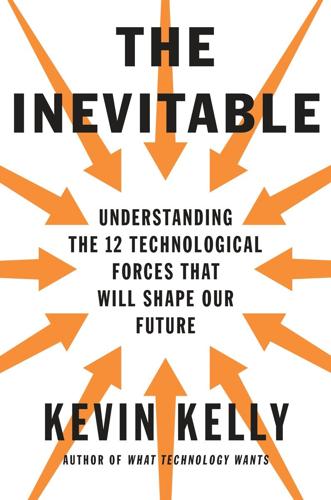
The Inevitable: Understanding the 12 Technological Forces That Will Shape Our Future
by
Kevin Kelly
Published 6 Jun 2016
Some types of collectives benefit from a small degree of hierarchy while others are hurt by it. Platforms like the internet, Facebook, or democracy are intended to serve as an arena for producing goods and delivering services. These infrastructural courtyards benefit from being as nonhierarchical as possible, minimizing barriers to entry and distributing rights and responsibilities equally. When powerful actors dominate in these systems, the entire fabric suffers. On the other hand, organizations built to create products rather than platforms often need strong leaders and hierarchies arranged around timescales: Lower-level work focuses on hourly needs; the next level on jobs that need to be done today.

The Road to Ruin: The Global Elites' Secret Plan for the Next Financial Crisis
by
James Rickards
Published 15 Nov 2016
Despite this, the Treasury and Federal Reserve still hold a gun to the bankers’ heads in the form of stress tests, living wills, and resolution authority. When the Fed balance sheet hits a confidence boundary from excessive money creation, banks will be reliable buyers of last resort of new Treasury debt. Banks that don’t buy Treasuries will find their living wills being read at their own funerals. Big business is a shared monopoly with barriers to entry for upstarts and government-subsidized profits. When upstarts like Uber emerge nonetheless, a remnant of Schumpeter’s creative destruction, new government regulations are almost immediate. Private property has its space, but only to the extent government permits, and never to the detriment of state power.

Augmented: Life in the Smart Lane
by
Brett King
Published 5 May 2016
When writing this, I kept coming back to the apprenticeship and guild models of old, rather than the modernised knowledge-based systems around universities and colleges. As we augment our intelligence through AI and always on access to data, knowledge will tend towards ubiquitous access, and knowledge as a scarcity mechanism or barrier to entry will become indefensible—but skills will remain sought after. The Augmented Age will be dominated by the need for creative thinking and the ability to design new experiences embedded in the world around us based on new capabilities, smart everything and predictive behavioural modelling. Students will still go to university, but the economic models of universities will be challenged as the ROI of a degree becomes increasingly questioned and the burden of student loans reduces an economy’s ability to compete.
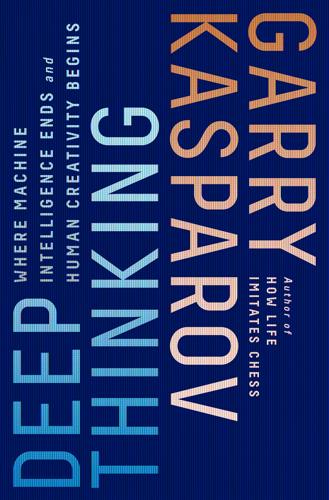
Deep Thinking: Where Machine Intelligence Ends and Human Creativity Begins
by
Garry Kasparov
Published 1 May 2017
That adds convenience and efficiency, but it’s not disruption. This is a shame, because the potential for change is much greater than our appetite for it. Our increasingly powerful machines give us the security to be more ambitious and better prepared, but we still have to make the choice to do it. Technology has lowered the barrier to entry in dozens of business sectors, which should prompt more experimentation and investment. Powerful models allow us to simulate the impact of change better than ever, lowering risk. Once again using chess machines as our favorite Drosophila fruit-fly test subject and metaphor, Grandmasters have used the ability to prepare with engines and databases to play riskier, more experimental opening variations.

The Mathematics of Banking and Finance
by
Dennis W. Cox
and
Michael A. A. Cox
Published 30 Apr 2006
These are often embedded into computer systems, which means that the user of the system may be totally unaware of the mathematical calculations and assumptions that are being made. In other cases it would also appear that the banking industry uses mathematical techniques as a form of jargon to create its own mystique, effectively creating a barrier to entry to anyone seeking to join the industry. It also serves to effectively baffle clients with science. But in practice things can be much worse than this. Business systems, including specifically those used by bankers or in treasury functions, make regular use of a variety of mathematical techniques without the users having a real appreciation of the objective of the technique, or of its limitations.
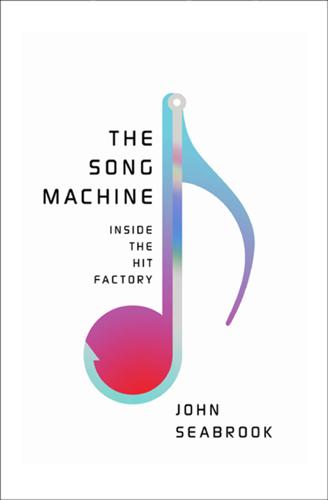
The Song Machine: Inside the Hit Factory
by
John Seabrook
Published 4 Oct 2015
They get a lot of song mileage from simple and repetitive chord structures, thanks to the lush production. You’d think that in an age when anyone with basic computer skills can make a song on a laptop—no musical training or instrumental mastery is required—the charts would be flooded with newbie hit makers. The barriers to entry are low. And yet it turns out that the same handful of top writers and producers are behind hit after hit—a mysterious priesthood of musical mages. They combine the talents of storied arrangers like Quincy Jones and George Martin, with the tune-making abilities of writer-producers like Holland–Dozier–Holland, Motown’s secret weapon.
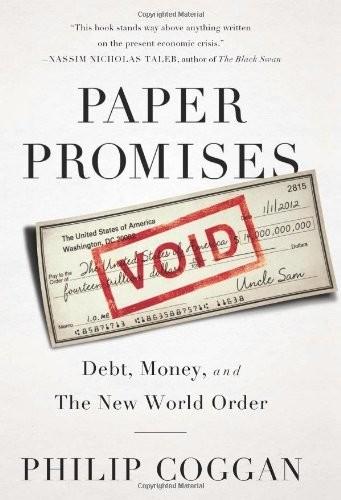
Paper Promises
by
Philip Coggan
Published 1 Dec 2011
The banks might yet persuade a future government to ditch them altogether. The danger is that the finance sector has become what economists call a ‘rent-seeker’, charging excessive prices for its services. These rents may emerge from a lack of competition, since the government guarantee may create a barrier to entry for new firms. Or it may result from a lack of transparency. Financial products are often complex with the result that the effective price is obscure; clients may be paying over the odds without realizing it. The prices charged by the industry represent a transfer of wealth from the rest of the economy.
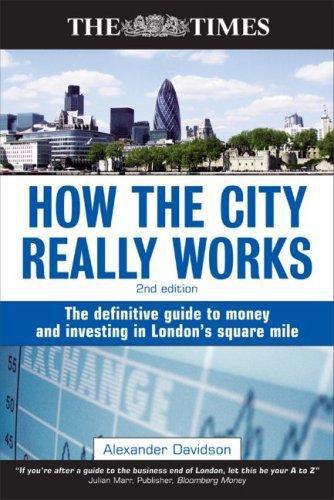
How the City Really Works: The Definitive Guide to Money and Investing in London's Square Mile
by
Alexander Davidson
Published 1 Apr 2008
The company’s physical location is not significant, although the national rules of a non-US country will prevail should they conflict with the Act. By early 2007, the United States started to soften some of the Sarbanes– Oxley requirements. In March, the SEC published new rules for deregistration by foreign companies, adopted that month, which eliminated conditions that had been considered a barrier to entry. Until this point, a foreign issuer could only have exited the registration and reporting regime required if it had fewer than 300 resident shareholders, which was a difficult requirement for a foreign issuer to meet given the increasing globalisation of financial markets. From March 2007, the criteria for exiting this regime changed, and the main condition for allowing the exit is now that the US average daily trading volume of the securities has been no greater than 5 per cent of the average worldwide trading volume for a recent 12-month period.

Dragnet Nation: A Quest for Privacy, Security, and Freedom in a World of Relentless Surveillance
by
Julia Angwin
Published 25 Feb 2014
Some of them were well-known names, like the credit-reporting agency Experian. But most were tiny outfits in the voyeuristic “lookup” business—websites that let people look up information about other people for a small fee, or sometimes for free in return for selling advertising. There are very few barriers to entry in the lookup business. Consider the story of BeenVerified.com. In 2007, Josh Levy and Ross Cohen decided to offer cheap online background checks. The two set up shop with a $200,000 investment. By 2011, the company said it had revenues of $11 million, and just sixteen employees. Not bad work if you can get it.

Some Remarks
by
Neal Stephenson
Published 6 Aug 2012
If it failed, then no manager who wants to keep his or her job will approve spending money trying to revive it. If it succeeded, then it’s patented and entry to the market is presumed to be unattainable, since the first people who thought of it will have “first-mover advantage” and will have created “barriers to entry.” The number of seemingly promising ideas that have been crushed in this way must number in the millions. What if that person in the corner hadn’t been able to do a Google search? It might have required weeks of library research to uncover evidence that the idea wasn’t entirely new—and after a long and toilsome slog through many books, tracking down many references, some relevant, some not.
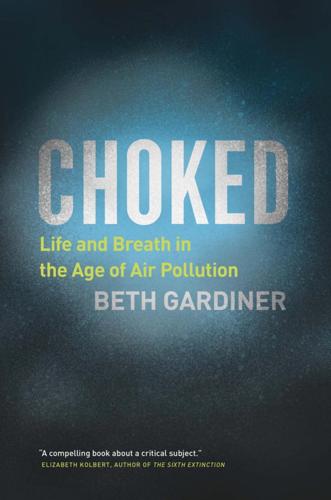
Choked: Life and Breath in the Age of Air Pollution
by
Beth Gardiner
Published 18 Apr 2019
A biking advocate I meet uses a term I haven’t heard before to refer to the group whose exclusive preserve he doesn’t want cycling to be: “mammals,” or Middle-Aged Men in Lycra. I value my home life, so I wouldn’t want to suggest I’m married to such a creature (and anyway, Dan tends more toward old T-shirts and baggy shorts). But it’s true that even my minimalist husband has acquired a daunting collection of cycling gear, one that can feel like a barrier to entry: pricey, lightweight bike, serious (expensive! heavy!) locks, fluorescent vest, and more. In Berlin, most cyclists don’t even wear helmets, let alone Lycra. They ride to work in business suits or skirts, stylish jackets, and nice shoes. Many of the bikes I see are cheap, nothing-special models.
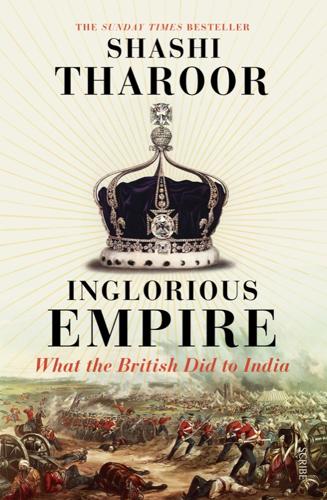
Inglorious Empire: What the British Did to India
by
Shashi Tharoor
Published 1 Feb 2018
The division of businesses into ‘sterling’ (companies operating out of London) and ‘rupee’ (companies that operated out of India) created a commercial gulf that could not easily be bridged. Only the British could invest in sterling companies, while rupee companies were open to both British and Indian investment. Sterling companies tended to focus on utilities, tea and jute; this meant that there were significant barriers to entry for Indians in these markets, which the British reserved for themselves. Moreover, all sterling companies were required to have a British managing agent to oversee them before London-based investors would commit capital. Indian investors were simply kept out. Thus, of 385 joint stock companies in the tea industry in India as late as 1914, 376 were based in Calcutta; and all were owned by the British.
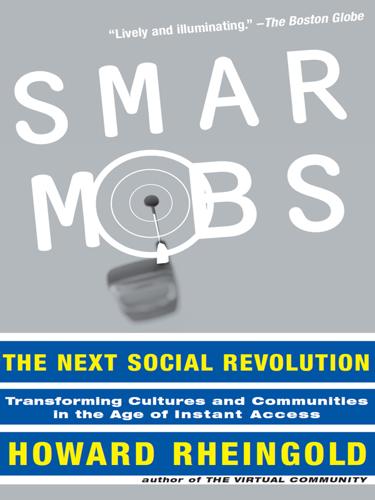
Smart Mobs: The Next Social Revolution
by
Howard Rheingold
Published 24 Dec 2011
NYCWireless was part of an application for an Urban Empowerment Zone grant to bring wireless broadband and computers to low-income neighborhoods in Yonkers.23 Townsend sees wireless networks, whether they are financed as cooperatives, nonprofits, or commercial enterprises, as opportunities to “learn how to use technology to create new connections between people, instead of isolating them.”24 NYCWireless is building alliances with community groups and developing an infrastructure “built around certain core values: community oriented, low barrier to entry, privacy conscious and secure, utilize social contract and social expectations, and provide common ground for interactions.”25 Mark Schultz, a senior associate of law firm Baker and McKenzie who works on legal issues pro bono for NYCWireless, says, “You have to wonder whether it’s going to be part of the infrastructure of the future, just like the streets or the electricity or the sewers and everything else.

Frenemies: The Epic Disruption of the Ad Business
by
Ken Auletta
Published 4 Jun 2018
“Old ways of thinking about competition, devised in the era of oil, look outdated in what has come to be called the ‘data economy.’” Abundant data, they continued, alters the nature of competition, and companies with this data benefit from network effects. The data empowers Google to “see what people search for, Facebook what they share, Amazon what they buy.” They have the resources to erect “barriers” to entry by absorbing potential competitors. And their abundant data allows a peek into private lives, employing this information as a marketing tool. Apple raised its voice against Facebook and Google. With little reliance on advertising, in September 2017 Apple wielded privacy as a weapon against its digital competitors.
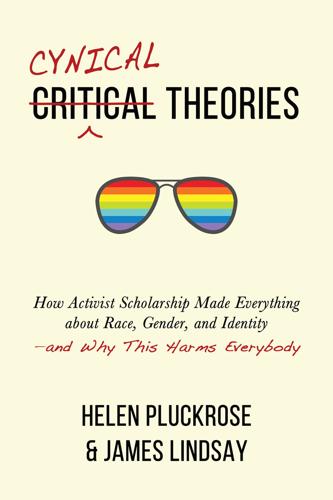
Cynical Theories: How Activist Scholarship Made Everything About Race, Gender, and Identity―and Why This Harms Everybody
by
Helen Pluckrose
and
James A. Lindsay
Published 14 Jul 2020
However, a profound change took place during Western second-wave feminism in the latter half of the twentieth century, when women gained control over their reproductive function and the rights to access all jobs and be paid the same as men for the same work. Now women are to be found in every profession and experience few legal or cultural barriers to entry throughout the West, although they still do not make the same choices in the same numbers as men do. Similar changes resulted from the gay rights and eventually Pride and trans rights movements, which have succeeded at removing many legal and cultural barriers for LGBT people. Even though most of these changes were the result of recognizing the biological roots of sex, gender, and sexuality and the attitudes involved were broadly liberal and individualist—“she’s a person who is trans; okay, fine”—they are taken as evidence of the social constructedness of gender and sexuality by queer Theorists, especially those with a feminist perspective.
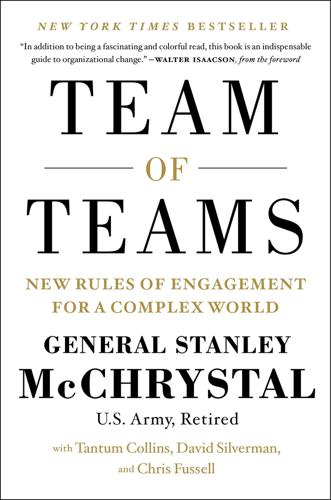
Team of Teams: New Rules of Engagement for a Complex World
by
General Stanley McChrystal
,
Tantum Collins
,
David Silverman
and
Chris Fussell
Published 11 May 2015
A big piece of this was the failure of the Iraqi state, but an even bigger piece was something that extended beyond national borders—something that was temporal, not geographic. A great deal has been written about how the world has become “flatter” and faster. People are more connected, more mobile, and move faster than ever before. By lowering what economists call the “barriers to entry”—prohibitive costs associated with entering a market—these changes have ushered in a universe of new possibilities for players operating outside the conventional systems: Mark Zuckerberg, without family connections, starting capital, or an undergraduate degree, changed the world before hitting his mid-twenties; Justin Bieber posted a self-made video online in 2007 and has since sold 15 million albums, accruing close to $200 million in personal wealth; and Abu Musab al-Zarqawi, buoyed by online bomb-making instructions and the power to recruit and disseminate propaganda worldwide, incited a war.
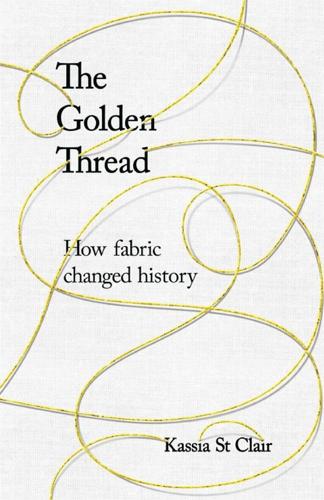
The Golden Thread: How Fabric Changed History
by
Kassia St Clair
Published 3 Oct 2018
‘The whole idea of a game’, he wrote, ‘is to establish rules that create constant conditions, so that painstakingly acquired skills can be brought to bear in a known framework.’ If memorable wins, fast serves and great distances are only achieved with the introduction of new equipment, are they truly valid? Are potentially magnificent athletes going unrecognised because kit has become a barrier to entry? At what point does enhancement obscure true achievement?26 In hindsight, many technological upgrades seem so natural it’s hard to imagine a time when they weren’t part of the fabric of a sport. The innovations Koppet was bemoaning, for example, included shoulder pads and helmets for American football players, artificial turf and dimpled golf balls.

Zucked: Waking Up to the Facebook Catastrophe
by
Roger McNamee
Published 1 Jan 2019
Their products enjoyed network effects, which occur when the value of a product increases as you add users to the network. Network effects were supposed to benefit users. In the cases of Facebook and Google, that was true for a time, but eventually the value increase shifted decisively to the benefit of owners of the network, creating insurmountable barriers to entry. Facebook and Google, as well as Amazon, quickly amassed economic power on a scale not seen since the days of Standard Oil one hundred years earlier. In an essay on Medium, the venture capitalist James Currier pointed out that the key to success in the internet platform business is network effects and Facebook enjoyed more of them than any other company in history.
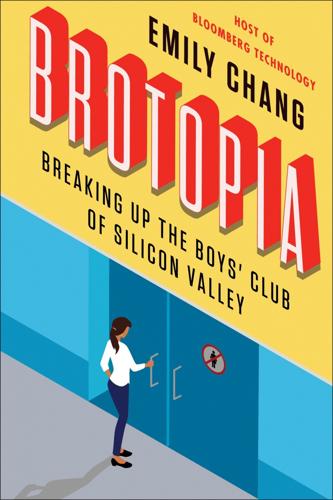
Brotopia: Breaking Up the Boys' Club of Silicon Valley
by
Emily Chang
Published 6 Feb 2018
They increased class size and retrained teachers—even brought in staff from other departments—but when that wasn’t enough, they started restricting admission to students based on grades. At Berkeley, only students with a 4.0 GPA were allowed to major in electrical engineering and computer science. Across the country, the number of degrees granted started to fall. Just as computer science was erecting barriers to entry, medicine—an equally competitive and selective field—was adjusting them. In the late 1960s and early 1970s, dozens of new medical schools opened across the country, and many of the newly created spots went to women. Standardized entry exams also began to change. In 1977, the MCAT, a test for entrance into medical school, was revamped to reduce cultural and social bias.
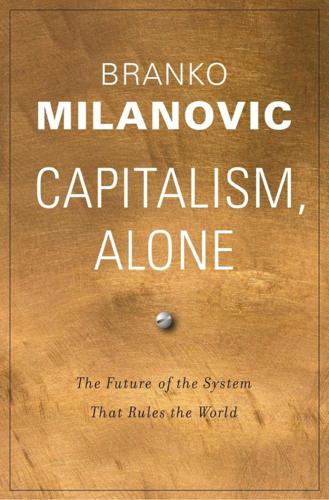
Capitalism, Alone: The Future of the System That Rules the World
by
Branko Milanovic
Published 23 Sep 2019
Feldstein and Yitzhaki (1982) found that rich investors consistently outperformed small investors in returns on their assets.27 Overall, the higher returns that the rich earn on their assets derive from three sources: (1) the rich hold proportionally more assets whose long-term return is higher (the asset composition effect), (2) the rich pay less tax per dollar earned from wealth (the tax advantage), and (3) entry fees and management costs per dollar of assets are lower (the effect of lower barriers to entry). 2.2d Association of High Capital and High Labor Income in the Same Individuals A unique and markedly different feature of liberal meritocratic capitalism compared with its classical form is the presence of people with high labor income among the richest income decile or percentile, and even more interestingly the rising share of the population that has both high labor and high capital income.
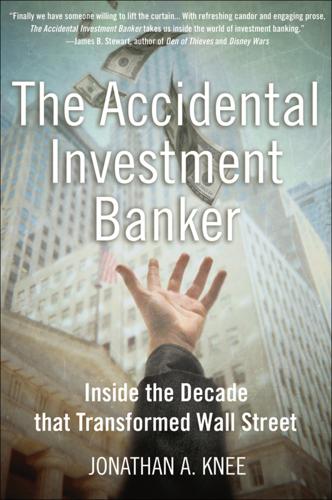
The Accidental Investment Banker: Inside the Decade That Transformed Wall Street
by
Jonathan A. Knee
Published 31 Jul 2006
The resulting United States Code is helpfully annotated to allow easy cross-referencing—by West Key Number of course—to court decisions interpreting the relevant statute. The sheer magnitude of the accumulated intellectual property represented by the literally millions of summarized cases going back over a century represents a significant barrier to entry. Today, the catalogue that simply holds the topic headings for all the different Key Number entries itself runs to several volumes. As we will see, although the then newly emerging world of digital distribution posed some challenges to this franchise, it offered almost as many new opportunities.
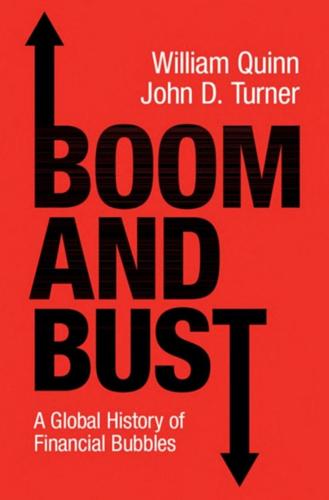
Boom and Bust: A Global History of Financial Bubbles
by
William Quinn
and
John D. Turner
Published 5 Aug 2020
The whole population from statesmen to servant girls, were in the whirlpool.65 The same held true in Melbourne, with members of the stock exchange finding it difficult to get into their offices through the vast crowds of speculators who gathered each day on the streets outside the exchange.66 James Service, the Premier of Victoria until 1886, concurred with this view, adding that ‘there was not a man and hardly a woman in the colony who did not go in head-over-heels to make a fortune during the land boom’.67 Notably, the stories of fortunes being made simply by flipping land several times generated a get-rich-quick mentality among investors and encouraged some to speculate well beyond their means.68 The official history of a notable Melburnian stockbroker suggests that the speculative fervour of the land-boom years had its roots in the discovery of new gold and silver mines in the 1880s.69 The spark which ignited the land boom was the 1887 liberalisation of the restriction on banks from lending on the security of real estate. This was the final act in a 25-year liberalisation process. By the time of the boom, Australia was a prima facie example of a free banking system because it had few legal barriers to entry, few regulations, freedom for banks to issue their own notes and no central bank or lender of last resort.70 In 1862, the British Treasury had devolved responsibility for bank supervision to the individual colonial governments. For a time, the colonies implemented the regulations bequeathed by the British, the most important of which was that banks must not grant mortgages on real estate.
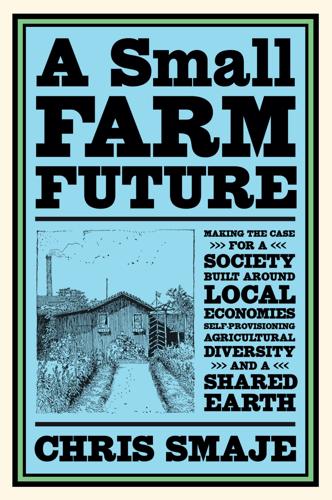
A Small Farm Future: Making the Case for a Society Built Around Local Economies, Self-Provisioning, Agricultural Diversity and a Shared Earth
by
Chris Smaje
Published 14 Aug 2020
Yet there are plenty of examples of protectionism in the present global economy, including the farm subsidies of wealthy countries that undermine the unsubsidised agricultures of poorer ones, limitations on the global free movement of labour, and intellectual property rights such as patents. If such protectionism is so rife within the global capitalist economy despite its rhetoric of open market competition, the case for protecting markets shouldn’t be controversial. Even so, just forms of market protection usually require anti-monopoly policies and low barriers to entry, which, again, in farming situations points to many small-scale, securely tenured producers. This would move protectionism towards more co-operative and internationalist models, and away from corporate monopoly. The advantage of protectionism is that it allows societies to pursue their chosen economic goals without having them undermined from without.
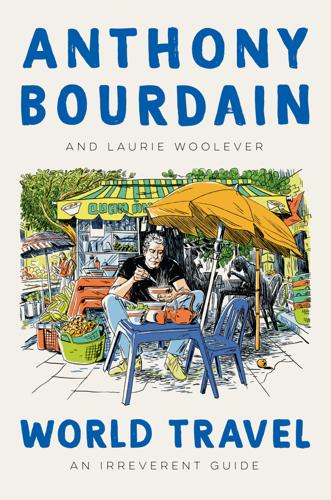
World Travel: An Irreverent Guide
by
Anthony Bourdain
and
Laurie Woolever
Published 19 Apr 2021
Within the city, you can take your chances with a taxi, though apart from a few established companies, taxis are largely unregulated and unmetered, so prepare to negotiate a price and, in some cases, give the driver directions, as many people come from the rural regions looking for work, and there is no barrier to entry as a taxi driver. Lima has an official bus system, El Metropolitano, and an unregulated network of minivans, called colectivos, that are dirt cheap, but slow, unregulated, and not really for the casual, skittish, or non-Spanish-speaking visitor. CEVICHE AND ANCIENT EROTICA IN LIMA * * * “Lima is the cultural hub and culinary capital of a country that has exploded in the last decade, with scores of world-class chefs, cooks, and restaurants.

The Glass Half-Empty: Debunking the Myth of Progress in the Twenty-First Century
by
Rodrigo Aguilera
Published 10 Mar 2020
Firms in industries with the largest increases in product market concentration have enjoyed higher profit margins, positive abnormal stock returns, and more profitable M&A deals, suggesting that market power is becoming an important source of value. In real terms, the average publicly-traded firm is three times larger today than it was twenty years ago. Lax enforcement of antitrust regulations and increasing technological barriers to entry appear to be important factors behind this trend. Overall, our findings suggest that the nature of US product markets has undergone a structural shift that has weakened competition.20 Particularly problematic is the tech industry which, unlike the markets of most goods and services, is naturally prone to concentration.
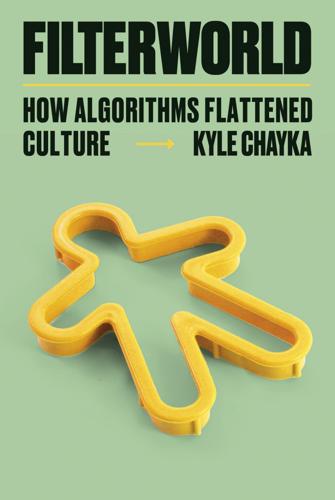
Filterworld: How Algorithms Flattened Culture
by
Kyle Chayka
Published 15 Jan 2024
At least for the major corporations that comprise most of the Internet, the algorithmic tide shows no sign of reversing. In place of the human gatekeepers and curators of culture, the editors and DJs, we now have a set of algorithmic gatekeepers. While this shift has lowered many cultural barriers to entry, since anyone can make their work public online, it has also resulted in a kind of tyranny of real-time data. Attention becomes the only metric by which culture is judged, and what gets attention is dictated by equations developed by Silicon Valley engineers. The outcome of such algorithmic gatekeeping is the pervasive flattening that has been happening across culture.

All That Glitters: A Story of Friendship, Fraud, and Fine Art
by
Orlando Whitfield
Published 5 Aug 2024
For a gallery like ours, the choice was stark: figure out a way to be in central London or stay where we were, accept that collectors would seldom come to our shows, and do several art fairs a year. Neither option is cheap. On the one hand, all fairs are a gamble: you’ve no idea who will turn up and there are often ludicrous barriers to entry such as holier-than-thou requests to bring some unsaleable installation or performance before you’re permitted entry with artworks that might actually make your gallery some money. It’s a widely accepted rite of passage that lends your fledgling gallery’s cultural capital to the fair at your financial expense.
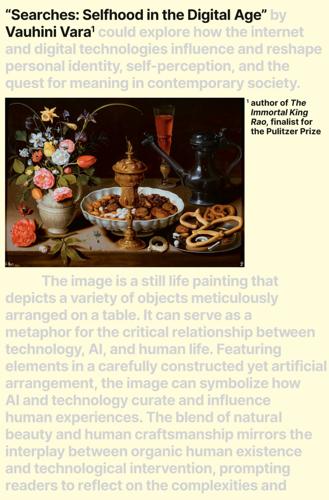
Searches: Selfhood in the Digital Age
by
Vauhini Vara
Published 8 Apr 2025
Versatility: Highlighting AI’s ability to collaborate with diverse voices in literature showcases its versatility across different genres, themes, and cultural contexts. Promoting Diversity and Inclusion: Empowerment: Featuring a woman of color using AI in her literary work can be a powerful statement of empowerment. It signals that AI technology is accessible and beneficial to historically marginalized groups, breaking down barriers to entry in the tech and literary worlds. Representation: Emphasizing the stories and perspectives of women of color through AI collaboration can help address the underrepresentation in both tech and literature, showing a commitment to inclusivity and diversity. Building Trust and Relatability: Human Connection: Using AI to tell personal and poignant stories helps humanize the technology.

The Measure of Progress: Counting What Really Matters
by
Diane Coyle
Published 15 Apr 2025
In digital markets, competition is not a static affair but rather Schumpeterian (Coyle 2019) as firms compete through what have been characterised as their “dynamic capabilities” (Teece et al. 1997); at any time there is likely to be one or a small number of dominant firms, and competition will occur when a rival develops a better product or technology to replace them. Competition analysis increasingly has to focus on the possibilities for innovation and market entry, and the barriers to entry. Chapter 6 returns to the importance of studying production networks as digital and communication technologies have literally rewired economic relations. Another implication that I turn to next is that the economy is more than the sum of its individual parts. 60 Ch a pter T wo Public Capital and Public Services Kenneth Arrow (1969) pointed out that in the presence of extensive increasing returns, economic outcomes w ill be Pareto inefficient and indeterminate, so the standard machinery of equilibrium economic analysis is redundant.

Boom: Bubbles and the End of Stagnation
by
Byrne Hobart
and
Tobias Huber
Published 29 Oct 2024
At various times, Intel’s leadership ensured the company stayed ahead in the product cycle, cut costs below breakeven to make up the difference on volume, managed the notoriously finicky chip fabrication process to maximize yield, and motivated the sales team with death-or-glory campaigns to either raise revenues or risk mass layoffs. The industry’s barrier to entry began to gradually rise as capital equipment became more expensive. In his book The Big Score, Michael S. Malone estimates that the cost of the capital equipment necessary to start economically manufacturing chips, which was around $250,000 in the late 1960s, rose to $100 million by the early 1980s.

Mood Machine: The Rise of Spotify and the Costs of the Perfect Playlist
by
Liz Pelly
Published 7 Jan 2025
And while Spotify could not get away with directly asking for cash payments up front—it would draw attention to their pay-for-play arrangement, and raise questions about how ad-free the ad-free service really was—the program was almost immediately regarded as a payola-like practice by many music advocacy groups. Spotify, of course, framed Discovery Mode as democratizing. Speaking to Music Business Worldwide, one Spotify employee explained it this way: “We’re not asking for any upfront budget or payment, which means there’s no barrier to entry. We were looking for a model that would be more accessible, democratic and fair, so we’re not going to ask any artists to spend any cash.” More artists would now have the freedom to devalue their work, the opportunity to participate in an extractive system, and that was somehow democratic.3 Discovery Mode’s inner workings are, in part, a product of how playlists have evolved more broadly, especially in the algotorial direction.

Understanding Sponsored Search: Core Elements of Keyword Advertising
by
Jim Jansen
Published 25 Jul 2011
Competitive Rivalry: If you have many competitors with equally attractive products or services, then you will likely have little power in the market, as suppliers and buyers will go elsewhere if they do not get a good deal from you. 4. Threat of Substitution: If substitution for your product or service is easy and substitution is viable, then this substitution weakens your competitive situation. 5. Threat of New Entry: If you have strong and durable barriers to entry in your market, then you can preserve a favorable position and leverage it. Competition can affect sponsored-search efforts in many ways, including higher bids on keyphrases, competition over ad position, and increased efforts for advertisements to stand out on the SERP. The key aspect for keyword advertising is that there are usually competitors in the marketplace, so businesses will rarely have location or space all to themselves.

The Third Industrial Revolution: How Lateral Power Is Transforming Energy, the Economy, and the World
by
Jeremy Rifkin
Published 27 Sep 2011
He asked if representatives from our global policy team and Third Industrial Revolution Global CEO Business Roundtable might be willing to assist his ministry, and said that the Cameron government was on a fast track to put together a comprehensive economic plan by the spring of 2011. I agreed and we followed up with a meeting of six of our key policy people and corporate experts, and a like number of the UK government’s point people to discuss the various elements that would need to be integrated into a TIR road map for the United Kingdom, including barriers to entry into the market, scale-up, and commercial penetration. The Cameron team was also interested in the kinds of codes, regulations, and standards, as well as incentives and financial leveraging that would be required to effectively usher in a Third Industrial Revolution economic development plan.

In Our Own Image: Savior or Destroyer? The History and Future of Artificial Intelligence
by
George Zarkadakis
Published 7 Mar 2016
Hundreds of thousands, if not millions, of young entrepreneurs around the world use computers and computer technologies to disrupt business models that held sway for centuries. Think of Airbnb, which has placed digital dynamite at the foundations of the hotel industry; or Uber, which has done the same for taxis. Both companies have reinvented how their respective industries are making money by pulling down barriers to entry and allowing anyone who can drive a car (Uber), or has a place to rent (Airbnb), to become taxi drivers and hoteliers. The list goes on and on. Twenty-something start-up founders become billionaires overnight, demonstrating that in the twenty-first century everyone can become a Thomas Edison.

Age of Discovery: Navigating the Risks and Rewards of Our New Renaissance
by
Ian Goldin
and
Chris Kutarna
Published 23 May 2016
Research shows that as rules for setting up a new company increase, startup activity falls.34 In general, the more rules regulators make, the harder it is for society to follow them and the more creative resources get wasted on compliance. Armies of lawyers are required simply to navigate regulations, greatly raising the barrier to entry for startups and small firms. This wastage is rising rapidly, as regulators try to tame the present moment’s complexity with complicatedness. The total amount of paperwork required by the 2010 Dodd-Frank Act, US lawmakers’ 848-page response to the 2008 financial crisis, passed 30,000 person-years in 2014.35 By one estimate, that’s more time wasted filling forms than it would have taken to catalog every species on the planet.36 Lawmakers and regulators need to resist this tendency.
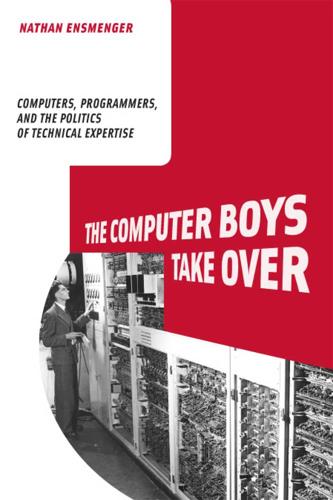
The Computer Boys Take Over: Computers, Programmers, and the Politics of Technical Expertise
by
Nathan L. Ensmenger
Published 31 Jul 2010
In 1965, for example, the Association for Computing Machinery imposed a four-year degree requirement for membership that, in an era when there were almost twice as many male as there were female college undergraduates, excluded significantly more women than men.55 A survey from the late 1970s showed that fewer than 10% of ACM members were women.56 Similarly, certification programs or licensing requirements erected barriers to entry that disproportionately affected women. Finally, professionalism also suggests a certain degree of managerial authority and competence—skills and characteristics that were often seen as being masculine rather than feminine. The CDP examinations, for example, explicitly required candidates to have at least three years of experience, and the majority of CDP holders worked in middle management.57 In his 1971 book The Psychology of Computer Programming, Gerald Weinberg notes the commonly held belief that female programmers were incapable of leading a group or supervising their male colleagues.58 The more programmers were seen as potential managers (a new development that came with professionalization), the more women were excluded.

Planet Ponzi
by
Mitch Feierstein
Published 2 Feb 2012
And that’s what matters: the simple act of competition forces profits down to a normal level. You can even see the same thing with the trade in illegal drugs. As Steven Levitt and Stephen Dubner showed in Freakanomics, most drug dealers live with their moms, simply because there are too many drug dealers competing for too little business.7 Barriers to entry are low. Profits get forced down and down. It’s competition that does this. The social value of the activity doesn’t come into it. But maybe your mind is moving along other lines. Perhaps you don’t like conspiracy theories as a rule. Perhaps you think that the simplest explanation is always the likeliest one: Neil Armstrong really did walk on the moon, the CIA did not kill President Kennedy, Elvis is dead.
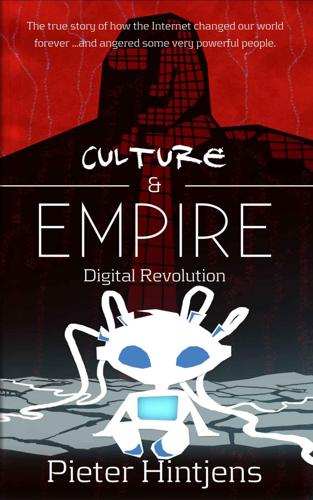
Culture & Empire: Digital Revolution
by
Pieter Hintjens
Published 11 Mar 2013
For every large firm that occupies an impressive building in the "business district," there are tens of thousands of entities that operate from cyberspace with no offices, formal construction, or capital. Most scarily for classic businesses, there is a single, increasingly level playing field. Clients barely care about the impressive offices. The high costs that used to act as a useful barrier to entry are now just overhead. Let's look at the practical realities of starting a small business today: We don't need impressive offices because customers don't care much about seeing how solid and well established we are. It's all about the ability to deliver and building a long-term (Internet-based) reputation.

Smarter Than You Think: How Technology Is Changing Our Minds for the Better
by
Clive Thompson
Published 11 Sep 2013
With Tahrir Supplies, it was Abulhassan; with the Pinboard project, while no one appointed themselves the leader, there were about a dozen very committed fans (Del Cima was one) who did crucial work like formatting the document and weeding out duplicate ideas. These hard jobs require enthusiasm and a time commitment, so they have a higher barrier to entry. But they’re not enough. Really successful collective thinking also requires dilettantes—people who offer a single small bit of help, like doing one edit or adding a fact or photo. Though each microcontribution is a small grain of sand, when you get thousands or millions you quickly build a beach.
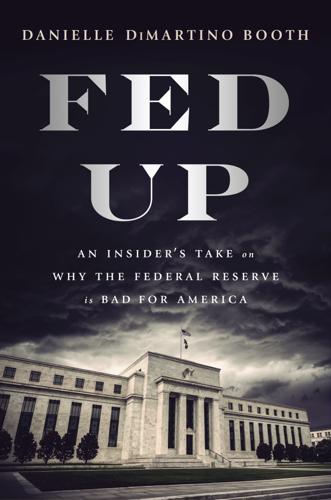
Fed Up: An Insider's Take on Why the Federal Reserve Is Bad for America
by
Danielle Dimartino Booth
Published 14 Feb 2017
Issued after the banking crises of the late 1980s, the new Basel rules required that banks meet a minimum capital requirement and hold even more against riskier assets. For investment bankers seeking to maximize profits, and thus their own compensation, the changes created the need to hide liabilities in the shadows. As deregulation dissolved barriers to entry in the banking industry, the number of new financial entities exploded, fueled by the demand to finance derivatives backed by an astonishing array of collateral such as taxi medallion loans, intellectual property cash flows, aircraft leases, even pop stars’ music royalties. Financial firms began to employ entities called structured investment vehicles (SIV) and conduits to hold these assets OBS.

The Future Is Faster Than You Think: How Converging Technologies Are Transforming Business, Industries, and Our Lives
by
Peter H. Diamandis
and
Steven Kotler
Published 28 Jan 2020
By 2015, Venture Beat reported that a market which typically saw only ten new entrants a year, suddenly had 234. The year 2017 was a banner one for Samsung, when they sold 3.65 million headsets and turned enough heads that everyone from Apple and Google to Cisco and Microsoft decided to investigate VR. Phone-based VR showed up soon afterward, dropping barriers to entry as low as $5. By 2018, the first wireless adaptors, standalone headsets, and mobile headsets had hit the market. Resolution-wise, 2018 was also when Google and LG doubled their pixels-per-inch count and increased their refresh rate from VPL’s 5 frames a second to over 120. Around the same time, the systems began targeting more senses than just vision.

Fire and Fury: Inside the Trump White House
by
Michael Wolff
Published 5 Jan 2018
One competitor in the conservative media business, while acknowledging his intelligence and the ambitiousness of his ideas, also noted, “He’s mean, dishonest, and incapable of caring about other people. His eyes dart around like he’s always looking for a weapon with which to bludgeon or gouge you.” Conservative media fit not only his angry, contrarian, and Roman Catholic side, but it had low barriers to entry—liberal media, by contrast, with its corporate hierarchies, was much harder to break into. What’s more, conservative media is a highly lucrative target market category, with books (often dominating the bestseller lists), videos, and other products available through direct sales avenues that can circumvent more expensive distribution channels.
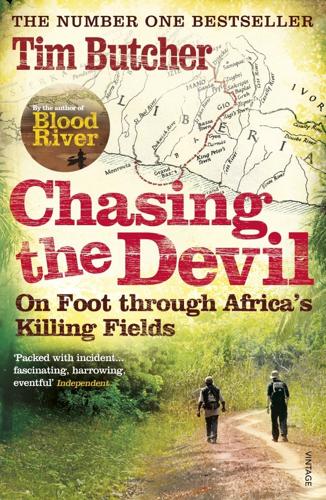
Chasing the Devil: On Foot Through Africa's Killing Fields
by
Tim Butcher
Published 1 Apr 2011
The authorities could not bar people from all the gem-rich riverbeds as they could not fence off the entire eastern region of the country and new arrivals did not need expensive processing equipment because it was not necessary to dig deep in order to strike lucky. A spade, a sieve and access to a promising-looking stretch of riverbed was all that was needed for a person to become a diamond miner. It has been this lack of barriers to entry that has made Sierra Leone’s diamond industry so problematic over the years. From the moment Pollet’s discovery became known, the British colonial authorities struggled to control Sierra Leone’s diamond industry. Smuggling was always a problem and indeed during Graham Greene’s wartime service in Sierra Leone, he was under orders to stop unscrupulous Arab dealers smuggling stones to Germany for use as industrial diamonds in the Nazi war effort.

The Secret Life of Groceries: The Dark Miracle of the American Supermarket
by
Benjamin Lorr
Published 14 Jun 2020
More, it complemented their summer business, providing a year-round core that allowed the ice docks to stay fully staffed, rather than frantically hire seasonal workers. And it diversified Southland from the ice business, which was rapidly losing its utility status, as freezing technology advanced, creating much lower barriers to entry. The chain grew quickly, gobbling up Texas’s ice docks and transforming them into food retailers. To wrangle all these sheds under a common name, and to emphasize their unprecedented accessibility, it was suggested that if all owners agreed to longer hours—à la Green—the chain could be called 7-Eleven.

Green Philosophy: How to Think Seriously About the Planet
by
Roger Scruton
Published 30 Apr 2014
Thus there is the system adopted by Iceland and New Zealand of the ‘individual transferable quota’ (ITQ), which allows the individual holder to catch a specified share of the total allowable catch, and which can be transferred to those more interested in developing a fishing fleet, so that any individual’s expansion of his catch will lead to a diminution elsewhere. This system has enjoyed considerable success in restoring those nations’ once overfished territorial waters. True, the quota system creates a barrier to entry that limits competition to those already in the business. Hence the ITQ system moves of its own accord towards oligopoly, with damaging effects on the settlements in the north of Iceland, which are no longer communities of independent fishermen, and unable to offer employment to their young men.

Binge Times: Inside Hollywood's Furious Billion-Dollar Battle to Take Down Netflix
by
Dade Hayes
and
Dawn Chmielewski
Published 18 Apr 2022
So let’s do it.’” A provocative article published in 2004 by Wired editor Chris Anderson got Iger and his senior management team thinking about the future. In “The Long Tail,” Anderson predicted the internet would radically transform the entertainment economy by creating a frictionless, no-barriers-to-entry platform where niche content would find its audience and flourish. Iger asked corporate strategist Kevin Mayer to examine what this coming democratization of content might mean for Disney as a purveyor of mass-market movies and television shows. That resulted in a forward-looking document called “Disney 2015,” which CFO Tom Staggs and Mayer presented during a board retreat at Walt Disney World in Orlando, Florida.

The Equality Machine: Harnessing Digital Technology for a Brighter, More Inclusive Future
by
Orly Lobel
Published 17 Oct 2022
Similarly, take the example of Wikipedia entries, where twice as many biographical entries are about men than women and far fewer editors are women, even though the site is an open-source initiative, suggesting that the problems of participation extend far more broadly than formal restrictions and barriers to entry. Imagine if bots could take on the task of catching up on human-made entries and filling gaps by creating more biographical entries for women and people of color. As we’re seeing time and again with AI, the possibilities are endless. Children’s books are another important avenue through which people are influenced by the imagery they see.
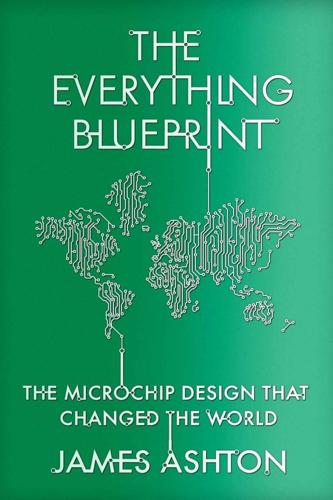
The Everything Blueprint: The Microchip Design That Changed the World
by
James Ashton
Published 11 May 2023
And it was working. In four years since its inception the foundation had attracted around 325 fee-paying members, including most of the top chip suppliers: Qualcomm, automotive specialist NXP Semiconductors and, from China, Alibaba and Huawei. Just as TSMC, the foundry pioneer, had succeeded in lowering barriers to entry by removing the need to build a foundry, RISC-V was a magnet for chip-design start-ups on tight budgets. It sparked a new round of innovation and excited many in China and Russia, who were eager to try an architecture other than the West’s Arm and Intel, home of x86. RISC-V also found favour in the European Union, where the European Processor Initiative (EPI) pinned hopes on it as one path to semiconductor independence for the bloc.

Market Risk Analysis, Quantitative Methods in Finance
by
Carol Alexander
Published 2 Jan 2007
I discovered this to my cost when I took a position as a ‘bond analyst’ after completing a postdoctoral fellowship in algebraic number theory. One reason for the lack of rigorous quantitative analysis amongst asset managers is that, traditionally, managers were restricted to investing in cash equities or bonds, which are relatively simple to analyse compared with swaps, options and other derivatives. Also regulators have set few barriers to entry. Almost anyone can set up an asset management company or hedge fund, irrespective of their quantitative background, and risk-based capital requirements are not imposed. Instead the risks are borne by the investors, not the asset manager or hedge fund. The duty of the fund manager is to be able to describe the risks to their investors accurately.

The Wrecking Crew: How Conservatives Rule
by
Thomas Frank
Published 5 Aug 2008
Hicks, Republican Ascendancy, 1921–1933 (New York: Harper and Brothers, 1960), pp. 62–68. 22. George J. Stigler, “The Theory of Economic Regulation,” Bell Journal of Economics and Management Science, Spring 1971, pp. 12, 17. Stigler’s larger criticism was that regulation had effectively formed cartels across the economy. In certain industries this was true: by creating barriers to entry and regulating prices, regulatory agencies made cartels possible; the agencies’ capture by industry sealed the deal. Although Stigler got the Nobel Prize for pointing this out, the idea had in fact been spelled out in far greater and more convincing detail by the historian Gabriel Kolko in his 1963 book, The Triumph of Conservatism.
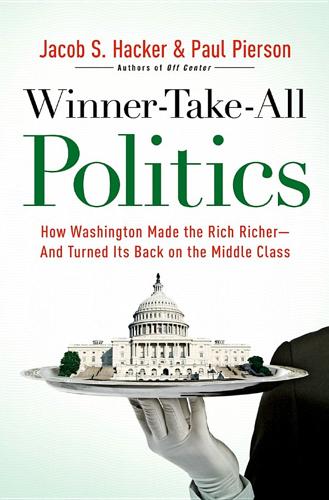
Winner-Take-All Politics: How Washington Made the Rich Richer-And Turned Its Back on the Middle Class
by
Paul Pierson
and
Jacob S. Hacker
Published 14 Sep 2010
At the same time, Congress and the president embarked on a major shift in economic policy, embracing the argument that excessive regulation had become a serious curb on growth. In the mid to late 1970s the call for deregulation was often bipartisan and narrowly focused. It centered on particular sectors of the economy (transportation, communications, energy). Equally important, it targeted a specific form of regulation that erected barriers to entry, enabling existing firms to raise prices and fostering cozy relationships between regulators and favored firms. Yet this deregulatory stream created an opening for broader action. It would not be long before it flooded over its narrow banks to become an ever-widening attack on the very idea of economic regulation.
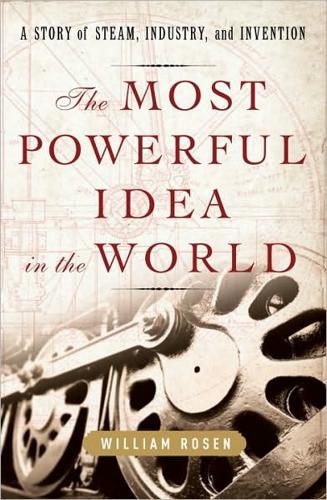
The Most Powerful Idea in the World: A Story of Steam, Industry, and Invention
by
William Rosen
Published 31 May 2010
It was also, in Defoe’s words, “a city of business [with] the face of foreign as well as domestick trade” and a textile manufacturing center specializing in “stuff cross-striped with yellow, red, and other mixtures” (i.e. plaid), which meant that it was also home to its own guilds, just as jealous of their prerogatives as their London counterparts. In the case of Watt’s newfound skills, the barrier to entry was manned by the rather fearsome-sounding “Incorporation of Hammermen,” who, in the time-honored practice of every guild, weren’t enthusiastic about recognizing a competitor who had failed to go through an approved apprenticeship. So when his former patron, Professor Dick, in need of someone to repair the sea-damaged Macfarlane collection, offered a payment of £5, and more important, permitted him to set up shop as “Mathematical Instrument Maker to the University,” it was truly a godsend.

Cocaine Nation: How the White Trade Took Over the World
by
Thomas Feiling
Published 20 Jul 2010
Even the local DEA office in Detroit admitted that ‘kids in the ghetto who couldn’t get jobs or couldn’t get to jobs because they didn’t have transportation out to the suburbs could rock up cocaine and sell it on any street corner’.26 On the one hand, the Chambers brothers were the lead characters in an archetypal American story of entrepreneurial success. They had identified a niche market, studied and overcome barriers to entry, bought wholesale, tracked inventory, managed cash flow, analysed risk and expanded aggressively until they cornered the market. Plenty of those involved in the upper echelons of the cocaine business, such as Lance in South Jamaica, Queens, craved the respect granted to their counterparts in the legal economy and regarded themselves as successful businessmen whose stock-in-trade happened to be illegal.

The New Digital Age: Transforming Nations, Businesses, and Our Lives
by
Eric Schmidt
and
Jared Cohen
Published 22 Apr 2013
Contemporary services like Spotify, which offers a large catalog of live-streaming music for free, give us a sense of what the future will look like: an endless amount of content, available anytime, on almost any device, and at little or no cost to users, with copyrights and revenue streams preserved. Long-standing barriers to entry for content creators are being flattened as well; just as YouTube can be said to launch careers today1 (or at least offer fleeting fame), in the future, even more platforms will offer artists, writers, directors, musicians and others in every country the chance to reach a wider audience. It will still require skill to create quality content, but it will also be easier to assemble a team with the requisite skills to do this—say, an animator from South Korea, a voice actor from the Philippines, a storyboarder from Mexico and a musician from Kenya—and the finished product may have the potential to reach as wide an audience as any Hollywood blockbuster.
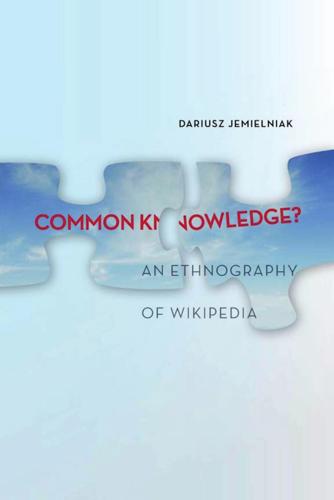
Common Knowledge?: An Ethnography of Wikipedia
by
Dariusz Jemielniak
Published 13 May 2014
Still, the amount of peer control that all Wikipedians experience is extremely high. There is a Panopticon-like record of everyone’s actions, and Wikipedia’s control of participation through a high degree of regulation and procedures would be surprising even for a highly bureaucratic organization. This paradox may stem from the community’s need to stratify users and create barriers to entry for newcomers and the natural tendency to introduce informal strategies of domination and differentiation of user status. To study this further, it may be useful to focus on how open-collaboration communities, and Wikipedia in particular, solve the problem of control and regulation. Molly McLure Wasko, Robin Teigland, and Samer Faraj (2009) observe that in some electronic networks of practice, the community is sustained not necessarily through strong ties among the members but rather by the ties between members and the community.
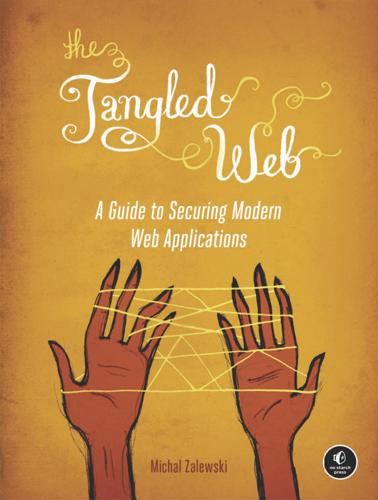
The Tangled Web: A Guide to Securing Modern Web Applications
by
Michal Zalewski
Published 26 Nov 2011
The User as a Security Flaw Perhaps the most striking (and entirely nontechnical) property of web browsers is that most people who use them are overwhelmingly unskilled. Sure, nonproficient users have been an amusing, fringe problem since the dawn of computing. But the popularity of the Web, combined with its remarkably low barrier to entry, means we are facing a new foe: Most users simply don’t know enough to stay safe. For a long time, engineers working on general-purpose software have made seemingly arbitrary assumptions about the minimal level of computer proficiency required of their users. Most of these assumptions have been without serious consequences; the incorrect use of a text editor, for instance, would typically have little or no impact on system security.

Finance and the Good Society
by
Robert J. Shiller
Published 1 Jan 2012
That business creates liquid investments for institutional investors, which resemble deposits, and so the shadow bankers are in e ect creating money as well. Thus their activities may involve a risk of collapse of the entire economic system, just as with commercial banks.7 A bank’s business—which may have had signi cant “charter value” because of barriers to entry into banking that serve to inhibit new competitors—is adversely a ected by these new competitors. Thus traditional banks may feel an imperative to branch out, and they may start behaving like the shadow banks if they can, entering unconventional new lines of activity like originating subprime mortgage securities and thus creating risks to the economic system that may not be noticed by regulators of traditional banks.8 That is what led to the current financial crisis.

How to Build a Billion Dollar App: Discover the Secrets of the Most Successful Entrepreneurs of Our Time
by
George Berkowski
Published 3 Sep 2014
By sharing and collaborating in this way, inexperienced developers can build new apps with features that have been refined by numerous developers before them. It means that building an app is many times faster – and more robust. When you think about the snowball effect this has, it gets very exciting, as it is constantly lowering the barriers to entry into the software world, and at the same time improving the quality of software. Mash it up now The second factor doesn’t sound too friendly: application programming interface (or API for short). In boring language, this is a common interface that specifies how one computer application can talk to another computer application in a way that can be understood by both sides.
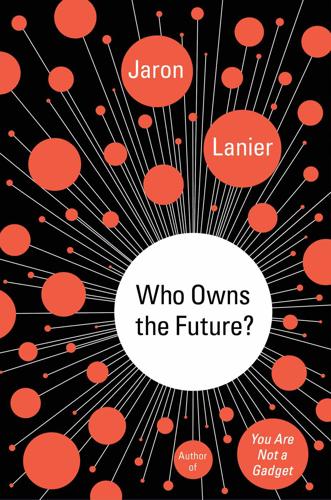
Who Owns the Future?
by
Jaron Lanier
Published 6 May 2013
The story isn’t over, and if I thought any particular outcome was really inevitable, I wouldn’t bother trying to influence it. What I can do is capture an impression of what seems to be coming if nothing changes. We’ve learned a little from watching what has happened with music, video, news, and photography. Here is a likely, though not inevitable, outcome: • There will be little barrier to entry for authors, except for writing the damned book. You’d just write a book and upload it. That’s already true, but it will become a little truer still. You’ll be able to enlist ghost coauthors even more easily than now, and they might be crowdsourced or just plain Artificial Intelligence software.
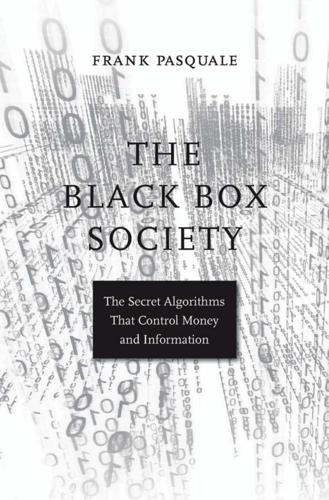
The Black Box Society: The Secret Algorithms That Control Money and Information
by
Frank Pasquale
Published 17 Nov 2014
Nathan Newman, “Search, Antitrust, and the Economics of the Control of User Data,” August 13, 2013, 1. Available at http://papers.ssrn.com /sol3/papers.cfm ?abstract _id=2309547 (“what is largely missed in analyses defending Google from antitrust action is how that ever expanding control of user personal data and its critical value to online advertisers creates an insurmountable barrier to entry for new competition”). Benjamin Edelman, “Bias in Search Results?: Diagnosis and Response,” Indian Journal of Law and Technology 7 (2011): 16–32, 30. 66. Search engines rank websites at least in part by algorithmically processing signals from the site (such as the number of links to it, the number of links to those links, whether users have clicked on the site when it was ranked in search results previously, etc.).

Giving the Devil His Due: Reflections of a Scientific Humanist
by
Michael Shermer
Published 8 Apr 2020
This can be done directly in the question-and-answer period of the person’s talk, or in an opinion editorial in the campus or city newspaper, in a book or magazine article, in a blog or podcast, on Facebook or Instagram, or any of a number of other venues now readily available online at virtually no cost and with no barrier to entry. The reasons to counter hate speech with free speech are covered in my Ten Commandments of Free Speech and Thought above (especially numbers 1, 2, and 3), but to punctuate the point I offer this poignant observation of Christopher Hitchens, who cautioned: To whom do you award the right to decide which speech is harmful, or who is the harmful speaker?
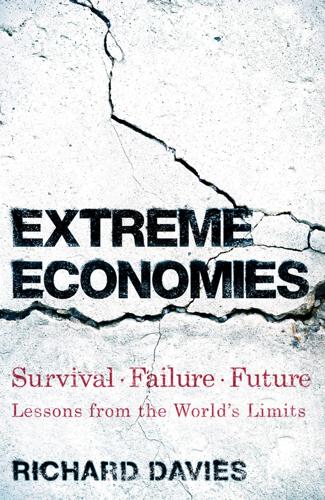
Extreme Economies: Survival, Failure, Future – Lessons From the World’s Limits
by
Richard Davies
Published 4 Sep 2019
Zaatari, in its own accidental way, is akin to the kind of state-subsidized enterprise zone that governments, most notably China, use to stimulate activity. While not sustainable in the long term, it does offer a lesson in how an economic hub can be launched by lowering entrepreneurs’ costs and barriers to entry. Once off the ground, the business community in Zaatari explained how they seek their own efficiencies too: one of the secrets of Hasan Al Arsi’s success as a baker is economies of scale, he explains. Knowing that knafeh – miniature pastry nests with nuts nestling inside – is a strong seller, he makes huge quantities of these and other baked sweets at his main bakery.
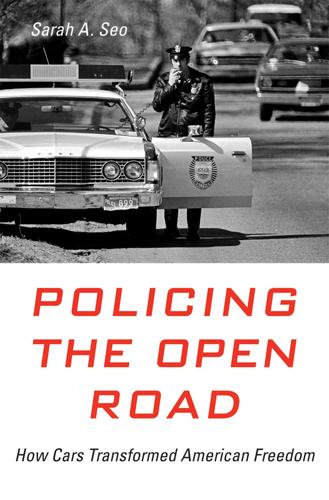
Policing the Open Road
by
Sarah A. Seo
His lifelong mission was to raise the standing of the police on par with “teachers, doctors, lawyers and engineers.” He had a specific idea of what it meant to be a professional, and the patrol car helped to reshape the police into the image of a crime fighter. The automobile, in other words, was a key element of Vollmer’s professionalization strategy. For one thing, the patrol car erected a barrier to entry that distinguished public officers from private security. The expense would have been prohibitive for many one-man shops offering patrol services; indeed, many departments at first could afford only a few radio-equipped cars. As cars became more readily available at lower costs, police chiefs lobbied for laws not only equipping official vehicles with sirens and other special markers but also requiring nonofficial vehicles to remove them.

Work Won't Love You Back: How Devotion to Our Jobs Keeps Us Exploited, Exhausted, and Alone
by
Sarah Jaffe
Published 26 Jan 2021
Bolt, Beranek and Newman, the firm given the contract to make the network a reality, was known for hiring dropouts from the Massachusetts Institute of Technology (MIT) in its hometown of Cambridge. Dropouts were smart enough to get into MIT, but without the degree, they cost less to hire. In just a few short years, the field had gone from instituting degree requirements as a class and gender barrier to entry to preferring those who cheerily tossed those requirements aside—and not long after that, to the legend of the Stanford or MIT dropout who created a company in his garage. 14 There were a lot of sixteen-hour days, a lot of late nights and missed dinners, and a lot of sleeping at the desk for the programmers involved in creating the network—as well as for the graduate students who, at the various receiving sites for the ARPANET-connected computers, did much of the work of getting computers to talk to one another.

Click Here to Kill Everybody: Security and Survival in a Hyper-Connected World
by
Bruce Schneier
Published 3 Sep 2018
Norms provide a reference point that consumer advocacy groups, the media, and corporate shareholders can use to hold companies to account. Two: voluntarily, through self-regulation. Sometimes industry and professional bodies have an interest in creating and enforcing voluntary standards. These serve to increase consumer trust, and form a protective barrier to entry for new competitors. Three: through litigation. If customers or businesses can sue when they suffer damage, companies increase their security to avoid those lawsuits. Four: through regulatory bodies. Government agencies with the power to issue fines, demand recalls, or force companies to redress defects can enforce standards.

Hedgehogging
by
Barton Biggs
Published 3 Jan 2005
ccc_biggs_ch16_219-238.qxd 226 11/29/05 7:05 AM Page 226 HEDGEHOGGING There is no arguing that, when it works and you are with the best, it’s wonderful. However, he tells me that, when they are in their cups, the rich, old guys he gossips with admit they got killed in VC.Viewed dispassionately,VC is a risky, brutal business littered with busts, burdened with a high deal-failure rate, and with low barriers to entry for new firms. Furthermore, it is very difficult to exit, because you can’t take your money out. However, if you invest at the right time with the right people, you can have a wonderful ride. The Venture Economics index cited in Chapter 10 reports a mean return of 15.8% annually for the average VC fund from 1969 through 2002, which is about right for a highly illiquid investment.

Tools and Weapons: The Promise and the Peril of the Digital Age
by
Brad Smith
and
Carol Ann Browne
Published 9 Sep 2019
The cycle will continue with returns to scale, so that eventually this firm will crowd out everyone else in the market. According to Kai-Fu, “AI naturally gravitates toward monopolies . . . once a company has jumped out to an early lead, this kind of ongoing repeating cycle can turn that lead into an insurmountable barrier to entry for other firms.”3 The concept is a common one in information technology markets. It’s referred to as “network effects.” It has long been true in the development of applications for an operating system, for example. Once an operating system is in a leadership position, everyone wants to develop apps for it.
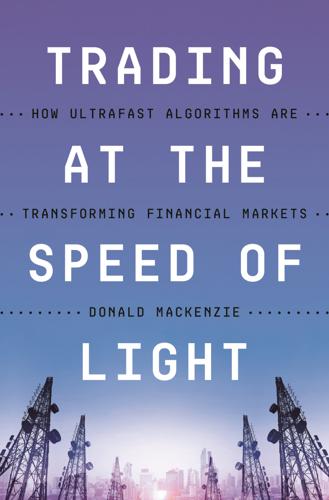
Trading at the Speed of Light: How Ultrafast Algorithms Are Transforming Financial Markets
by
Donald MacKenzie
Published 24 May 2021
Interviewee CR, for instance, reports the Italian Ministry of Finance as being “a bit uncomfortable with non-banks” such as HFT firms, because their entry would further reduce “the profitability of being a primary dealer” and potentially threaten banks’ willingness to take on the role. A primary dealer, similarly, spells out the reasons for governments’ reluctance to be swayed by HFT firms’ argument that “algo trading makes the market more efficient”: [Y]ou can shout and scream as much as you want and you call about clubbing [barriers to entry] but … if I’m an Italian [government] debt manager and I have [€] 2 trillion debts to service of which [€] 300 billion a year to issue, I don’t care if you’re a hedge fund in America and you talk to me about price efficiency. Go and take a hike.… [I]f you want to come, guarantee to me that you’re going to buy 3 percent of my debt and get a banking license, come on board.
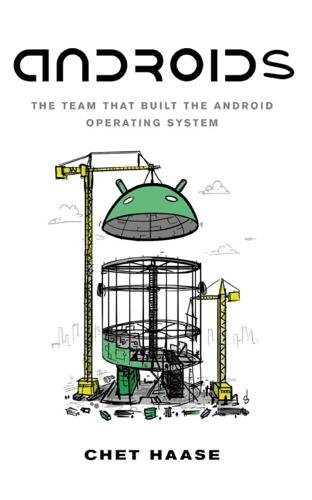
Androids: The Team That Built the Android Operating System
by
Chet Haase
Published 12 Aug 2021
–Steve Ballmer, Microsoft310 One of the reasons behind Android’s growth is the developer ecosystem that was created along the way, enabling thousands (now millions) of applications for people to find, download, and use. But this kind of ecosystem doesn’t just happen automatically, especially for a new platform with no market share. In order to lower the barrier to entry for application developers, to make it easier for them to write and publish their applications, Android needed to provide tools for developers. A determined developer could write code and use some obscure commands in a terminal to compile that code into an application. If that developer just wanted to write a “Hello, World!”

Wasteland: The Dirty Truth About What We Throw Away, Where It Goes, and Why It Matters
by
Oliver Franklin-Wallis
Published 21 Jun 2023
Buying goods plastic-free and in bulk is more expensive, requires time and effort, and often the use of a car to carry around all those containers. (I often noticed zero-waste shoppers arriving in Land Rovers, surely undoing the carbon benefits of their plastic-free packaging in a single trip.) As much as I wanted to embrace zero-waste shopping, the barriers to entry just felt too high. And perhaps they were: by the time the pandemic was over, most of the zero-waste shops near me had closed again.6 That isn’t to say that refill stores won’t work – in fact, they have already started to inspire wider reforms. Supermarket chains including Tesco and Waitrose have now started to introduce refill aisles for certain goods, and even plastic-polluting giants such as P&G and Unilever have started to sell refills for certain product lines.

Unknown Market Wizards: The Best Traders You've Never Heard Of
by
Jack D. Schwager
Published 2 Nov 2020
It was close enough to my kids and far enough from my ex-wife, who lived in Connecticut. I also picked Rhode Island because of a business opportunity. Marijuana had just become legal in Rhode Island, and it looked to me like an incredible opportunity. There was so much money to be made, and there was a significant barrier to entry. What barrier? Most people didn’t want to have the stigma of being involved in the pot business. I didn’t care about any stigma. What was the opportunity that you saw? A lot of people wanted to grow pot, but they didn’t have any money to start an operation. We’re not talking about doctors, lawyers, or hedge fund managers looking to grow pot; these are 24-year-old kids who didn’t go to college and are working at some blue-collar job.
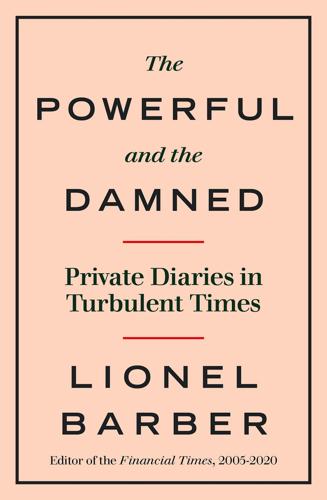
The Powerful and the Damned: Private Diaries in Turbulent Times
by
Lionel Barber
Published 5 Nov 2020
Like Dacre, I believe the government’s alternative of a Royal Charter is a backdoor to state regulation of the press.fn1 The other way to go is to create the FT’s own system of self-regulation. I’ve written a draft proposal with one central premise: ‘We are a genuinely different news organisation with a global footprint and an expanding digital model, all of which sets us apart from our British competitors.’ In new media, the barriers to entry have fallen and information is communicated instantly to mass audiences. Of course, news organisations must comply with the law, criminal and civil. But national regulation based around print media is meaningless. None of our direct established competitors – Bloomberg, the New York Times, Reuters and the Wall Street Journal – is ready to join a UK regulatory body.

Billionaires' Row: Tycoons, High Rollers, and the Epic Race to Build the World's Most Exclusive Skyscrapers
by
Katherine Clarke
Published 13 Jun 2023
However, while New York was synonymous with its skyscraper-dominated skyline in the twentieth century, the pace and ambition of its skyscraper construction wasn’t keeping up with what was happening in Asia and the Middle East a century later. Labor costs had made New York City one of the most expensive cities to build in, and land was scarce. Strict zoning regulations also meant that building a tower of more than a thousand feet in most parts of the city would involve facing off with community boards and planning officials. The barriers to entry were high. Developers in New York also had less interest in building megatalls. For the most part, the demand for the space simply hadn’t been great enough to justify the enormous cost of construction. By contrast, in Asia and the Middle East, the push to build tall emerged from less of a practical concern—to facilitate population growth and avoid urban sprawl—and more of a mission of symbolism and status.

Gambling Man
by
Lionel Barber
Published 3 Oct 2024
In a homogeneous society, Masa stood out because he was comfortable with risk and disruption. He had no time for consensus-building, he wanted on-the-spot decision-making. His three favourite words were: ‘Let’s do it.’3 Kotick was keen to crack the Japanese market, knowing the prize was access to more than 100m consumers with a fair chunk of change in their pockets. Yet the barriers to entry were formidable, in many ways more cultural than commercial. Most Americans spoke no Japanese. They had little grasp of Japan’s culture or history beyond the surprise attack on Pearl Harbor and a Pacific war which cost 111,000 American lives and more than a quarter of a million wounded. Most had little idea that Japan lost 3m lives – and an entire empire.
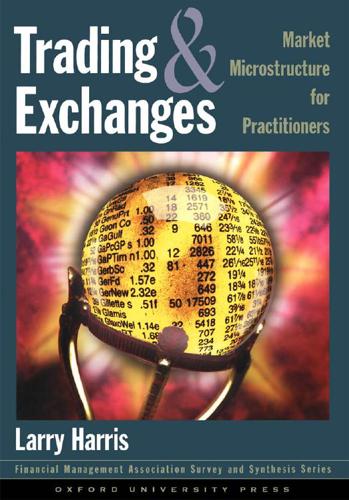
Trading and Exchanges: Market Microstructure for Practitioners
by
Larry Harris
Published 2 Jan 2003
A similar result appears in all introductory economics textbooks. We will not explain it here because dealers can rarely behave as monopolists in financial or commodity markets. Monopolies are successful only when monopolists can prevent competitors from entering their markets. In most security and contract markets, the barriers to entry that dealers face are low. Dealers always look for markets in which they can make money. If dealing profits are excessively high in some market, they will enter that market and try to participate in the excess profits. Their entry tends to lower spreads, and thereby the profits of all dealers in the market.
…
Those disks, however, helped to create AOL’s unassailable market position. ◀ * * * Trading systems are networks that link many potential buyers to many potential sellers. The more buyers and sellers who participate in the system, the more valuable it is to everyone who uses it. Network externalities can create tremendous barriers to entry. Usually, one trading system grows large, and no other system can become large enough, quickly enough, to be a viable economic competitor. Markets with network externalities are winner-take-all markets. Without government regulation, new entrants often cannot get a toehold. The U.S. government requires that all phone companies allow all other phone companies to access their networks.

The Rise and Fall of American Growth: The U.S. Standard of Living Since the Civil War (The Princeton Economic History of the Western World)
by
Robert J. Gordon
Published 12 Jan 2016
The difference between picking up a lace nightgown versus unraveling a pair of crumpled jeans knotted with other clothes is a calculation that requires massive computing power and a soft touch.55 3D printing is another revolution described by the techno-optimists. Its most important advantage is the potential to speed up the design process of new products. New prototypes can be designed in days or even hours rather than months and can be created at relatively low cost, lowering one major barrier to entry for entrepreneurs trying to attract financing for their startups. New design models can be simultaneously produced at multiple locations around the world. 3D printing also excels at one-off customized operations, such as the ability to create a crown in a dentist office instead of having to send out a mold, reducing the process of creating and installing a dental crown from two office visits to one.
…
Australia serves as a model: College education is free for students while in college, after which a fraction of the cost is repaid through the income tax system, based on a percentage of taxable income. During a spell of unemployment or if income is below a particular threshold, no payment is due until an adequate job is found. The system is subsidized in that 20 percent of the outstanding debt is never repaid.14 Regressive Regulation Throughout American economic life, regulatory barriers to entry and competition limit innovation by providing excessive monopoly privileges through copyright and patent laws, restrict occupational choice by protecting incumbent service providers through occupational licensing restrictions, and create artificial scarcity through land-use regulation. They contribute to increased inequality while reducing productivity growth.

China into Africa: trade, aid, and influence
by
Robert I. Rotberg
Published 15 Nov 2008
These agendas are very different from that of the Chinese, and while they may not significantly change the views of the central government, they certainly are 06-7561-4 ch6.qxd 9/16/08 4:16 PM Page 123 China’s Oil Strategies in Africa 123 enhancing the image of Chevron and Total at the local level. Whether China’s current hiring practices will be sustainable in Angola and other regions of Africa is an open question. Third, many experts believe China is overpaying for its access to oil. Perhaps such high payments are required to knock down the barriers to entry, and perhaps they buy security benefits sufficient to make the high prices reasonable. To some extent, Japan pursued a similar strategy after the 1973 embargo, arguing that cost premiums served the role of insurance. This rationale seemed logical at the time, but eventually the cost of those premiums became a fiscal drain.

The Market for Force: The Consequences of Privatizing Security
by
Deborah D. Avant
Published 17 Oct 2010
Meanwhile, the competence of consumer judgments will matter for whether consumers lead the industry or vice versa.4 If there are a variety of PSCs, companies are worried about their reputation and prospective employers can easily know what they are likely to be buying, consumers can exercise the most effective control with purchasing decisions. As Jeff Herbst has argued, “[I]n industries where the barriers to entry are low and where, as a result, companies probably cannot compete on price alone, firms will necessarily attempt to differentiate themselves in other ways.” He predicted that a distinction would emerge between upscale firms (that appeal to the UN, INGOs, and other upstanding members of the international community by virtue of their willingness to abide by international law) and downscale firms (that appeal to non-lawful elements).5 If wealthy consumers only hire upscale firms, are a significant portion of the demand, and have the requisite information about PSCs’ behavior, this may be true.
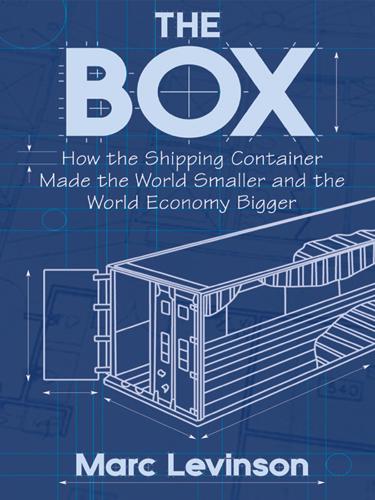
The Box: How the Shipping Container Made the World Smaller and the World Economy Bigger
by
Marc Levinson
Published 1 Jan 2006
Establishing a viable container operation in the United States-Asia trade, one economist estimated in 1978, would require $374 million to buy five ships plus containers, chassis, and cranes. Common sense suggested that anyone putting up that much money would join conferences in hopes of keeping rates high enough to recover costs. But in the second half of the 1970s, it turned out that the barriers to entry were not as high as they seemed. Shipbuilding costs, which had risen 400 percent from the end of 1970 through the end of 1975, began to fall as the collapse of the oil tanker market left shipyards bereft of orders. Builders slashed prices and extended loans just to keep their yards at work. Bargains on new vessels allowed traditional ship lines such as Maersk of Denmark and Evergreen Marine of Taiwan to elbow their way into container shipping.

Pivotal Decade: How the United States Traded Factories for Finance in the Seventies
by
Judith Stein
Published 30 Apr 2010
The left often tried to transcend markets, and the right never acknowledged that all markets are created by laws and that they reflected power as well as efficiency. A U.S. mandate for low prices for domestic oil was difficult in the face of the OPEC increases. Restrictions on entry into the long distance telephone market could not be maintained indefinitely once any significant economic barriers to entry were removed. Subsidizing local telephone rates by keeping long distance rates high was untenable when new technologies permitted substitution or bypassing of high long distance rates. Regulated interest rates could not remain far below market rates. On the other hand, unregulated markets could not guarantee energy supplies, health care, or an American steel industry.
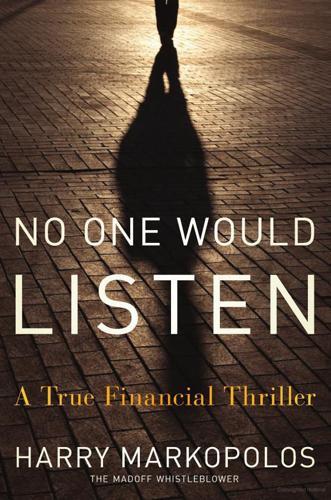
No One Would Listen: A True Financial Thriller
by
Harry Markopolos
Published 1 Mar 2010
Neil told me that when Vijayvergiya said seriously that “Madoff doesn’t have the operational capability to set up a hedge fund structure,” he had to consciously stop himself from laughing out loud. This guy actually expected Neil to believe that Bernie Madoff, who had helped found NASDAQ and who had built his own market-making operation, couldn’t set up his own hedge fund. It probably takes about $50,000, a computer, and some office furniture to open a hedge fund. There are no barriers to entry into the hedge fund world. All you have to do is copy someone else’s documents and file a few papers, and you’re in business. Neil finally replied, “Well, I can’t believe Bernie couldn’t just open a hedge fund and hire all the people he needs around the world for less than $20 million a year and keep all the rest for himself.
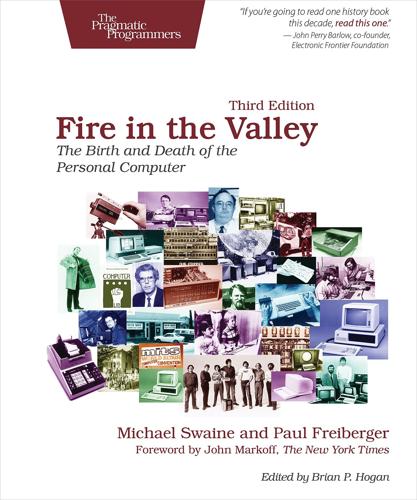
Fire in the Valley: The Birth and Death of the Personal Computer
by
Michael Swaine
and
Paul Freiberger
Published 19 Oct 2014
The low-budget Arduino and Raspberry Pi being used by electronics hobbyists of today are rare examples of computers that are still intended to be programmed by their users. Perhaps the shift away from hobbyist programming is balanced by the growth in website development, which has a very low barrier to entry. The industry has changed, but for one player the change had come much earlier, and he decided he didn’t want to be a part of it any longer. The Electronic Frontier At the height of his power and influence at Lotus Development Corporation, Mitch Kapor walked away from it all. Lotus had grown large very quickly.
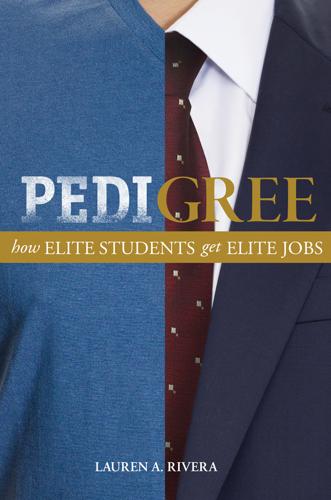
Pedigree: How Elite Students Get Elite Jobs
by
Lauren A. Rivera
Published 3 May 2015
By contrast, members of privileged classes, who are free of subsistence concerns, gravitate toward goods and practices that are less directly useful; more ephemeral, abstract, complex, and difficult to acquire; and require significant investments of time, money, and energy.33 Such class-based differences manifest in a variety of domains, ranging from the types of music that people enjoy to the sports they play.34 When it comes to sports, for example, individuals from less affluent backgrounds may gravitate toward games that have low economic barriers to entry and straightforward rules, such as pickup basketball or soccer, whereas more affluent individuals are more likely to play sports that require extensive training and expensive equipment or uniforms, can only be played in specific, elite spaces, or have elaborate rules, such as court tennis, squash, or polo.

The Euro: How a Common Currency Threatens the Future of Europe
by
Joseph E. Stiglitz
and
Alex Hyde-White
Published 24 Oct 2016
The OECD report that underpinned the pharmacy reform specifically called for removing restrictions on pharmacy chains. 10 Harriet Torry, “Germany Yet to Swallow Some Economic Medicine Prescribed for Greece: Overhauls Demanded by Greece’s Creditors Go Beyond Those Enacted Earlier in Germany,” Wall Street Journal, updated July 14, 2015. 11 “The Euro-Summit ‘Agreement’ on Greece—annotated by Yanis Varoufakis,” July 15, 2015, posted on his blog at http://yanisvaroufakis.eu/author/yanisv/. 12 And when the profits went to a European country already at full employment, the net effect for Europe as a whole could be significantly negative: while Greece would contract, Germany, already at full employment, could not expand. 13 This is especially likely to be the case under Greece’s new program, where when government revenues fall, taxes must be raised or other expenditure must be cut back. 14 There were other aspects of the reform agenda that were also counterproductive, as we noted in the last chapter. The demand that even small businesses pay their taxes a year ahead of time not only encourages noncompliance, but it also has an adverse supply-side effect: it creates a large barrier to entry. Only someone with enough capital to pay their taxes a year ahead of time can enter, or stay, in business. While seemingly neutral toward small and large businesses, it actually is strongly biased against small businesses, which make up more than 80 percent of the Greek economy—for big businesses typically have easy access to funds; they can borrow.
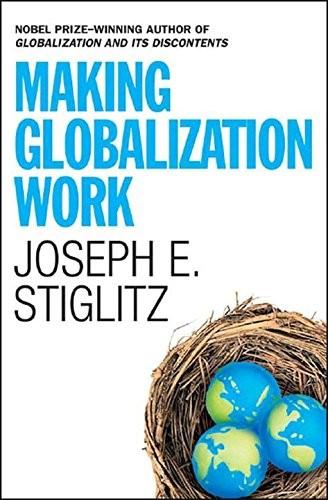
Making Globalization Work
by
Joseph E. Stiglitz
Published 16 Sep 2006
At one point, Papua New Guinea passed a law making it illegal to sue international mining companies outside the country even for the enforcement of health, environmental, or legal rights, fearing that such suits would discourage investment in the country. In a perfectly competitive market a threat to leave would not be a problem; if one mining firm pulled out, others would step in. But there are large barriers to entry—the development of a mine can cost more than a billion dollars, and entails a great deal of risk. If one company leaves, another may not fill the gap—or if it does, it may demand even more unfavorable terms. Globalization has compounded the problems arising from the misalignment of incentives in modern corporations.
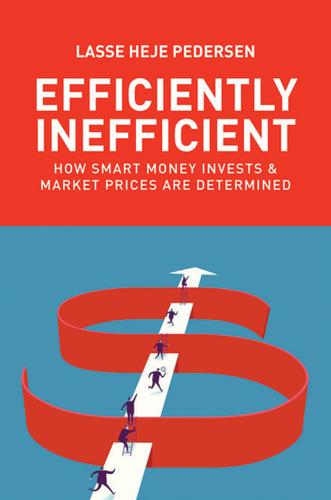
Efficiently Inefficient: How Smart Money Invests and Market Prices Are Determined
by
Lasse Heje Pedersen
Published 12 Apr 2015
Yet other value investors focus on the industry dynamics, often specializing in a single (or a few) industries. They try to determine who is dominating an industry and whether this domination is sustainable. Which firms have the strong brand names, and who can be really profitable? Are there barriers to entry in the industry, and how easily can customers change between firms? What are the major changes that will transform the industry, for instance, technological changes, and who will benefit vs. suffer as a result of these changes? Which firms are making the key innovations, and how easily are these copied by others?
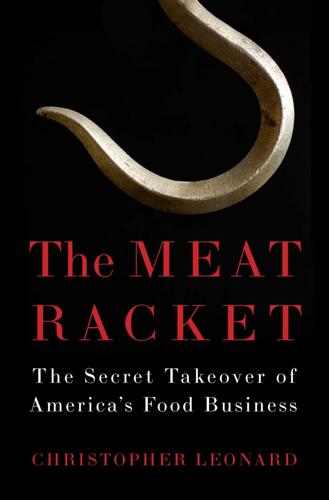
The Meat Racket: The Secret Takeover of America's Food Business
by
Christopher Leonard
Published 18 Feb 2014
By 1995 he ate an average 70 pounds of chicken a year, a transformation made possible, in part, by the efficiency and scale of Tyson’s factories.1 Projects like the plant in Green Forest generated millions in new revenue for Tyson, but they also served another purpose. The expensive complexes became the first line of defense against real competition, an increasingly high barrier to entry into the business of chicken production. Tyson was able to lock up the market through its very bigness, being one of the only companies that could viably deliver tens of millions of pounds of chicken a week to customers like Wal-Mart or Burger King. To compete with Tyson, an upstart would have to be willing to spend tens of millions of dollars or more to build plants like the one in Green Forest.
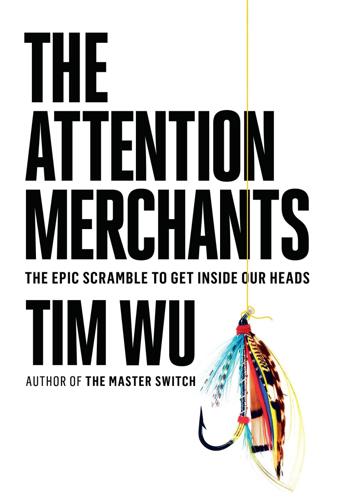
The Attention Merchants: The Epic Scramble to Get Inside Our Heads
by
Tim Wu
Published 14 May 2016
Terminology aside, this will be remembered as the year that the old-line media mogul, the online media titan and millions of individual Web users agreed: It demands attention.”13 No one quite knew how much or what it all meant, but user-generated content had clearly seized its beachhead. The erasure of barriers to entry in markets for speech had, as predicted, released an outpouring. The quality was perhaps uneven (one critic called it “the cult of the Amateur”),14 but that wasn’t the point—it attracted millions, perhaps billions, of hours of attention anyhow, attention no one had the chance to resell. Let us now take account of what was happening economically.

Super Pumped: The Battle for Uber
by
Mike Isaac
Published 2 Sep 2019
The limited number of medallions created an artificially constrained market, which meant cab drivers and taxi company owners could charge enough to earn a decent living (and pay for the medallion.) Then Uber showed up. The medallion system—a market based entirely on scarcity and exclusivity—was threatened to its core. With UberX, the company’s peer-to-peer service, anyone with a car could drive for Uber. That simple concept destroyed Big Taxi’s barrier-to-entry system, sending the price of medallions plummeting. In 2011, medallions in Manhattan were going for $1 million apiece; six years later, one fire-sale auction of forty-six medallions in Queens fetched an average price of $186,000 per medallion. Overnight, taxi drivers whose entire livelihoods were tied up in paying off an expensive medallion went underwater.
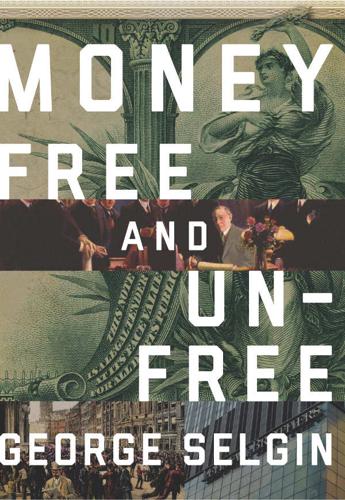
Money Free and Unfree
by
George A. Selgin
Published 14 Jun 2017
London: ELEK Books. New York Chamber of Commerce (1907) Forty-Ninth Annual Report. New York: Press of the Chamber of Commerce. Newcomb, S. (1865) A Critical Examination of Our Financial Policy during the Southern Rebellion. New York: D. Appleton and Company. Ng, K. (1988) “Free Banking Laws and Barriers to Entry in Banking, 1838–1860.” Journal of Economic History 48 (4): 877–89. Nichols, D. A. (1974) “Some Principles of Inflationary Finance.” Journal of Political Economy 82 (2): 423–30. Niehans, J. (1978) The Theory of Money. Baltimore, Md.: Johns Hopkins University Press. Noyes, A. D. (1910) History of the National Bank Currency.
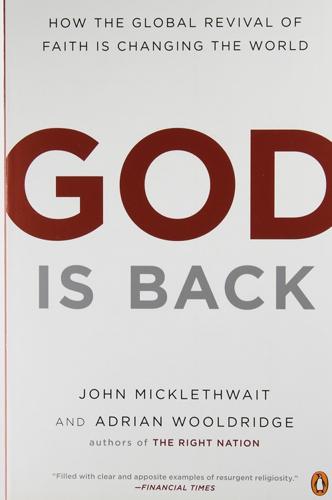
God Is Back: How the Global Revival of Faith Is Changing the World
by
John Micklethwait
and
Adrian Wooldridge
Published 31 Mar 2009
And the combination of relentless innovation and high immigration means that the market is as varied as it is competitive. The Yearbook of American Churches for 2005 lists some 217 different church traditions. The American religious marketplace is almost a study in perfect competition: there are no real barriers to entry, the domestic market is big enough to support a mind-boggling variety of religious producers, and new religious entrepreneurs are always rising up to challenge incumbents. America has the world’s largest pool of religious consumers, with more than 225 million church members, according to the Yearbook.

The Future Is Asian
by
Parag Khanna
Published 5 Feb 2019
In Argentina, a $17 billion loan issued in 2017 will fund two nuclear power plants and solar energy projects and hydroelectric dams.8 In Mexico, the Chinese automaker JAC Motors is building a large plant that should employ six thousand workers. Like Tokyo and Seoul, Beijing and Guangzhou now have direct flights to Mexico City. Not unlike their counterparts in Africa, Latin American manufacturers often view Asian companies as unfair competitors and the resent informal barriers to entry in the Chinese market.9 They also fear that further opening could make it difficult to hold on to certain industries. In 2015, for example, Costa Rica lost its flagship Intel plant to Vietnam. China’s loans in South America face similar criticisms to those leveled about its financing of African governments.
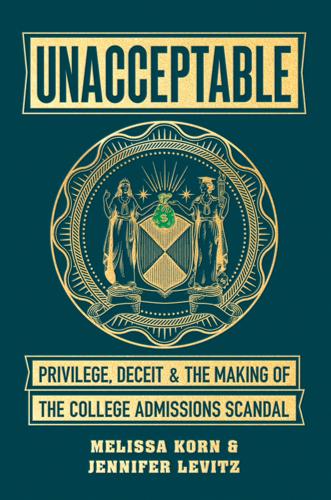
Unacceptable: Privilege, Deceit & the Making of the College Admissions Scandal
by
Melissa Korn
and
Jennifer Levitz
Published 20 Jul 2020
(“Just because you survived cancer,” one counselor—who does have more credentials—explained bitterly, “doesn’t mean you’re an oncologist.”) A few industry groups offer training and best practices to college counselors, but membership is voluntary, and nobody needs a license to actually practice. No wonder so many people joined the ranks of counseling, with its extremely low barrier to entry and potentially lucrative upside. Some families sought even more of an edge by starting the college prep process earlier. Many high schools still held off on formal college counseling until winter of eleventh grade, hoping to tamp down the frenzy. Private schools offered plenty of academic advising, but some parents wanted more explicit direction, down to which freshman math class a kid should take to stand a chance at Stanford three years later.
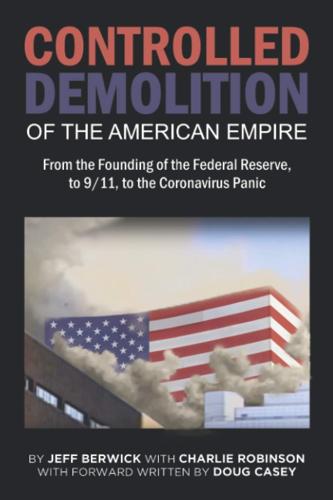
The Controlled Demolition of the American Empire
by
Jeff Berwick
and
Charlie Robinson
Published 14 Apr 2020
No longer were people tied to the network’s schedule of airing the news at only 6 pm, and they did not even have to be in front of a television to watch CNN’s 24/7 news broadcasts. People now had instant access to a broad selection of different news organizations, both domestic and international, on their computers, tablets, and smartphones, wherever they went, and at any time during the day. The online platform reduced the barriers to entry that prevented small news organizations from really competing with the established American news organizations of ABC, CBS, NBC, CNN, Fox News, and MSNBC in a meaningful way before. They now had access to a wide distribution channel, provided that they had a computer server and enough bandwidth, and the costs were almost nothing.

Visions of Inequality: From the French Revolution to the End of the Cold War
by
Branko Milanovic
Published 9 Oct 2023
In the neoclassical paradigm, technological progress tends to increase productivity of highly skilled labor, which in turn increases its wage. Responding to the wage increase, potential workers increase their demand for the types of education conducive to high-skill jobs. This makes such education more expensive. In the Marxist framework, education may be considered a monopoly of the rich, who erect barriers to entry in the form of high education costs. To recoup these costs, skilled wages need to be high. Such workers are then used only in high-productivity jobs. In other words, it is not that the high productivity of skilled workers is in the driver’s seat, but rather that the most expensive education is paired with highly productive jobs. 62 .

Crisis Economics: A Crash Course in the Future of Finance
by
Nouriel Roubini
and
Stephen Mihm
Published 10 May 2010
Unfortunately, the SEC makes it very difficult for new companies to obtain that coveted NRSRO rating: newcomers must have been in business for several years and have many major clients. But it’s hard to get major clients without first being inducted into the sacred circle. To address this problem, the SEC needs to lower the barriers to entry, so that more competition—free market competition, if you will—enters into this vitally important industry. More radical still would be to take away the semiofficial role that the ratings agencies now enjoy. Everything from SEC regulations to Basel II capital requirements formally recognize the NRSROs as the only place from which ratings can be obtained.

Fear Is Just a Word: A Missing Daughter, a Violent Cartel, and a Mother's Quest for Vengeance
by
Azam Ahmed
Published 26 Sep 2023
Though wounded by his father’s disapproval, Luis Héctor launched the business anyway. Within a month it was flourishing, and his father began acting as though he had supported the idea all along. He was even telling others about the new venture, which was something Luis Héctor had asked him not to do. Luis Héctor was vulnerable to competition, and there were no real barriers to entry. He was just the first person to think of it, like when Miriam began selling cowboy boots in town. Her business had boomed up until everyone else caught on, at which point her profits shrunk and it became like any other business, eking out a living sale by sale. When he confronted his father about jeopardizing his business, his father told him he was being stupid.

Make Your Own Job: How the Entrepreneurial Work Ethic Exhausted America
by
Erik Baker
Published 13 Jan 2025
Its ancestors are less the fields of Norman England and more the kitchens of Ray Kroc’s McDonald’s, the “distributorships” of Amway and other multi-level marketing schemes, and before them all the organizational schemes of early direct-selling companies like Avon. These firms all presented themselves as entrepreneurial initiatives that worked by creating new opportunities for entrepreneurship on a mass scale. All the platforms have done, ultimately, is to use the internet to lower barriers to entry even further, to intensify the atomization of their workforce, and to use algorithmic feedback to enhance firms’ capacity to discipline workers without direct managerial supervision. It is sometimes difficult to resist the feeling that the entrepreneurial work ethic had been demanding a technology like the digital platform all along, the necessary infrastructure for its full expression.
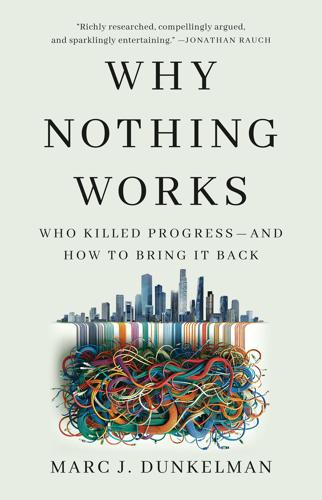
Why Nothing Works: Who Killed Progress--And How to Bring It Back
by
Marc J Dunkelman
Published 17 Feb 2025
The upshot was that a developer on the receiving end of a cheap-to-file CEQA lawsuit was put at an almost insurmountable disadvantage. They would be forced to cover the costs of any delay, of any litigation, and of any mitigation measure.78 The CEQA bar almost immediately became a theater of the absurd. And while the low barrier to entry surely precluded some bad projects from moving forward, the new law and the ensuing jurisprudence proved in practice that there was no mechanism to weigh the environmental costs against the attendant benefits—like the additional housing.79 In 1973, a two-hundred-unit condo project in San Francisco was held up for a year and a half because a Boy Scout filed a case.

The Tyranny of Nostalgia: Half a Century of British Economic Decline
by
Russell Jones
Published 15 Jan 2023
Financial deregulation did not stop there, however. In the late 1970s the City of London had become increasingly uncompetitive. It was inward-looking and it operated in an old-fashioned, anachronistic way, while financial repression – the creation of captive markets through mechanisms such as artificial price ceilings, trade limitations, barriers to entry and other market controls − was pervasive. In global terms, it was becoming a backwater, especially when compared with New York. Since the collapse of the Bretton Woods monetary system in the early 1970s, the US’s major financial hub had enjoyed a period of increasingly innovative growth, as securitization burgeoned, as a welter of mechanisms to raise capital more cheaply than bank loans emerged, and as new risk management products (such as interest rate and currency swaps) flourished.

The Chairman's Lounge: The inside story of how Qantas sold us out
by
Joe Aston
Published 27 Oct 2024
It had dug out then defended its position by the sheer ingenuity of Geoff Dixon creating the two-brand strategy – something airline groups all over the world had sought to emulate, with limited success. The iron grip of one player over 63 per cent of the traffic but 80 per cent of the profit was the product of multiple complex factors. One of them was Virgin’s own strategic errors. Another was the industry’s high barriers to entry. Another was successive federal governments being captured by Qantas and failing to create policy that fostered competition. That policy should have included a fundamental aspect of functioning capitalist economies: that when players become too dominant, they trigger anti-trust action. Qantas acted with impunity because the forced divestment of Jetstar has never even been a plausible threat.

Rocket Dreams: Musk, Bezos and the Trillion-Dollar Space Race
by
Christian Davenport
Published 6 Sep 2025
Between 2000 and the start of the Trump administration, some twenty-seven countries created national space agencies, all looking to bolster their economies while harnessing innovation, at a time when their national security and prestige increasingly relied on the expanse outside the atmosphere. The list has since grown considerably longer, as has the number of countries with at least one satellite in orbit. Dramatic improvements in technology have lowered the barriers to entry, and the potential to make money and wield power in space has only become clearer. As a result, the new space race wasn’t so much of a race but rather more like an Olympics, with multiple nations competing in multiple events. As noted by the aerospace analyst Todd Harrison, there were three essential competitions, the first of which involved commercial space.

The fortune at the bottom of the pyramid
by
C. K. Prahalad
Published 15 Jan 2005
Local players have already started to feel a pinch in sales and have begun to fight back with consumer promotions and product giveaways. Whereas HLL must pursue Shakti to grow, Dhall asserts that the other MNCs will first try to take business from the top of the economic bucket. Dhall asserts that HLL holds a competitive edge and others face fierce barriers to entry: They must first build a portfolio of brands that will generate enough sales so it will be worthwhile for dealers since the turnover is too low in any one product line. HLL is unique in its ability to generate such large rural turnover. Other companies may offer a higher margin to potential dealers, but HLL is shielded with brand depth followed by our familial spirit.

Wall Street: How It Works And for Whom
by
Doug Henwood
Published 30 Aug 1998
Mor- GOVERNANCE gan & Co.; First National Bank of New York; the National City Bank of New York; Lee, Higginson & Co.; Kidder Peabody; and Kuhn, Loeb. The bankers' control over credit to the giant enterprises in their orbit gave them control over the commanding heights of the U.S. economy, creating significant barriers to entry for those outside the circle. This is the purest form of banker control theory. Later analysts, including Paul Sweezy in the 1930s, made similar influence maps, though not always with the same names and positions. Sweezy's model was not bank-centered, but he did include a bank in each one of his eight major groups.
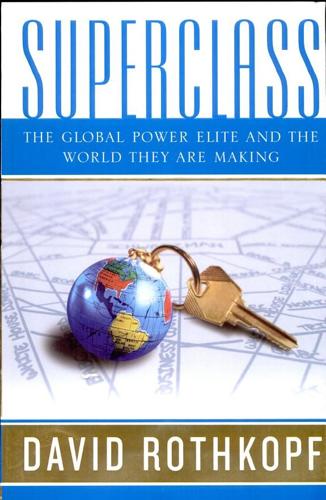
Superclass: The Global Power Elite and the World They Are Making
by
David Rothkopf
Published 18 Mar 2008
Don’t they influence more people across borders than even senior leaders on the ground in Iraq, for example? I believe they do. The nature of power is changing. While for the most part power is highly concentrated—especially in mainstream media and information technology businesses—the information age has built-in democratizing components. Distribution used to be the barrier to entry in the media world, whether in movies, on television, on radio, or in newspapers. Building a distribution network, from theater chains to delivery vans, required a significant capital investment. Today, though, the means of distribution are available to all at no charge, making it possible for small, resource-poor groups to reach out and affect millions around the world.
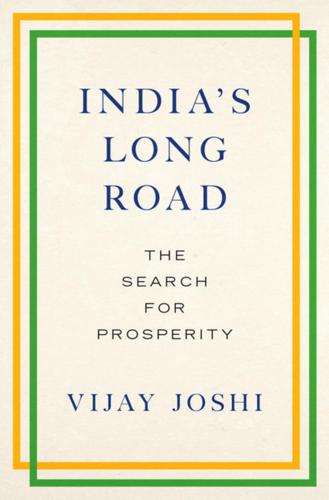
India's Long Road
by
Vijay Joshi
Published 21 Feb 2017
CORRUPTION AND CRONY CAPITALISM Another manifestation of weak state capacity is corruption.21 It is sometimes argued that both society and the state should ignore corruption because it has the virtue of making bureaucratic wheels turn faster (‘speed money’). But that argument has severe limitations: a bribe culture may have precisely the opposite effect and induce bureaucrats to create more red tape, licenses, and other barriers to entry in order to increase their own take. It might also be argued that corruption is a force for good because it enables the most profitable, and hence the most efficient, firms to prosper (because they would be the ones able to pay the highest bribes!). This argument is too clever by half. The firms that pay the highest bribes may not be the most efficient but simply the best ‘connected’ or the most monopolistically powerful.

Confessions of a Wall Street Analyst: A True Story of Inside Information and Corruption in the Stock Market
by
Daniel Reingold
and
Jennifer Reingold
Published 1 Jan 2006
But even though tech and telecom had in many ways become fully entwined, now the two paths seemed to be diverging, in my view. I had been cynical about many of these tech startups from the beginning, so I didn’t find the news of their demise particularly surprising. So many of the newly public dot-com companies were just ideas, with hardly any customers or assets and virtually no barriers to entry by other competitors. The telecom companies that I covered, on the other hand, were for the most part proven businesses with real customers, revenues, cash coming in, and assets. And those that weren’t, like Qwest and Global Crossing, had purchased real companies in US West and Frontier, which hedged their new-economy bet.

Overbooked: The Exploding Business of Travel and Tourism
by
Elizabeth Becker
Published 16 Apr 2013
It was the first time since Pearl Harbor that foreigners had attacked the United States. (American terrorists had blown up the Alfred P. Murrah Federal Building in Oklahoma City in 1995, killing 168 people.) With new laws and policies the administration of President George W. Bush built a fierce protective ring around the country, a fortress America. Barriers to entry went up in the form of new requirements for visas; extensive questioning and often searches at airports and land borders; and the construction of a 14-foot-high wall dividing much of the United States from Mexico. The country united in an understandable instinct to protect the country after 9/11.
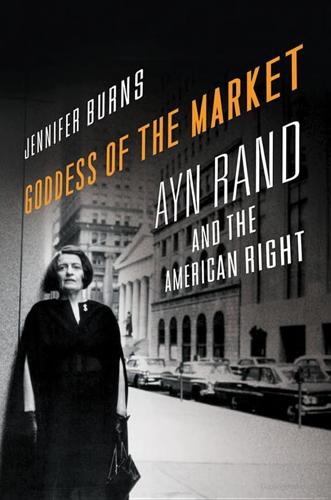
Goddess of the Market: Ayn Rand and the American Right
by
Jennifer Burns
Published 18 Oct 2009
Along with his exposition of the calculation problem under socialism, Mises was known for his argument against monopoly prices. According to Mises, in a truly free market a wily competitor would always undercut any attempt to establish artificially high prices. True monopoly prices could arise only if another party, such as the government, raised barriers to entry into the market, thereby preventing competition. Accordingly, antitrust laws were misguided and dangerous attempts to solve a problem that had been created in the first place by the state.28 Rand now had two arguments to deploy against antitrust. The first was her moralistic argument that antitrust laws unfairly punished the successful.
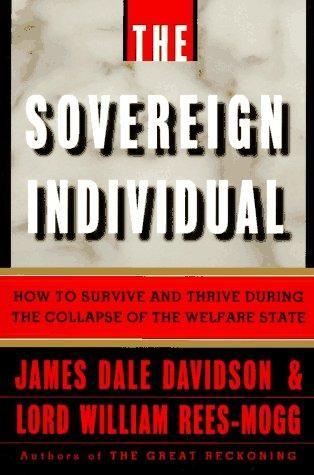
The Sovereign Individual: How to Survive and Thrive During the Collapse of the Welfare State
by
James Dale Davidson
and
William Rees-Mogg
Published 3 Feb 1997
The preponderance of small firms and smallholders suggests greater social support for property rights even if the desire to redistribute income remains unaltered. 4. Information technology lowers capital costs, which also tends to increase competition by facilitating entrepreneurship and allowing more people to work independently. Lower capital requirements not only reduce barriers to entry; they also reduce "barriers to exit." In other words, they imply that firms are likely to have fewer assets relative to income, and therefore less ability to sustain losses. Not only will they tend to have less recourse to banks for borrowing; firms in the Information Age are also likely to have fewer physical assets to capture. 5.

The Cigarette: A Political History
by
Sarah Milov
Published 1 Oct 2019
Despite the legal advantages endowed upon the cooperative form, the TGCA never came close to achieving monopoly control over the handling of the tobacco crop. And perhaps even more ominously, its first year was its best year: its control declined every year until its demise in 1926. Table 1.1 illustrates the declining percentage of deliveries that the Association handled. Sapiroism worked well enough in California, where barriers to entry were high and production expansion by fruit and nut growers could only be achieved through considerable capital investment. Tobacco acreage, on the other hand, could be increased with little more than a promise of a share of the crop. Because the capital requirements of sharecropping tobacco were virtually nonexistent, pounds of tobacco produced by sharecroppers and tenants undermined the Cooperative’s monopoly control of the harvest.

Capitalism in America: A History
by
Adrian Wooldridge
and
Alan Greenspan
Published 15 Oct 2018
AT&T was founded in 1885, Eastman Kodak in 1888, and General Electric in 1892. The men who created these corporations typically followed the same sequence of moves that we have seen with Carnegie and Rockefeller. They made bet-the-farm investments in new plants. They grew as big as possible as fast as possible, turning their lower costs into barriers to entry. (Reid Hoffman, the founder of LinkedIn, calls the modern equivalent of this technique “blitzscaling.”)19 They integrated “forward” and “backward.” And they tried to drive sales as high as possible by cutting costs and mass advertising. The final area to fall to the corporation was retailing.

How Money Became Dangerous
by
Christopher Varelas
Published 15 Oct 2019
Complex regulations get ignored. (How many disclosure documents or notices have you actually read when taking out a loan or signing up for a financial product?) Even worse, complex regulations may be more easily manipulated, which creates unintended negative consequences. Furthermore, complex regulations build barriers to entry for those firms without the financial or personnel resources to comply, effectively giving the larger firms control over that regulated market or sector. Penalties should be clear and consistent, with accountability evaluated at both the individual and firm level and the fines assessed specifically to either or both, depending on who is deemed responsible.
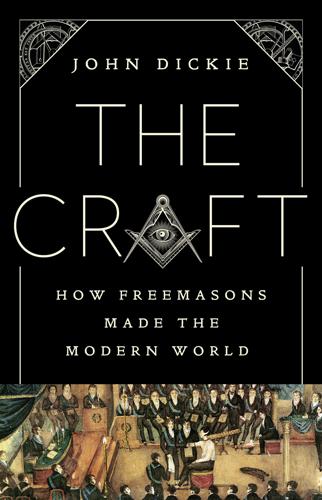
The Craft: How Freemasons Made the Modern World
by
John Dickie
Published 3 Aug 2020
In tracing the fate of Freemasonry through subsequent chapters of this book and subsequent eras of history, we will also be tracing some of the twists and turns of the various universal ideals that eighteenth-century British Freemasons extracted from the society around them in concentrated form: brotherly love, secularism and religious tolerance, cosmopolitanism, egalitarianism, and so on. However, the whole Masonic project has been beset by contradictions since the beginning. Although it was egalitarian in theory, in practice the Craft put up financial barriers to entry: subscriptions were expensive. Part of the appeal of membership has always been about the costly collectables: badges, sashes, aprons and jewels. (As a jeweller, John Coustos knew that his Brethren were a ready market for his wares.) Moreover, Masonry’s universal values become paradoxical when they are promoted by a self-proclaimed moral élite operating in secret: this is members-only democracy, a clubby form of cosmopolitanism.

Rebel Code: Linux and the Open Source Revolution
by
Glyn Moody
Published 14 Jul 2002
A perfect clone is probably impossible. As a result, Microsoft will always have the advantage of current compatibility and future innovation. In the world of GNU/Linux, the situation is different. Because, to its credit, Red Hat releases all its work under the GNU GPL, anybody can take it and use it. This means that where the barriers to entry for competitors to Microsoft Windows are so high they are effectively insurmountable, they are more or less nonexistent for rivals to Red Hat. It is noteworthy that this dynamic allows not only current competitors of Red Hat to catch up with it technically very quickly but new entrants, too.

The Color of Money: Black Banks and the Racial Wealth Gap
by
Mehrsa Baradaran
Published 14 Sep 2017
Black capitalism and black banking constituted a frustratingly futile halfway position. It was clear that Nixon did not understand the segregation trap for black banks when he promised that black capitalism would “[open] the full range of business opportunity to all by removing the inherited and institutional barriers to entry."186 But the intellectual founder of black capitalism, Theodore Cross, understood that black banking had become a diversion. He wrote in 1971 that black banks were still just “toy banks" or “specks of gold dust in the $1 trillion private capital and credit markets of America." Yet they had become magnets for government money and press, for, as he explained, “when the heat is on the temptations are great to build a few monuments to black affluence."187 Shining a spotlight on a few successful black banks obscured the true problems of the wealth gap and the ghetto economic trap.

Trust: The Social Virtue and the Creation of Prosperity
by
Francis Fukuyama
Published 1 Jan 1995
In each traditional industry, state regulations covered virtually every aspect of the production process. According to the historians Douglass North and Robert Thomas, the regulations governing the dyeing of cloth ran to 317 articles. The guilds were used to establish standards that limited markets and posed formidable barriers to entry; in their words, “The system of control and inspection by guild officials could be so comprehensive that, during the time of Colbert, even ordinary cloth required at least six inspections.”33 Thus, the guilds did not see their purpose as the defense of craft traditions against the encroachments of outsiders, including the state.
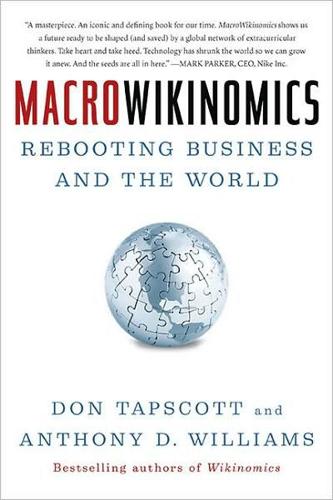
MacroWikinomics: Rebooting Business and the World
by
Don Tapscott
and
Anthony D. Williams
Published 28 Sep 2010
All it takes is the desire to create and the tools to collaborate, and both of these are increasingly in abundance. Now imagine the productive capacity of billions of people self-selecting for tasks with little regard for organizational, national, cultural, or disciplinary boundaries.6 Some economists and business leaders lament the fact that barriers to entry have fallen and they dislike open source, arguing that what goes into the commons takes away from the mouths of private enterprise. But as Linus Torvalds aptly put it, “That’s like saying that public road works take away from the private commercial sector.” Even if public ownership of key aspects of the transportation network forecloses opportunities for private profit, the gains to the rest of the economy make these losses look minuscule.
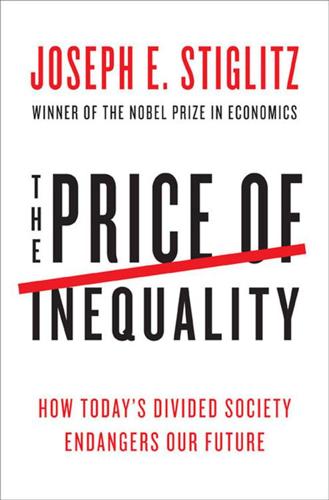
The Price of Inequality: How Today's Divided Society Endangers Our Future
by
Joseph E. Stiglitz
Published 10 Jun 2012
That is so because if a firm makes greater profits than that on a sale, rivals will attempt to steal the customer by lowering prices. As firms compete vigorously, prices fall to the point that profits (above the normal return to capital) are driven down to zero, a disaster for those seeking big profits. In business school we teach students how to recognize, and create, barriers to competition—including barriers to entry—that help ensure that profits won’t be eroded. Indeed, as we shall shortly see, some of the most important innovations in business in the last three decades have centered not on making the economy more efficient but on how better to ensure monopoly power or how better to circumvent government regulations intended to align social returns and private rewards.
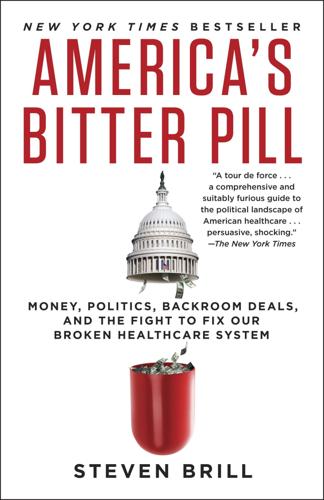
America's Bitter Pill: Money, Politics, Backroom Deals, and the Fight to Fix Our Broken Healthcare System
by
Steven Brill
Published 5 Jan 2015
Other insurers had started trying to provide this kind of online information, but their efforts were clumsy, often incomplete, and hard to navigate. Oscar’s would be different. There was “huge leverage in data-driven optimization across the healthcare system,” the investor deck promised. And with Oscar having completed an expensive licensing process that presented “extremely high barriers to entry” for any other likeminded start-up, it was “now in a unique position to dominate a previously non-existent market.” That referred to the market in which individuals, rather than employers, bought health insurance. It was a market that had all but vanished in New York when the state passed a law that required that insurance companies not exclude people with preexisting conditions or charge them more, but that did not include a mandate that everyone had to buy insurance.

Superintelligence: Paths, Dangers, Strategies
by
Nick Bostrom
Published 3 Jun 2014
(There might be a greater number of projects if there are a large number of different basic approaches that could be pursued, but in that case many of those approaches are likely to prove dead ends.) As suggested, empirically we seem to find that there is usually no more than a handful of serious competitors pursuing any one specific technological goal. The situation is somewhat different in a consumer market where there are many niches for slightly different products and where barriers to entry are low. There are lots of one-person projects designing T-shirts, but only a few firms in the world developing the next generation of graphics cards. (Two firms, AMD and NVIDIA, enjoy a near duopoly at the moment, though Intel is also competing at the lower-performance end of the market.) 22.

The Aristocracy of Talent: How Meritocracy Made the Modern World
by
Adrian Wooldridge
Published 2 Jun 2021
Oddly timed or not, these criticisms are gaining traction because they contain a certain amount of truth. Inequality in most of the world is far too high for comfort. Examinations can seem like a tyranny. The cognitive elite is intolerably smug. Though meritocracy has always prided itself on its ability to provide opportunities for upward mobility, over the past four decades the barriers to entry have got higher. In the words of William Deresiewicz, a former Yale academic, ‘our new multiracial, gender-neutral meritocracy has figured out a way to make itself hereditary’.18 Predictably enough, growing sections of Western societies have become alienated and embittered. Two criticisms in particular deserve sustained consideration.
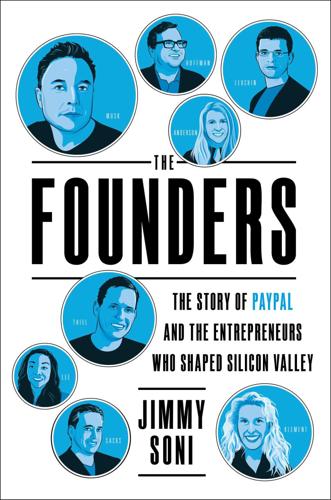
The Founders: The Story of Paypal and the Entrepreneurs Who Shaped Silicon Valley
by
Jimmy Soni
Published 22 Feb 2022
Amazon’s lawsuit and the one-click patent received widespread criticism, including from tech pioneer Tim O’Reilly, who popularized terms like open source and Web 2.0. “Patents such as yours,” O’Reilly wrote in an open letter to Jeff Bezos, “are the first step in vitiating the web, in raising the barriers to entry not just for your competitors, but for the technological innovators who might otherwise come up with great new ideas that you could put to use in your own business.” O’Reilly chalked up the Patent Office’s decisions to its lack of knowledge about digital technology. CertCo’s suit against PayPal looked analogous to many—the exercise of an overly broad patent that should never have been granted.

Likewar: The Weaponization of Social Media
by
Peter Warren Singer
and
Emerson T. Brooking
Published 15 Mar 2018
At this crucial moment, Facebook entered the scrum. Originally, a user had to be invited into the social network. Within a year, the service spread to 800 college campuses and had more than a million active accounts, buoyed by the kind of demand that could only come with the allure of exclusivity. When Facebook stripped away its original barriers to entry, more people stampeded into the online club. By the end of 2007, the service numbered 58 million users. As exponential growth continued, Zuckerberg sought to make his creation ever more useful and indispensable. He introduced the News Feed, a dynamic scroll of status updates and “shares” that transformed Facebook from a static web service into a living, breathing world.

The History of the Future: Oculus, Facebook, and the Revolution That Swept Virtual Reality
by
Blake J. Harris
Published 19 Feb 2019
In addition to dominating Kickstarter, Uhrman had already managed to recruit a handful of notable developers, luring the likes of Kim Swift (best known for designing Portal), Tim Schafer (Psychonauts), nWay (ChronoBlade), Tripwire Interactive (Killing Floor), and several others to create games exclusively for Ouya.4,5 This lineup of known talent was made even more promising by Ouya’s commitment to empowering the next generation of Kim Swifts and Tim Schafers. In the spirit of shattering that barrier to entry, Ouya was also helping to fund titles by unproven talents, betting on young developers like Matt Thorson (whose arena-based archery project, TowerFall, had dazzled at a recent Game Jam in Vancouver) and new studios like Robotoki (founded by Robert Bowling, the former creative strategist for Infinity Ward).6,7 There was one other major reason to be feeling bullish about Ouya: their software development kit (nicknamed “ODK”) had been released earlier that month (and already downloaded over ten thousand times).

The Asylum: The Renegades Who Hijacked the World's Oil Market
by
Leah McGrath Goodman
Published 15 Feb 2011
(The term “seat” was a throwback to the early days of trading when buyers and sellers sat down to make deals. In the clamor of the pits, however, both feet were needed firmly on the ground.) Traders could also lease a Nymex seat from a market member, or a “seat holder,” at an extortionate rate. In the oil market, the game was pay to play, and the barrier to entry was extraordinarily high. The year Kaufman started, the price of a single seat reached $1.6 million, while seat leases hovered at $10,000 a month. Seat prices would keep rising throughout the Iraq War until they hit their all-time high in February 2007 at $11.2 million. Smith’s ouster notwithstanding, Kaufman stuck it out after graduating from the George School, a private high school in Newtown, Pennsylvania, getting a job at nineteen with a Nymex oil trader as a screen clerk, a step up from a yellowcoat.

The Third Pillar: How Markets and the State Leave the Community Behind
by
Raghuram Rajan
Published 26 Feb 2019
Vibrant communities that used to have a mix of economic classes are left with less social capital, worse community institutions such as schools, and less wealth with which to raise the capabilities of their members. Disadvantaged groups are turning against one another as they find their economic and social status slipping. Well-to-do incumbents have reacted to the increasing competition in markets by attacking its sources. For instance, they have raised barriers to entry through patents, copyrights, and licenses. This has further narrowed opportunities for the modestly educated, whose jobs in declining regions and industries have disappeared. As a few large firms dominate each industry, the potential for monopolization is increasing, while the independence of the private sector from the state is at risk.
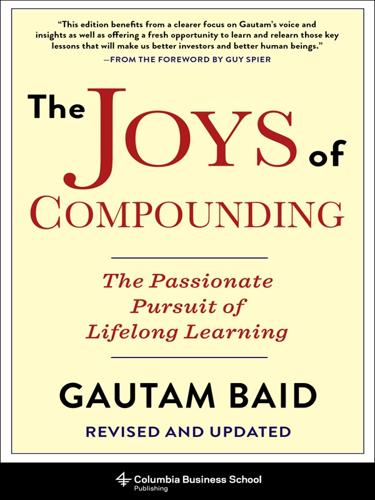
The Joys of Compounding: The Passionate Pursuit of Lifelong Learning, Revised and Updated
by
Gautam Baid
Published 1 Jun 2020
One of the biggest challenges in investing is determining the competitive advantage of a business and, more important, the durability and longevity of that advantage. Competitive advantage is defined as a company’s ability to generate “excess returns,” that is, ROIC less cost of capital. A sustainable competitive advantage is defined as a company’s ability to generate excess returns over an extended period of time, which requires barriers to entry to prevent competitors from entering the market and eroding the excess returns. This, in turn, enables excess returns on invested capital for long periods of time (also known as the competitive advantage period, CAP). Growing firms with excess returns and longer CAPs are more valuable in terms of net present value.
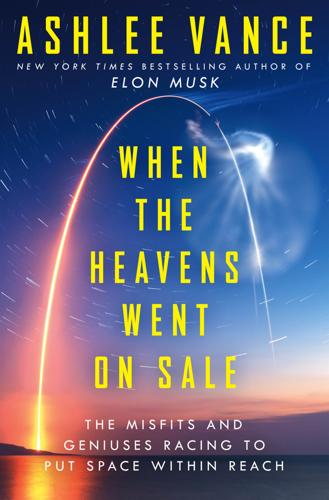
When the Heavens Went on Sale: The Misfits and Geniuses Racing to Put Space Within Reach
by
Ashlee Vance
Published 8 May 2023
Electron and Rocket Lab is the only commercially active small-launch vehicle in the world right now. There’s only two private companies in the history of humanity that have ever put spacecraft in orbit, and that’s SpaceX with the Falcon 9 and Elon, and us. That’s it. There is no other. The club is very small, and it’s really, really hard to get there. The barriers to entry here are just so enormous. We need to achieve about twenty-seven times the speed of sound in velocity to get into orbit. If you’re a fraction of a percent out on performance or a fraction of a percent off on mass, you get nothing to orbit. It’s just a ten-million-dollar fireworks display. It is unbelievably fucking hard.

Aerotropolis
by
John D. Kasarda
and
Greg Lindsay
Published 2 Jan 2009
It’s no coincidence Asian nations have spent billions on aircraft and new airports atop man-made islands, or that they’ve become the most fervent believers in Kasarda’s vision. Taiwan is building an aerotropolis, and so are Hong Kong, South Korea, Vietnam, Malaysia, and Thailand. China and India are building a hundred each. The repeal of geography changed the rules of their competition, as there were no longer any natural barriers to entry. Infrastructure, costs, and expertise decided which pieces of which industries would settle where, and who would accrue the spoils. Thailand’s early efforts to make the best of this arrangement would take on a distinctly sinister cast, beginning with its role as a base for B-52s carpet bombing Vietnam.
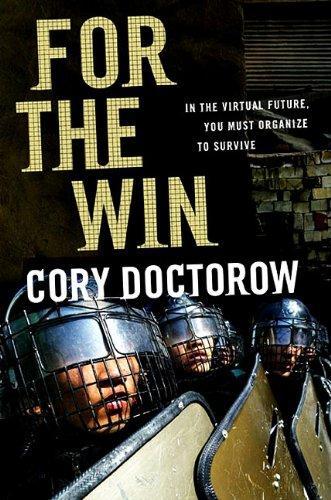
For the Win
by
Cory Doctorow
Published 11 May 2010
Now she experimented with their works-in-progress, sculptures and machines that almost worked, or didn’t work at all, but that showed the scope of their creativity. Kettlewell thought that there were a thousand, ten thousand people as creative as these two out there, waiting to be discovered. Could it be true? “Sure,” Perry said, “why not? We’re just here because someone dropped the barrier to entry, made it possible for a couple of tinkerers to get a lot of materials and to assemble them without knowing a whole lot about advanced materials science. Wasn’t it like this when the Internet was starting out?” “Woah,” Suzanne said. “I just realized that you wouldn’t really remember those days, back in the early nineties.”

HTML5 Canvas
by
Steve Fulton
and
Jeff Fulton
Published 2 May 2013
This includes the following: A new animated Hello World application A discussion of accessibility and the sub-dom concept Multiple methods to clear the Canvas Finding points in the current path Drawing focus rings Animating gradients with text Using pixel data to detect collisions Five new examples that focus on using Box2Dweb for physics-based animations Using getUserMedia() to capture video on the Canvas Making use of the new Web Audio API A* path finding and animation Coarse and fine tile-based scrolling Development of mobile web (iOS) full-screen, scaled applications A new game named Retro Blaster Touch A new drag-and-drop example A discussion of building your own Canvas application framework A short tutorial for building an HTML5 application for Windows 8 What You Need to Run the Examples in the Book The best part about the programming HTML5 Canvas is that the barrier to entry is very low. All you need is a modern web browser and a text editor. As far as compatible browsers go, we suggest that you download and use the latest version of the following web browsers. The browsers are listed in the order that we suggest you test them: Chrome Safari Firefox Internet Explorer (version 10) Opera Every example in this book was tested with Google Chrome, Safari, and Firefox.

Never Let a Serious Crisis Go to Waste: How Neoliberalism Survived the Financial Meltdown
by
Philip Mirowski
Published 24 Jun 2013
Is it a matter of creating a political action group or a society for the defense of private property, or on the contrary, is it a matter of founding a society of thought capable of reexamining without bias all the questions up for debate and of initiating the foundation of a genuine and effective renewal of liberalism?121 Hayek clearly opted for having both simultaneously, but to make it work, there had to be high barriers to entry, and a putsch or two along the way.122 A clash of worldviews on home turf was to be avoided at all costs. For good or for ill, the MPS rapidly evolved into a closed society with a rather stringent ideological litmus test. This raises the difficult issue of whether the “Open Society” really works the way it was portrayed by Popper, and still sometimes evoked by the NTC when waxing catholic.

Site Reliability Engineering: How Google Runs Production Systems
by
Betsy Beyer
,
Chris Jones
,
Jennifer Petoff
and
Niall Richard Murphy
Published 15 Apr 2016
This approach allowed Auxon to remain of sufficient general utility even as teams with divergent use cases began to use it. We approached potential users with the message, “come as you are; we’ll work with what you’ve got.” By avoiding over-customizing for one or two big users, we achieved broader adoption across the organization and lowered the barrier to entry for new services. We’ve also consciously endeavored to avoid the pitfall of defining success as 100% adoption across the organization. In many cases, there are diminishing returns on closing the last mile to enable a feature set that is sufficient for every service in the long tail at Google.
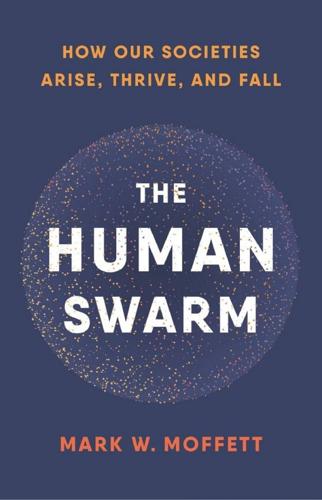
The Human Swarm: How Our Societies Arise, Thrive, and Fall
by
Mark W. Moffett
Published 31 Mar 2019
Not only are hyena males beaten up by the females, but the females quickly lose interest in newcomers as sex partners, forcing many males to try their luck in another clan. Sometimes an animal is on its own for a while before it finds a new home. Actually, acceptance by a new society can be hard to come by—to keep their boundaries distinct, barriers to entry are high. A forceful individual may initially bully its way into the group by fighting those of its own sex, who see it as a contender for the society’s private supply of mates. But attaining permanent group membership can require being found desirable by the opposite sex, too. Hence a freshly arrived male baboon insinuates himself into a new troop by beating off the local males while befriending the ladies.

Termites of the State: Why Complexity Leads to Inequality
by
Vito Tanzi
Published 28 Dec 2017
The pre-jail incomes of those who are now in jail were likely to have been far lower than those of people out of jail, and not just because lower-income individuals are likely to commit more crimes or more serious crimes. As a prominent US judge has put it, “Lawyers comprise a guild to which there are significant barriers to entry, not least the huge expense of a legal education. But in the past few decades, the price of hiring a lawyer to handle an everyday dispute has risen at a rate much greater than the average increase in income or wages. … [B]etween 1985 and 2012 the average billing rate for law firm partners in the US increased from $112 per hour Modern Government and Constitution 253 to $536 per hour, and for associate lawyers from $79 per hour to $370 per hour”; and “Individuals not represented by lawyers lose cases at a considerable higher rate than similar individuals who are represented by counsel” (Rakoff, 2016, p. 4).

Architects of Intelligence
by
Martin Ford
Published 16 Nov 2018
AI Fund is trying to create the new startup companies that leverage these new AI capabilities we have. We want to find or create the next Google or Facebook. MARTIN FORD: There are a lot of people who say that the incumbents like Google and Baidu are essentially unshakable because they have access to so much data, and that creates a barrier to entry for smaller companies. Do you think startups and smaller companies are going to struggle to get traction in the AI space? ANDREW NG: That data asset that the large search engines have definitely creates a highly defensible barrier to the web search business, but at the same time, it’s not obvious how web search clickstream data is useful for medical diagnosis or for manufacturing or for personalized educational tutors, for example.

Money and Government: The Past and Future of Economics
by
Robert Skidelsky
Published 13 Nov 2018
While minimizing the risk of banking default before the crisis, the rating agencies exaggerated the risk of government default after it. They were servants of the vested interests that paid them. Further, the market is dominated by three firms: Moody’s holds 40 per cent market share, Standard & Poor’s 40 per cent and Fitch 14 per cent. Barriers to entry are very large, mostly because a CRA needs to have a good reputation to succeed. So the agencies are under little pressure to rethink their methodology; more importantly, concentration creates a single mindset. CRAs have been accused of outright ‘blackmail’ to solicit new business. A case in point is the scandal involving Moody’s and Hannover Re, a German insurance company.

Big Data and the Welfare State: How the Information Revolution Threatens Social Solidarity
by
Torben Iversen
and
Philipp Rehm
Published 18 May 2022
In more heterogeneous groups, people’s views on risks and policies tend to converge to the mean of the national distribution, whereas in small homogenous groups, views tend to converge to the mean in each distinct group. This network effect is amplified by the rising housing prices in upscale neighborhoods with good schools and services because property prices are a barrier to entry for those with fewer resources and higher risks. Redlining – the discredited practice of discriminating against Black and minority zip https://doi.org/10.1017/9781009151405.001 Published online by Cambridge University Press 12 Introduction codes in the USA – was outlawed in the Fair Housing Act of 1968, but “race-blind” location data can be plugged into algorithms along with hundreds or even thousands of other pieces of information to accurately pin down risks, and there are no laws against people forming differentiated risk perceptions and opinions based on class-divided social networks.

Empire of AI: Dreams and Nightmares in Sam Altman's OpenAI
by
Karen Hao
Published 19 May 2025
“We have the first mover’s advantage,” a research scientist at the company had said at an education technology conference in 2017. “We’ll be able to build one of the largest brain wave databases in the world. All that data will help us improve our algorithms and therefore our products, creating a higher barrier to entry.” A few months after I came across the startup, a data privacy outcry in China from parents horrified at their kids being turned into guinea pigs forced the company to pivot to a different application of its technology. But the story left me with an uneasy feeling that the successful backlash was an anomaly, and the company’s original approach—to go to countries eager to embrace the promise of technology for finding data donors and product testers—was in fact a trend.

City: Urbanism and Its End
by
Douglas W. Rae
Published 15 Jan 2003
Similar instances can be rolled out for hardware, sporting goods, funeral parlors, computers, television sets, CD players, hand calculators, dry goods, and sailboats. If a thing is worth doing, it is often, in the heat of capitalist turmoil, worth overdoing. This is especially true in fields of activity—like the grocery business in this period—where barriers to entry are relatively low. The case of urban chain groceries is such a story in the years between 1935 and 1950. Figure 7.7 shows the field of battle among New Haven chain stores in 1950. The open disks represent corpses of chain stores open in 1935, which left behind vacant sites in 1950.45 There are fifty-four of these, accounting for 62 percent of the chain stores operating in 1935.

Drink: A Cultural History of Alcohol
by
Iain Gately
Published 30 Jun 2008
This was something of a theological innovation. Judaism, which Christianity acknowledged as its source, and as sharing the same single God, did not seek converts. Moreover, it laid obstacles in the path of those wishing to become Jews, including circumcision for men and strict dietary taboos. Christianity had no such barriers to entry. The matter had been debated and settled by the apostles: Anyone could become a Christian, and every convert was expected to spread the good news. The early rituals of the new faith were also far simpler than those of Judaism. The single most important rite of the Christians was the ceremony of the Eucharist, at which they gathered to share bread and wine, in accordance with the instructions of their founder.

The Making of Global Capitalism
by
Leo Panitch
and
Sam Gindin
Published 8 Oct 2012
A primary concern of the Marshall Plan administrators had been to use the added influence that the US occupation of Germany provided to turn it into, as Hoffman put it, “the kind of free competitive economy which we have in the United States.”55 The American concern with European traditions of cartelization was articulated in terms of the inefficiencies of non-competitive production, but a deeper cause for anxiety was the relationship between cartelization and lack of access for American capital. Firms coming together to set prices necessarily required state-supported barriers to entry such as tariffs, limits on direct investment, and “private interests being provided with political influence” (as an American-influenced section of the Schuman Plan put it).56 Despite no little friction between the American administrators of the Marshall Plan and their European counterparts, the foundations were established for the legal codes limiting cartelization that were introduced in the 1950s.
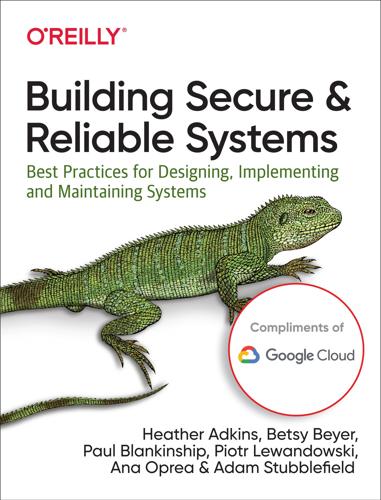
Building Secure and Reliable Systems: Best Practices for Designing, Implementing, and Maintaining Systems
by
Heather Adkins
,
Betsy Beyer
,
Paul Blankinship
,
Ana Oprea
,
Piotr Lewandowski
and
Adam Stubblefield
Published 29 Mar 2020
Some may be sophisticated and write their own tools. Others may purchase or borrow tools that other people build, relying on their easy, click-to-attack interfaces. In fact, social engineering—the act of tricking a victim into aiding you in the attack—is highly effective despite being at the lowest end of difficulty. The only barriers to entry for most criminal actors are a bit of time, a computer, and a little cash. Presenting a full catalog of the kinds of criminal activities that occur in the digital realm would be impossible, but we provide a few illustrative examples here. For example, imagine that you wanted to predict merger and acquisition activities so you could time certain stock trades accordingly.

The Code: Silicon Valley and the Remaking of America
by
Margaret O'Mara
Published 8 Jul 2019
Zarkin, “Telecommunications Policy Learning: The Case of the FCC’s Computer Inquiries,” Telecommunications Policy 27, nos. 3–4 (April–May 2003): 283–99. Prodigy originally was named Trintex (1984–88). 19. By the time the ARPANET became the commercial Internet in the early 1990s, the OTC broker-traders had indeed smartened up their backroom image. But they’d kept barriers to entry friendly and low, making their board accessible to young firms with little equity. Their market now went by a new name: the NASDAQ. Computer hardware and software firms made up more than half of its listings. See Mark Ingebretsen, NASDAQ: A History of the Market That Changed the World (Roseville, Calif.: Forum / Random House, 2002). 20.

Architecting Modern Data Platforms: A Guide to Enterprise Hadoop at Scale
by
Jan Kunigk
,
Ian Buss
,
Paul Wilkinson
and
Lars George
Published 8 Jan 2019
HBase, on the other hand, is suited to handling many of the transactional requirements, given that it has random access and per-row ACID property compliancy. On the other hand, it is not a trivial system to set up and does require significant resources to reliably operate. Although HBase can scale to thousands of machines and petabytes of data, it is less optimized to run in a small environment, making the overall barrier to entry considerable. And, quite often, the IT department is already hosting an array of database systems that are ready to be used by clients and applications—especially assuming that earlier heavy data processing workloads have already been moved to Hadoop, freeing up resources in the process. The requirements for the Hadoop tools that need transactional storage are often manageable, and using JDBC (or REST, among others) is an easy option for connecting applications to the relational database services.

Four Battlegrounds
by
Paul Scharre
Published 18 Jan 2023
Humans didn’t need machines to generate fake news, of course. The internet was already rife with disinformation, but tools like GPT-2 could make it easier for trolls, propagandists, and malicious actors to generate fake articles faster and in larger numbers. The technology was problematic in several ways. For one, GPT-2 lowered the barrier to entry for who could create convincing fake news stories. With a single sentence, I used GPT-2 to generate a reasonably convincing fake news story about President Trump declaring war on North Korea. I didn’t have to research how news articles were written or what kinds of details (such as threatening Guam) would make the article more convincing.
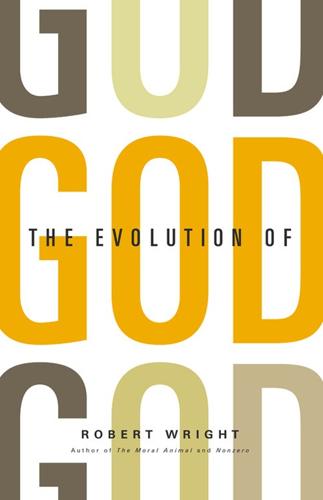
The Evolution of God
by
Robert Wright
Published 8 Jun 2009
But many of them insisted that in order to qualify for Jesus’s saving grace, Gentiles had to abide by the Jewish Law, the Torah, which meant following strict dietary rules and, moreover, undergoing circumcision. In the days before modern anesthesia, requiring grown men to have penis surgery in order to join a religion fell under the rubric “disincentive.” Paul grasped the importance of such barriers to entry. So far as Gentiles were concerned, he jettisoned most of the Jewish dietary code and, with special emphasis, the circumcision mandate: “For in Christ Jesus neither circumcision nor uncircumcision counts for anything; the only thing that counts is faith working through love.” Paul was so intent on dropping the circumcision barrier that, when he argued with fellow Jesus followers over this issue, his sense of brotherly love sometimes deserted him.

Americana: A 400-Year History of American Capitalism
by
Bhu Srinivasan
Published 25 Sep 2017
But despite bankruptcy, fires, and failures, he had had just enough past financial success to merit ongoing speculation in his laboratory. The aim for Pemberton, as it was for many, was to develop a formula or drug plausible enough to be marketed—as he had once done with Dr. Sanford’s Great Invigorator, Eureka Oil, Triplex Liver Pills, and Lemon and Orange Elixir before sales faded. With the barrier to entry low and the cost of the chemicals and ingredients a fraction of the selling price, breaking into the consumer’s imagination as a medicinal panacea was no simple task—it was intensely competitive. With his age advancing, Pemberton decided to focus his attention on a new plant-based ingredient that seemed to have rather miraculous properties.
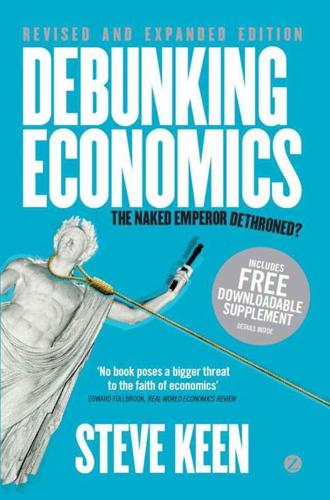
Debunking Economics - Revised, Expanded and Integrated Edition: The Naked Emperor Dethroned?
by
Steve Keen
Published 21 Sep 2011
The reason, informally speaking, is that economists are good (or so we hope) at recognizing a state of equilibrium but poor at predicting how an economy in disequilibrium will evolve. Certainly there are intuitive dynamic principles: if demand is larger than supply, then the price will increase, if price is larger than marginal cost then production will expand, if industry profits are positive and there are no barriers to entry, then new firms will enter and so on. The difficulty is in translating these informal principles into precise dynamic laws. (Mas-Colell et al. 1995: 620) This is nonsense, and to give Mas-Colell his due I think he realizes it here. Economists model in equilibrium, not because they are ‘good (or so we hope) at recognizing a state of equilibrium,’ but simply because they can’t get the results they want in dynamic analysis and have therefore not made the leap from static to dynamic modeling that has occurred in all other disciplines.

The Wealth of Networks: How Social Production Transforms Markets and Freedom
by
Yochai Benkler
Published 14 May 2006
Their vitality and necessity challenge the conventional wisdom that ever-increasing intellectual property rights are necessary to secure greater investment in research, or that the adoption of proprietary [pg 344] rights is benign. Increasing appropriation of basic tools and enabling technologies creates barriers to entry for innovators--public-sector, nonprofit organizations, and the local farmers themselves--concerned with feeding those who cannot signal with their dollars that they are in need. The emergence of commons-based techniques--particularly, of an open innovation platform that can incorporate farmers and local agronomists from around the world into the development and feedback process through networked collaboration platforms--promises the most likely avenue to achieve research oriented toward increased food security in the developing world.

The Origins of Political Order: From Prehuman Times to the French Revolution
by
Francis Fukuyama
Published 11 Apr 2011
Efficacy in the ritual, and therefore the process of learning, did not necessarily require that the meanings of what was memorized be understood … A great many Brahmins devoted large parts of their lives to memorization on a prodigious scale or to logical analyses and debates.”24 Exact memorization of the Vedic texts was necessary if they were to have their desired ritual effects; small mistakes in recitation, it was believed, could lead to disaster. Perhaps not accidentally, the Brahmanic commitment to the oral transmission of the Vedas reinforced their own social supremacy by creating additional barriers to entry into their varna. Unlike Jews, Christians, and Muslims, who were all “people of the book” from the start of their religious traditions, the Brahmins strongly resisted the introduction of writing and technologies related to it. Chinese travelers to India in the fifth and seventh centuries A.D. looking for sources of Buddhist tradition were hard-pressed to find any written documents.

Americana
by
Bhu Srinivasan
But despite bankruptcy, fires, and failures, he had had just enough past financial success to merit ongoing speculation in his laboratory. The aim for Pemberton, as it was for many, was to develop a formula or drug plausible enough to be marketed—as he had once done with Dr. Sanford’s Great Invigorator, Eureka Oil, Triplex Liver Pills, and Lemon and Orange Elixir before sales faded. With the barrier to entry low and the cost of the chemicals and ingredients a fraction of the selling price, breaking into the consumer’s imagination as a medicinal panacea was no simple task—it was intensely competitive. With his age advancing, Pemberton decided to focus his attention on a new plant-based ingredient that seemed to have rather miraculous properties.
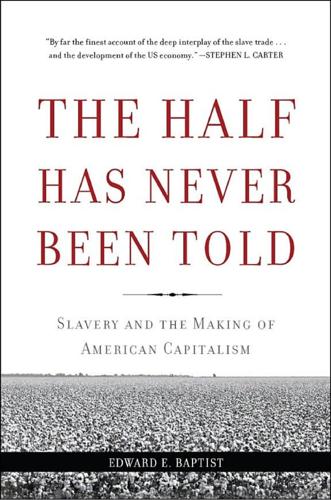
The Half Has Never Been Told: Slavery and the Making of American Capitalism
by
Edward E. Baptist
Published 24 Oct 2016
They invested so much more in captive human beings in the 1850s, in fact, that one can put aside any belief that men like Cameron or Caldwell truly feared (much less hoped for) an end to the enslavement of African Americans. They seemed, instead, increasingly confident in slavery’s future.37 To at least some extent, the success of the richest also came at the expense of other whites—and not just by pushing subsistence farmers off land made marketable by the railroad, but also by raising barriers to entry in larger-scale cotton production through increased prices for hands, high-quality land, and credit. Over the course of the 1850s, cotton production and slave ownership became increasingly concentrated among those who owned fifteen or more slaves.38 This skewing of white southerners’ benefits from slavery and of their investment in it inspired forebodings in enslavers, practical political economists who depended on white unity.
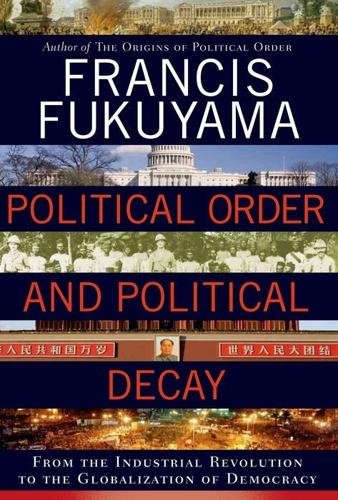
Political Order and Political Decay: From the Industrial Revolution to the Globalization of Democracy
by
Francis Fukuyama
Published 29 Sep 2014
During the 1880s, Congress tried on several occasions to create national rules for the railroads, not on the basis of a coherent theory of transportation economics but rather on the basis of the political coalitions of different regional interests that could be assembled around the bill. Western agrarian interests pushed strongly for a prohibition of pooling, a provision that might have made sense in other industries with low barriers to entry and small economies of scale, but not for railroads, which in many circumstances were natural monopolies. The obvious solution, not undertaken for several decades, was to permit pooling, but to strictly regulate rates in a way that would balance the interests of both the railroad operators and users.
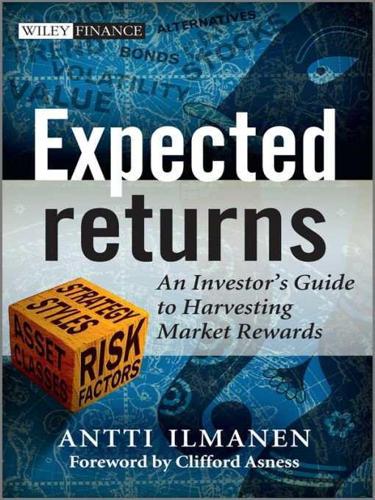
Expected Returns: An Investor's Guide to Harvesting Market Rewards
by
Antti Ilmanen
Published 4 Apr 2011
In fact, I told you the opposite. Expected returns are interesting precisely because they are hard (and very important)! This means there is no easy answer. But, it also means that effort on this front is potentially highly valuable. Understanding easy but very important problems is also important, but the barriers to entry are low, and getting an advantage from such an easy understanding is usually difficult because the understanding is so widespread. (On the other hand, the investing public’s continued failure to understand basic ideas like diversifying widely, keeping average costs low, and realizing that it is hard to beat the market, etc., makes even this effort worthwhile to the marginal investor.)

Escape From Rome: The Failure of Empire and the Road to Prosperity
by
Walter Scheidel
Published 14 Oct 2019
This fusion of political and economic power protected property rights, upheld commitments within the elite and to the community, and encouraged human capital formation through established training procedures. These inducements in turn attracted trade and fostered innovation. It is true that in the long run, both unfettered guild power and scale constraints inherent in urban self-governance became uncompetitive. Within cities, oligarchic structures raised barriers to entry and eventually stifled adaptive change: by the early modern period, the initial growth advantage of politically autonomous cities had been lost.29 Moreover, as territorial states began to overcome their internal divisions, the medieval balance between princely states, city-states, and city leagues was upended in favor of the largest polities.
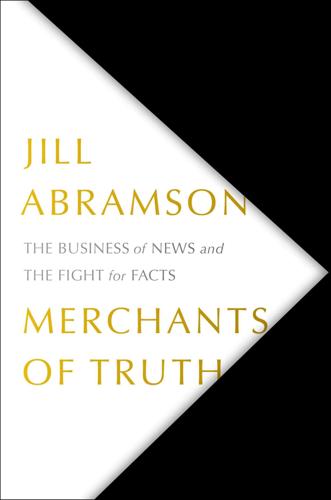
Merchants of Truth: The Business of News and the Fight for Facts
by
Jill Abramson
Published 5 Feb 2019
Those with partisan or ideological passions were served a steady diet of content they were prone to like and share with their network of like-minded Facebook friends. News became a game of presenting a version of the day’s events that would electrify conversation on the social network. As such, it was a field that was now wide open for new players; the barrier to entry had been all but toppled. Targeting was easy. The internet was a remarkably efficient marketplace. Online congregations could spring up wherever there appeared a critical mass of sentiment (around #NeverTrump, say, or in revulsion of the #DeepState). Readers found their Facebook News Feed filling with hot takes and hit pieces as the country grew increasingly polarized.

The IDA Pro Book
by
Chris Eagle
Published 16 Jun 2011
[126] As a consequence, if you are building a Qt-related plug-in on Windows, you must use Visual Studio to build your plug-in. Scripted Plug-ins IDA 5.6 introduced support for scripted loader modules. In IDA 5.7, support was added for scripted plug-ins [127] and processor modules. While this does not necessarily allow for the development of more powerful plug-ins, it does somewhat lower the barrier to entry for potential plug-in developers and allows for a somewhat faster development cycle because the complex build process is eliminated. Although scripted plug-ins can be created using either IDC or Python, Python is probably the most appropriate choice given that it exposes so much of IDA’s SDK.

The Art of SEO
by
Eric Enge
,
Stephan Spencer
,
Jessie Stricchiola
and
Rand Fishkin
Published 7 Mar 2012
Through the detective work of dissecting your market’s keyword demand, you learn not only which terms and phrases to target with SEO, but also more about your customer base as a whole. Keyword research enables you to predict shifts in demand, respond to changing market conditions, and ensure that you are producing the products, services, and content that web searchers are already actively seeking. In the history of marketing, there has never been such a low barrier to entry in understanding the motivations of consumers in virtually every niche. Every search phrase that’s typed into an engine is recorded in one way or another, and keyword research tools such as the ones we discuss in this chapter allow you to retrieve this information. However, those tools cannot show you (directly) how valuable or important it might be to rank for and receive traffic from those searches.

The Wealth and Poverty of Nations: Why Some Are So Rich and Some So Poor
by
David S. Landes
Published 14 Sep 1999
The gains went (go) largely to the customers. Erik Reinert, “Symptoms and Causes of Poverty,” stresses the contrast between this “classical” pattern of distribution of gains from technological change, which he sees as especially typical of agriculture and distribution, and the “collusive” pattern of industries that are marked by barriers to entry and increasing returns to knowledge. He uses the term collusive because “the forces of the producing country (capital, labour, and government) in practice—although not as a conspiracy—‘collude’ to appropriate these gains” (p. 84). 26. Landes, Revolution in Time, p. 326. 27. Shumway, Invention of Argentina, p. 156, n. 3. 28.

The Age of Surveillance Capitalism
by
Shoshana Zuboff
Published 15 Jan 2019
He questioned the prudence of the electronic scroll in the reception lobby that displays a continuous stream of search queries, and he “tried to kill” the annual Google Zeitgeist conference that summarizes the year’s trends in search terms.75 Journalist John Battelle, who chronicled Google during the 2002–2004 period, described the company’s “aloofness,” “limited information sharing,” and “alienating and unnecessary secrecy and isolation.”76 Another early company biographer notes, “What made this information easier to keep is that almost none of the experts tracking the business of the internet believed that Google’s secret was even possible.”77 As Schmidt told the New York Times, “You need to win, but you are better off winning softly.”78 The scientific and material complexity that supported the capture and analysis of behavioral surplus also enabled the hiding strategy, an invisibility cloak over the whole operation. “Managing search at our scale is a very serious barrier to entry,” Schmidt warned would-be competitors.79 To be sure, there are always sound business reasons for hiding the location of your gold mine. In Google’s case, the hiding strategy accrued to its competitive advantage, but there were other reasons for concealment and obfuscation. What might the response have been back then if the public were told that Google’s magic derived from its exclusive capabilities in unilateral surveillance of online behavior and its methods specifically designed to override individual decision rights?

A Pipeline Runs Through It: The Story of Oil From Ancient Times to the First World War
by
Keith Fisher
Published 3 Aug 2022
The investments that Standard did make in Texas would be made by stealth, through ‘blind tigers’: these were front companies that presented and advertised themselves as independent enterprises but were actually controlled by Standard, a practice that it was also deploying in Missouri.50 Thirdly, and most significantly, the barriers to entry into the industry in Texas were lower than elsewhere. The proximity of this new flush production to Port Arthur and Sabine on the coast of the Gulf of Mexico – and thereby to cheap water-borne access, by tanker, to the East Coast and world markets – freed producers and refiners from the dependency on long-distance rail and pipeline transit, control over which was key to Standard’s hold over the industry in the north.

The Man Who Knew: The Life and Times of Alan Greenspan
by
Sebastian Mallaby
Published 10 Oct 2016
Franklin Roosevelt had attacked trusts—and then descended into a generalized attack on free enterprise.36 Greenspan’s counterattack proceeded in three stages. First, critics of monopolies should remember that it was government meddling that created most of them, or so Greenspan asserted. For example, government subsidies and land grants to well-connected railway barons had created barriers to entry for unsubsidized competitors—James J. Hill being the heroic exception. If the principle of free enterprise had been properly adhered to, there would have been a level playing field in the first place, and hence no need for further government meddling in the form of antitrust law. “I am indebted to Ayn Rand’s Notes on the History of American Free Enterprise for the identification of this principle,” Greenspan acknowledged.37 Greenspan buttressed Rand’s historical argument with a second, economic one.
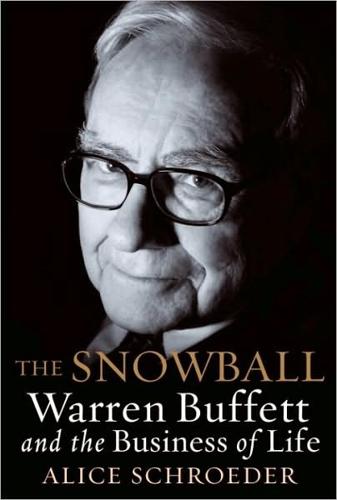
The Snowball: Warren Buffett and the Business of Life
by
Alice Schroeder
Published 1 Sep 2008
In July 1998, Weill shut down Salomon’s bond arbitrage unit. One could argue that it was Travelers’ subsequent merger with Citicorp—which provided cheap capital—that made the firm a serious competitor in those businesses. Looked at another way, Travelers paid a high price to enter a business with high barriers to entry, and subsequently exploited its capital and scale advantage. Citigroup dropped the Salomon name in 2001. 16. Carol Loomis, “A House Built on Sand,” Fortune, October 26, 1998. 17. Interview with Charlie Munger. 18. Lowenstein, in When Genius Failed, estimated that these returns were achieved through leverage; Long-Term’s cash-on-cash return was only about 1%.